P
|
|
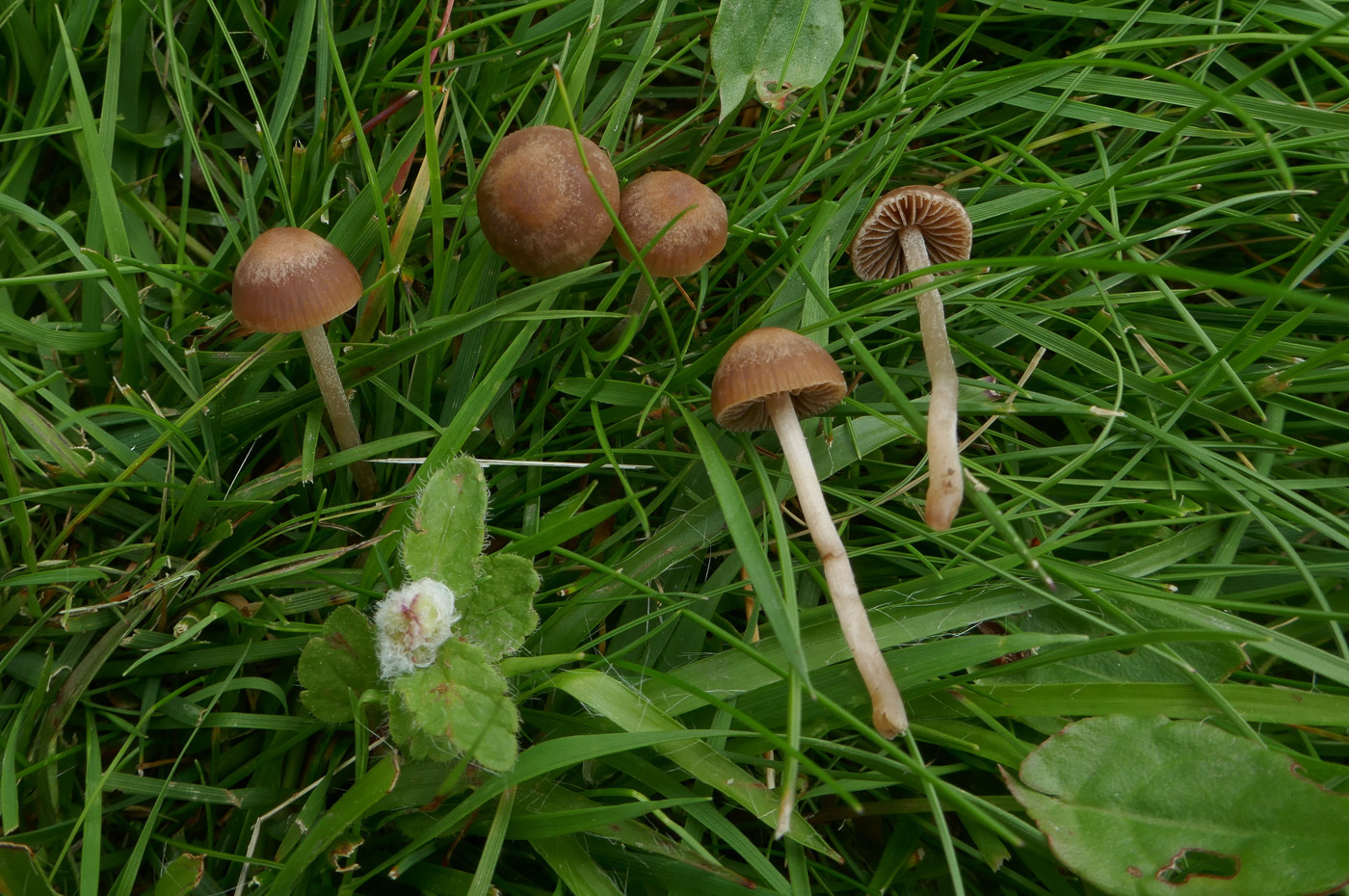

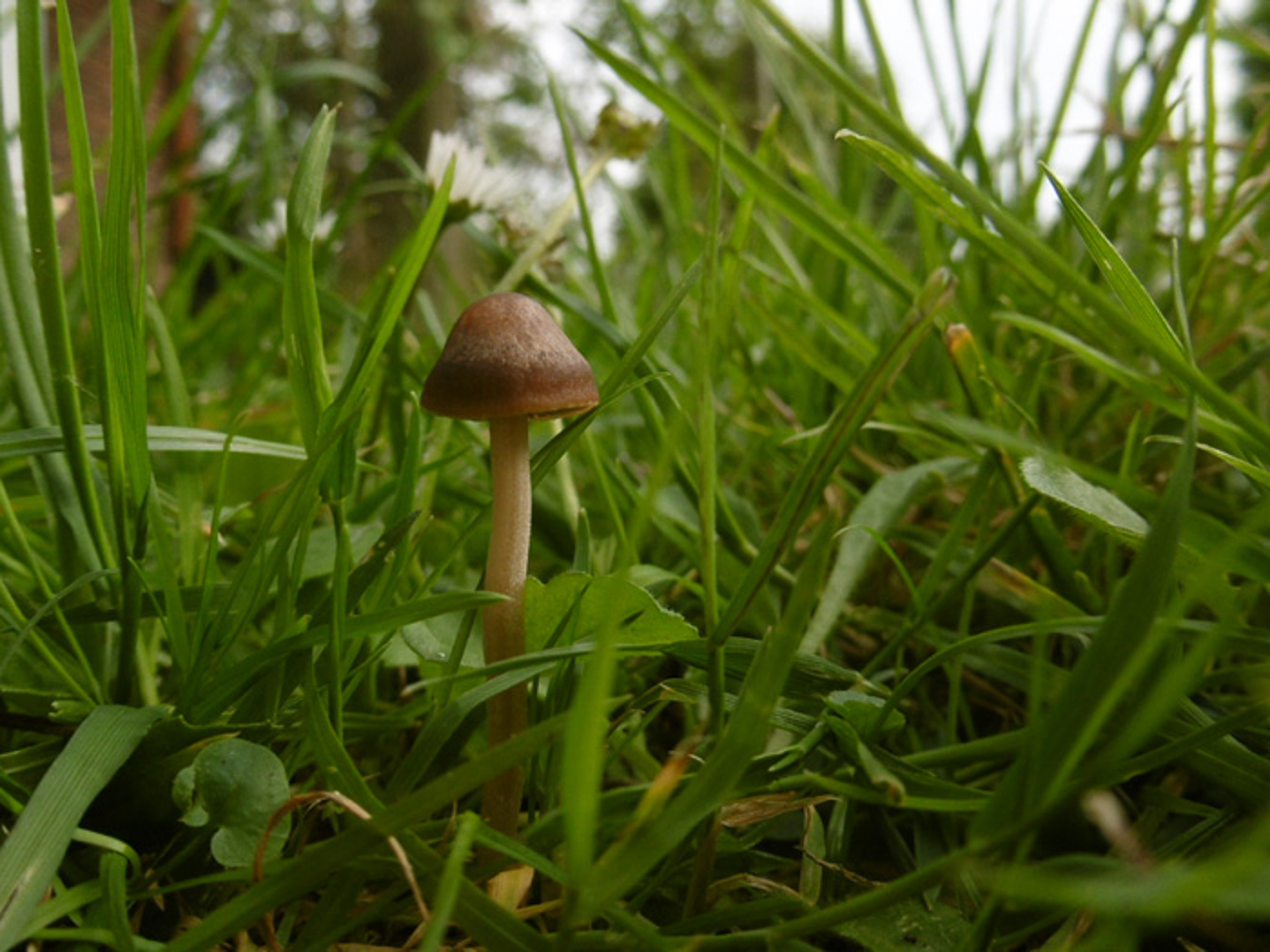

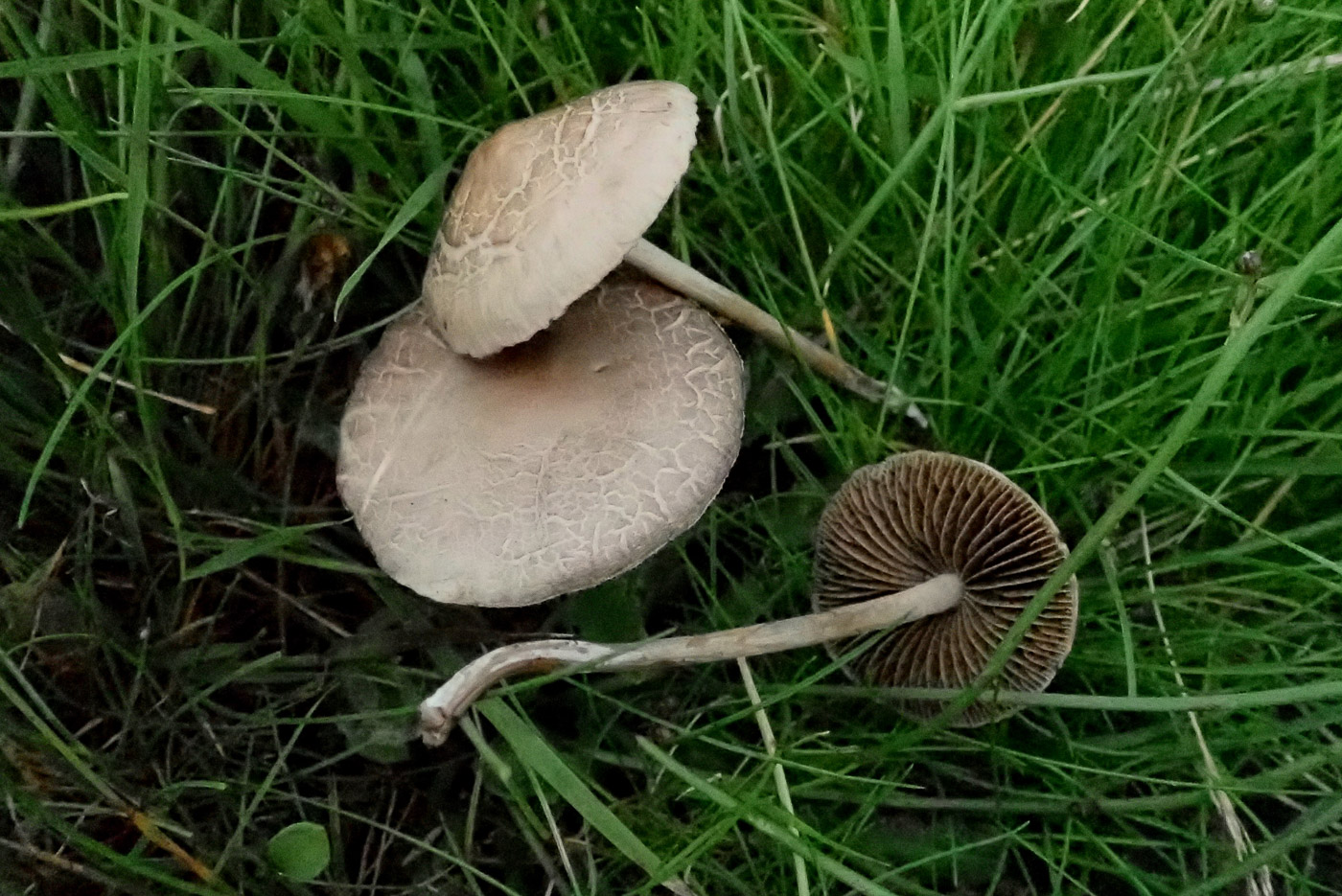
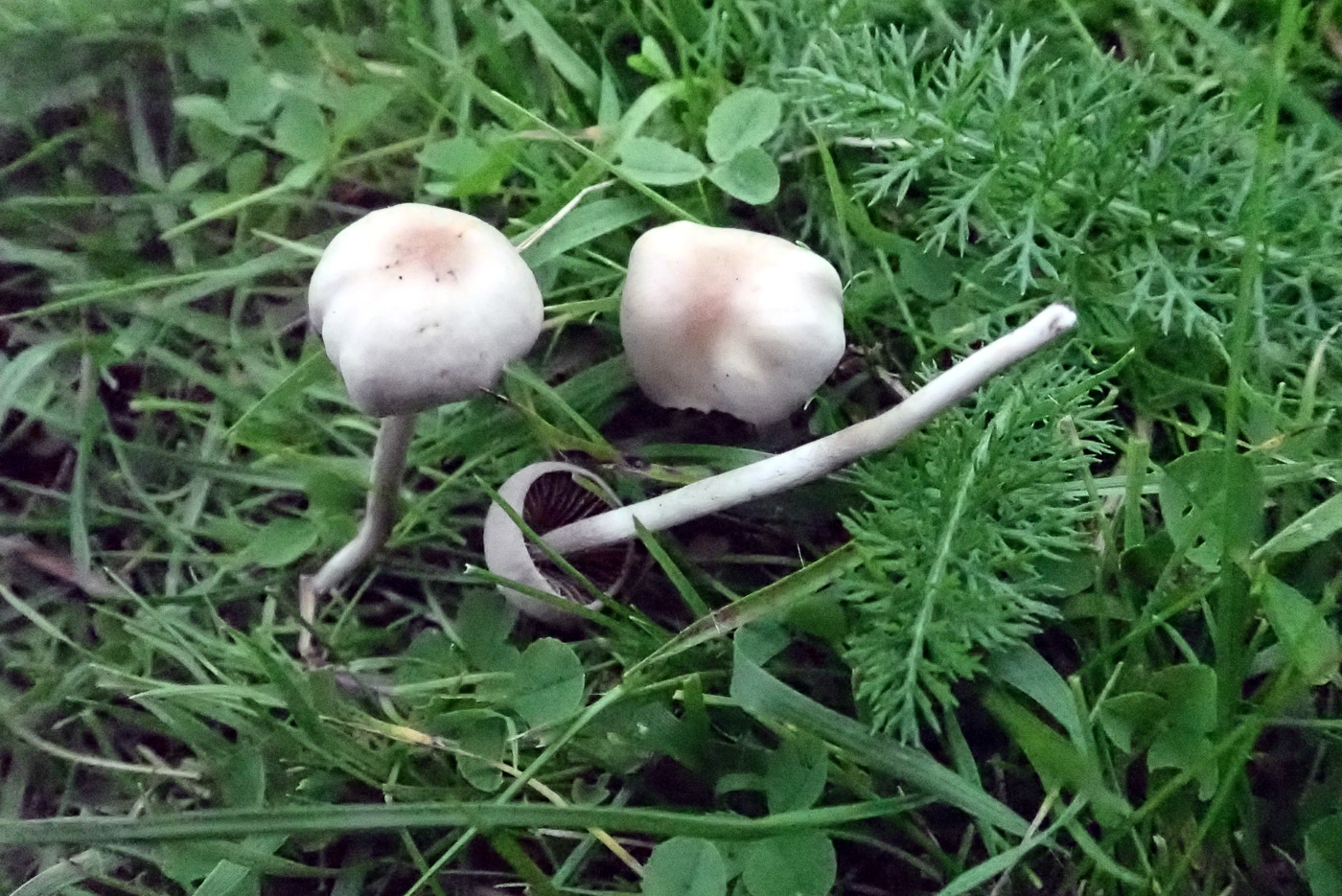
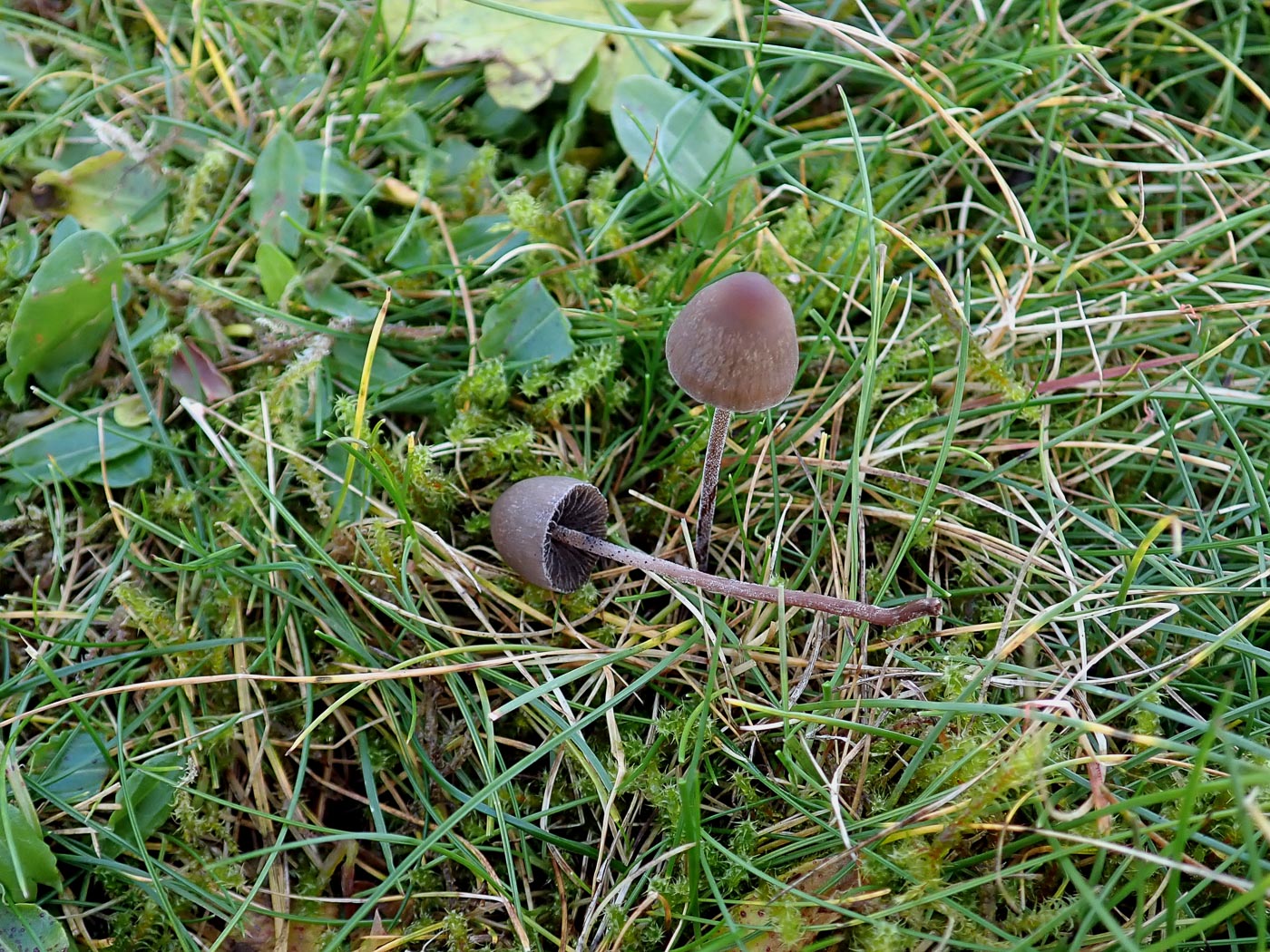
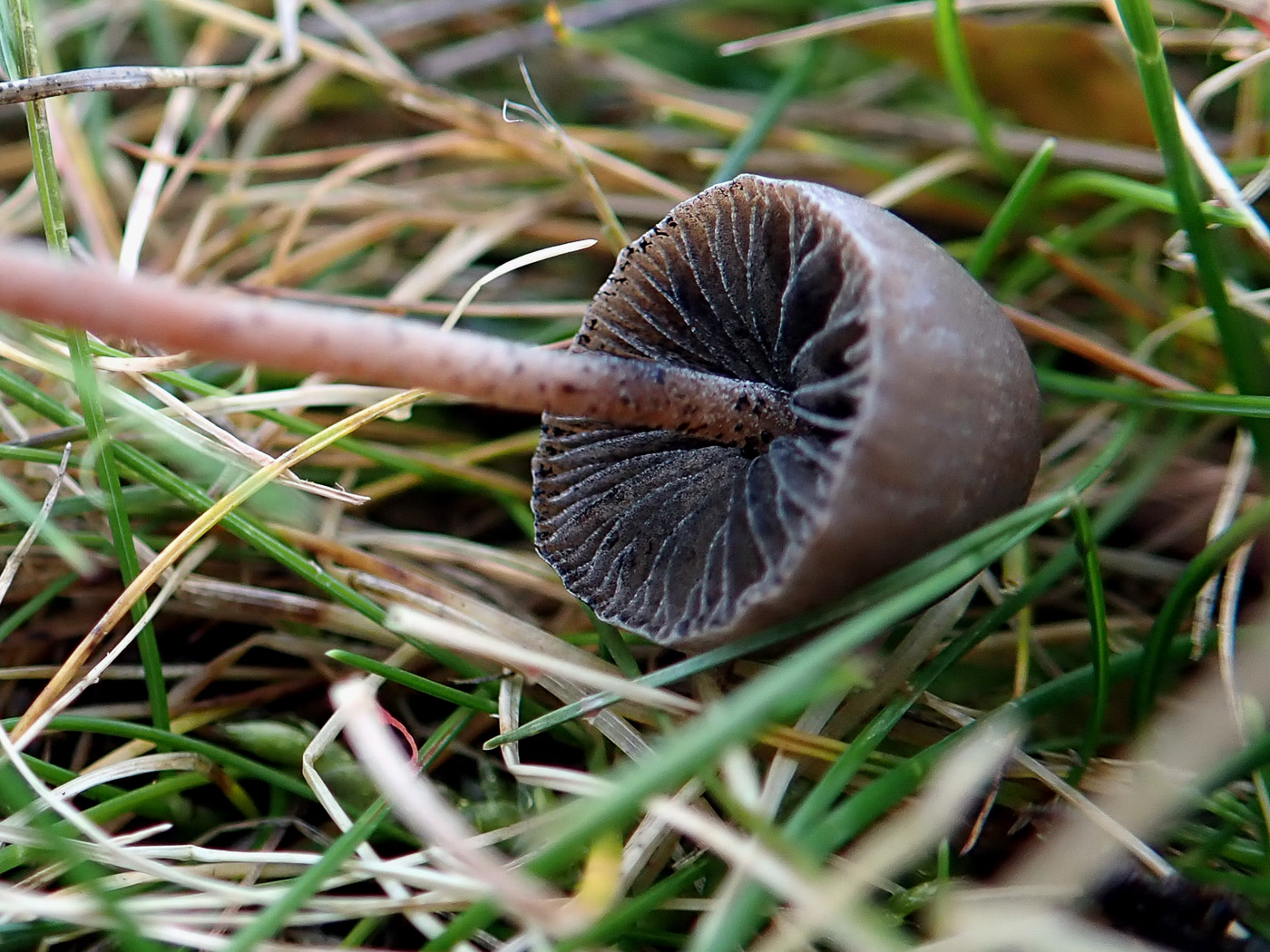
|
Panaeolina foenisecii (Brown Mottlegill) 
May 31, 2024. In grass at Stampwell Farm Jackie Ewan recognised these LBJs which are popping up on lawns everywhere at the moment encouraged by the damp conditions. It is somewhat similar to another common LBJ Tubaria furfuracea (Scurfy Twiglet) though their habitat is different: soil in grass for today's species as opposed to woody debris for the Twiglet which can, however be found in grassy areas on occasion just to confuse. The Mottlegill has a hygrophanous cap (seen clearly here) and - as it says on the tin - the gills are mottled by the darker brown spores (not so clearly seen here!).
Jul 10, 2023. Along a mown grassy roadside verge at Turville Heath Penny found several clusters of this common lawn species which is just starting to fruit. The cap starts off a reddish brown but tends to fade when in exposed positions though often leaving dark bands of colour in places. The gills gradually darken as it matures and the brown spores are distinctively warty. (Though previously in genus Panaeolus, Penny notes that in Kibby vol 3 he places it back in that genus again - time will tell.)
Jun 3, 2022. In her garden in Marlow Ann Pitwell noticed this small LBJ coming up in her lawn and wondered what it was. Though not checked with a scope, the general 'jizz', the lawn habitat and clearly mottled dark gills tell Penny that this is the most likely identification. Also known as the Turf Mottlegill and March Mottlegill, this is one of our commonest garden species and often fruits soon after rain. Previously in the genus Panaeolus, it was separated from that genus on account of its dark brown rather than black sporeprint and also has rather differently ornamented spores.
Jul 13, 2021. At Coombe Hill Penny found this typical grassland species, a very common LBJ in garden lawns and sometimes called Mower's Mottlegill for that reason. It is often quite small with caps around 1 cm across, but today's were up to 3 cms and also somewhat crazed on the surface which confused Penny in the field thus necessitating a scope to make the identification. The name 'Brown' refers not to the cap but to the sporeprint colour which differs from other Mottlegills (in the genus Panaeolus) which have a darker almost purpleblack sporeprint, this being the reason why the species was moved from that genus into Panaeolina. Photo 2 is possibly more typical of the species (from Penn Street Churchyard on August 14th found also by Penny) with caps about 1 cm across, smooth and slightly pinkish as they fade with age and direct sunlight.
Nov 12, 2020. On the cricket pitch at Ibstone Common Penny C. found this typical grassland LBJ. Often one of the first mushrooms to appear on lawns in autumn, another name for it is Mower's Mushroom and it's somewhat surprising that we haven't noted it before. Previously in the closely related genus Panaeolus, it has the typical blotchy dark crowded gills of that genus (seen in photo 2) and the brown cap is often much more faded than seen here after recent rain. It never gets much above 4 cm high by 1 cm across.
|


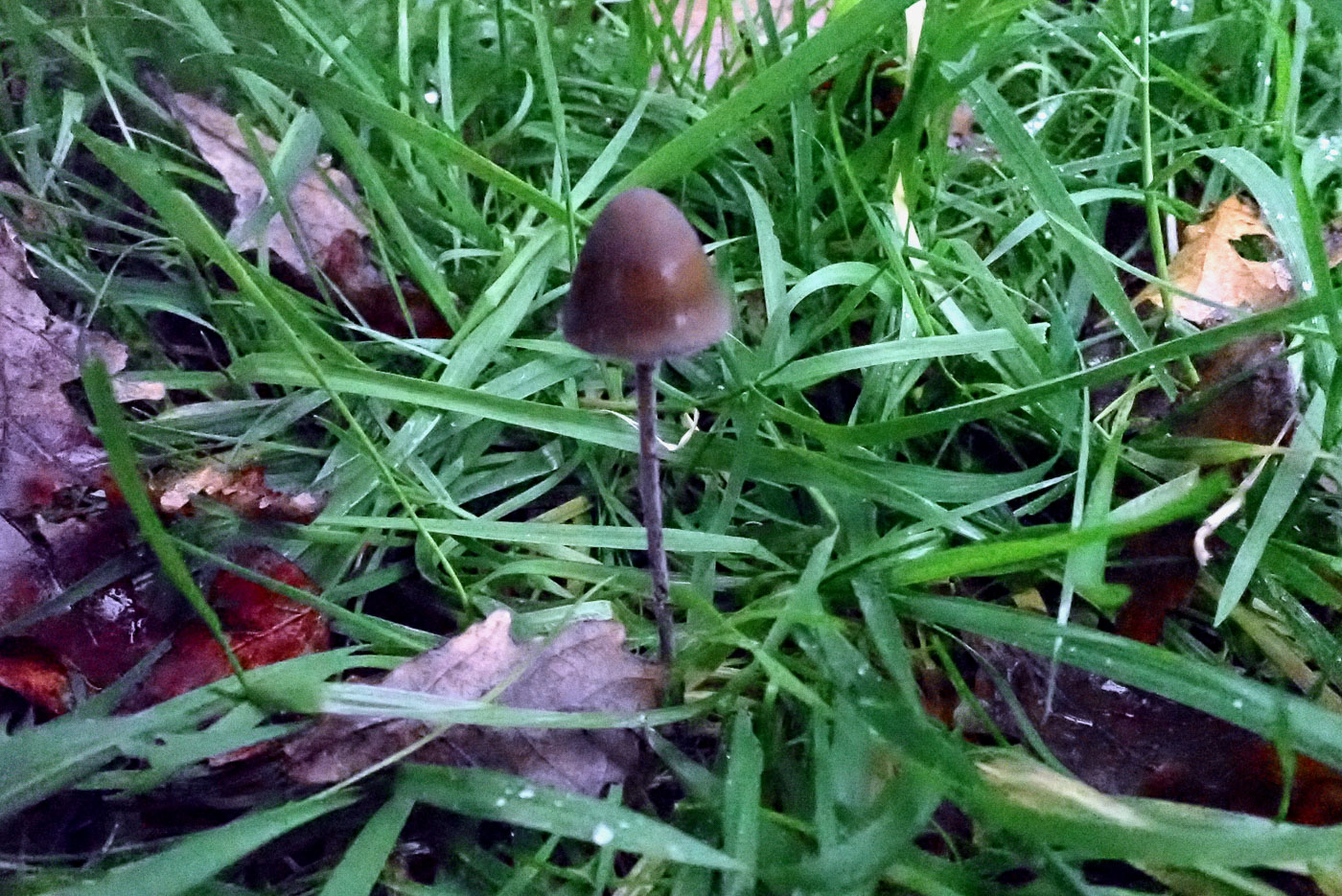
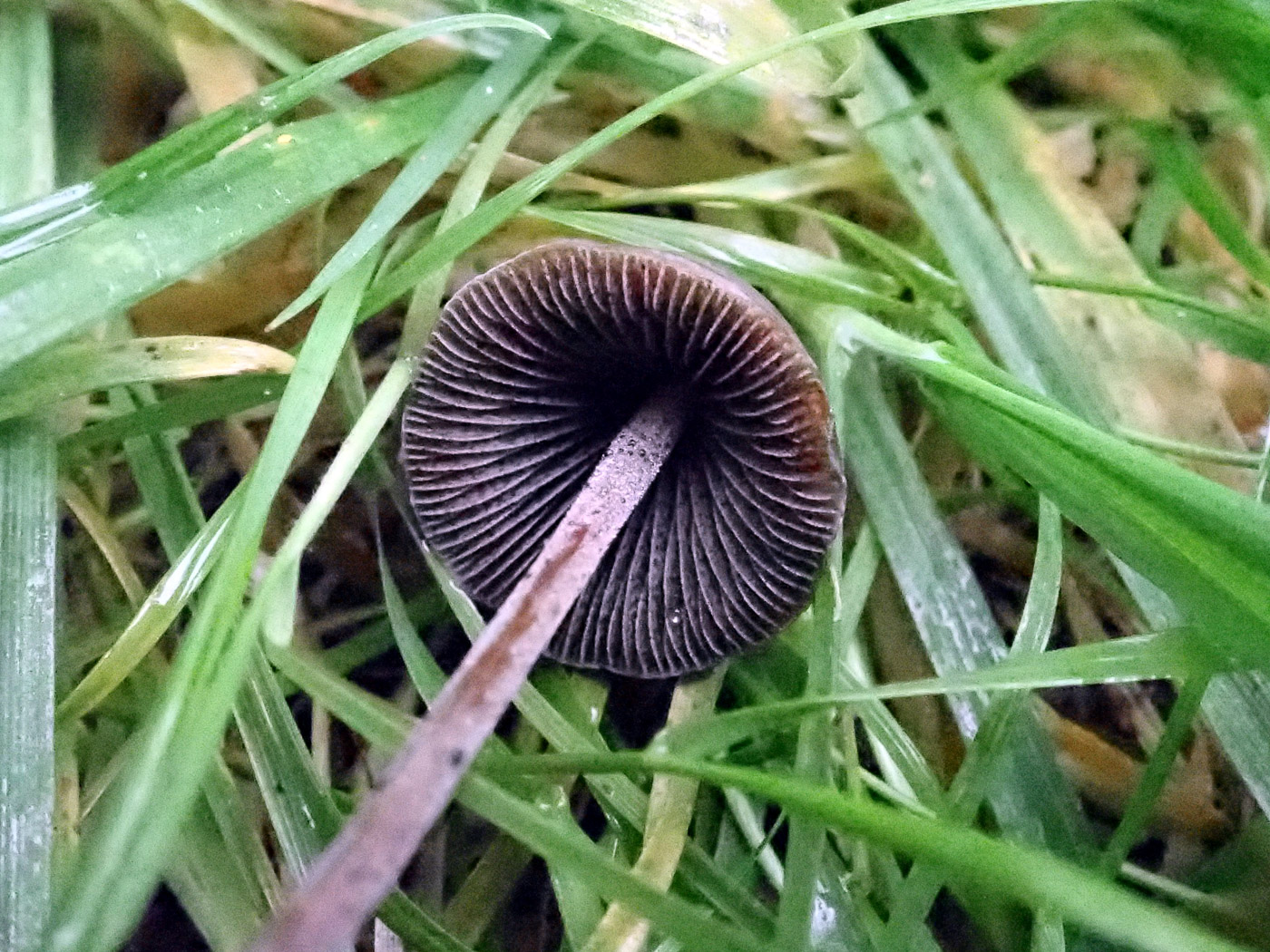
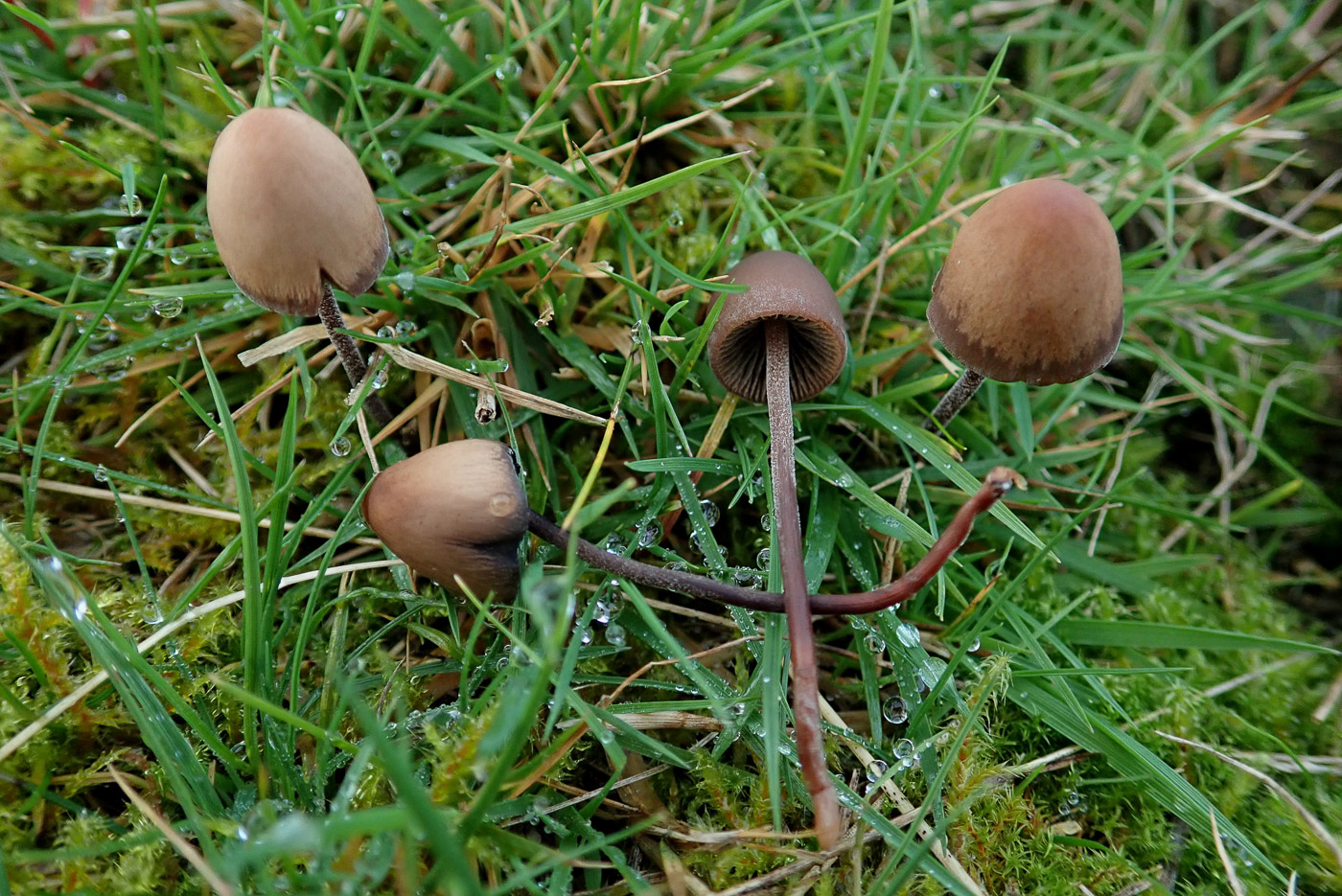
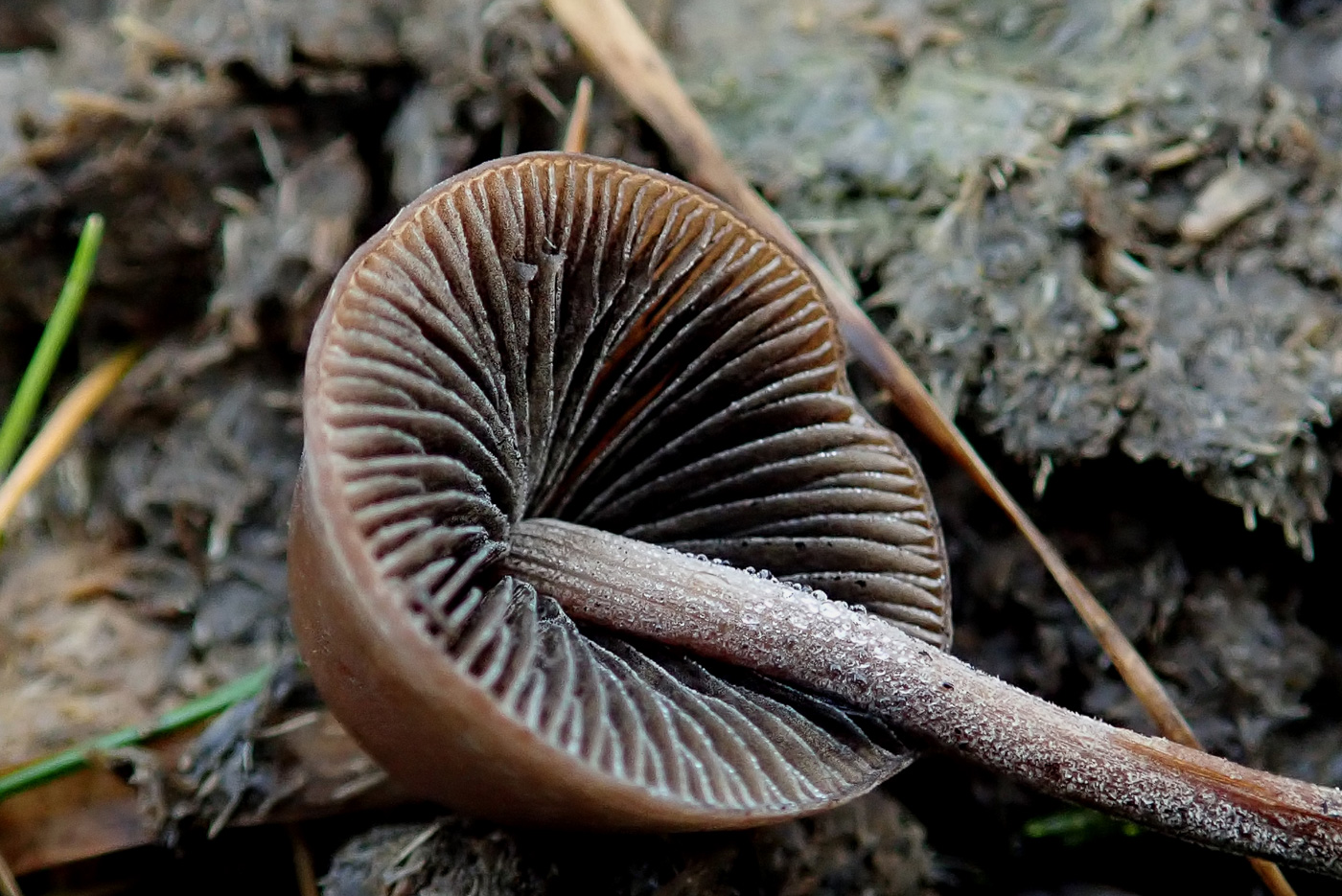
|
Panaeolus acuminatus (Dewdrop Mottlegill) 
Mar 16, 2024. At Stampwell Farm Jackie Ewan noticed an early fruiting of this species in manured grassland. The 'Dewdrop' name refers to its tendency to have fine droplets - usually coloured black from fallen spores - on the upper stem; these provide a useful clue to species in the field as other similar Mottlegills lack them. This is one of our commonest grassland LBJs.
Apr 1, 2023. At Stampwell Farm Jackie Ewan found this singleton in a sheep paddock. The dewdrop in its name refers to small moisture droplets which form on the upper stem - just visible here. With its habit of growing in soil in longish grass, having the typical dark mottled gills of the genus, also the droplets on the stem, this species together with P. papilionaceus (found on March 27th) are perhaps two of the easiest Panaeolus species to recognise in the field. Both a common too.
Nov 13, 2021. At Turville Heath in deep grass under Birch Penny noticed just one of these, a species of Mottlegill which can be recognised in the field. It is common in grassy areas and as well as having a dark brown conical cap and crowded mottled gills, the stem is finely striate and has small droplets towards the apex - seen here in photo 2.
Nov 24, 2020. At Coombe Hill in a grassy area having been grazed by cattle Penny C. found several collections of this species on cow dung. The caps were bell-shaped, about 1 cm tall and across and strongly hygrophanous (fading), the gills were black but mottled giving a clue as to genus, and the stems were dark reddish brown and clearly pruinose all over (as if powdered) with droplets towards the top (visible in photo 2). These characters together with microscopic features confirmed the determination of a common species which occurs either directly on dung or on dung affected soil.
|

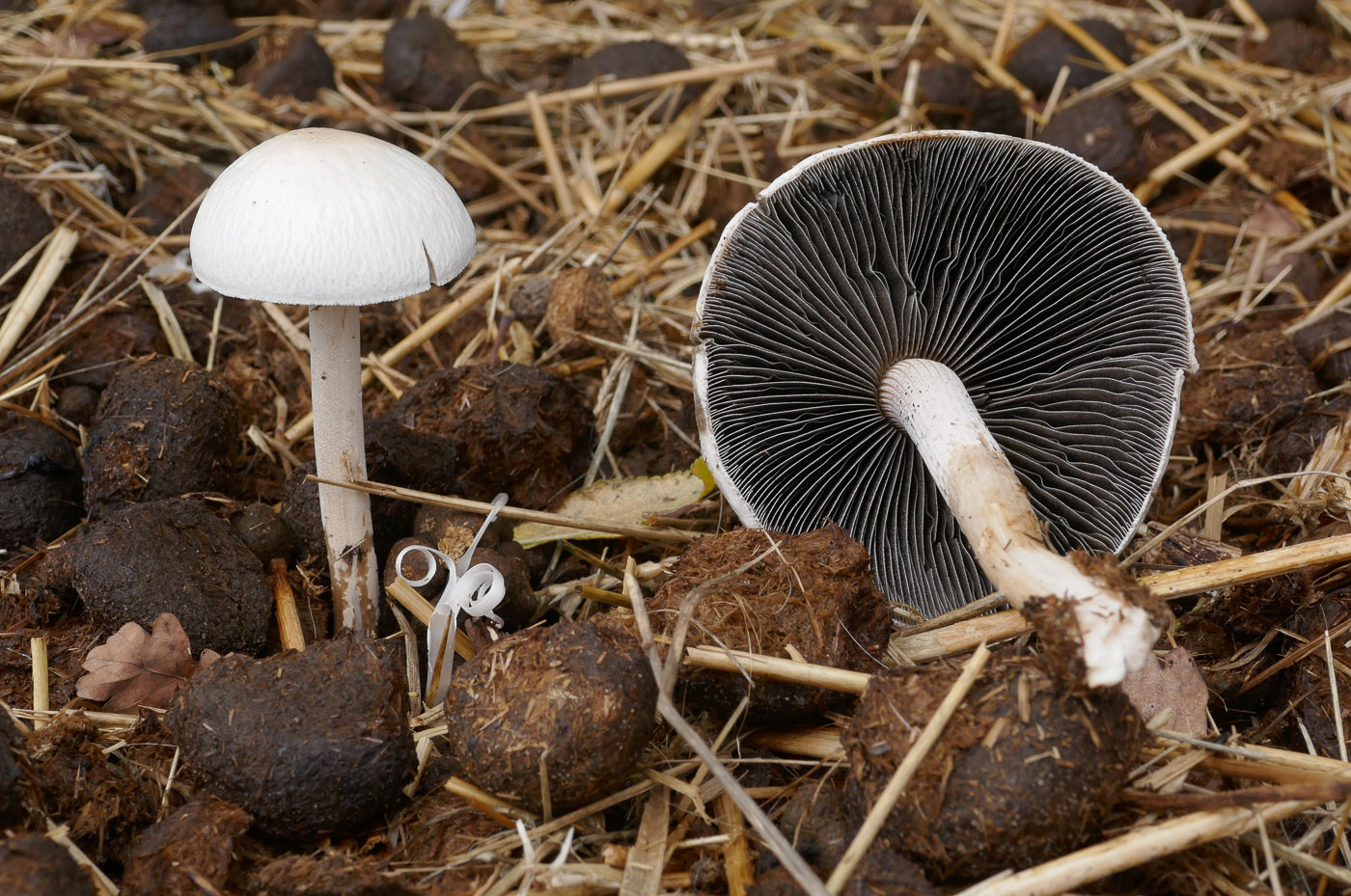 |
Panaeolus antillarum (a rare Mottlegill with no common name) 
Sep 5, 2022. At Stampwell Farm Jackie Ewan found these white rather wrinkled mushrooms on donkey dung heap. A scope revealed unusually large spores which led her to P. antillarum - a species known to occur on horse and cow dung (and now donkey too!) but very rare and with only three previous UK records (2006 from Edinburgh and two in 2018 from Hants and W. Sussex). Hence her collection was dried and sequenced and has now been confirmed. The material has been sent to the RBG Kew fungarium and Jackie reported the species again from the same dung heap exactly a year later (though had no camera at the time!)
|
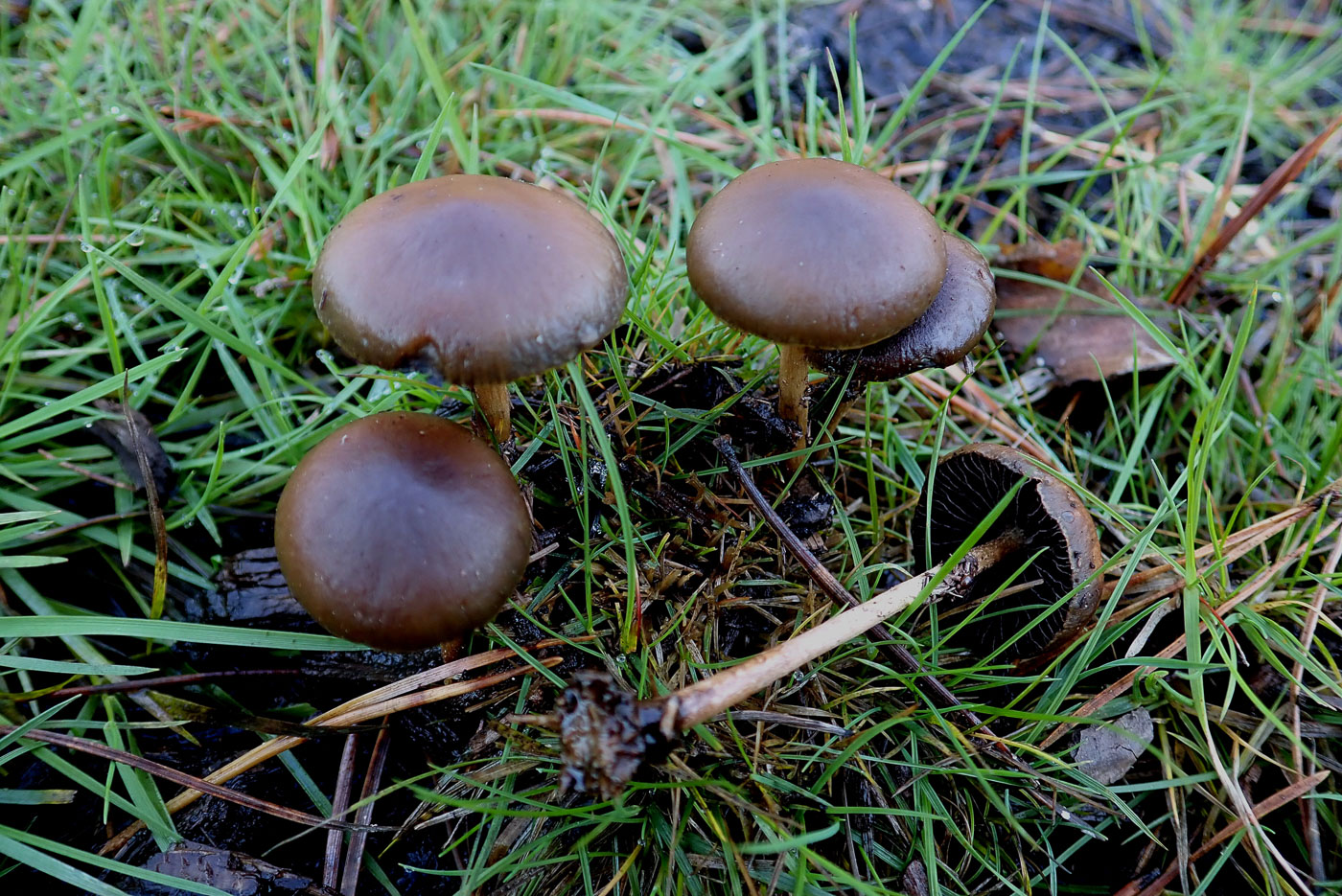
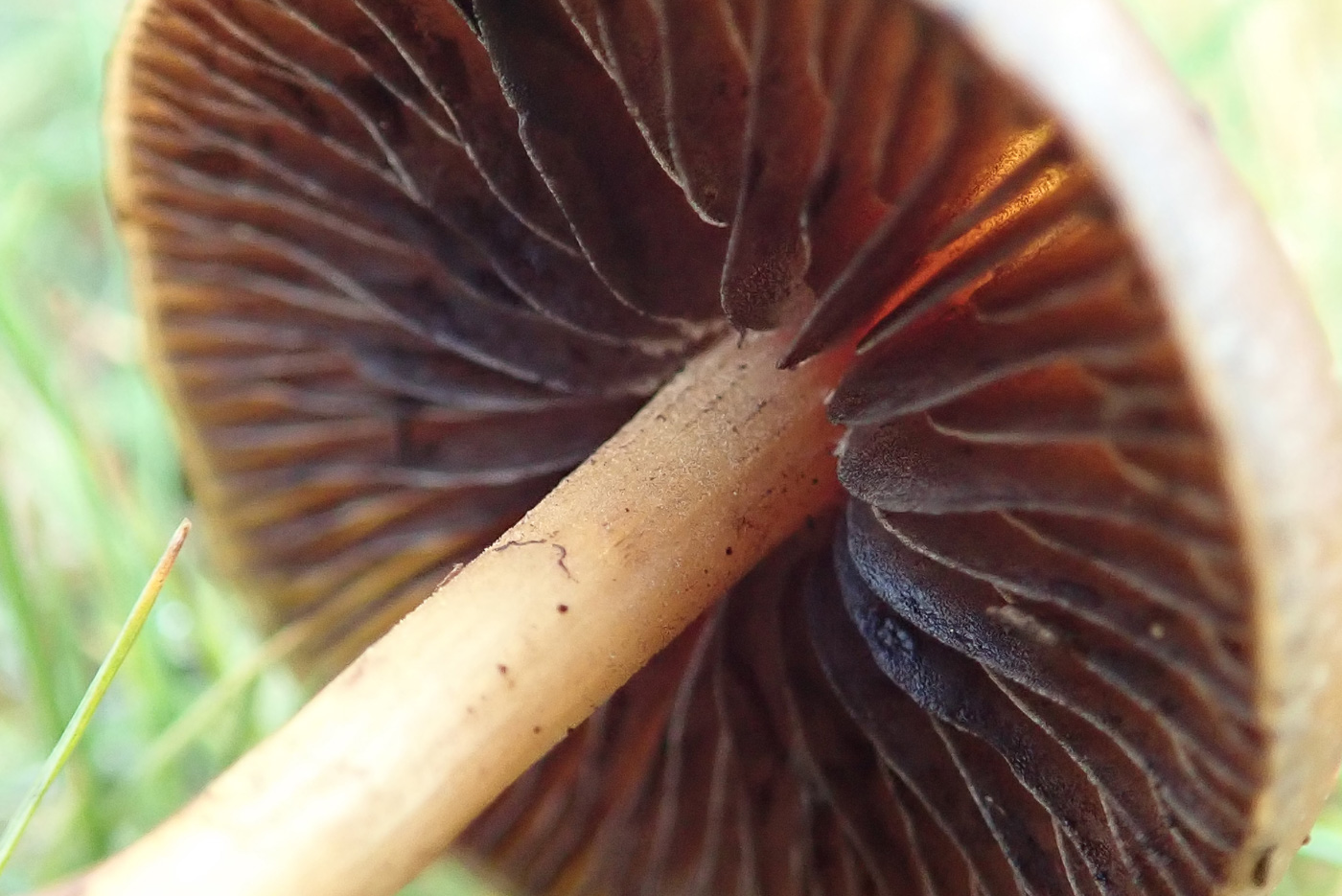 |
Panaeolus cinctulus (Banded Mottlegill) 
Nov 7, 2020. On an old cowpat in Stoke Common Penny C. found this cluster of a genus new to our list. Mottlegills have what it says on the tin: they have brown dry small to medium smooth caps, black spores and very dark gills which are unevenly mottled with black patches - best seen with a handlens but visible here in photo 2. Some species have a stem ring, some don't or lose it early on - basically another genus of LBJs! They are species of grassland, on soil or dung according to species and today's collection had flattish shiny caps about 2.5 cms across and needed a scope to determine to species.
|


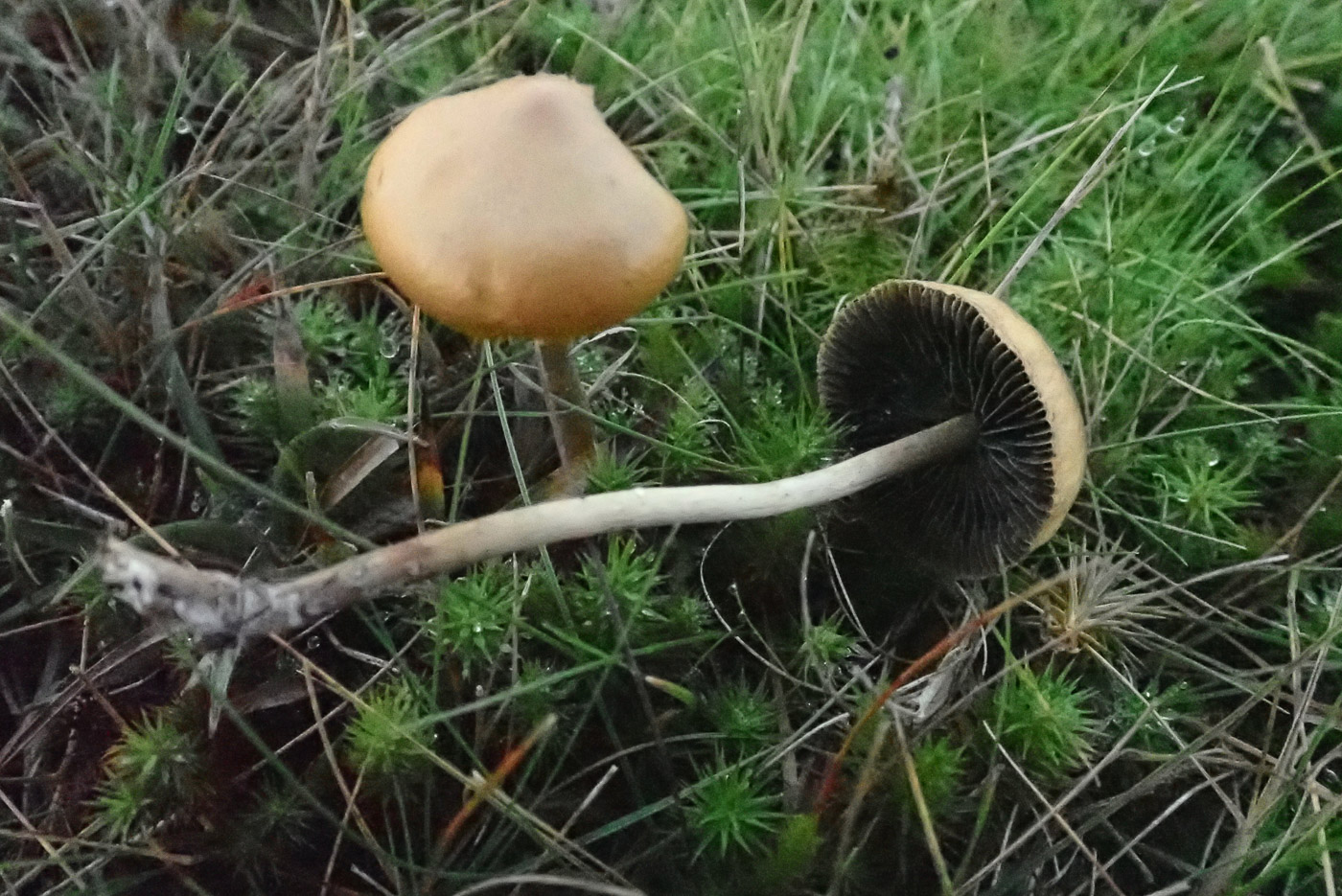
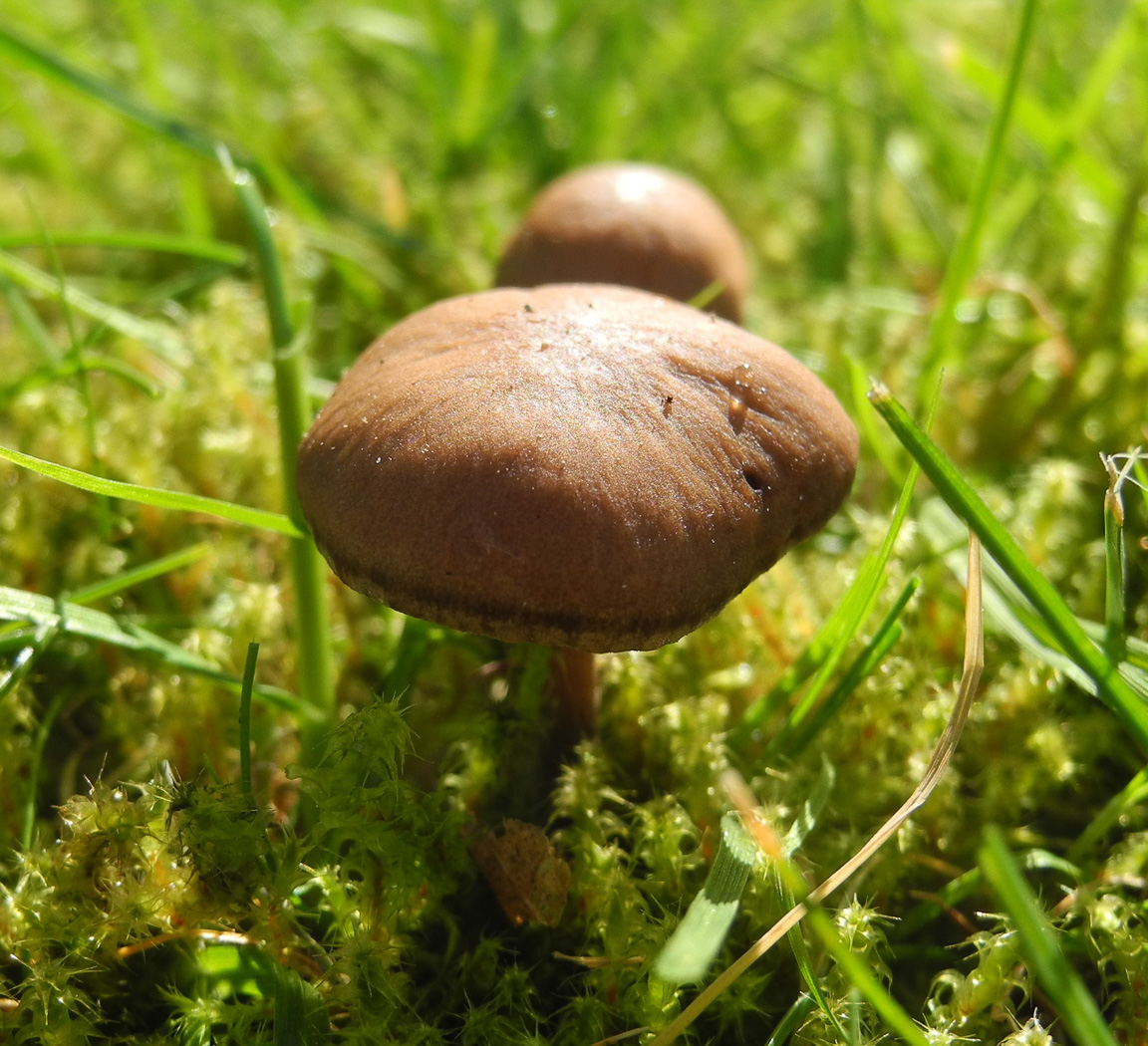
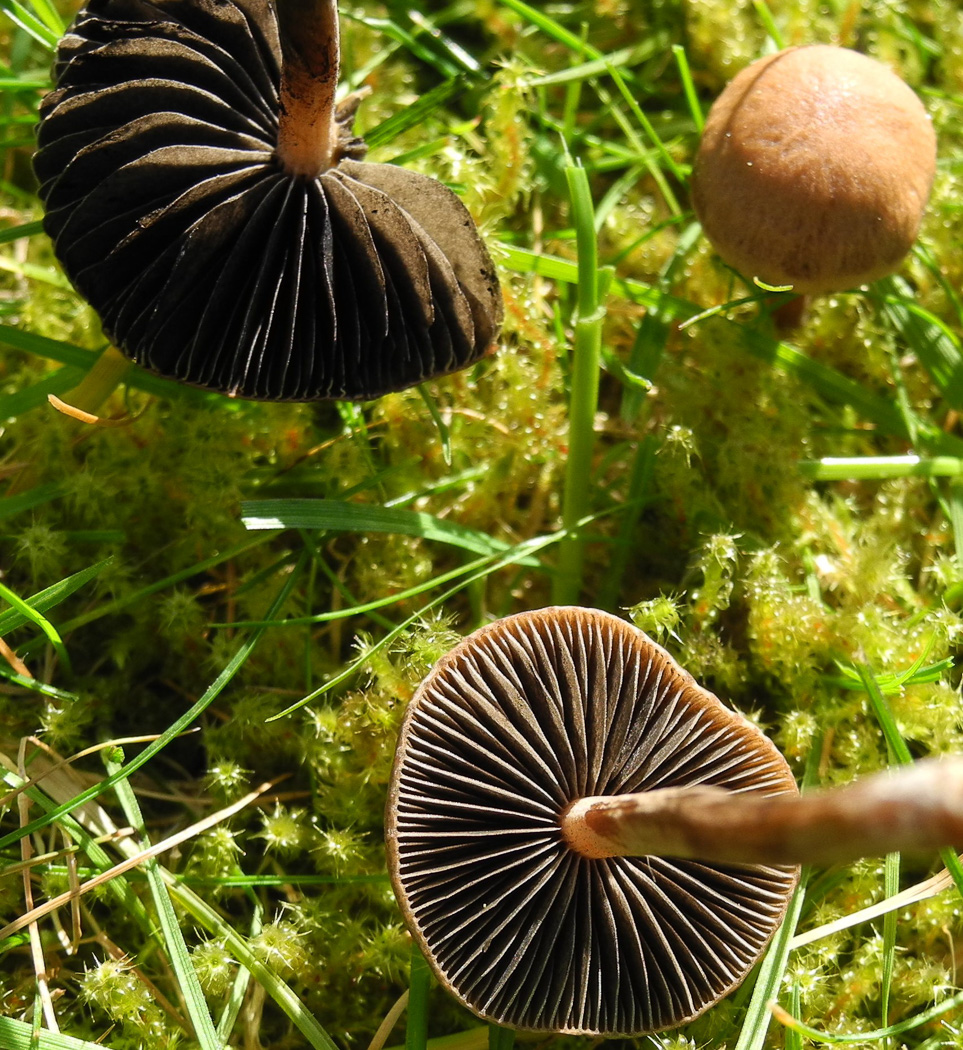
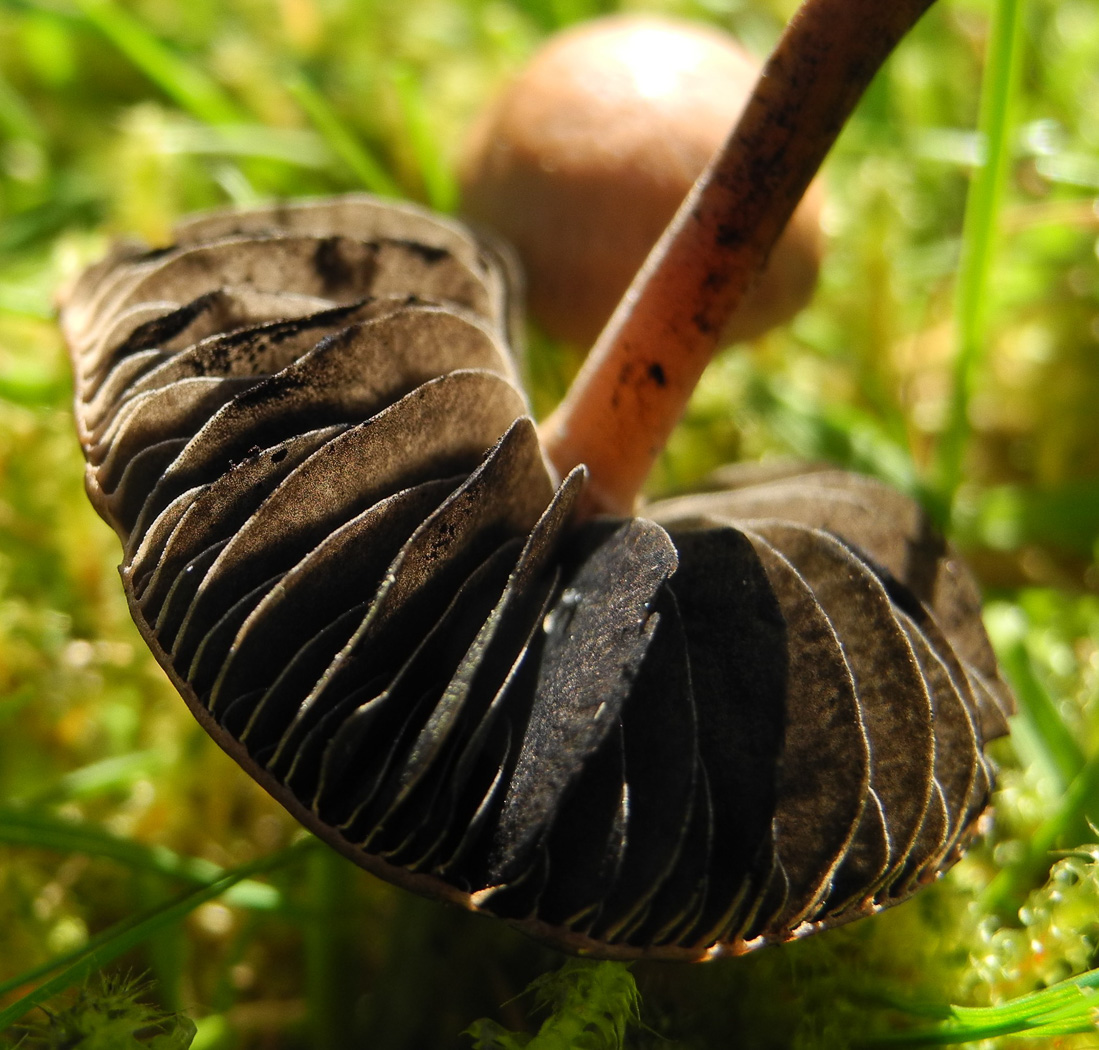


 |
Panaeolus fimicola (Turf Mottlegill) 
Mar 16, 2024. At Stampwell Farm Jackie Ewan noticed an early fruiting of this species in manured grassland. Though the Latin species name suggests an association with dung, this is not necessarily the case though it often occurs on or near to dung. It is less common (or not as obvious to identify) as the Mottlegill below, usually with a shorter stem and larger cap, but to be sure a scope is needed to locate the special cells which occur on the gill face and which are not easy to find!
Apr 7, 2023. At Stampwell Farm Jackie Ewan spotted this in grass in a cherry orchard. This LBJ has a red-brown cap which fades somewhat, a brown stem which lacks the moisture droplets of P. papilionaceus - another common member of the genus - and the usual crowded dark rather mottled gills shared by all members. (Despite is Latin species name it does not require dung as a substrate.)
Nov 11, 2021. At Stoke Common in an open heathy area Penny came across several yellow brown mushrooms which on first glance she thought were a species of Hypholoma (often common here) but the gills were somewhat too dark for that genus and also mottled - a sign of the genus Panaeolus (though Deconica / Psilocybe can also have quite similar dark mottled gills). At home much puzzling went on but eventually she located the vital 'sulphidia' - cells which are on the flat side of the gill in this particular species but more or less impossible to see but the stain Patent Blue revealed all! Despite its Latin name indicating a species found on dung, its common name is in fact more accurate. We have few records, however, probably due to Penny having failed previously to crack the sulphidia puzzle!
Apr 4, 2021. Tony Knight found several of these Mottlegills coming up in mossy grass in his garden in Long Crendon. He gave a tentative identification having looked at microscopic features which Penny was reasonably happy to confirm from the photos (which included the spores and cystidia) though would not like to commit to being 100% on this. This is a genus with a preference for grassy soil, often manured (though presumably not in this case) - a typical LBJ with dark almost black spores which tend to leave a mottled appearance on the gills, hence its common genus name (seen in photos 2 and 3). The species is 'hygrophanous' (ie the cap colour fades with age and sunlight as it dries) but the dark marginal line seen in photo 1 reveals its original cap colour.
|
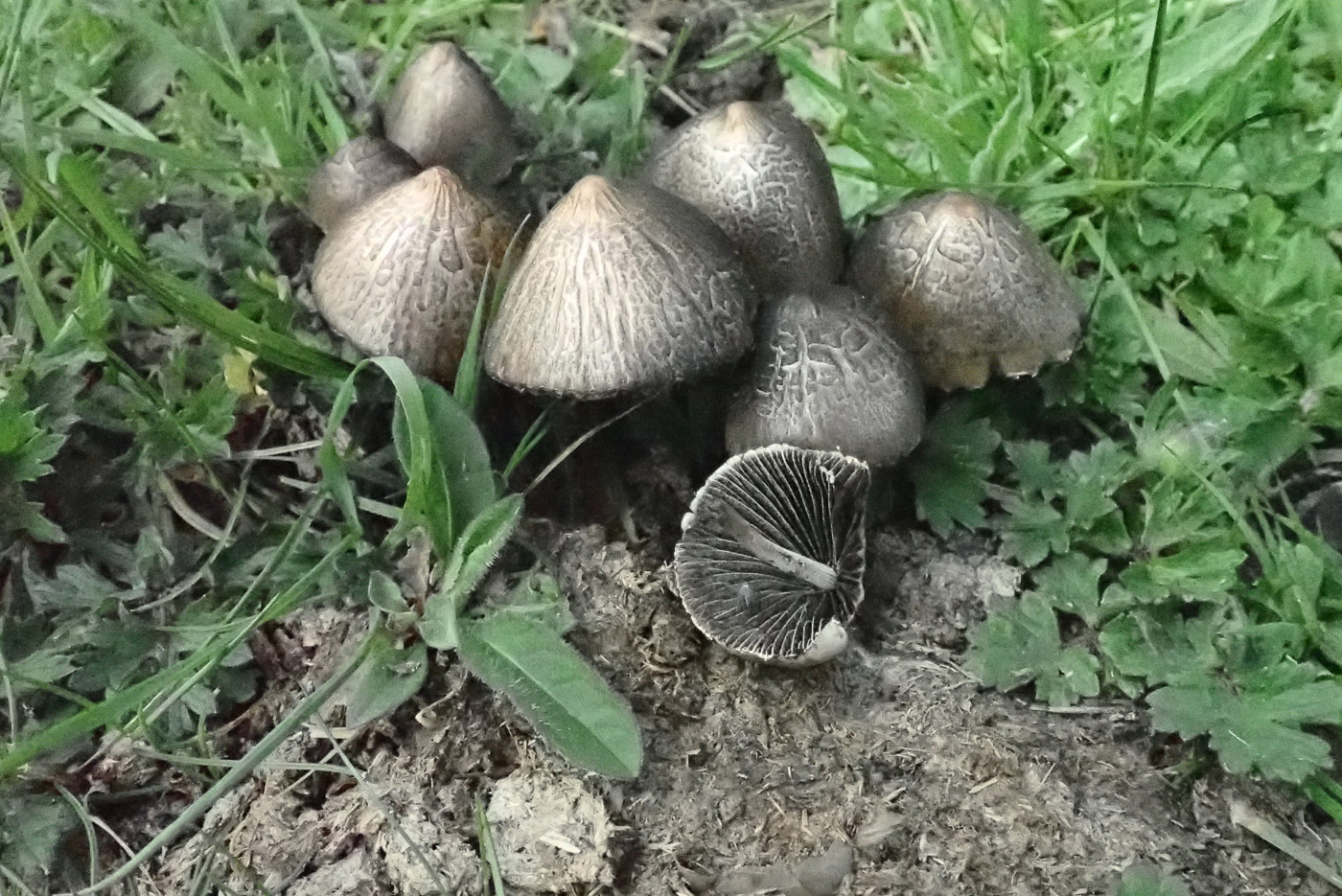 |
Panaeolus olivaceus (a Mottlegill with no common name) 
May 12, 2021. Whilst walking in Bernwood Meadows Penny came across this clump of rather desiccated mushrooms in a dried up cowpat. The genus was clearly Panaeolus, having the typically dark and mottled gills, but a scope and a detailed key were needed to decide upon the species. Amongst other things the spore shape and size together with the substrate soon settled the name: a unusual species which occurs in grassland where animals have been present, either on dung or well manured soil.
|




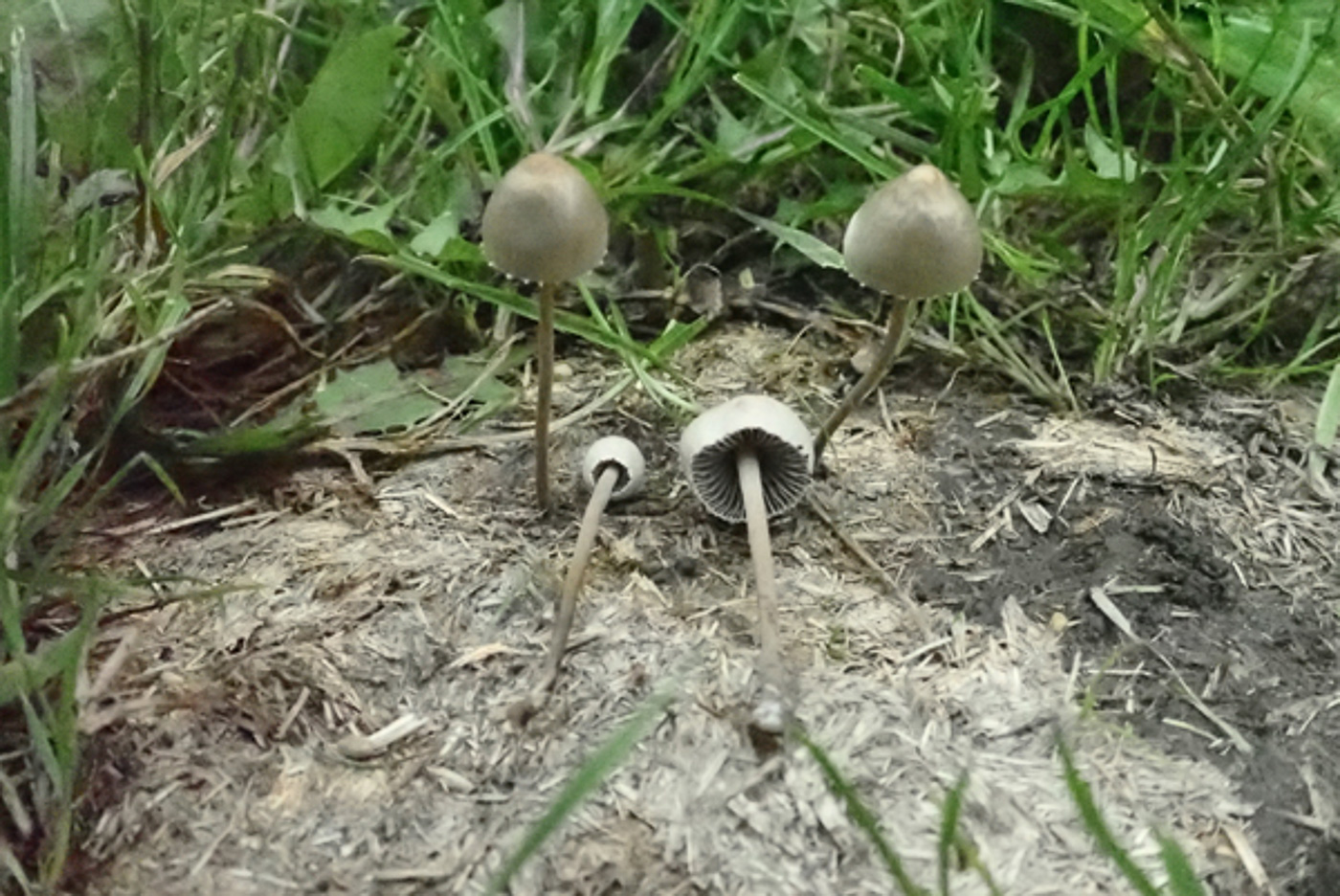
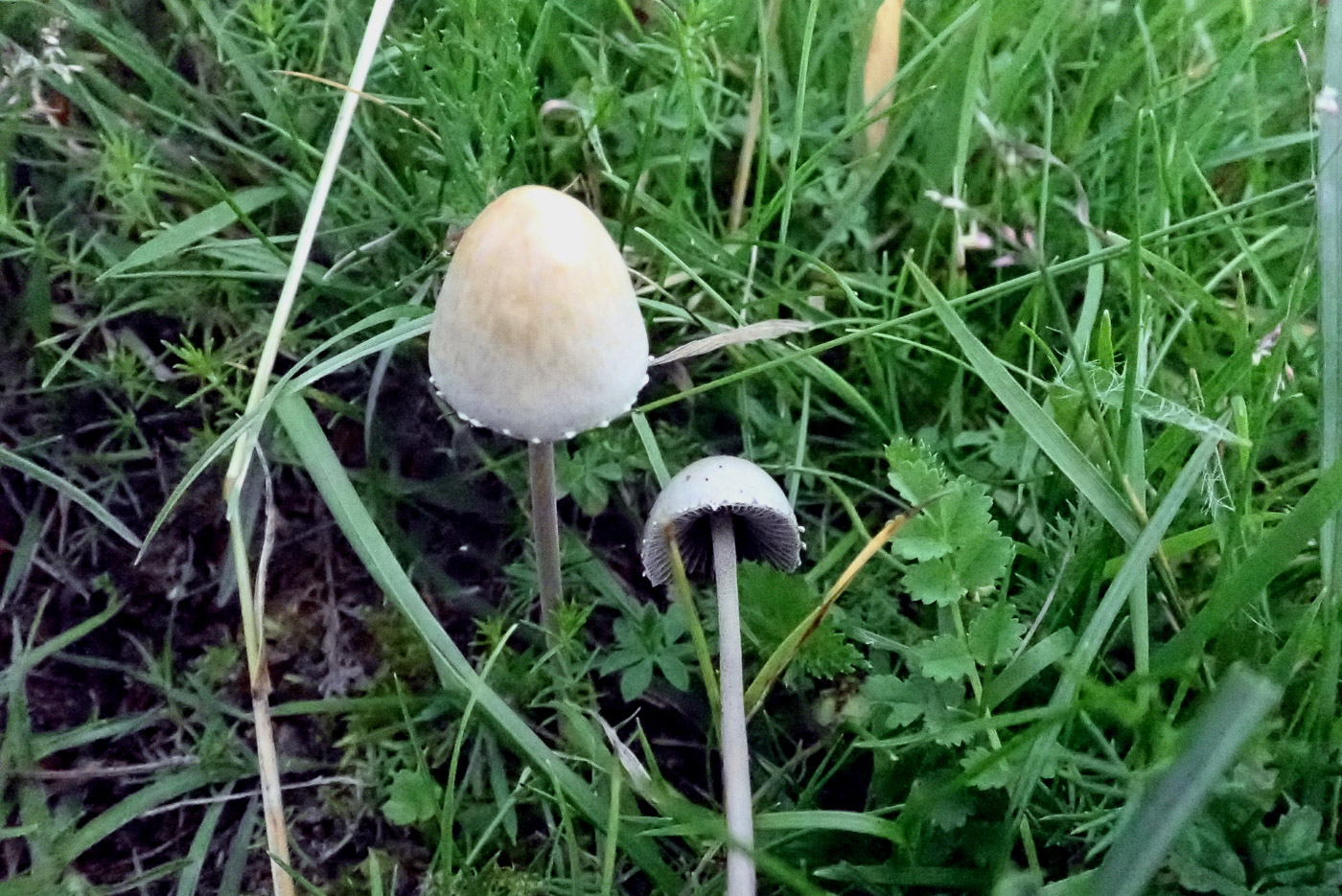 |
Panaeolus papilionaceus (Petticoat Mottlegill) 
Apr 13, 2023. In a dung heap at Stampwell Farm Jackie Ewan found this nicely typical clump of Panaeolus displaying its white frilly cap margin of veil - hence its common name. It can be found on dung of all sorts and is common in fields frequented by animals.
Mar 27, 2023. At Stampwell Farm in the same dung heap where Jackie Ewan found this species last month (see March 27th) she found some rather different examples having a cracked darker brown cap surface - seen here - which at first she thought must belong to a different species. Microscopic details were much the same, however, and the caps had the same frilly petticoat edge of this species, so she asked Penny for a second opinion. In fact there is mention in several texts of the cap surface cracking as here in sunny dry conditions, also several online images show this feature, furthermore Jackie noticed the following day a cluster with both smooth and cracked caps together (photo 3). This illustrates the disadvantage of following any one handbook with space for only a single illustration which can never do justice to the variety of guises one species of fungus can display. So these images are a useful addition.
Jun 13, 2022. On a small bare patch of manured soil at Turville Heath these attractive little LBJs were found by Penny. Their substrate together with the frilly cap edge from veil remnants and mottled dark gill having a white edge were enough to make the identification in the field. This is a common species wherever dung has been.
Jul 13, 2021. On manured soil in thick grass at Coombe Hill Penny found a couple of individuals of this distinctive dung-loving LBJ (probably more familiar as P. sphinctrinus). Caps were only about 1 cm across but the stems can be very long in comparison depending on the surrounding vegetation. The remarkably regular frilly veil remnants around the cap margin make the species nameable in the field, but this becomes far less easy in older specimens when they've disappeared.
|
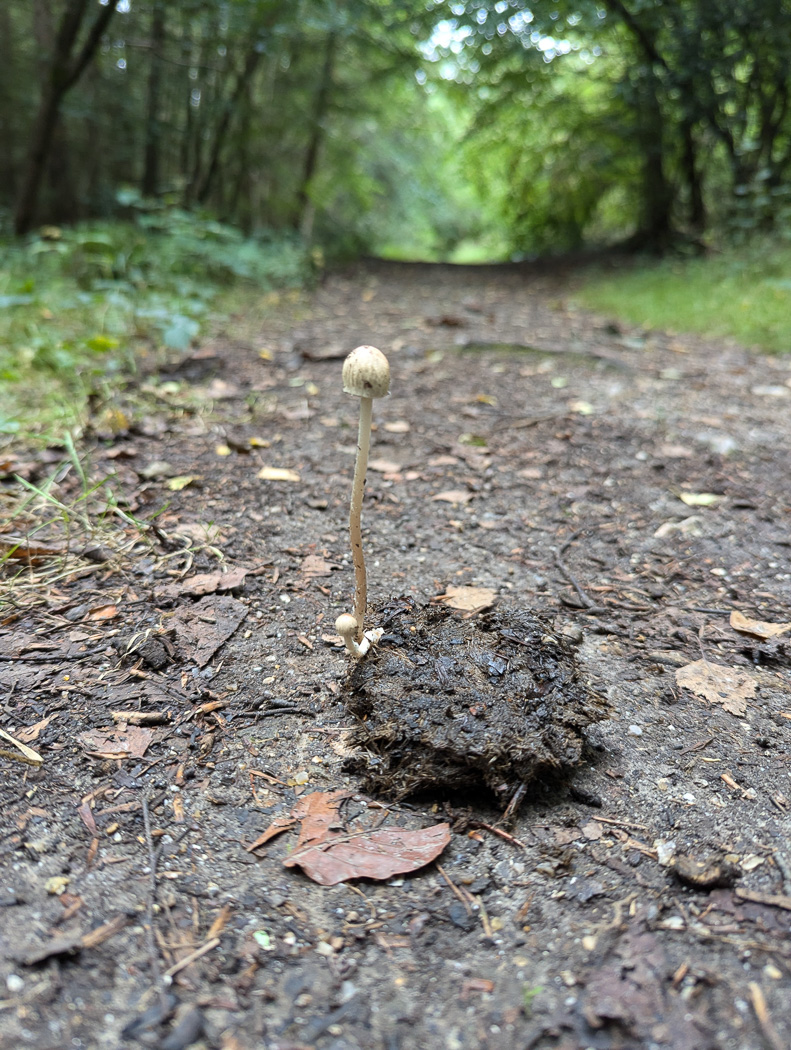
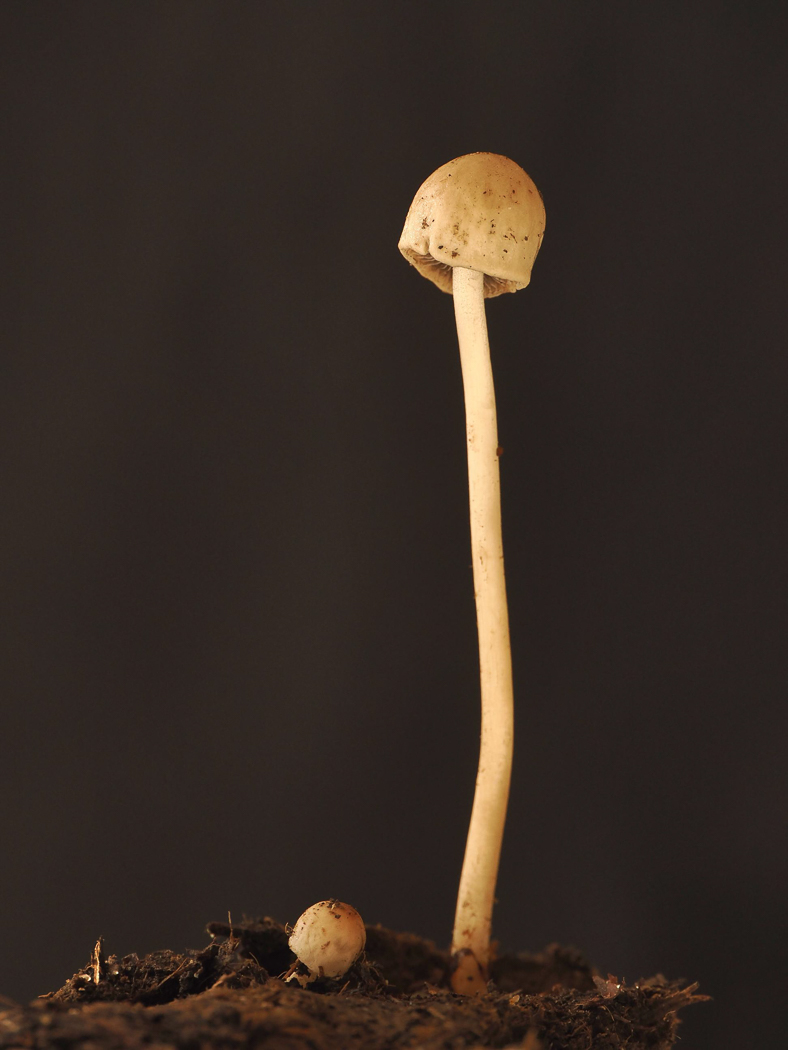
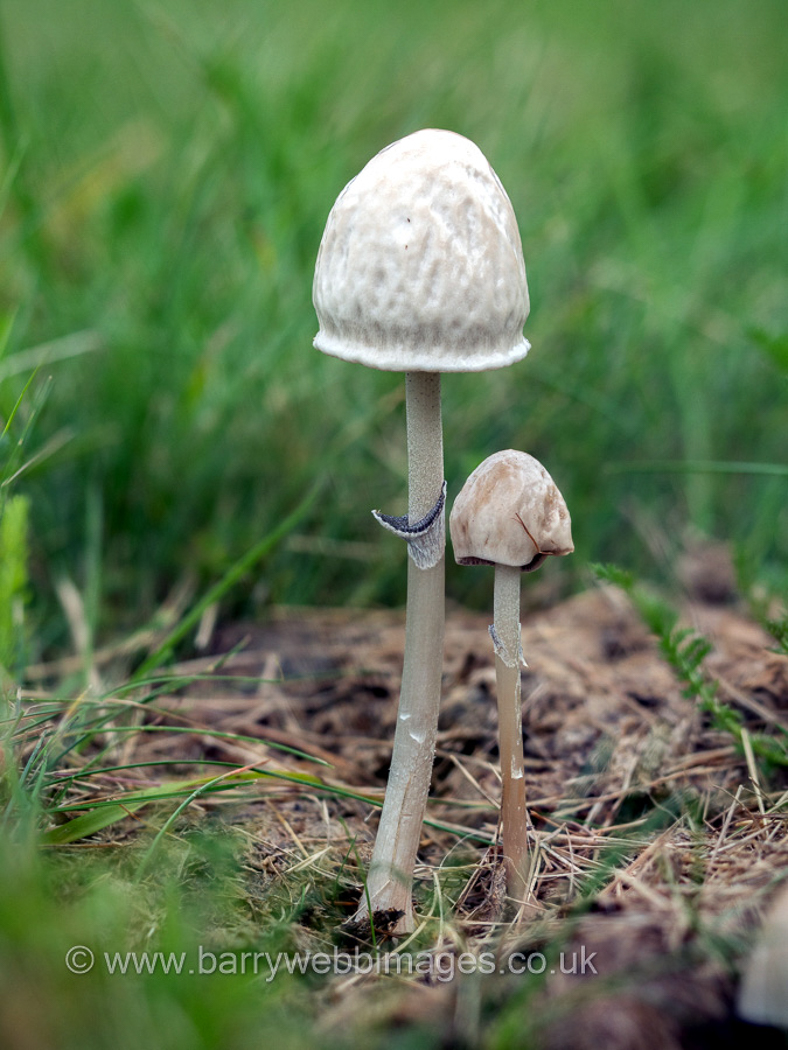
|
Panaeolus semiovatus (Egghead Mottlegill)
Sep 8, 2024. Whilst biking in Bradenham Wood Claire Williams nearly went over this piece of dung but happened to notice the fungi growing out of it as she rode past! Stopping to take a closer look, she noted the slimy stem which had just faint signs of ring remnants (hardly visible here) together with the typical campanulate cap and although the gills were still somewhat pale for this dark-sored genus she correctly identified the species which is not uncommon but always on dung or remains of dung. Often after heavy rain species normally seen with a ring on the stem when young will lose it, causing confusion when it is missing.
Aug 20, 2021. On dung in Gray's Field adjacent to St. Giles Church in Stoke Poges Barry Webb found this pair. Though gills are not visible, their very dark colour is not in doubt having dropped onto the upper surface of the clearly ascending ring, thus confirming the identity of the species. This is the only Mottlegill to have a ring on the stem, it is confined to dung and retains its distinctive rounded shape through life - all useful characters though this is a somewhat pale example and is suggestive of another similar dung species, P. papilionaceus, which, however, has frilly veil remnants on the cap margin - compare with the photo dated July 13th. The presence or absence of a ring is conclusive. |
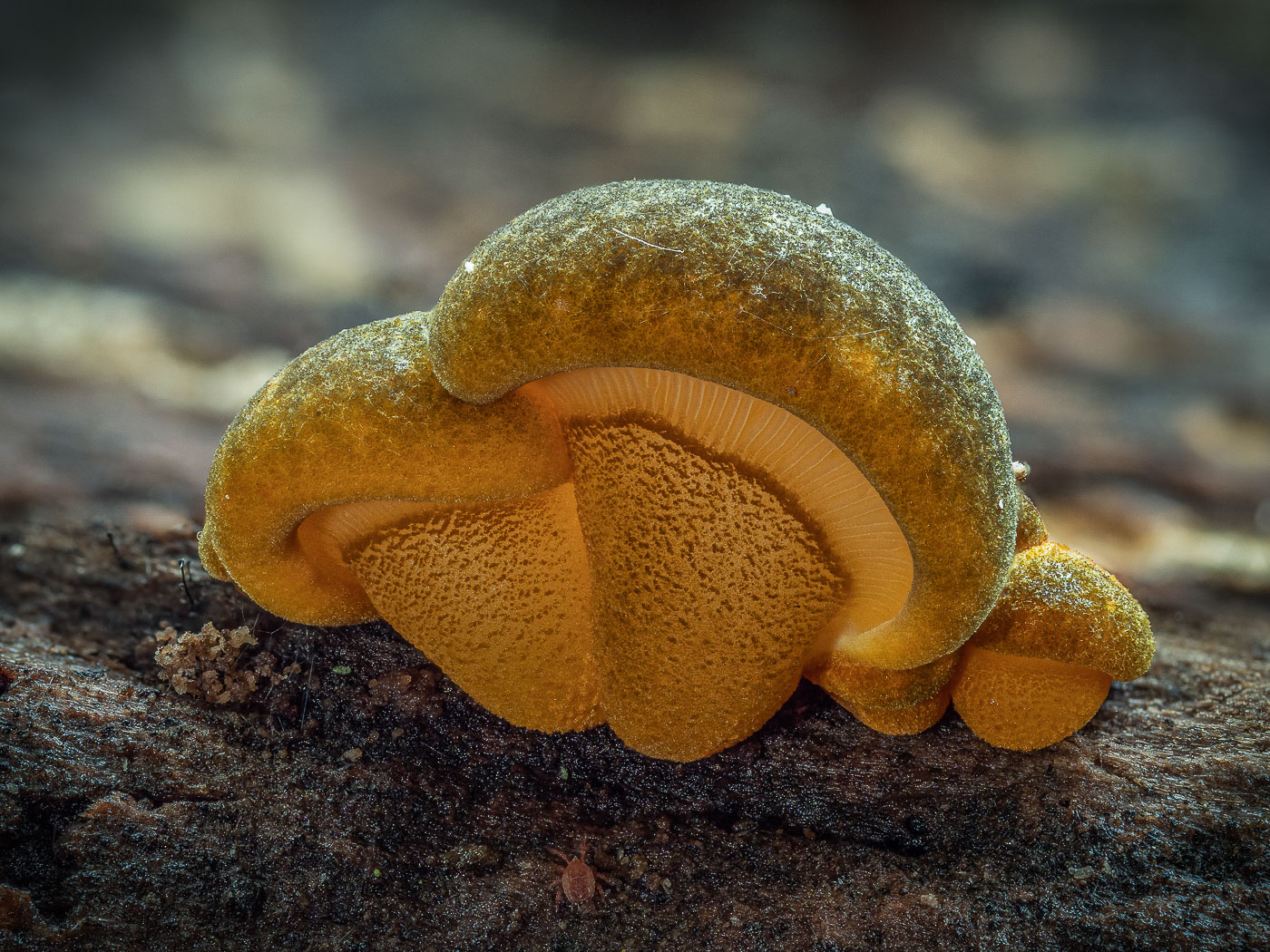 |
Panellus serotinus (= Sarcomyxa serotina) (Olive Oysterling)
Oct 30, 2020. Barry Webb noticed this occasional and beautiful species just developing on fallen Beech in Burnham Beeches. Its olive green to brownish colours are really unusual, making it an easy species to recognise if you know it! It is similar in shape and size to Oysters having a short eccentric stem and crowded decurrent gills and usually makes an appearance late in the season, even into the winter months, occurring on fallen trunks or large branches of deciduous tress, most commonly on Beech.
|
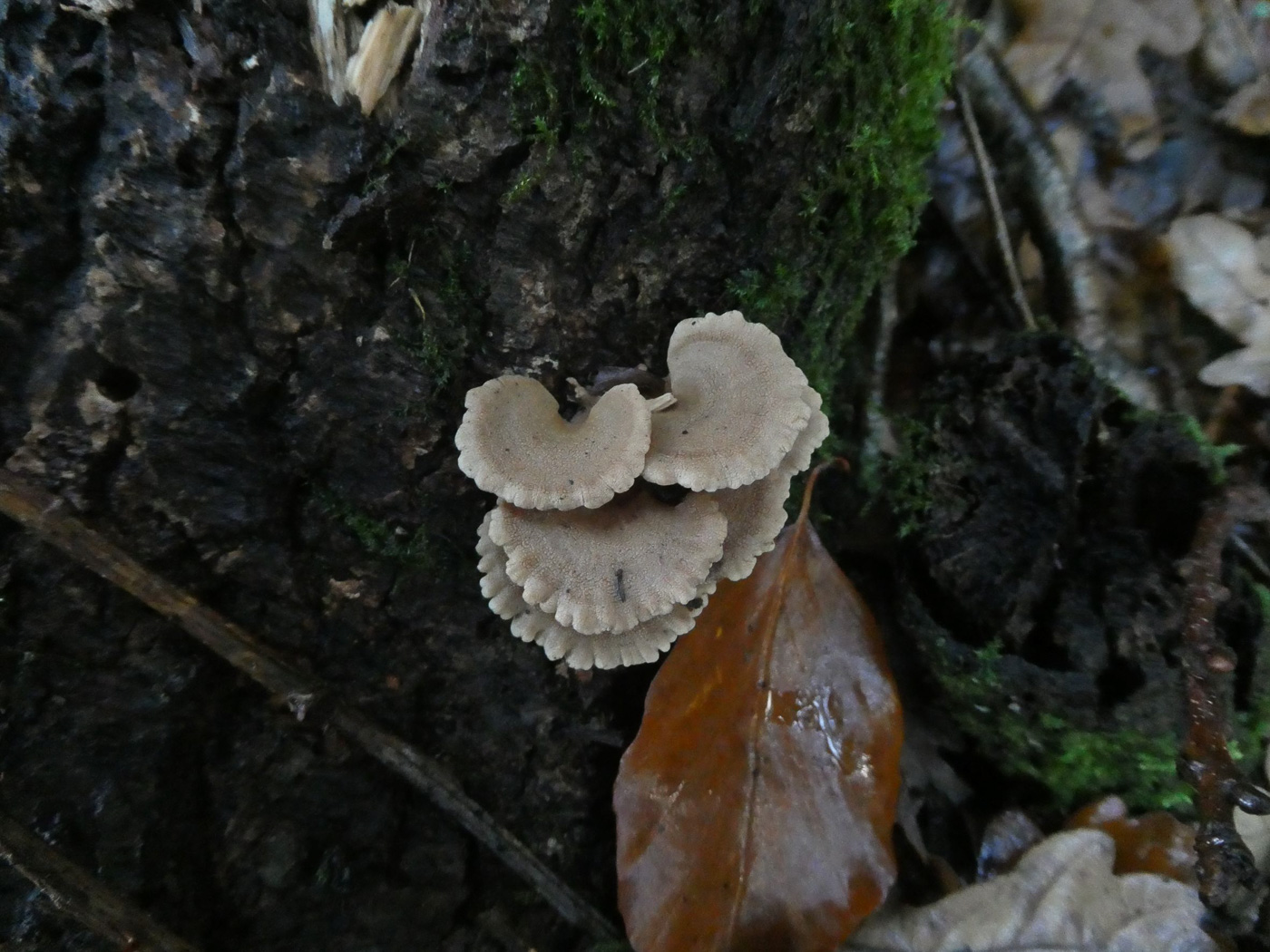
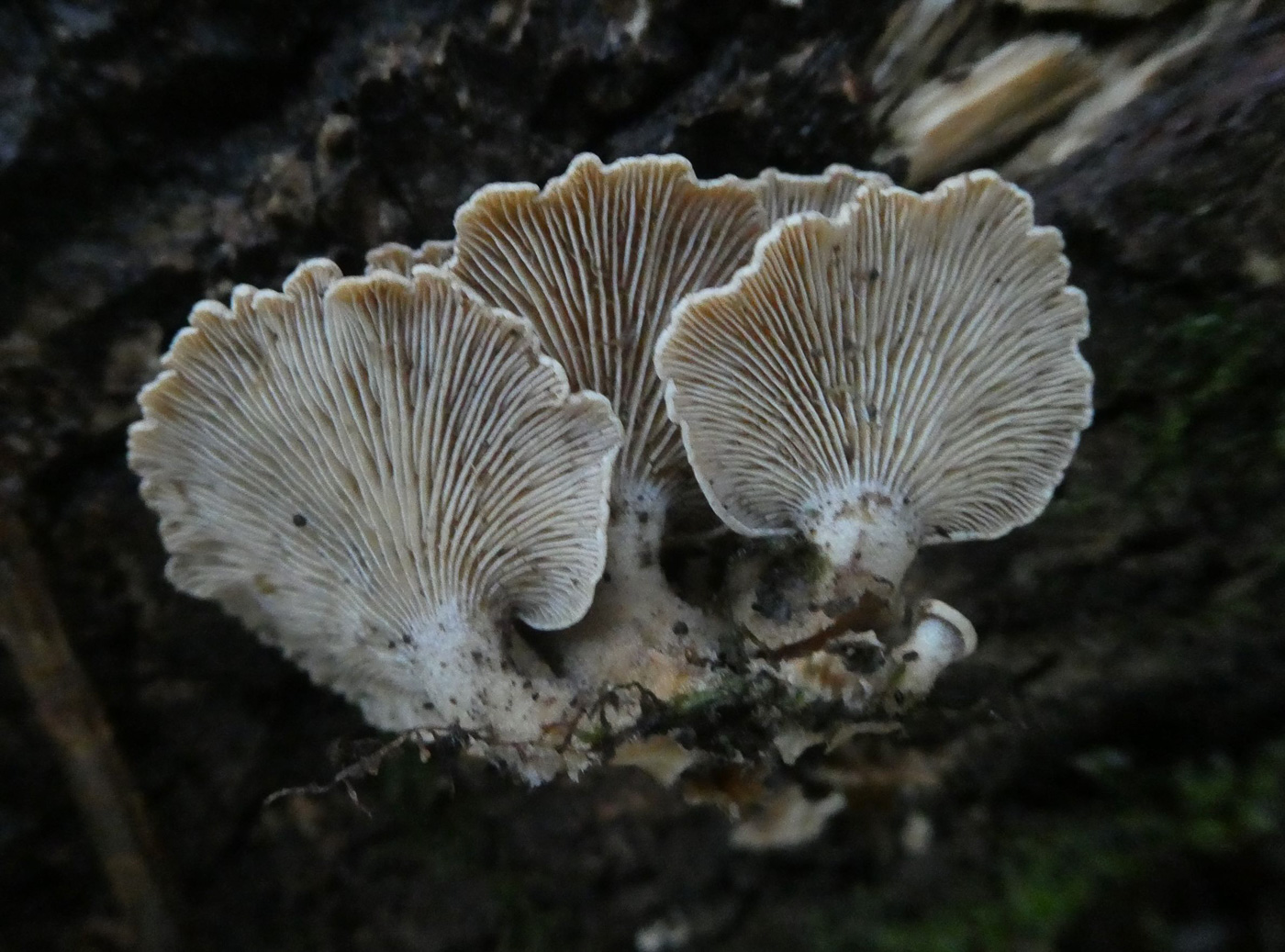
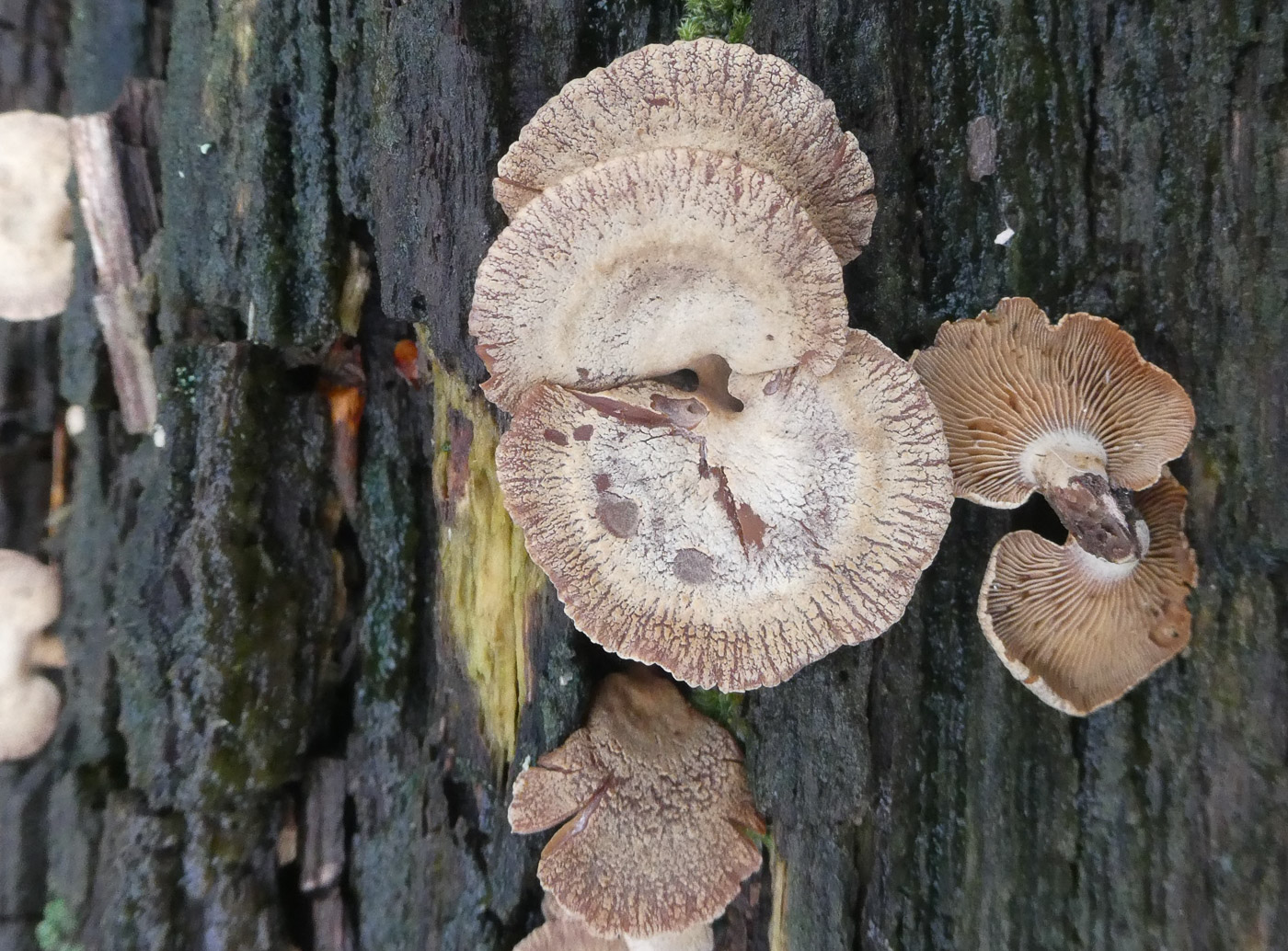
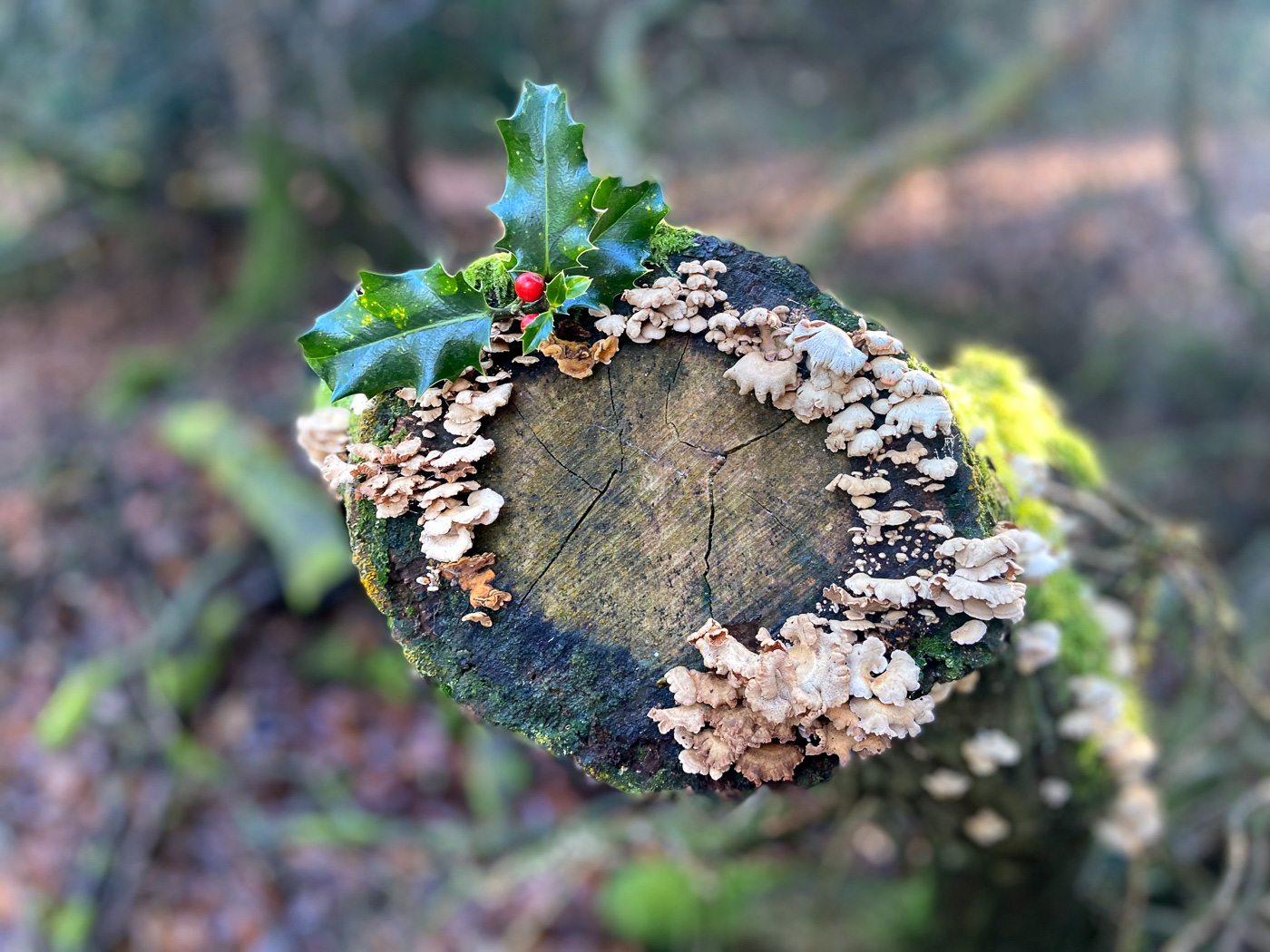

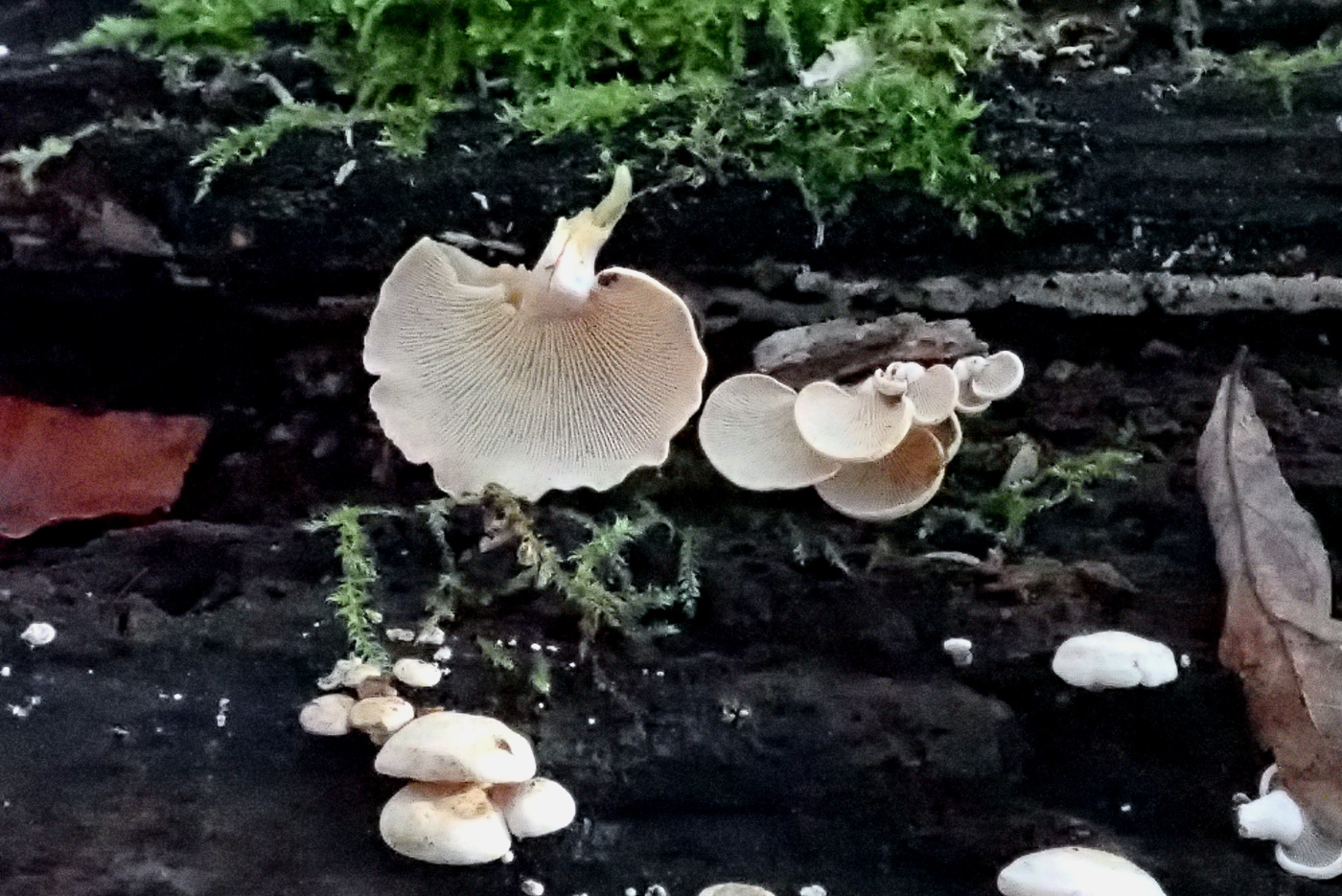
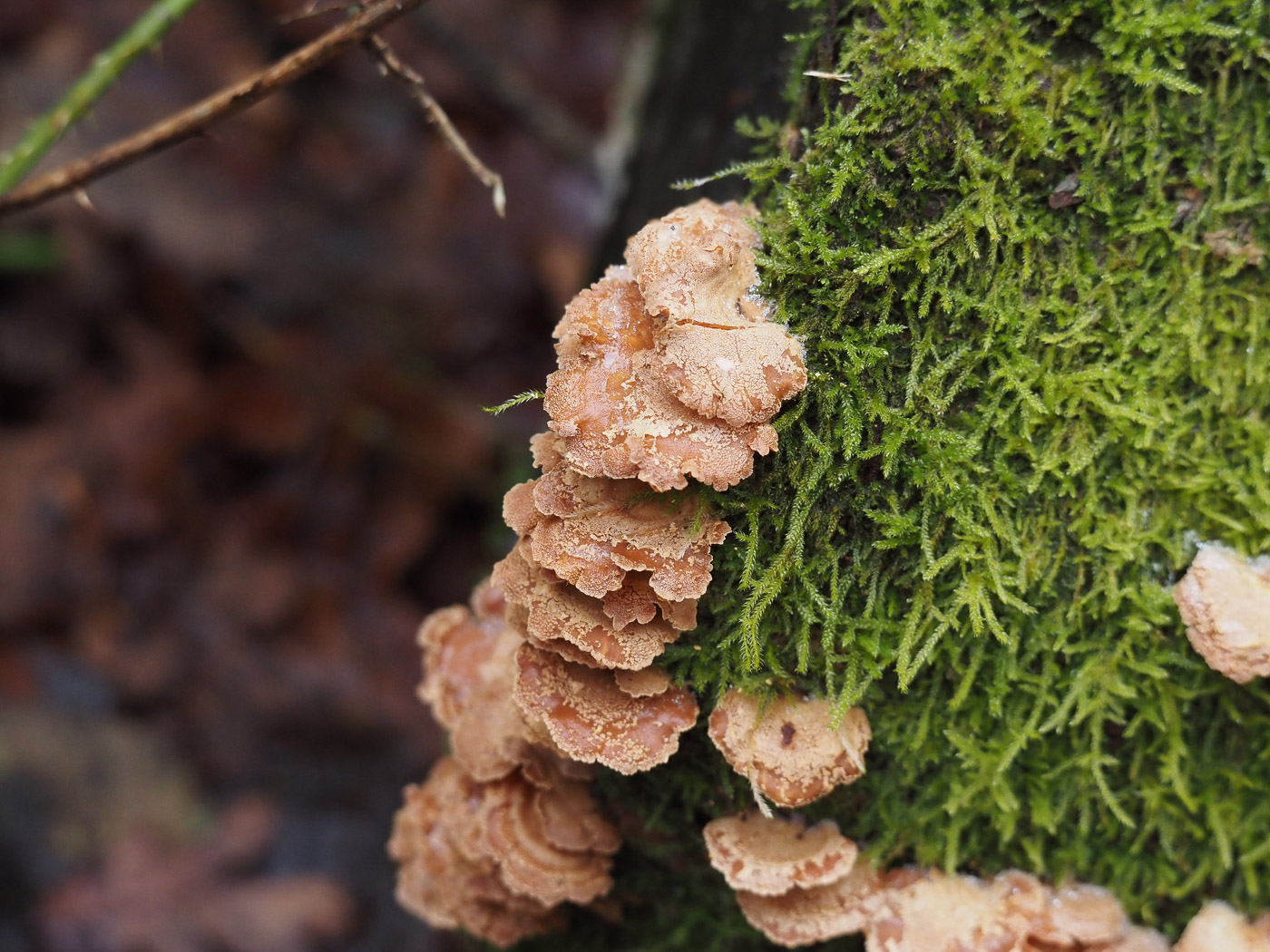
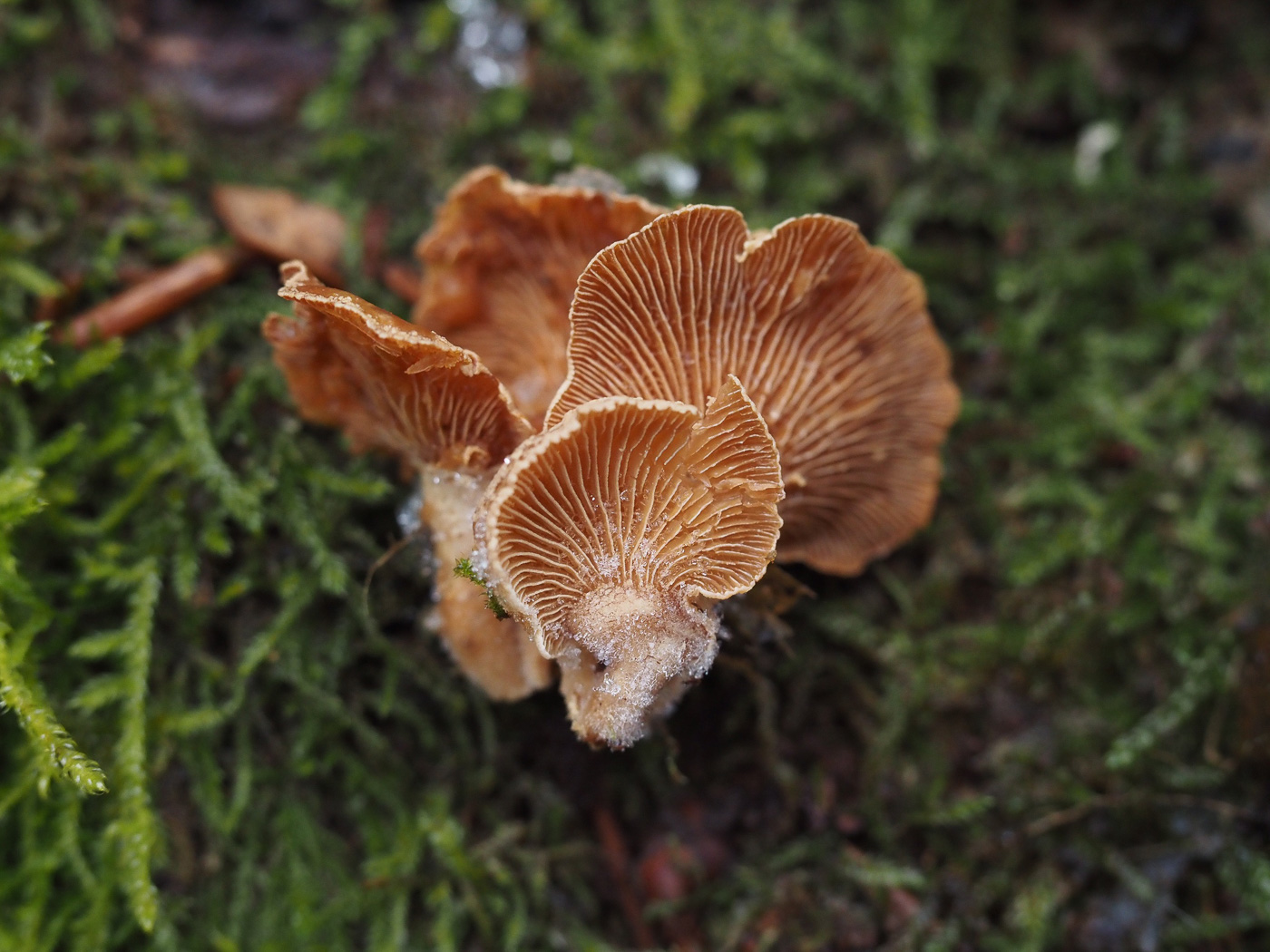
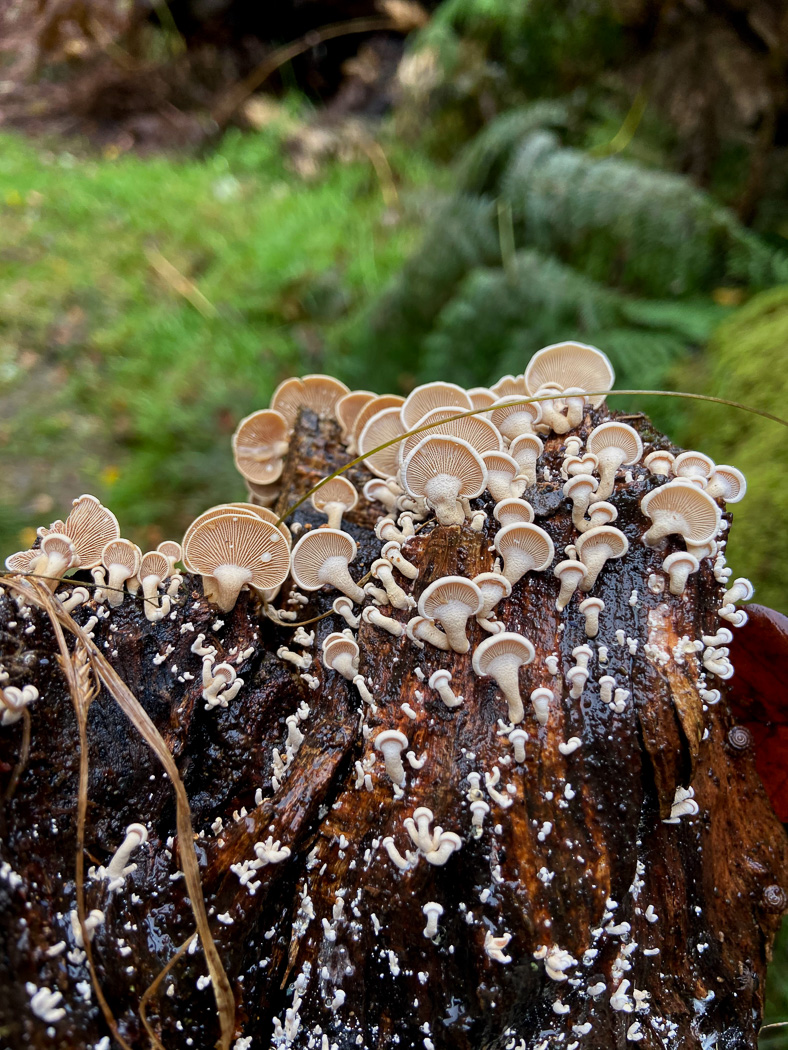
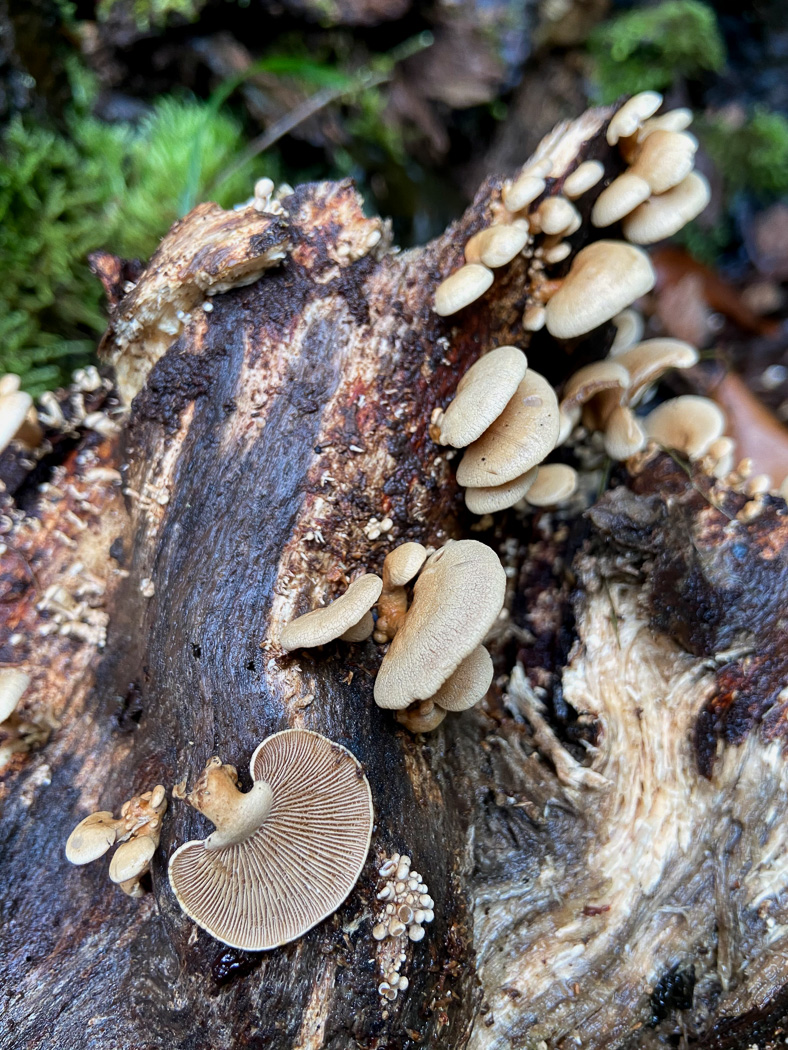
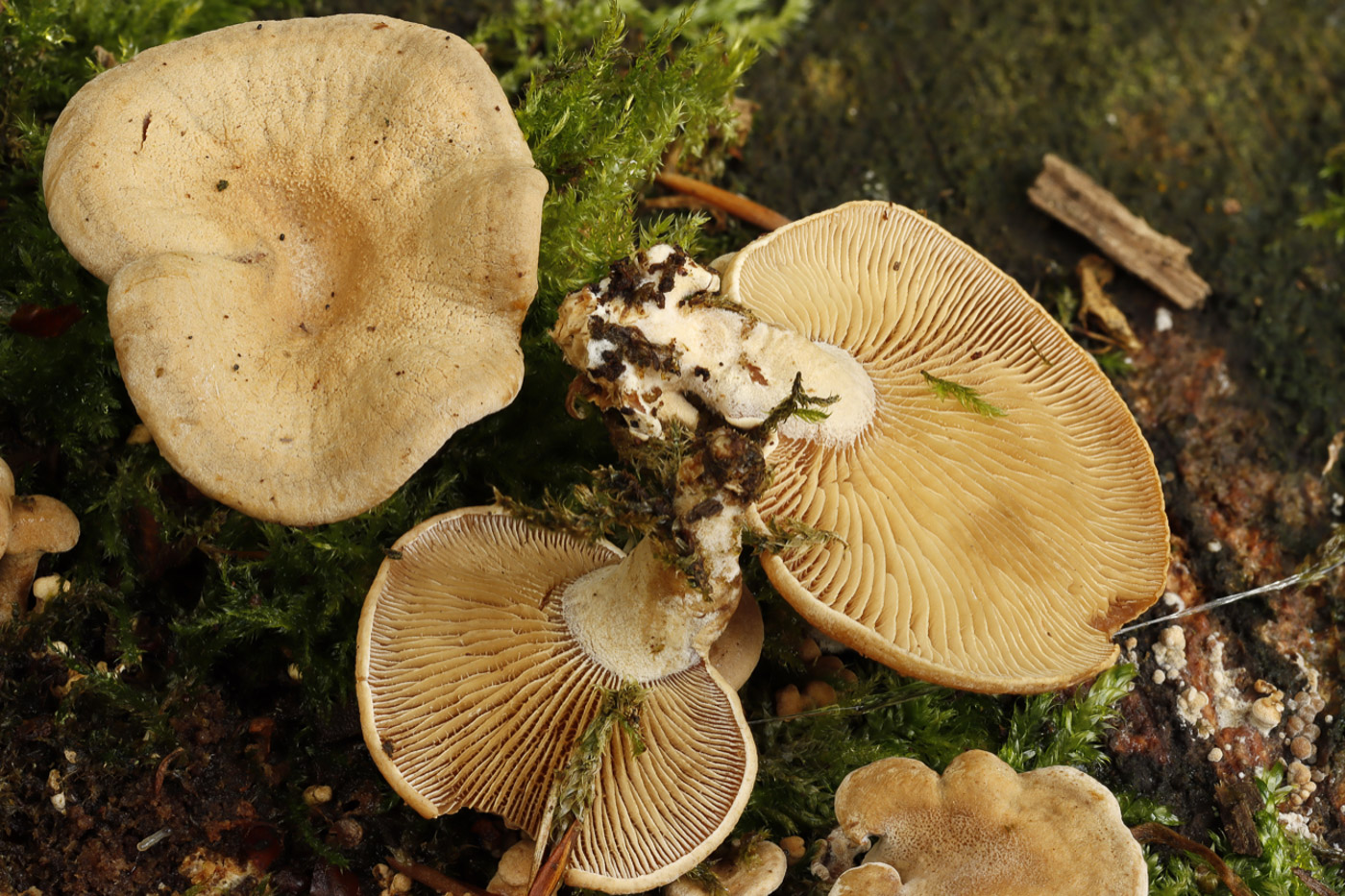
|
Panellus stipticus (Bitter Oysterling) 
Nov 3, 2022. In Austenwood Commmon, Chalfont St. Peter, Jim Wills found these small shell-like mushrooms on a fallen Oak branch.
Jan 1, 2022. On a deciduous log at Stoke Common Jim Wills found this small bracket-like species which has gills but an eccentric stem.
Nov 17, 2021. On a bare felled Beech trunk in Pullingshill Wood Penny noticed this large cluster of small caps looking similar to the genus Crepidotus (also named Oysterlings). The caps were not white, however, but beige and peeling one off revealed brown gills underneath with an eccentric stem (one at the side of the cap, not the centre). A good character to confirm this quite common and pretty little species is the slightly sticky gill surface. Pinch a cap firmly between thumb and finger, then put your thumb and finger together (without the mushroom in between!) and they tend to slightly resist separation - tacky.
Dec 22, 2021. Sarah Ebdon sent in this seasonal photo, taken in Naphill Common.
Jan 8, 2021. In Downley Common Woods today Claire Williams found amongst quite a few other fungal species (not all of which could be identified thus are not included here) this nice cluster. It is clearly surviving the frosty conditions quite happily on this moss covered deciduous log, and the underside view shown here leaves one in no doubt as to its identity though just from the top view this would not be possible.
Oct 3, 2020. Sarah Ebdon found this collection of small bracket-like mushrooms on fallen Beech in Naphill Common. Caps are typically kidney-shaped and can get to 3 or 4 cms across and the distinctive short stems are never central, always lateral (from the side). They often frequent the sawn off ends of deciduous logs in tiers and superficially appear similar to the genus Crepidotus (also confusingly named Oysterling!), also normally common but yet to be found this season. A trick to confirm this particular species: squeeze a fruitbody between a finger and thumb, then put the finger and thumb together to feel the tacky effect left by the gills. Photo 2, taken by Paul Goby, is of larger specimens in Naphill Common and shows the shape, gills and stem really well.
|





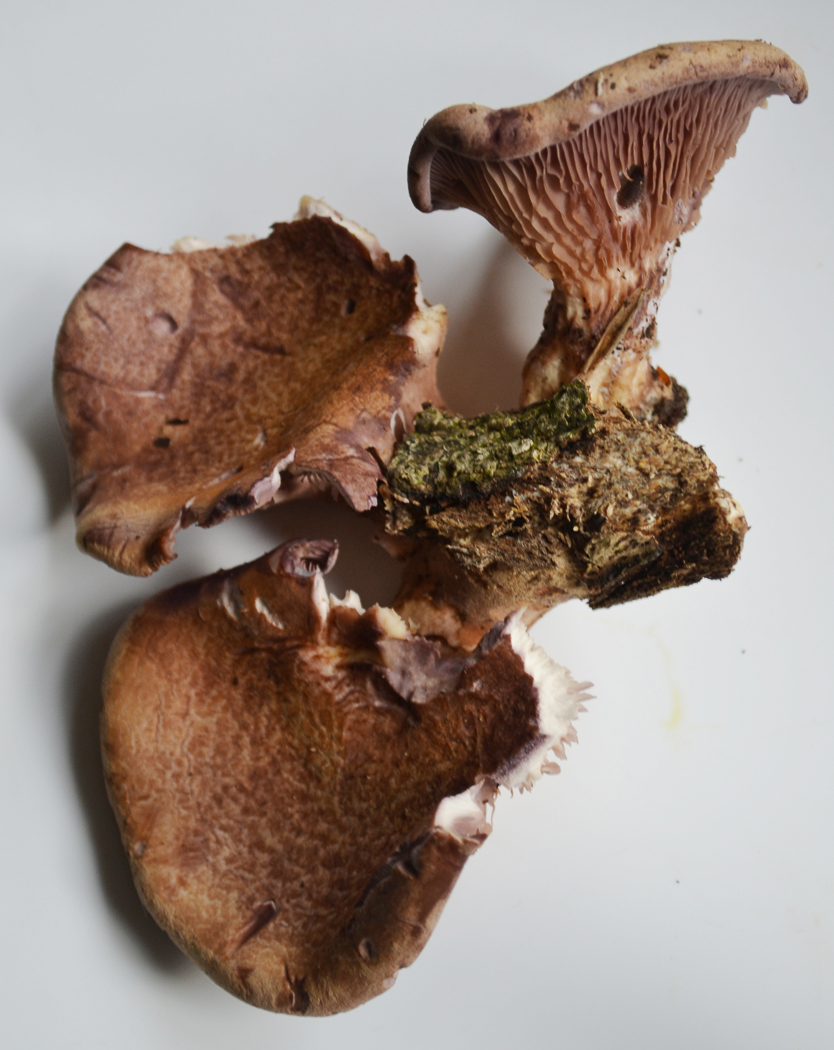
|
Panus conchatus (Lilac Oysterling) 
Jun 2, 2023. In Homefield Wood, near Hambleden, Jim Wills noticed this beautiful crop of pleurotoid fungi on an unidentified mossy stump, then noted the lilac tinge and strong fragrant smell, so at home checked the spore size and colour to confirm his ID. This lovely set of photos shows the species off at different stages of development including the lilac colours when fresh and young which then fade to tan as it matures. Though not a rarity we have very few records from only two other county sites and our only Finds entry (2020 September 25th) was of somewhat dried out material.
Sep 25, 2020. Tony Marshall found this cluster on a stump at the roadside in Prestwood. Not rare but certainly only occasional, the species has similarities to Oyster Mushrooms which also grow on fallen deciduous wood and have decurrent (sloping) gills. Notable features of this species are the strongly funnel-shaped caps and subtle lilac tints to the gills and stem when young, though (in common with Wood Blewits) this tends to fade to tan brown as it matures. It has a pleasant sweet smell.
|
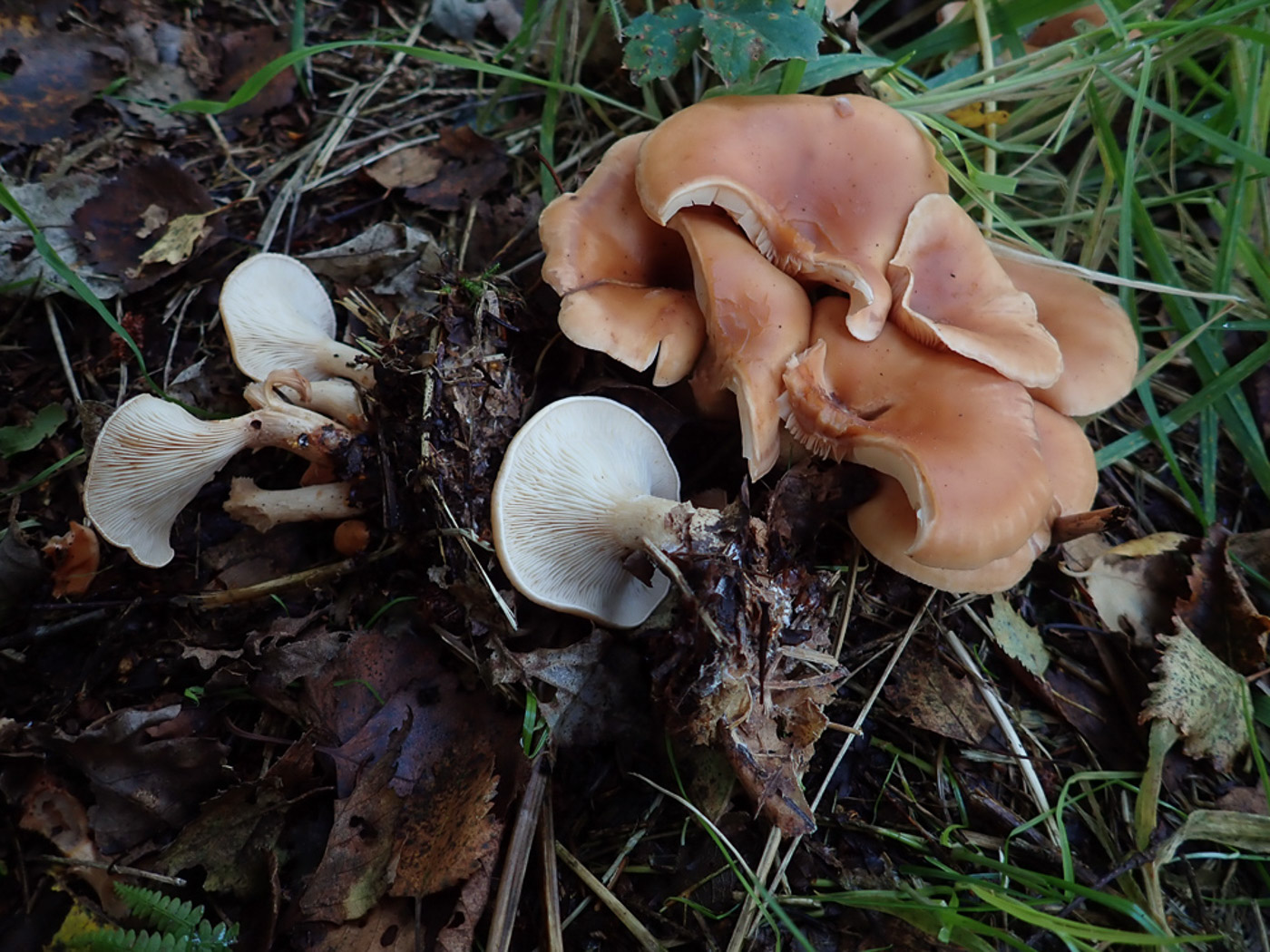


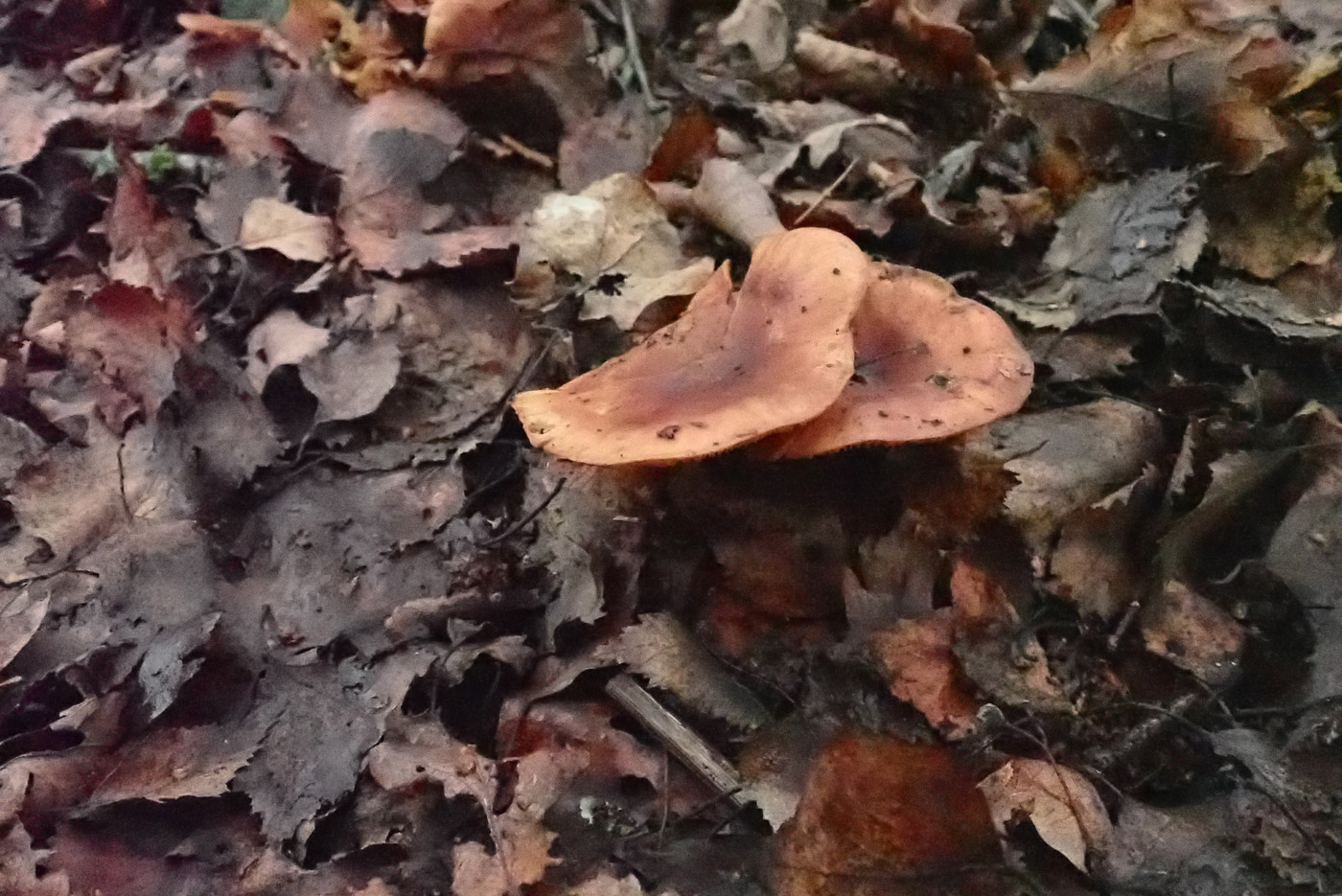
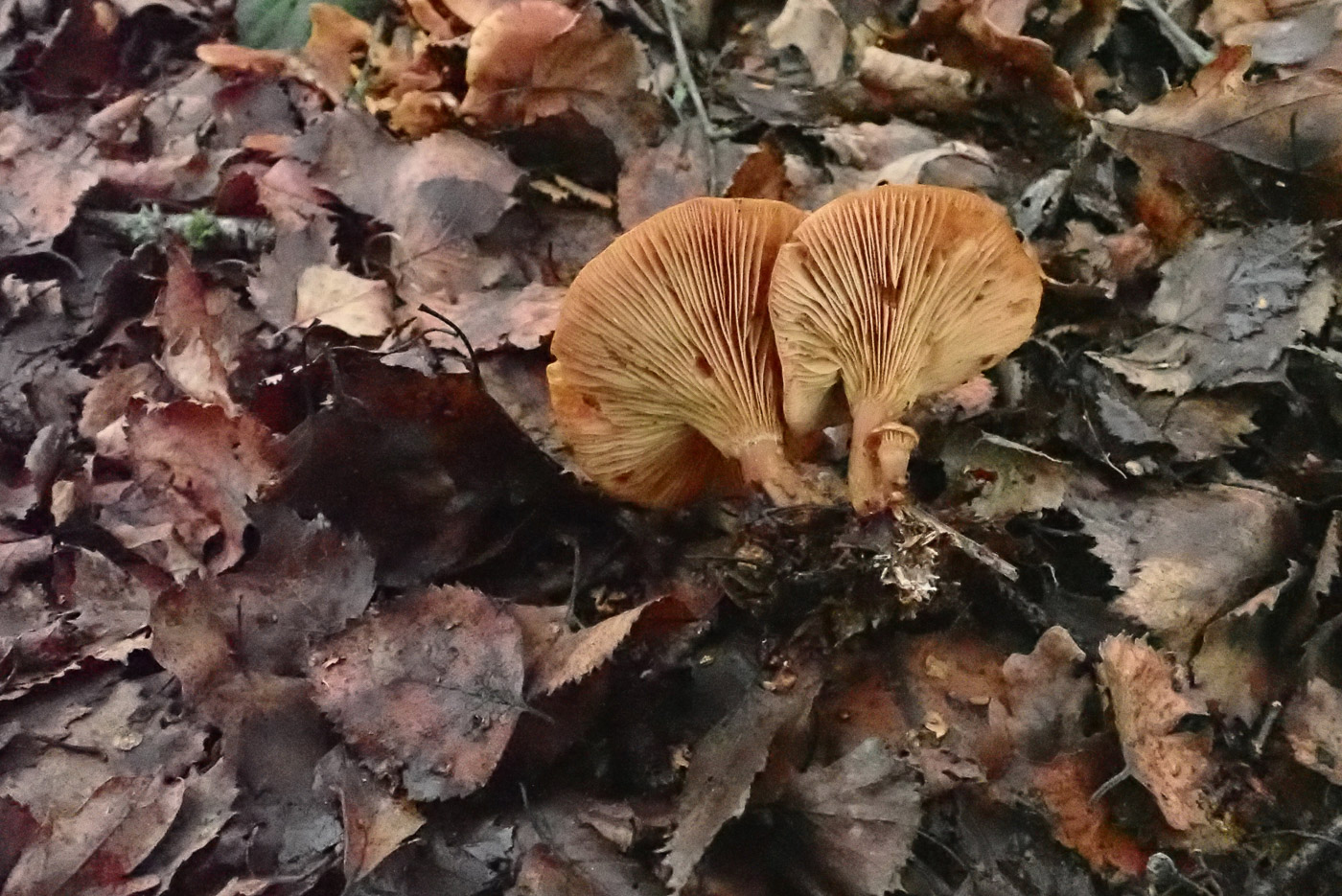
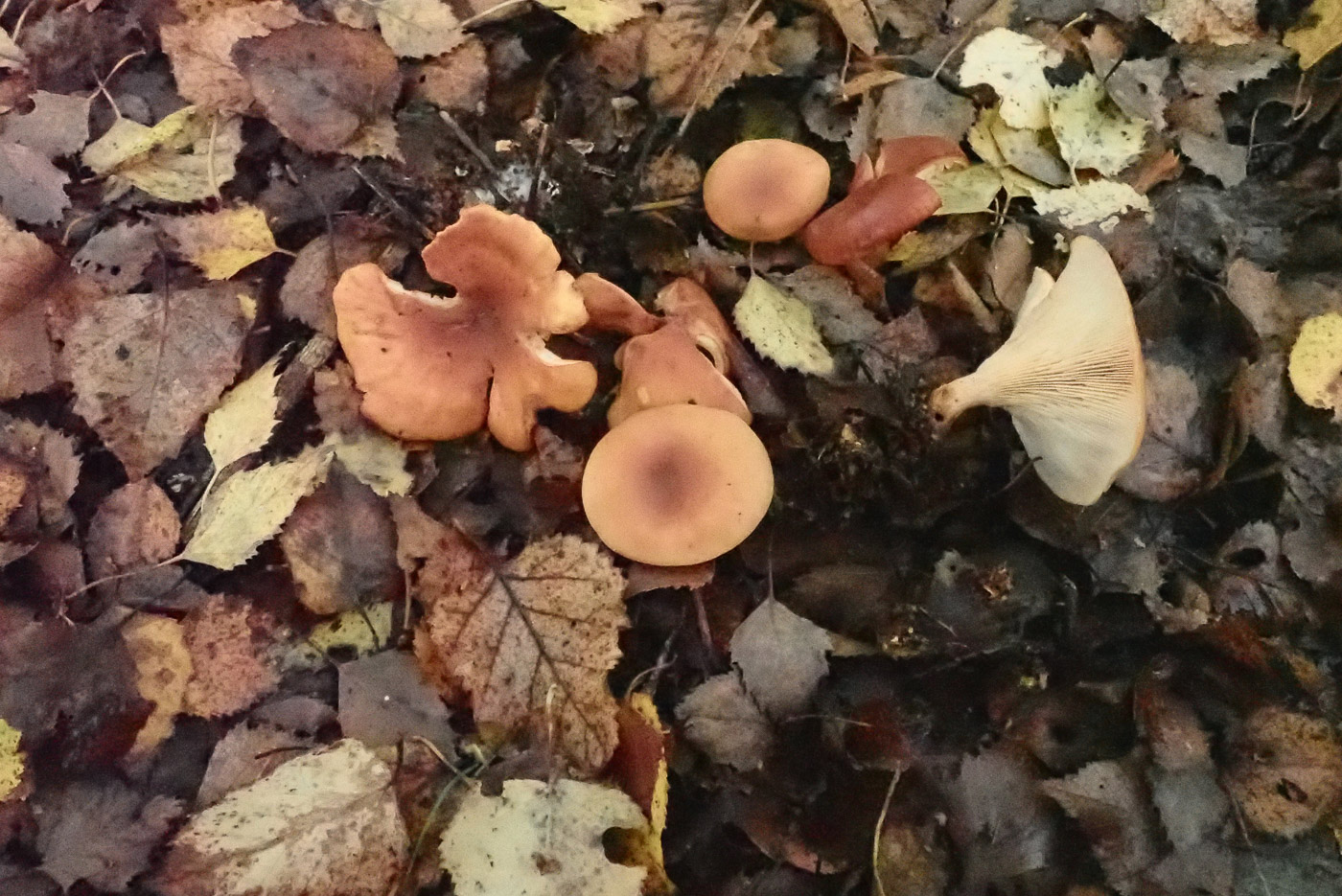
|
Paralepista flaccida (Tawny Funnel) 
Oct 8, 2024. At Turville Heath things are still moving pretty slowly, but Penny found typical material of this common and distinctive species in the litter under Birch. It occurs frequently under conifer as well as deciduous litter often in troupes.
Dec 12, 2023. In woody litter mixed with rotting vegetation at St Giles Churchyard, Stoke Poges, Penny found this cluster of a very common fungus in good condition. Originally in genus Clitocybe it was moved to genus Lepista on account of its similarly ornamented spores, but following molecular investigation was moved again to Paralepista where it now resides together with just one other (rare) British species.
May 20, 2023. Amongst some old leaf mould in his Bourne End garden Richard Donnelly found this singleton and worked out it was possibly this species but was unsure. On receiving his photos Penny was also unsure for several reasons, it being not only a somewhat unseasonal find but also on its own rather than clustered as usual, rather pale and the cap not as smooth as usual. It was difficult to think what else it might be, however! Checking the spores would at least help: the species was originally moved from genus Clitocybe to Lepista on account of its ornamented spores - Clitocybe species have smooth spores - then recently into Paralepista - ie similar to but different from Lepista. The spores of the dried sample she then received from Richard did indeed match those of Tawny Funnel, hence its inclusion here. September is the earliest month we've previously recorded this common though often late autumn species, proving yet again what a remarkable spring 2023 is proving for the unseasonal fruiting of fungi.
Jan 1, 2022. Under the same Birch where Penny found it previously at Turville Heath, this species (more familiar as Lepista flaccida) was still fruiting and recognisable today.
Nov 13, 2021. At Turville Heath under Birch Penny found a few of these common mushrooms, recently moved from the genus Lepista (Blewit) and before that in Clitocybe (Funnel) owing to its funnel shape. However, it has ornamented spores (like Blewits and unlike Funnels). It-occurs under both deciduous and coniferous trees in litter and is usually an easy one to recognise with its orange tawny smooth cap and decurrent gills.
|
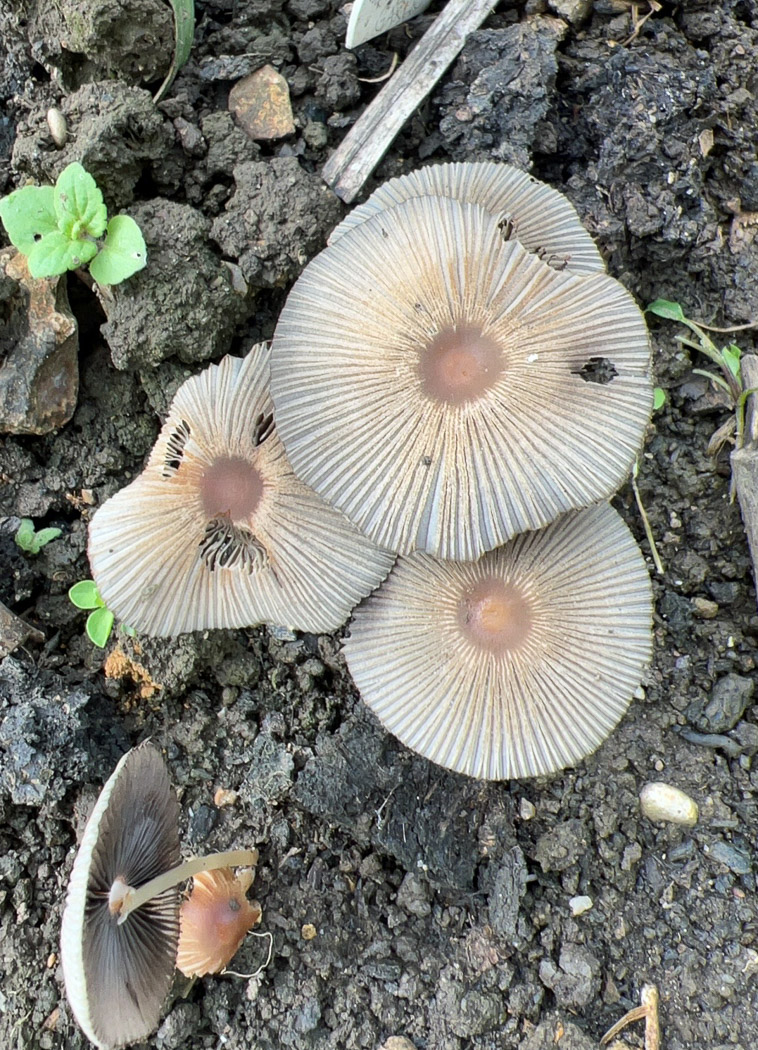
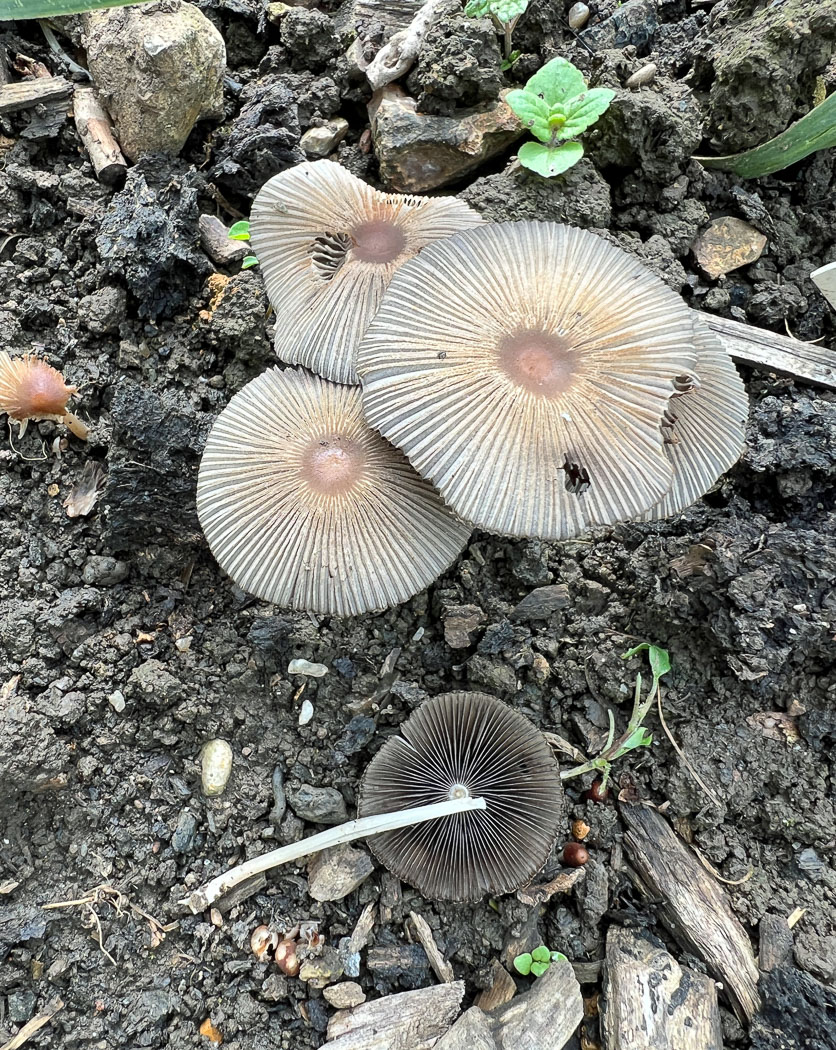


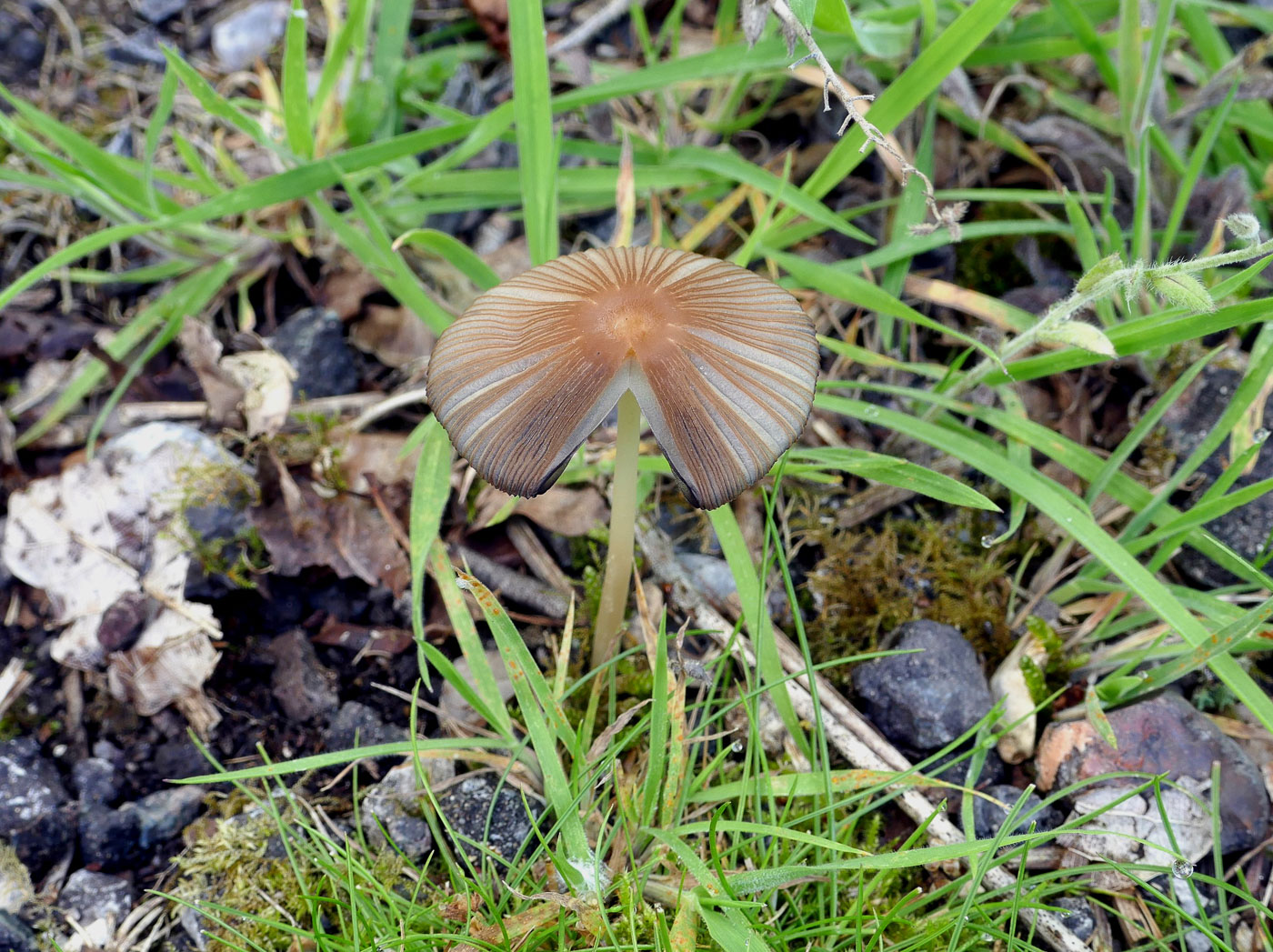
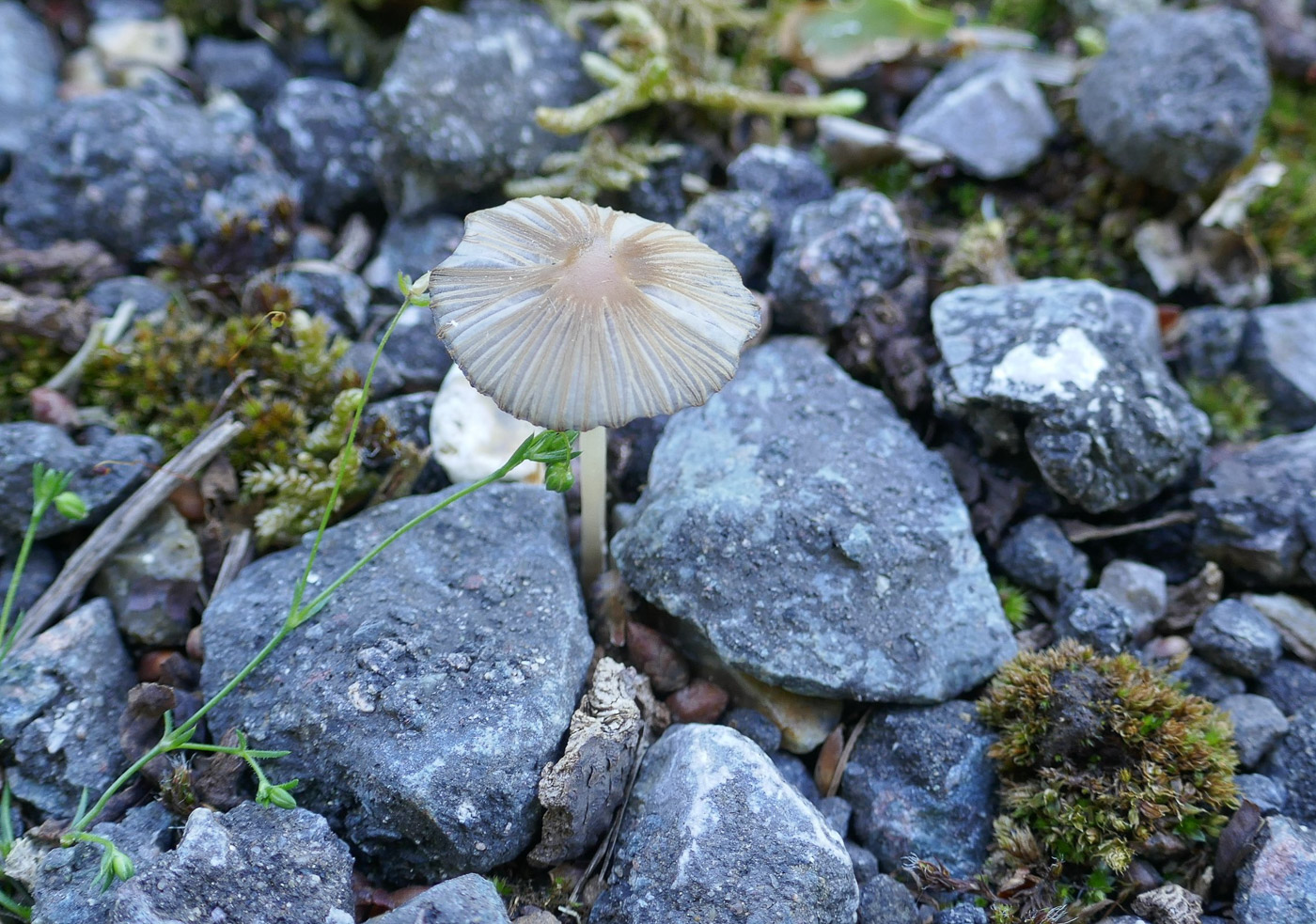
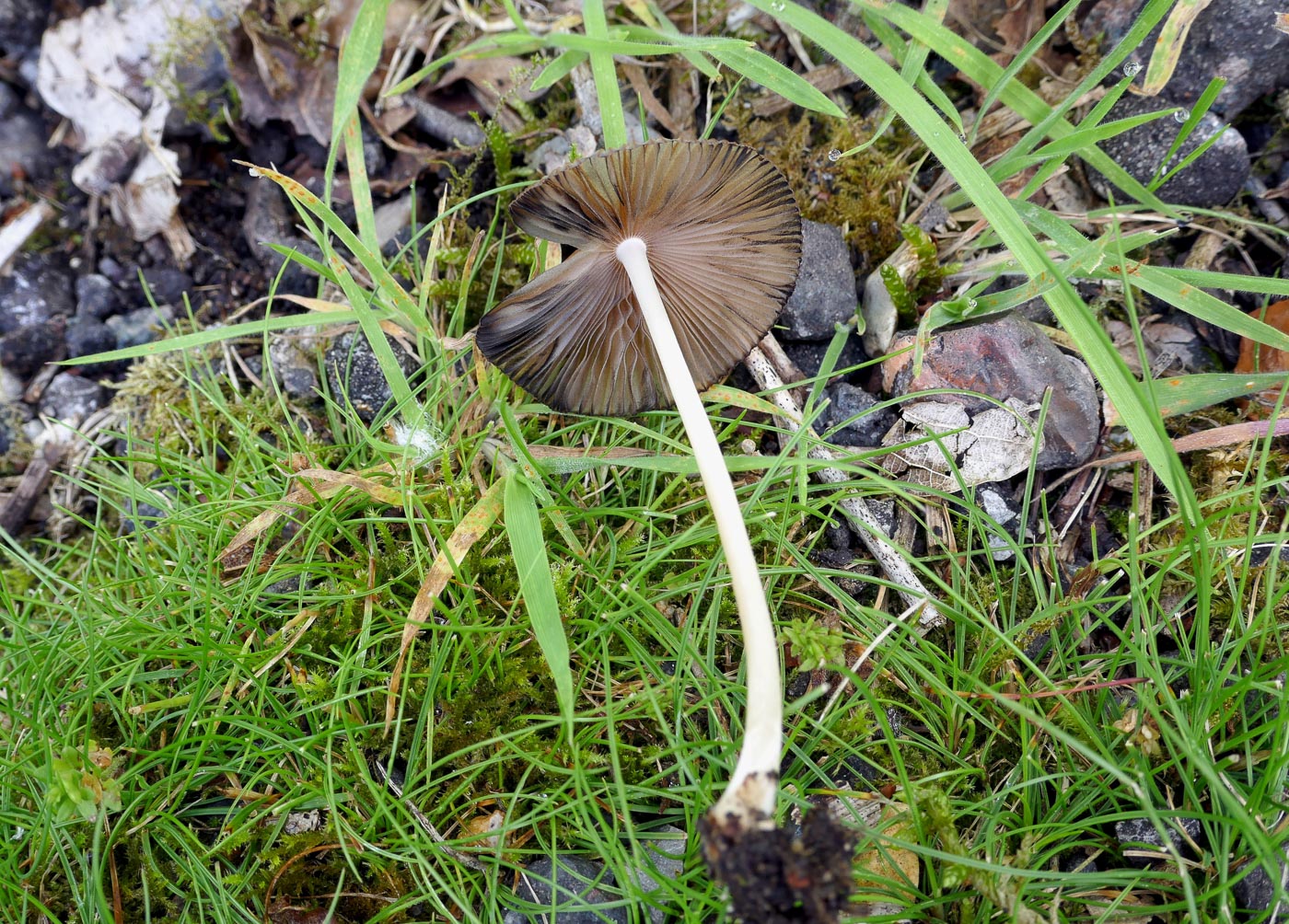
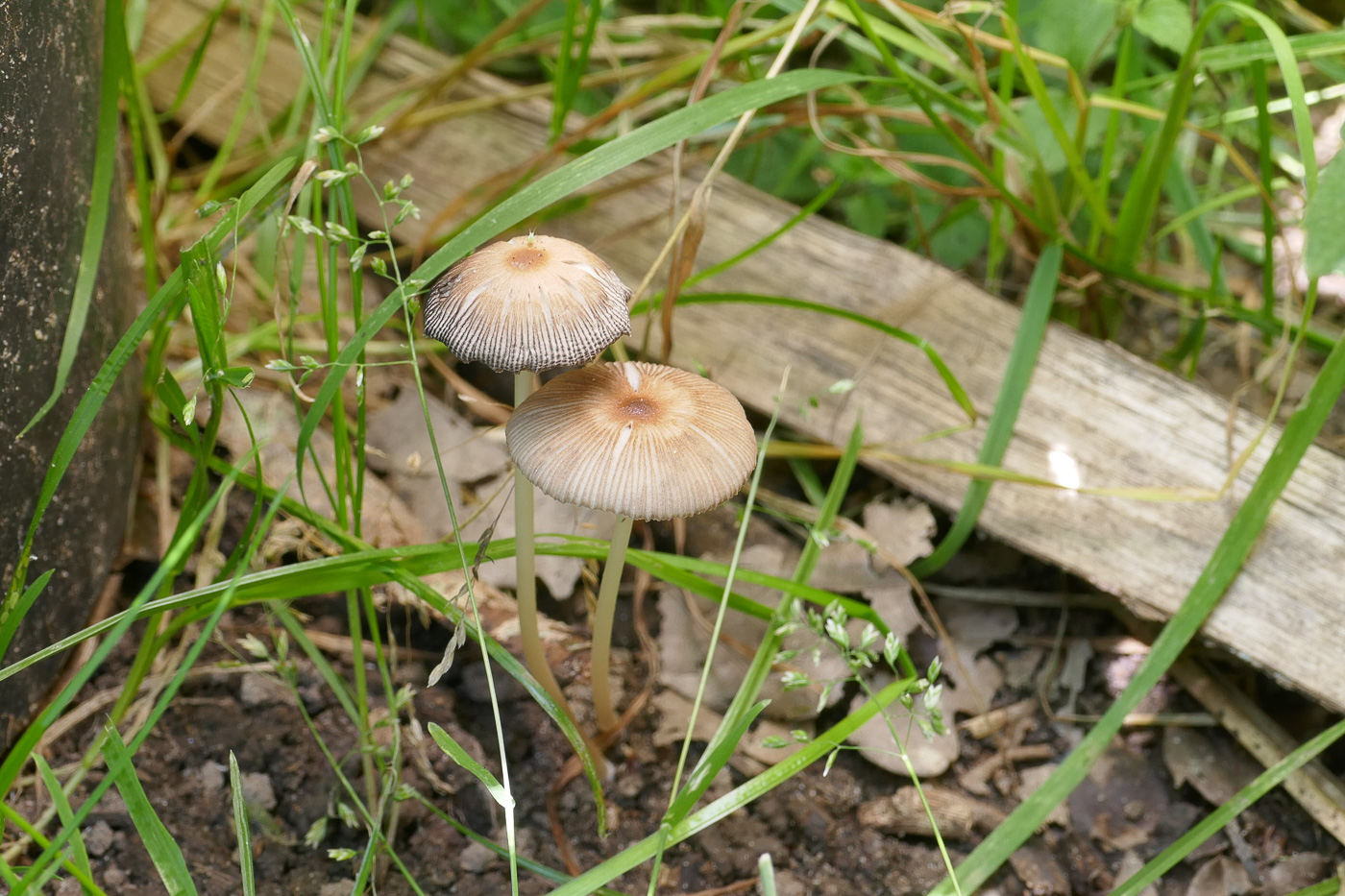
 |
Parasola auricoma (Goldenhaired Inkcap) 
May 26, 2024. On his allotment in Walters Ash Neil Fletcher found this attractive cluster of Parachutes fruiting in some woodchip. Checking in his handbook at home he concluded that this must be P. auricoma, then asked Penny for an opinion. Her answer: "Well it could be - especially as the caps were an inch across which is a bit big to the other contenders - but not necessarily!" What his handbook didn't have space to explain was that there are a handful of other lookalike Parachutes which could occur on this substrate, and it's only possible to be certain of separating them with a scope - in this case not at Neil's disposal. So this id must remain questionable but his photos show a very nice collection.
Jul 7, 2023. In soil on a grassy roadside verge at Turville Heath Penny spotted what she thought was a singleton Parasola but on closer inspection saw the smaller specimen lurking beneath. The larger cap was about 2.5 cm across, so a good size for this genus, and at home the spore shape and size pointed to this particular species so she checked the cap cuticle and found the long thick-walled hairs - a unique feature - which confirmed her ID. The species is not the commonest Parasola but may be misidentified as many of this genus are extremely similar. All need microscopic examination and cannot be safely named in the field.
Jun 9, 2022. Amongst some old road chippings in a parking spot at Stampwell Farm Jackie Ewan spotted two mature Inkcaps and recognised them as belonging to the Parasola genus (thin fleshed - almost translucent - and not deliquescing). With a scope, having ascertained the spore shape and size, she checked for and located the telltale long golden hairs found in the cap surface - a unique feature of this quite large Parasola.
Jul 17, 2021. In grassy soil at Stampwell Farm Jackie Ewan noticed these Inkcaps clearly from the Parasola genus (having very thin flesh, caps fluted like a parasol and lacking the deliquescing character of other Inkcap genera). The tendency is to assume that all such collections are P. plicatilis (Pleated Inkcap), considered very common and a species mainly of lawns. Less well known are the several very similar species which occur in other habitats and substrates and though appearing extremely similar have differently shaped spores and other microscopic characters. Lacking any detailed information on the genus, Jackie asked for help whereupon Penny suggested she searched in the cap cuticle (with a scope) for the amazingly long, thick-walled golden brown hairs found only in this particular parasol-like species. Bingo! Identification solved. Not rare, we have 15 previous records, half of which are from Derek's Whitchurch garden! The species occurs in soil / woodchip / submerged woody remains sometimes in lawns, and ends to be a little bigger than other Parasola species.
|
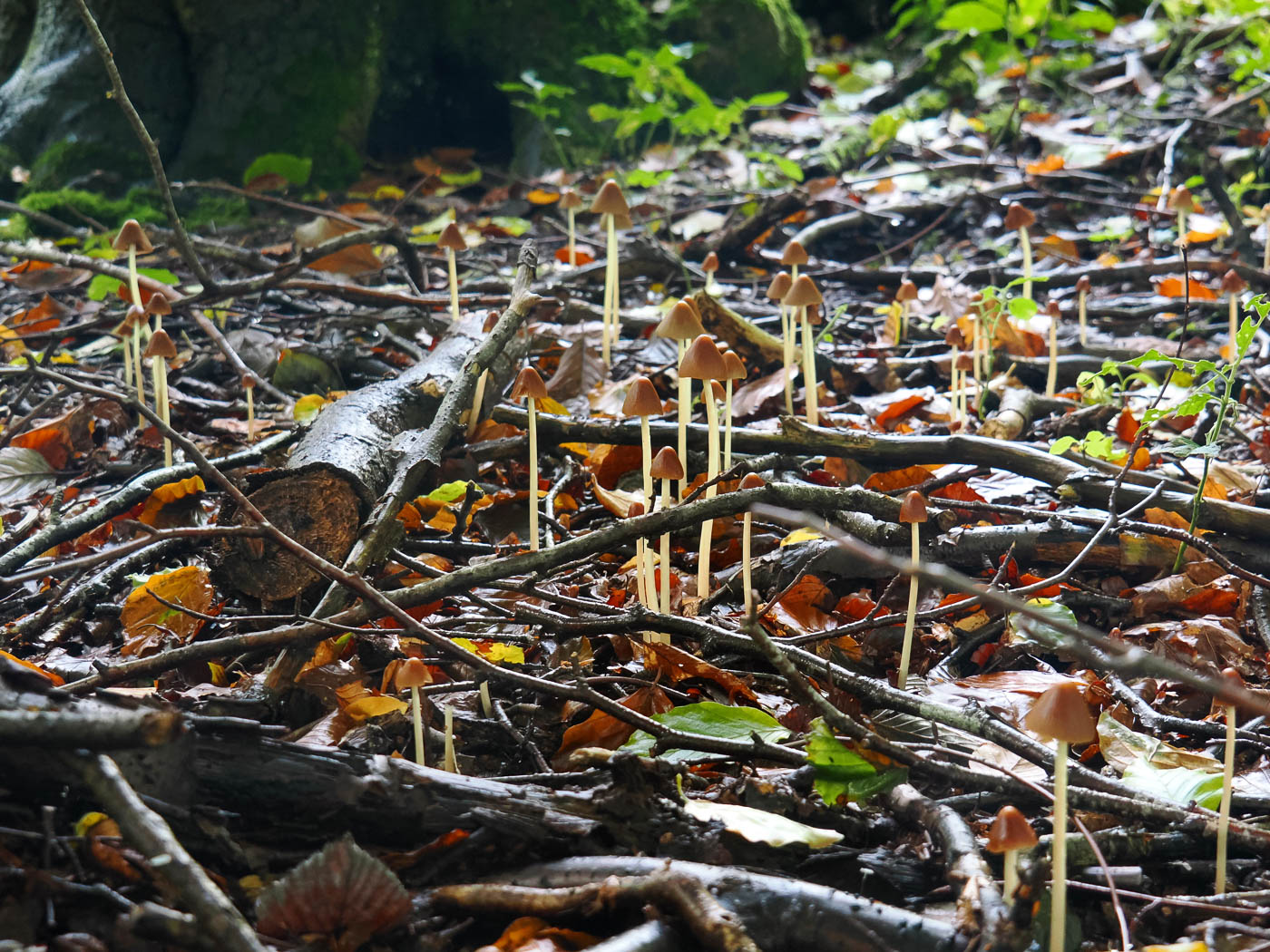
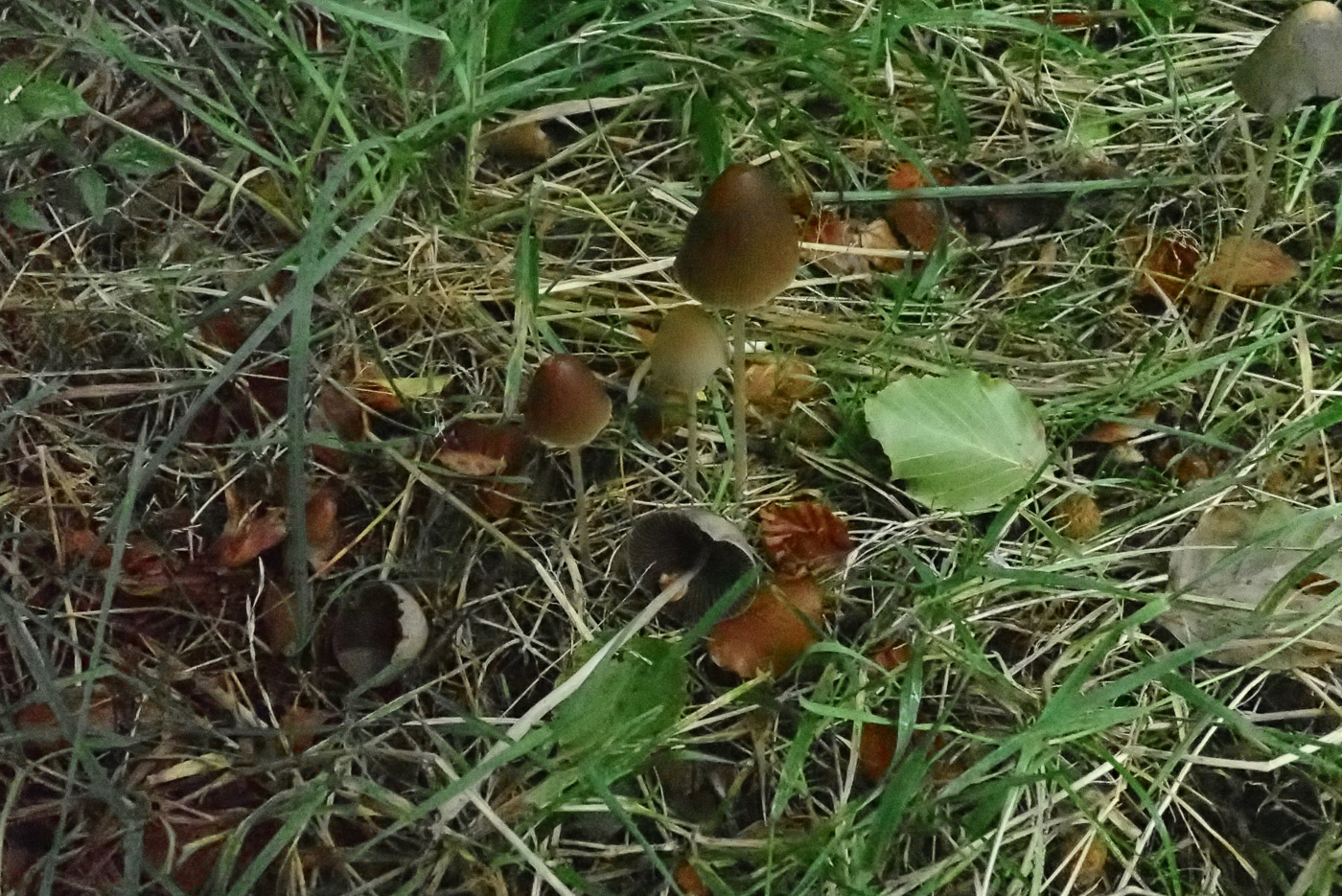
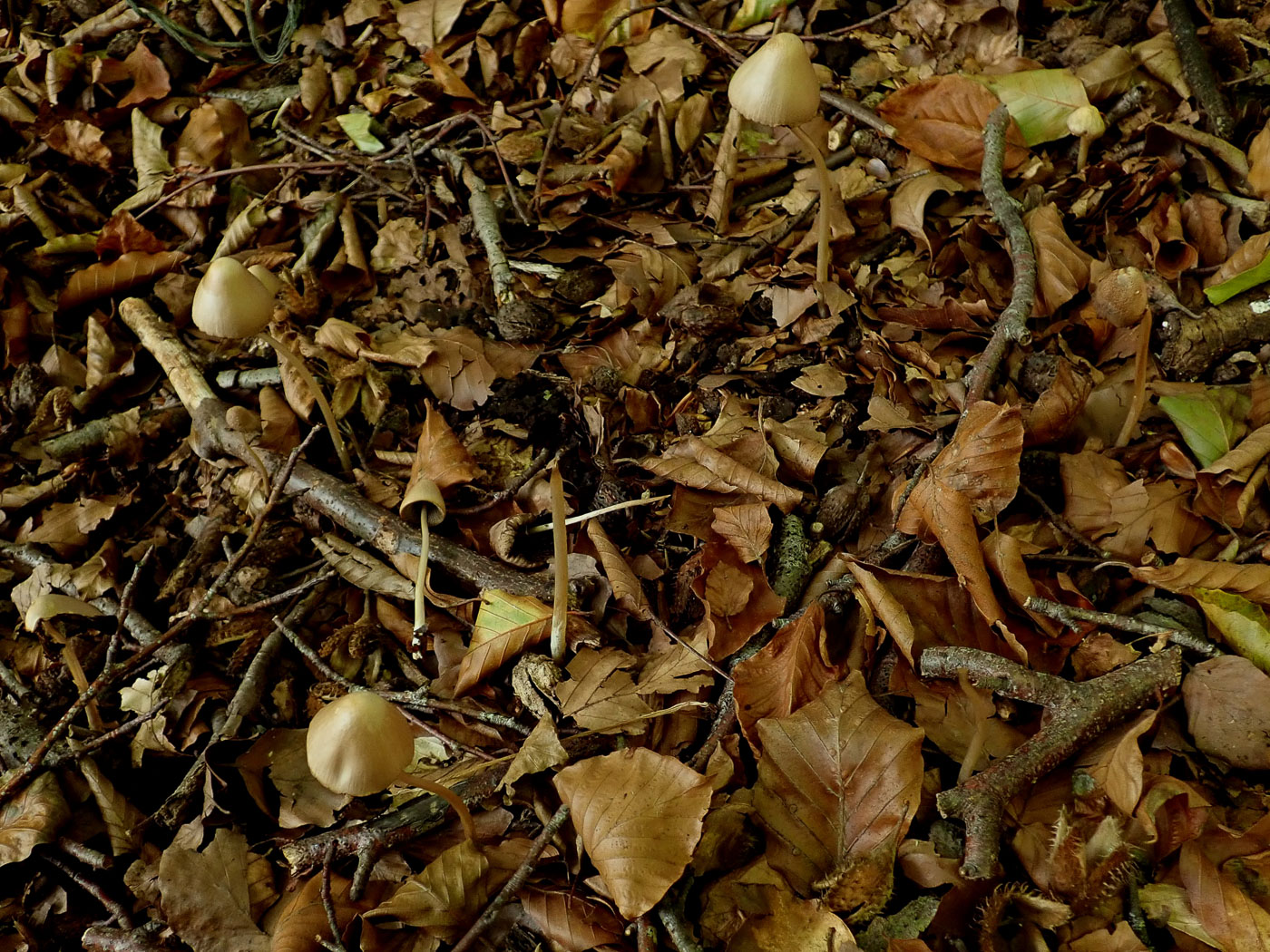
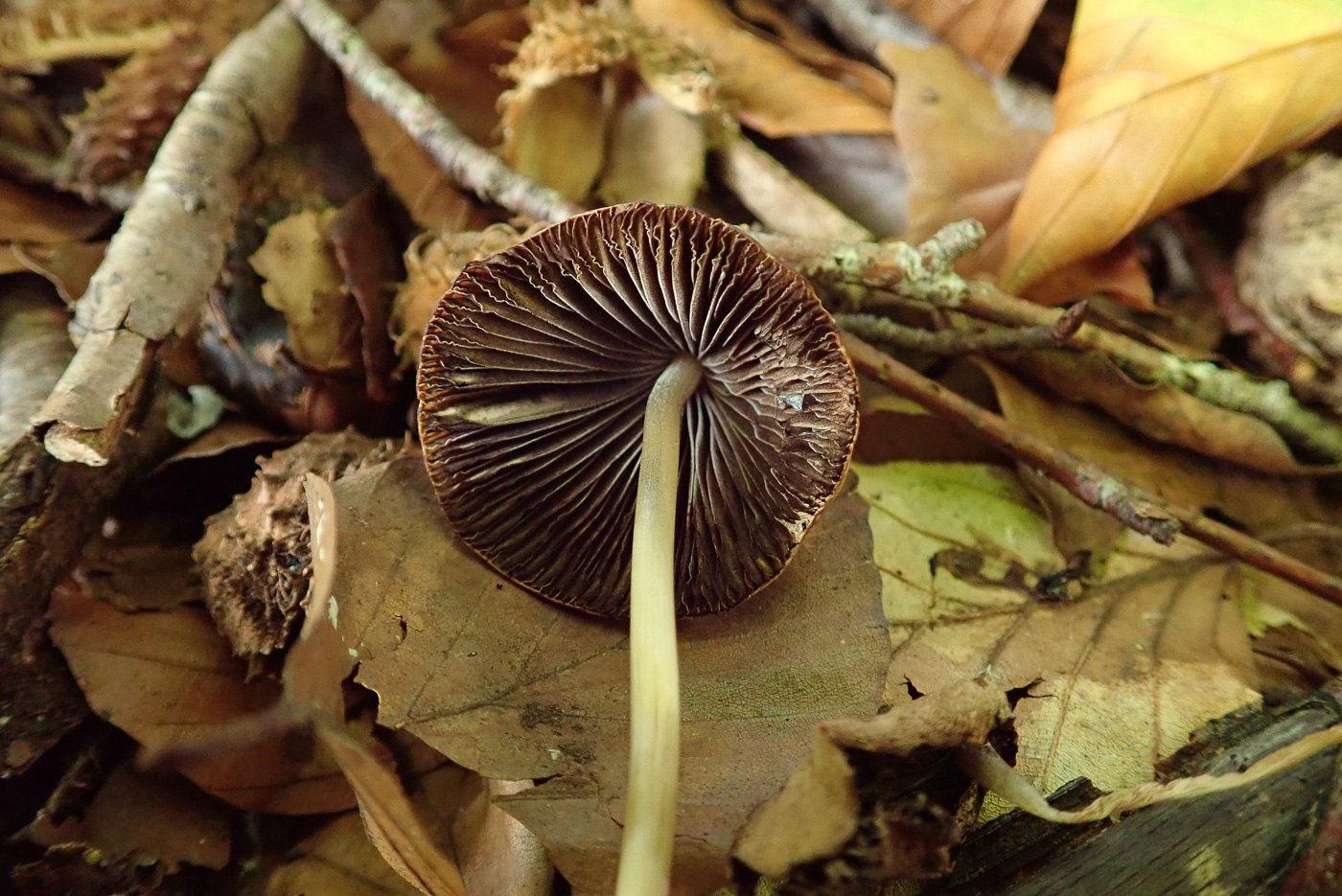
|
Parasola conopilea (Conical Brittlestem)
Sep 27, 2024. At Bittam's Wood, part of the Dancersend Reserve, Mick Jones was impressed by the sheer numbers of this species coming up in the deciduous litter and obviously triggered by the recent rains. Though now in genus Parasola and as such a member of the Inkcaps, it was (until DNA sequencing proved otherwise) in genus Psathyrella - known as the Brittlestems, thus the reason for its common name which thankfully remains unchanged! Its white stem - which is indeed brittle - and brown conical cap give it a mycenoid appearance though on the tall side for that genus, but one glance at the gills which quickly develop a dark grey-brown colour tells one this belongs to a dark-spored genus and not one related to Mycena.
Oct 8, 2021. At Whiteleaf Cross Penny found good numbers of this species previously in the genus Psathyrella (hence its common name). The species is recognisable in the field from its typical conical cap which starts out bright brown and shiny but as the stem lengthens the cap becomes greyer and often fades to almost white in age. The cap apex is nearly always the palest point. The gills are misleadingly white when young but soon darken to black as it matures. Fruitbodies can get to 12 cms high or more when mature.
Oct 7, 2020. Well camouflaged in the Beech litter at Benhams, a private garden near Fawley, was this species (found by Penny Cullington) which has recently moved from the genus Psathyrella, hence its common name of Brittlestem. Sometimes found in sheets on the woodland floor, the tall stems and conical caps are distinctive. One should always turn a cap over to check that it has suitable dark gills and is not, for instance a species of Mycena for which it could possibly be mistaken.
|
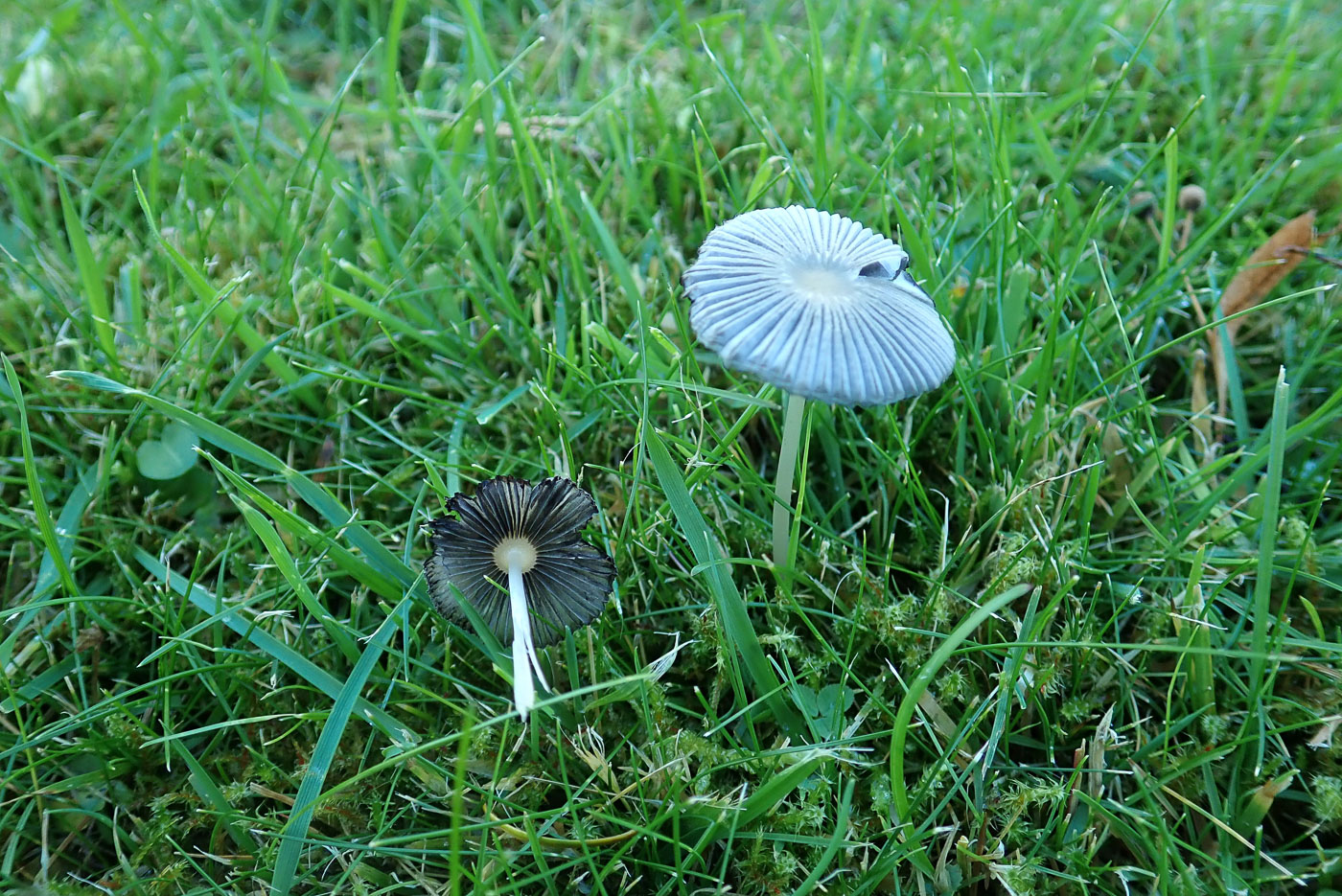
|
Parasola kuehneri (a Nov 2, 2020. Parasol with no common name) 
Nov 2, 2020. This delicate member of the Parasol group of Inkcaps was in mossy grass under shrubs in Bradenham Churchyard. This small group of species is easy to recognise in the field from their distinctive thin fleshed caps when mature and the fact that they don't deliquesce (as other Inkcaps do: in genera Coprinus, Coprinellus, Coprinopsis). This also gives one time to get home and examine them before they disintegrate! Then it's down mainly to spores size to identify to species.
|

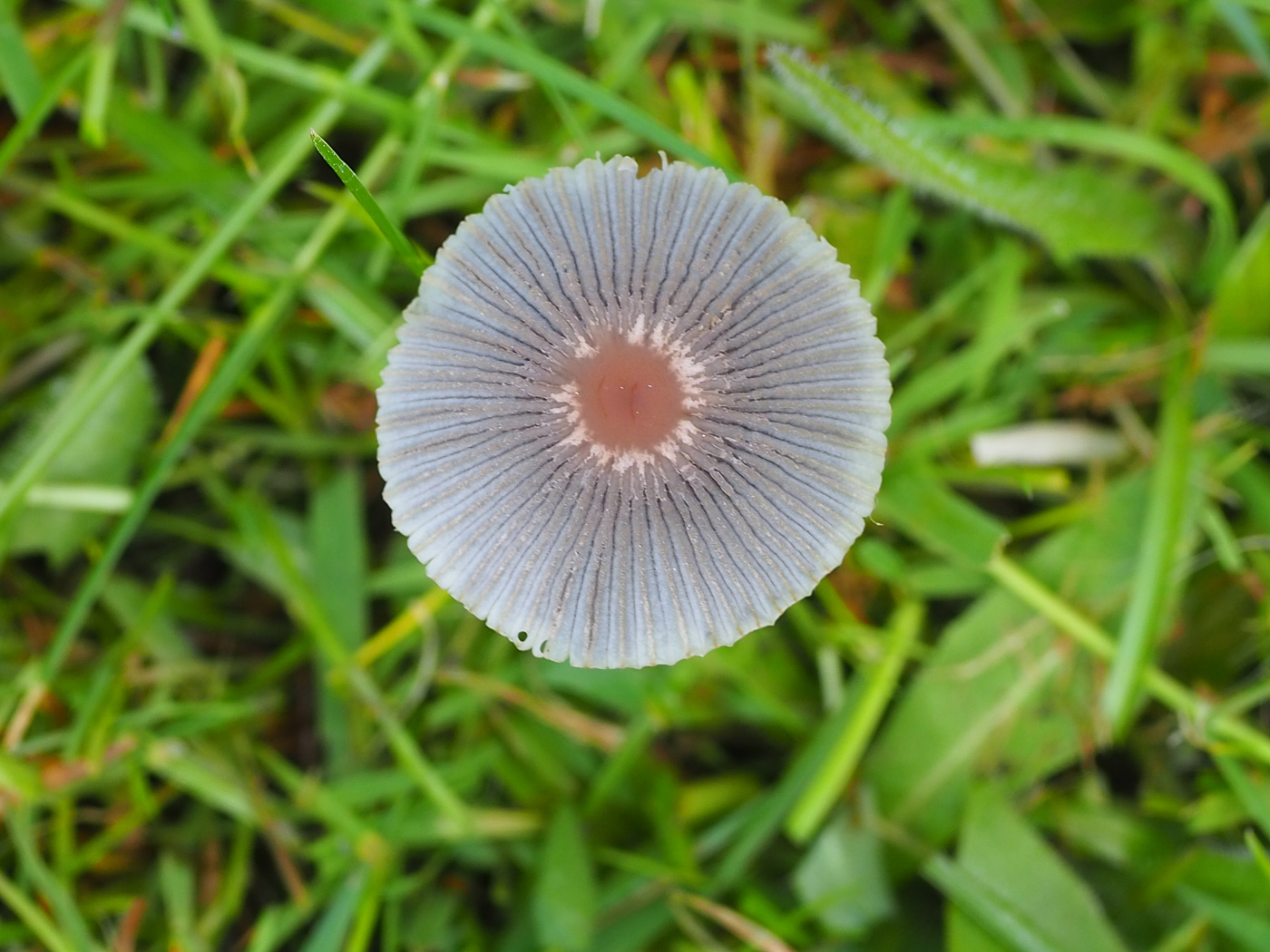 |
Parasola leiocephala (Bald Inkcap) 
May 7, 2024. In a grass verge in High Wycombe John Catterson spotted this perfectly formed little Inkcap, one of several lookalike Parasola species which can only safely be separated by their spore shape and size. This he checked and sent the spore details + photos to Penny who confirmed his ID. Gone are the days when any Parasola growing in grass is automatically named P. plicatilis - thought to be very common but in fact probably less common than today's species which also occurs along woodland paths. This is a new entry for Finds.
|
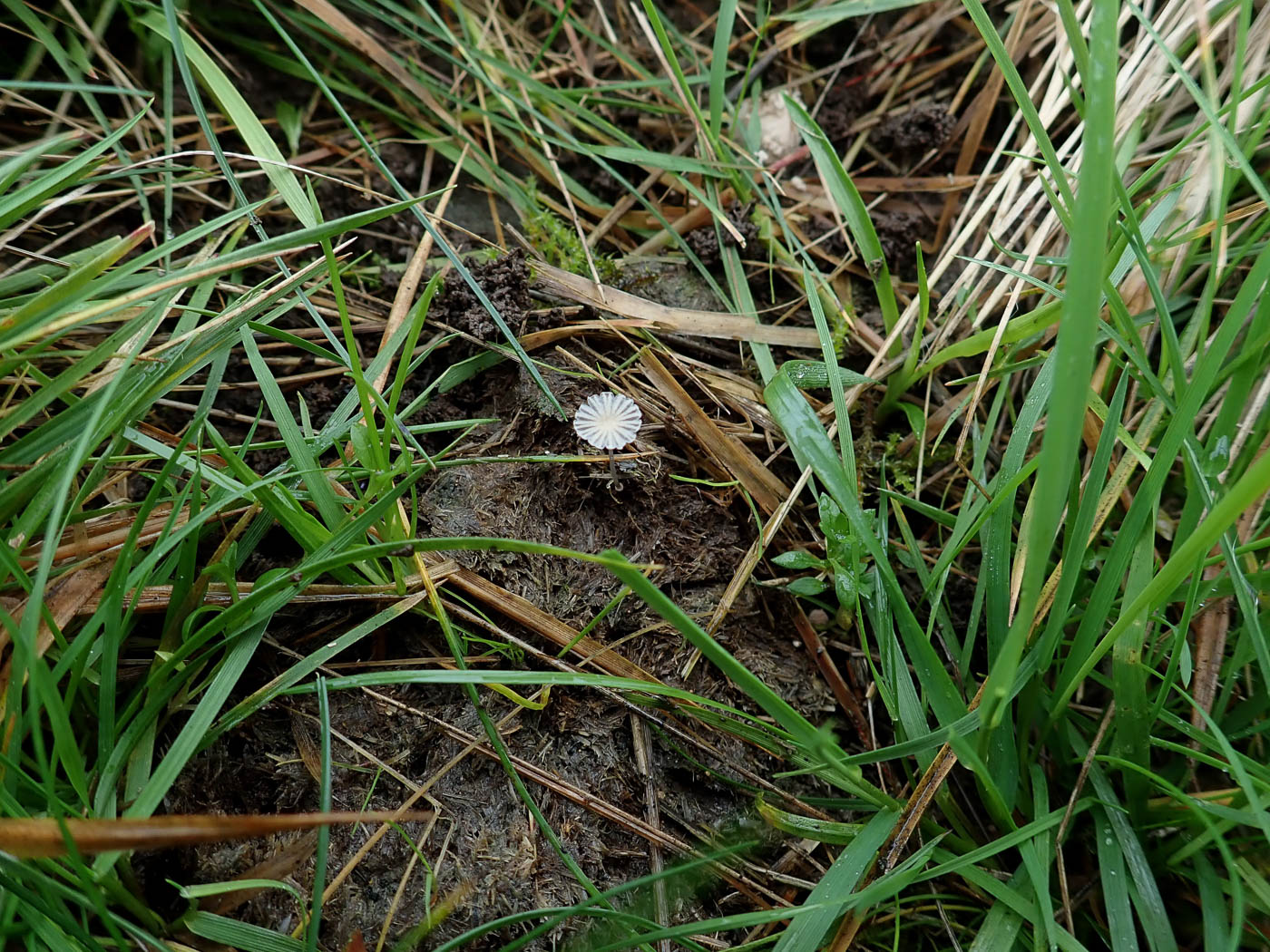
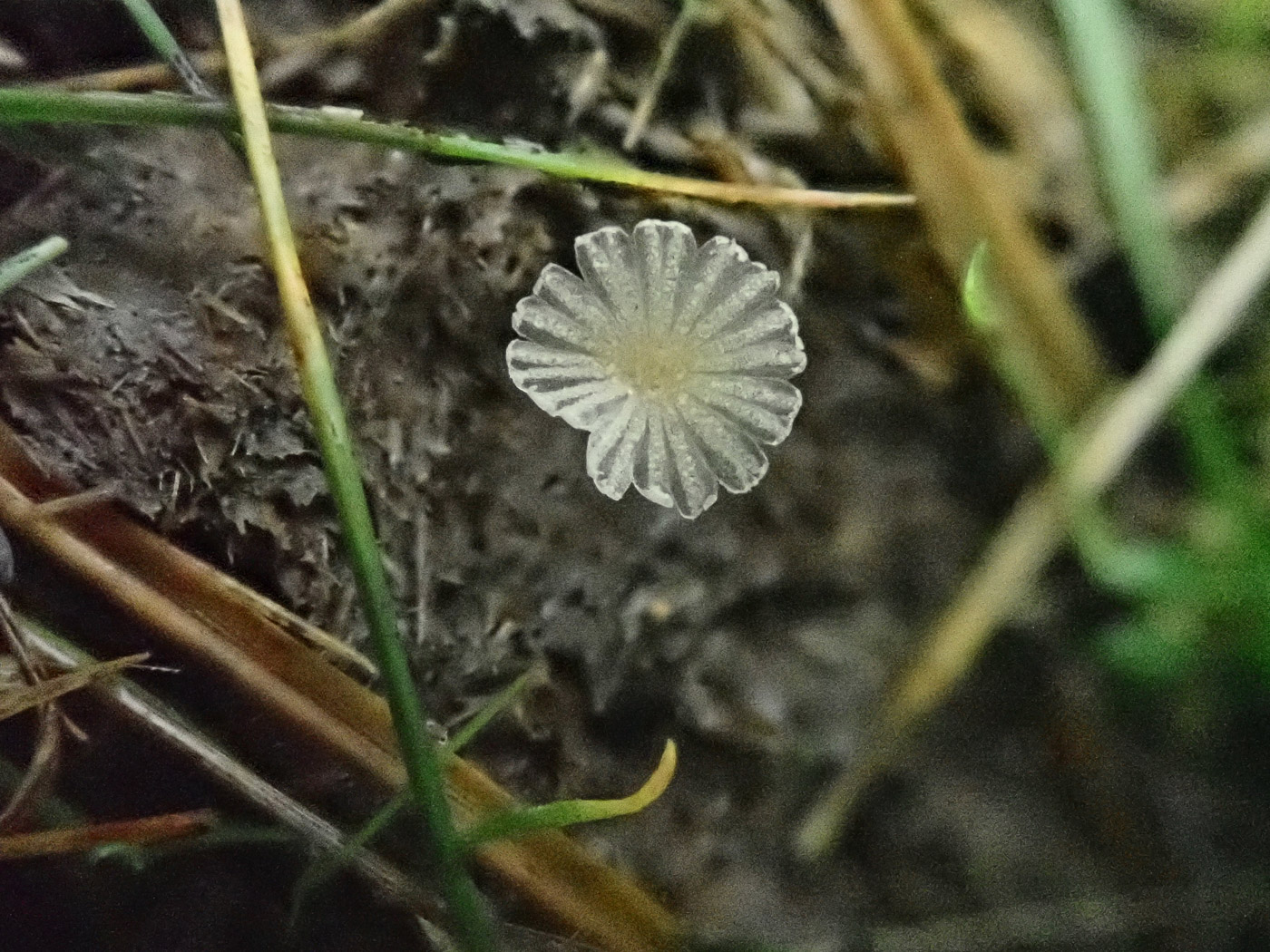



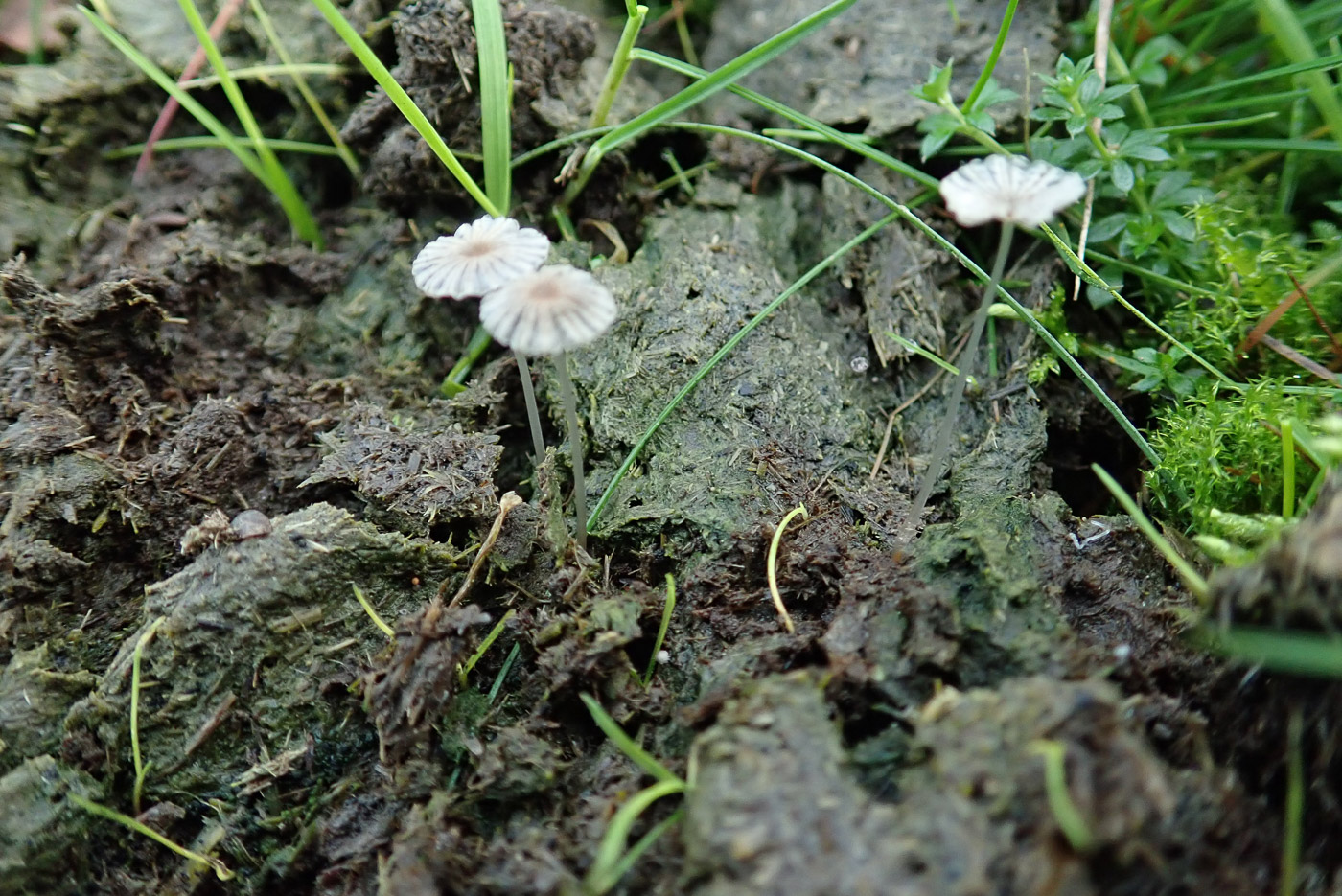
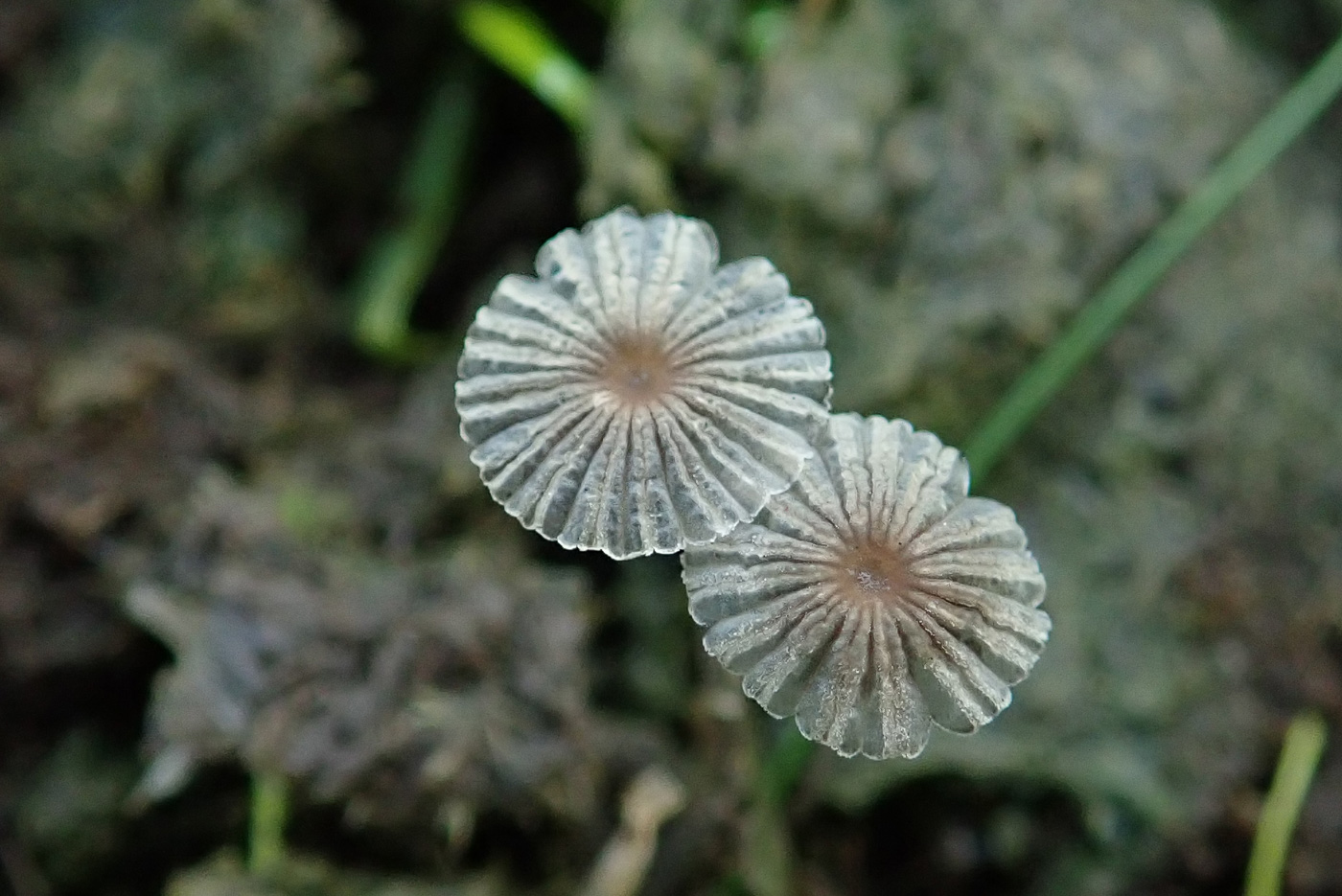
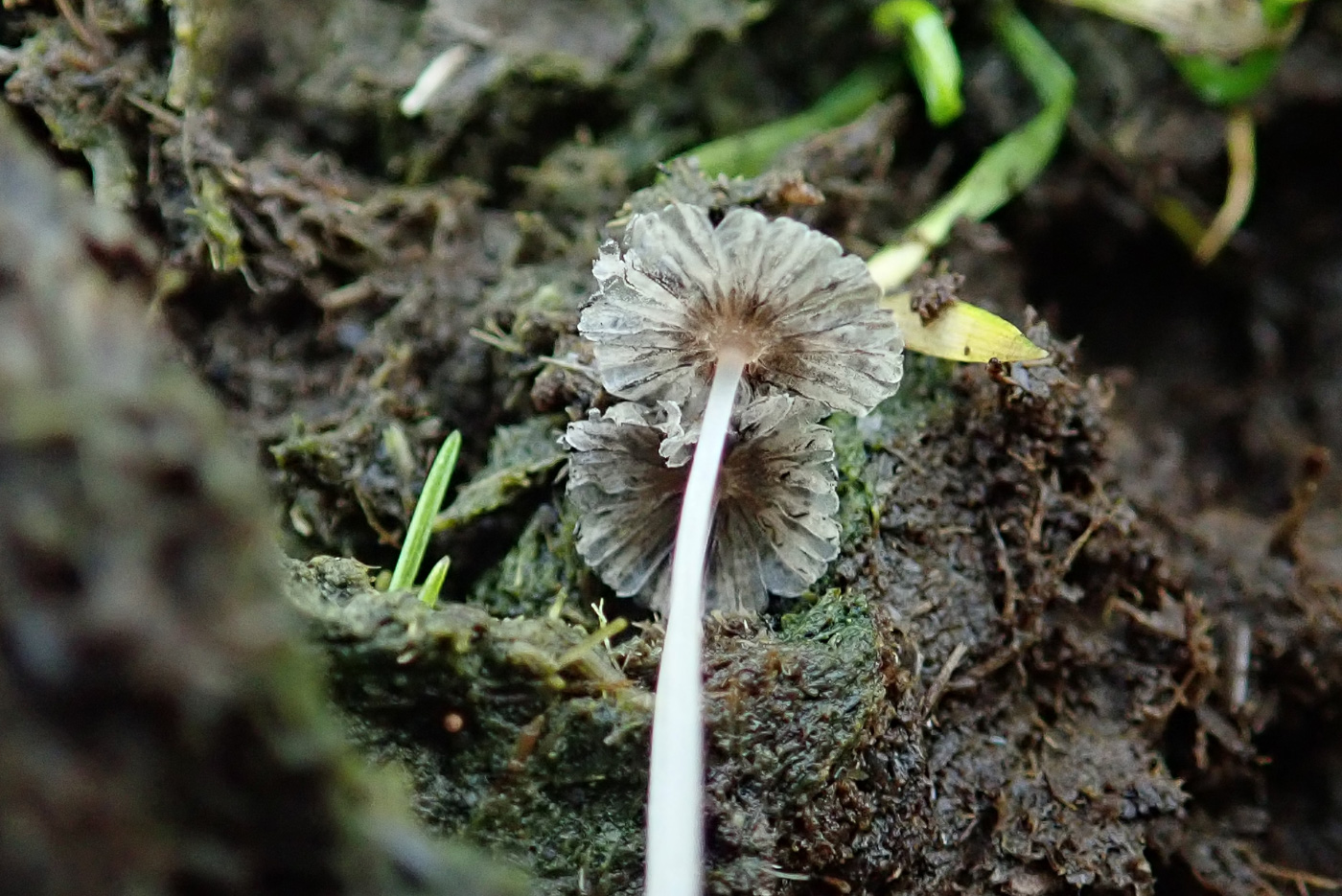
|
Parasola misera (Least Inkcap) 
Nov 14, 2024. In a patch of cow dung at Coombe Hill Penny spotted this tiny star-shaped white cap and guessed it was likely to be this species as it was on dung though despite its name there are even smaller Inkcaps! Members of genus Parasola are often easier to tackle at home purely because they don't deliquesce like the other Inkcap genera which tend to provide one with no more than a black mess in ones pot! Penny was therefore able to check the spore size and shape to confirm the determination. The cap was no more than 4 mm across.
Mar 25, 2023. On pony dung at Stoke Common Penny found this tiny Parasol - the smallest in this particular genus of Inkcaps. Less than 5mm across at most and often much smaller than that, it occurs quite commonly on dung of various sorts but is easily overlooked for obvious reasons. There are several other Inkcaps - different genera - equally small on this substrate so a scope is necessary to confirm identification to species level.
Nov 24, 2020. At Coombe Hill in a grassy area having been grazed by cattle Penny C. found these three tiny Inkcaps growing on cow dung. Caps were under 5 mm across but very pretty close-up with brown central discs. There are many small Inkcaps which inhabit dung of various sorts but this one was familiar and Penny suspected the spore shape would be distinctive and decisive, as luckily was the case which saved considerable time at home with the lengthy key. We have four previous county records and this is not a rare species, just easily overlooked.
|
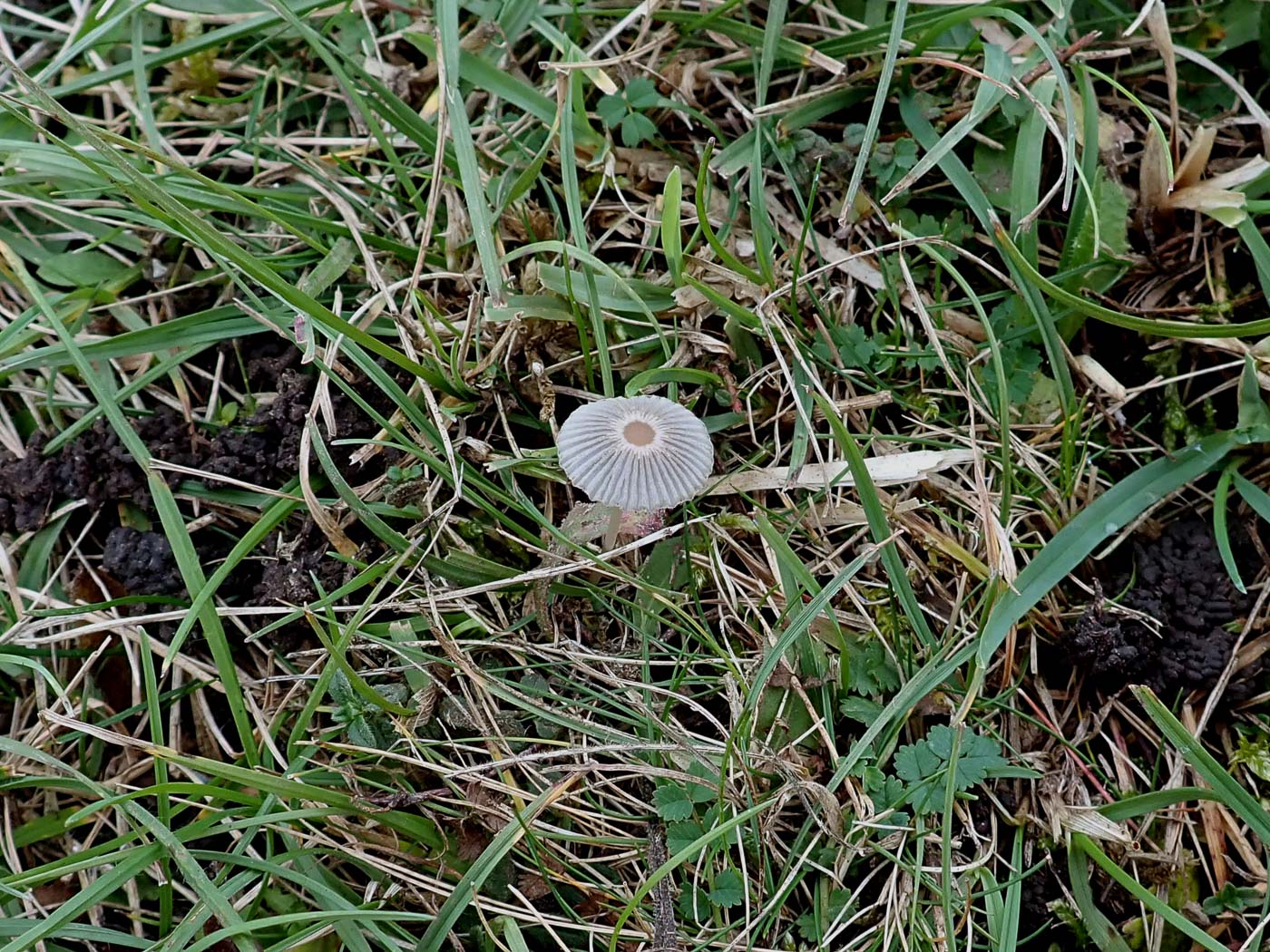
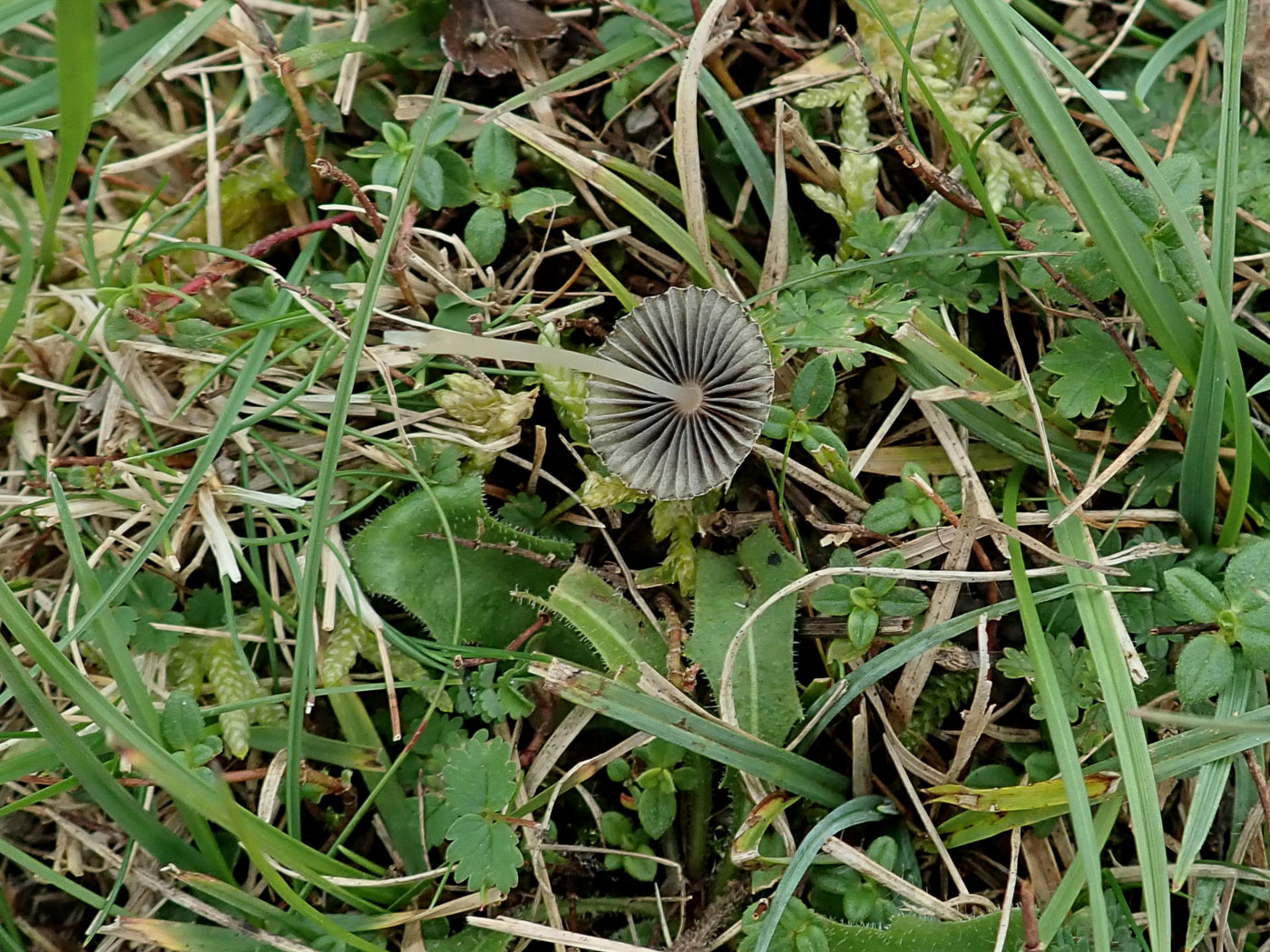
|
Parasola plicatilis (Pleated Inkcap)
Nov 15, 2024. In the grassy areas at Coombe Hill Penny found this pretty and delicate species and took it home to check the spores which are all important when separating the several likely members of genus Parasola which occur in grass. Though the name plicatilis is the most familiar it is by no means the commonest and has longer less heart-shaped spores than more common P. leiocephala. The cap was about 1 cm across.
|
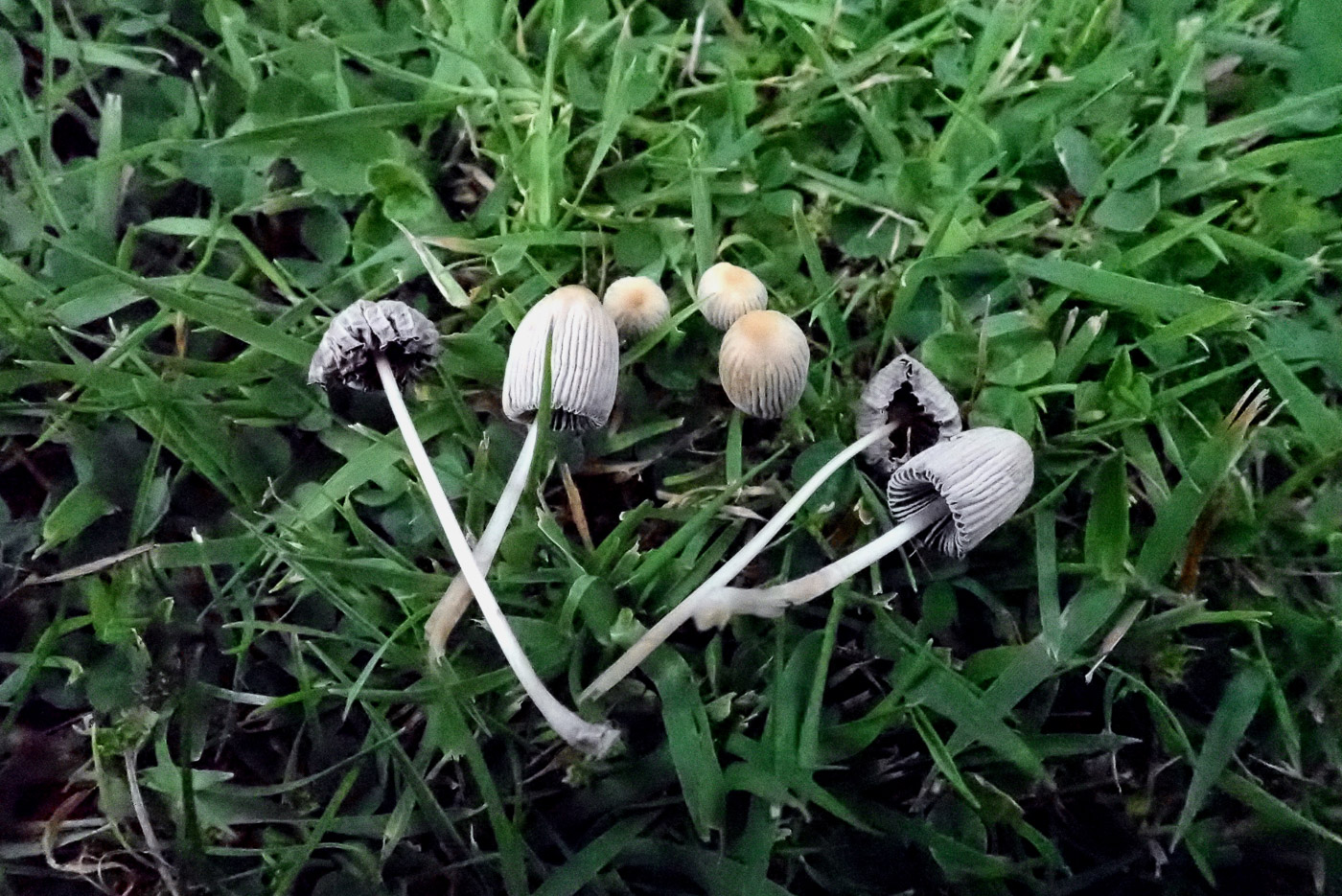
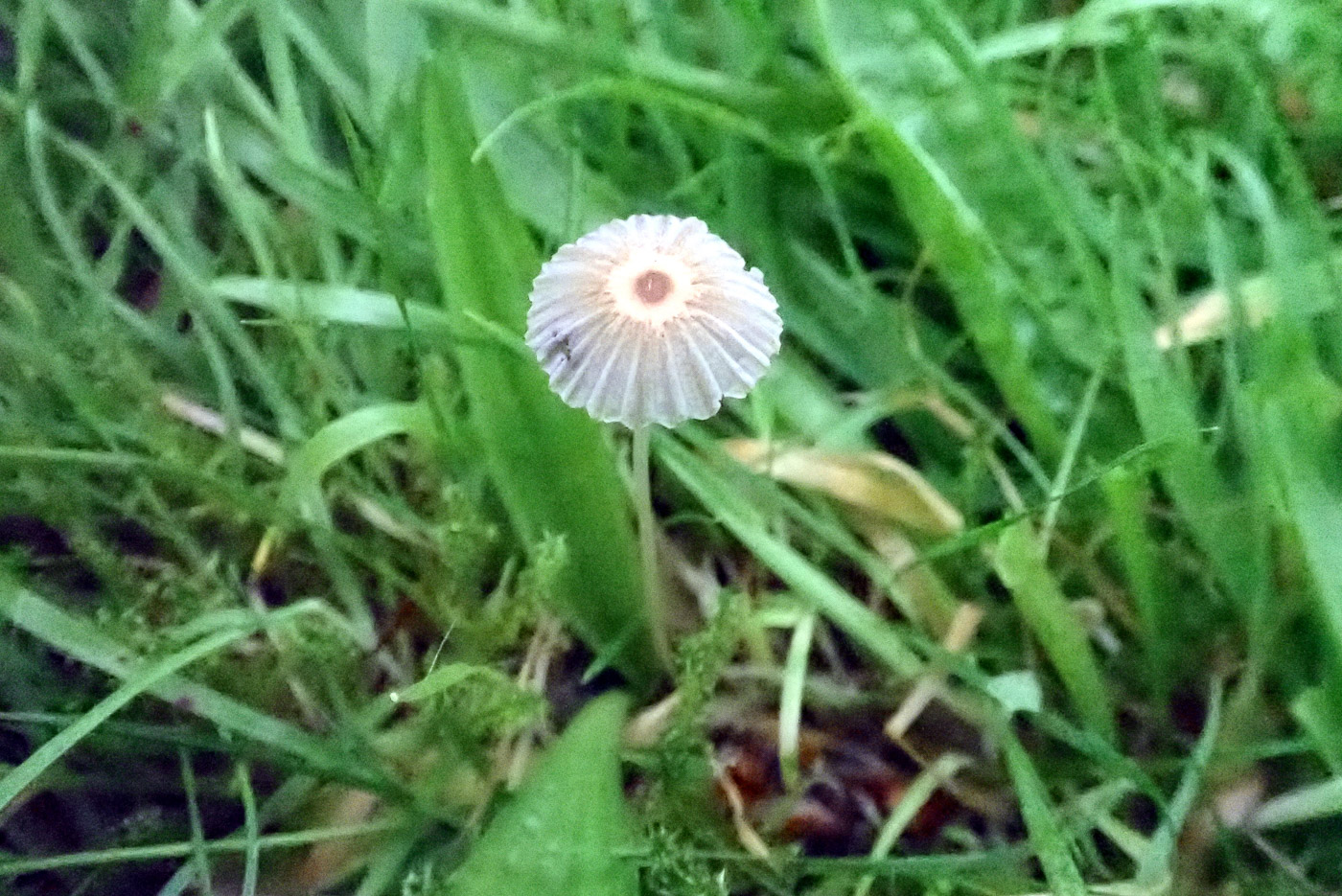
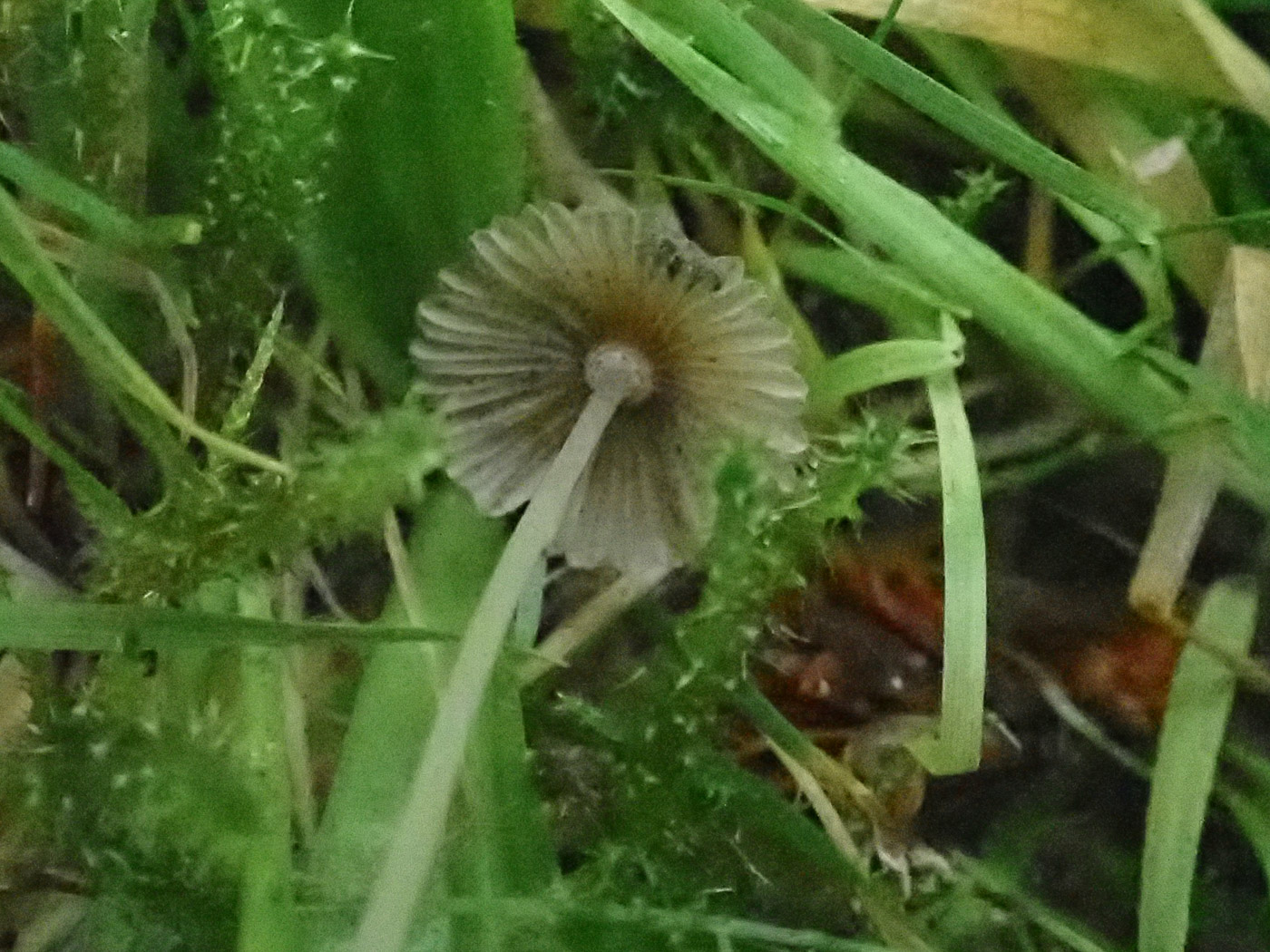 |
Parasola schroeteri (an Inkcap with no common name) (
Jun 8, 2022. In Penny's lawn (not quite in Bucks but very near the Oxon/Bucks border!) quite a few of these tiny mushrooms were making an appearance, the caps no more than 7mm tall before expansion and no wider than that when expanded, going over very quickly. There being several very similar Parasols which can be found in lawns, she checked the spores which were surprisingly large for such a small species: up to 15 microns long. This eliminated all but three similar species, P. megaspora being extremely rare, P. hercules having wider spores, leaving P. schroeteri as the likeliest and also the commonest of the three. We have only two BFG records but today's obviously doesn't count, so do look out for tiny Parasols in lawns though the spores will need to be checked to confirm it.
Aug 15, 2021. In soil in grass at Prestwood Churchyard Penny spotted this small singleton and knowing that it could not be named without measuring the spores (there being several very similar Parasol species) she collected it to work on at home. (Luckily Parasols do not deliquesce making them more amenable to later study!) The cap was fully expanded though less than 1cm across and the stem was comparatively long and very thin, reflecting the length of the surrounding grass. The spores were remarkable: very dark reddish brown and subtriangular to heartshaped, and this shape together with their size led to two possible names: P. schroeteri and P. hercules, the latter being extremely rare so much less likely. P. schroeteri is described as mainly on dung (our only county record being on cow dung from Brill Common) though also on soil but tends to be bigger, up to 3 cm across. As Penny was not sure, however, the specimen when dried was sent to Derek who was able to confirm it as P. schroeteri from the spores, making this the second record for the county.
|



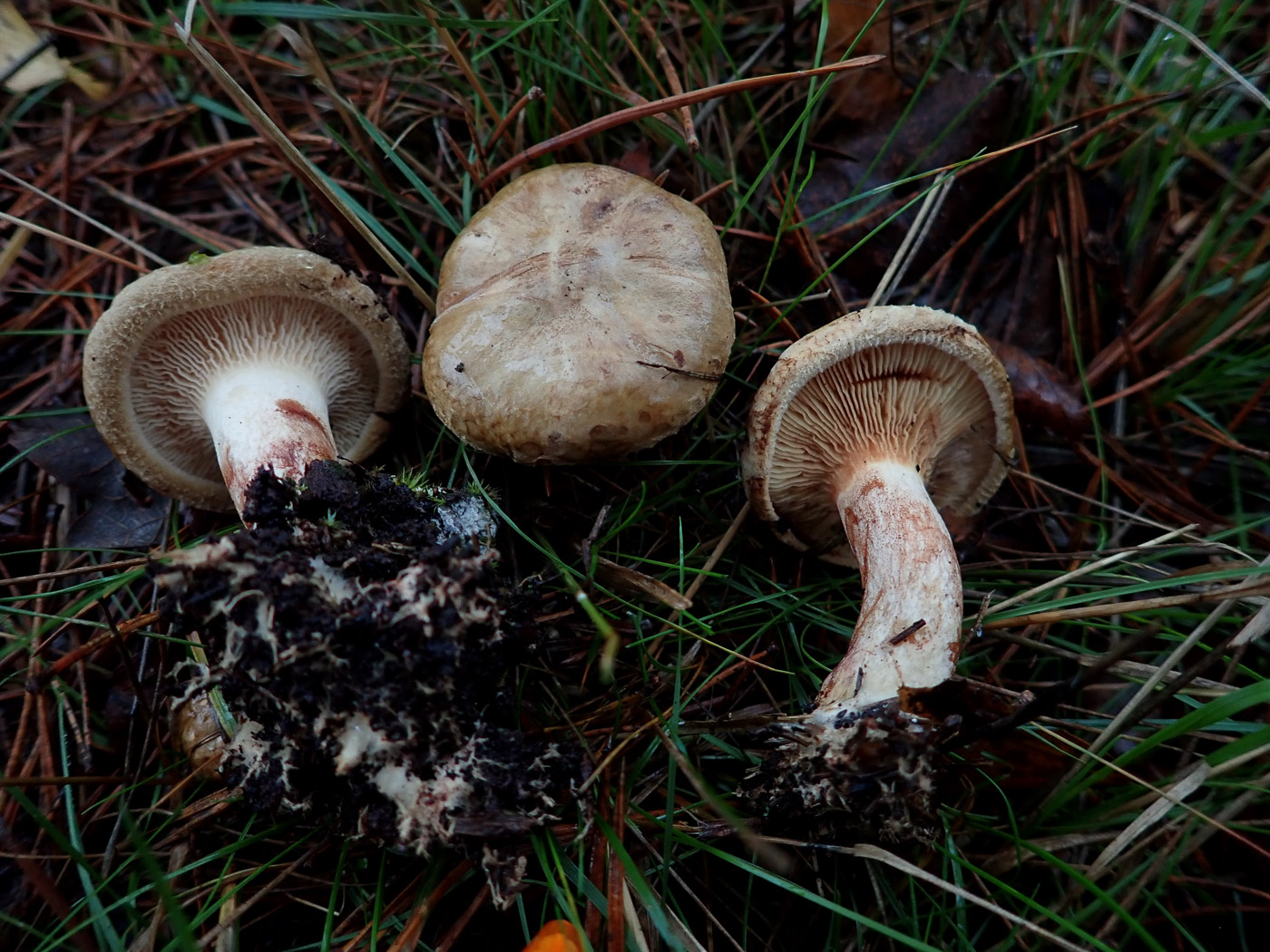
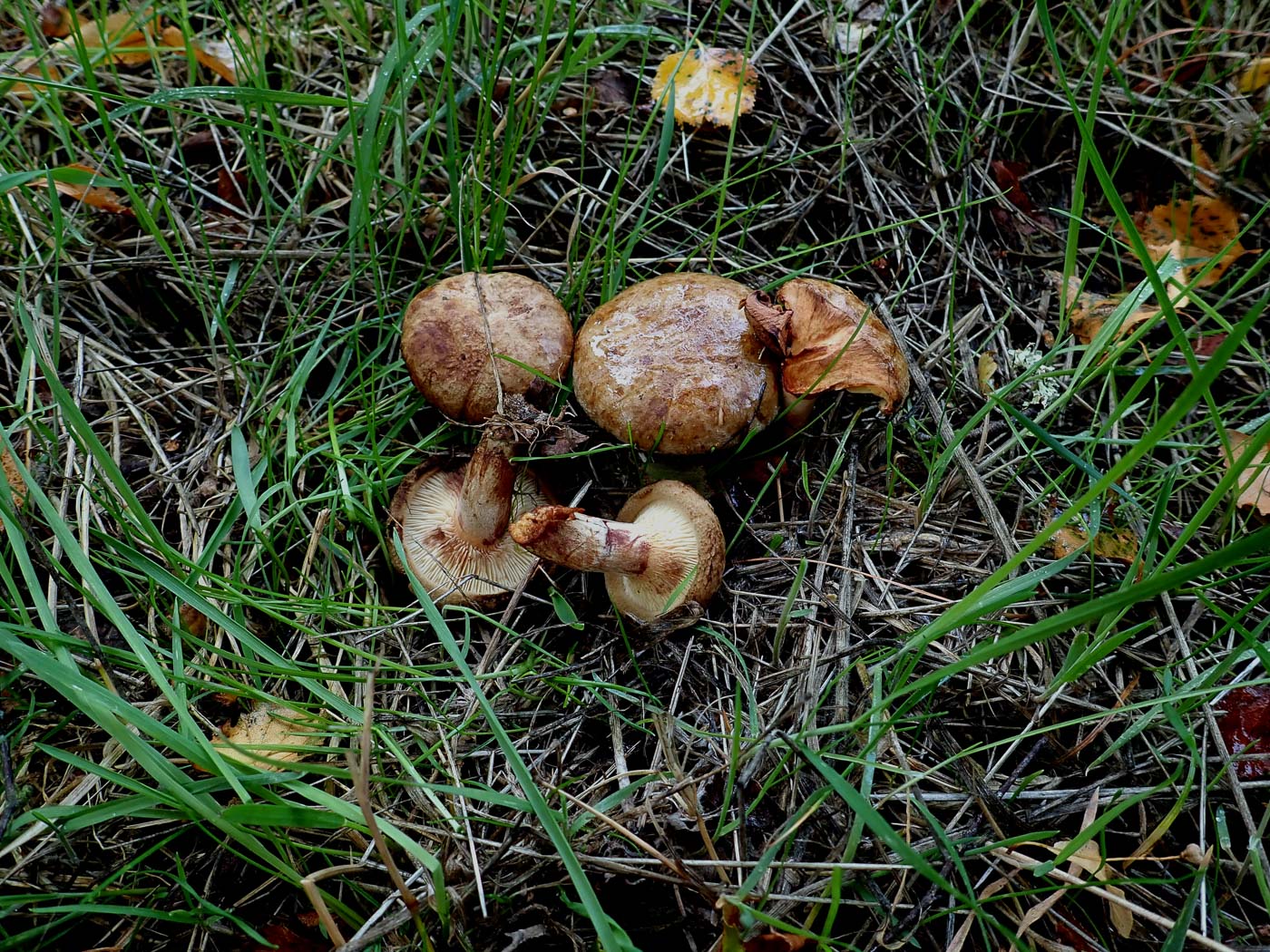

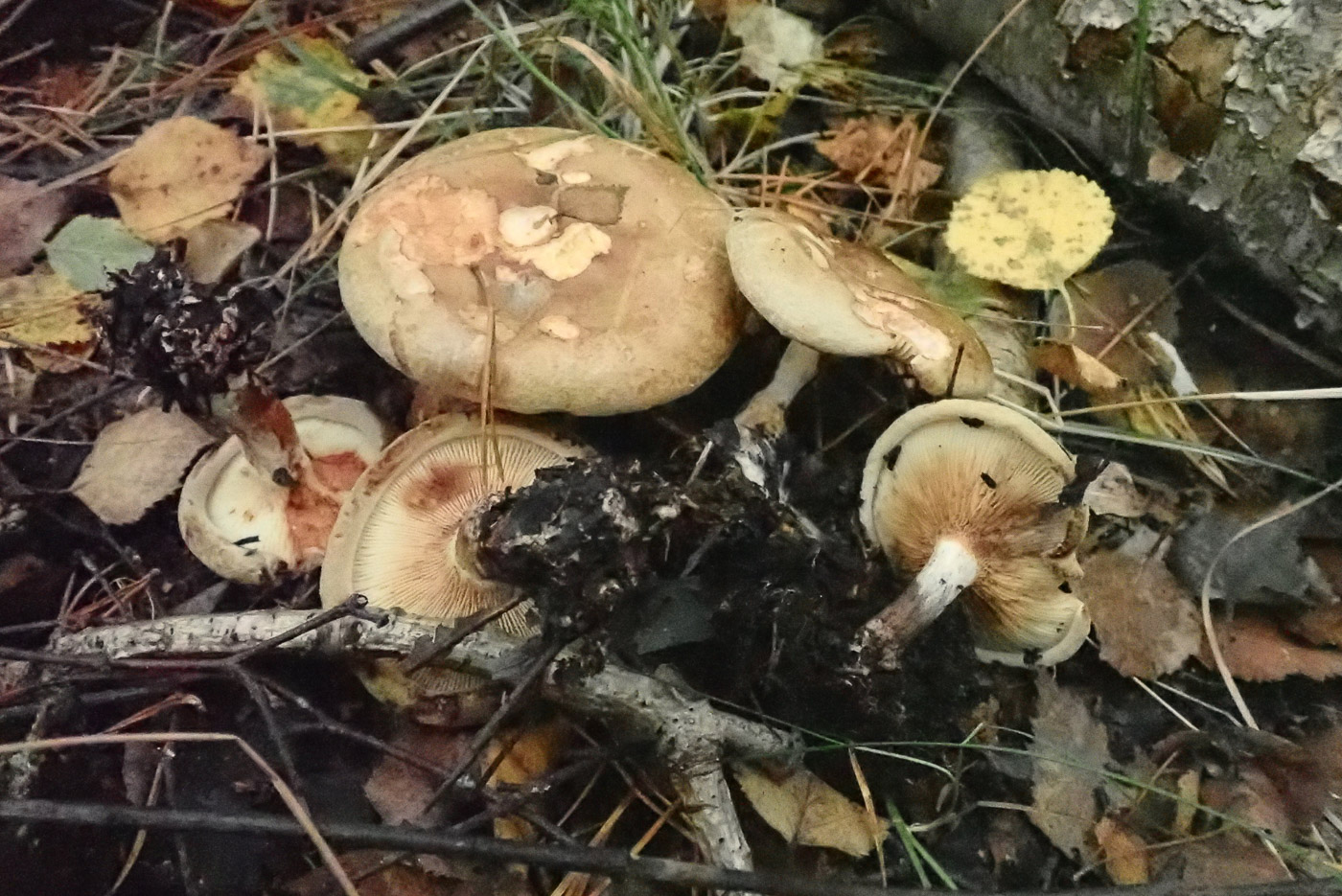
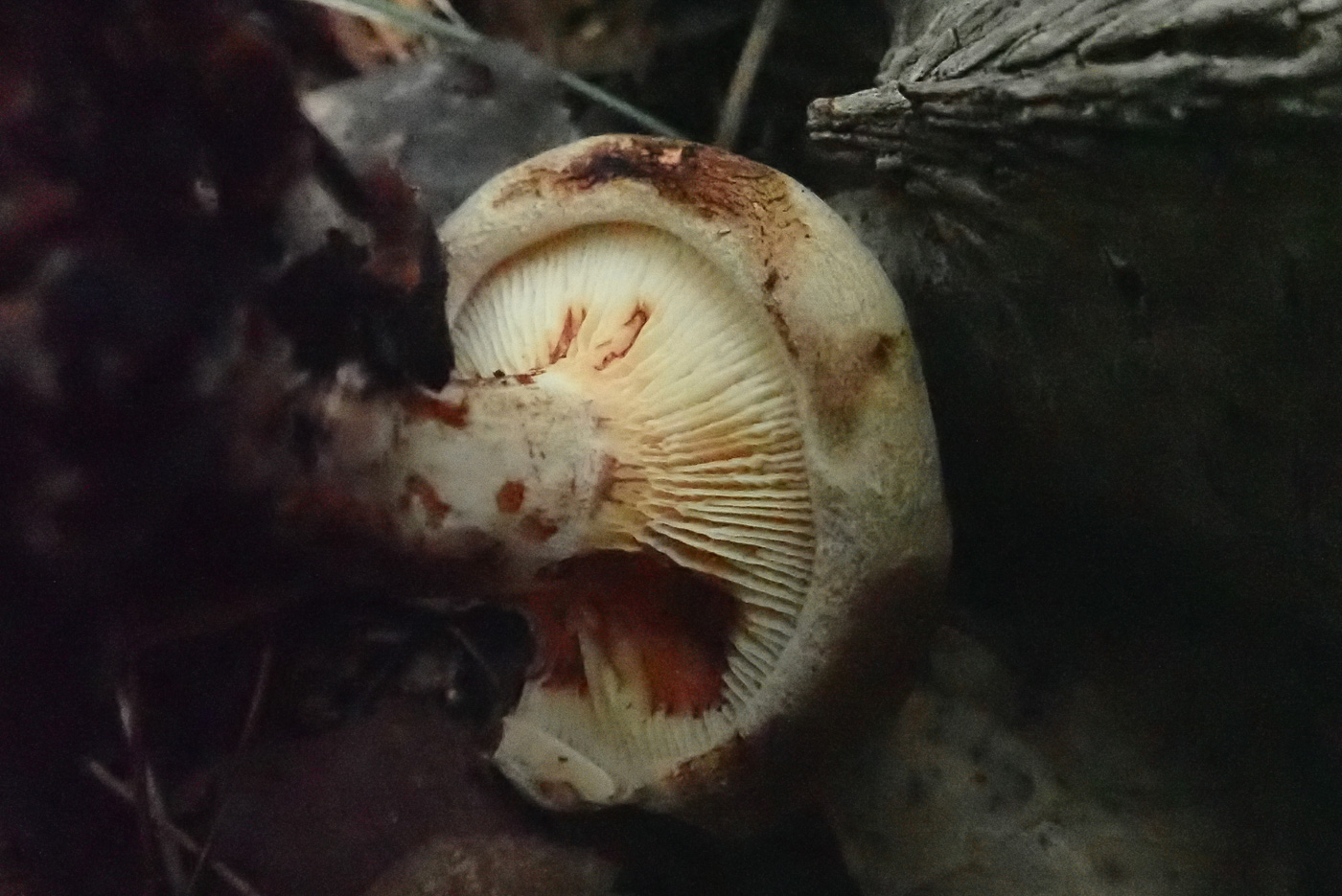
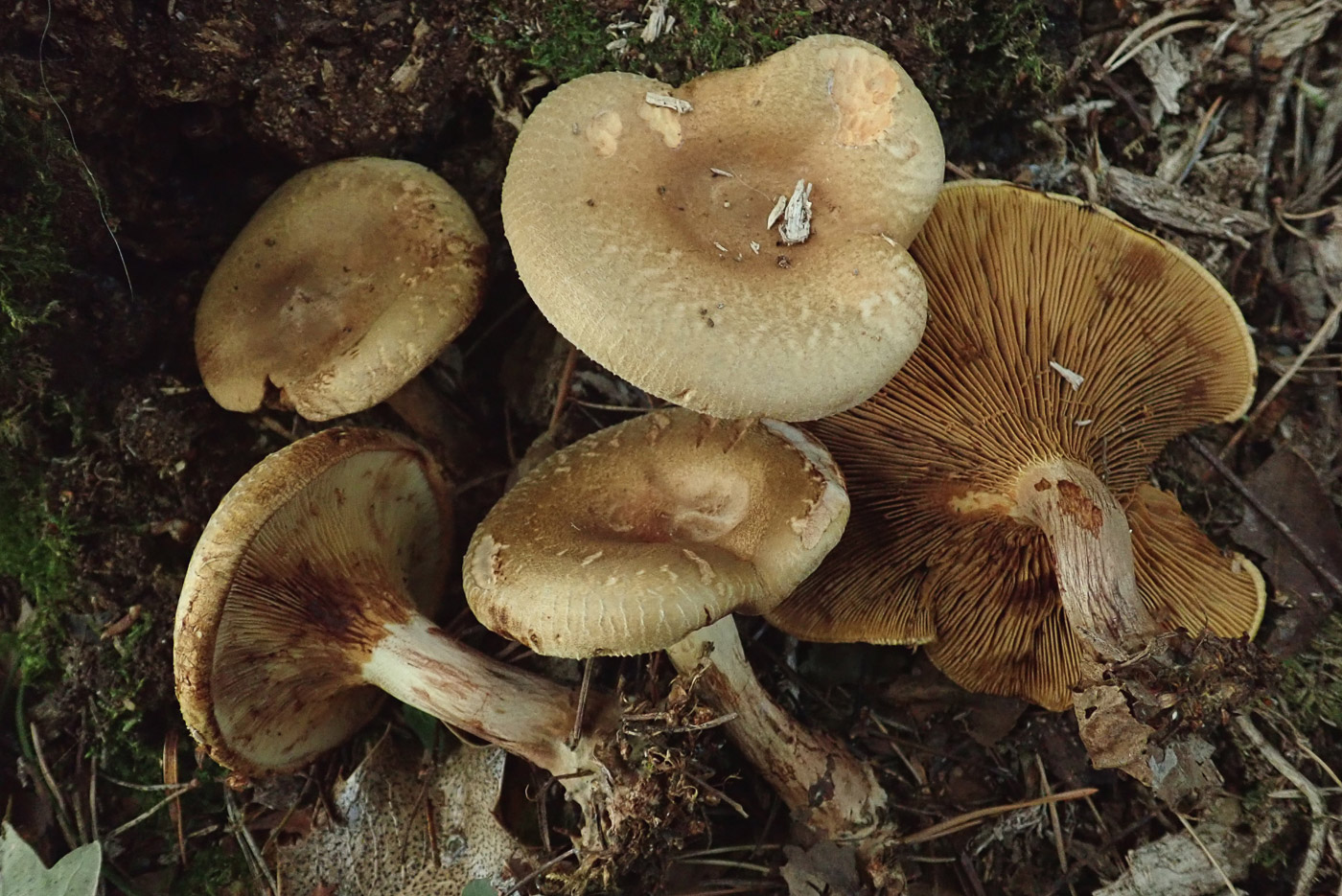
|
Paxillus involutus (Brown Rollrim)
Jul 21, 2023. In Mousells Wood Penny noticed these adjoining buttons on a wooded pathside bank and took them for immature Boletes until turning them over revealed the tightly inrolled caps and reddish flesh where damaged pointing to P. involutus, though neither gills nor pores were as yet visible. Breaking the inrolled edge off and checking with a x10 lens it was just possible to make out the undeveloped gills confirming this was not a Bolete (photo 3). Paxillus is (perhaps surprisingly) closely related to the Boletes despite over the millennia developing gills as opposed to pores underneath, hence the similarity when viewed purely from above.
Nov 29, 2022. Under Pine and Birch at Stoke Common Penny was surprised to find fresh fruitbodies of this species despite the very soggy conditions. The species is an easy one to recognise when young and typically tightly inrolled as here but often confuses when older and considerably larger. It often occurs under Birch - probably its commonest host tree.
Sep 27, 2022. Under Birch at Turville Heath Penny found a few of these just emerging, and at this early stage of development showing their typical distinctive inrolled margin. The larger caps here were only 4 cm across, but when mature this common species can be impressively large with caps up to 15 cm across when no sign of the inrolled edge remains, making identification much less obvious. Photo 3 shows a more mature specimen found at Stoke Common by Penny a couple of days later.
Oct 27, 2021. At Stoke Common under the Birches Penny found several specimens of this normally very common mushroom which ash been surprisingly scarce so far this season. It has a brown cap like many other woodland mushrooms but can be distinguished from others if turned over. When young the cap margin is tightly inrolled (hence its common name) but this feature disappears as it expands - sometimes to as much as 15 cms across. The gills are decurrent and bruise quickly reddish dark brown when damaged, and if you run your finger up the gills from where they start they separate very easily from the cap flesh beneath.
Sep 15, 2020. One of our commonest woodland mushrooms, this is just beginning to appear now and was found at Burnham Beeches under Birch by Penny Cullington. It is sometimes not easy to distinguish from other brown capped mushrooms because the diagnostic tightly inrolled cap margin of the species is gradually lost as it expands - eventually completely lost as seen in the upturned specimen. Look for young fruitbodies, therefore, and also note the decurrent gills and brown bruising which occurs when damaged. This species can sometimes get very large with caps up to 15 cm across or more.
|

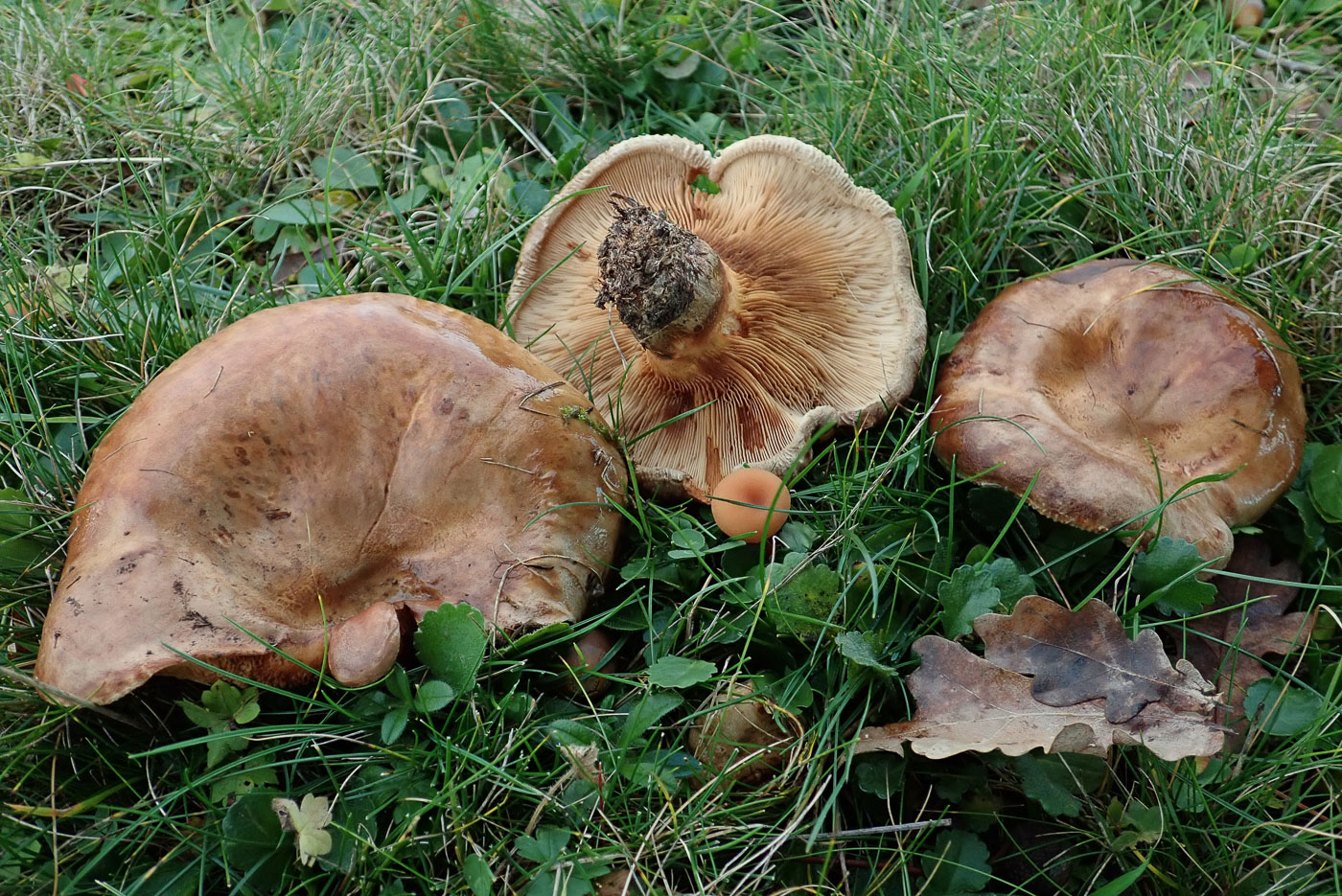
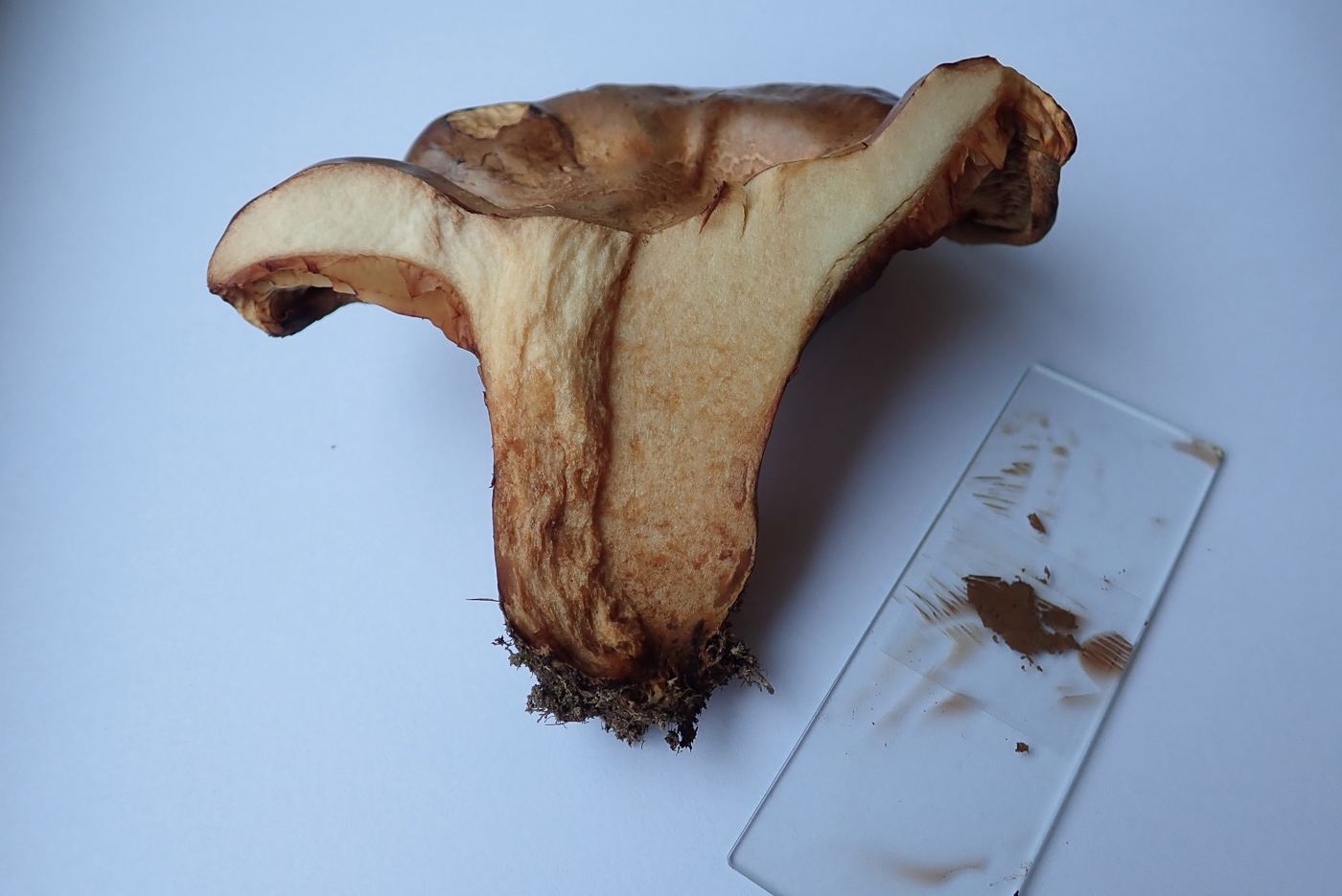
|
Paxillus obscurisporus (an unusual Rollrim with no common name) 
Aug 8, 2023. Under Willow in a grassy area in Jordans Jesper Launder found these extra large Rollrims which made him suspect they might be something other than the common Brown Rollrim. Sure enough the spore print was noticeably darker than that of the commoner species, therefore confirming his ID - the species name referring to this character. We have just one previous record (see in Finds 2020 October 31st) though it may well go unrecognised and therefore misnamed. It is rare in woodland so any large Rollrims in parkland / grassland etc could be this..........
Oct 31, 2020. Under an isolated Oak in a large area of grassland at Ibstone Common Penny C. found these three large Rollrims which she suspected might not be the common P. involutus (see photo dated Sept 15). A sporeprint taken overnight, then scraped together and covered with a coverslip to give the true colour, proved too dark for P. involutus and following Kibby vol 1 this matched well with the probably common but rarely recorded P. obscurisporus. Note the tiny orange cap of the Deceiver beside the upturned specimen which gives a sense of scale! Caps were 12 cms across and the stem was very short and 3 cms across and when cut the flesh stained rusty brown. (See photo 2 for sporeprint, stem shape and flesh.) So another new species for the county.
|
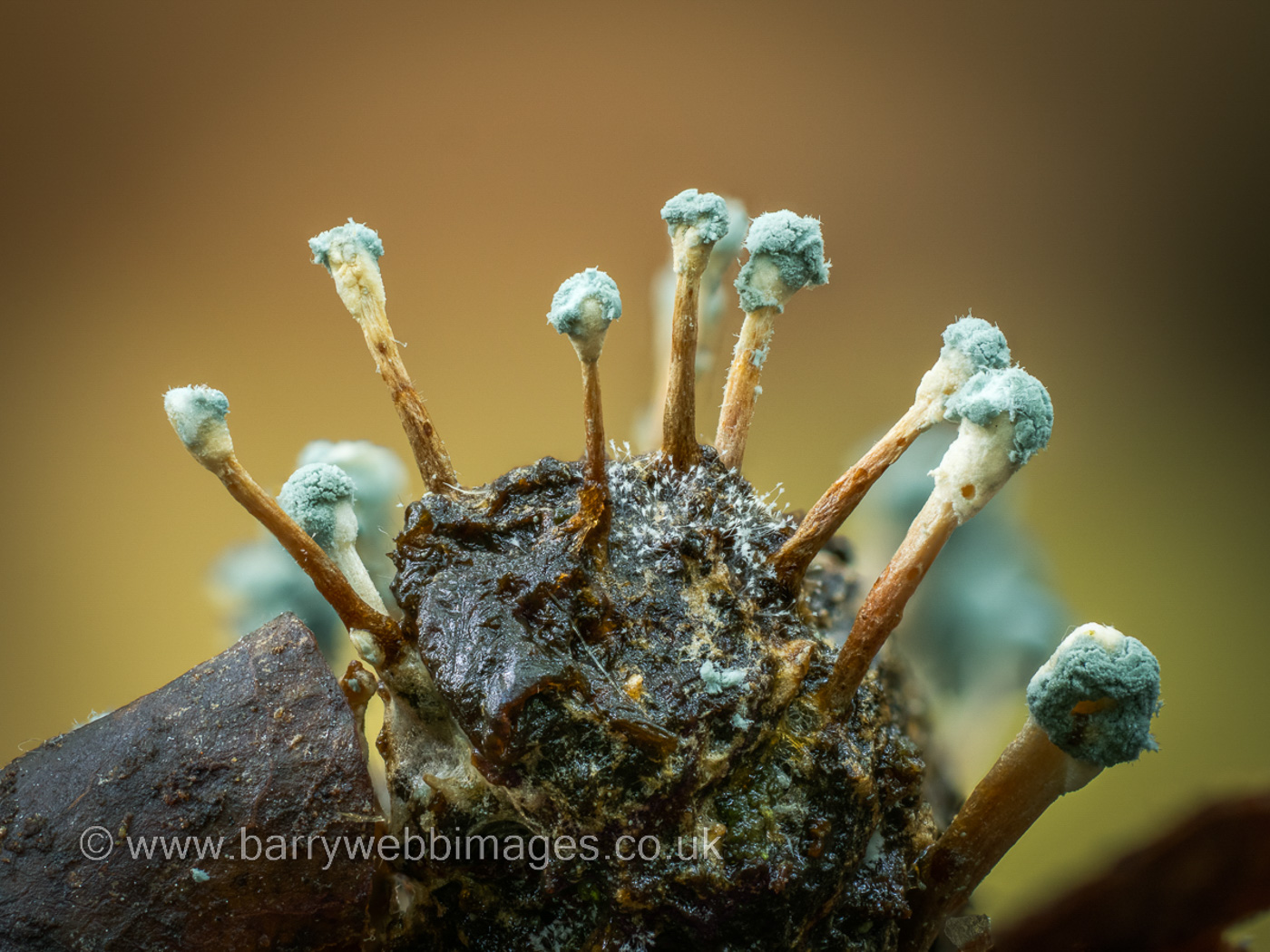 |
Penicillium vulpinum (Matchstick Mould)
Oct 3, 2022. On some unidentified droppings / dung at Burnham Beeches Barry Webb found this strange-looking and tiny fungus and posted his photo on the Facebook site he uses. It was quickly identified for him, and checking other images online there can be little doubt that the ID is correct and the common name very apt. There are numerous species of Penicillium though this is one of the most distinctive and is new to the county.
|




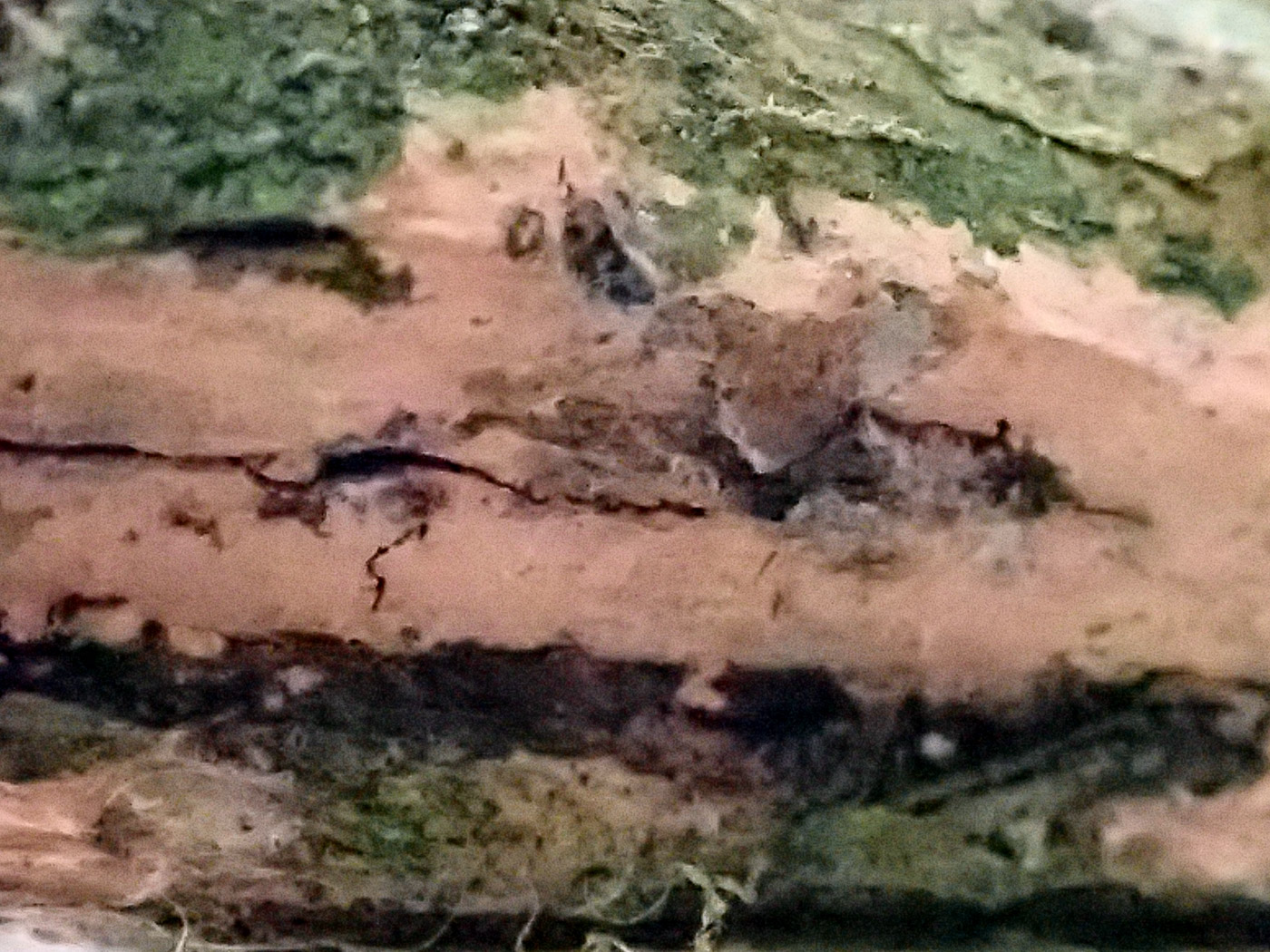
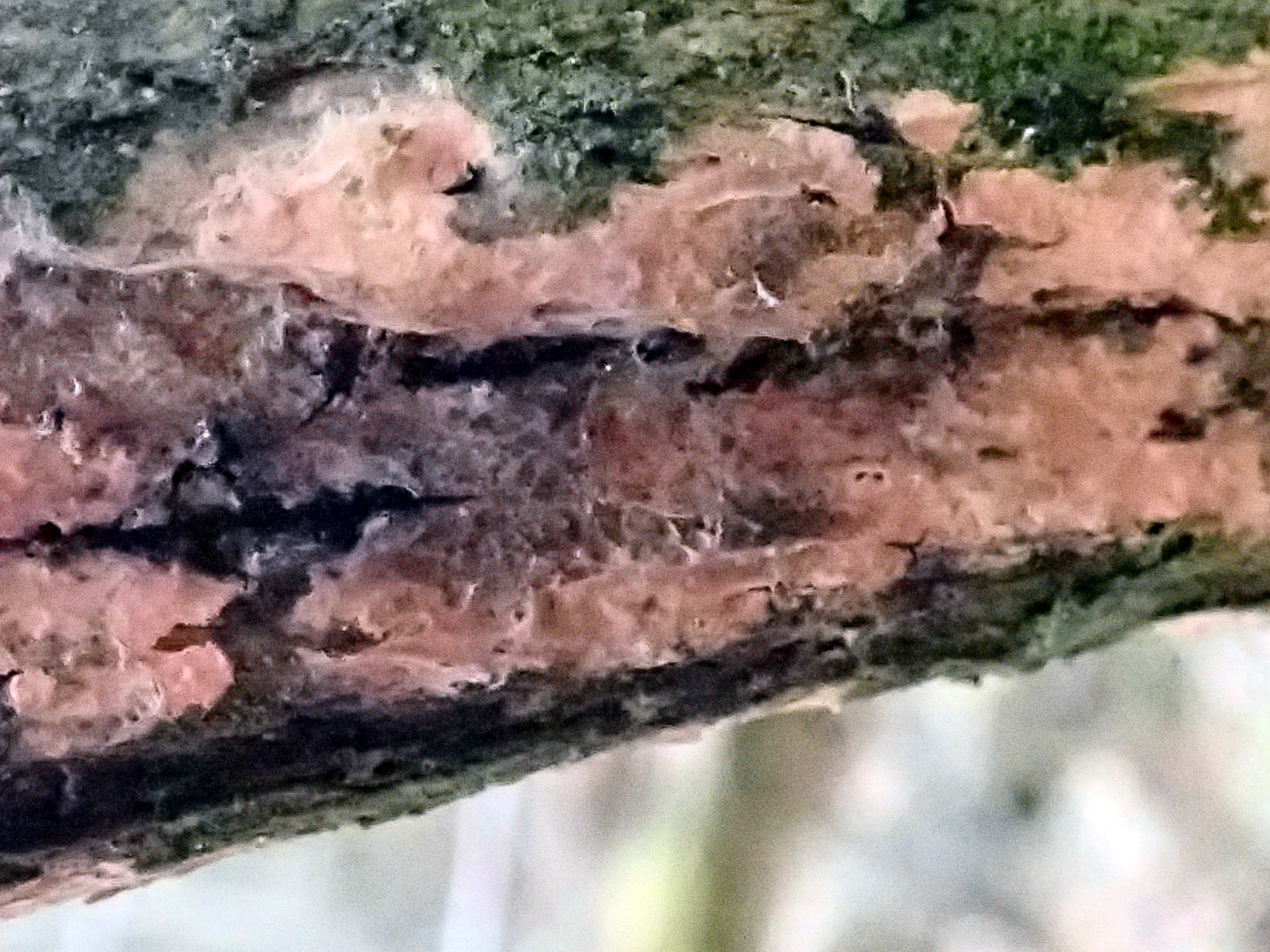 |
Peniophora incarnata (Rosy Crust) 
Mar 27, 2023. At Stoke Common in a large patch of burnt Gorse Penny went searching for an interesting small Daldinia species (King Alfred's Cakes) found only on that substrate. No luck, though several other things were found on the scorched stems: As well as Nectria cinnabarina (Coral Spot) and Schizophyllum commune (Split Gill) there were plentiful examples of P. incarnata - a strikingly peachy pink corticioid host specific to Gorse though not necessarily burnt! See more examples found at this site by Russell Ness on February 11th.
Feb 11, 2023. At Stoke Common Russell Ness noticed some distinctive creamy pink corticioid patches on stems of Gorse, collected some to check with a scope and was able to confirm his ID. Though not rare, the species occurs on various hosts but is commonest on Gorse and Ivy. We have just four previous county records - all on Gorse and two of these from exactly the same area at this site and one other in Finds 2021 March 27th. Photo 3 here shows the species together with the bright yellow jelly fungus, Tremella mesenterica (Yellow Brain) - another species found on various hosts, most commonly on fallen Oak but often also on Gorse.
Mar 27, 2021. Penny ventured into Bucks for the first time today since Christmas! At Turville Heath she found a few very common species to add to our list (which are below) but this was probably the most interesting and unusual: a Corticioid which is common on the stems of Gorse - a plant in plentiful supply here but the fungus with few county records as we don't often encounter Gorse on our woodland walks. Its peachy pink colour makes it an easy one to recognise when on this host though it does occur on other deciduous wood. Nevertheless, as there are a few other pink corticioids it is necessary to check the microscopic characters to confirm.
|
 |
Perenniporia fraxinea (an unusual bracket with no English name) 
Apr 26, 2024. At the base of a mature Sycamore at Stoke Poges Memorial Gardens Penny together with Sarah Ebdon and Jesper Launder spotted this huge bracket hiding behind some nettles - hence Jesper's photo from above! It was at least 40 cm across and also quite thick, absolutely hard and with a green glint in the outer section. Jesper took a small sample to check for spores which later proved his ID suggestion at the time to be correct. Though not rare, we have just 7 previous county records on a variety of different deciduous tree hosts though this is the first on Sycamore. It is commonest on Ash as its species name suggests. This is a new entry for Finds.
|
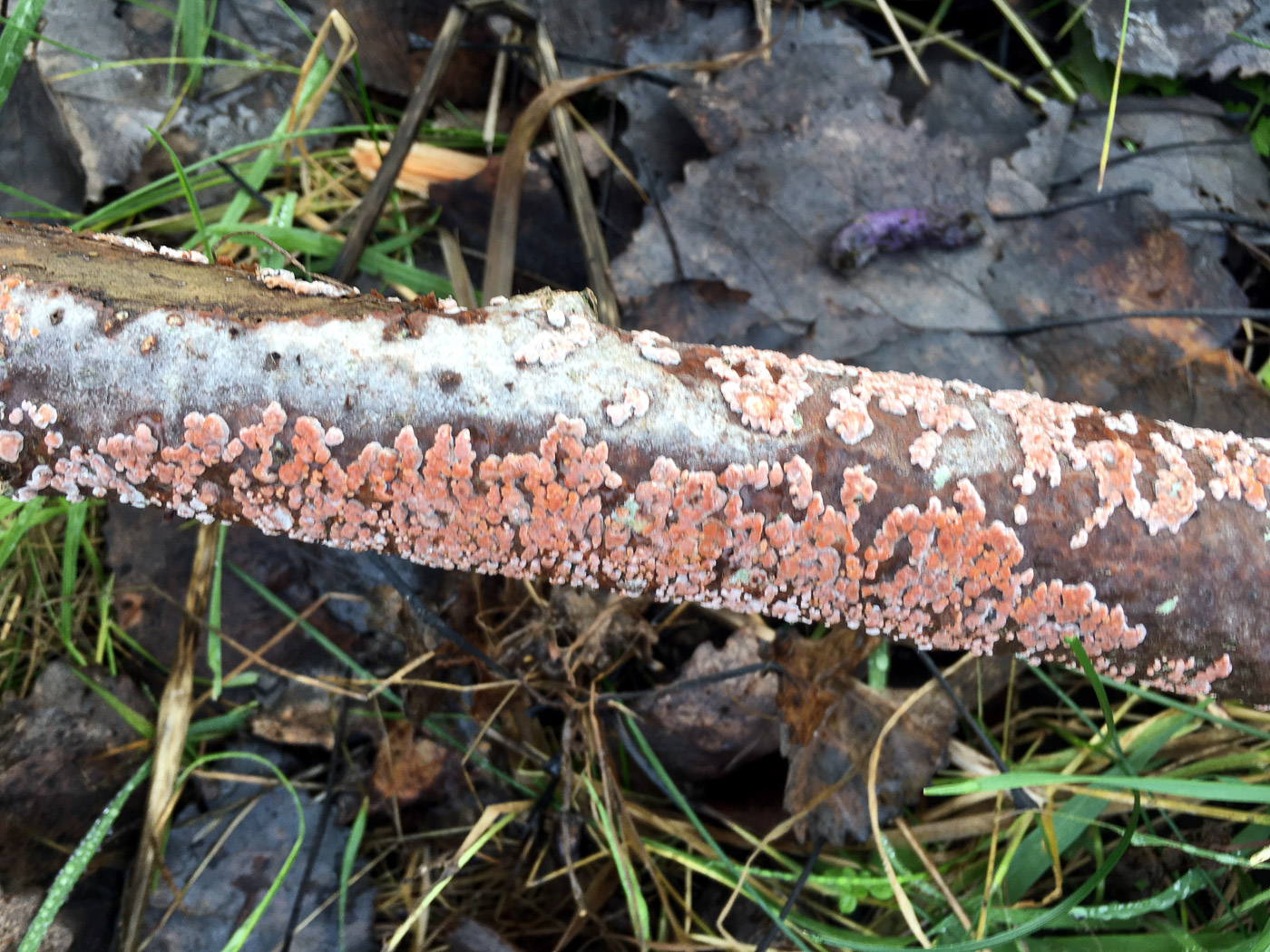
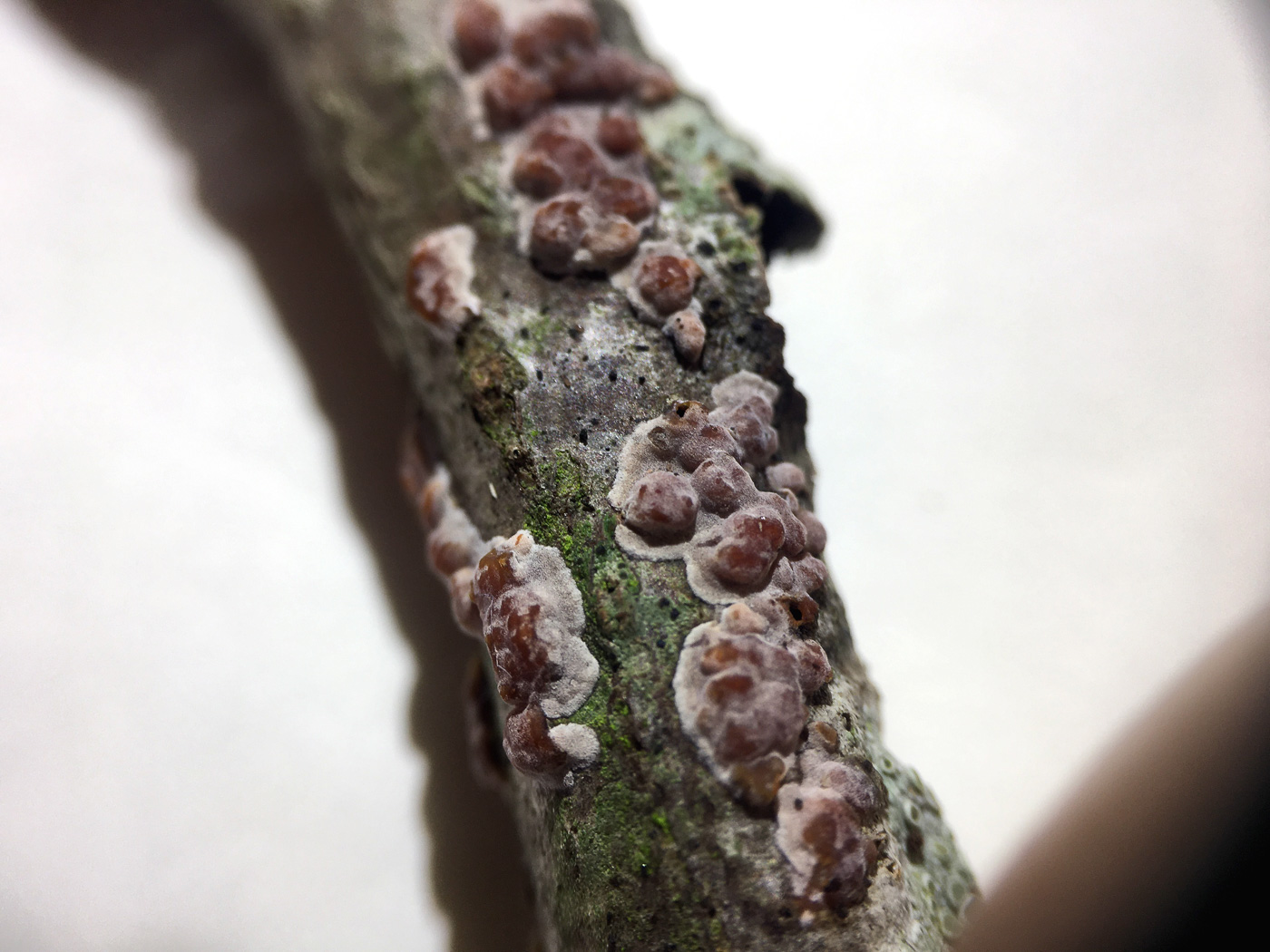
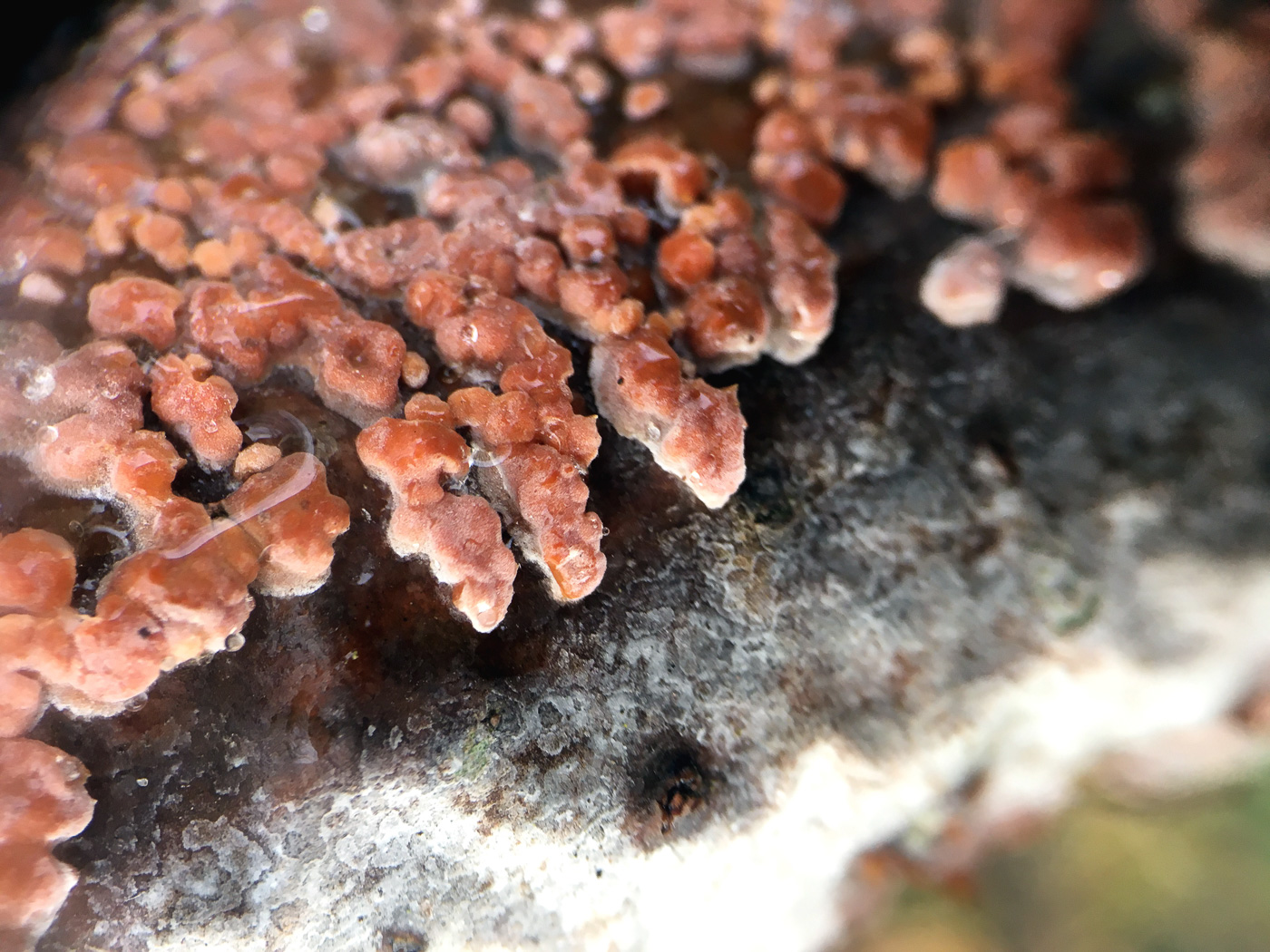 |
Peniophora polygonia (a resupinate with no common name) 
Feb 5, 2021. A few weeks back Russell Ness noticed this unusual and distinctive 'crust' fungus covering a fallen Aspen sapling in Taplow. Having no literature to hand with sufficient information on such species he took a spore print and sent the photos (including one of the spores) to Penny in the hope that she might recognise it. No luck there! She suggested sending a sample to resupinate expert Alan Lucas, who has now kindly named it for us. This is quite a rare species, nearly always occurring on Poplar - Aspen in particular, and we have just two previous county records, the last from Wotton Park Estate identified by Martyn Ainsworth in 2009. This was a nice find and is one to look out for on fallen Poplar with it's distinctive pink to red bumpy surface. There are many different species of Peniophora - a difficult genus and one needing very skilled microscopy to identify to species.
|
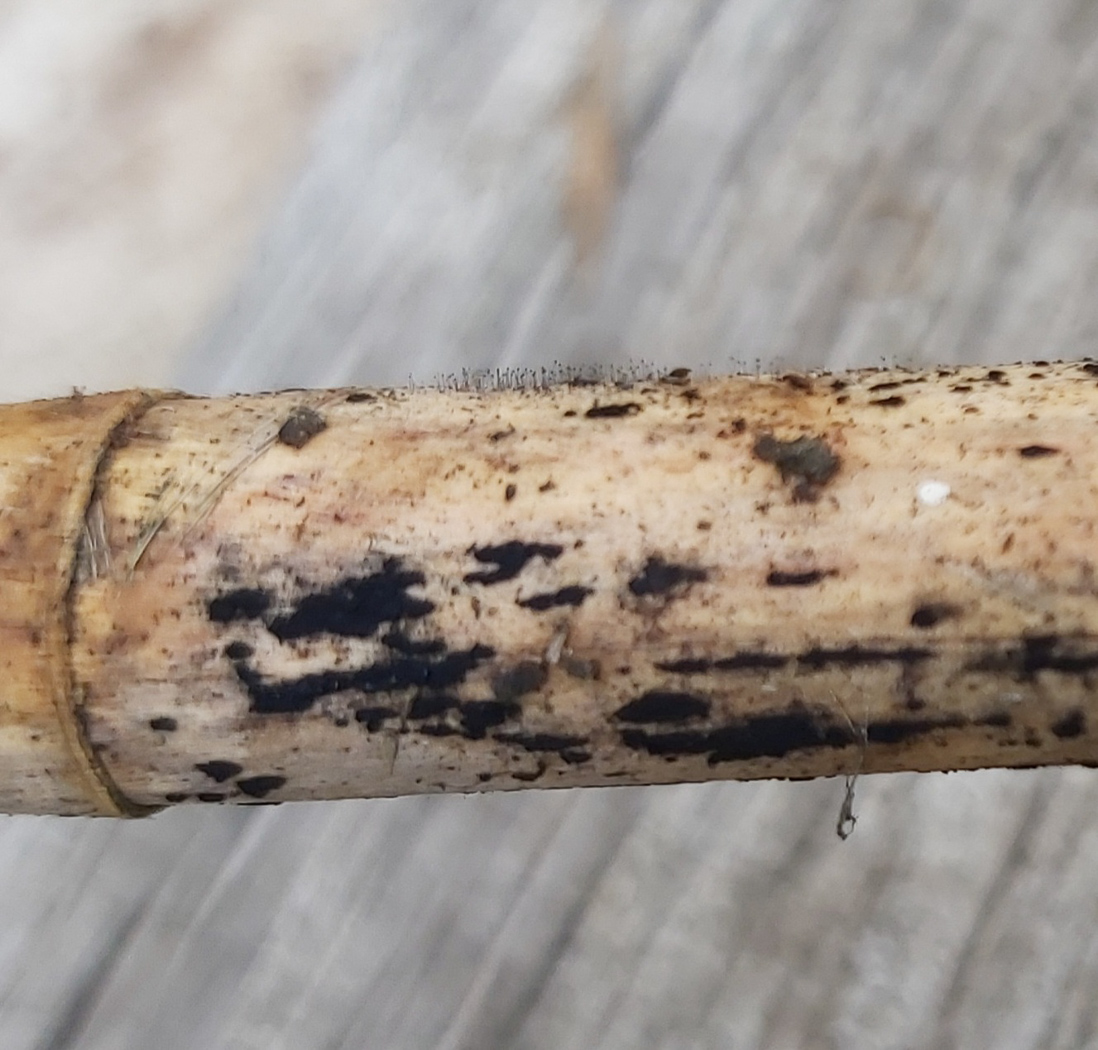
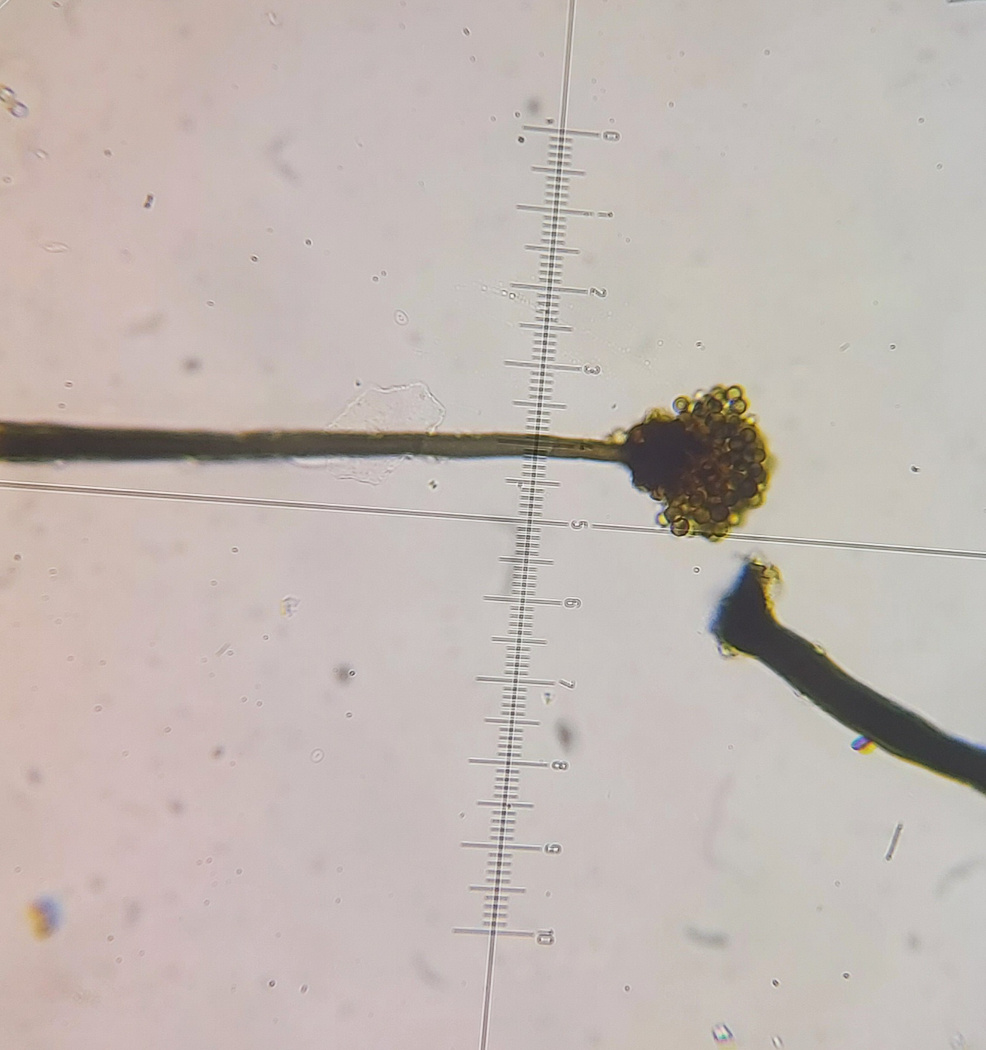 |
Periconia minutissima (an Ascomycete with no common name) 
Aug 1, 2021. On a bamboo cane in his Jordans garden Jesper Launder noticed these tiny stalked fruit bodies (just visible along the top surface in photo 1) and was able to identify them using the appropriate literature. Apparently a very common species but obviously one very easily overlooked(!), it occurs on many different dead herbaceous stems and leaves throughout the year and when viewed with a x10 lens looks like a miniature forest of black round-headed pins - photo 2 taken under magnification shows a single pin head with the clustered conidia (sterile spores). We have just two previous county records (1990 and 2001) both made by mycologists with impeccable reputations: Jerry Cooper and Henry Beker, so Jesper is in good company!
|


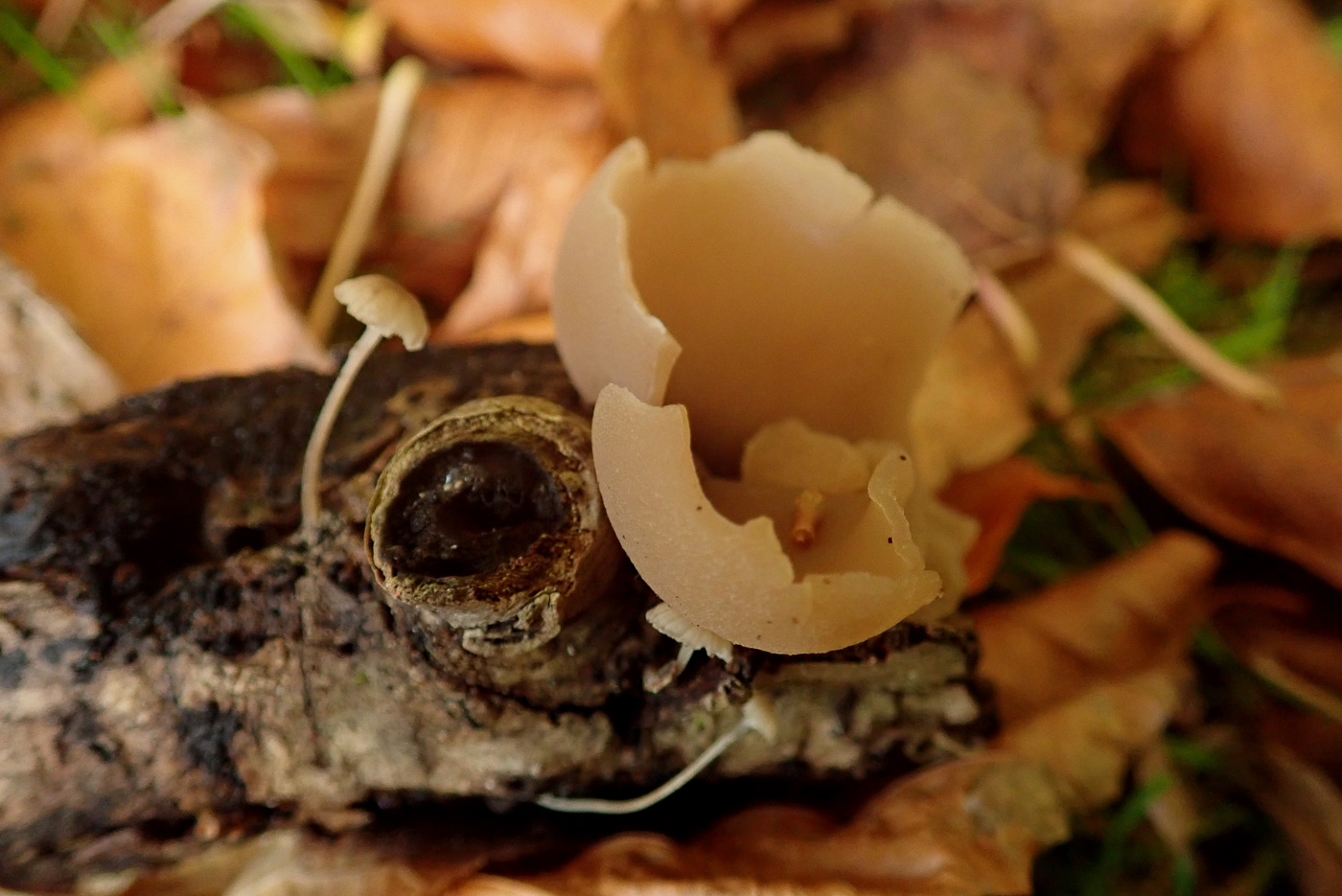
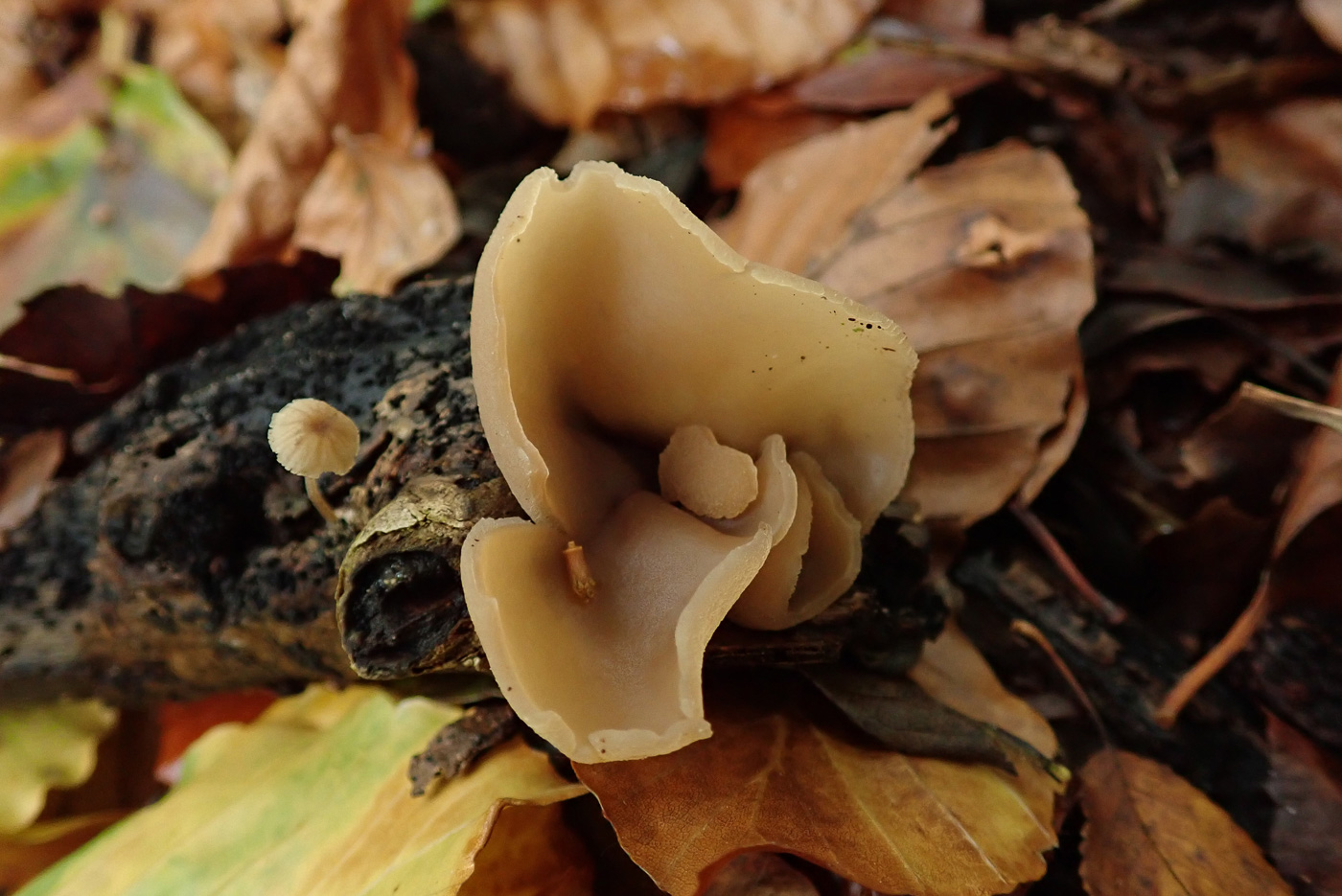
|
Peziza arvernensis (a Cup Fungus with no common name) 
Apr 15, 2023. In soil around the edge of a large burnt site at Turville Heath this was one of three species of Peziza Penny found at this spot today (see above also). This is quite a large Peziza - it was about 8cm across - one of several species which are this soft hazel brown colour, so as well as noting the substrate checking the spores for size, droplets within, also ornamentation is essential in order to separate them. P. arvernensis is an occasional species and occurs in soil and deciduous litter as well as on burnt sites; it tends to become misshapen and undulating as here.
Oct 26, 2020. Penny C. found this cup - our first species of Peziza - on a Beech stick in Mousells Wood fruiting together with three small Bonnets: Mycena speirea (see also photo dated Oct 14 for more on that species). It measured about 3 cms across and was taken home to work on as this is not a genus one can name in the field. One first has to make sure that it's a Peziza and not the very similar genus Otidea (see earlier photos for examples of that genus) and then wade through a lengthy key. There are several lookalikes of this species which frequent Beechwoods so the spore size and ornamentation is critical.
|
 |
Peziza fimeti (a Cup with no English name) 
Mar 21, 2024. On a dung heap near Saunderton Sarah Ebdon found this group of Cups and took one home to examine. Once armed with the spore details, following the key became quite easy owing to this specific substrate, and she then found it matched in appearance as well - very satisfying! Previously P. bovina, it is not that often recorded - around 100 records in FRDBI, the majority in springtime; our Bucks records consist of several springtime finds at Pulpit Hill in 2000 and 2002. This is a new entry for Finds.
|
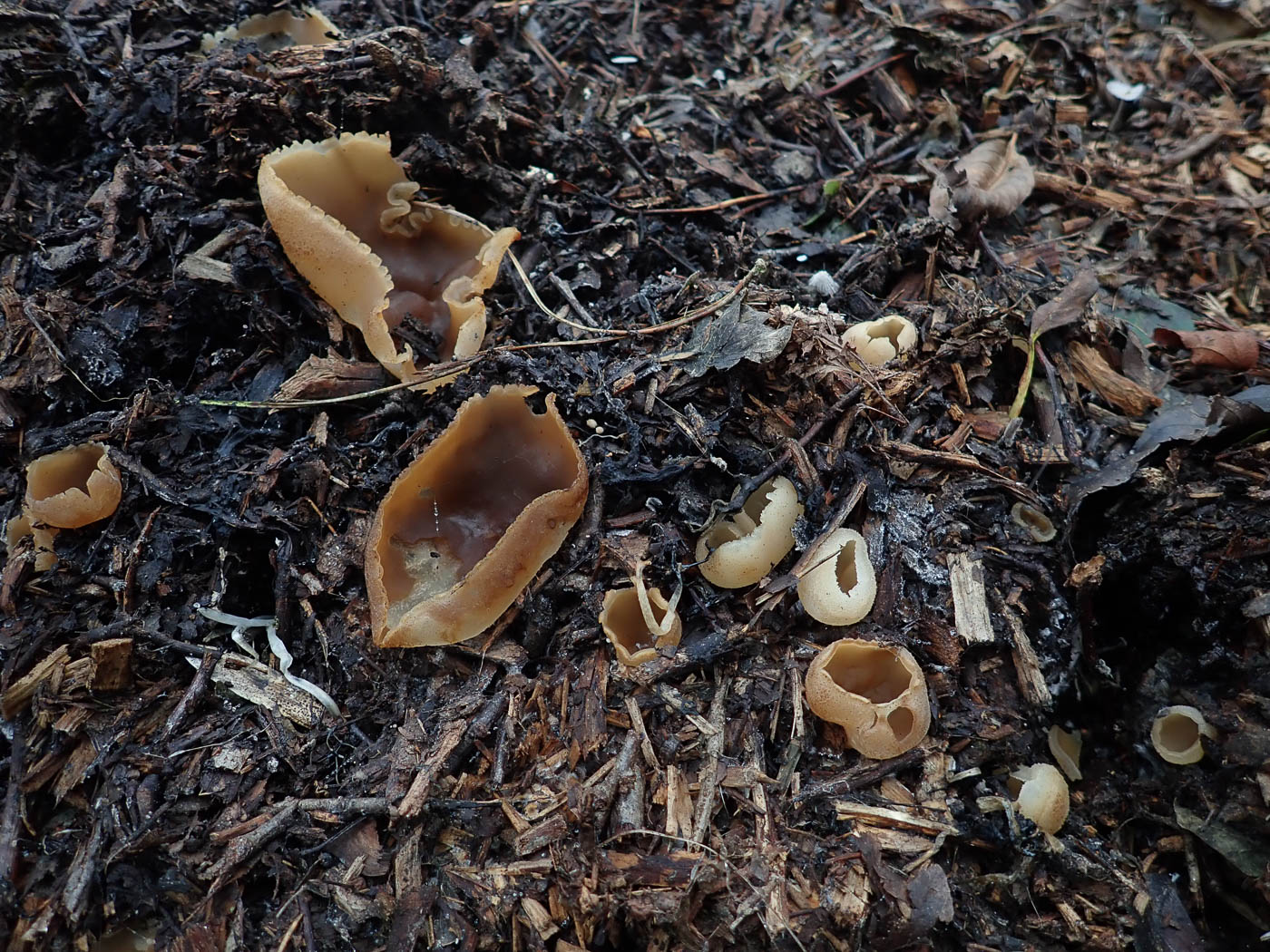 |
Peziza granulosa (a rare Peziza with no English name) 
Nov 7, 2024. On a large rotting heap of leaves and debris at Stoke Poges Memorial Gardens Barry Webb and Gill Ferguson found a range of species including this cup fungus which Penny suggested at first might possibly be a species of Tarzetta owing to its tightly rounded shape and pale colour when young with a slight fringed edge. However, a drop of Melzers reagent when examining under a scope turned the asci tips blue confirming it was in fact a species of Peziza. It keyed out convincingly to P. granulosa with large smooth spores and online images also showed its similarity to Tarzetta, confirming the ID. A sample will be dried for sequencing to confirm as we have only two previous county records. This is a new entry for Finds. The photo is Penny's.
|
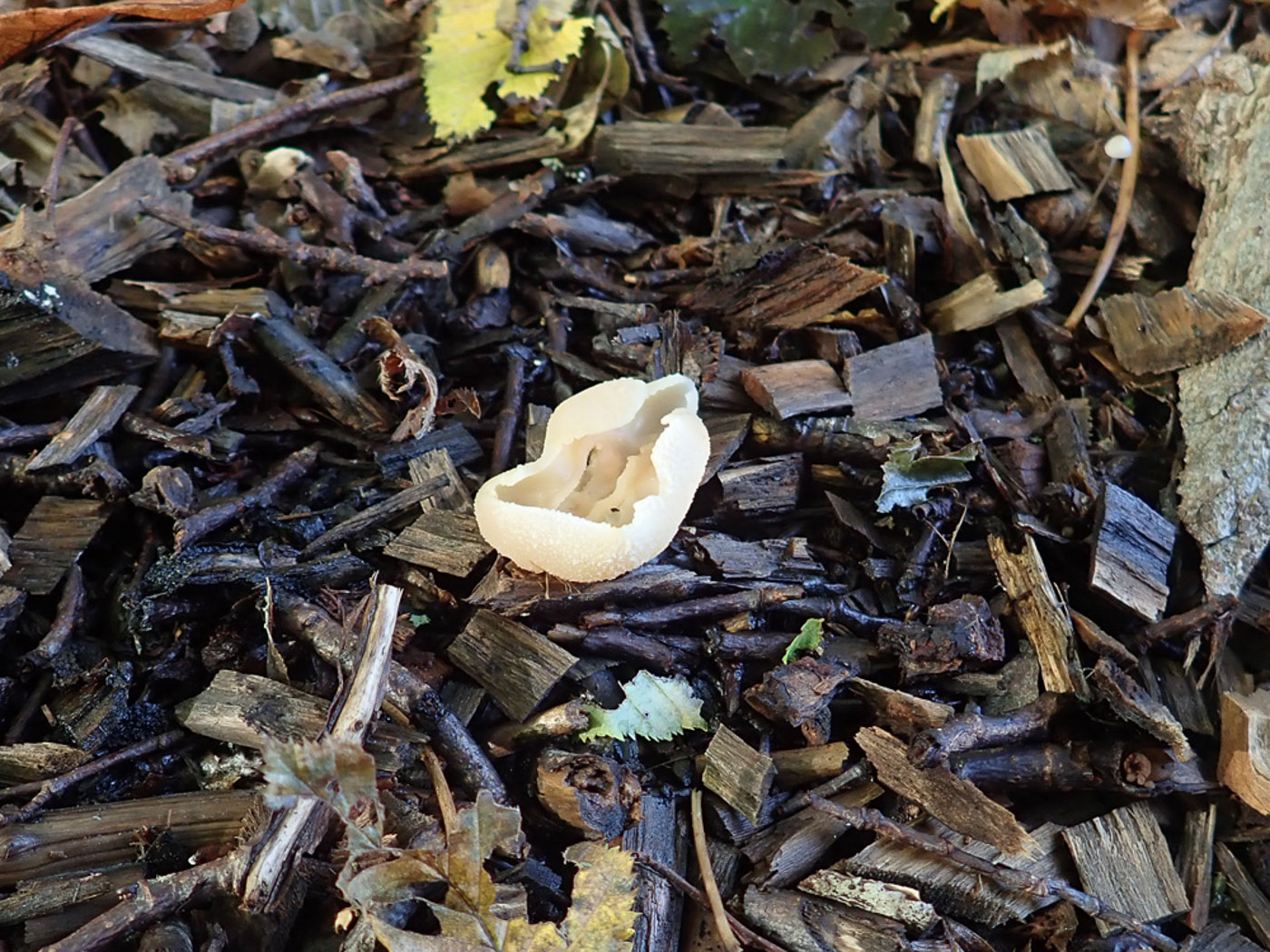



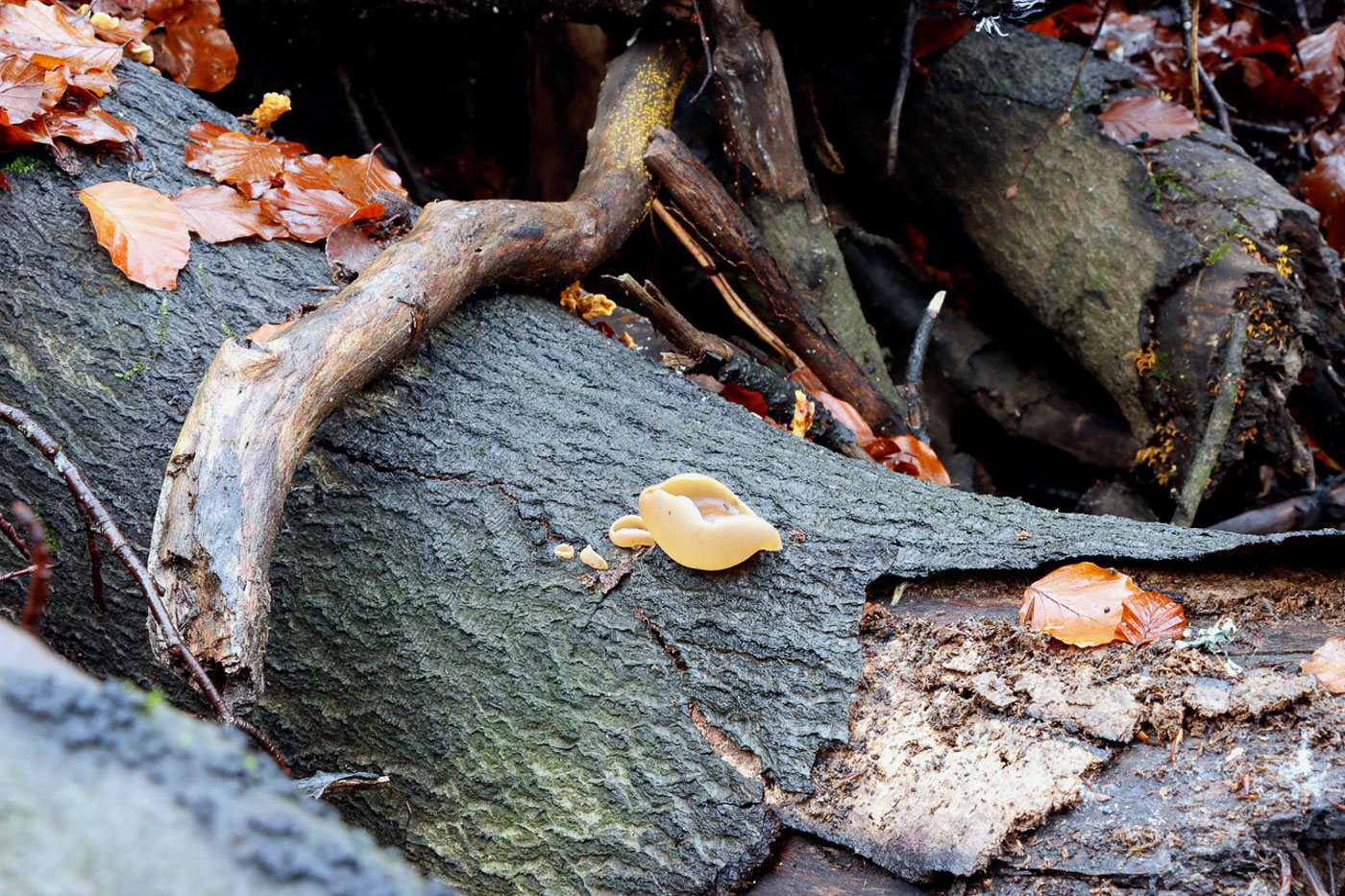
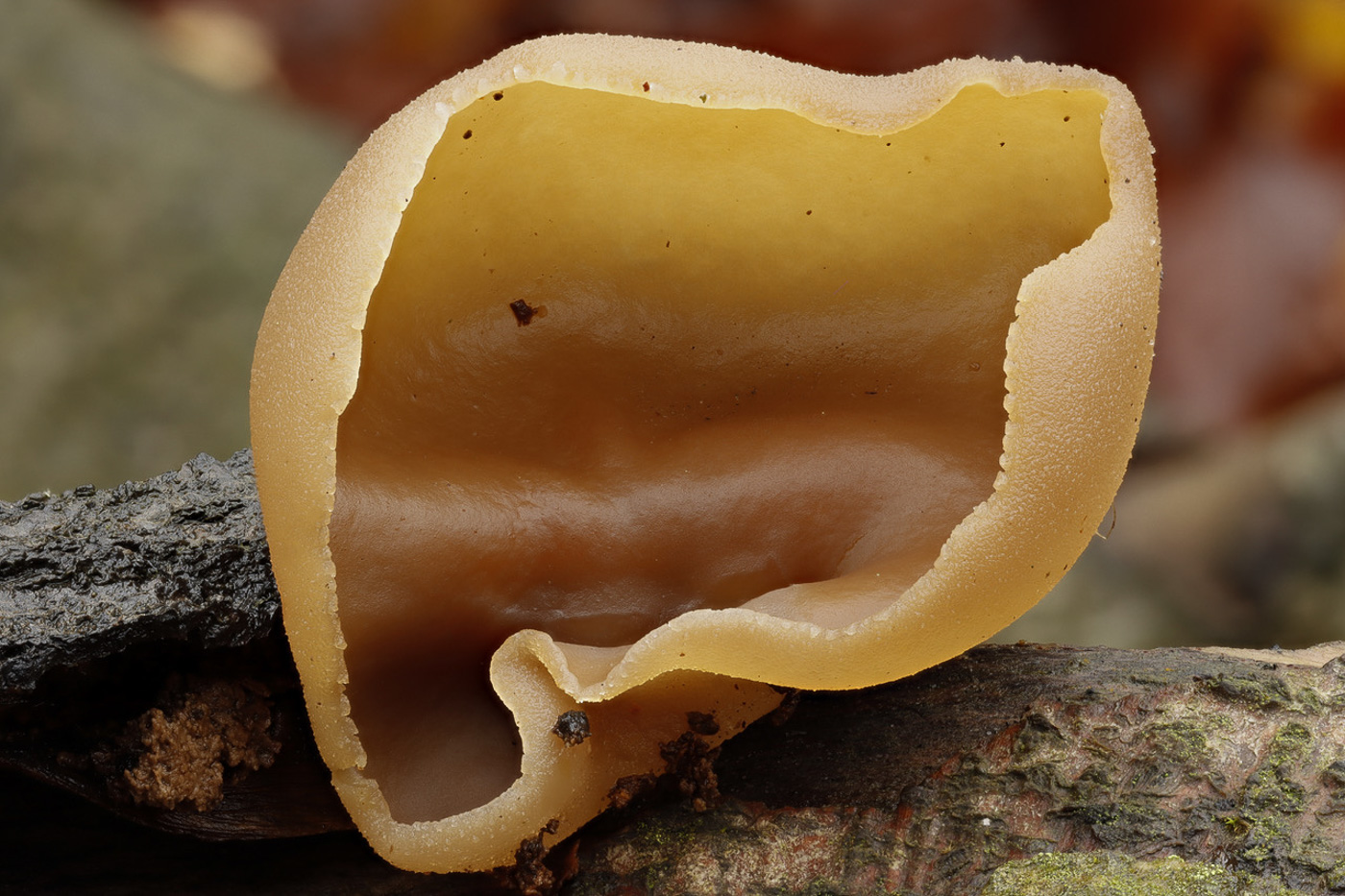
|
Peziza micropus (Pedicel Cup Fungus) 
Oct 8, 2024. In deciduous woody debris at Turville Heath Penny spotted this pale beige cup and took it home to identify. This took ten days, however, before the all-important spores were mature enough (ie having been expelled from the asci) to show their size, shape and ornamentation - all vital to keying out this genus.
Apr 4, 2023. On a rotten soggy deciduous stump in Goldhill Common Jim Wills spotted these two cup fungi and took them home to work on - a new venture for him. Consulting with Penny by email as to how to go about identifying such species (a bit like the blind leading the even blinder!) he achieved photos of all salient features and we were able to establish this was definitely a Peziza and one having relatively small smooth spores and a minimal stem underneath (photo 3). The substrate - rotting deciduous wood - is typical of this quite common species and we have one previous Finds entry: 2020 November 11th. (The common name given here is mentioned several times online but is not on the official list as yet.)
Nov 11, 2020. Paul Goby found this nice fresh Peziza growing on fallen Beech in Naphill Common. This species is one of several quite common Cups which look extremely similar and can only be separated using a scope. This particular species favours Beech, often on the bark as here, and has a very short stem (hence its Latin species name) - so short that it's not visible unless the fruit body is removed from the substrate! The cup measured about 5 cm across.
|


 |
Peziza petersii (a Cup with no common name) 
April 12, 2024. On some recently cleared burnt ground at Turville Heath Penny noticed a couple of dark brown cups which she guessed might be this species - one which favours bonfire sites - but having been fooled by a very similar lookalike from a different genus found on another bonfire site here just a month earlier, she took it home to check. The lookalike, Plicaria endocarpoides, has very different microcharacters, but today's matched the Peziza species fine and is one she found here last year.
Apr 15, 2023. In a large area of burnt ground at Turville Heath this was the most interesting of three Peziza species found by Penny at this spot today. She was able to recognise it through a combination of features: the dark rich brown colour and clustered habit together with the fact that the species only occurs on burnt ground. The microscopic features confirmed the ID later. (The paler cups in the photo were underneath a log which she had removed for the shot.) We have just a handful of county records and this is a new species for Finds. This was also the first time Penny had found three different Peziza species all in one place! Photo 2 is of the same collection but taken some three weeks later when they were twice the size.
|








 |
Peziza repanda (Palomino Cup) 
Mar 3, 2024. On an old bonfire site at Turville Heath Penny found good numbers of large Cup Fungi, the majority of which were a pale brown species of Peziza (photo 1) which she collected to check later at home. Photo 2 shows this pale Peziza together with a much darker brown cup growing adjacent to it - clearly there were two different species here. See the entry above for more on the darker species. Microscopic features confirmed this pale cup was P. repanda - one which she'd found at this same spot before and which quite commonly occurs on soil or burnt ground. Photos 3 and 4 were sent in by Bob Simpson, found in soil / woody debris at Salden Wood two weeks later and keyed out with care using his scope.
May 17, 2023. In some damp Beech sawdust at Turville Heath Penny found first this sizeable cup all of 7cms both across and deep (photos 1 and 2), then a few yards away found several more though much smaller and immature. The spore size and ornamentation together with the substrate led her to this species in several keys, though there are at least three other Peziza species which are this colour. We have an earlier entry (see April 15th) also found at this site but from a completely different area.
Apr 15, 2023. In a large area of burnt ground at Turville Heath this was the second of three species of Peziza Penny found fruiting at this spot today. Though similar in colour to P. arvernensis (see the entry below) it was not only smaller - about 4 cm across - but also a more regular shape hence she suspected it would be different when examined under the scope. This was indeed the case: the spores were clearly different and when viewed in Melzers reagent the asci tips were startlingly blue - another feature of this particular Peziza. It is an occasional species and occurs in soil and on burnt ground but not on wood. This is a first for Finds.
|



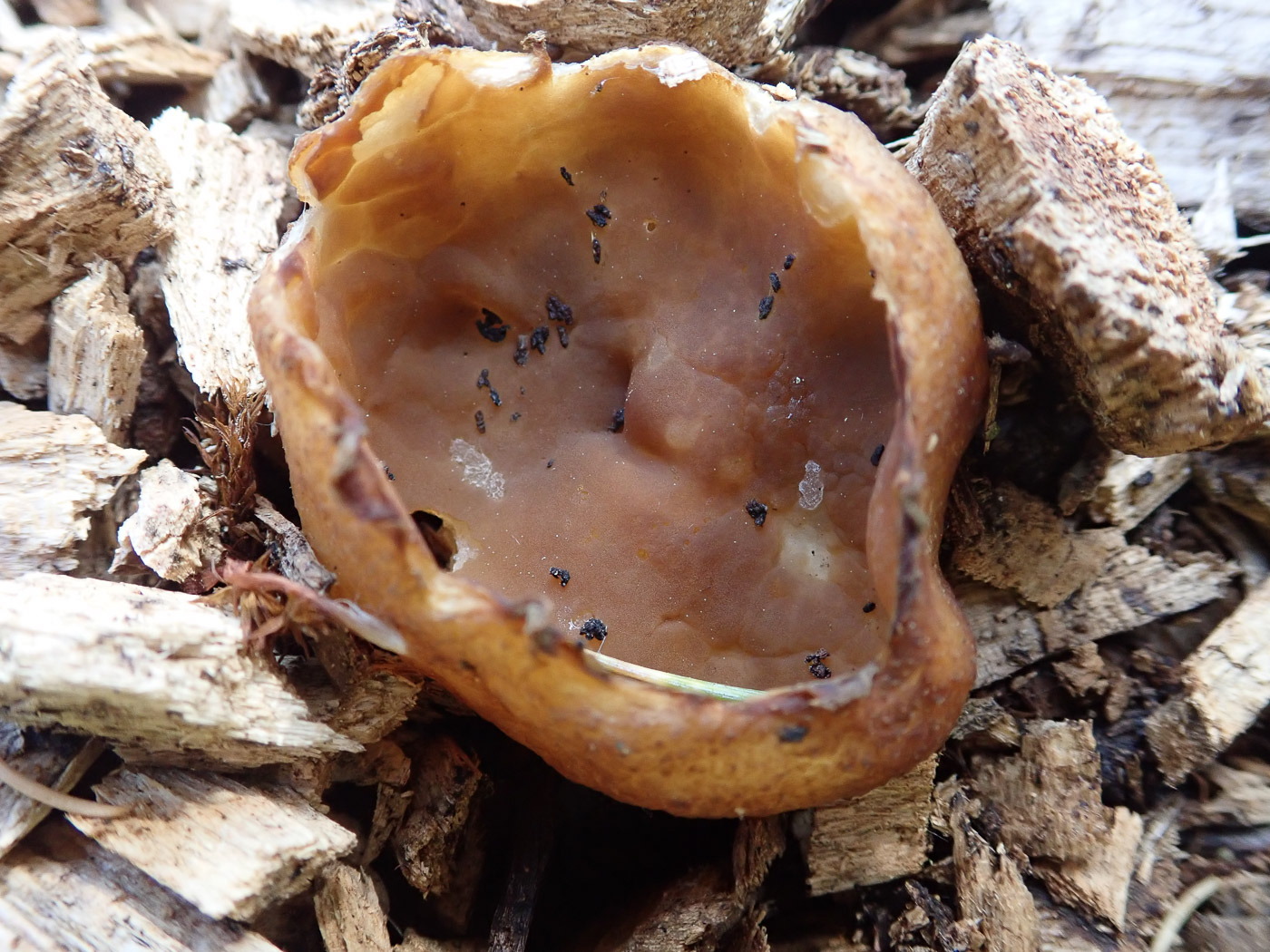
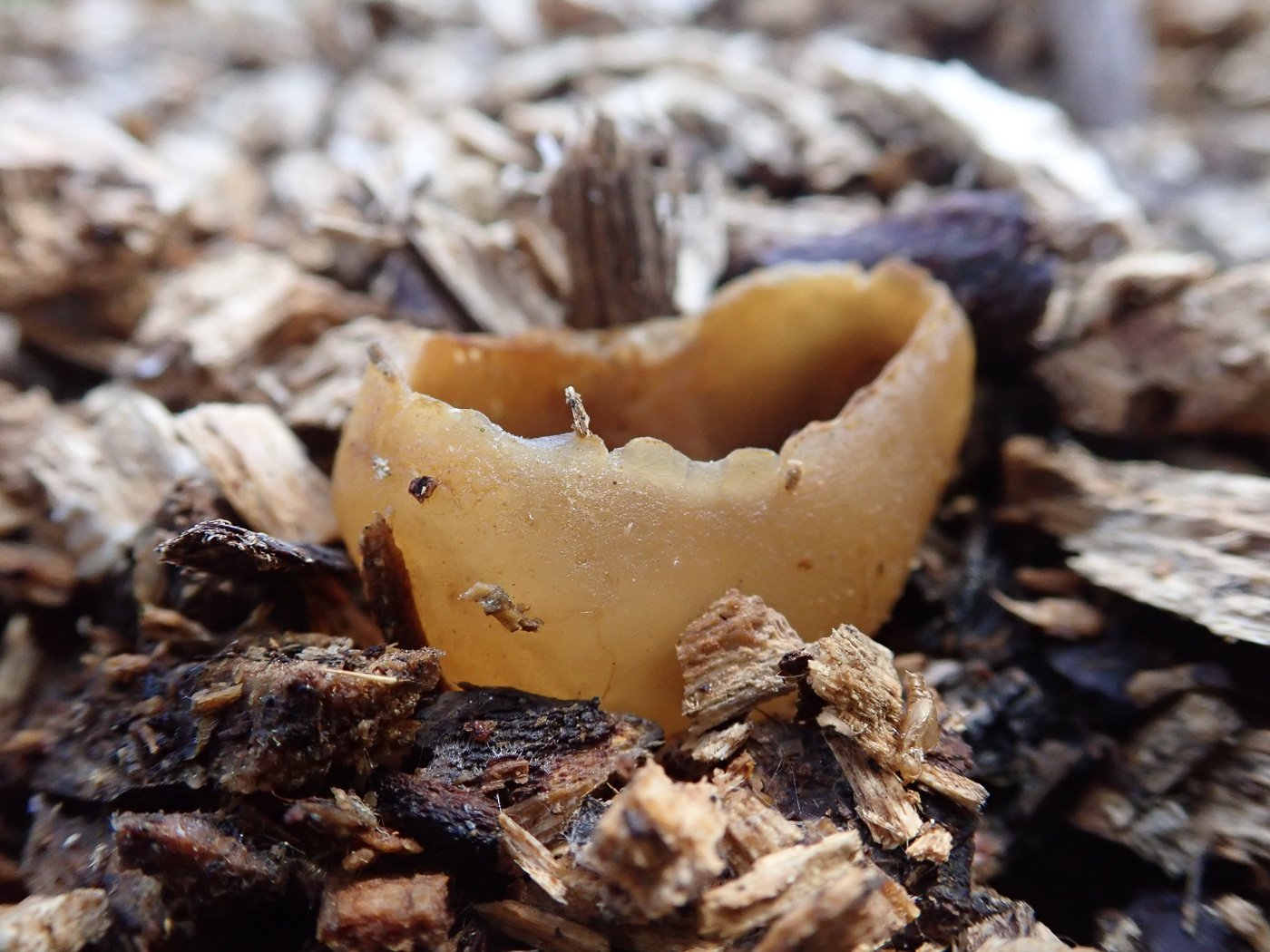
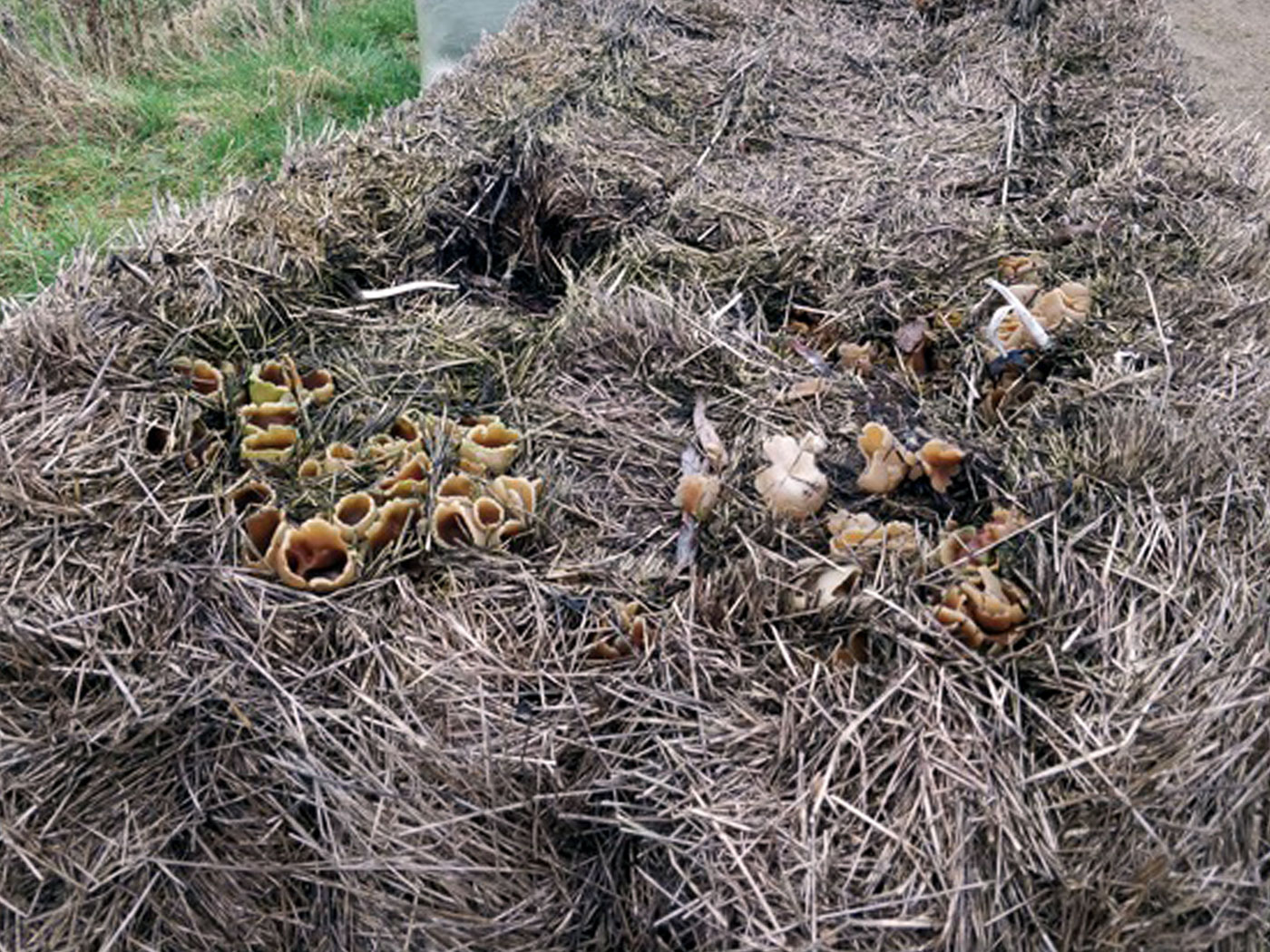
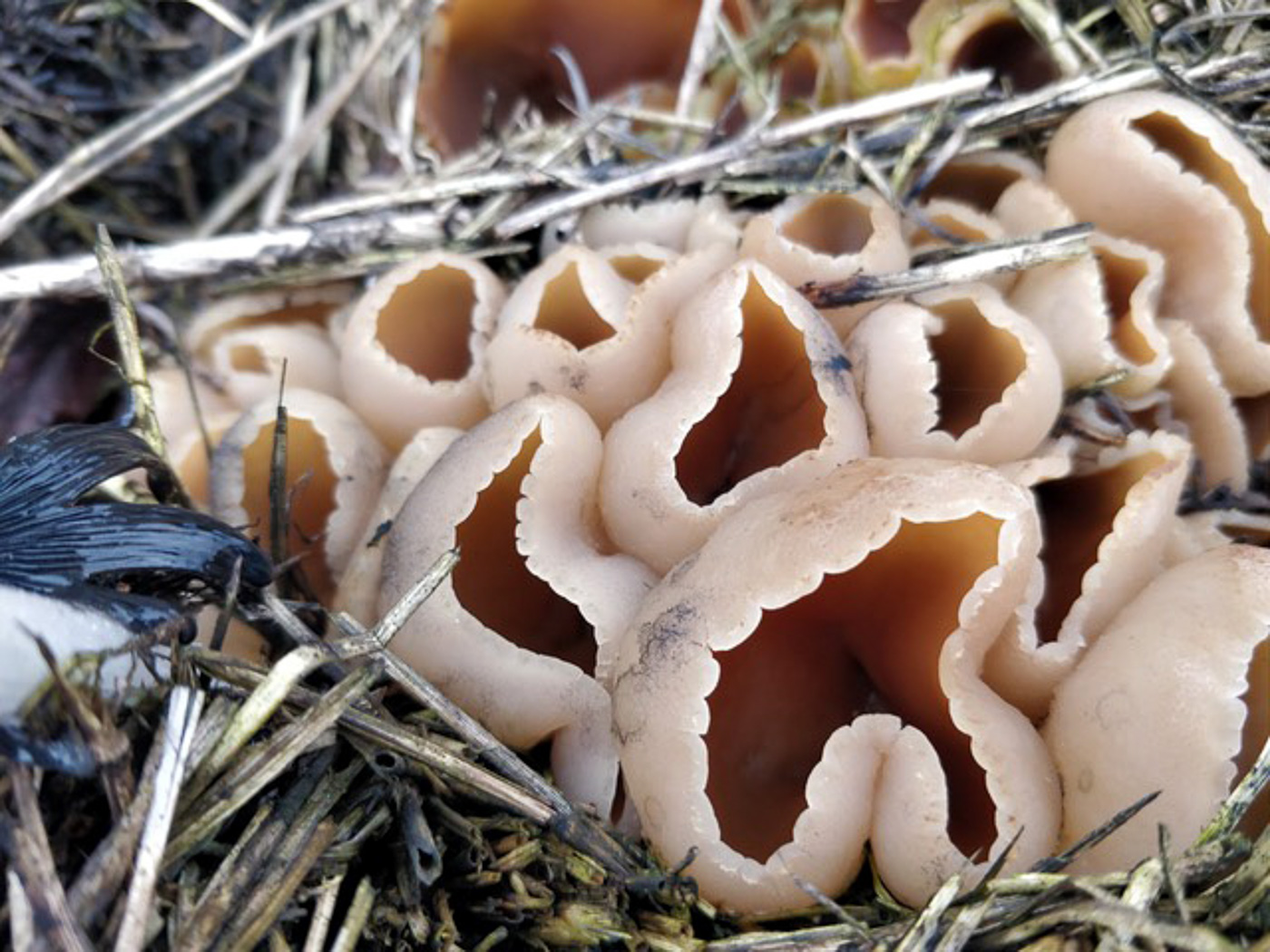
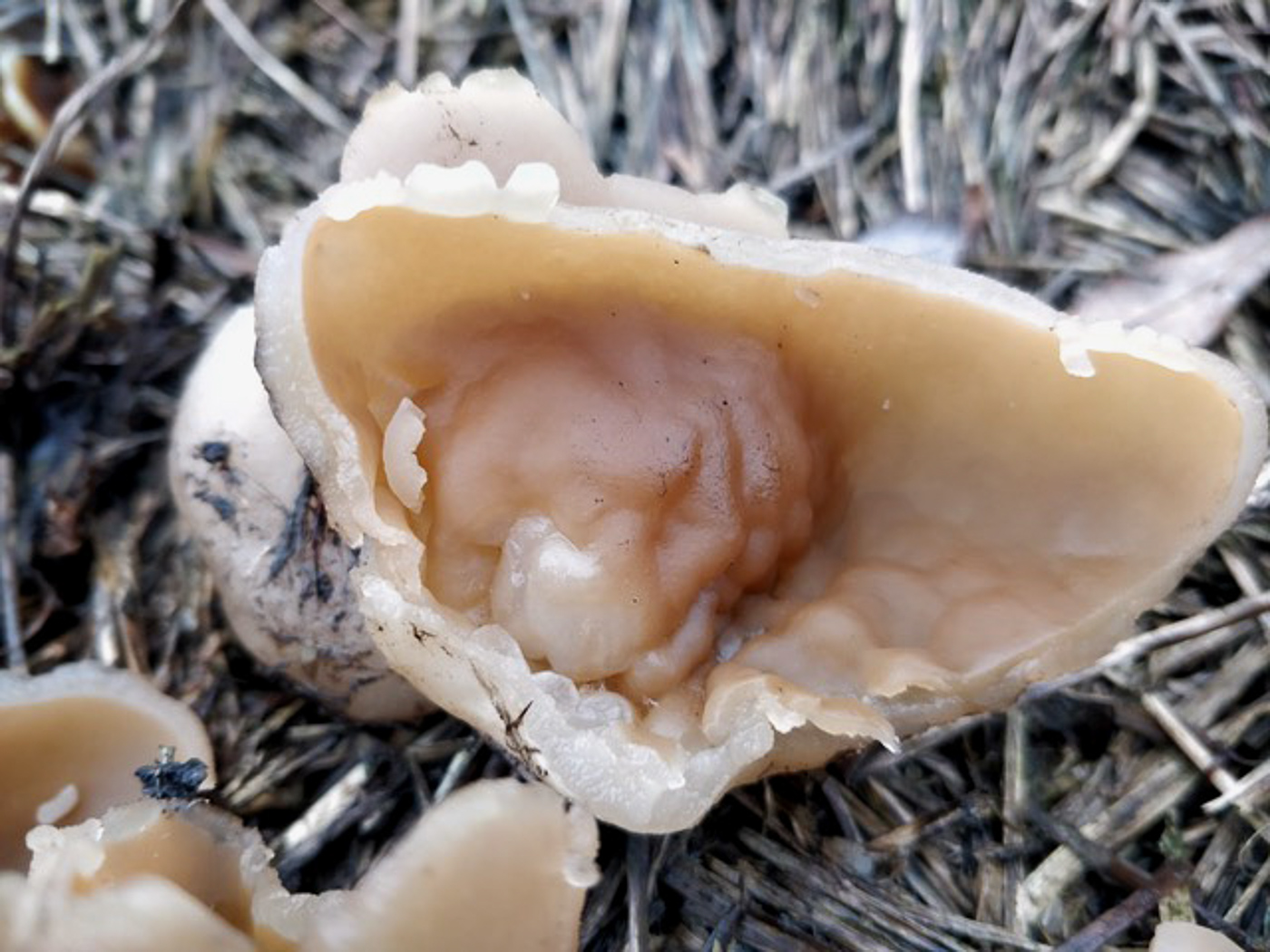
|
Peziza vesiculosa (Blistered Cup) 
Nov 25, 2023. In Rushbeds Wood (now with new access rules limiting walkers to certain paths only - no exploring off-piste due to Ash Dieback) Penny and Derek found this cup fungus on a rotting pile of grassy vegetation / mowings at the edge of the main ride. This was the typical substrate for this particular Peziza, often occurring on old bales of straw / hay and not found on fallen wood or soil as do several other species this colour. Another characteristic is its rather uneven and ridges inside surface, just visible here. The species is an occasional one. The photo is Penny's.
Mar 6, 2023. At Stampwell Farm Jackie Ewan noticed this little crop of cups emerging from straw in a dung heap, kept her eye on them and when big enough took one home to check. (Cups need to be mature so that at least a few spores are floating free of the asci - the containing sausage-like sacs - in order to examine them for both size and ornamentation for an accurate ID.) The species is an occasional one, nearly always on straw / hay in bales or loose, though one of our Finds entries was on woodchip (sequenced to confirm).
May 16, 2022. On a woodchip pile of local Sycamore adjacent to the car park at Dancersend (whilst a small group of us were doing some survey work here) Neil Fletcher spotted several sizeable 'cup fungi' which we confidently recognised as a species of Peziza. Knowing that a key and some scope work was required to get to a species name, Derek took the sample home to work on. He initially arrived at the very rare P. megalochondra, bypassing other more common species when taking habitat and micro-details into account, and this would indeed have been an exciting find. Clearly this was a good candidate for DNA sequencing to confirm, but the results showed that it was in fact P. vesiculosa, not nearly as rare but still a nice record with only two previous doubtful records from 1995 for Dancersend. The species normally fruits on rotting hay / straw bales, hence Derek's dismissal when keying it out, but further research shows that it can occur on woodchip piles as well.
Jan 3, 2022. On a bale of hay in Weasel's Lane nr Milton Keynes a neighbour of Bob Simpson's noticed this tight cluster of cups and sent him a photo. After much deliberation and discussion over its identity we are now quite sure that this is Peziza vesiculosa (confirmed by expert Kerry Robinson) despite the lack of blue tips when viewed in Melzers reagent with a scope! Everything else fits like a glove including the wrinkled inner surface (seen in photo 3), the fluted edges to the crowded cups and the unusual substrate. The genus mostly occurs on fallen wood or soil but this species occurs all year round on dung heaps with straw and hay, also on bales and piles of rotting grass etc. We have good numbers of county records but none since 2014 and only two in January though Kerry says the species withstands wintry conditions well. We reckon the recent hard frosts account for the lack of reaction to Melzers here.
|
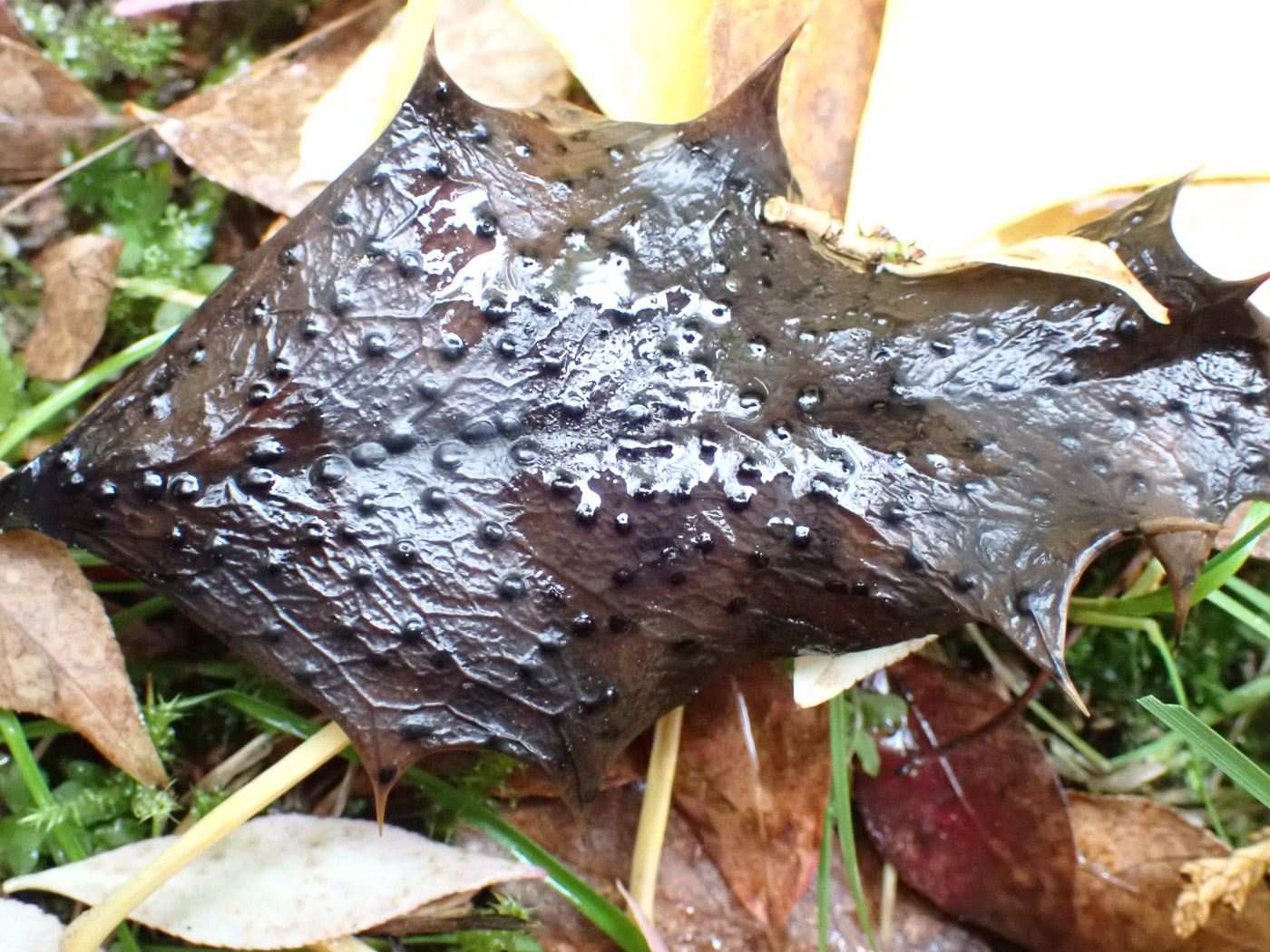 |
Phacidium multivalve (an Ascomycete with no common name)
Oct 27, 2022. On a dead Holly leaf in Stoke Poges Memorial Gardens Stephen Plummer found this very common species though one which is easily overlooked. There are two very similar 'black dots' which occur on this particular host, both equally common and sometimes both on the same leaf, the smaller species being Trochila ilicina (Holly Speckle) and the larger today's species. See in Finds 2020 December 15th for the smaller species - today's image is the first for Finds' however.
|




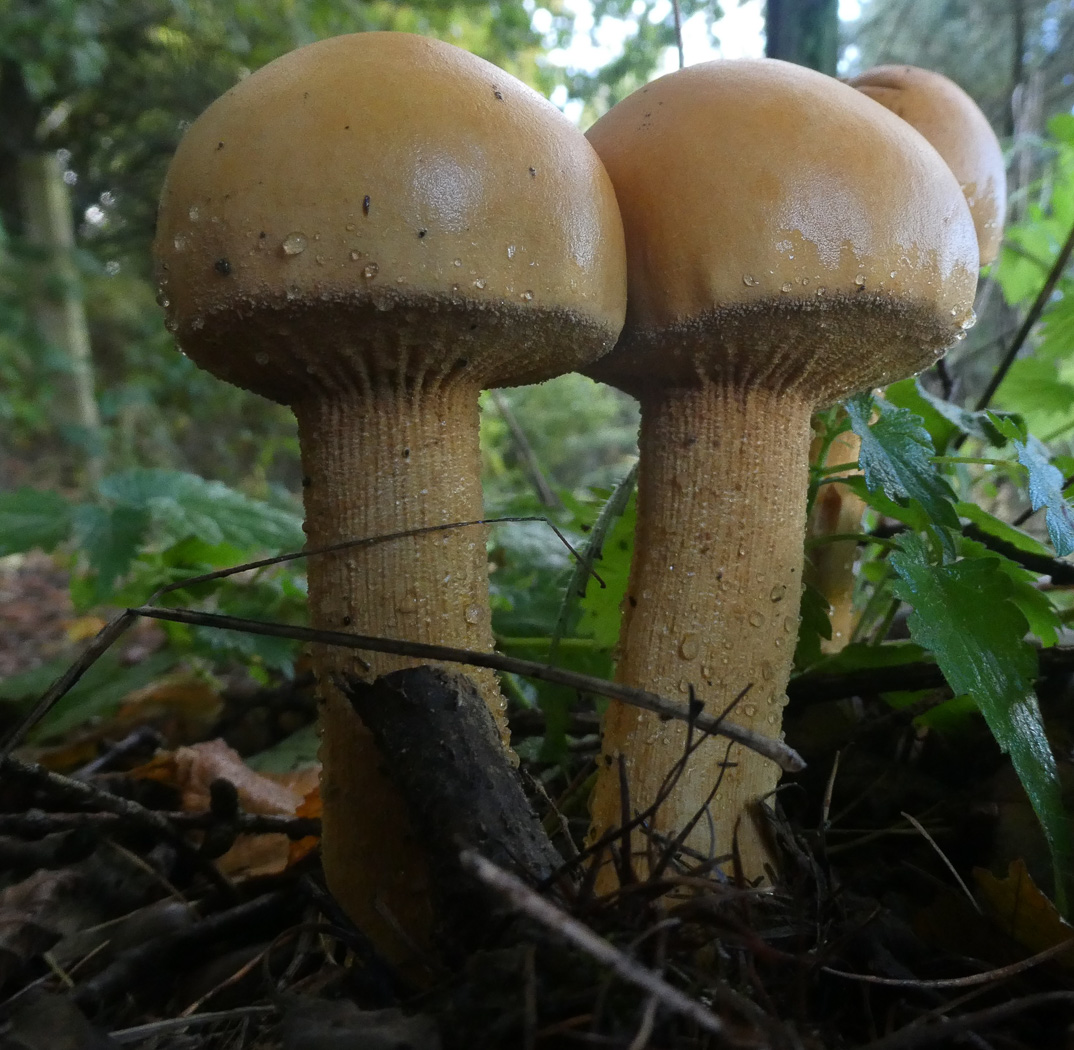
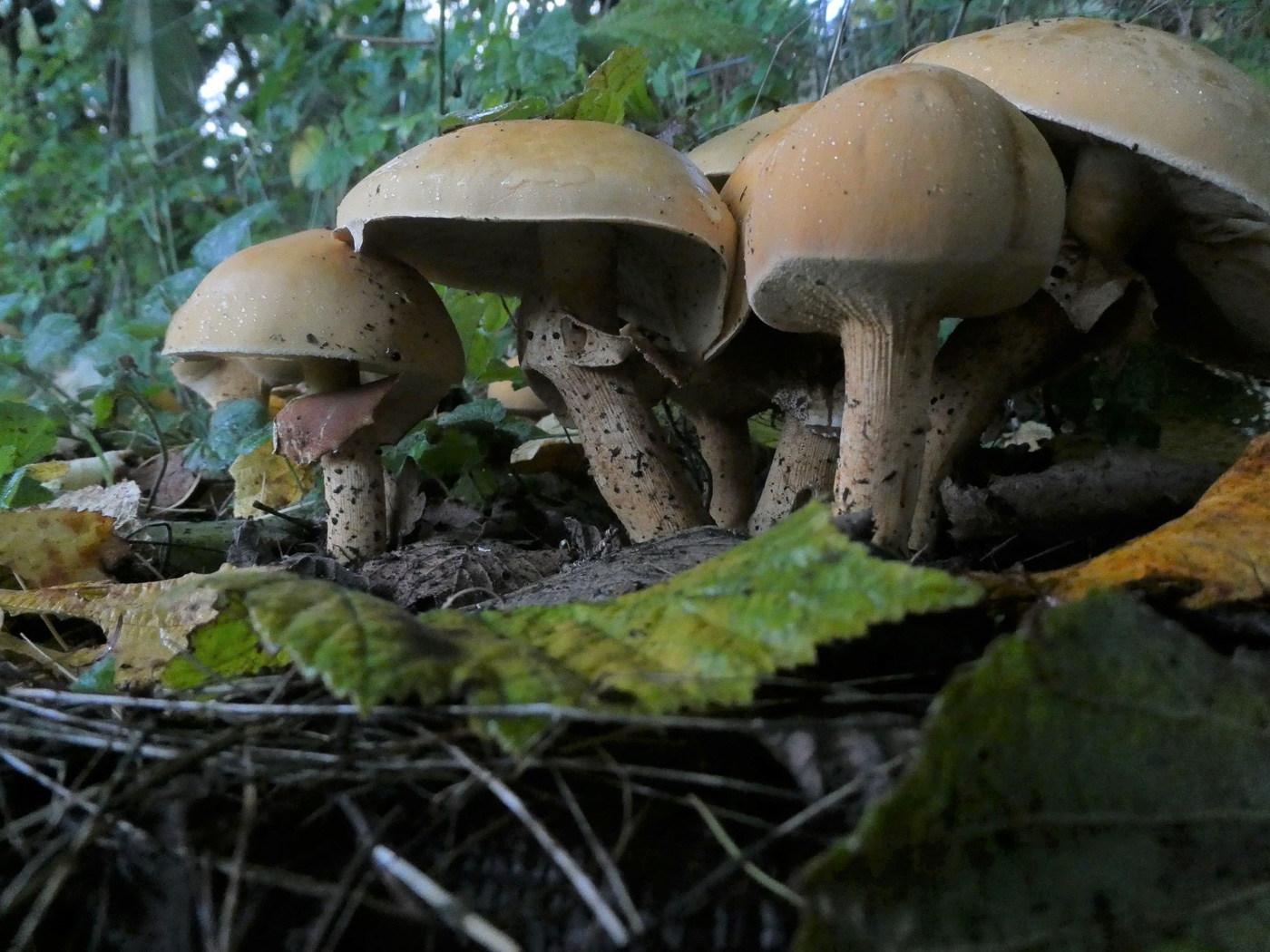
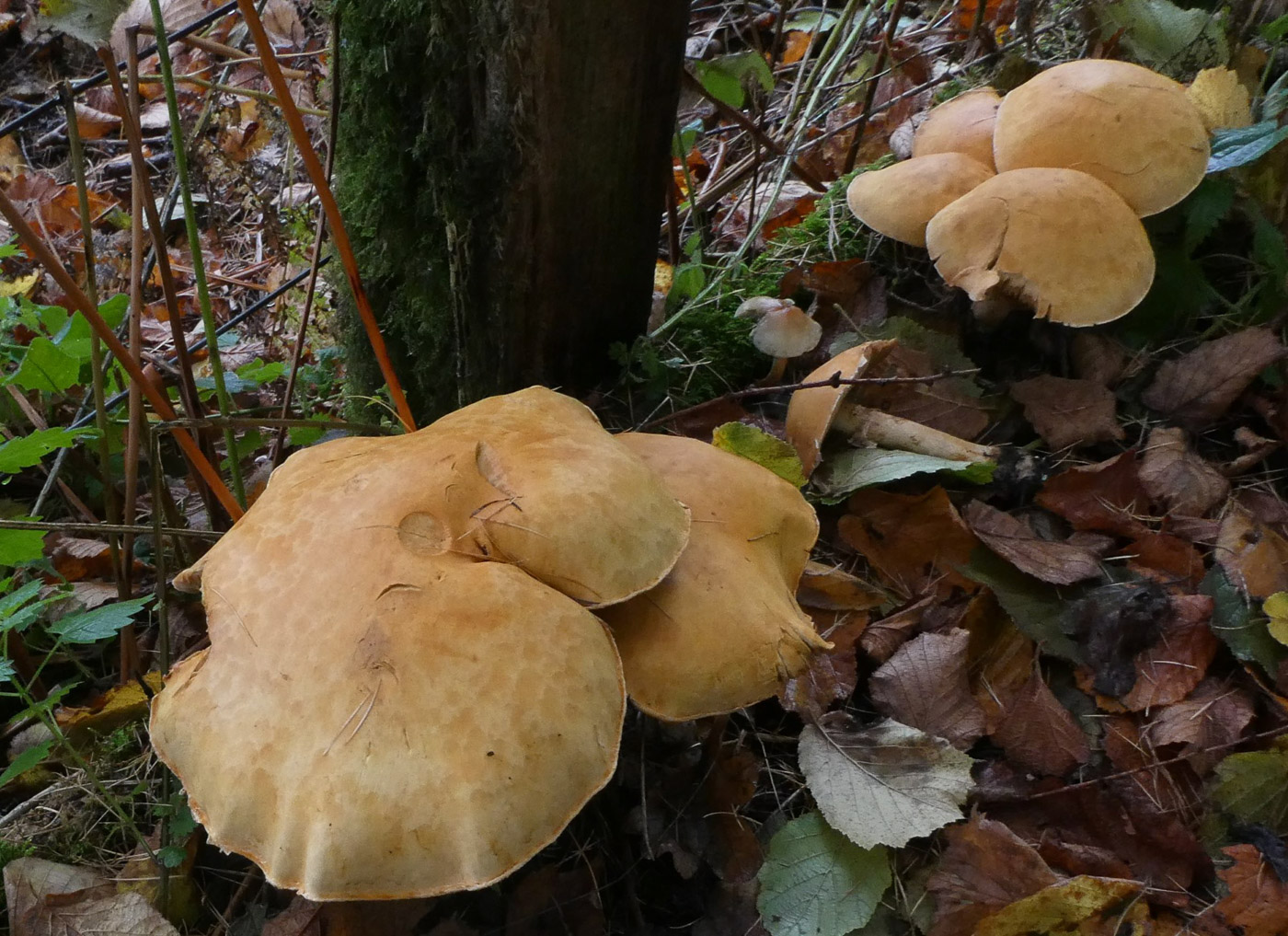
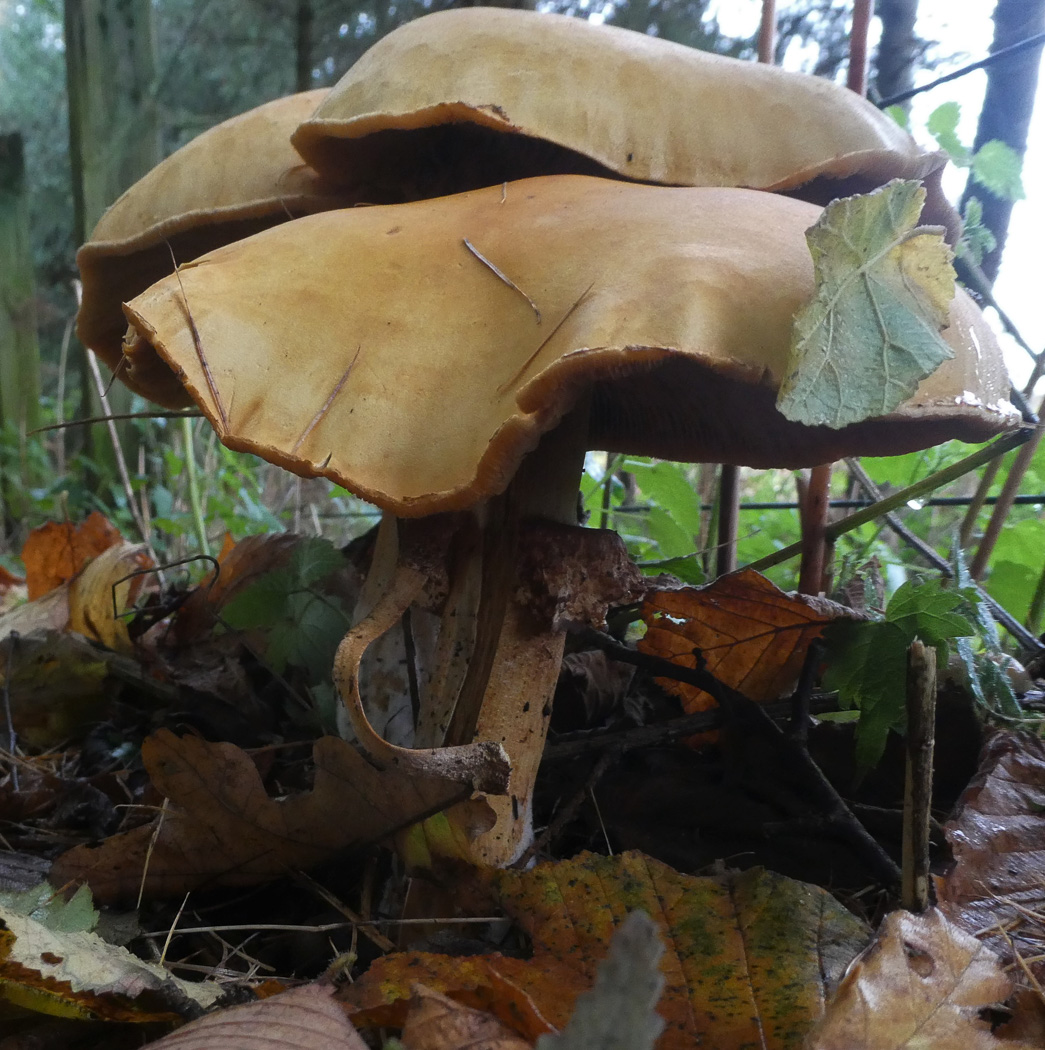 |
Phaeolepiota aurea (Golden Bootleg) 
Oct 22, 2023. Last year Jim Wills found this rare species in a grassy path edge in Chalfont St Peter and he reports that it is now up again in exactly the same spot! This is a large distinctive species with cap getting to 12 or 15 cms across, golden tan with a scurfy surface and the concolorous somewhat ridged stem has a thick membranous ring, seen here still in place and covering the immature gills, which eventually tears away from the cap as it expands leaving hanging remnants attached to both cap and stem. We have only a couple of previous records from Penn Wood as well as Jim's here last year.
Oct 25, 2022. A week previously Jim Wills sent Penny photo 1, suggesting this might possibly be young specimens of this rare and seldom seen fungus coming up in litter on a path in Chalfont St Peter. 'Yes' she said, 'and please keep your eye on it as it develops!'.She was then delighted to get today's photos showing the further developed specimens though still with some way to go but very obviously correctly identified by Jim. This is a large mushroom in some ways reminiscent of the genus Lepiota, but it has pale brown gills which are not free, a powdery cap surface and a thick membranous ring which, once detached from the cap edge, hangs down like a skirt - just visible on the LH specimen in photo 3. Jim returned and took photos 4 and 5 five days later when they were fully developed but sadly rather battered and bashed by weather and their rather exposed position in a public path! Nevertheless their size can be assessed by the Poplar leaf attached to one cap and the somewhat bedraggled brown ring is visible underneath. We have just two previous county records, both from Penn Wood in 2016 and 2020, so this was a significant find.
|
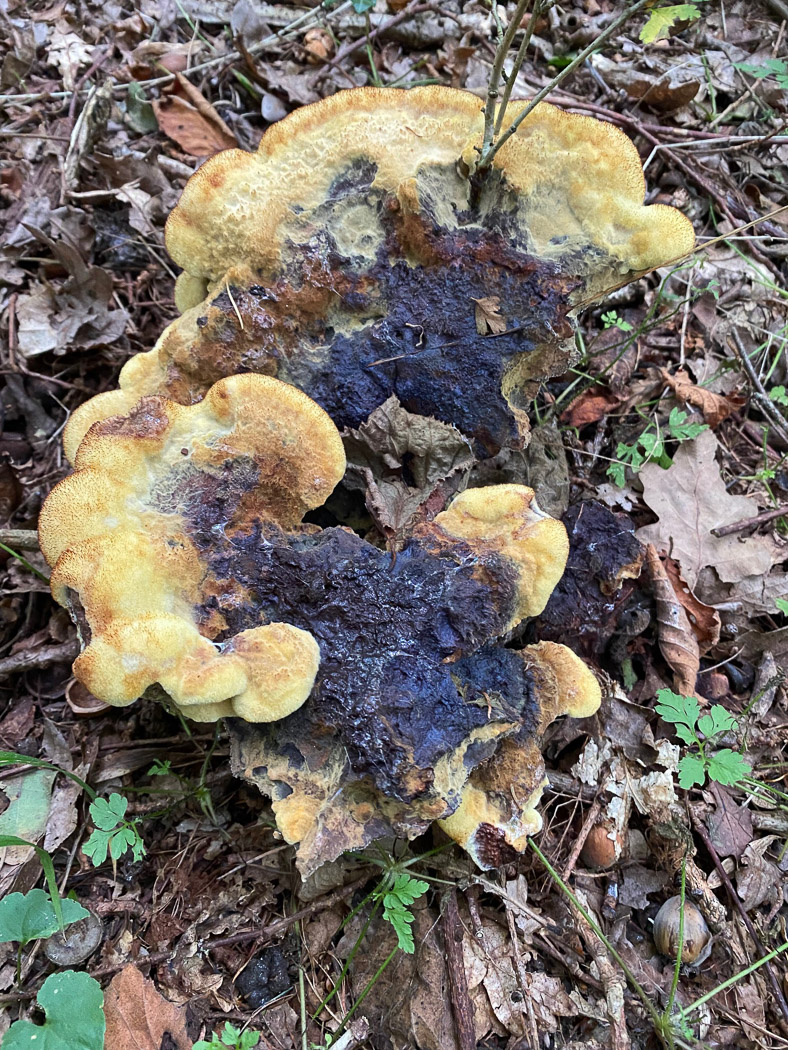


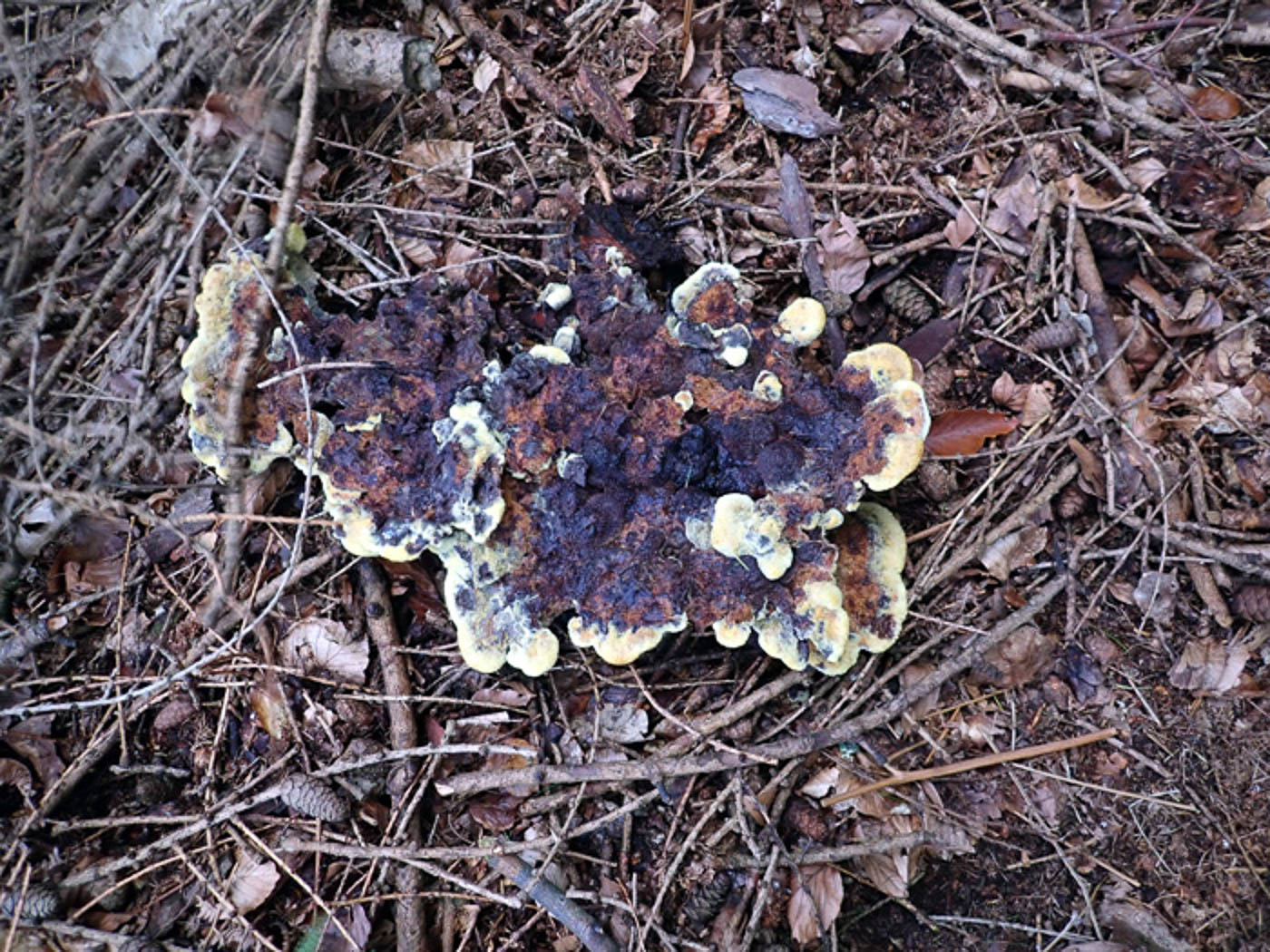
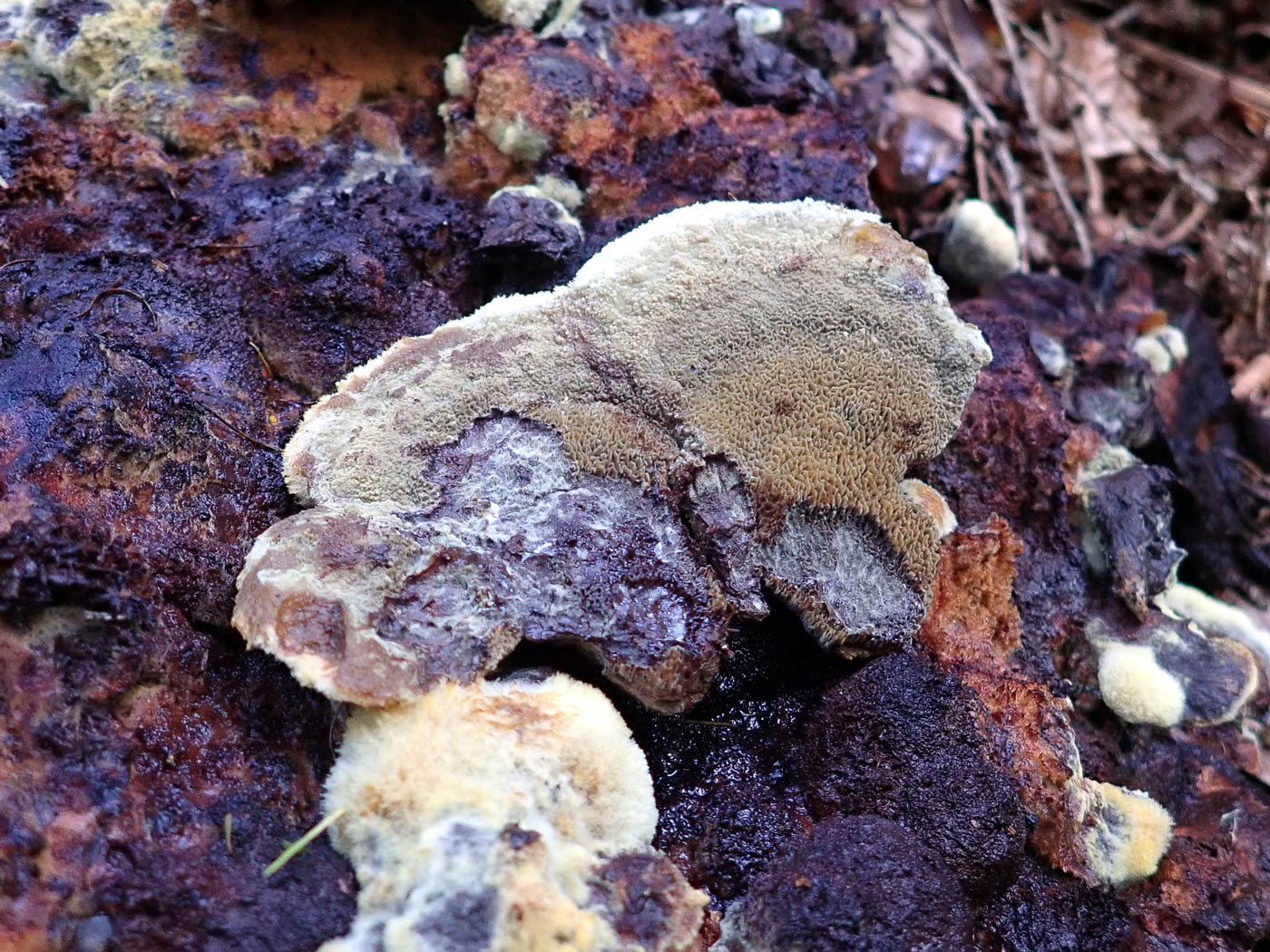
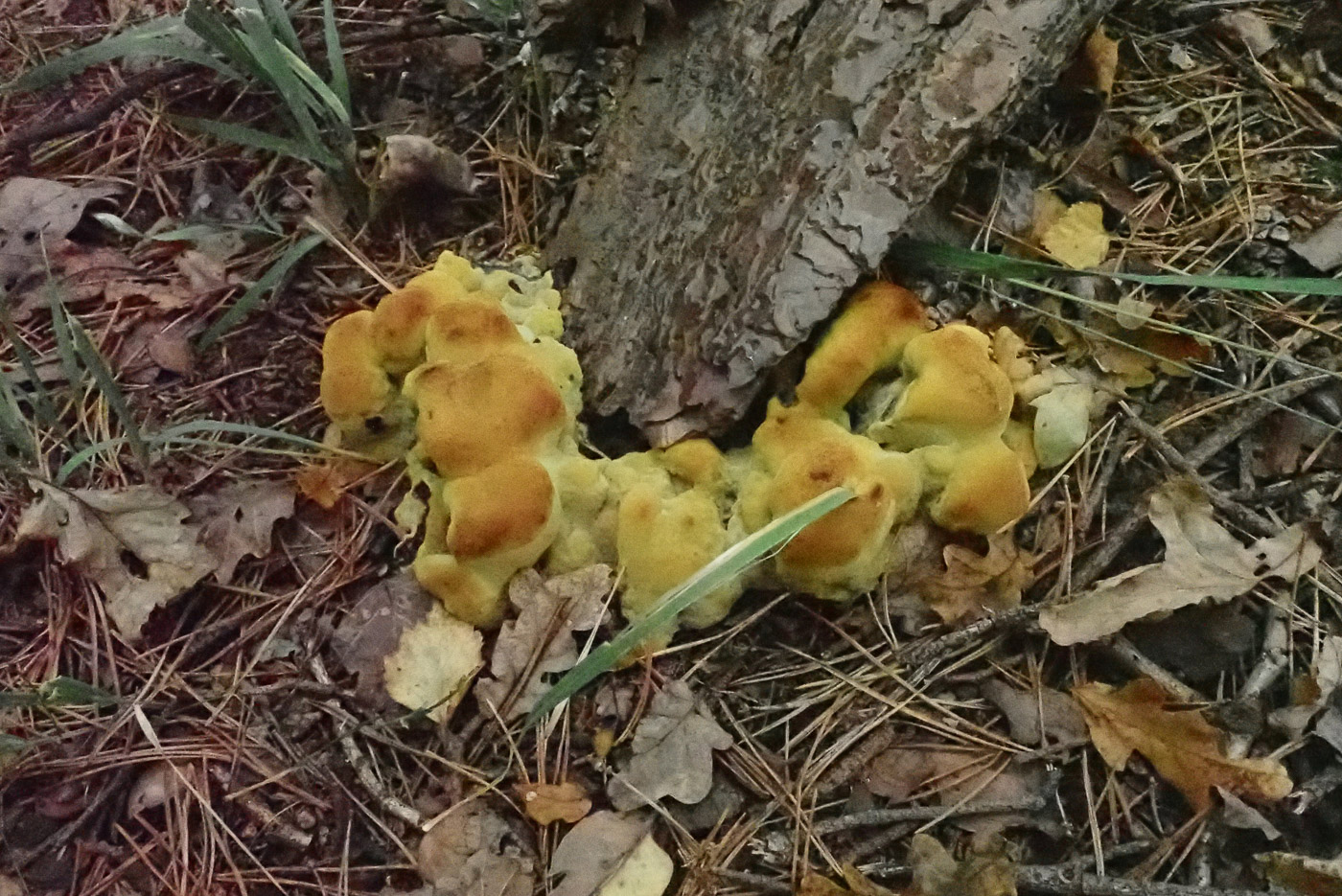
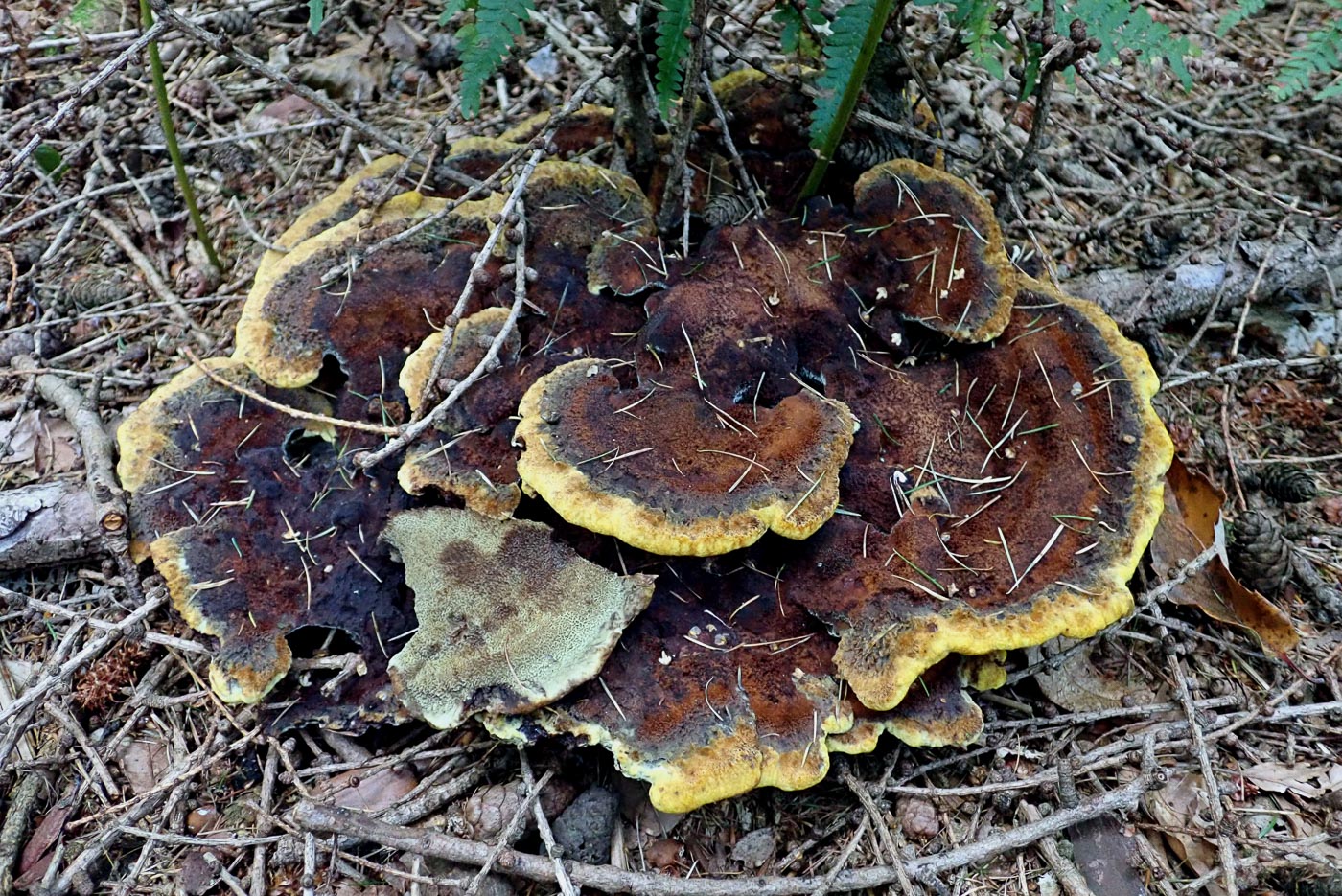
|
Phaeolus schweinitzii (Dyer's Mazegill)
Sep 20, 2024. In Bernwood Forest Chris Grimbly came across this impressive species at the base of a Pine. When fresh and young it appears soft and ochre yellowish with rounded edges though as it expands it hardens with darker reds and browns, becoming large dinner plate size. As the name implies, it has been used as a dye for material and wool in the past and is still used in this way by enthusiasts. It is always associated with conifers, growing on the roots usually quite near to the trunk.
Sep 26, 2023. At the base of a standing Pine in Burnham Beeches Jim found these strange looking yellow lumps, then looking online found they were a good match for the early stages of this bracket fungus. It only occurs on or near Pine and when mature it can get to dinner plate size or even larger and is an impressive thing. It is not rare but is always impressive to see and as the common name suggests it can be used to provide dye - apparently of various different shades - for wool etc.
Sep 24, 2022. Under the larches at Pullingshill Wood Penny located the stump where this species regularly fruits and was pleased to find it doing just that. The specimen was probably 1ft long but can get considerably bigger - certainly dinner plate size. Photo 2 shows a piece broken off and turned up-side-down to reveal its undersurface. Finds 2020 Sept 27th shows the species fruiting at the identical spot here, and 2021 October 27th shows a young specimen looking very different at Stoke Common.
Oct 27, 2021. At Stoke Common at the base of a fallen Pine and adjacent to Gymnopilus junonius (also dated today) was this strange rather lurid sickly green velvety lumpy fungus just emerging. Penny recognised it as the early stages of Phaeolus schweinitzii, though when fully mature the species looks nothing like this at all! It grows at the base of conifers and eventually forms large reddish brown dinner plate sized brackets. It used to be used to produce dyes, hence its common name.
Sep 27, 2020. This unusual-looking brackets was found by Penny Cullington at Pullingshill Wood at the base of a Larch stump. Not rare given its conifer host, most commonly Pine, it has softish texture and the dark centre with paler zones ending up with a yellow margin make it unmistakable. Often dinner plate size, the pores underneath have a greenish olive glint and turn dirty brown when pressed (seen at the bottom left of the photo).
|
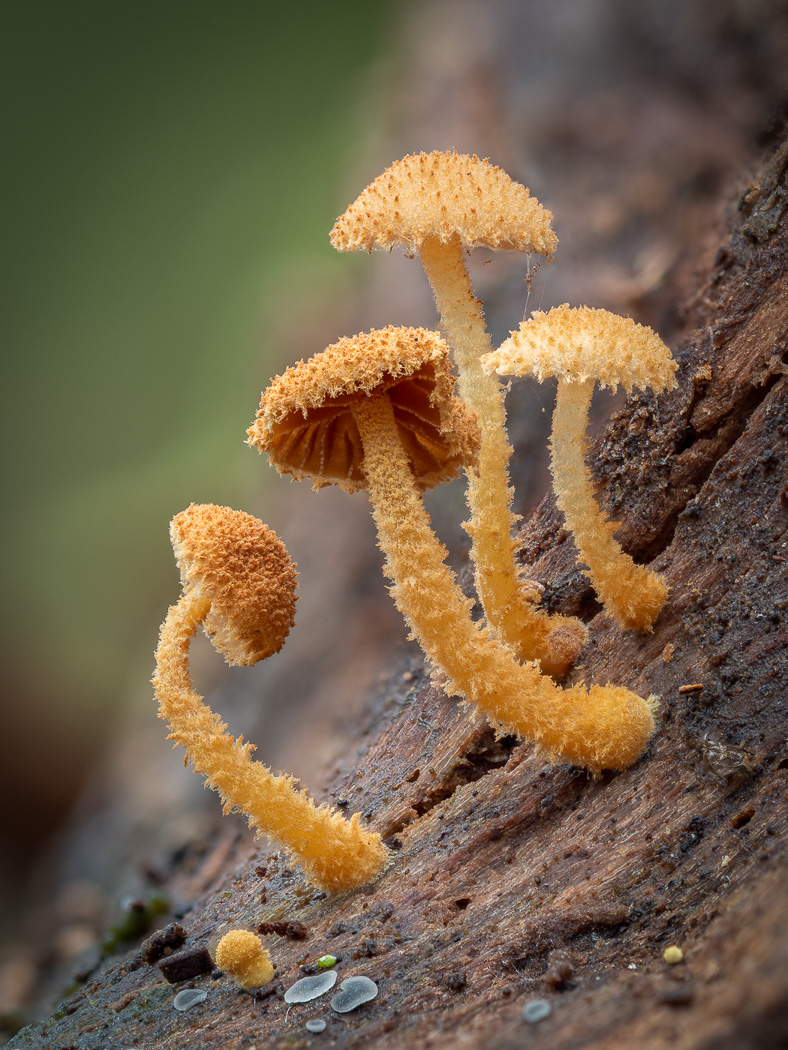 |
Phaeomarasmius erinaceus (Hedgehog Scalycap)
Oct 21, 2020. Barry Webb focuses (literally!) on Slime Moulds but in doing so comes across interesting fungi growing on the same rotting wood frequented by those organisms. This rare and stunning little species is one of these, found on a dead branch of Apple collected from Hedgerley Green and kept in Barry's greenhouse to see what it might produce! Though tiny, only up to about 2 cm tall at most and in this case half that size, it is unmistakable being the only species this size liberally covered in erect rusty scales. It is usually on dead Willow or Birch, occasionally on other deciduous wood and we have very few county records.
|
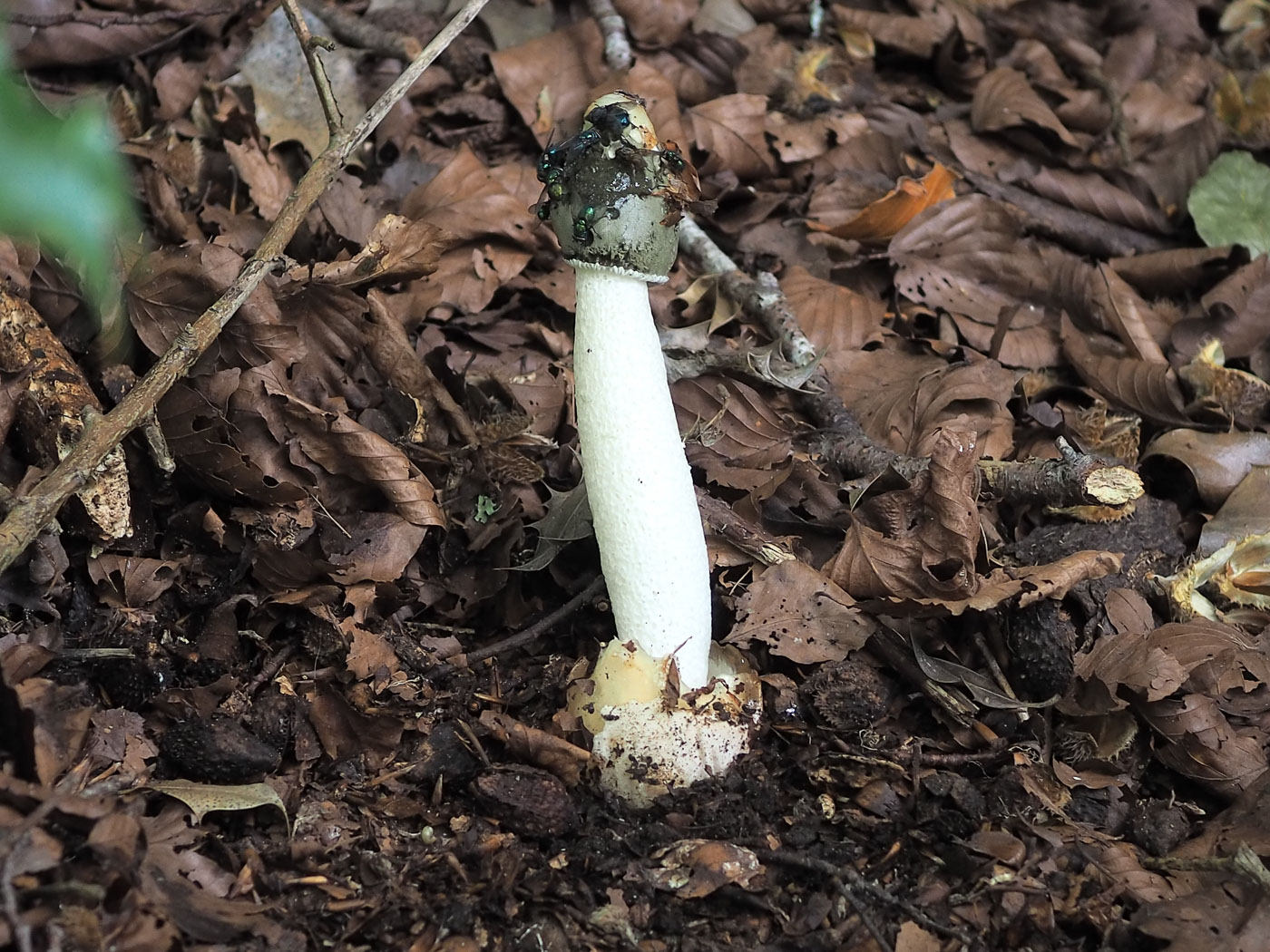


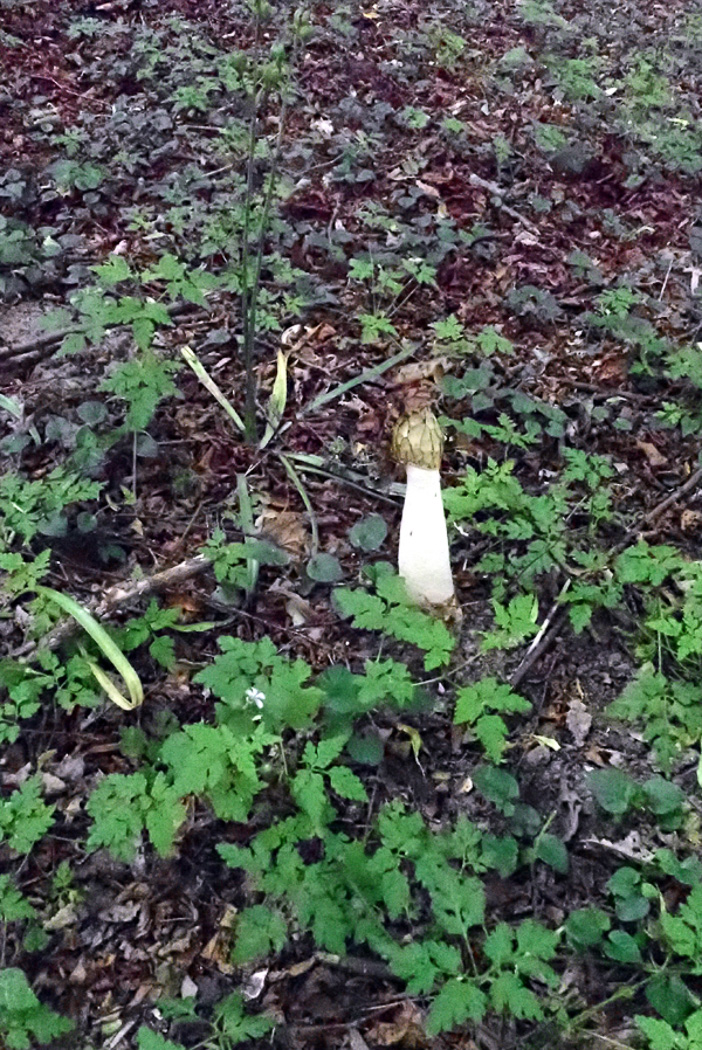
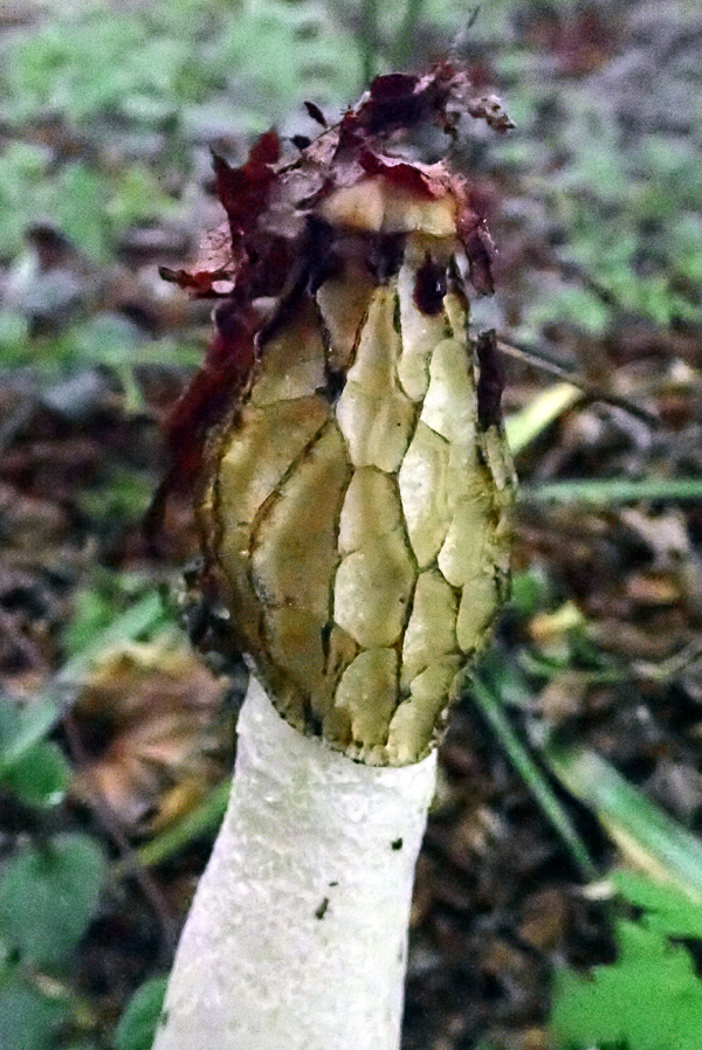
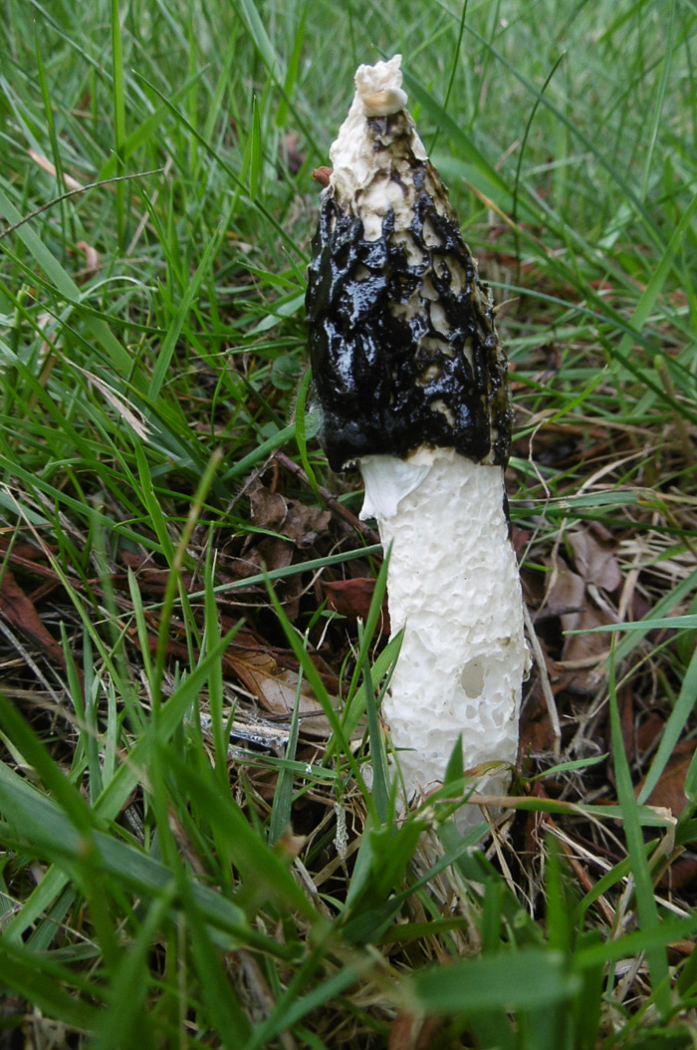
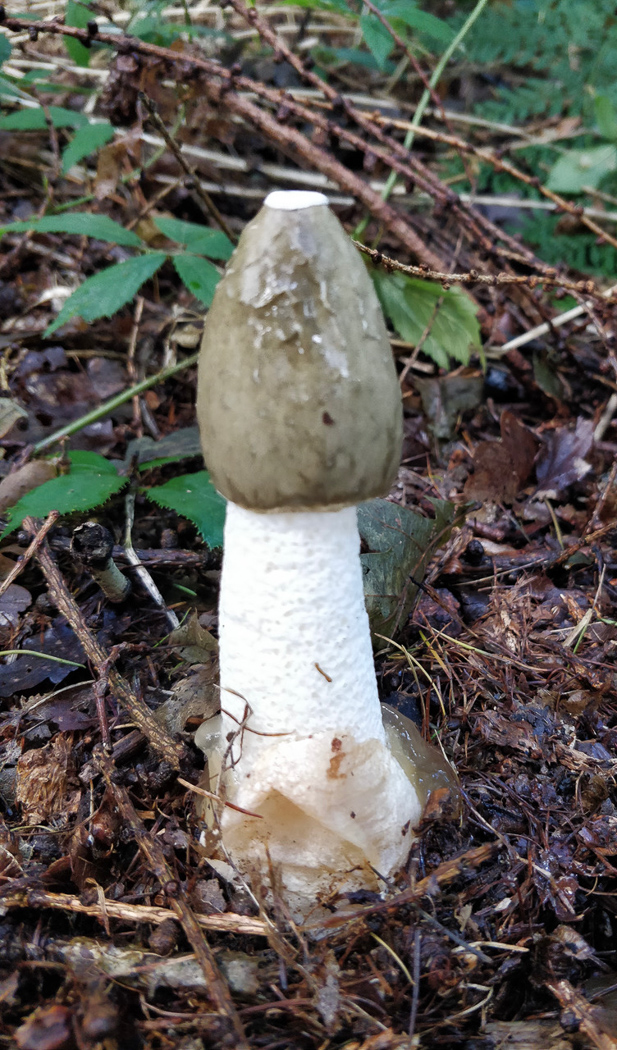
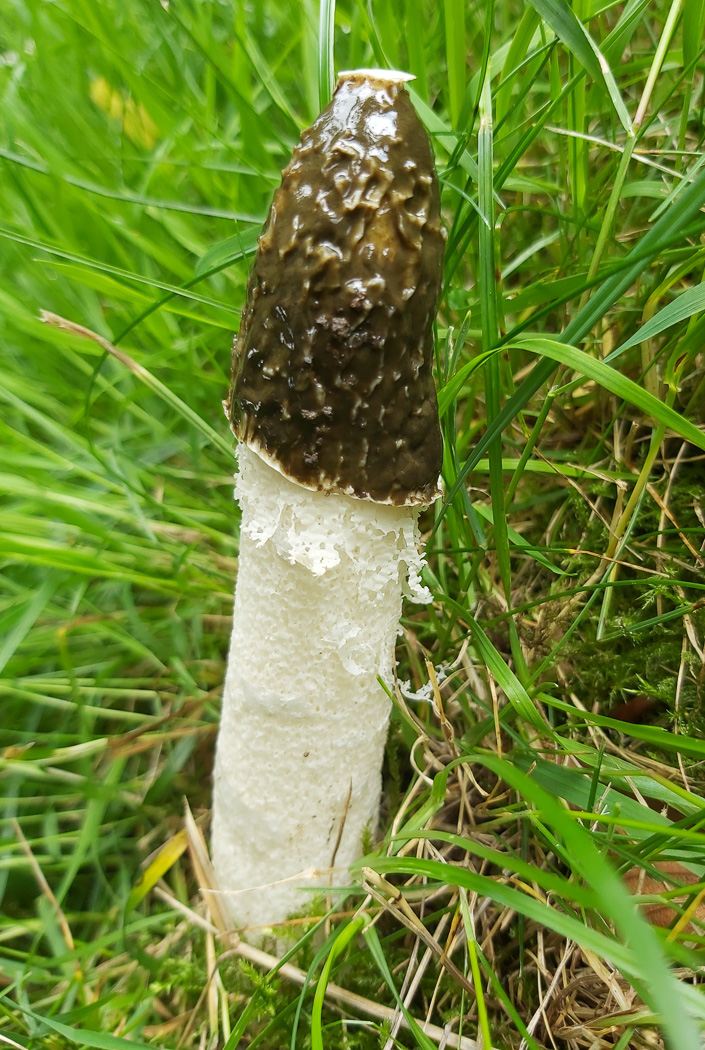
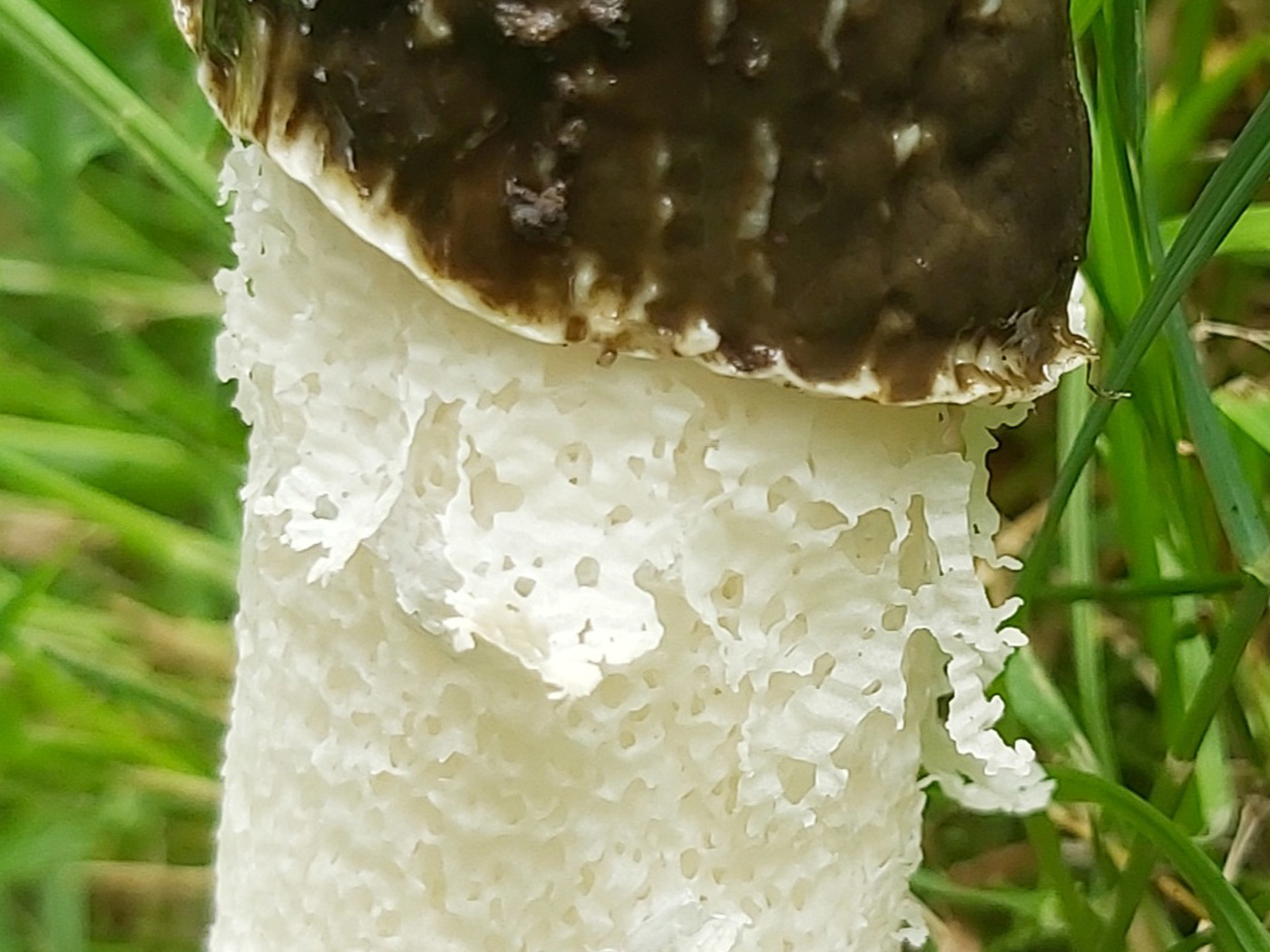
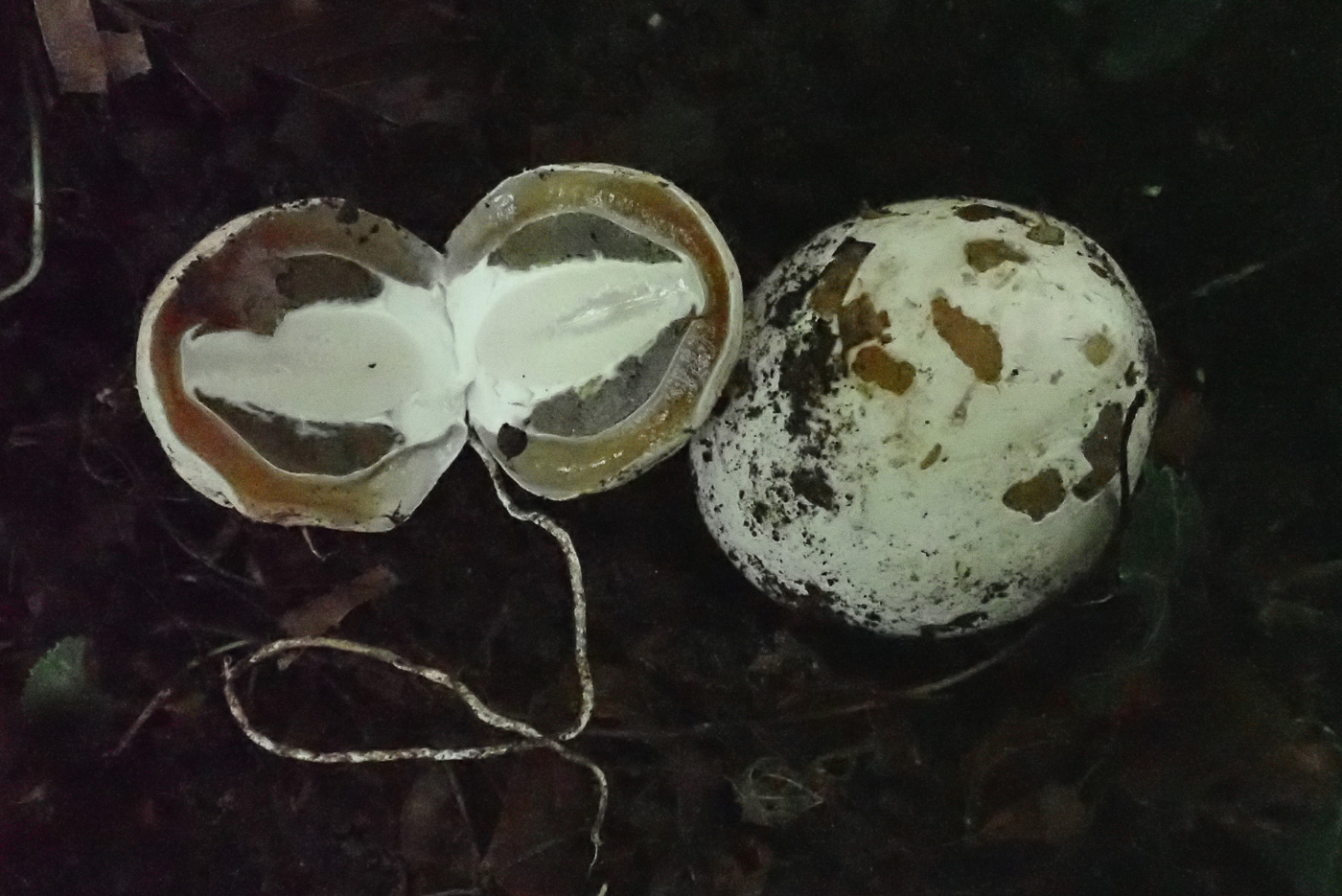
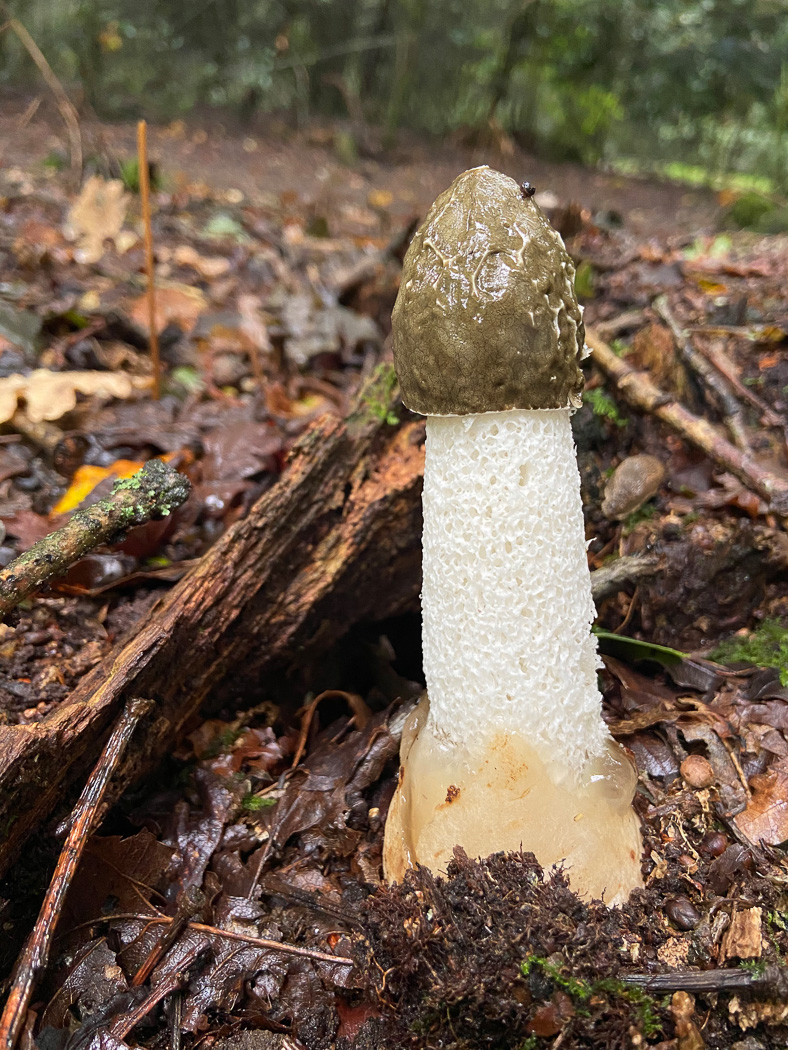
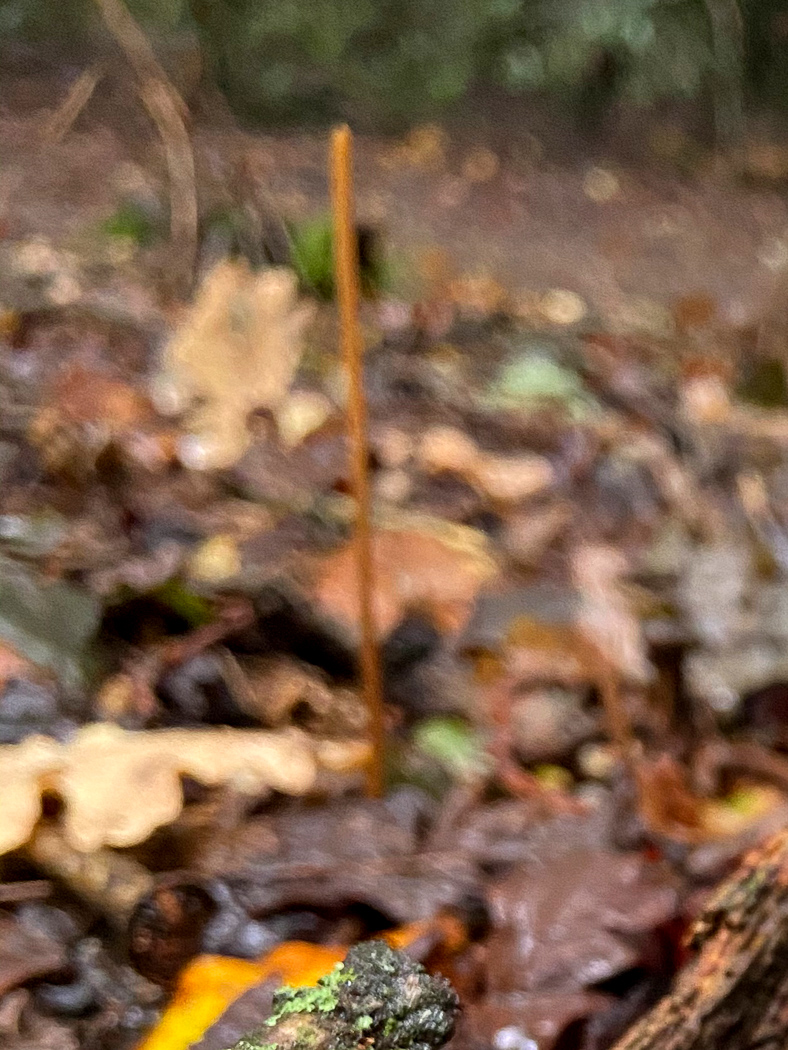
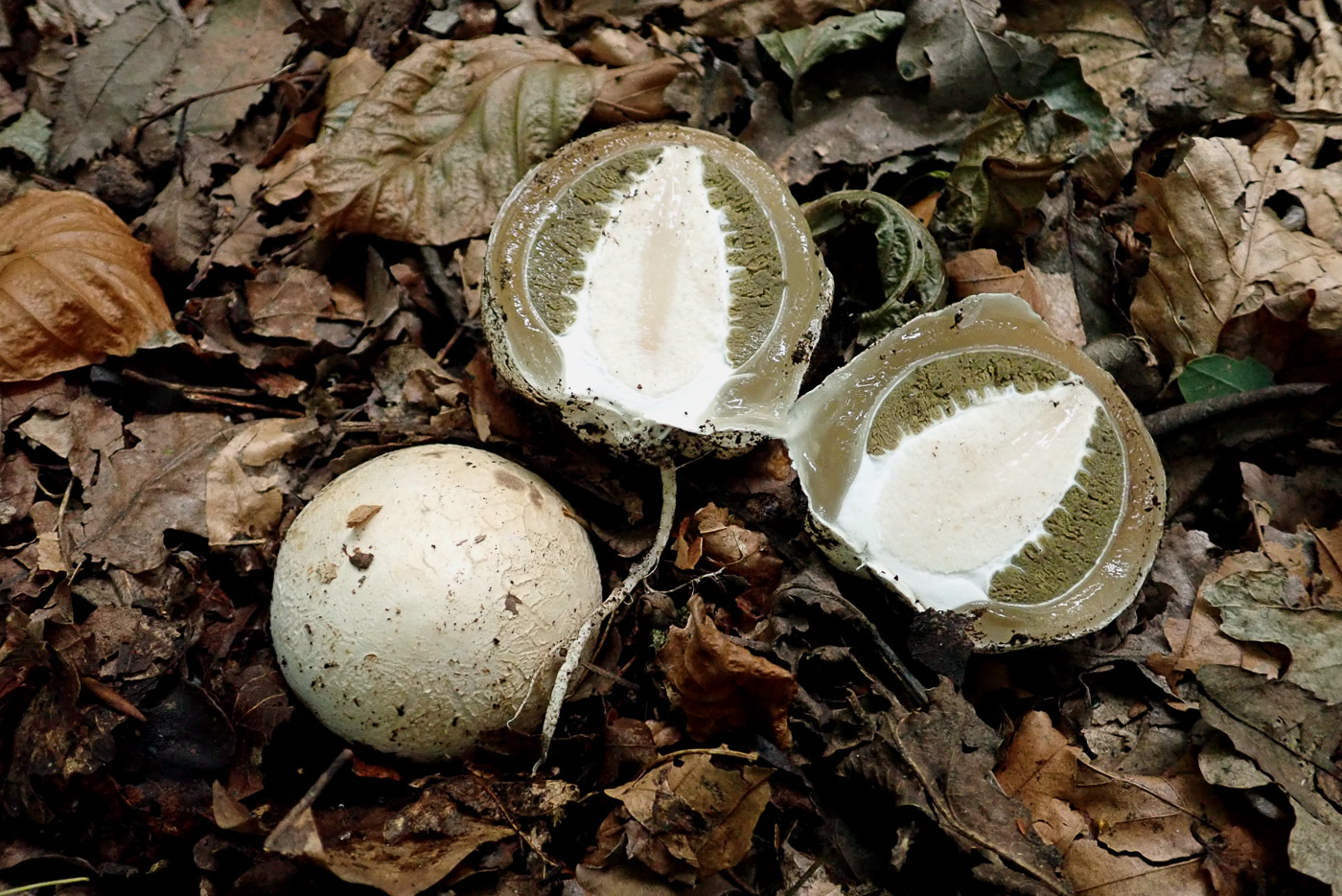
|
Phallus impudicus (Stinkhorn)
Aug 26, 2024. In Bottom Wood (near Piddington) John Catterson commented that he could smell a stinkhorn nearby, and Lesley then looked around to locate it! John's photo clearly shows the species at its smelliest with lots of the olive green gleba visible and attracting the hungry flies! The 'egg' from which it has emerged is also nicely visible here.
Jun 28, 2023. Under the Limes at Turville Heath Penny noticed this pair: one almost over with little olive green gunge left by the flies etc and the other still at the egg stage, so very little disgusting smell to give away their presence. This is quite an early fruiting but amongst our hundreds of records are a few from June, even the odd one from May, so not an exceptional find today.
Jun 13, 2022. Under Lime in litter at Turville Heath Penny noticed this standing proud at some distance away, but as she went closer both the smell and the shape soon told her its identity.
May 21, 2022. In her garden in Marlow Ann Pitwell first smelt and then found this early fruiting Stinkhorn. Checking our database Penny found that our earliest previous record for the species is May 31st 20 years ago!
Oct 3, 2021. In College Wood Bob Simpson found this impressive and no doubt smelly specimen which must have only recently emerged as the jelly egg is still to be seen at the base and the top section is still perfectly in tact and yet to be devoured by insects. The heavy rain of the previous day had clearly triggered the egg into expanding and once this happens it can grow in a matter of hours.
Jul 11, 2021. At the bottom of his Jordans garden this morning Jesper Launder noticed this interesting variety of our common Stinkhorn which has the beginnings of a delicate white network developing just under the green spore-bearing head (know as an indusium - see photo 2). This variety is not common and we have just one previous record from Bradenham Wood in 2004. There exists another very impressive species, P. indusiatus, which has a complete network, though very rare in this country it is quite common in subtropical areas. Try Googling the latin name for some wonderful images.
Jun 21, 2021. At Turville Heath in litter under Small-leaved Lime Penny found two Stinkhorns at the 'egg' stage. Splitting one in half revealed the undeveloped head of this familiar species with its dark olive green coating visible even at this stage, all surrounded by a thick gelatinous covering. Note also the long thin white mycelial strand which attaches it to the substrate. These eggs would take just a day or so to fully develop into the the familiar stinking fungus we know and love(!), the smell of which attracts many species of insect which oblige by devouring the coating thus dispersing its spores.
Oct 8, 2020. Sarah Ebdon found this perfect specimen in woody litter in Naphill Common. Note the remains of the egg-like sac still at the base, from which the stem is still emerging. Note also the slimy olive greeny brown top which has a (to us) disgusting smell with which to attract insects of many kinds. The insects then consume this part and in doing so spread the spores for the fungus. The sharp eyed amongst you will notice the insect doing just this to the right of the top. The even sharper eyed amongst you might be able to pick out another completely different fungus (which Sarah wasn't aware of) in the photo! So I've enlarged the rather blurred but clearly recognisable shape of Macrotyphula fistulosa (Pipe Club) which is off to the left off the Stinkhorn.
Sep 26, 2020. Penny Cullington found these in litter in Naphill Common, though only in the egg state. She could tell from the lack of smell that no developed fruit bodies were around. Note the thick gelatinous outer layer which protects the developing fungus, recognisable even in this state when sliced open, also the strands of white mycelium at its base. It is only when expanded that the offensive smell gives away the presence of any fruit bodies nearby.
|

 |
Phallus impudicus var. togatus (Stinkhorn)
Jul 11, 2021. At the bottom of his Jordans garden this morning Jesper Launder noticed this interesting variety of our common Stinkhorn which has the beginnings of a delicate white network developing just under the green spore-bearing head (know as an indusium - see photo 2). This variety is not common and we have just one previous record from Bradenham Wood in 2004. There exists another very impressive species, P. indusiatus, which has a complete network, though very rare in this country it is quite common in subtropical areas. Try Googling the latin name for some wonderful images.
|
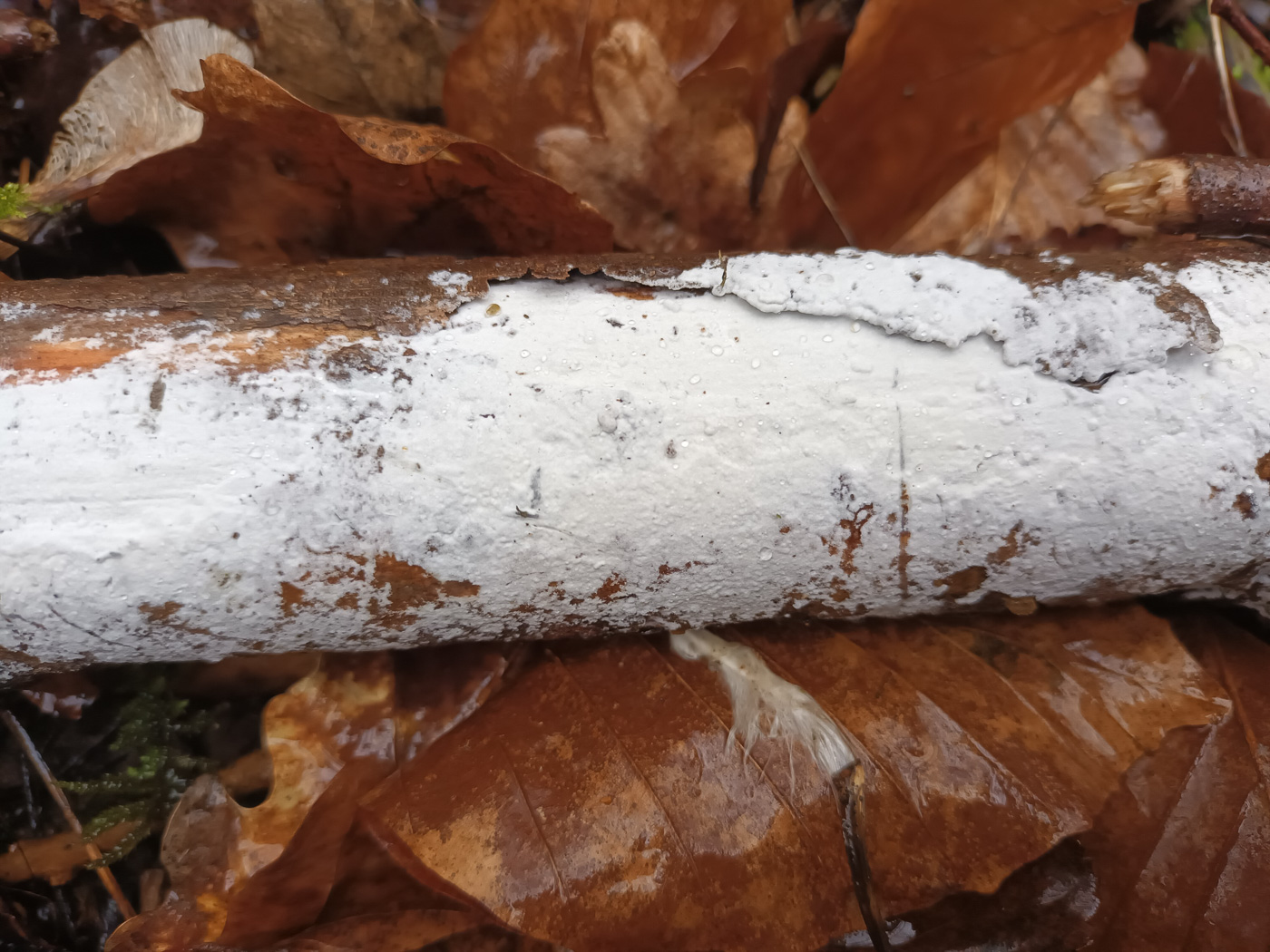
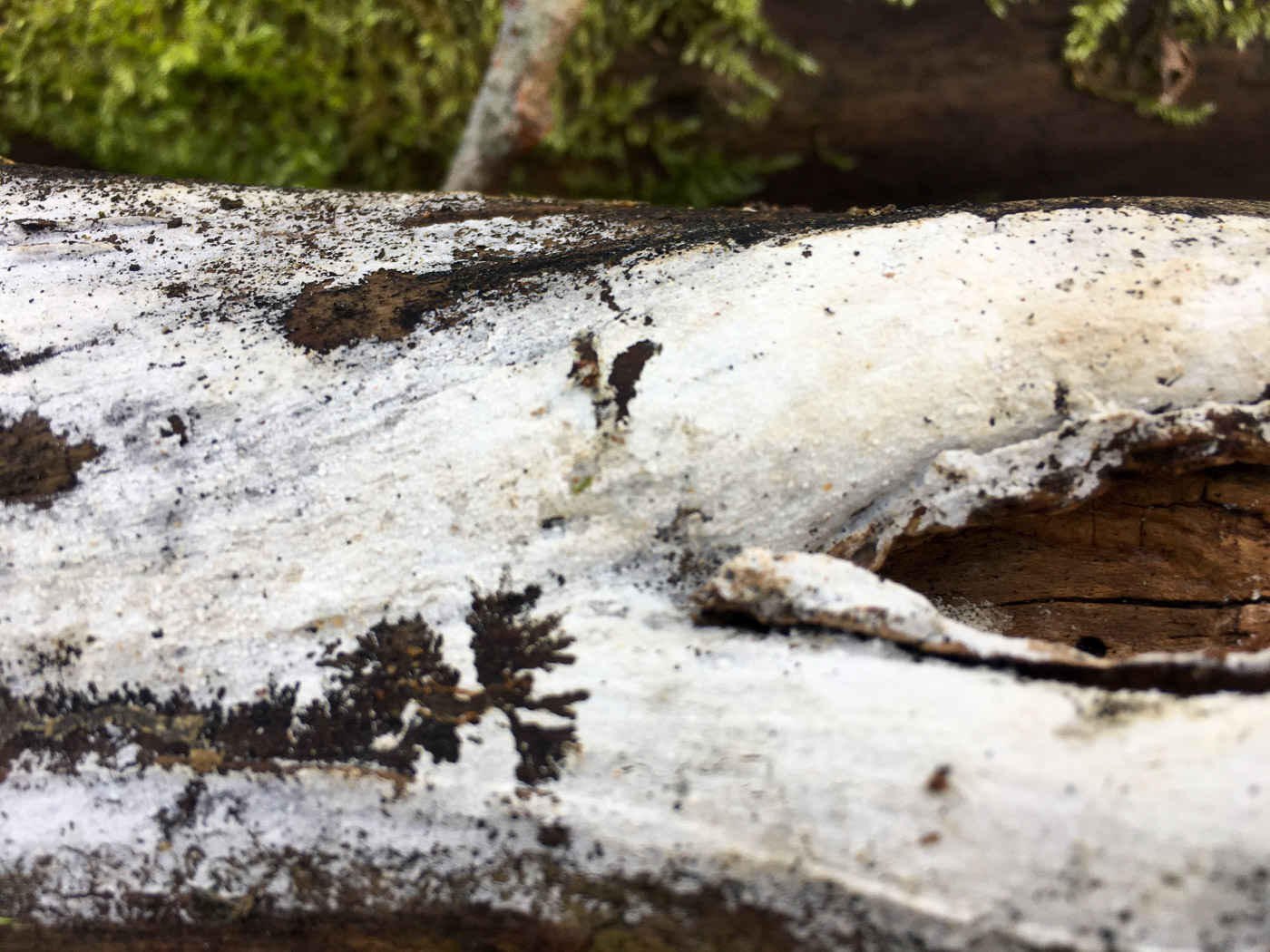 |
Phanerochaete sordida (a corticioid with no common name) 
Feb 15, 2022. On a deciduous stick in woodland near Chalfont St. Peter Jesper Launder collected this corticioid sample to take home and work on. This is yet another example of the many 'patches of white paint' on fallen wood, the vast majority of which need skilled microscopic study to name. This genus has distinctive cells which help but as there are about a dozen species within the genus it is not always simple to separate them. We have about 10 previous county records though only one in the last 20 years - from Dancersend in 2021, collected by Claudi Soler and subsequently identified by Alick Henrici. Joanna Dodsworth identified this species from Brill the following day (photo 2) so in true London bus style we have nothing for 20 years then two come along at once!
|
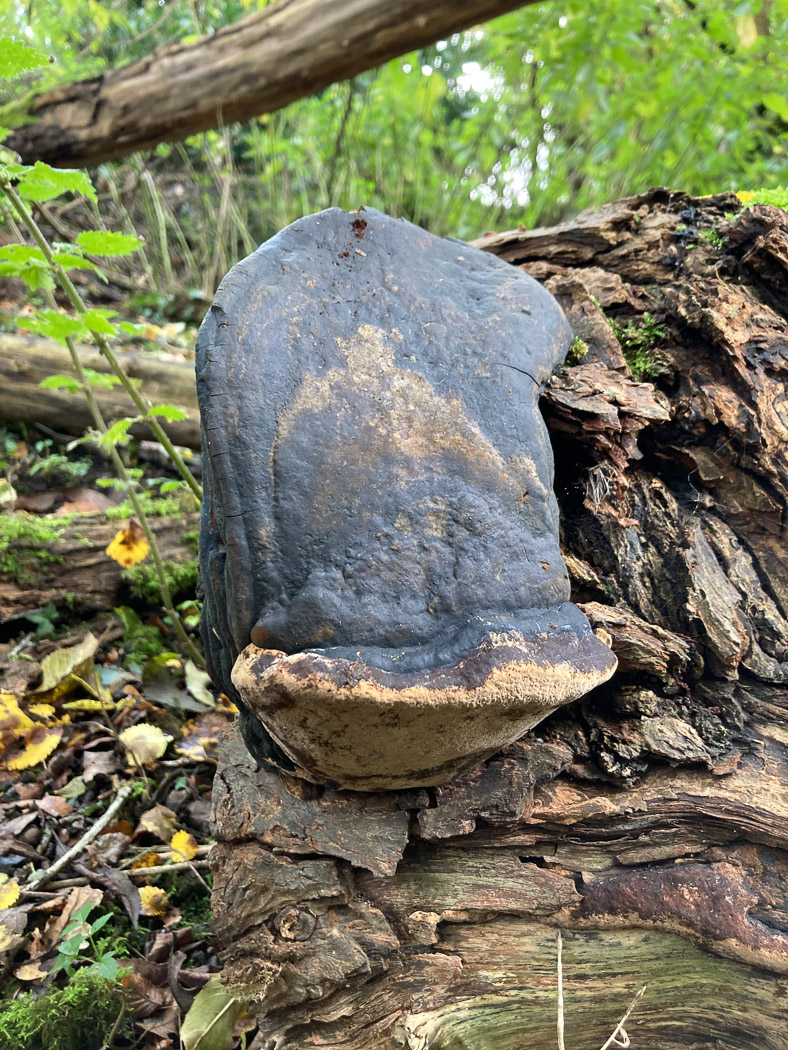
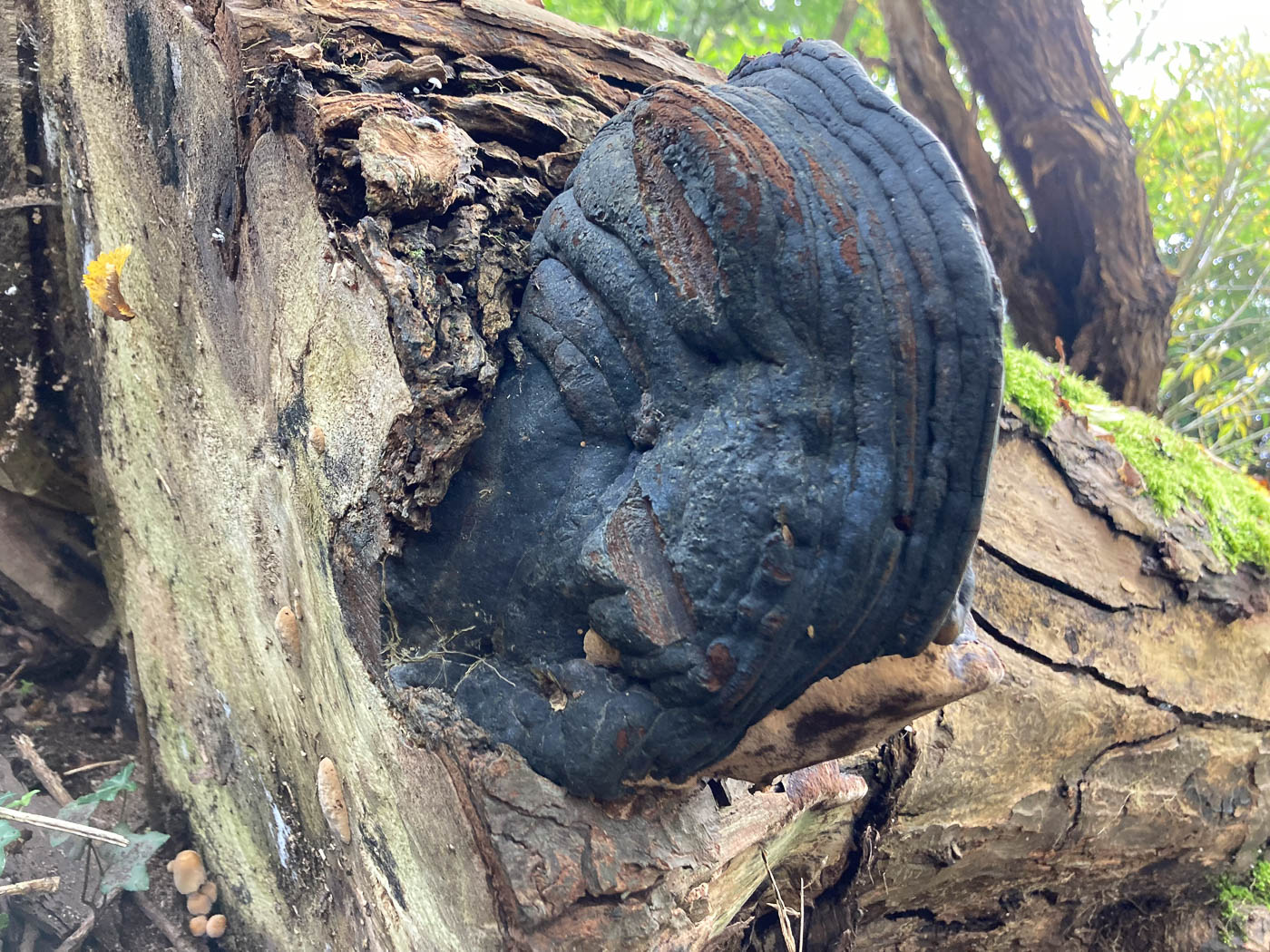 |
Phellinus igniarius (Willow Bracket)
Oct 17, 2024. In Burnham Beeches Russell Ness noticed a couple of these solid hooflike brackets on Willow, took his photos then researched at home to discover its identity. Superficially similar to Fomes fomentarius (Hoof Fungus) - now becoming quite common at this site but only occurring on Birch - this is another large perennial species which favours Willow and here was clearly well established on a Willow which had fallen but was continuing to support the fungus. Though there are plenty of UK records we have only one previous county record dating from 1978 in Denham where found by the well-known natural history author Roger Phillips and identified by Derek Reid, then president of the BMS. So Russell is in good company!
|


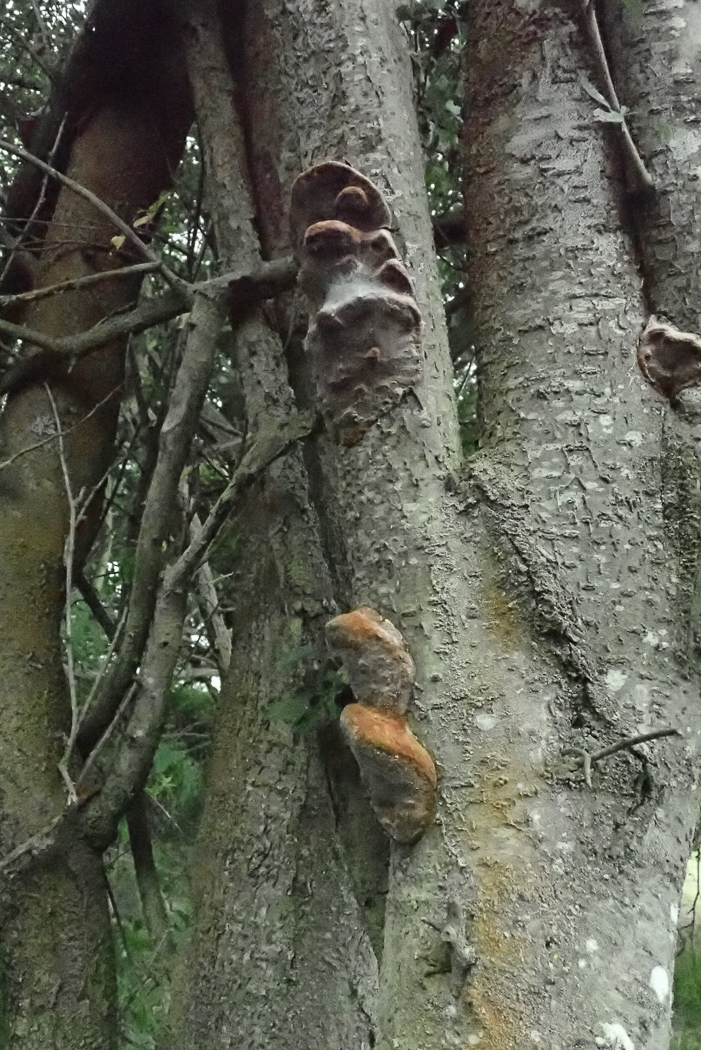
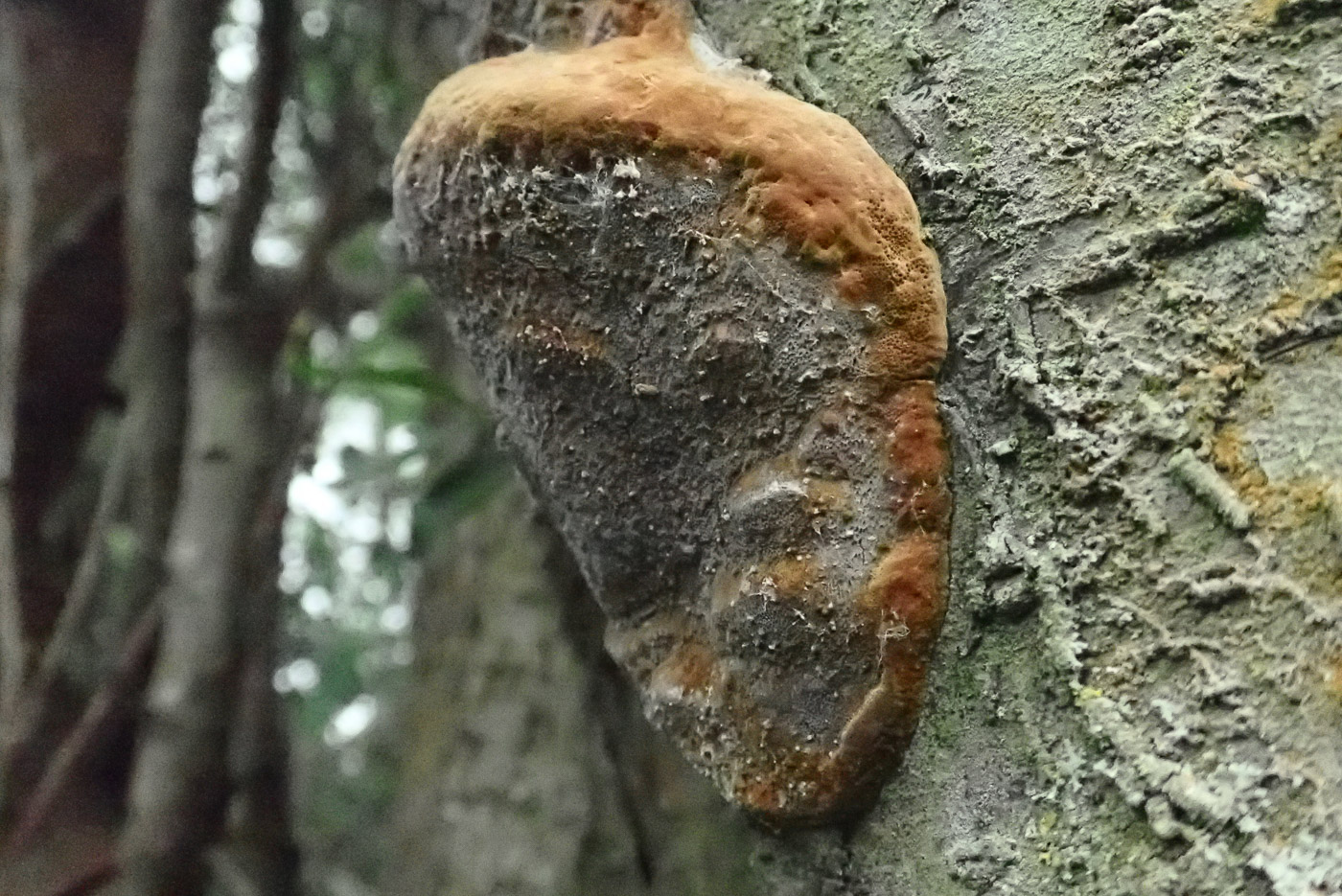 |
Phellinus pomaceus (Cushion Bracket)
Feb 1, 2022. At Stampwell Farm Jackie Ewan noticed this species fruiting on an old Plum tree where it appears every year (as it also does at Rushbeds Wood on the closely related Blackthorn - Penny saw it there today also but didn't have a camera handy!). It is a species confined to Prunus and as such is quite an easy one to recognise.
Aug 13, 2021. In Rushbeds Wood Penny found this bracket on a Blackthorn tree where it regularly occurs. A perennial species which only grows on Prunus of various types, mature Blackthorn is a favourite host making it an easy bracket fungus to name wherever the host tree is prevalent. We have many county records though mostly from this site.
|

 |
Phellodon cf. melaleucus  (Grey Tooth) (Grey Tooth)
Nov 3, 2023. Penny went to Pullingshill Wood to check on the clump of the rare Hydnellum concrescens found here a few weeks earlier (see the October 10th entry) and to her delight found it was really flourishing but just emerging through the moss beside it was another equally rare toothed species, which was black rather than brown so clearly different. A sporeprint of a small sample revealed tiny white ornamented spores (making this Phellodon rather than Hydnellum which has tiny brown ornamented spores), and its colour with the white rim suggests P. melaleucus (though P. niger is almost identical and this is a species complex yet to be finally unravelled) so the sample will be sequenced. Our only county sites for this species are this one and Burnham Beeches, when found by Hydnoid expert Martyn Ainsworth back in 2008 / 09 - another new entry for Finds.
|

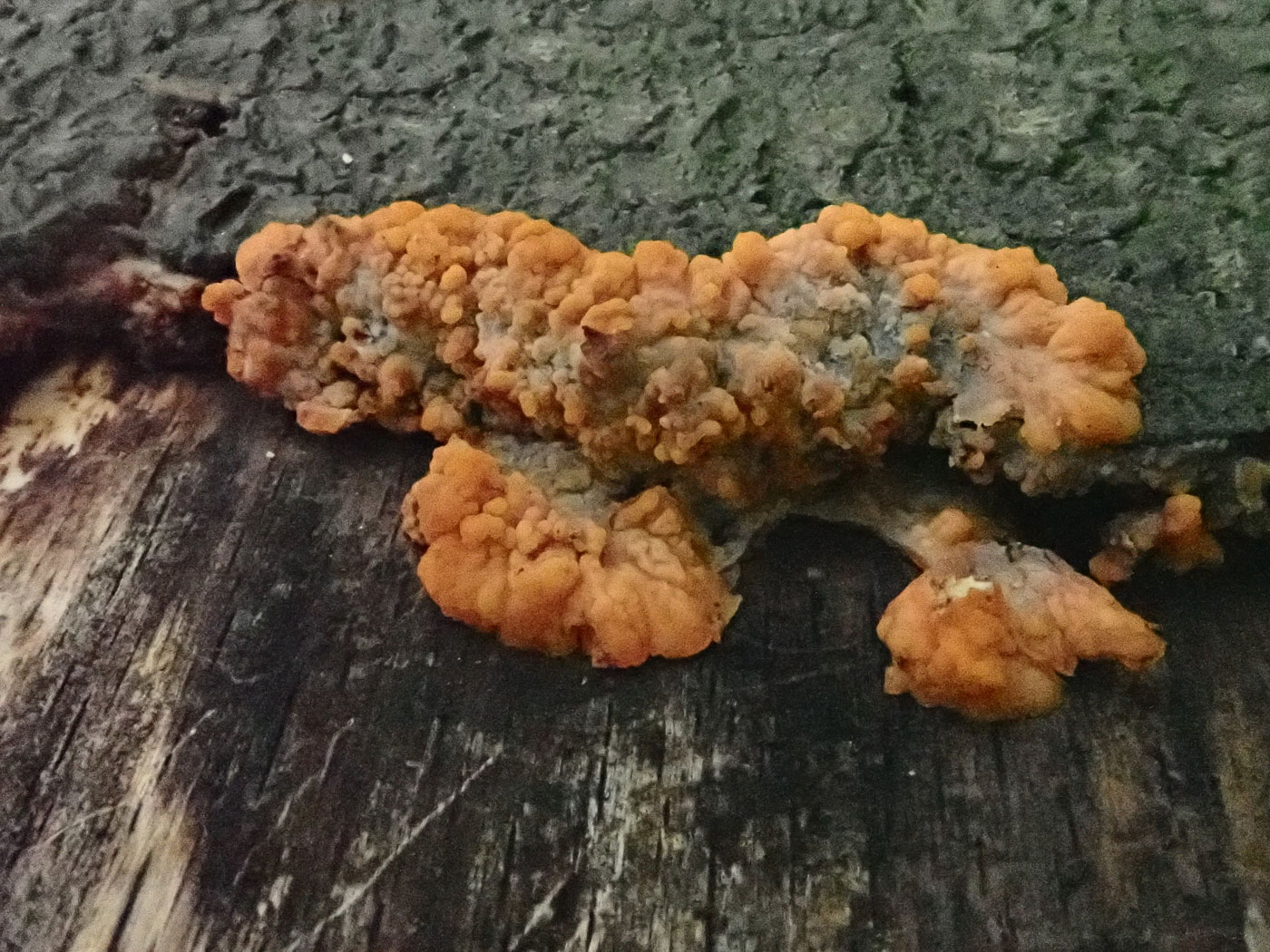
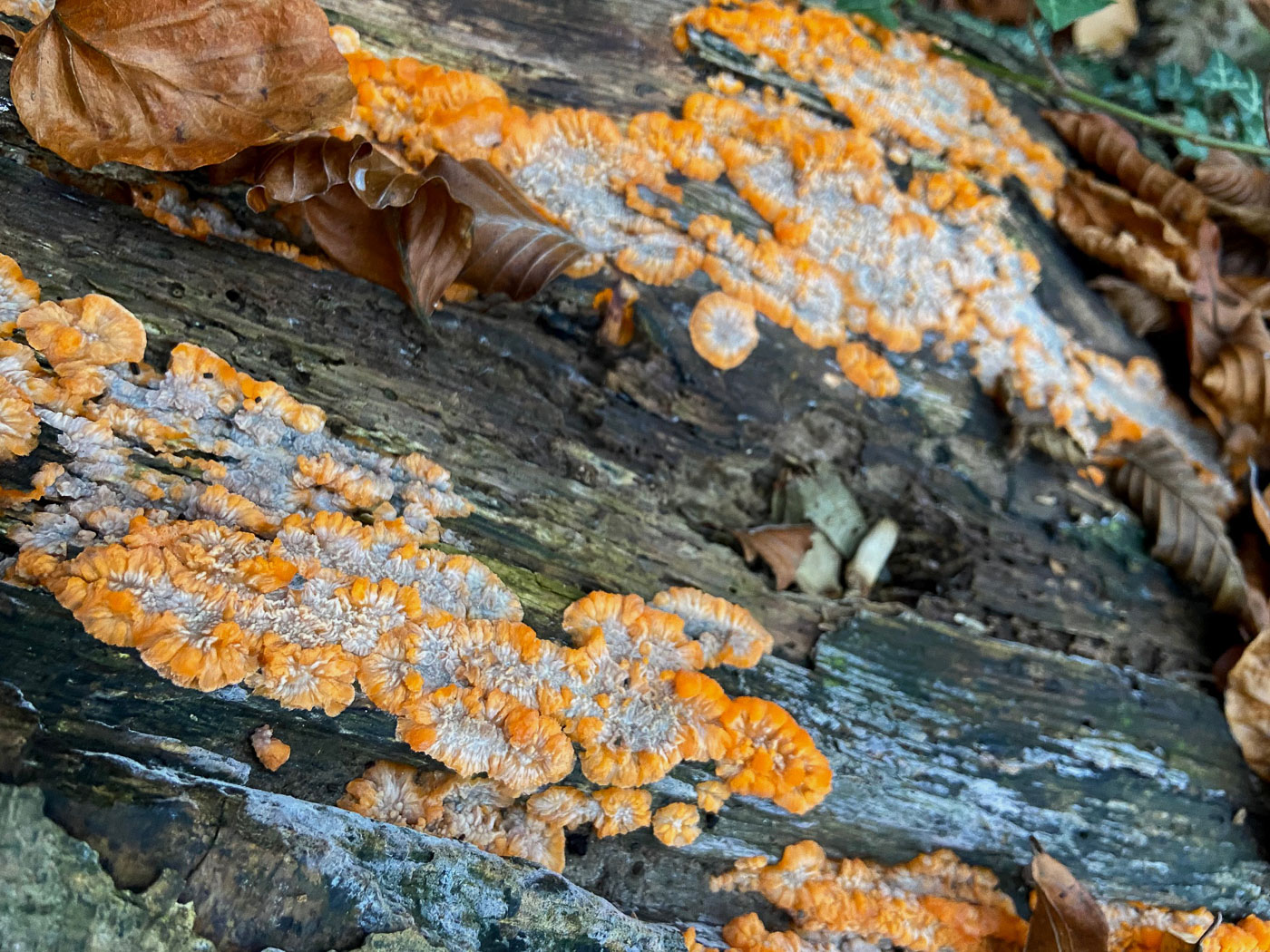
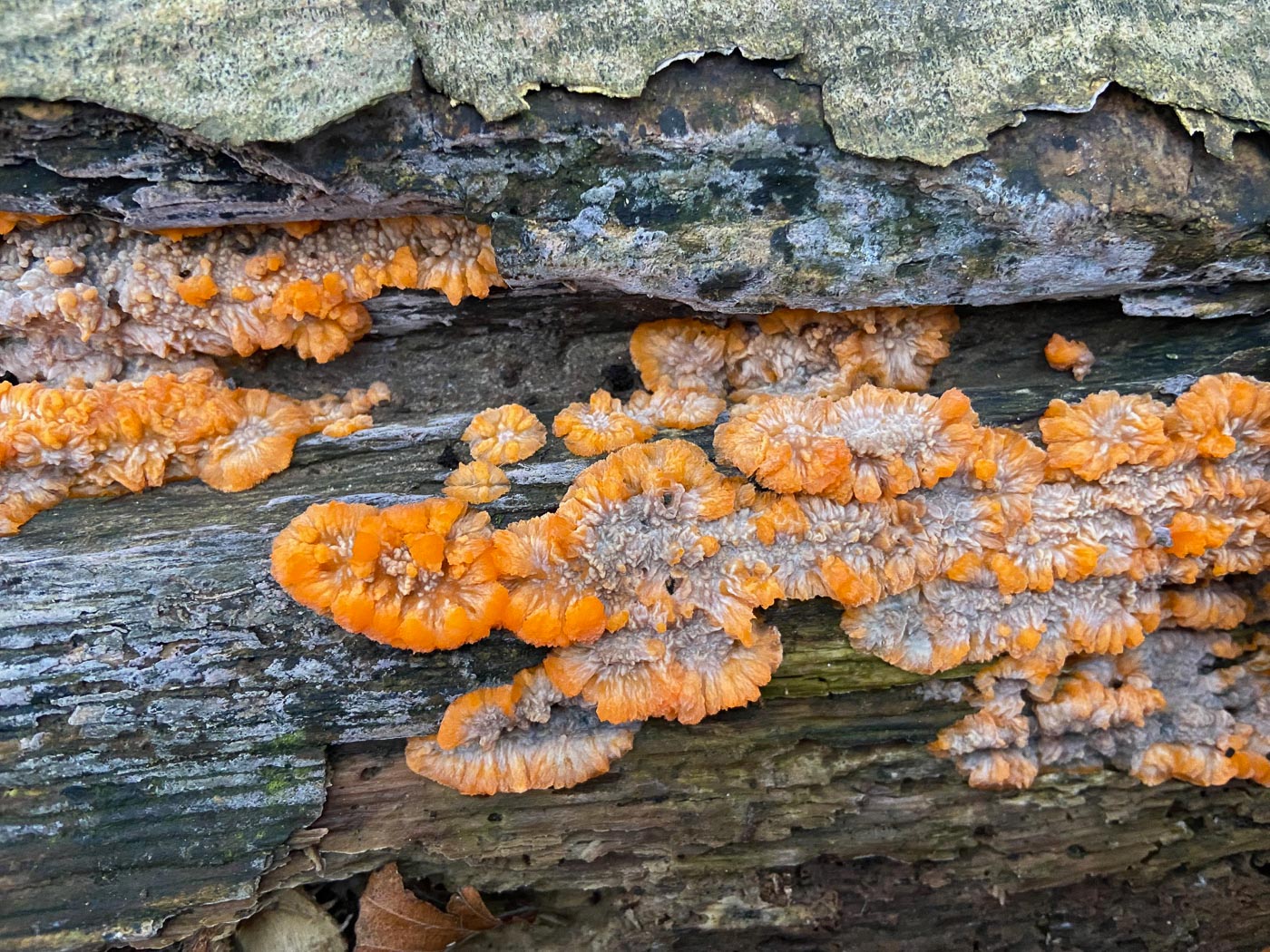
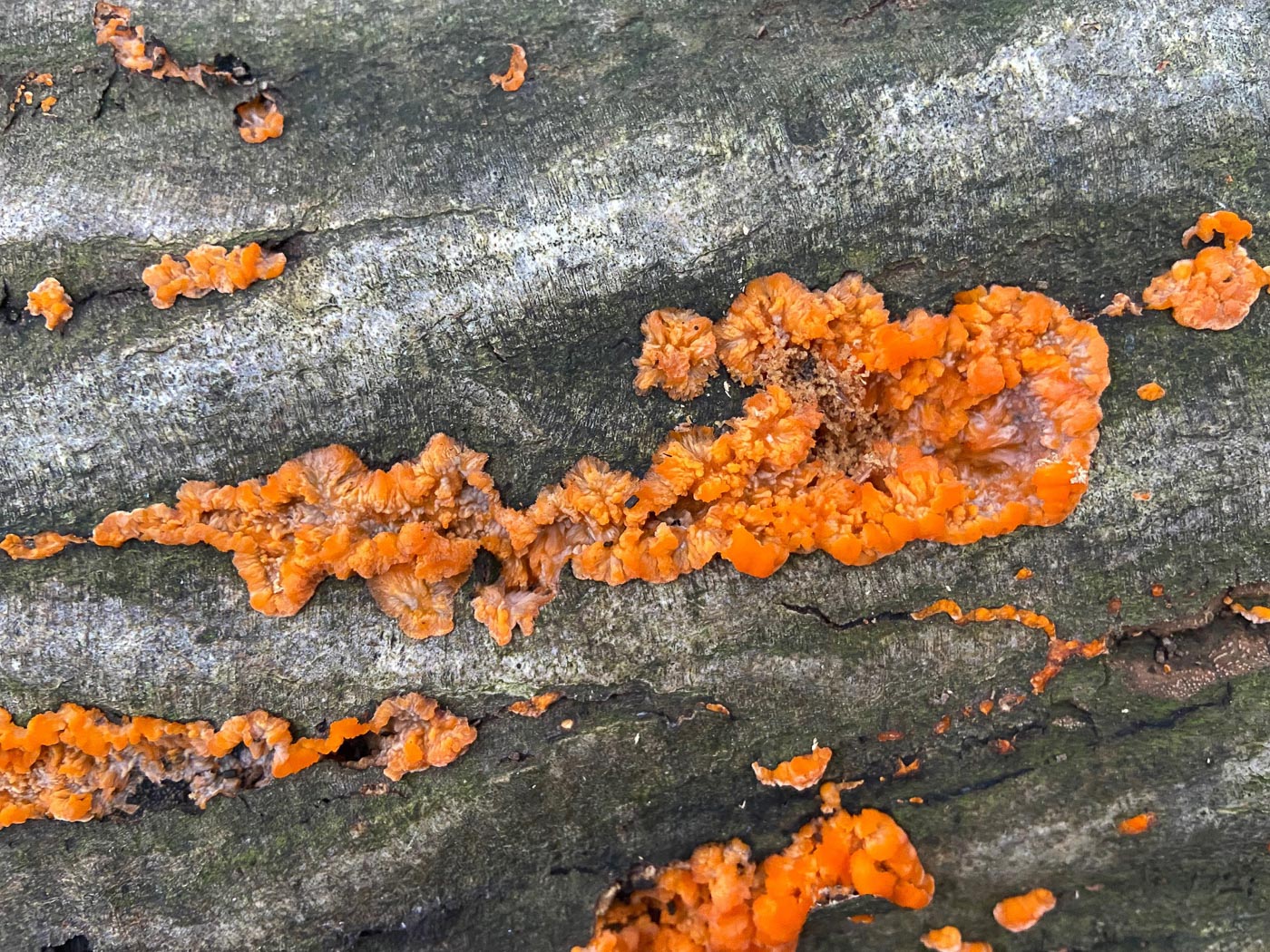
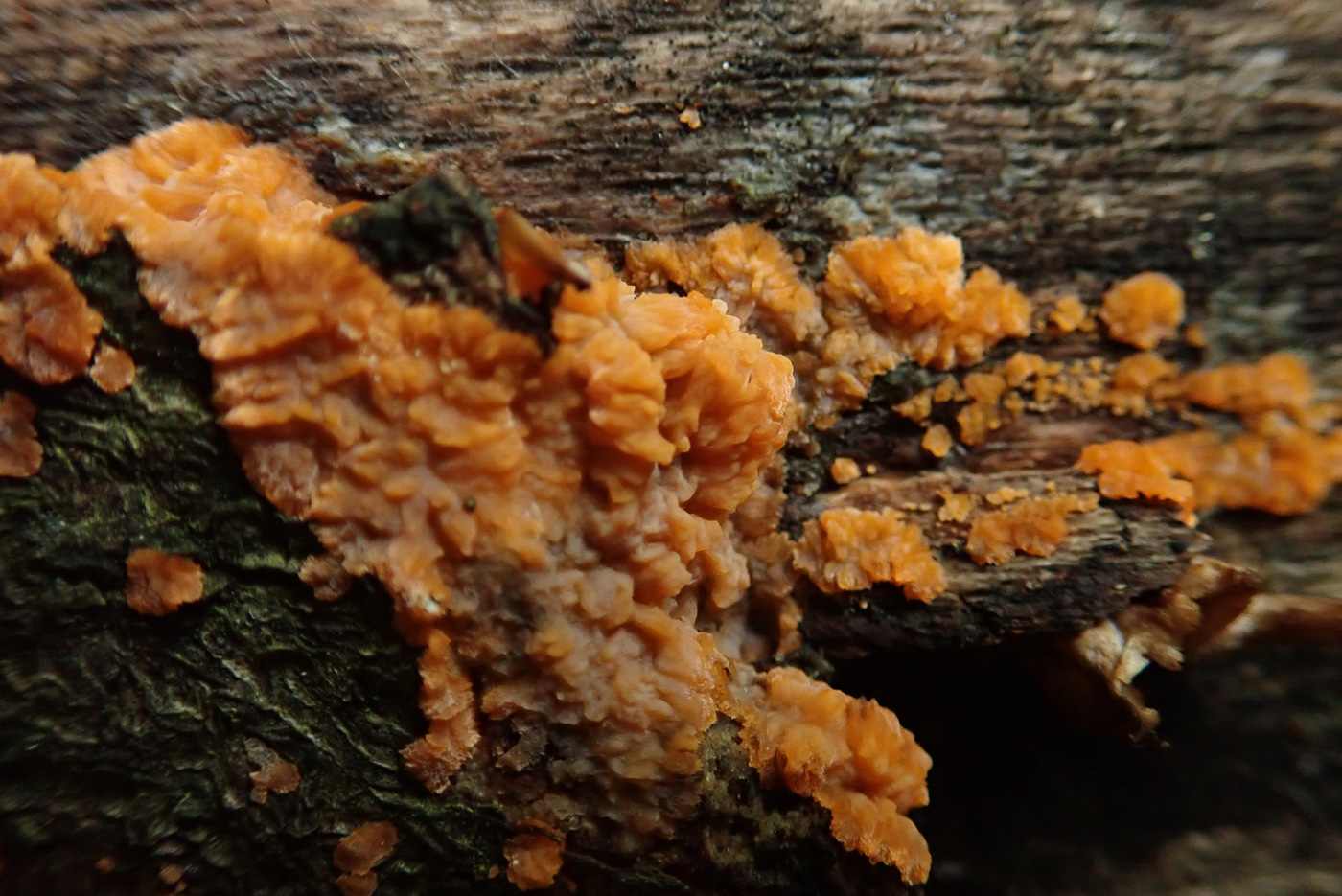
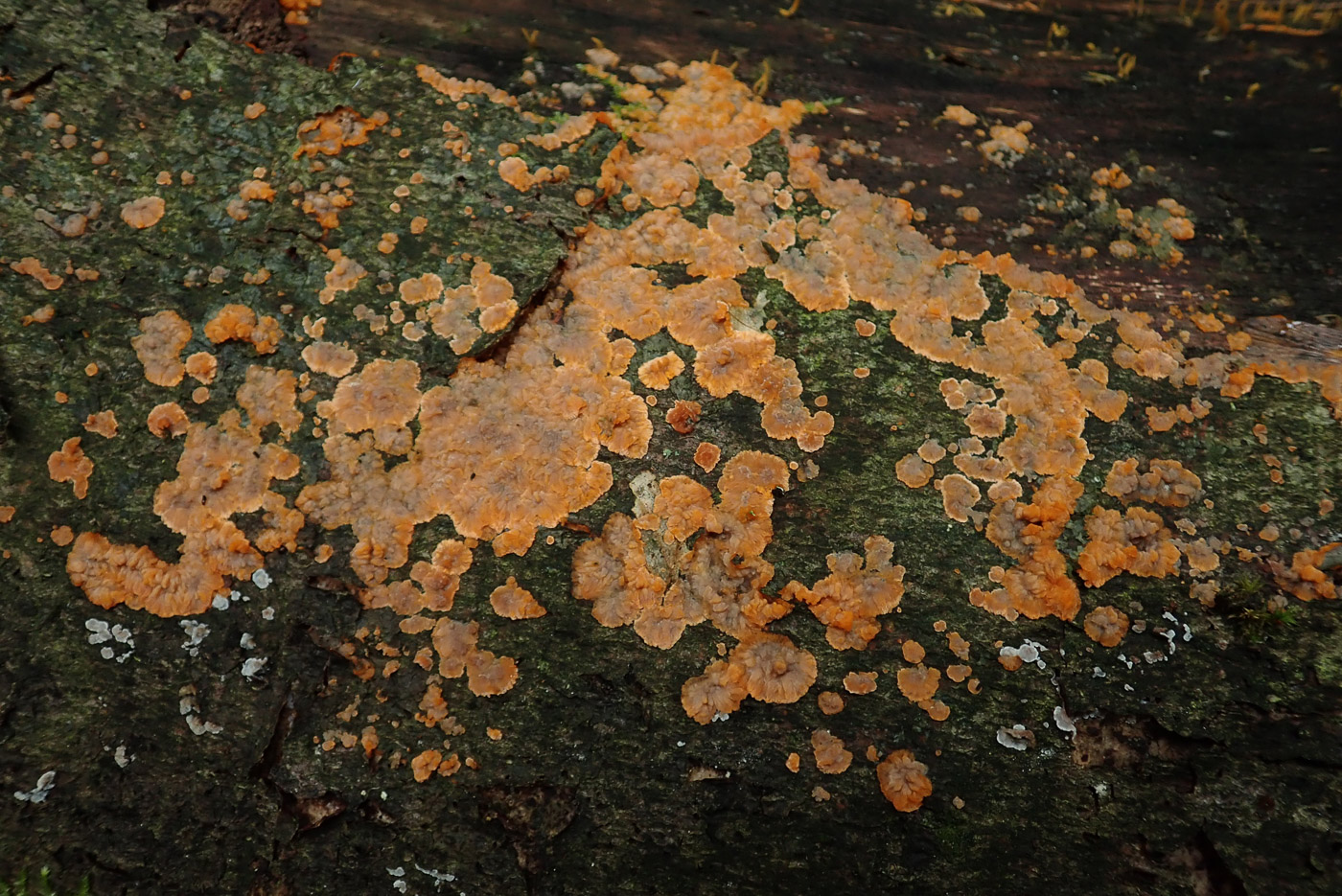
|
Phlebia radiata (Wrinkled Crust)
Nov 24, 2022. On fallen Beech in Bradenham Woods Penny found this common and distinctive resupinate species often found forming spreading patches on the bark of deciduous trees, most commonly Beech. Fresh growth is bright orange around the edges (photo 2) then as it expands it become wrinkled and darker in the centre.
Nov 25, 2021. In Peterley Wood Sarah Ebdon noticed a large expanse of this common and distinctive resupinate on a fallen dead Hornbeam trunk. This is a species which can be found on a range of fallen deciduous woods. When fresh as here (and not too frozen!) it has a soft 'merulioid' texture - wrinkled and a bit gelatinous - but later becomes hard and dry. Its bright orange fringes make it an easy one to recognise and separate it from others with this same texture. Sarah says it was here covering the full length of the trunk but a few days later was 'much more spread and faded - the grey wrinkly centre having expanded and the orange must less vivid'.
Oct 12, 2020. Penny Cullington found this large brightly coloured patch on a fallen Beech trunk in Gussetts Wood. This is a common fungus growing resupinate (flat) over bare wood and bark of Beech and other deciduous trees. When young (photo1) it is gelatinous and rubbery but becomes hardened and crusty as it matures (photo 2).
|
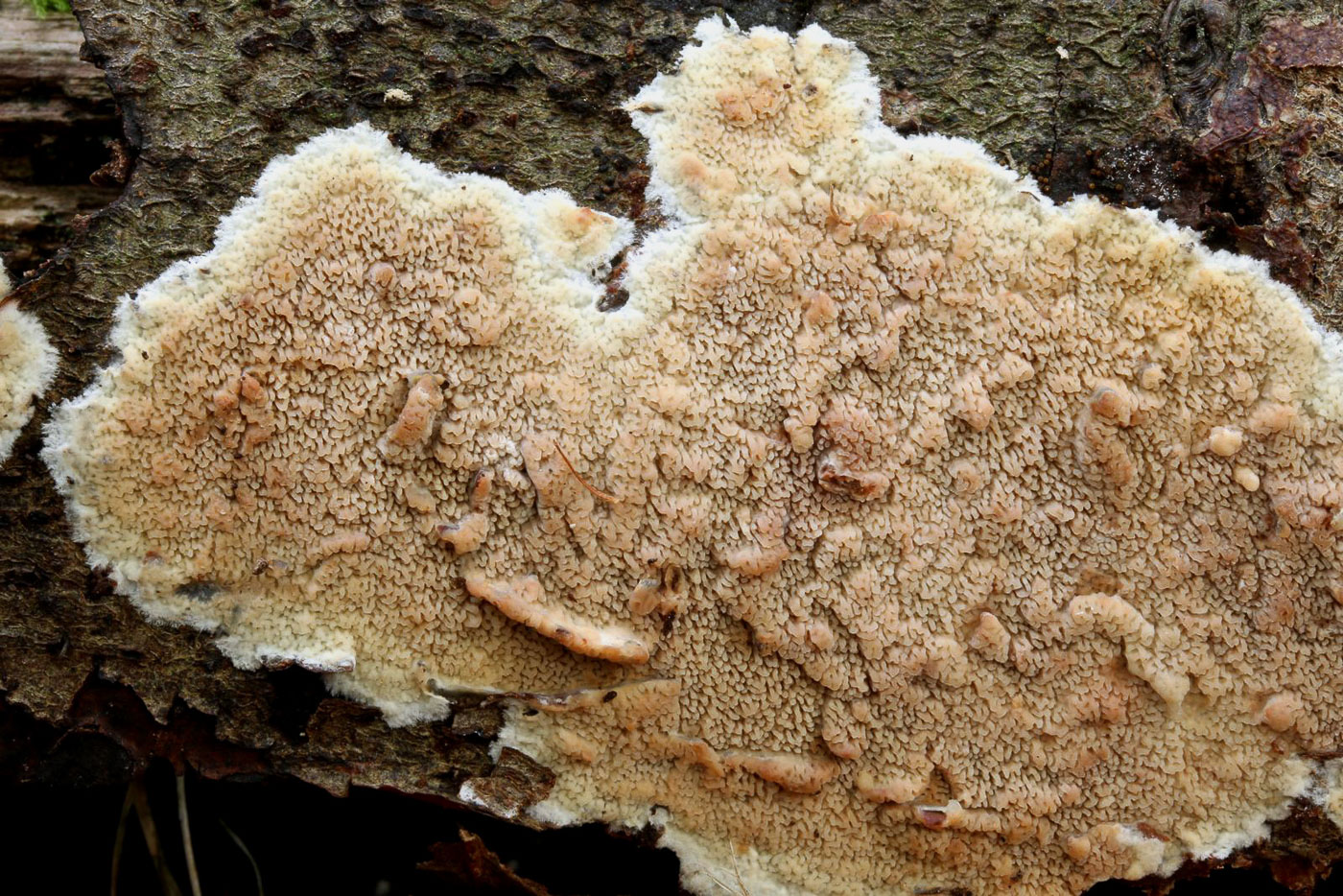 |
Phlebia rufa (a Jelly Oct 19, 2020. Rot with no common name)
Oct 19, 2020. Claudi Soler noticed this resupinate corticioid fungus (one that grows flat on fallen wood) on a fallen Beech branch in Burnham Beeches. The genus Phlebia has a soft rubbery to jelly-like consistency and several species are quite common on deciduous wood. See also P. tremellosa dated Oct 01 and P. radiata dated Oct 12.
|
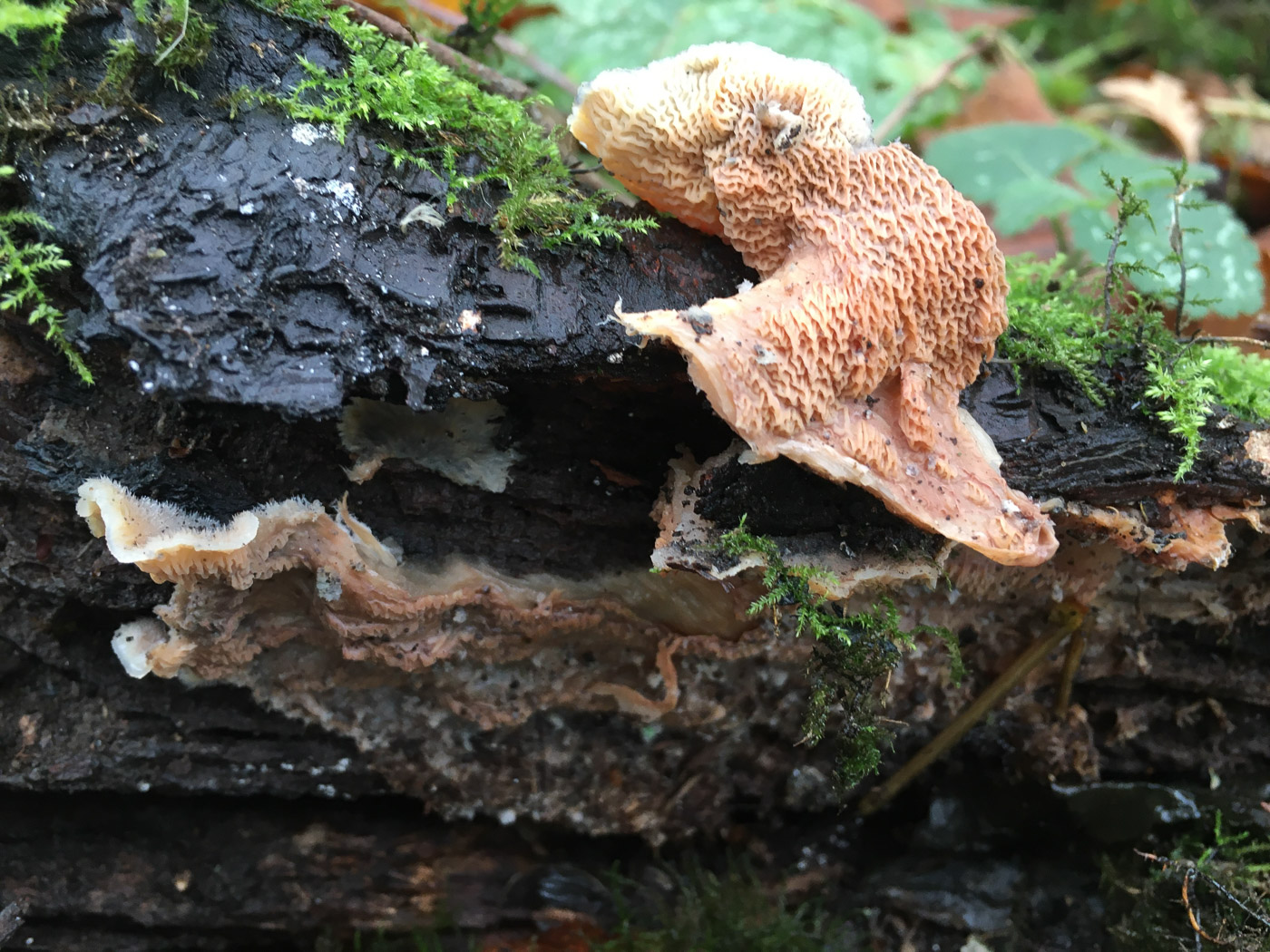
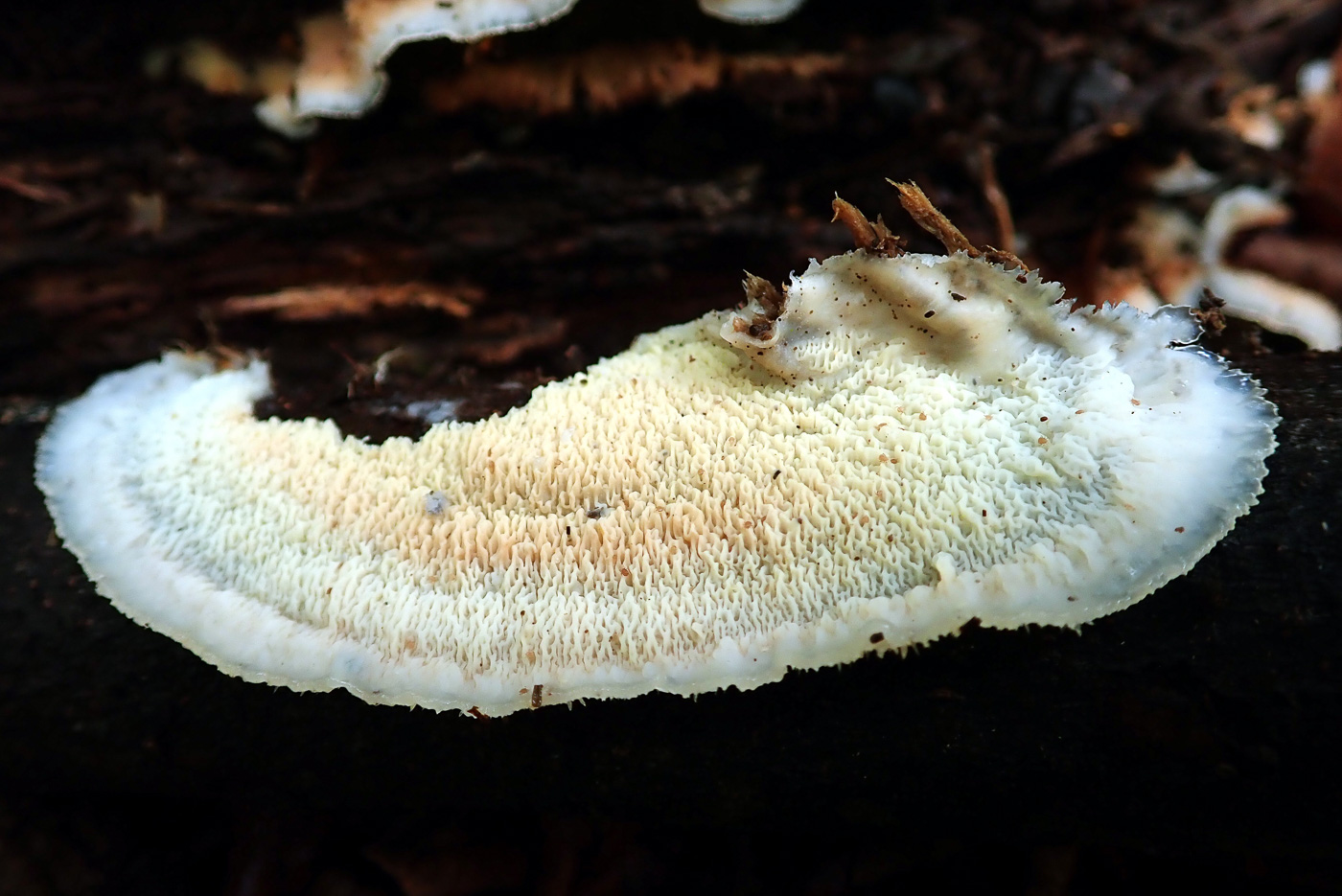
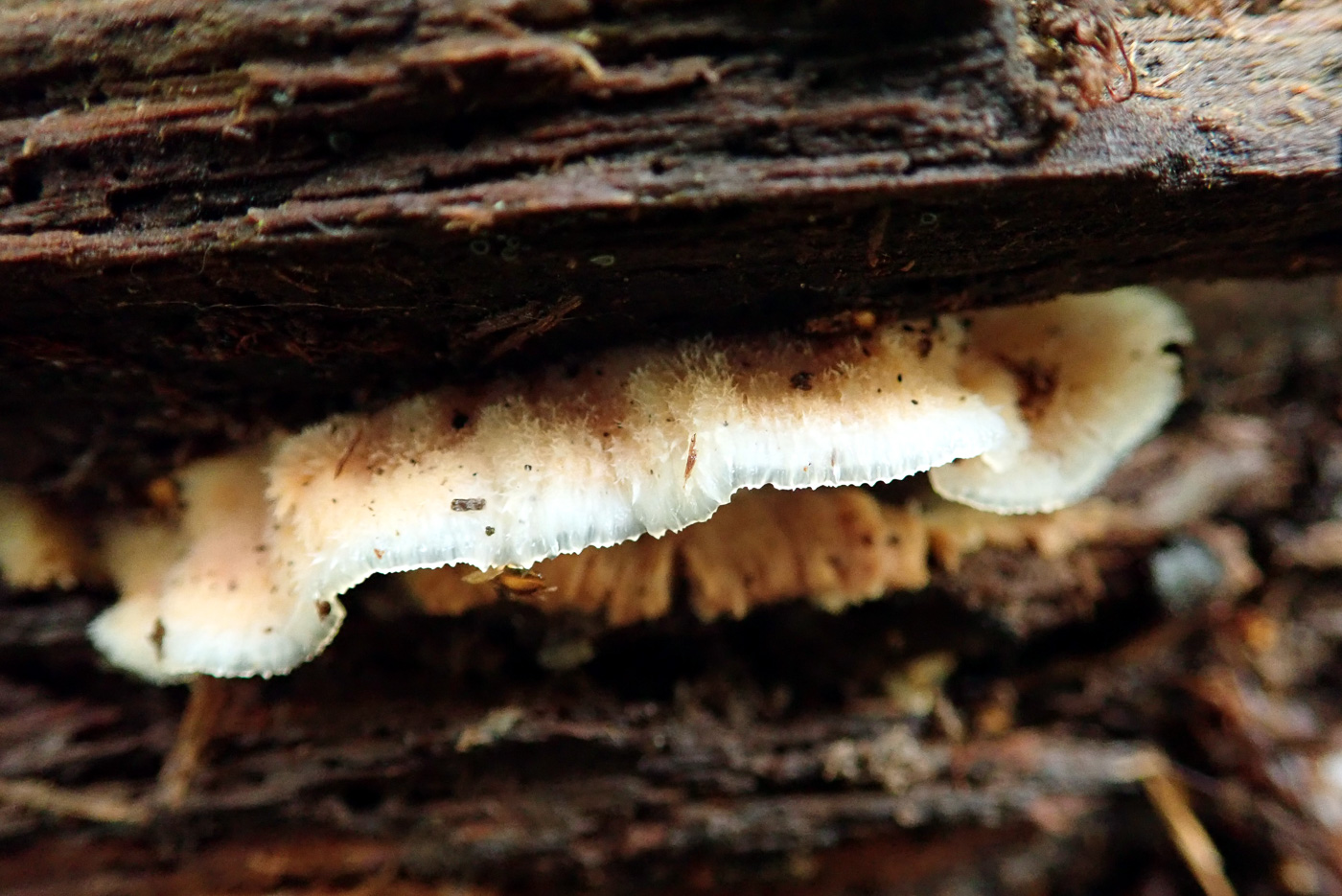
|
Phlebia tremellosa (Jelly Rot)
Dec 5, 2021. In Brill Common Joanna Dodsworth came across this soft pinkish flattish species on a rotten Willow trunk (in some books as Merulius tremellosus). This is a common 'corticioid-cum-bracket' found on fallen deciduous wood, having a salmon pink gelatinous strongly wrinkled undersurface (merulioid) when fresh and a finely hairy upper surface. It can form semi-brackets covering an extensive area and becomes hard when dry and old. Compare with the equally common Phlebia radiata (dated Nov 25th) which though similar in texture sports a bright orange margin.
Oct 1, 2020. Penny Cullington found this species growing resupinate (flat) on rotting bare deciduous wood at Turville Heath. As the common name suggests, this is not a hard bracket (in fact hardly a bracket at all) but has soft flesh with a gelatinous feel to it. The pinkish cream rather erratic poroid part is often not always on the underside (as here on a stick in photo 1) but occasionally it starts to form a 'semi'bracket (seen in photo 2). Note the crenulate (frilly) margin which is characteristic.
|

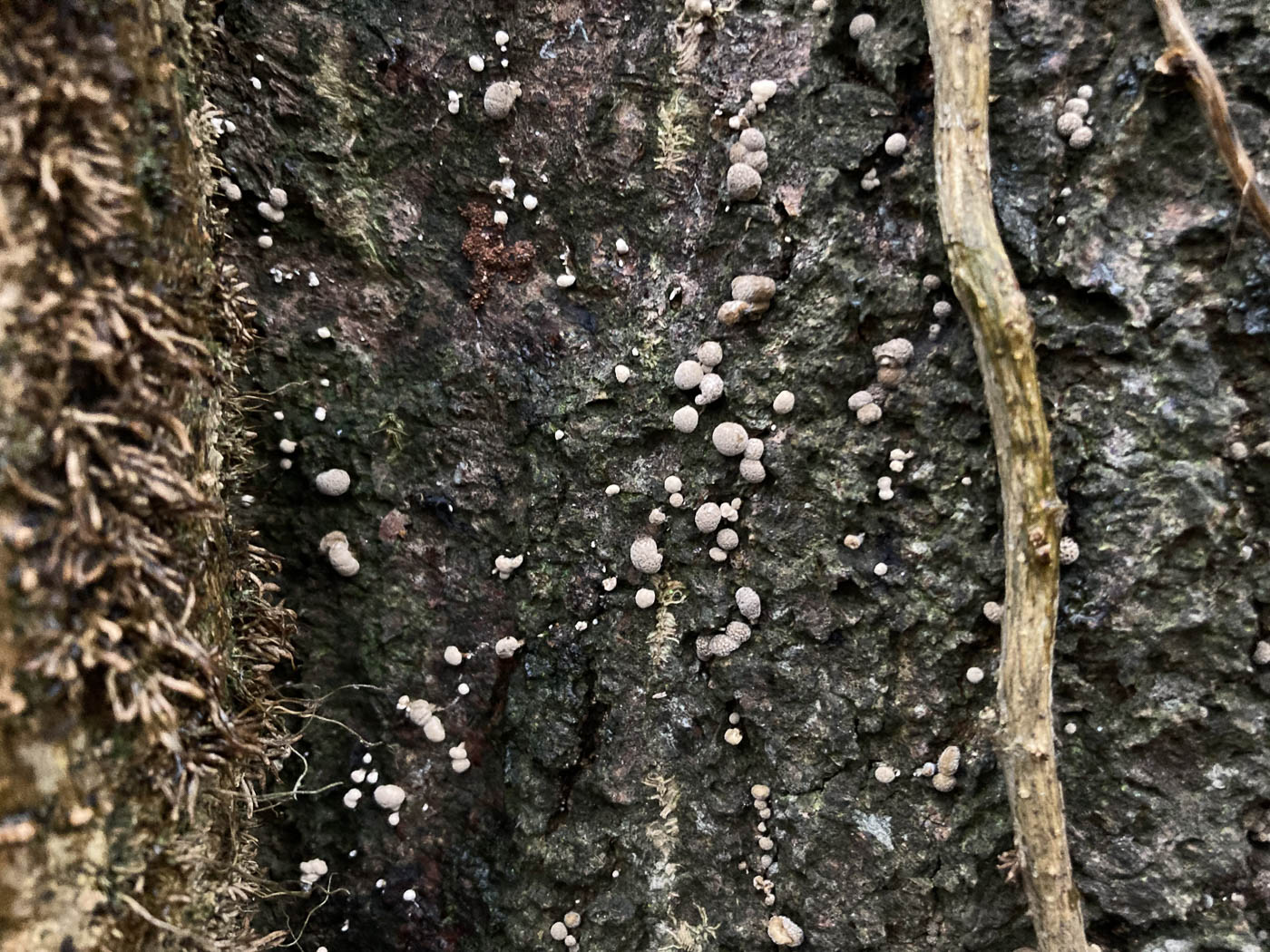

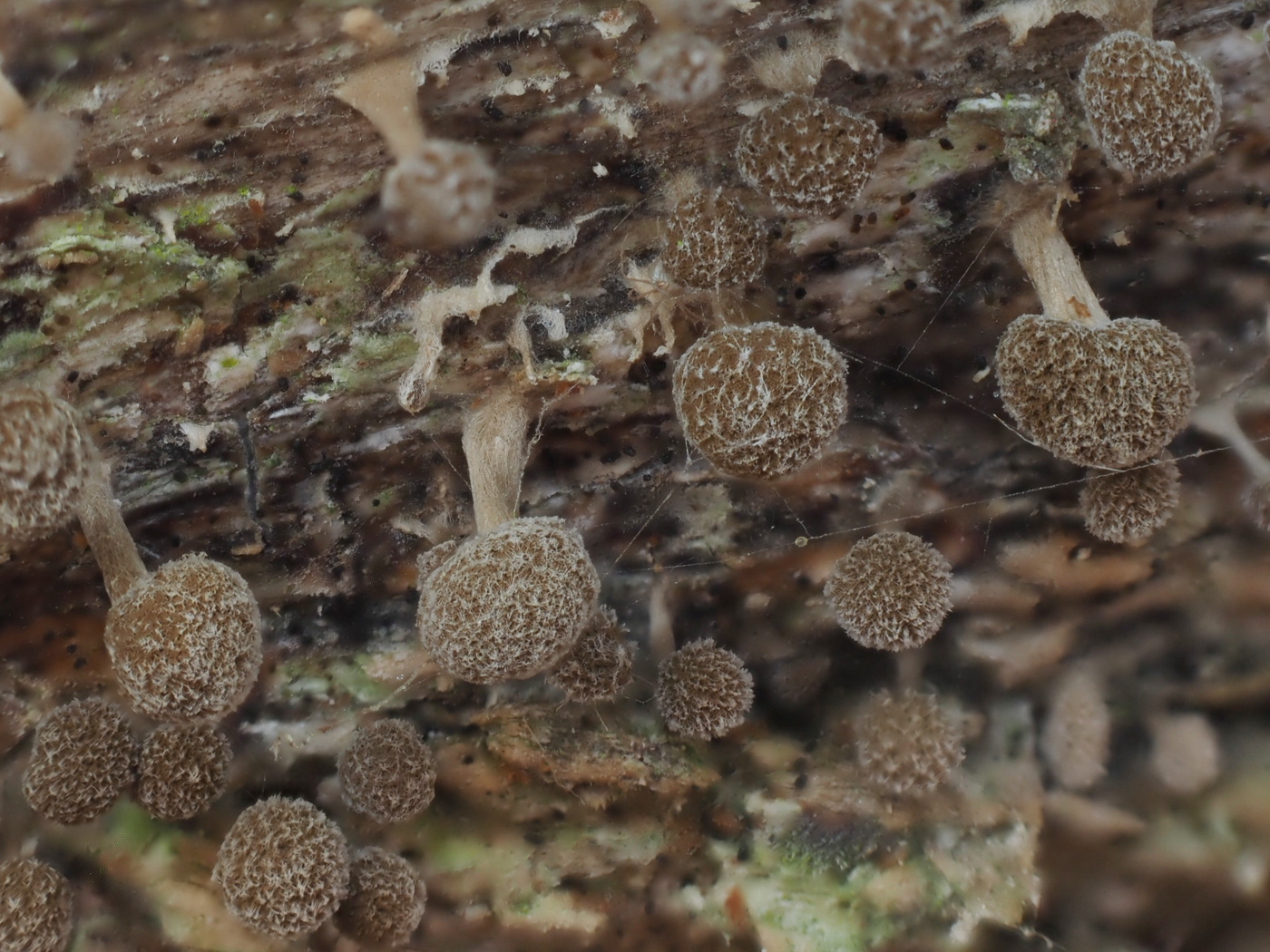
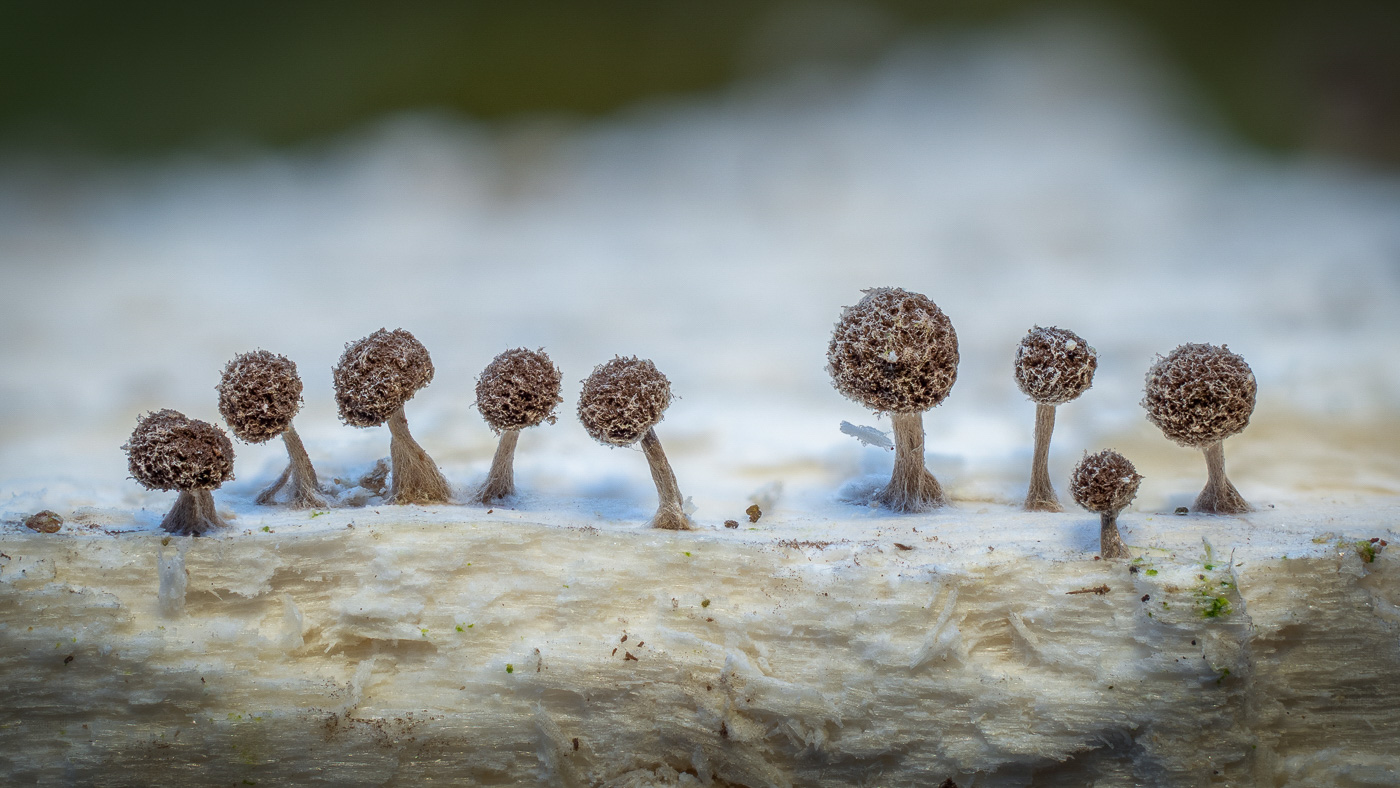 |
Phleogena faginea (Fenugreek Stalkball)
Mar 4, 2023. At Burnham Beeches on fallen Beech Barry Webb found this unusual tiny species - one that on first glance looks much like a small Slime Mould. It is a Basidiomycete, however, and as such never goes through the slimy Plasmodium stage despite its final appearance being so similar to many 'Myxos'. (Incidentally it also has a penetrating smell of Fenugreek which helps to confirm its ID in the field if in doubt.) The photo is Claire Williams's and she comments that she saw the species in Downley Common as well as at the Beeches, so it appears happy fruiting through this cold spell of weather. See the Masterlist for more examples, though this one seems unusual in apparently having formed spores half way up the stem as well as in the conventional 'head' at the top - a feature Barry noticed in many of the specimens he saw here.
Dec 31, 2022. On trunks of both Beech and Birch at Burnham Beeches Russell Ness found these tiny 'slime-mould-like' fungi amongst the crevices in the bark. He managed to extricate a few (photo 2) to take home and examine and to confirm that they weren't - for instance - a species of Physarum though they look extraordinarily like one! He described them as having tough little fruitbodies, quite rubbery and with solid centres, and also noted the strong 'curry' smell as he opened their pot, so these unusual basidomycetes are very different from slime moulds for which they are undoubtedly often mistaken.
Jan 12, 2022. In Naphill Common Barry Webb found this unusual and very small species on fallen wood (the photo is by Claire Williams), one which looks amazingly like a species of Physarum (a slime mould) but is in fact a Basidiomycete and more closely related to the Puffballs. It develops a remarkably persistent 'curry' smell as it dries once collected.
Jan 28, 2021. In Burnham Beeches Barry Webb spotted these small fruitbodies on dead Beech. This is an intriguing species - not one featured in Finds 2020 - because though it looks extremely similar to many slime moulds it is in fact a Basidiomycete. Not unalike the Gastromycetes (Puffballs etc), it has a mass of spores within which are dispersed as the outer surface breaks down in maturity. It is not that uncommon but, like many of our tiny wood inhabiting fungi, is easily missed, also probably often overlooked as a slime mould. A useful field clue to its identity is its remarkable curry-like smell which becomes more noticeable once collected as it dries, hence its common name.
|

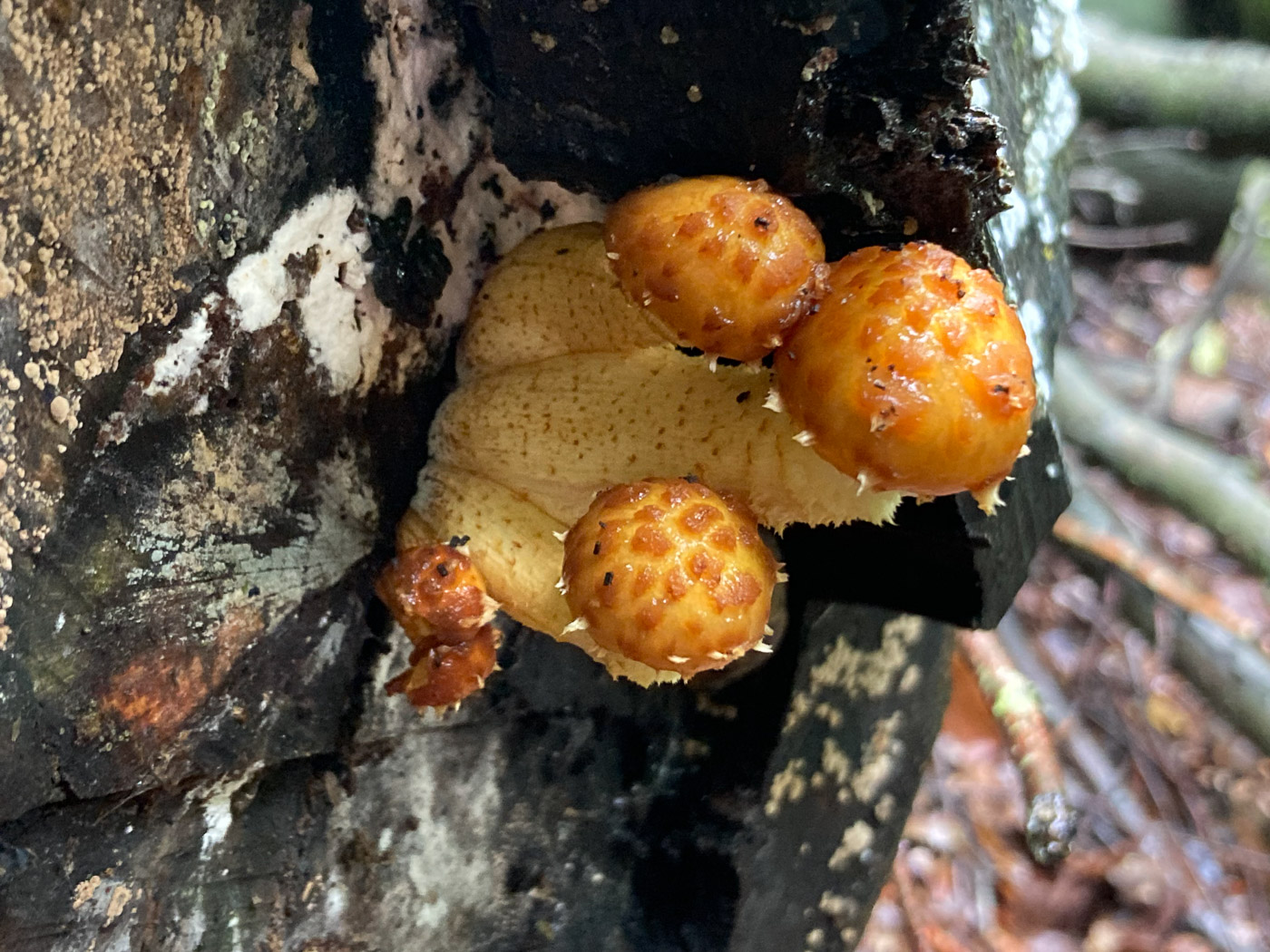
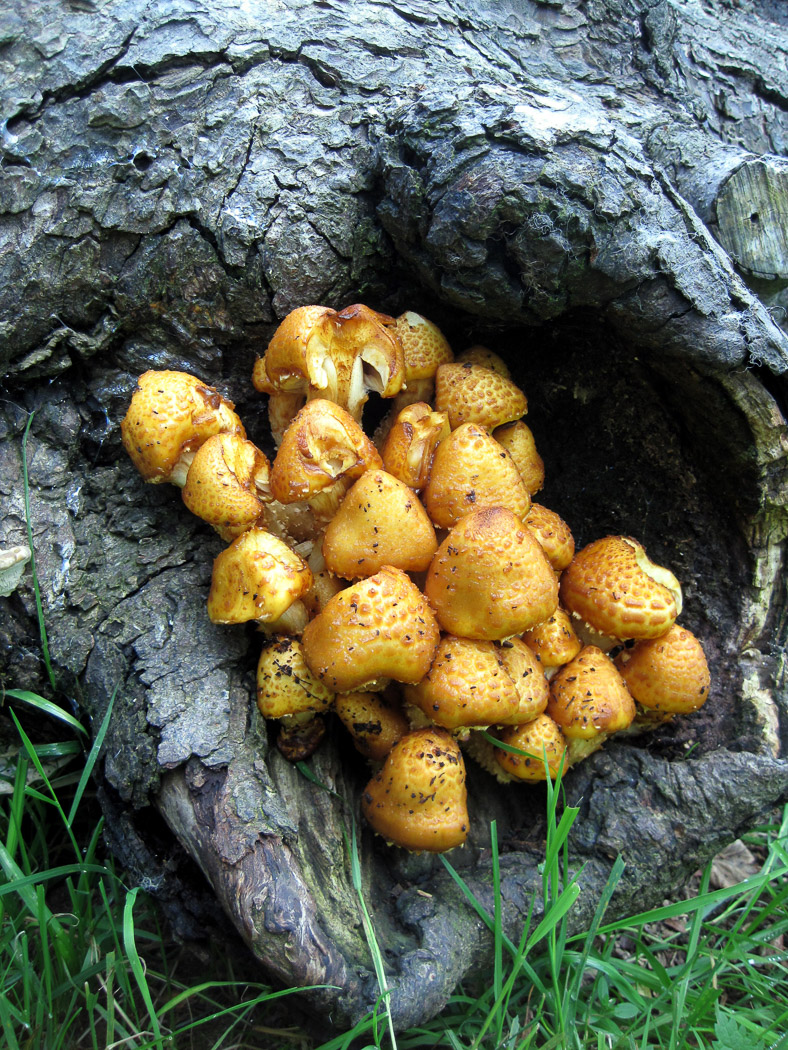
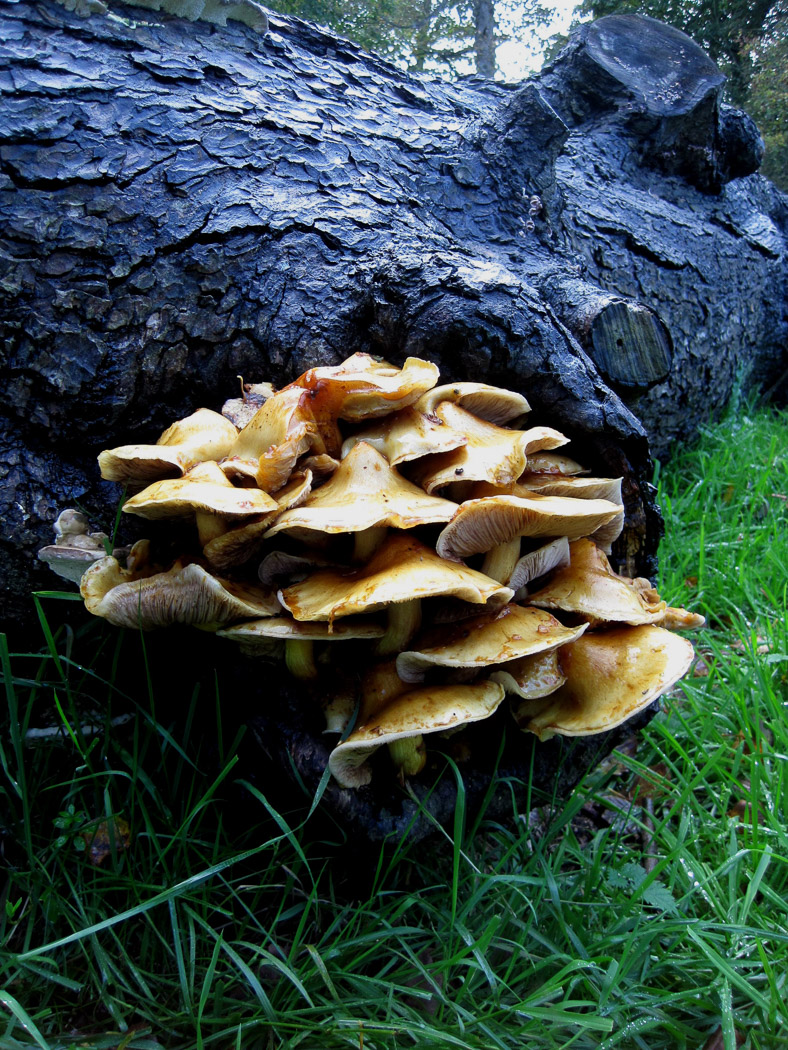
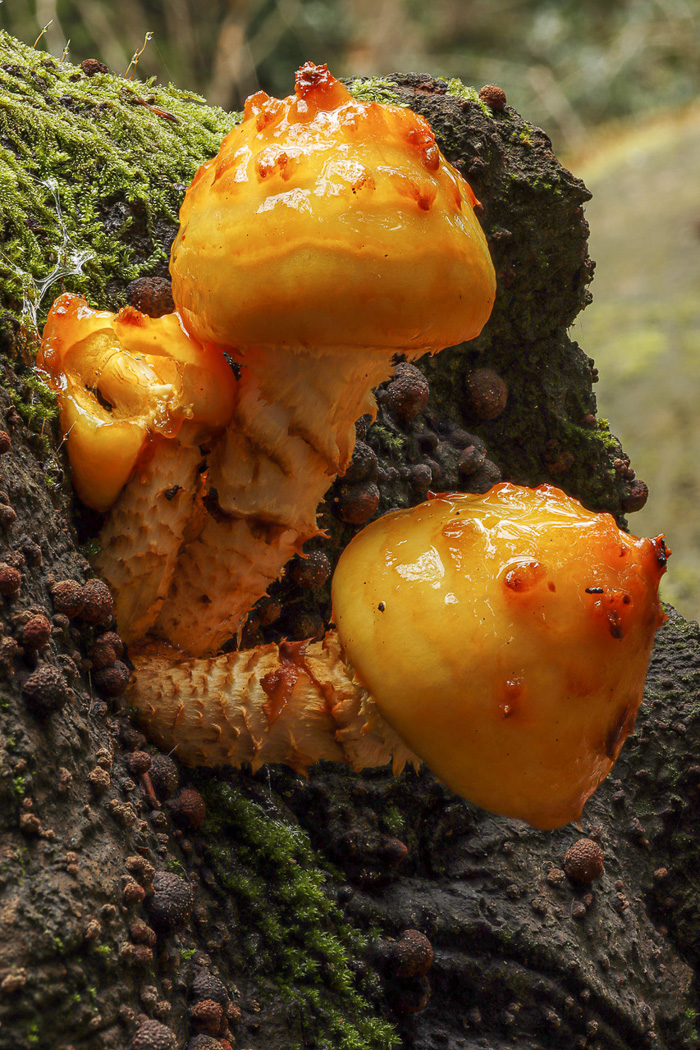
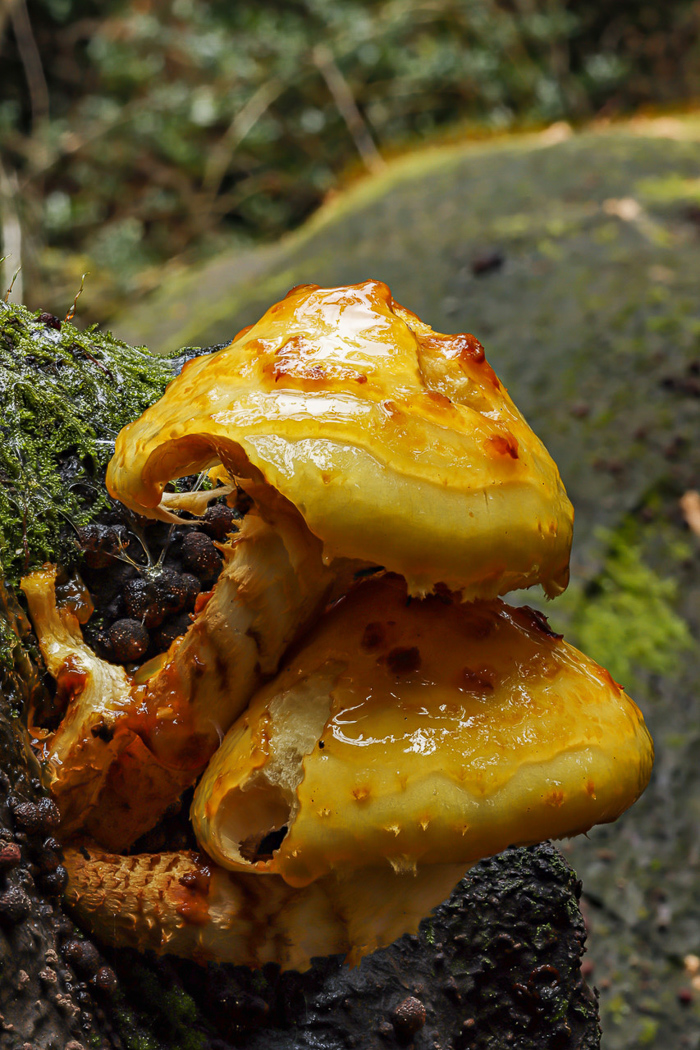
|
Pholiota adiposa (Golden Scalycap)
Oct 16, 2024. On fallen Beech at Burnham Beeches Russell Ness found nice fresh examples of this species - a genus which has been poorly represented this season so far. The young buttons are particularly attractive and here showing the sticky surface which separates it in the field from the dry-capped and much more common P. squarrosa (Shaggy Scalycap). One should be aware that there are other very similar sticky-capped species, all of which should be checked microscopically for definitive ID, though on Beech this probably the most likely candidate.
Oct 6, 2020. Though we already have an example of this (see photo dated Oct 01) Joanna Dodsworth has been watching a good sized clump of the same species growing on Horse Chestnut at Brill Walks and the development over the space of five days is interesting. Photo 1 shows the collection six days ago with photo 2 taken today with caps now fully expanded. However, the heavy rain which fell in the interim has removed much of the scaliness leaving the caps almost smooth.
Oct 1, 2020. Paul Goby first noticed this brightly coloured fungus just emerging on a Beech log in Naphill Common two days earlier (photo one) and returned today to see how much further developed it was (photo two).There are several very similar species of Scalycap which are difficult to separate without checking their spore size (not done here so the determination is not 100%). The recent rain makes it easier to name because the thick layer of slime on the cap is typical of this species which has, however, a dry scaly stem. It is occasional and favours Beech though is far less common on this host than P. squarrosa (Shaggy Scalycap) which has a dry cap and stem. Both can grow in large clusters and are usually at the base of standing trunks.
|
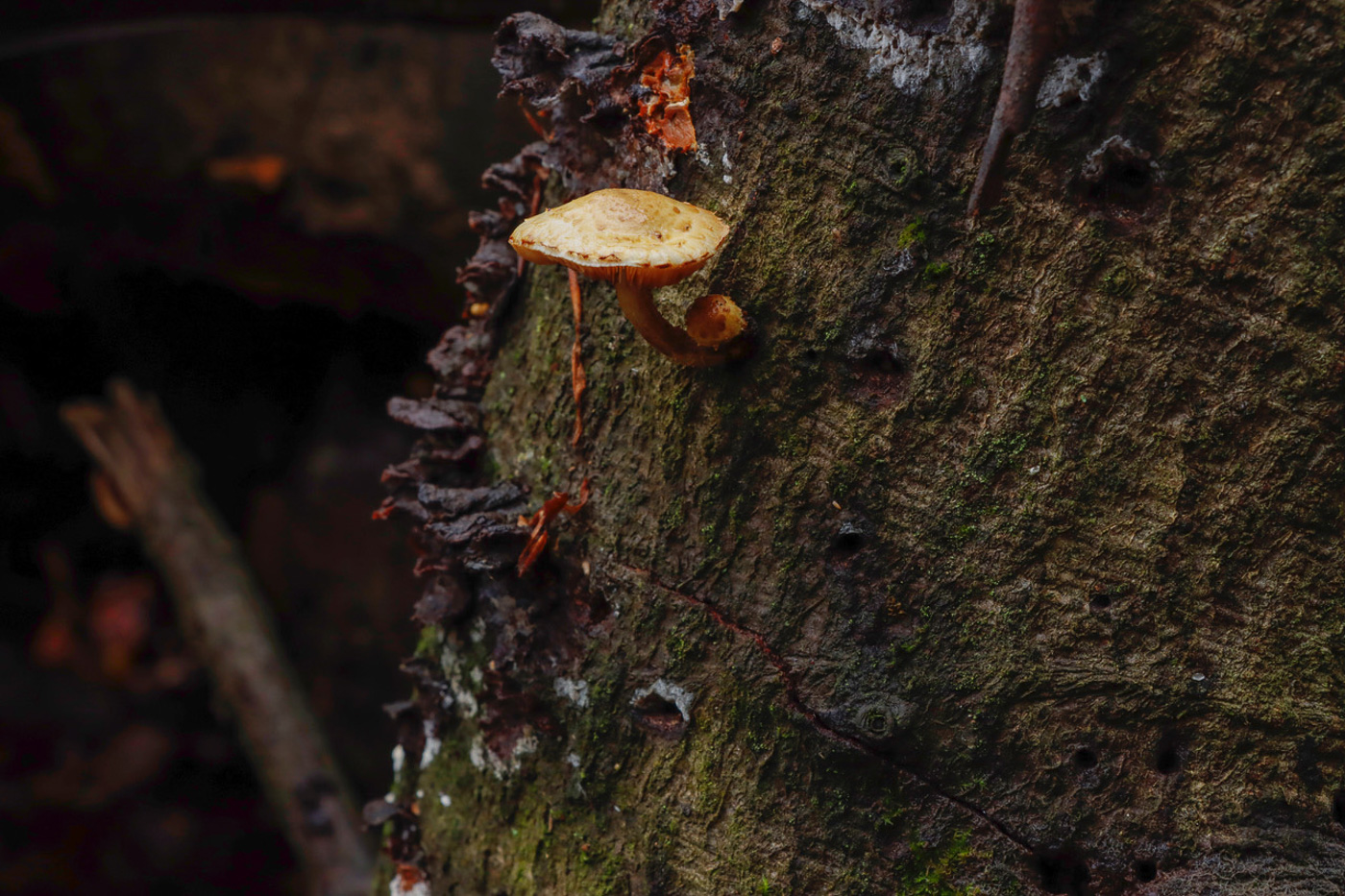
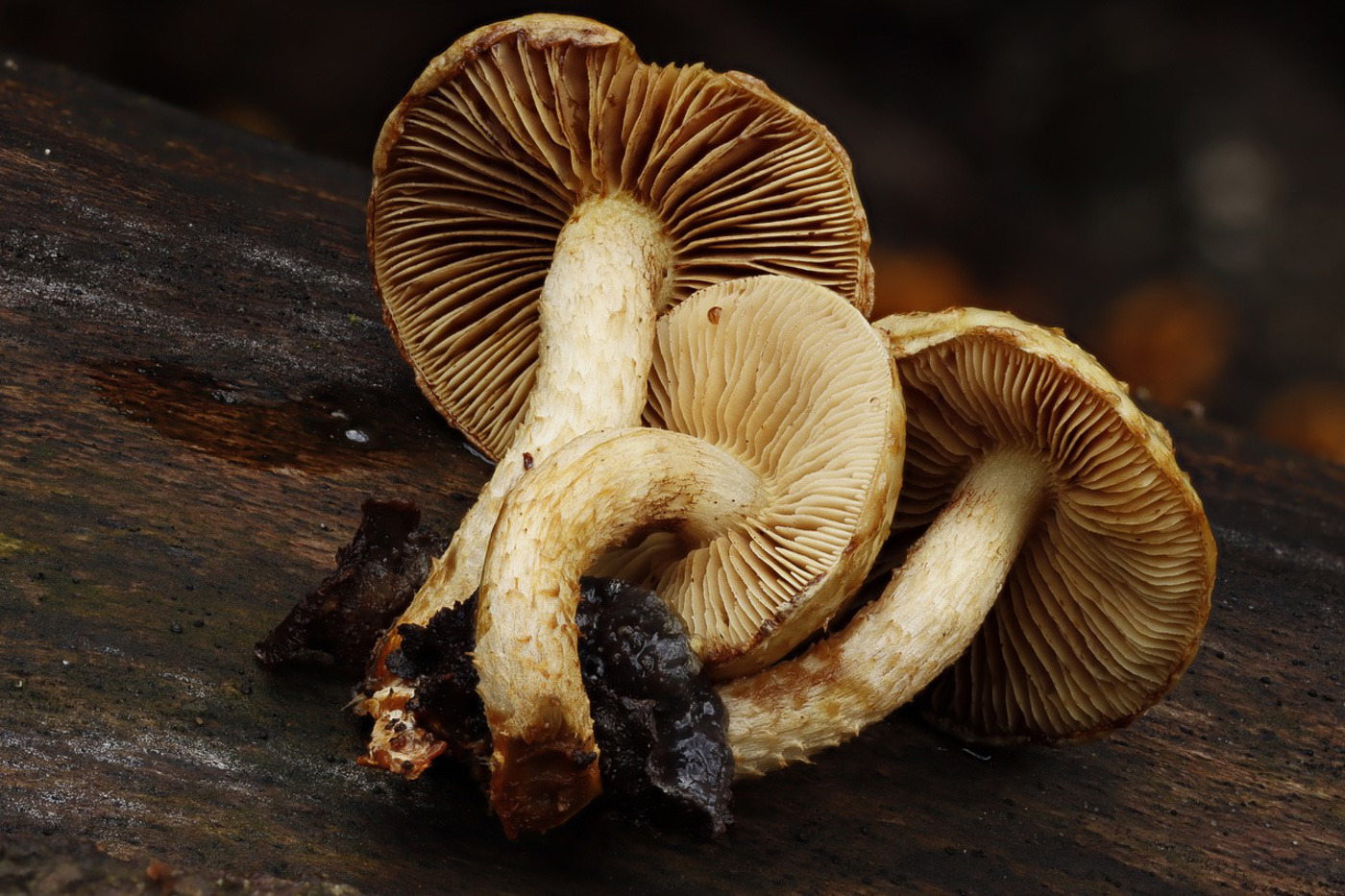
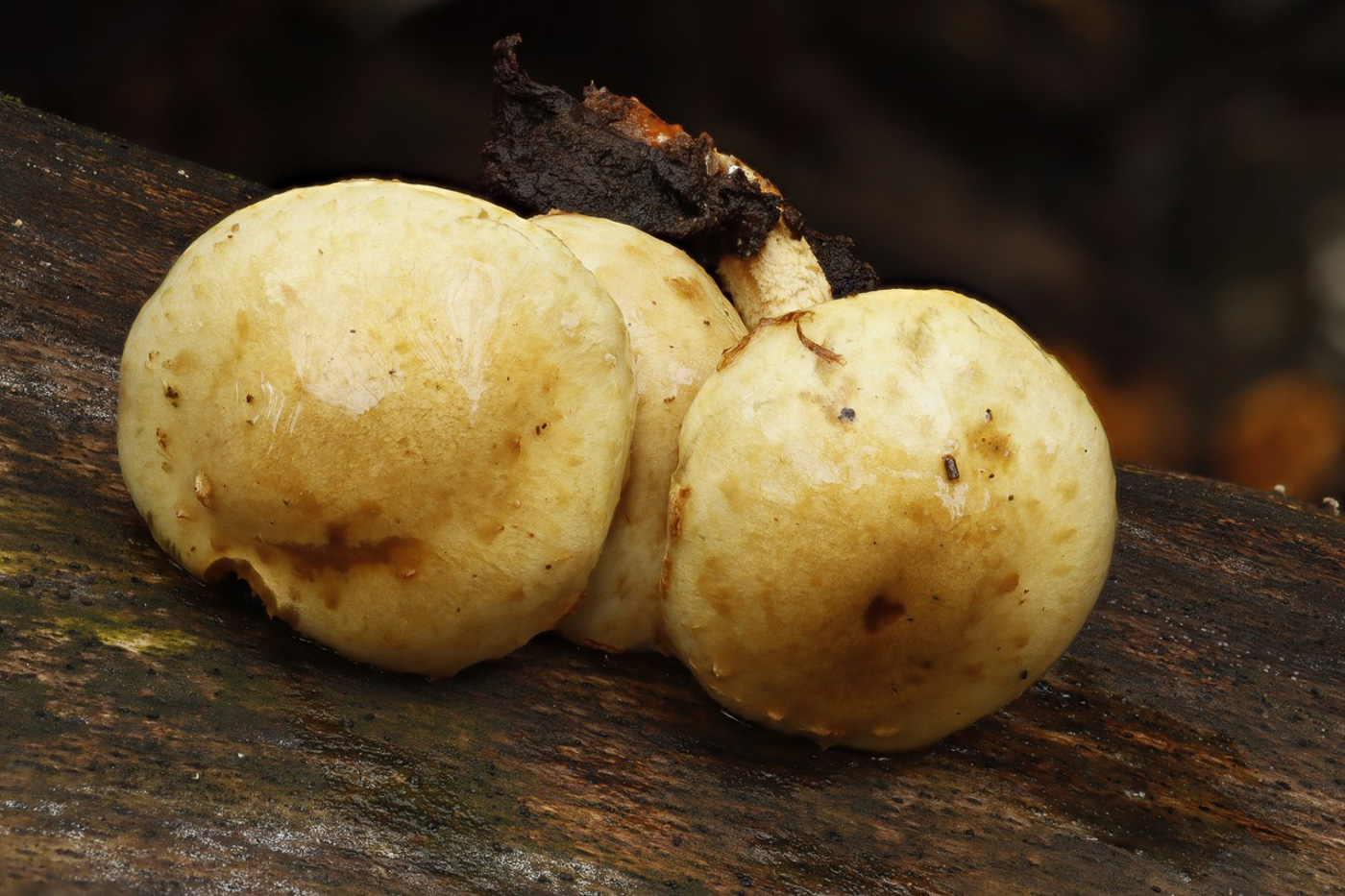 |
Pholiota gummosa (Sticky Scalycap)
Nov 11, 2020. Paul Goby also spotted this species well hidden in a large Beech pile in Naphill Common. This is a rather pale capped Pholiota, not as big as the commoner P. squarrosa and the like, and in fact more often found on the ground on submerged deciduous roots though today actually on wood. Caps are dirty greenish yellow olive with small darker scales often lost in the slimy coating but usually retained around the margin (visible here in photo 1 on the singleton specimen). Gills and stems are more or less concolorous though the stem is dry and finely scaly (visible in photo 2). Quite a common species but when in paths and apparently on soil, not wood, it can often be hard to identify.
|
 |
Pholiota jahnii (a Scalycap with no common name)
Oct 28, 2023. In Atkins Wood, Gt. Missenden, Tony Marshall found this tight clump pushing up through thick litter (presumably at the foot of a deciduous tree). This is one of the sticky capped members of the genus and generally uncommon - we have four other county sites where it's been recorded and this is a first for Finds. Though the rusty gills and stem with a ring are not visible here, it shares these features together with the sticky cap with the somewhat similar P. adiposa which is more common but favours Beech and has larger spores. (The microscopic features were not checked today.)
|
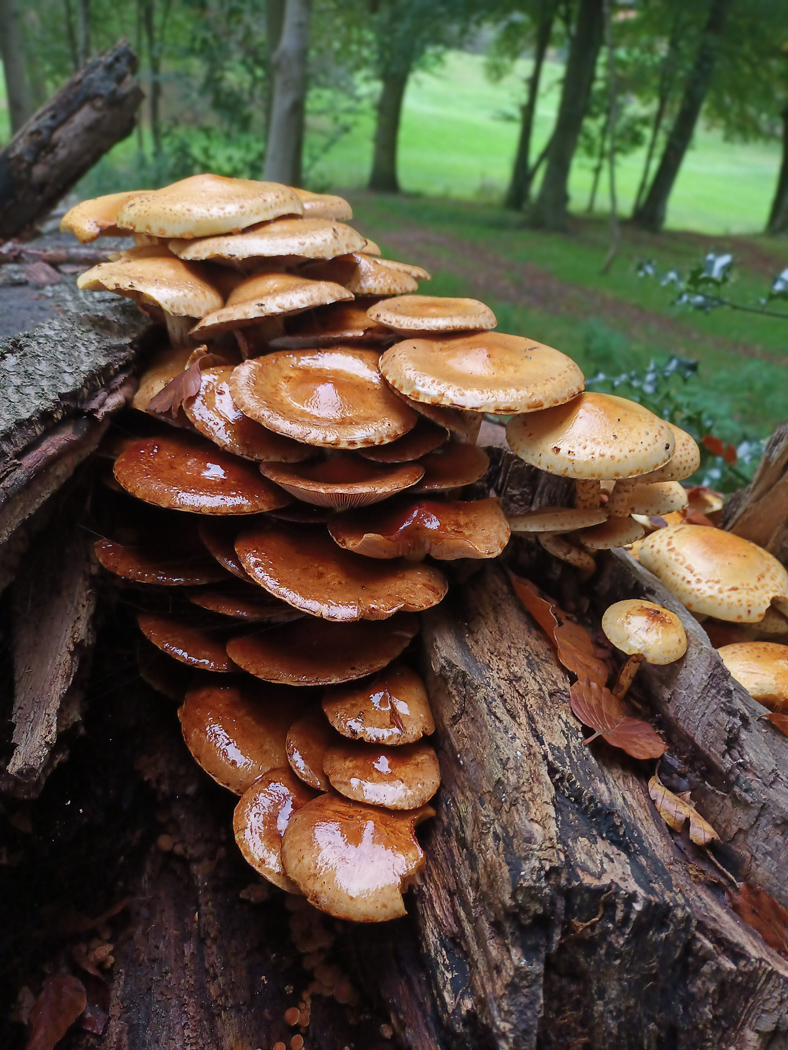 |
Pholiota limonella (a Scalycap with no common name) 
Oct 26, 2021. On a large fallen Beech trunk at Beaconsfield golf Club Jesper Launder found this cluster of a somewhat uncommon Pholiota - one for which we have just two previous county records. The species is virtually identical with the slightly more common P. adiposa, both species being restricted to Beech and having slimy caps but otherwise rather like the very common and dry-capped P. squarrosa which is happy on many different trees. The only difference between these two slimy capped species is in their spores: smaller and narrower in today's species.
|
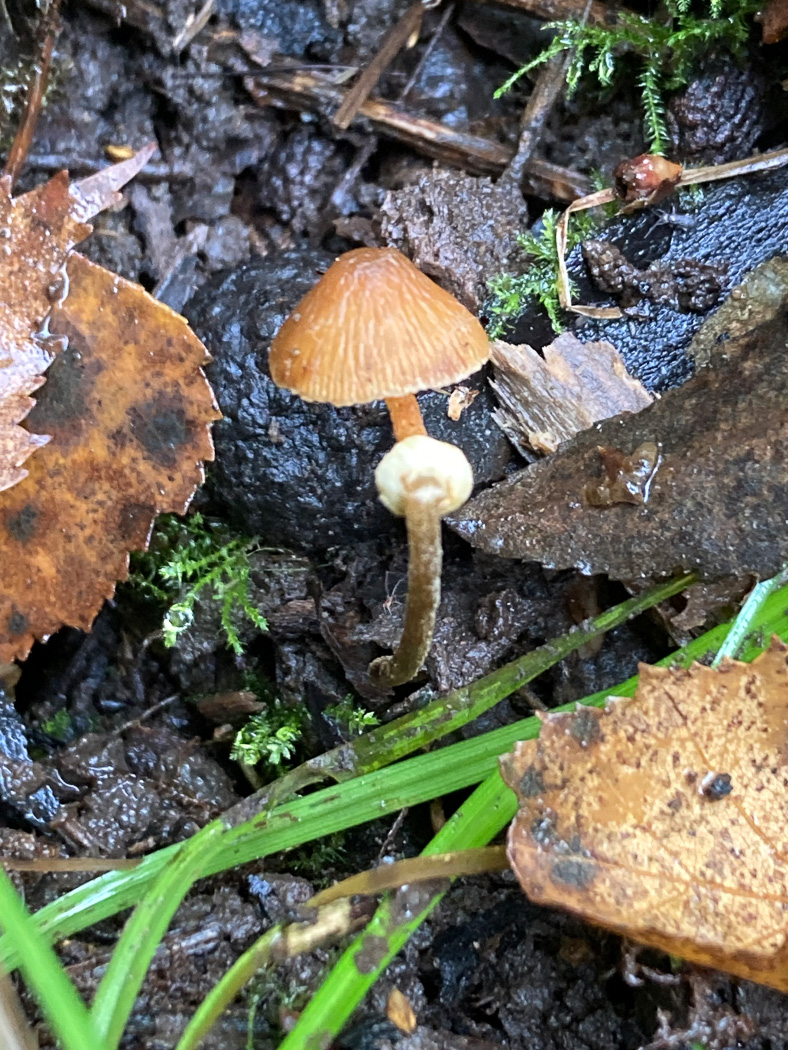





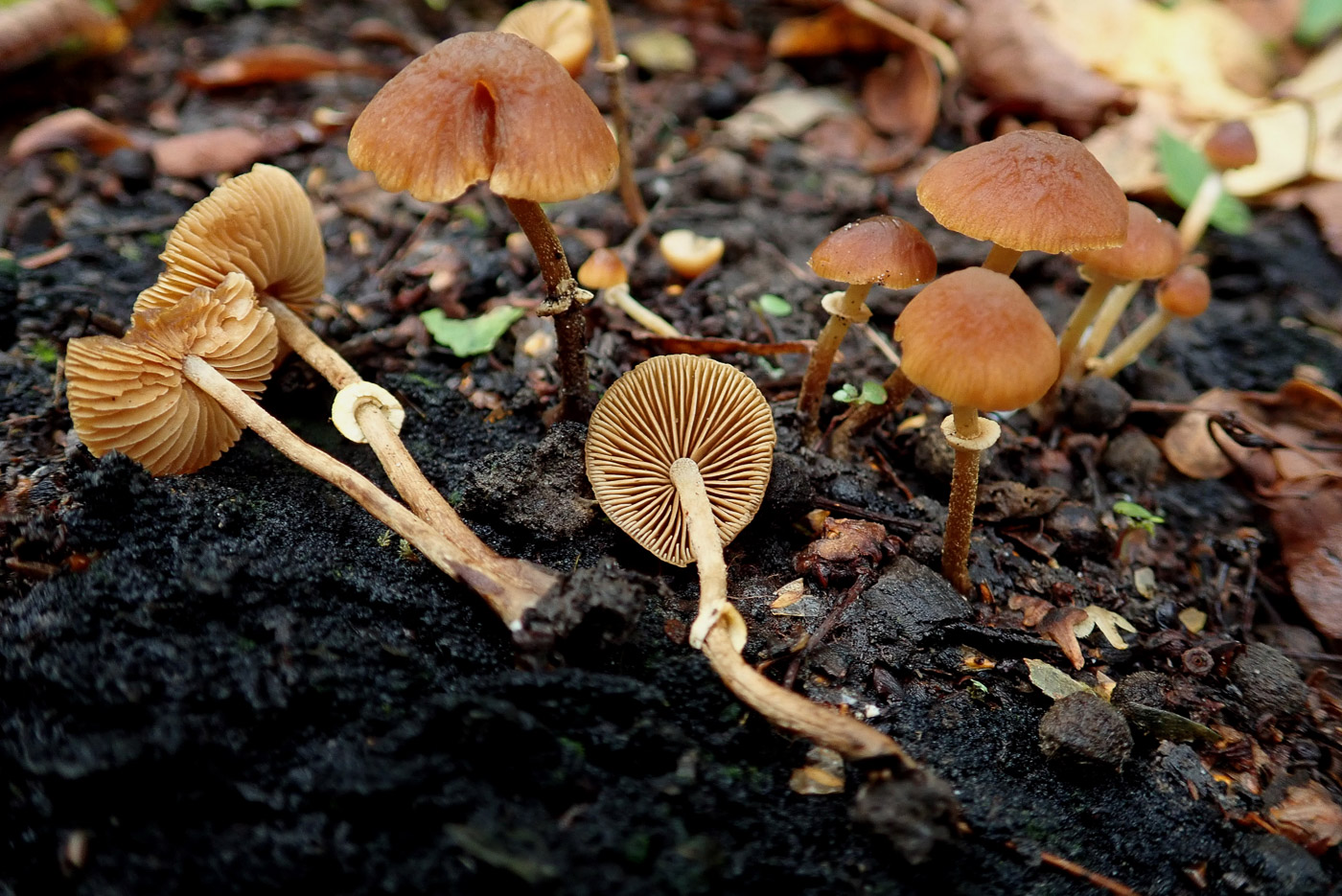
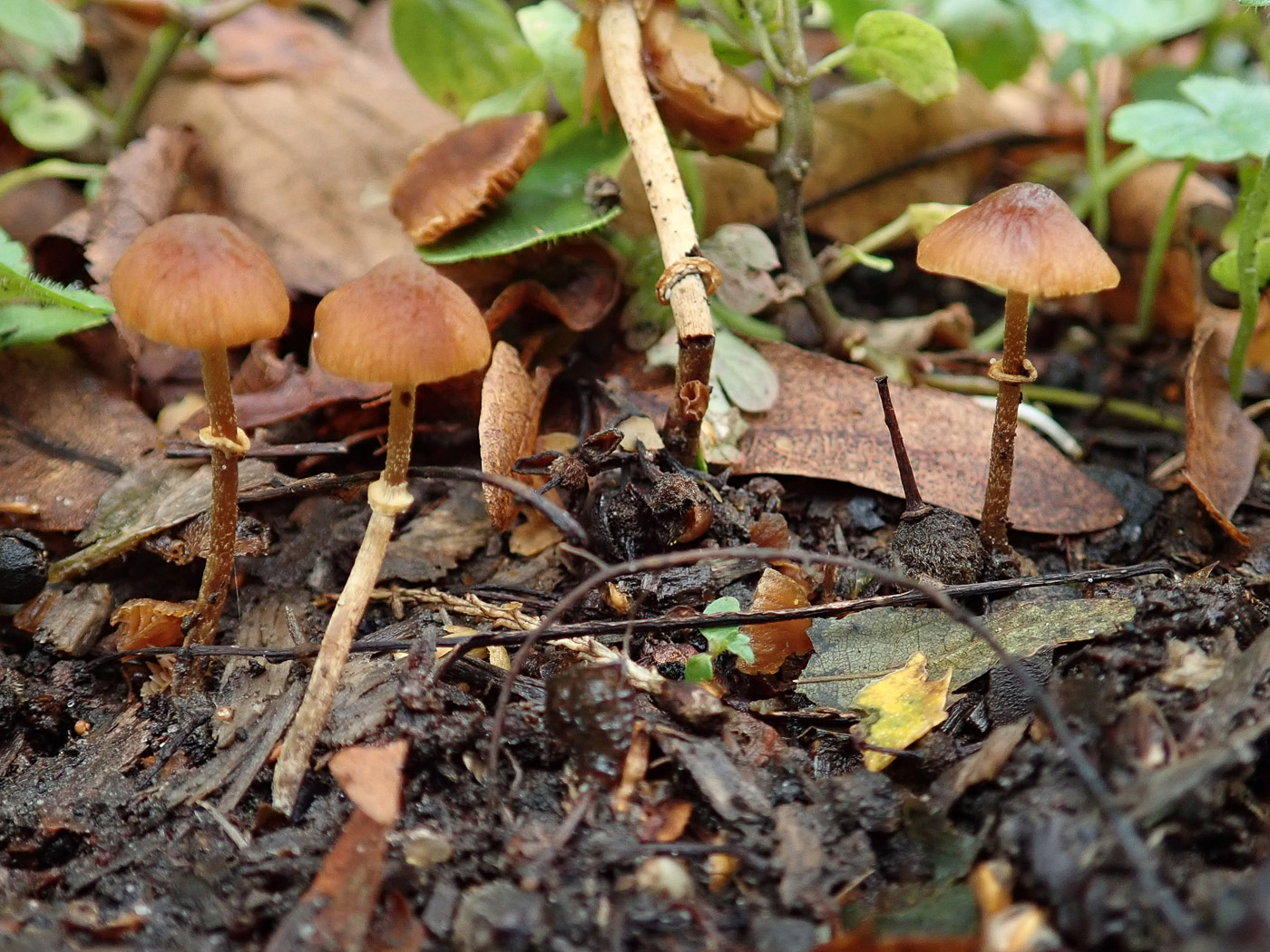
|
Pholiotina rugosa (Wrinkled Conecap) 
Oct 17, 2024. At Burnham Beeches Russell Ness spotting this small LBJ in woody debris and noting the distinctive ring on the stem instantly knew from which genus it belonged. The presence of a ring conveniently eliminates a whole range of similar LBJs, cutting the number of contenders down to around 7 species in genus Pholiotina - previously part of genus Conocybe with which it still shares the English genus name Conecap. Microscopic features are key here but a good clue to P. rugosa in the field is the faintly veined or grooved cap surface (clearly visible here) and the ring which is rather lower down the stem than in most other ringed mushrooms.
Apr 4, 2023. At Turville Heath Penny found several clusters of this species in various areas, particularly on the edge of burnt sites where there were woody remains. There is a group of species previously included in the genus Conocybe - those having a stem with a distinct ring or a ring zone as here - which are often moved from that genus to Pholiotina though this is not universally accepted as yet. Recourse to a scope is essential to name them to species as there are a handful which look pretty well identical. The largest cap was only 15mm across, so these are 'Mycenoid' mushrooms but with rusty caps, gills and stems and the ring though distinct when young often disappears with age. Penny has never seen so many specimens in close proximity as they were today. Photos 1 and 2 are of the same collection; photo 3 was a further collection. See the Masterlist for several other examples.
Nov 24, 2022. At Turville Heath in woody litter Penny found several of these LBJs, and noticing the distinctive ring on the stem she knew it would be reasonably straightforward to key it out. (The relatively few members of the somewhat Mycenoid genus Conocybe which have a ring or ringzone on the stem are now moved to genus Pholiotina.) The microscopic characters together with the large ring and the rather wrinkled cap surface (which became much more obvious later as it dried out) were conclusive.
Oct 8, 2020. Penny Cullington found this collection on a rotting woodchip pile at Turville Heath. The large genus of Conocybe (Conecap) is a typical LBJ genus (Little Brown Jobs) mostly having shiny conical bright brown caps under 2 cms across. A few of them have a ringed stem (as our species today) and have recently been split off to form the genus Pholiotina. Superficially similar to Tubaria furfuracea (dated Oct 03) amongst other LBJs, the ring immediately alerts one to the fact that it must belong in Pholiotina, then it's a question if doing the microscopy and following a key to determine which species you have.
|

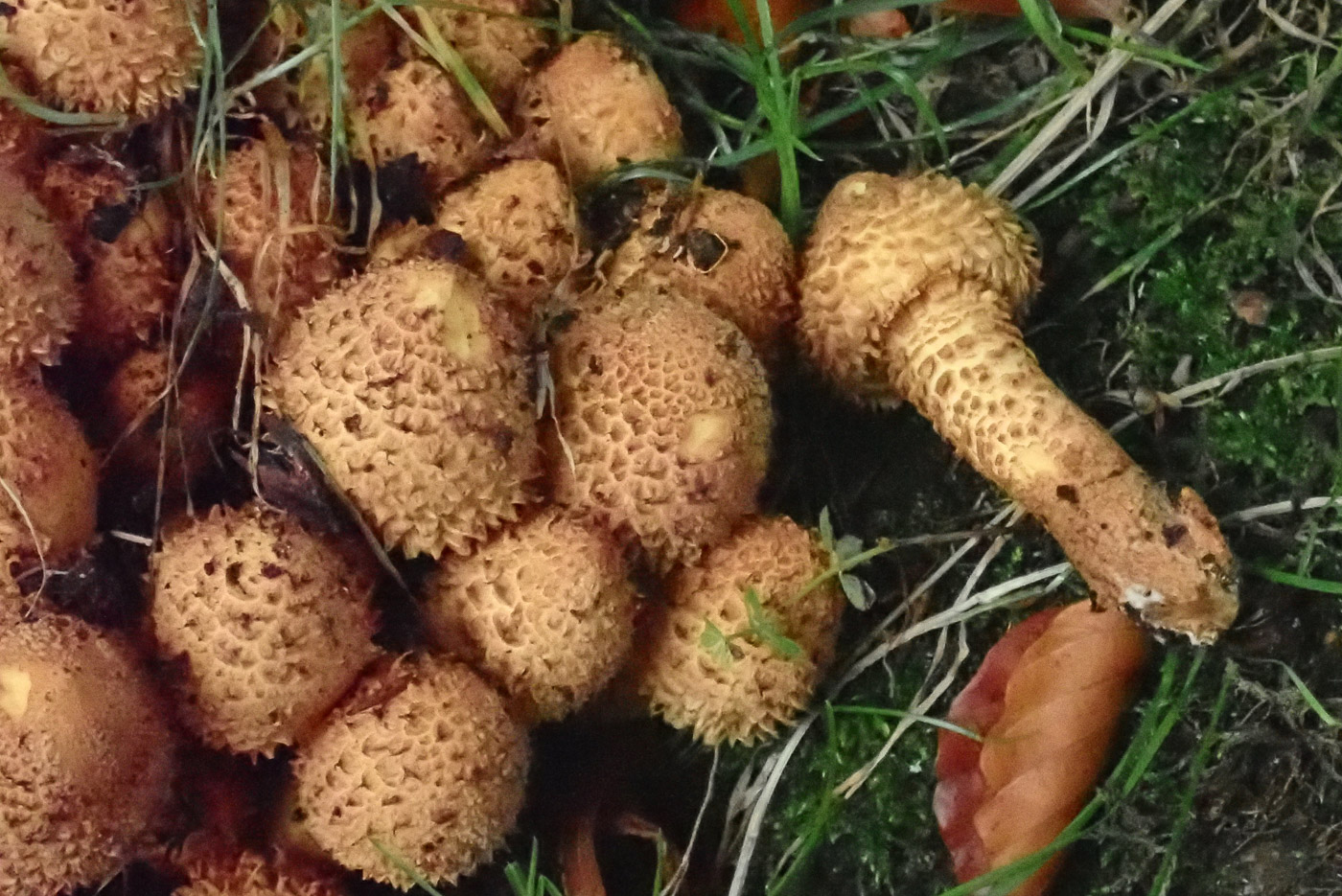
|
Pholiota squarrosa (Shaggy Scalycap)
Nov 2, 2023. In Stoke Poges Memorial Gardens Penny checked the base of a Laburnum tree where this species is a regular, and there amongst the vegetation it was just beginning to emerge. Well described by its common name, this is a big chunky species which forms large tightly clustered clumps on a range of deciduous trees and is usually quite common though has not been much in evidence this year as yet. Maybe now is its moment!
Oct 14, 2021. In Whiteleaf Wood Penny found this tightly clustering species just emerging at the base of an old Beech. It is probably the commonest Scalycap and also the easiest to identify though others in the genus also cluster in this way. It is certainly the shaggiest with large dry scales on cap and stem, and the caps when expanded (not seen here) can get to about 10cm across, the gills are olive yellowy brown and the stem retains a ring. An impressive species, this is one to look out for now at the base of deciduous trees.
|




 |
Pholiota tuberculosa (a Scalycap with no common name) 
Oct 22, 2023. At Turville Heath under Lime Penny noticed this small but bright yellow cap in woody litter and found it was attached to a piece of stick. She suspected it was this unusual species having found it earlier in the year elsewhere (see July 19th - our only other entry), so took it home to check the microscopic details. The name Scalycap is indeed appropriate for the majority of this genus but not for this particular member which has an almost smooth cap though the yellow gills and rusty spores are typical.The cells on the gill edge are particularly useful and are distinctly capitate - ie they have swollen blobs on top. The species may be more common than we realise (we have few records) but could easily be misidentified in the field as Gymnopilus penetrans (Common Rustgill).
Jul 19, 2023. On a fallen Cherry branch at Kings Wood, Tylers Green, Penny noticed these small but brightly coloured mushrooms, thought at first they might be immature Gymnopilus penetrans (Common Rustgill) but then realised they were too bright a yellow and might possibly be this unusual and possibly sometimes misidentified species of Pholiota. Microscopic features at home then confirmed it. Photo 3 shows the slightly roughened though hardly scaly cap surface compared to many in this genus, also when mature and larger - these were less than 1cm across but it can get to 4 cms or more - the cap colour becomes more ochre orange and less bright. It can occur on a range of deciduous woods. We have only a handful of county records since 2000 and this is a new entry for Finds.
|

 |
Phragmidium fragariae (a Rust species on Barren Strawberry)
Apr 24, 2023. At Rushbeds Wood Penny made a point of checking the wall of the railway bridge where this rust was found on our Springtime visit here last year. There is a story attached to this fungus at this site - see Penny's report for Rushbeds Wood April 16th 2022 for more. This a new entry for Finds - the previous 2022 April collection being on one of our walks therefore not eligible to be included. Though not rare we have only a handful of county records, the fungus be dependent on identification of the specific plant on which it occurs.
|
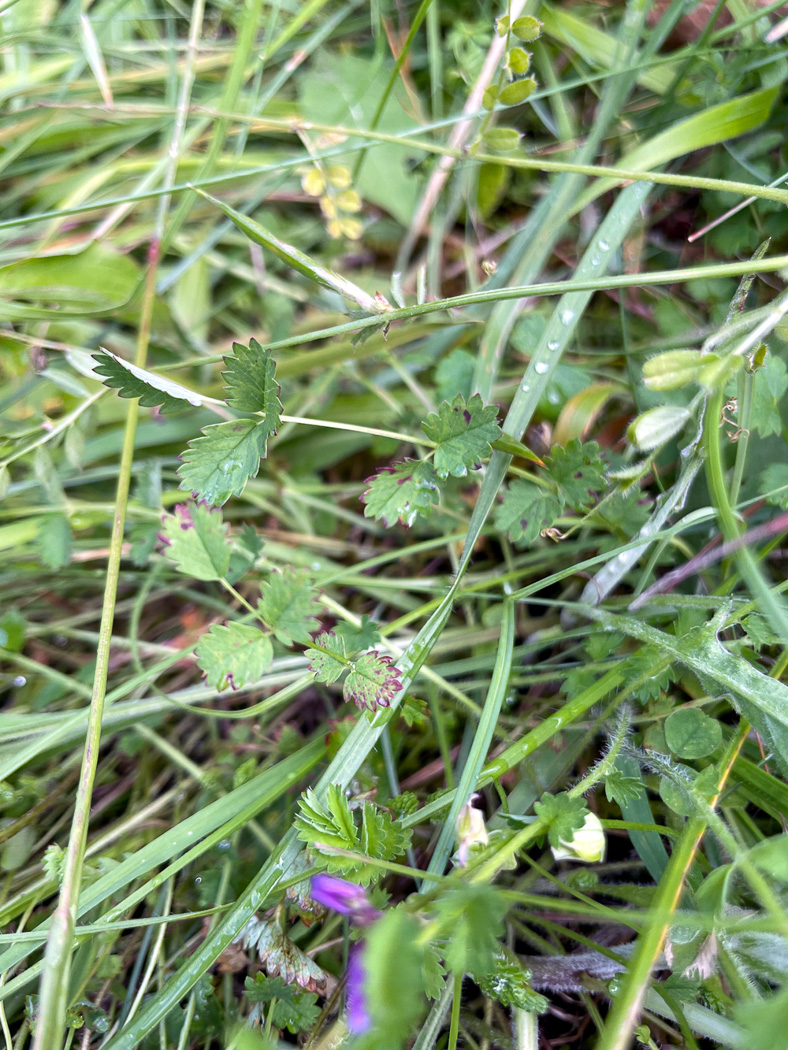
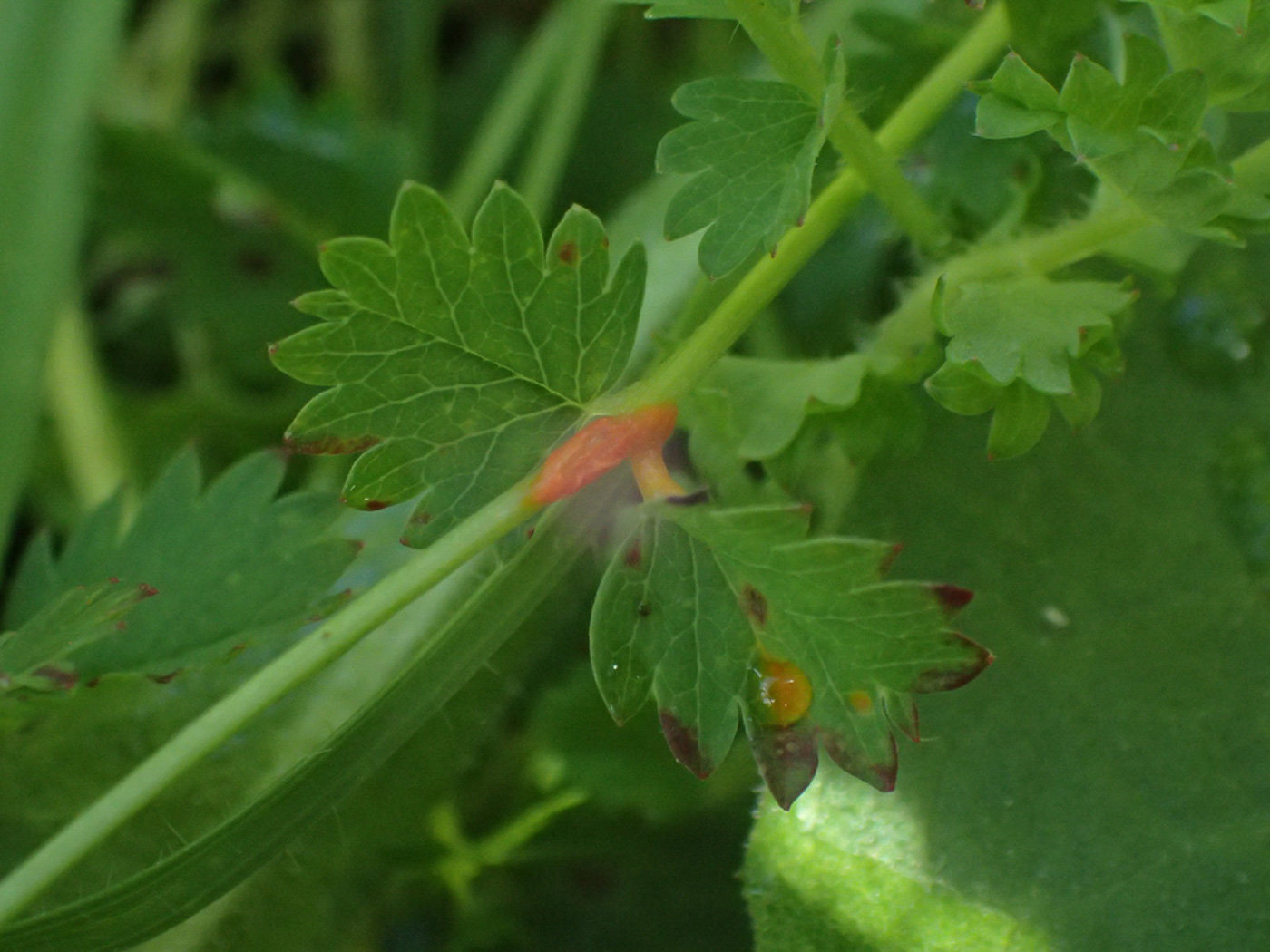
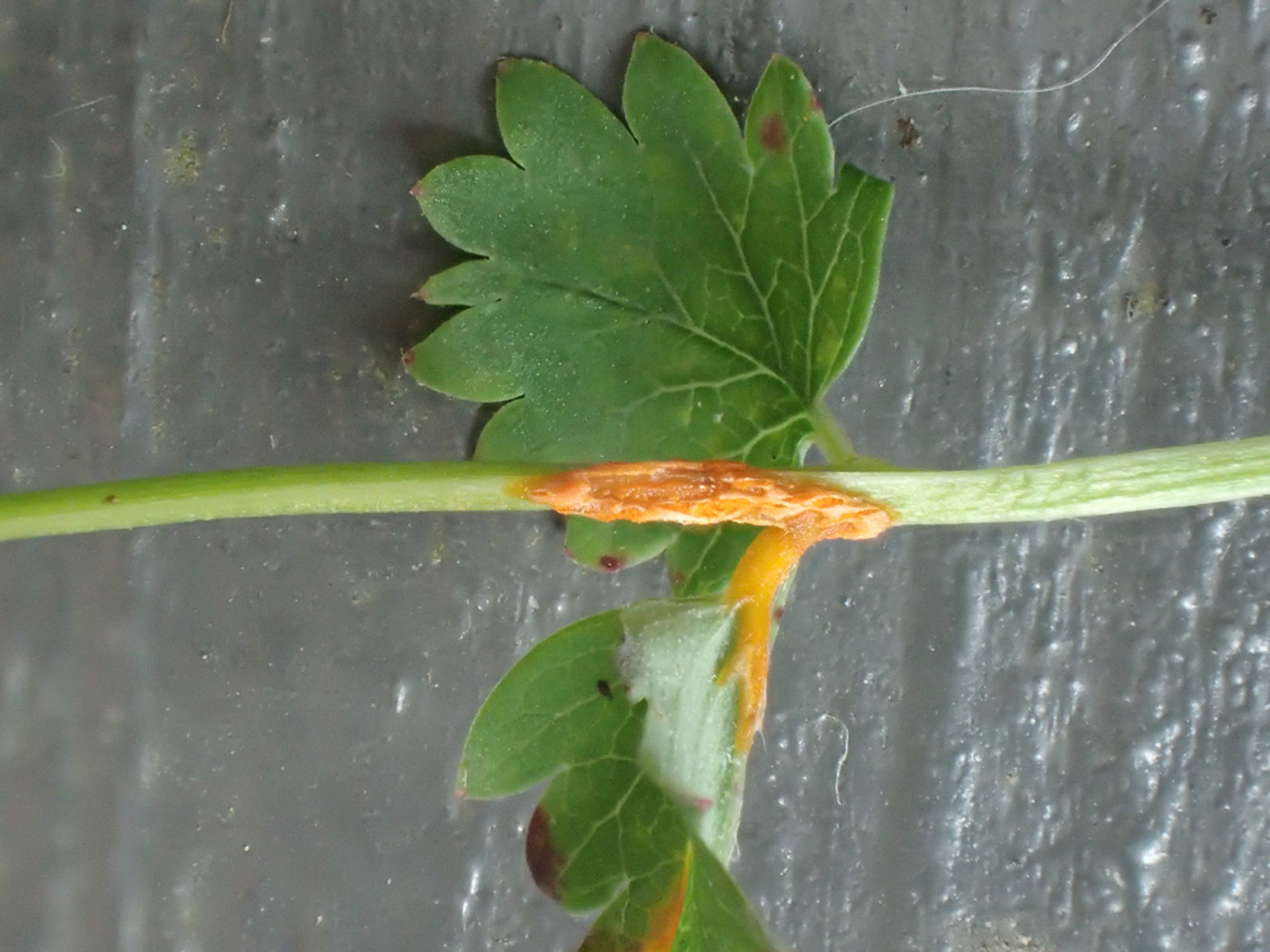
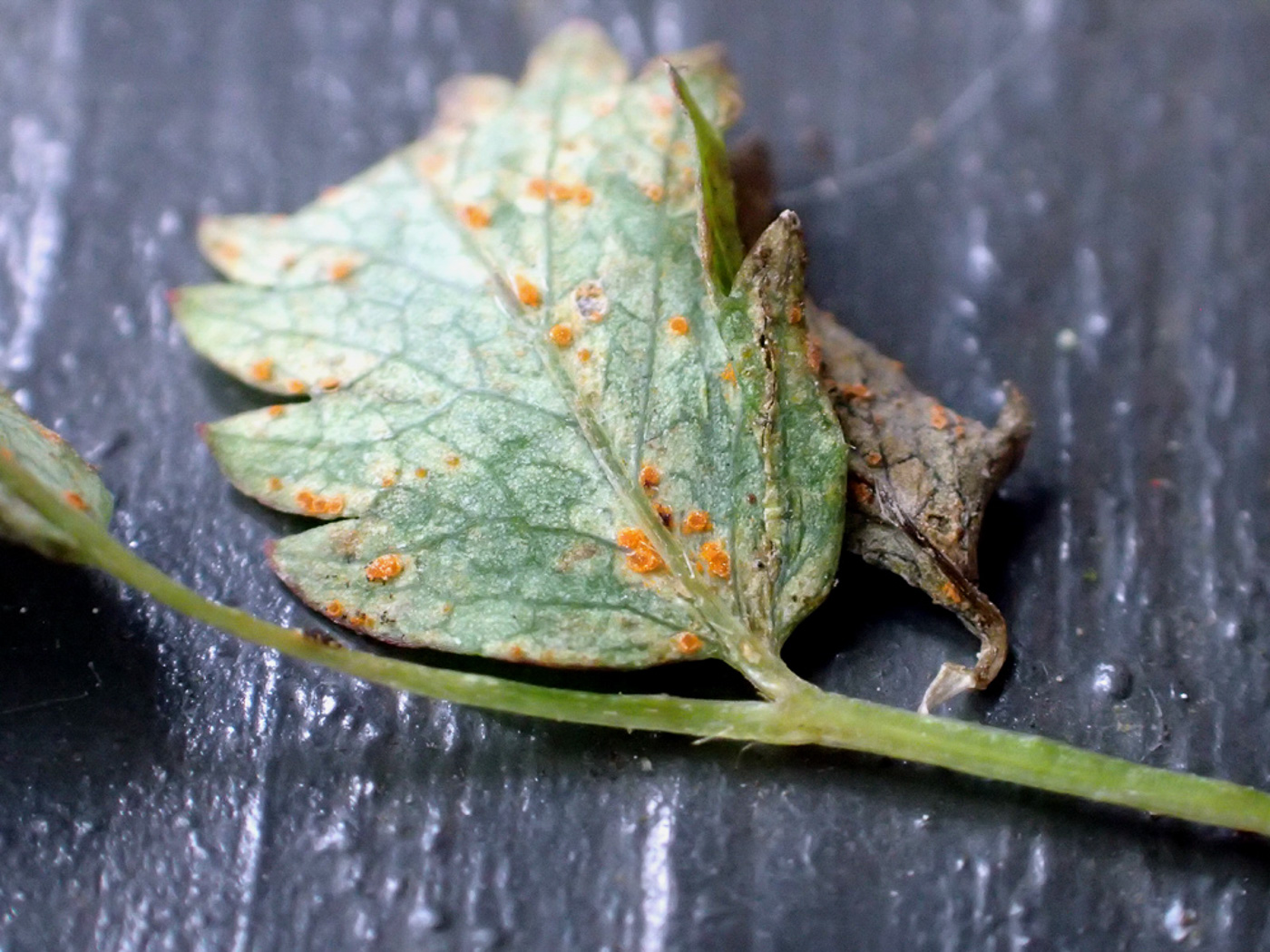 |
Phragmidium sanguisorbae (Salad Burnet Rust) 
May 29, 2024. At Homefield Wood Sarah Ebdon (whilst on her knees to photo an orchid!) spotted this rust affecting both leaves and stems of Salad Burnet. It is host specific to this plant, furthermore - unusual for a rust - uses only this host through its life cycle rather than needing at least one different host for its various stages. This is a common species though often overlooked for obvious reasons. It is a new entry for Finds.
|
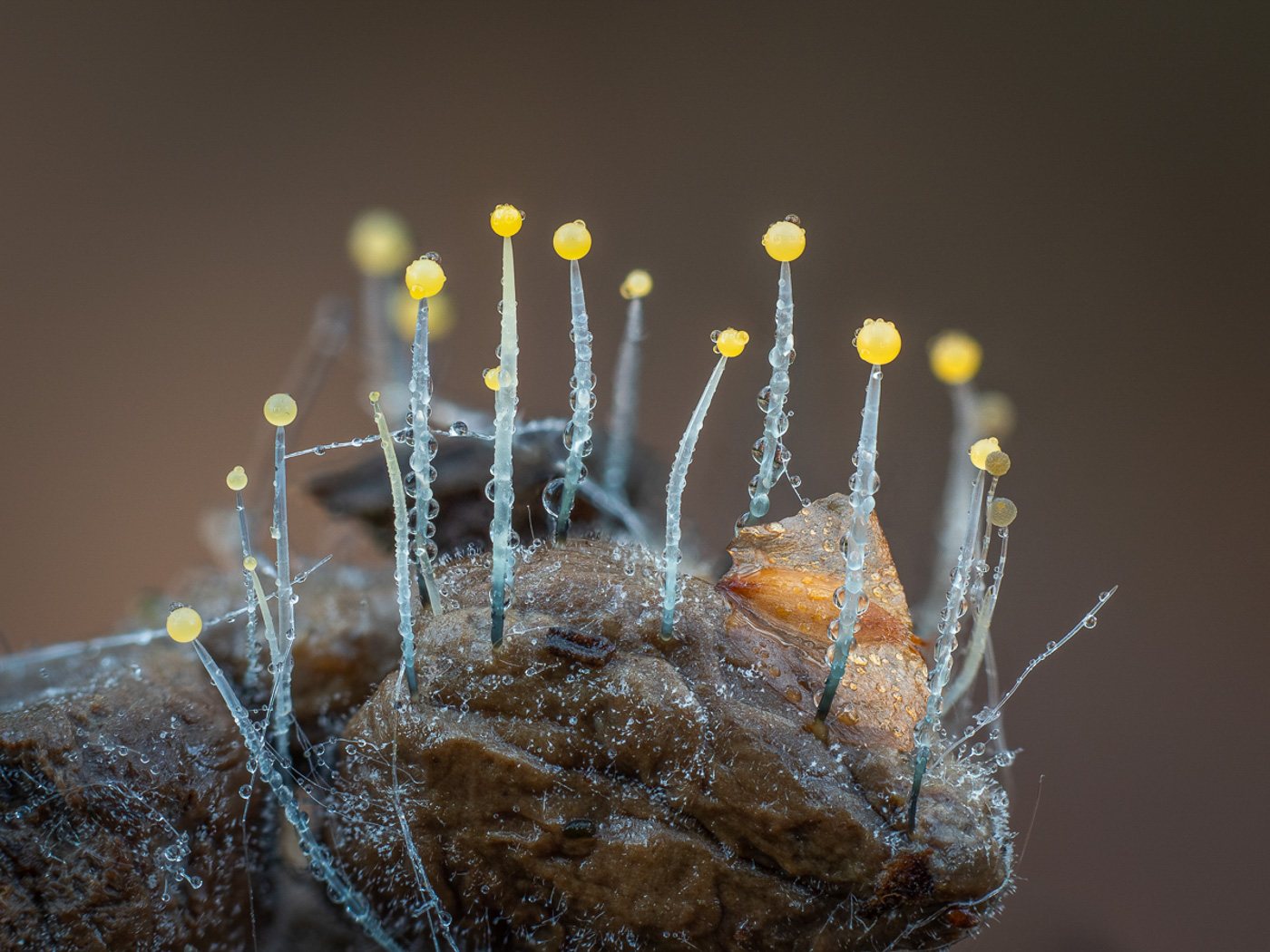 |
Phycomyces blakesleeanus (a fungus with no common name)
Nov 23, 2020. Barry Webb found, photographed and identified this amazing tiny but beautiful fungus which was on a bird dropping in Burnham Beeches. There are scattered records for this from the UK but apparently none for Bucks so it is new to the site and to the county.
|

 |
Phylloporus pelletieri (Golden Gilled Bolete)
Oct 14, 2023. Under Oak at Chalfont St Peter Jesper Launder was excited to find this rare and somewhat strange Bolete - yes, it is a Bolete despite having gills in place of pores! DNA sequencing places it close to Xerocomellus though at present it still retains its separate genus name. However, the 'gills' can be seen here to be rather odd and anastomosing, almost like a halfway stage between gills and pores, and like all other Boletes they readily come away from the cap flesh - as indeed do the gills of Paxillus - also closely related to Boletes. We have only a very few previous county records and this is another new entry for Finds. The photos are Sarah Ebdon's who went to see it the following day, reporting 20 or more fruitbodies!
|
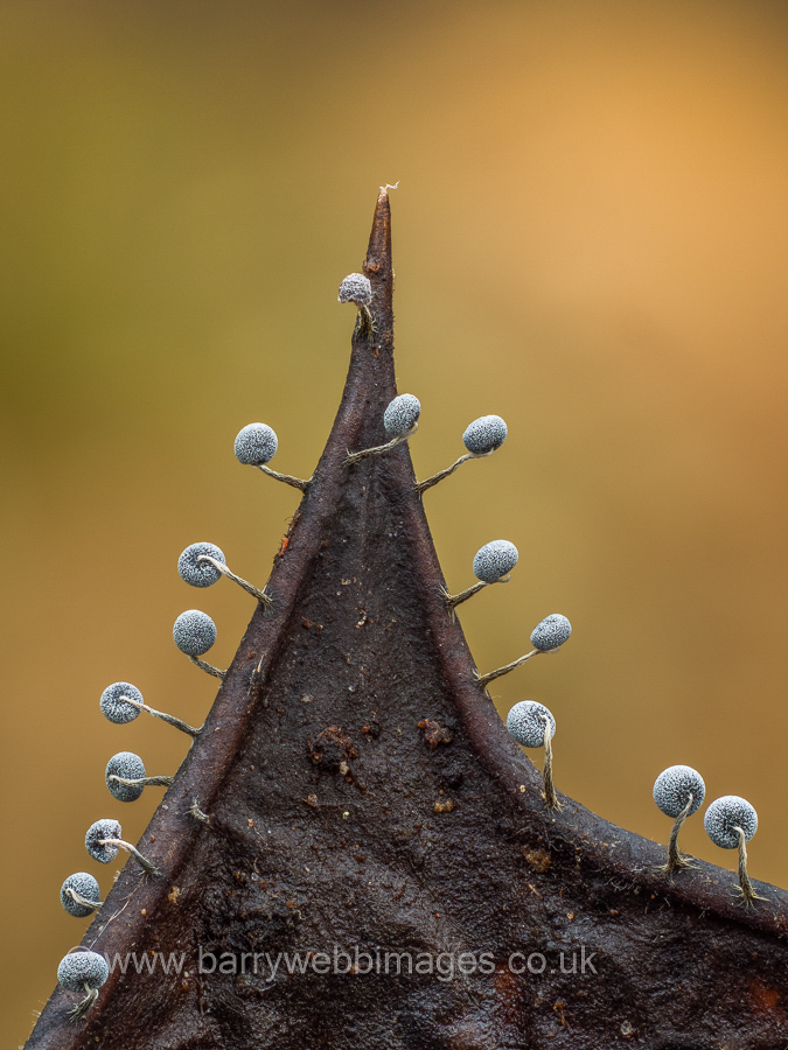
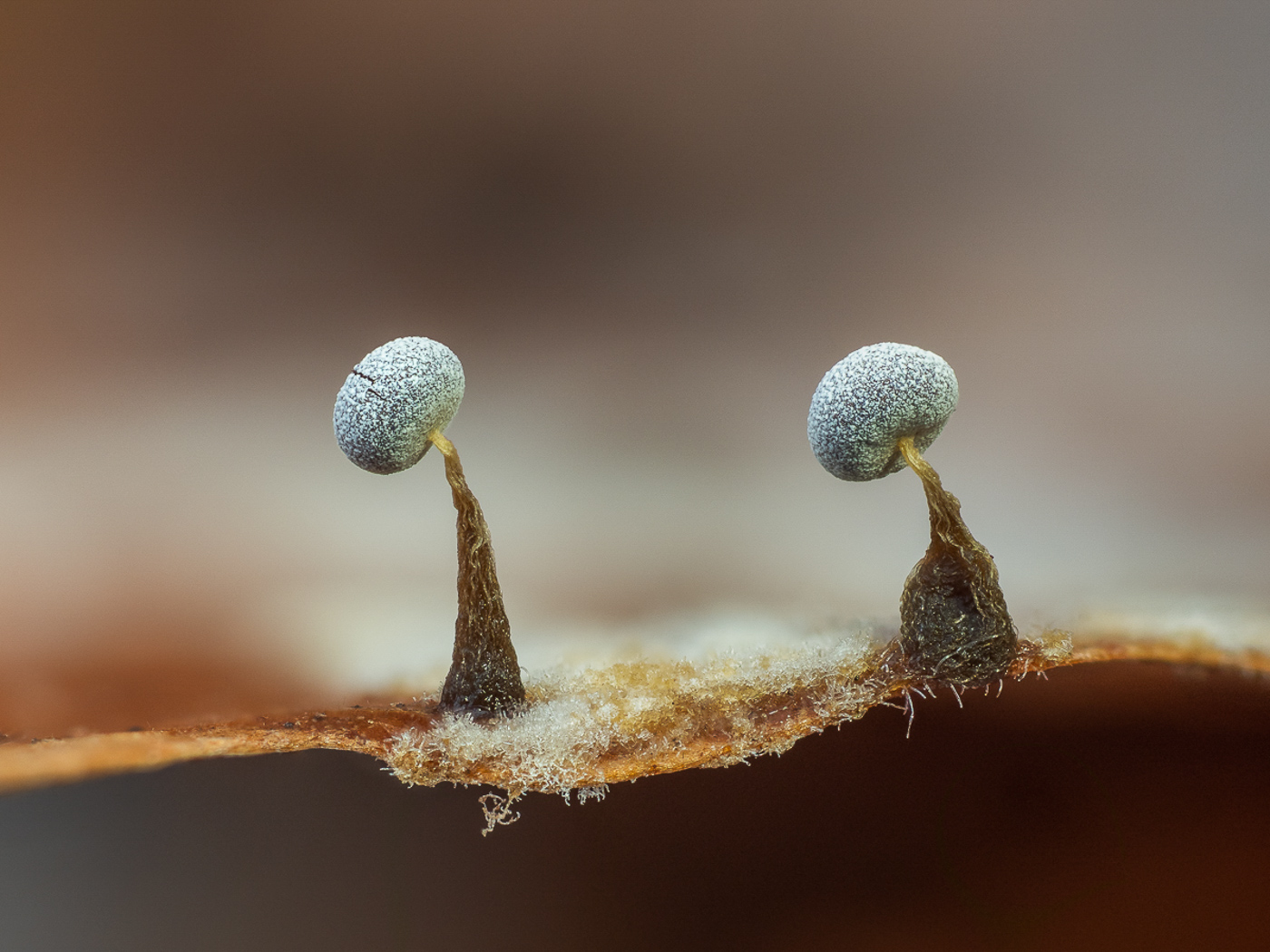
|
Physarum album (a Slime Mould with no common name)
Jan 6, 2022. In Hodgemoor Woods Barry found this really photogenic example of quite a common Myxo on a curled up dead Holly leaf. Previously known as P. nutans (meaning nodding), when mature the heads of this species usually dip over as can be seen here. It is more often found on dead wood or bark, less often in moss or leaf litter as here. (For more examples of the genus go to Barry's separate page on Finds.)
Nov 1, 2020. Barry Webb found this quite common species (previously known as Physarum nutans?) in Burnham Beeches growing in Beech litter. A member of a large and difficult genus to identify to species, this particular species can with experience be named in the field because of its 'nodding' habit: the heads, covered in white crystals, tend to droop. Found sometimes in large colonies, each sporocarp (fruiting body) is no taller than 1 cm.
|
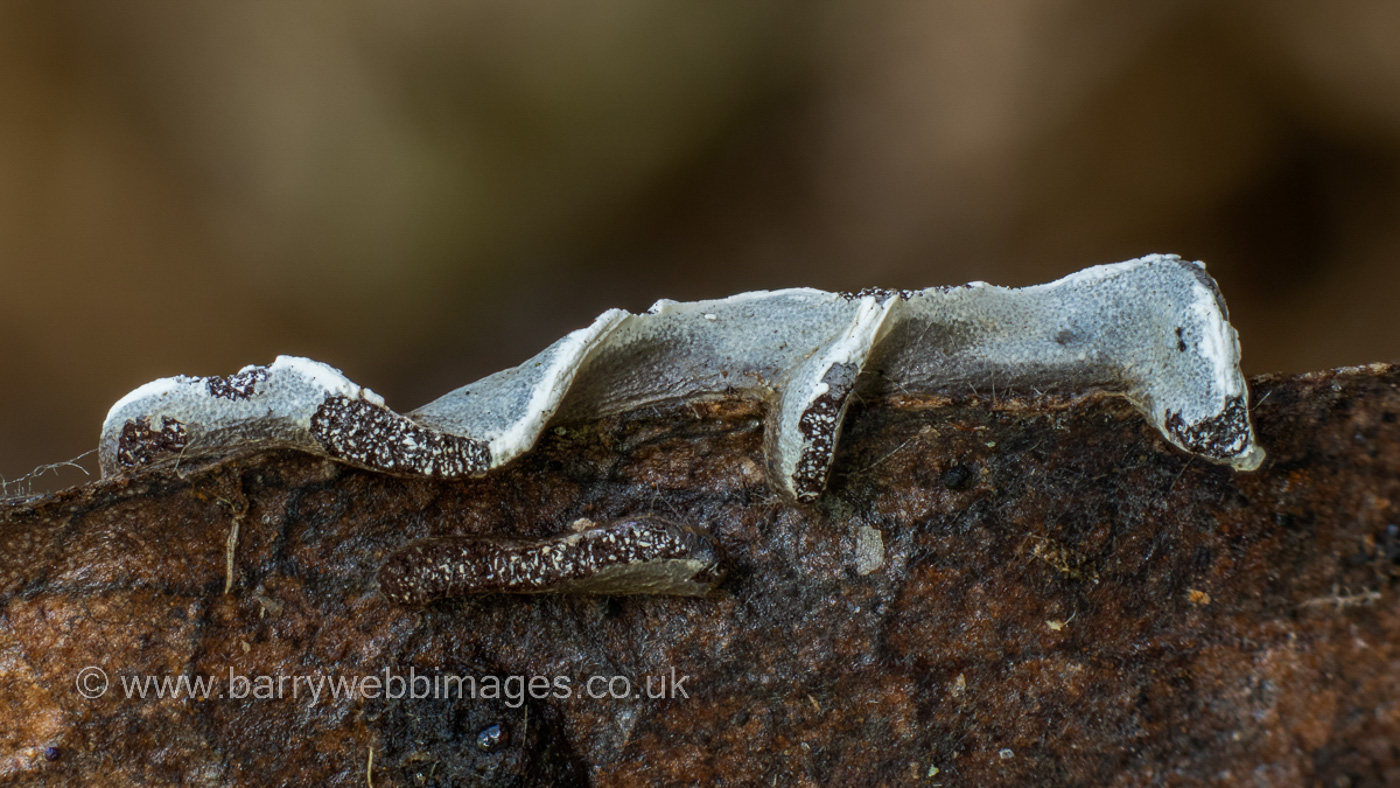 |
Physarum bivalve (an unusual Slime mould with no common name) 
Dec 8, 2022. In leaf litter at Burnham Beeches Barry Webb found this tiny strip of a slime mould species, new to him and to the site and with just one previous county record when identified by expert Bruce Ing from a specimen sent him by Penny in 2014 from Carpenters Wood. Barry's collection was identified by expert Edvin Johannesen from his macro- and microphotos.
|
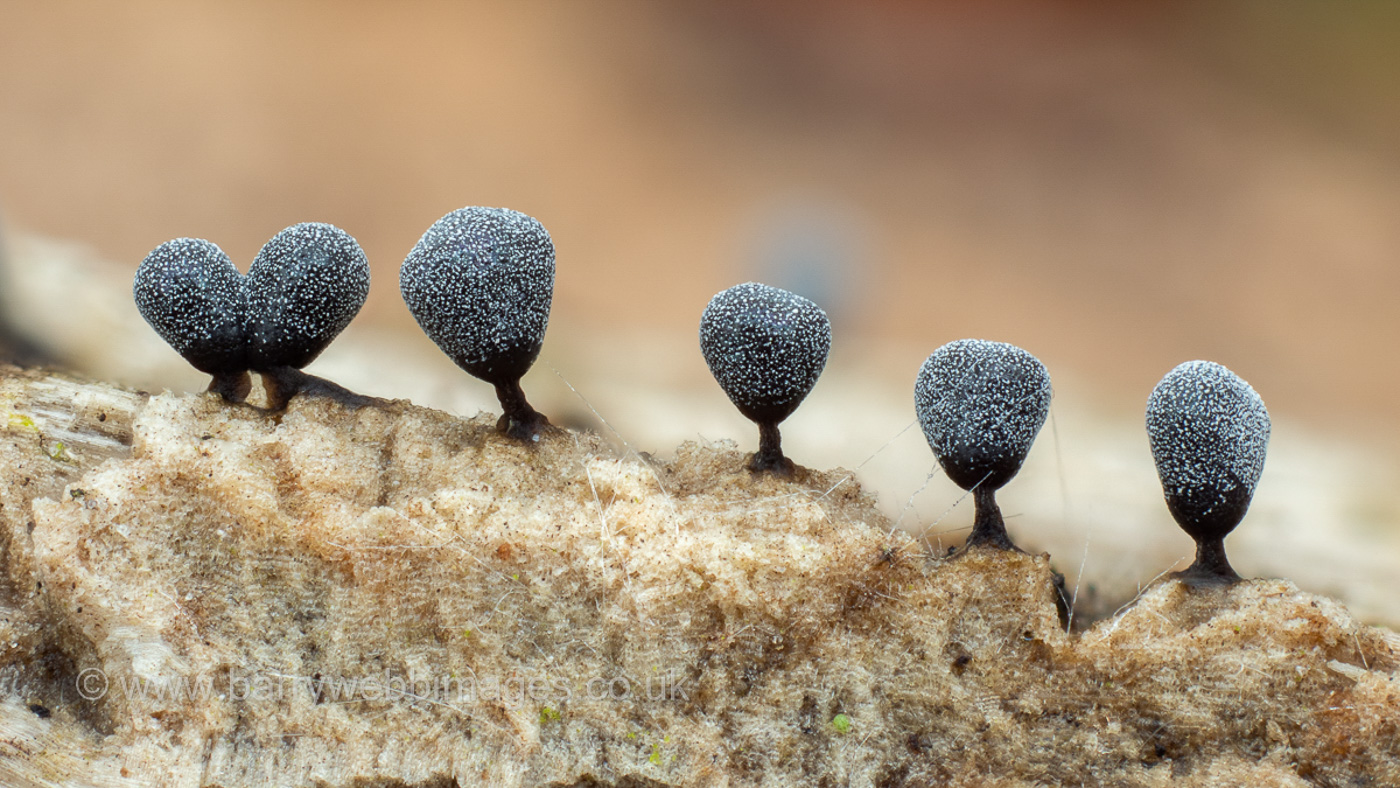
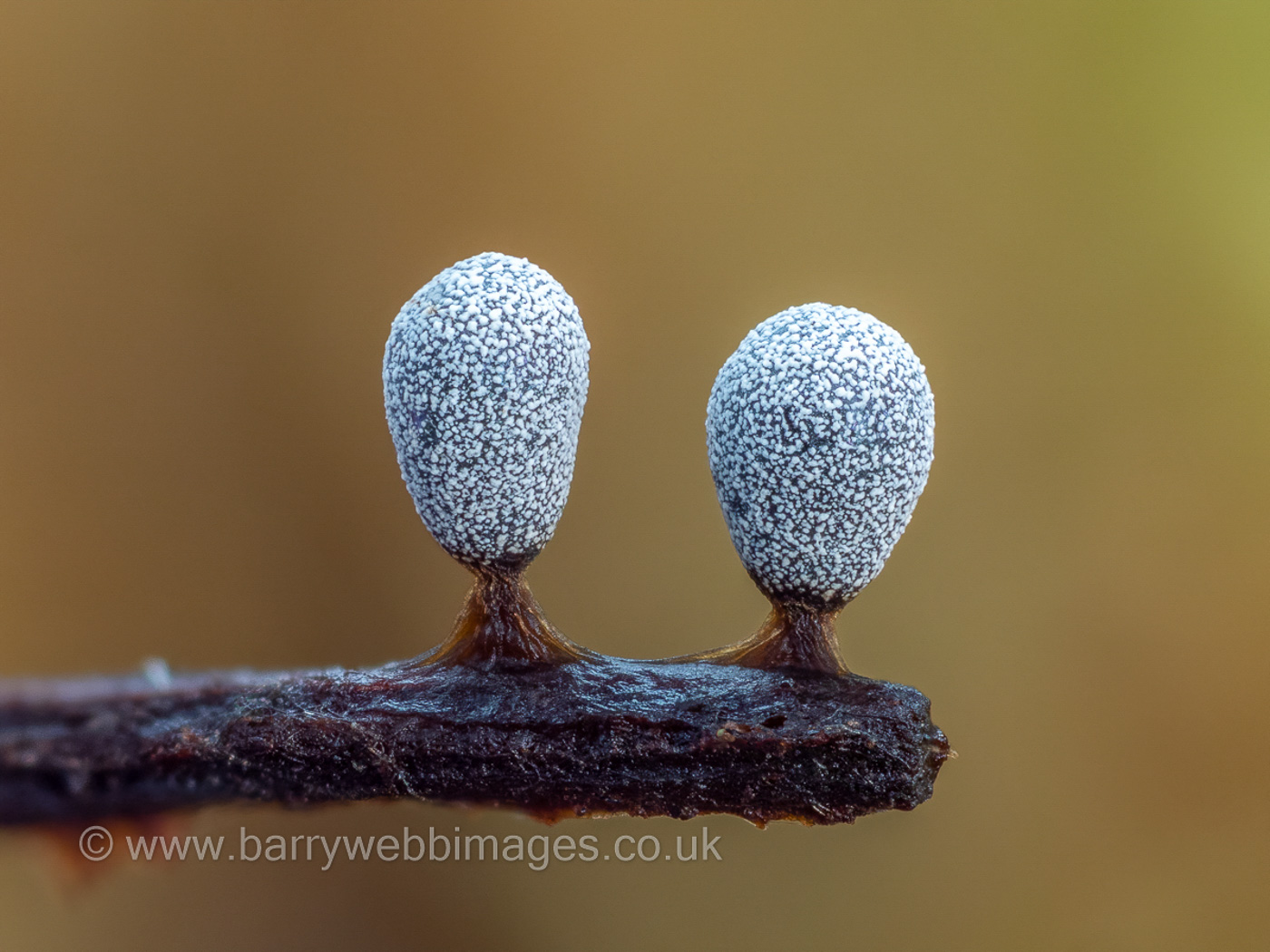 |
Physarum compressum (a slime mould with no common name)
Mar 16, 2021. Barry Webb found this delightful line of tiny blobs in Burnham Beeches (16.03.2021) on a woodchip pile. (The determination was confirmed online by Myxo expert Edvin Johannesen.) This particular species has a very dumpy short stalk (not called a stem or stipe as in fungi) and over all is no more than 1 mm tall. Though described as quite common, this is our first record for the county.
|
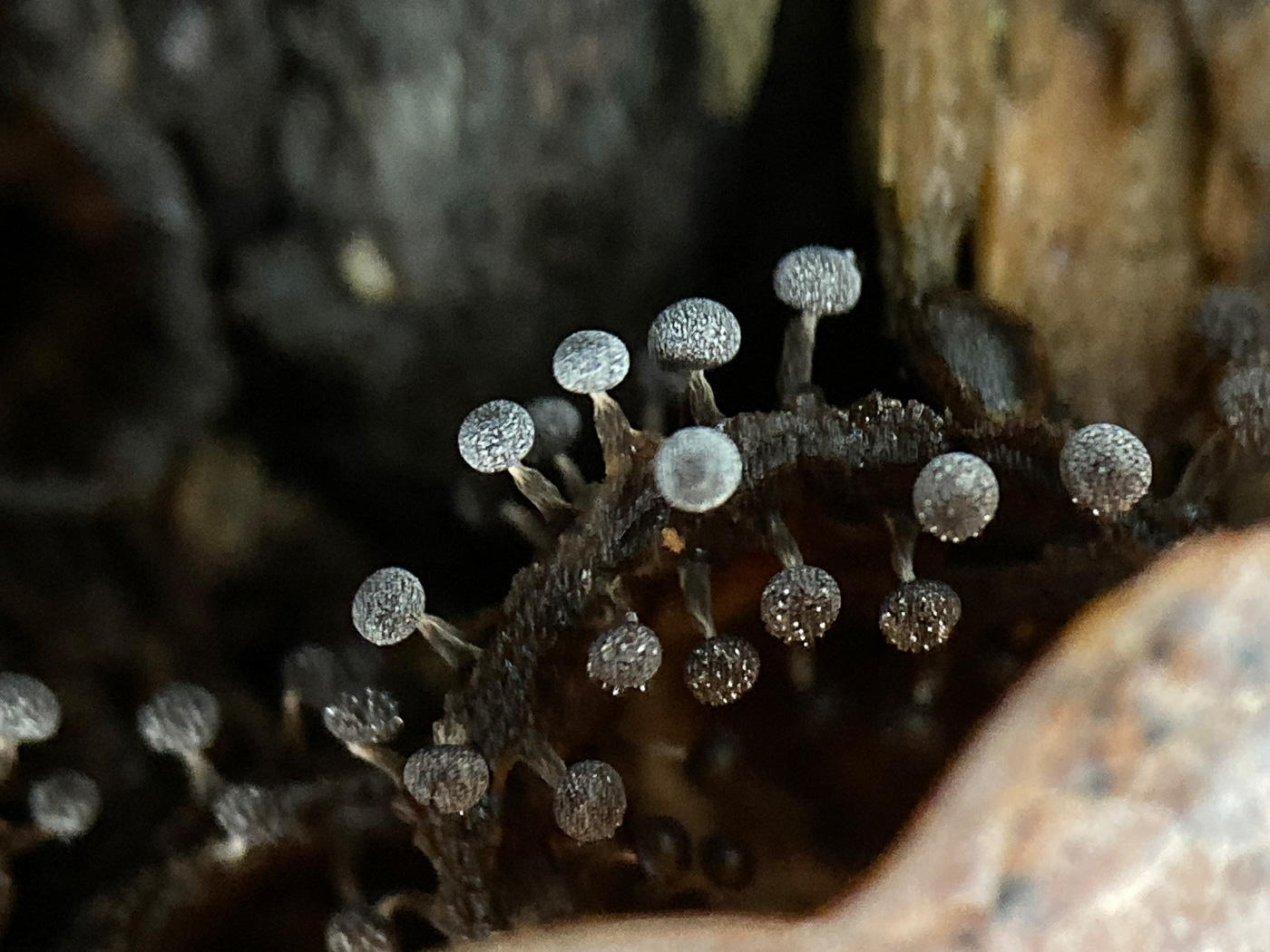
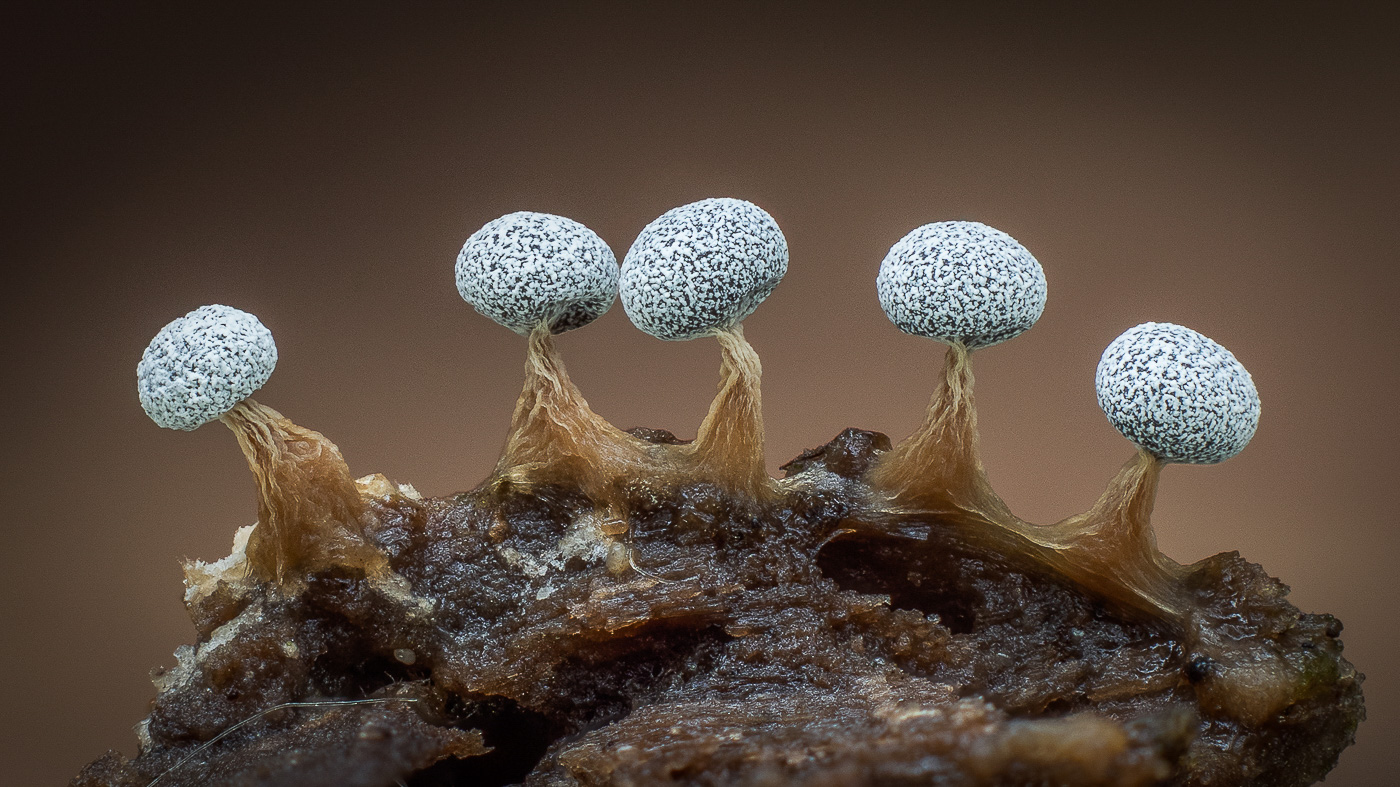
|
Physarum leucophaeum ( a Slime Mould with no common name)
Nov 2, 2022. At Stoke Poges Memorial Gardens Russell Ness found not only the tiny Cyathus striatus (Fluted Bird's Nest) in the woodchip, but growing on it he noticed this slime mould. His photo has been identified for us by Barry Webb. We have just one previous entry in Finds: 2020 October 16th.
Oct 16, 2020. Barry Webb found these tiny gems on rotting fallen Beech in Burnham Beeches. No more than 1.5 mm high, this species is a member of a very large genus which has a protective coating of calcareous crystals or granules covering the sporangium (fruiting head), giving the appearance of being dusted with icing sugar! We have just two county records of this species, reflecting the rarity of expertise amongst recorders rather than of what is apparently a common species! (See also P. leucopus found the same day.)
|
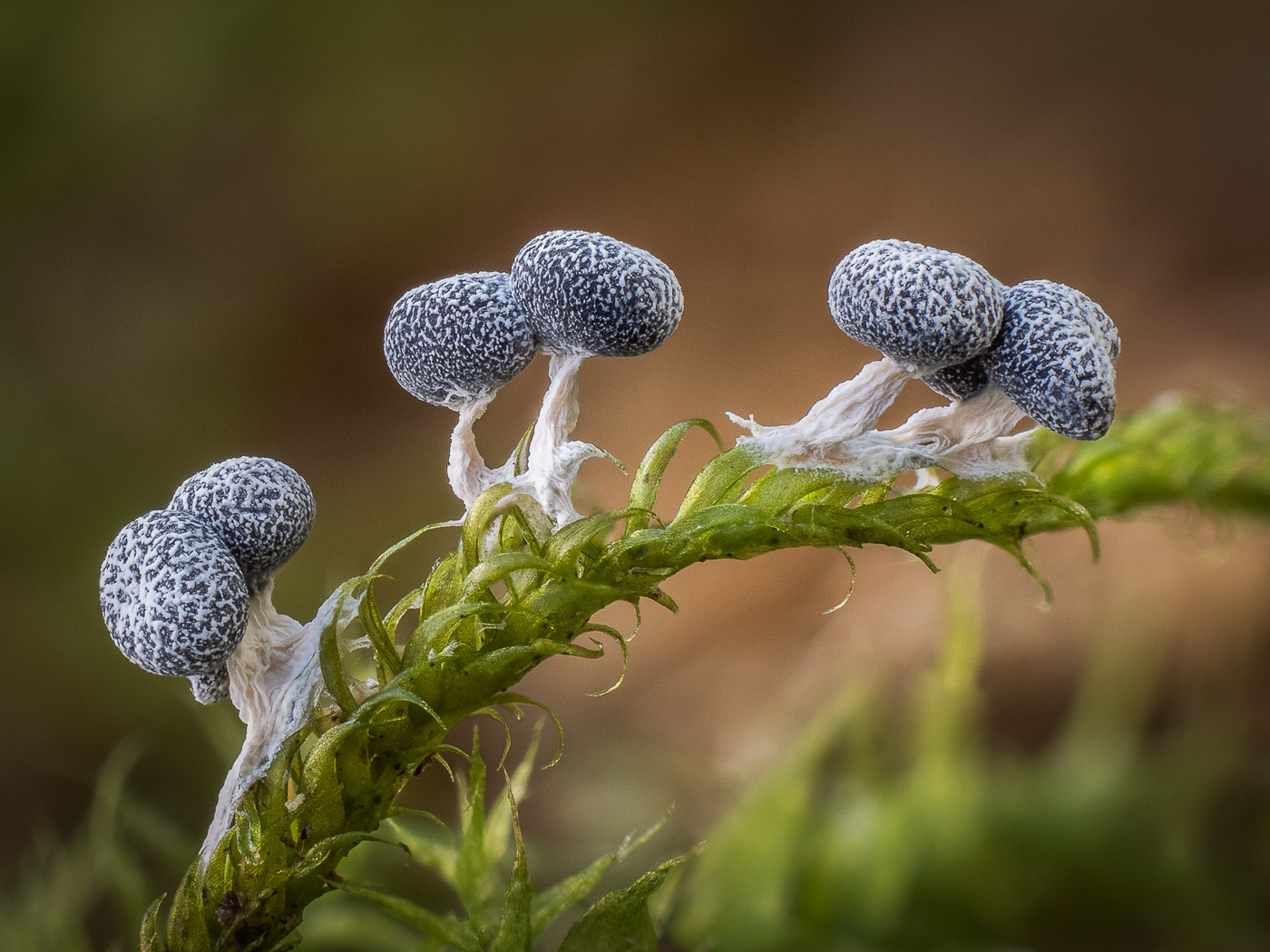
|
Physarum leucopus (a Slime Mould with no common name)
Oct 16, 2020. Barry Webb found this uncommon slime mould growing in moss on a Beech log in Burnham Beeches. Clearly very similar to P. leucophaeum, also found today (see notes for that species), it inhabits woodland debris rather than wood itself and has a distinctive white stalk, hence its species name. This is new not only to the site but also to the county.
|

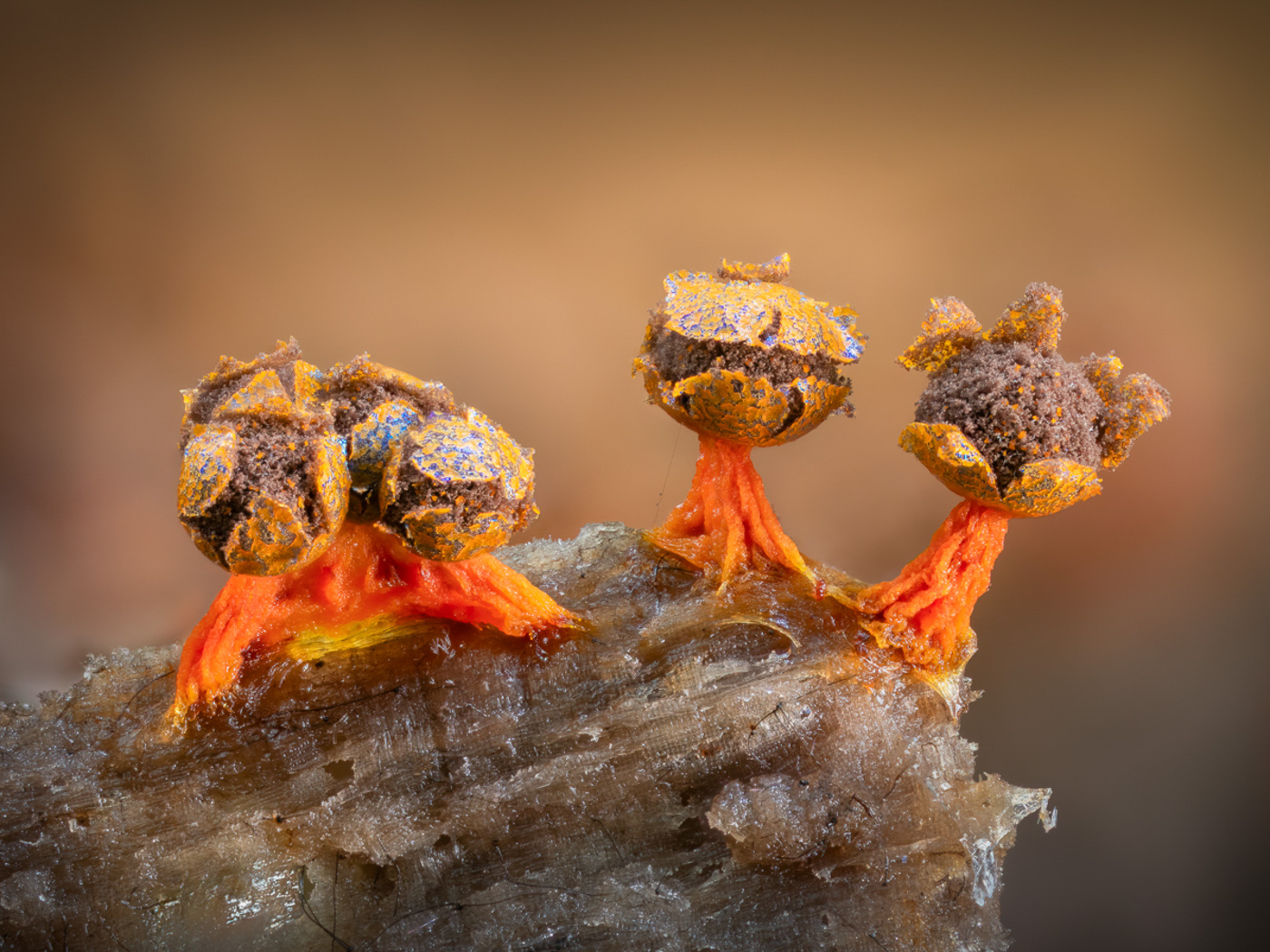 |
Physarum psittacinum (an unusual Slime Mould with no common name)
Jul 11, 2023. At Penn Wood on fallen rotting Beech, Barry Webb found this beautiful and distinctive species, new to the county. Only at most 1.2mm high, it is notable for its brilliant orange stalk, iridescent bronze sporangia with both blue and orange reflections - all these elements clearly visible in Barry's amazing photo and making it easy to recognise- the tricky bit is finding it in the first place! Photo 2 is of a second more mature find of this rarity by Barry at the same site on August 28th.
|
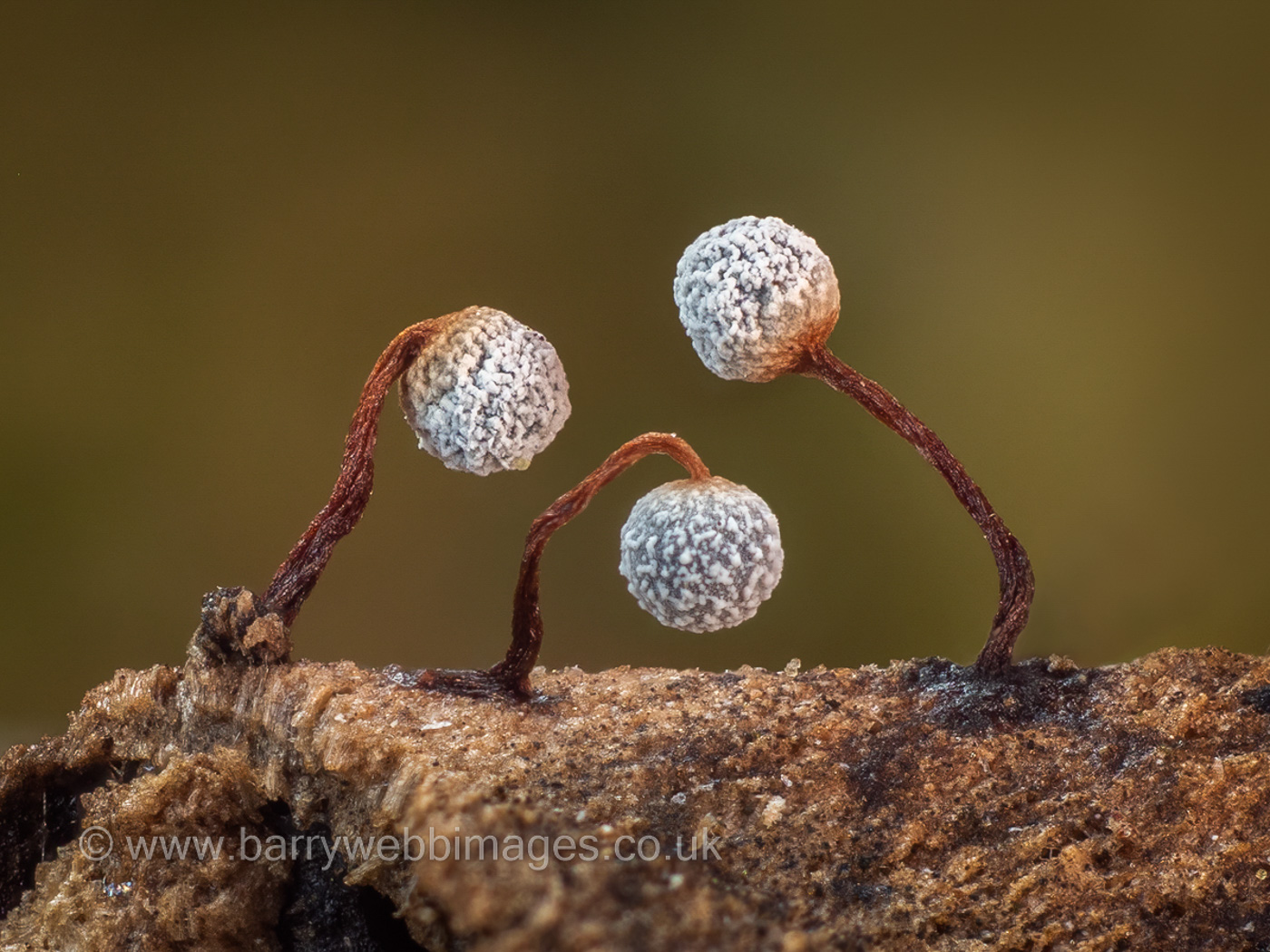
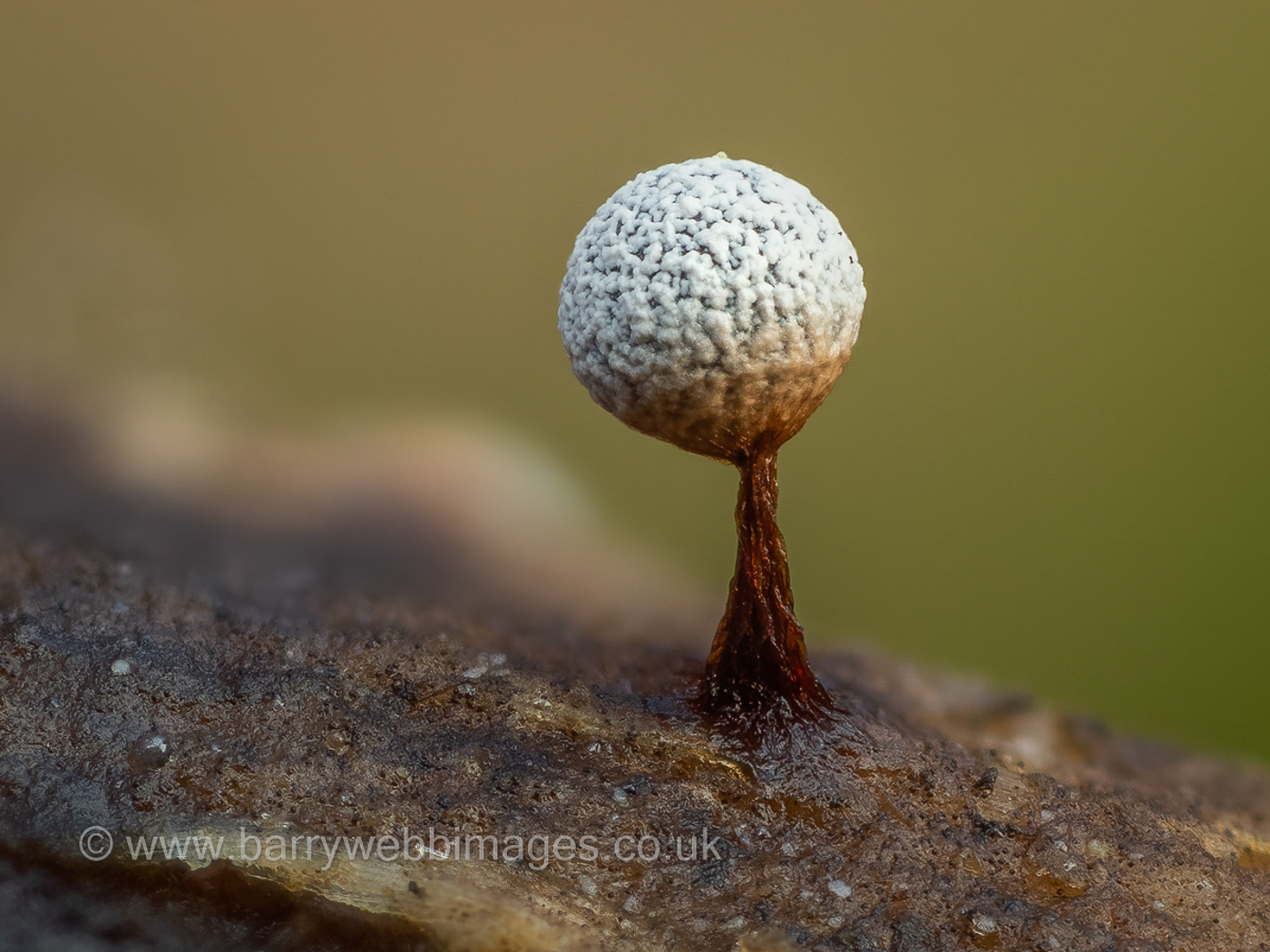 |
Physarum pusillum (a slime mould with no common name)
Mar 19, 2021. Barry Webb found this inconspicuous species in Burnham Beeches on a woodchip pile. Physarum is a large genus of Myxomycetes and there are many similar species, all sporting varying degrees of calcareous crystals (ie the white sugarlike coating seen here). This particular species is distinguished by its relatively tall and slender reddish brown stalk, the whole sporangia being only up to 2mm tall. (Compare with Barry's similar find three days earlier at the same site.) Though described as quite common, this is our first record for the county.
|
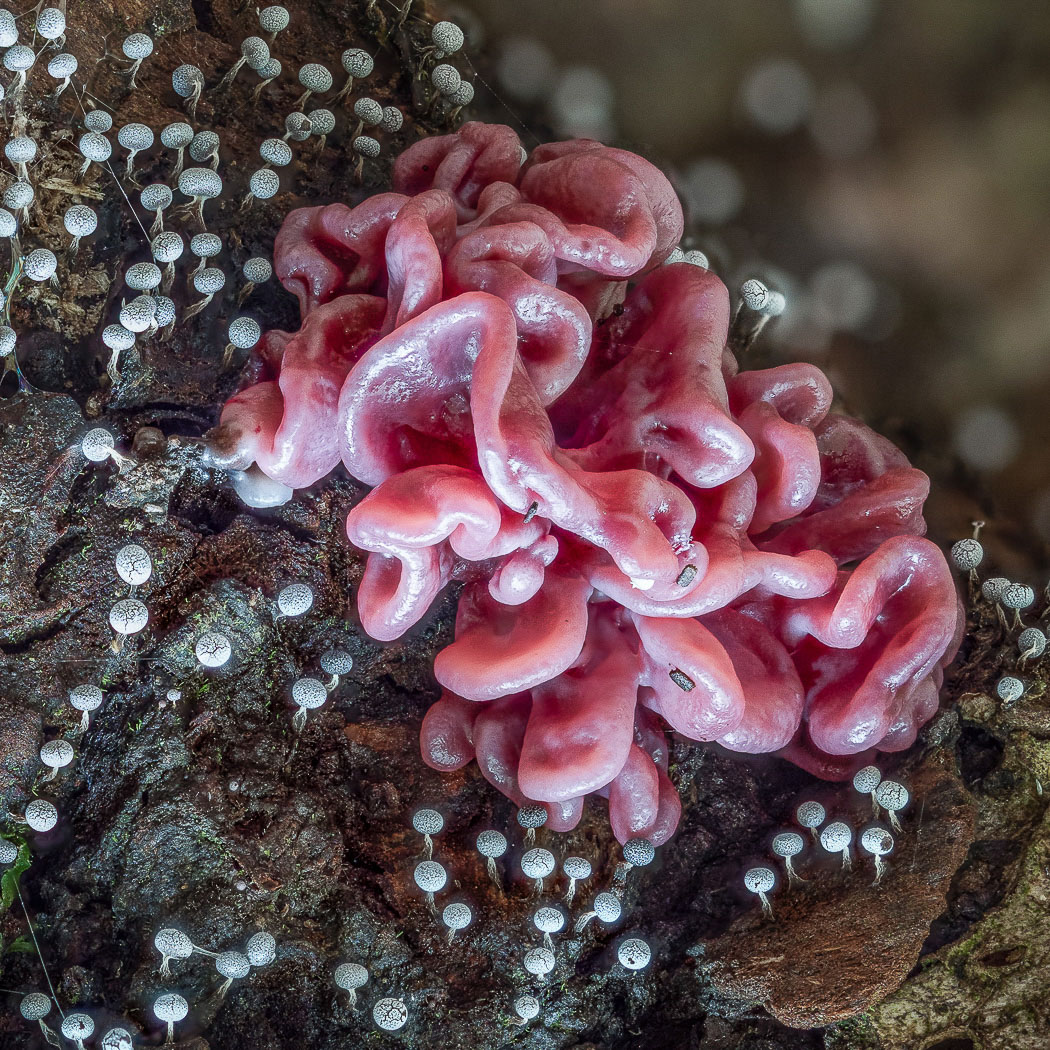 |
Physarum sp. with Ascocoryne sarcoides ( a species of Slime Mould with Purple Jellydisc)
Oct 18, 2020. Gill Ferguson found these two species together on rotting wood, presumable Beech, in Burnham Beeches. There are many different species of the Slime Mould genus Physarum and without recourse to a scope (sometimes even with one!) it is not possible to name them to species. The Ascomycete Ascocoryne we do have a previous photo, dated Oct 06, but this is a lovely example and a very attractive photo as well.
|

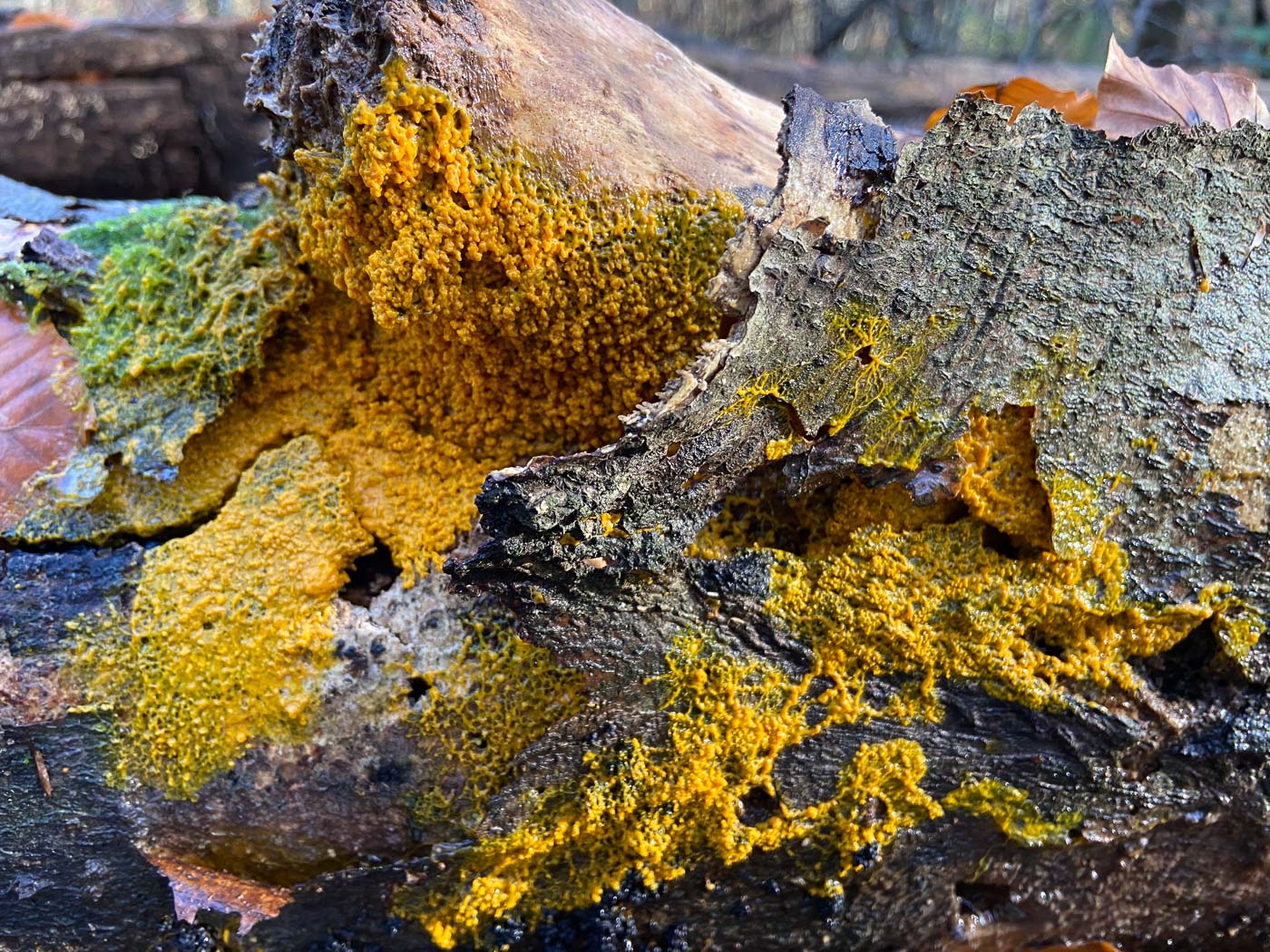
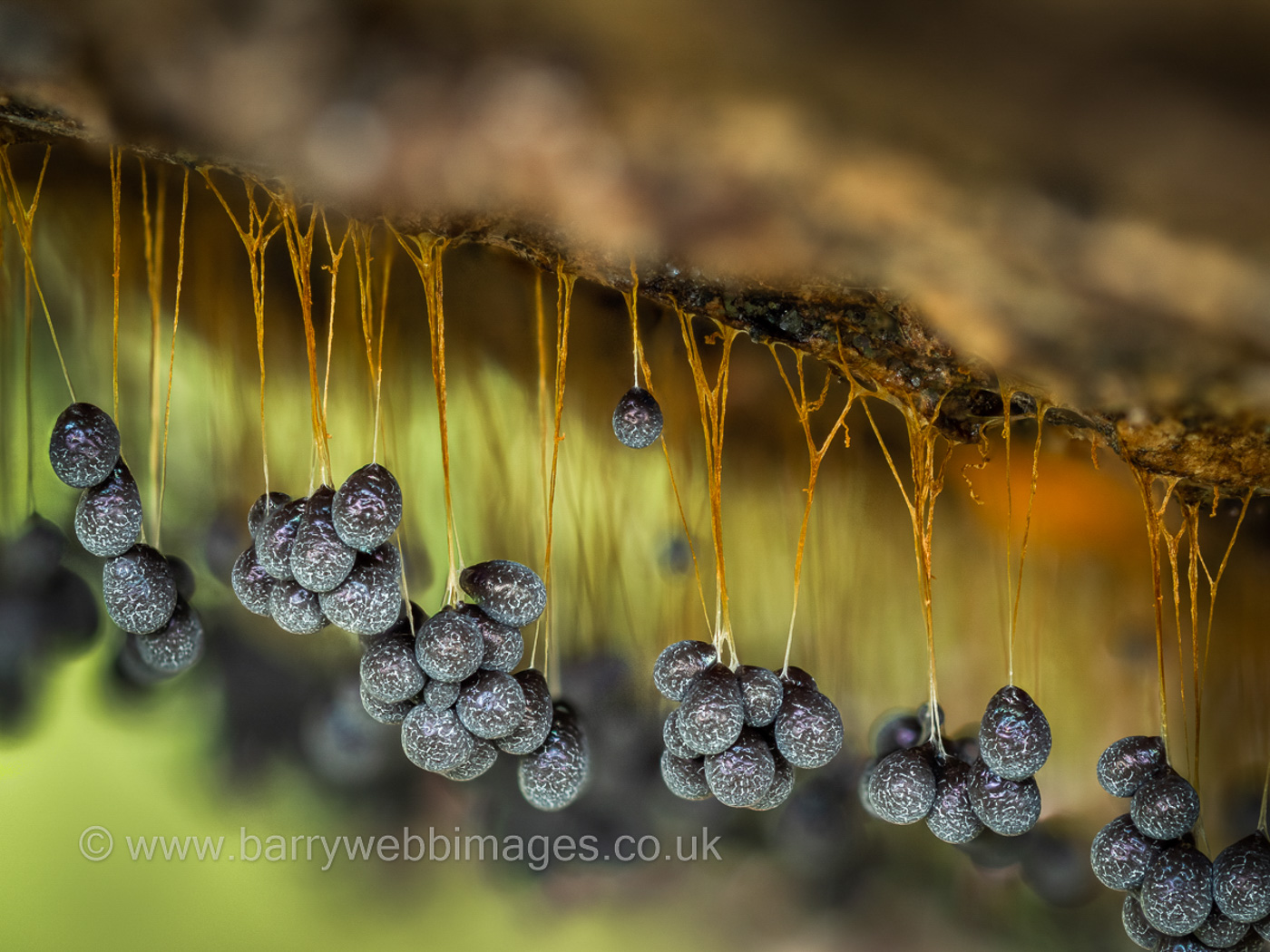

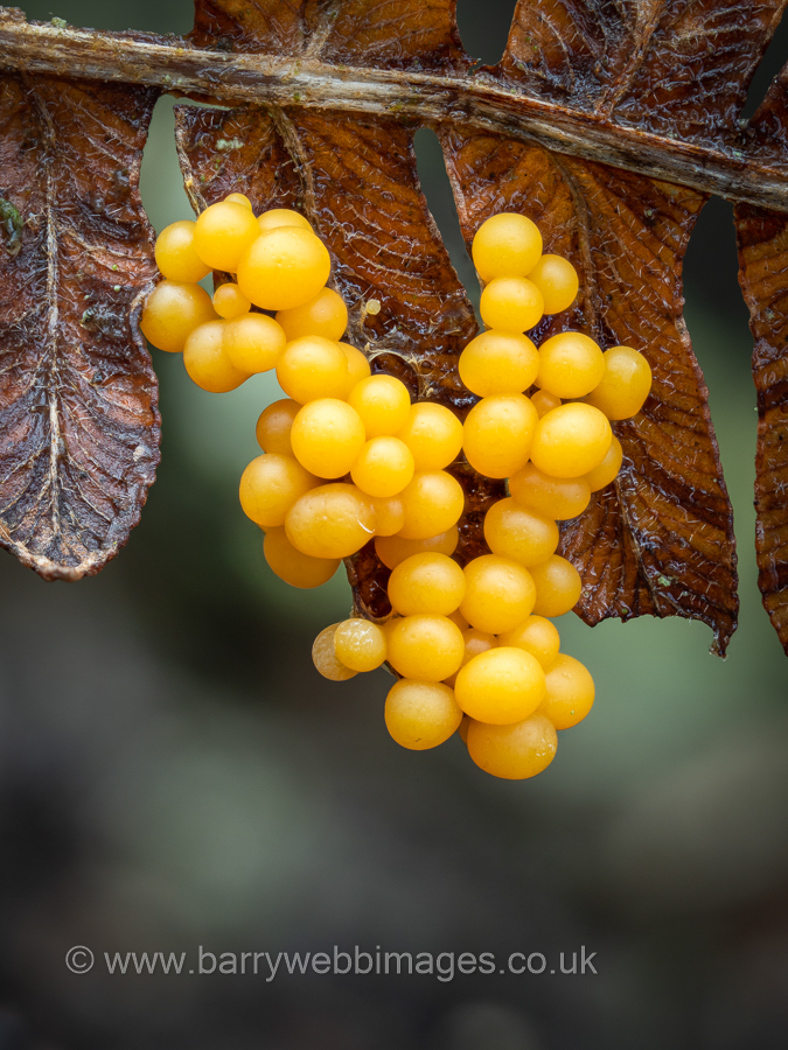
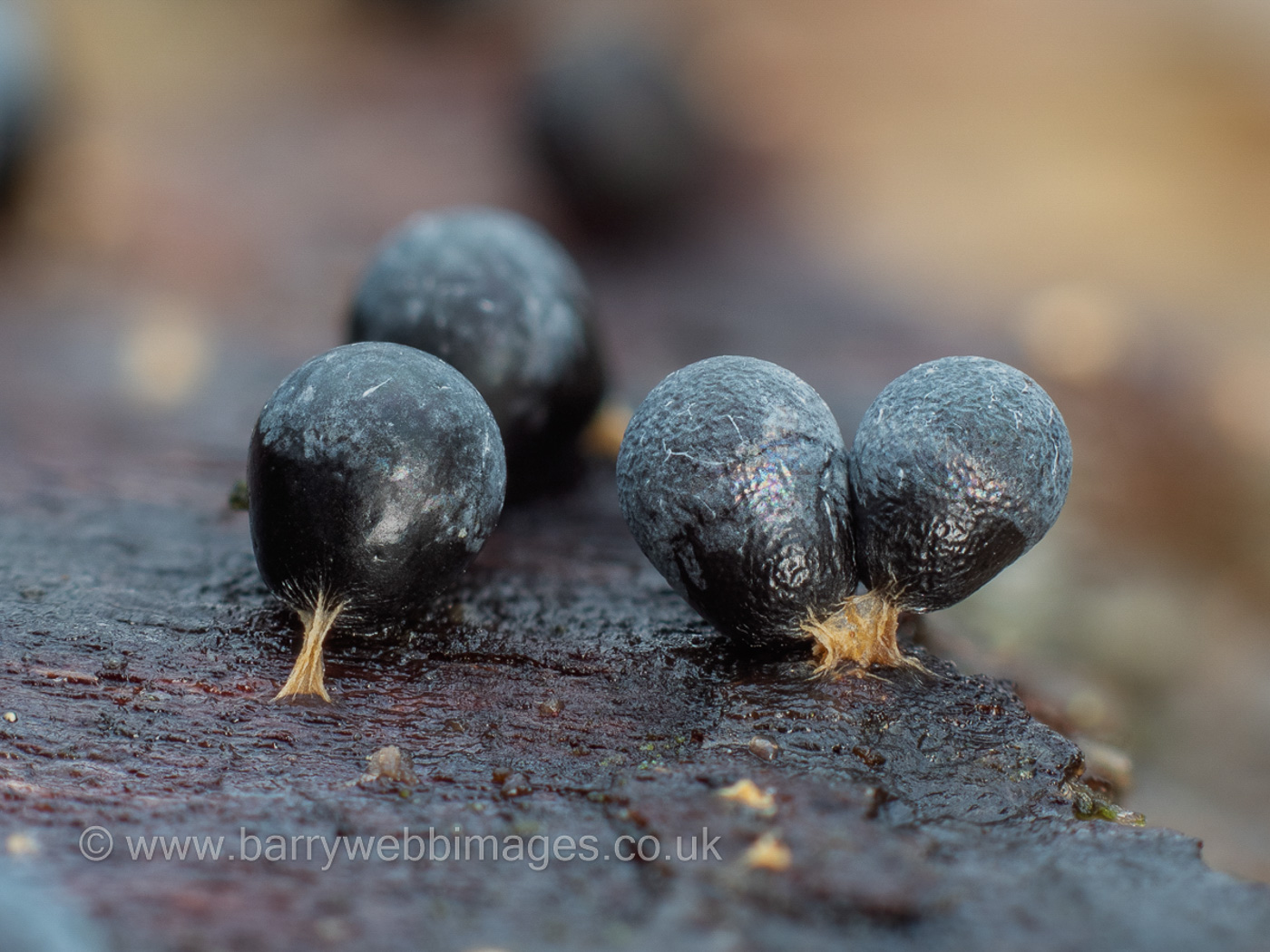
|
Physarum utriculare (a slime mould with no common name)
Dec 23, 2022. On a fallen Beech trunk in Burnham Beeches Russell Ness found this impressive display of a slime mould until recently known as Badhamia utricularis. The plasmodium (slimy) stage of the species forms bright mustard yellow threads / veins which can cover large areas before settling down as here to develop mature spores. Not rare, it is a very eye-catching species.
Nov 20, 2022. At Burnham Beeches our small group came across a fallen Beech trunk which sported various different fungi as well as a generous patch of this distinctive mustard yellow slime mould which was still on the move and not yet settled down. (The species has not been recorded here since 2002 and we have just a handful of records from elsewhere in the county. The photo is Stephen Plummer's.
Jan 15, 2022. In Penn Wood on fallen Beech Barry Webb found this interesting and distinctive common species - one for which we have just a handful of records. No, the photo is not up-side-down (as Penny at first suspected)! Apparently the species typically hangs down just like this with clusters of blotchy marbled sporangia suspended on bright orange 'strings'. (For more examples go to Barry's separate page on Finds.)
Dec 30, 2021. In Hodgemoor Woods Barry and Gill Webb found a pile of cut up lichen-covered Birch branches which provided them with two species of slime mould, this being one of them. Photo 1 shows the jelly-like plasmodium stage (plus a tiny Lycogala terrestre just developing); photo 2 is the same species further developed; photo 3 is of fully developed material. We have just 4 previous county records, the last being Barry's from Penn Wood in 2020.
|
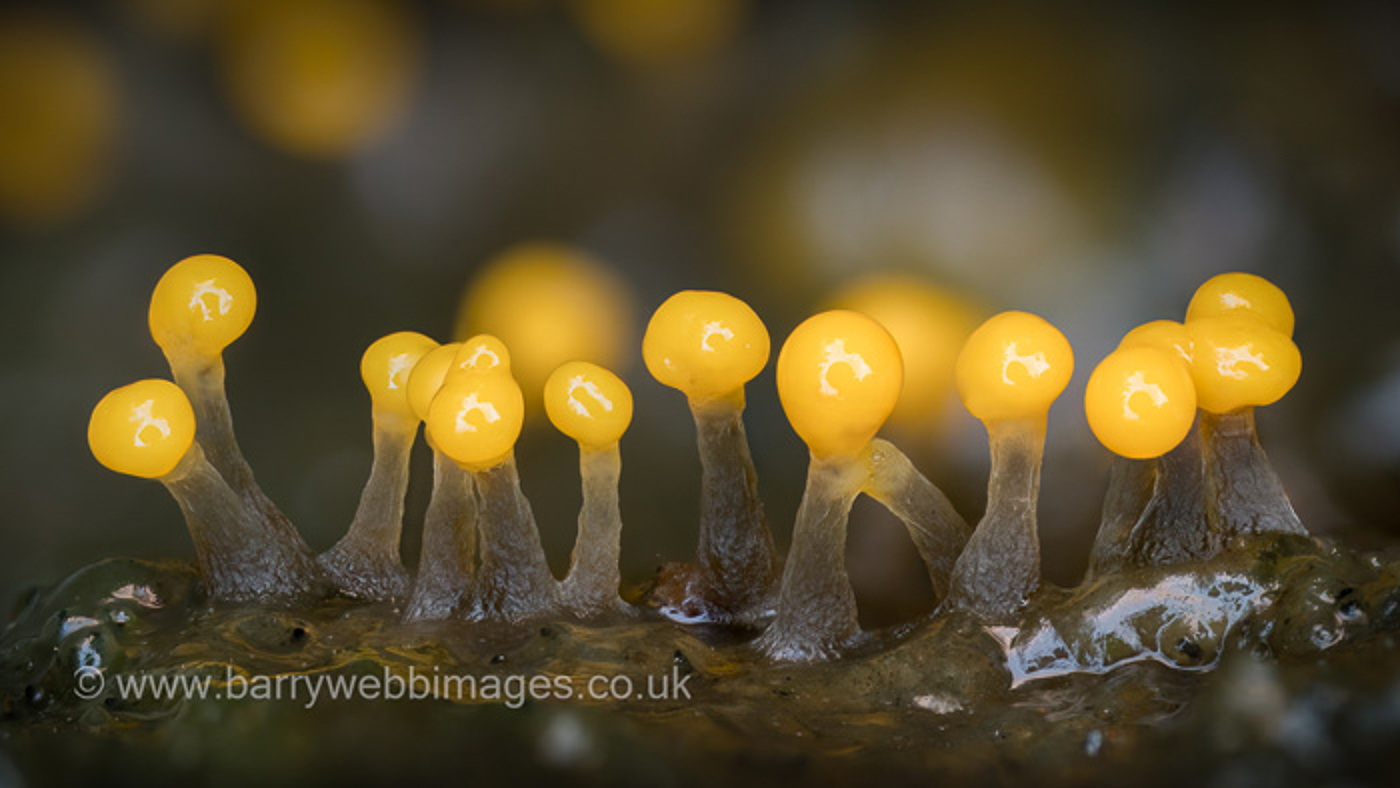
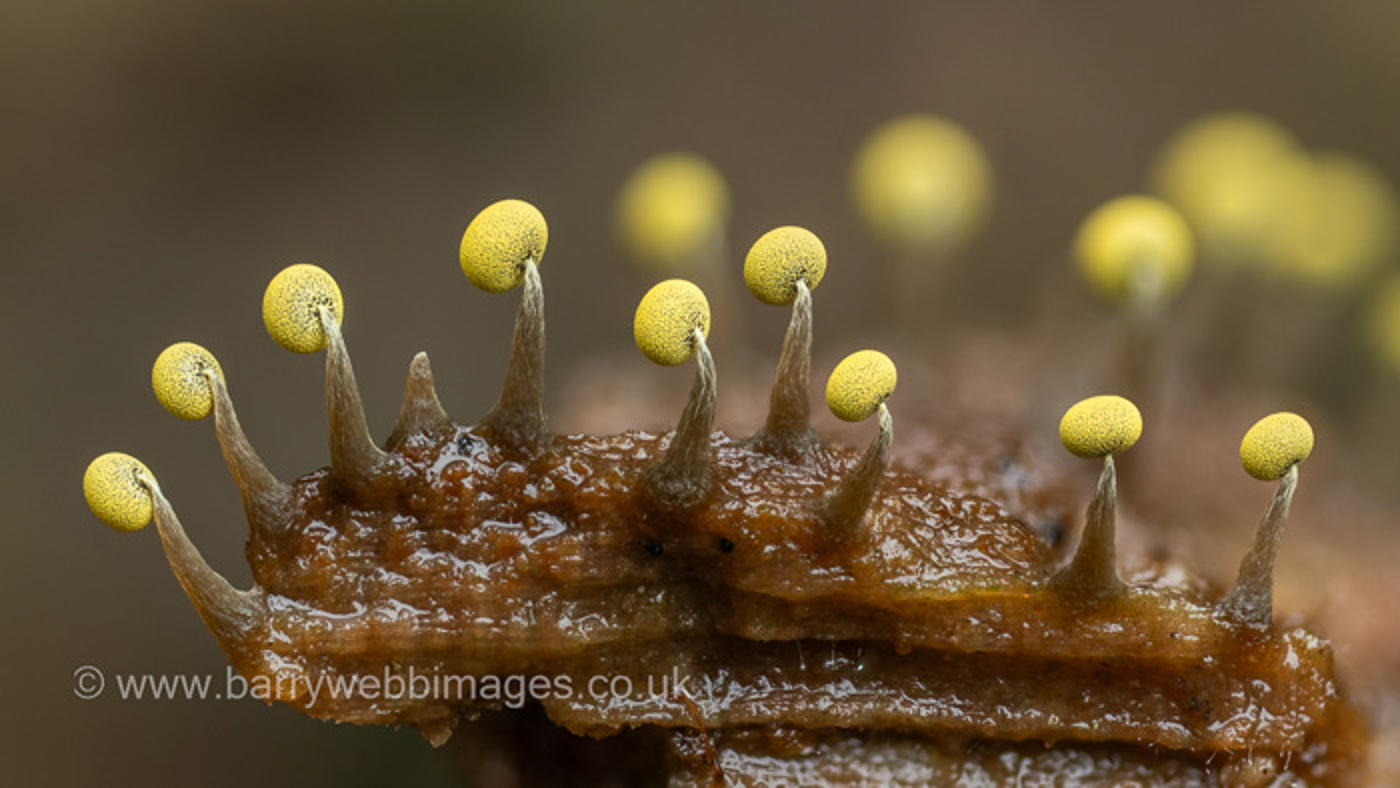
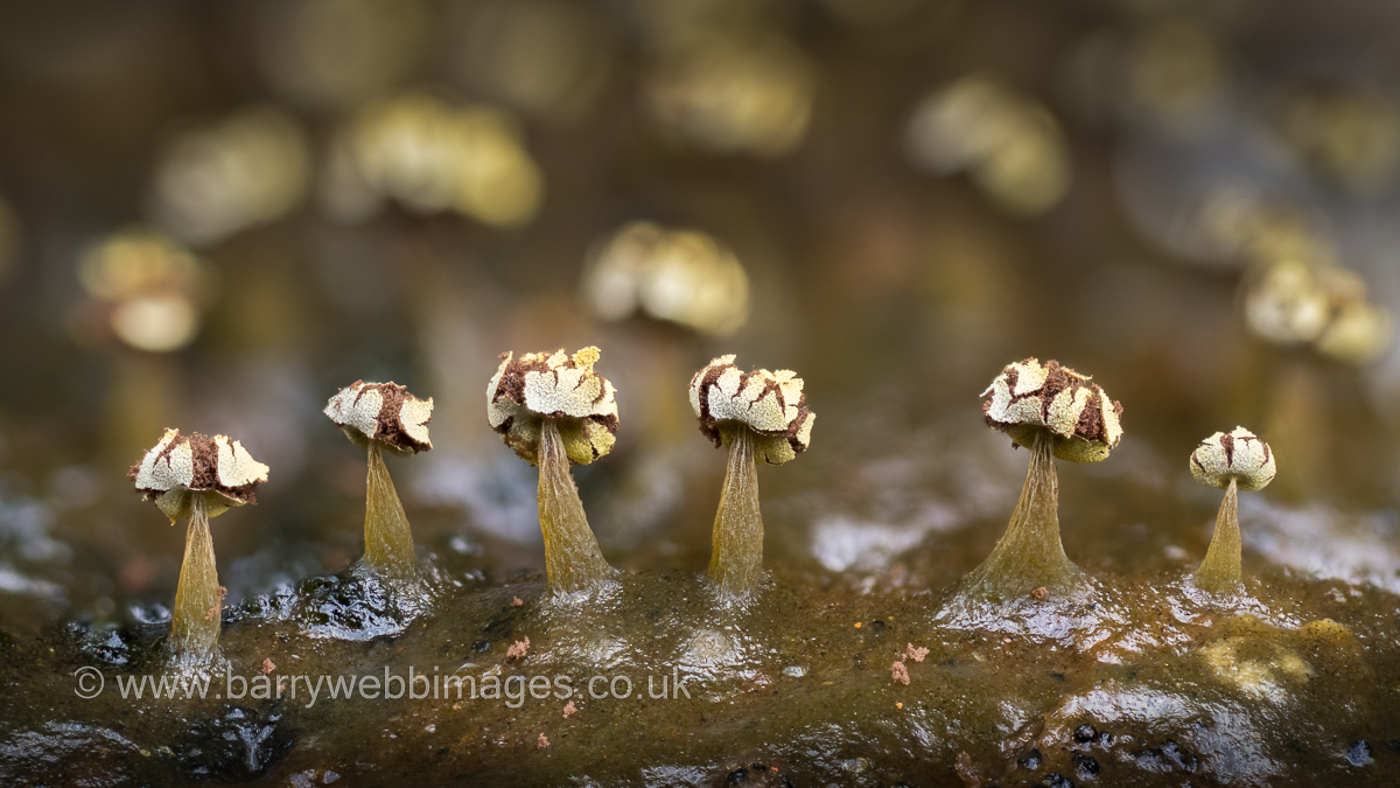
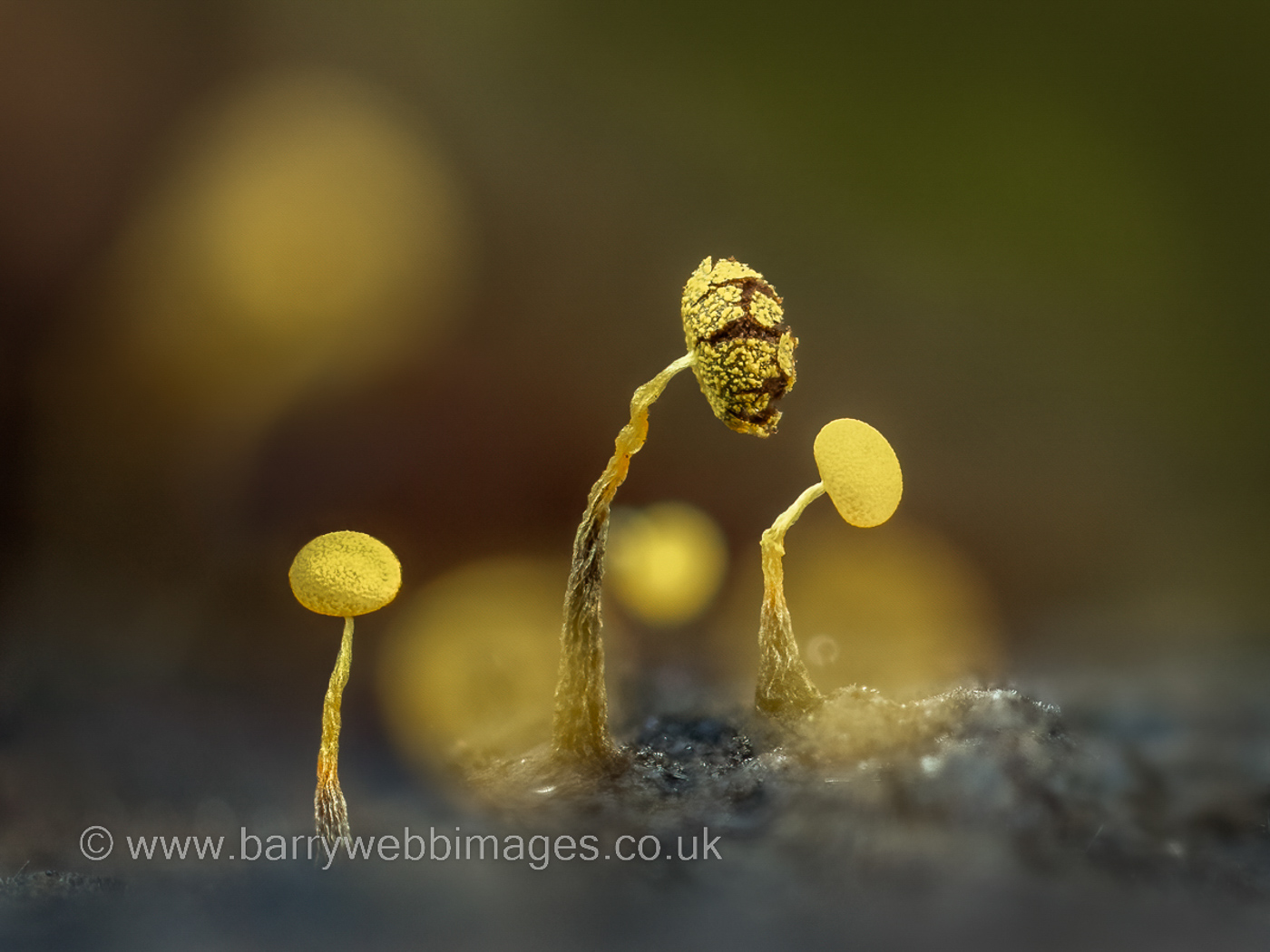 |
Physarum viride (a Slime Mould with no common name)
Jul 27, 2023. On a piece of Apple wood collected from Hedgerley Common and nurtured in his green house, Barry Webb found this unusual Slime Mould and took the photos illustrating its development as it matured. (No available literature does this!) This was new to the county when Barry found it at Burnham Beeches last year (see in Finds 2022 November 14th), so today's find is the second county record.
Nov 14, 2022. At Burnham Beeches Barry Webb found this stunning little species on a rotten Oak log - one he'd not seen before but easily recognised by its distinctive greenish yellow colour. As the only county record for the species (apparently from Burnham Beeches) was in 1923, ID anon, we'll count this as new to the county!
|
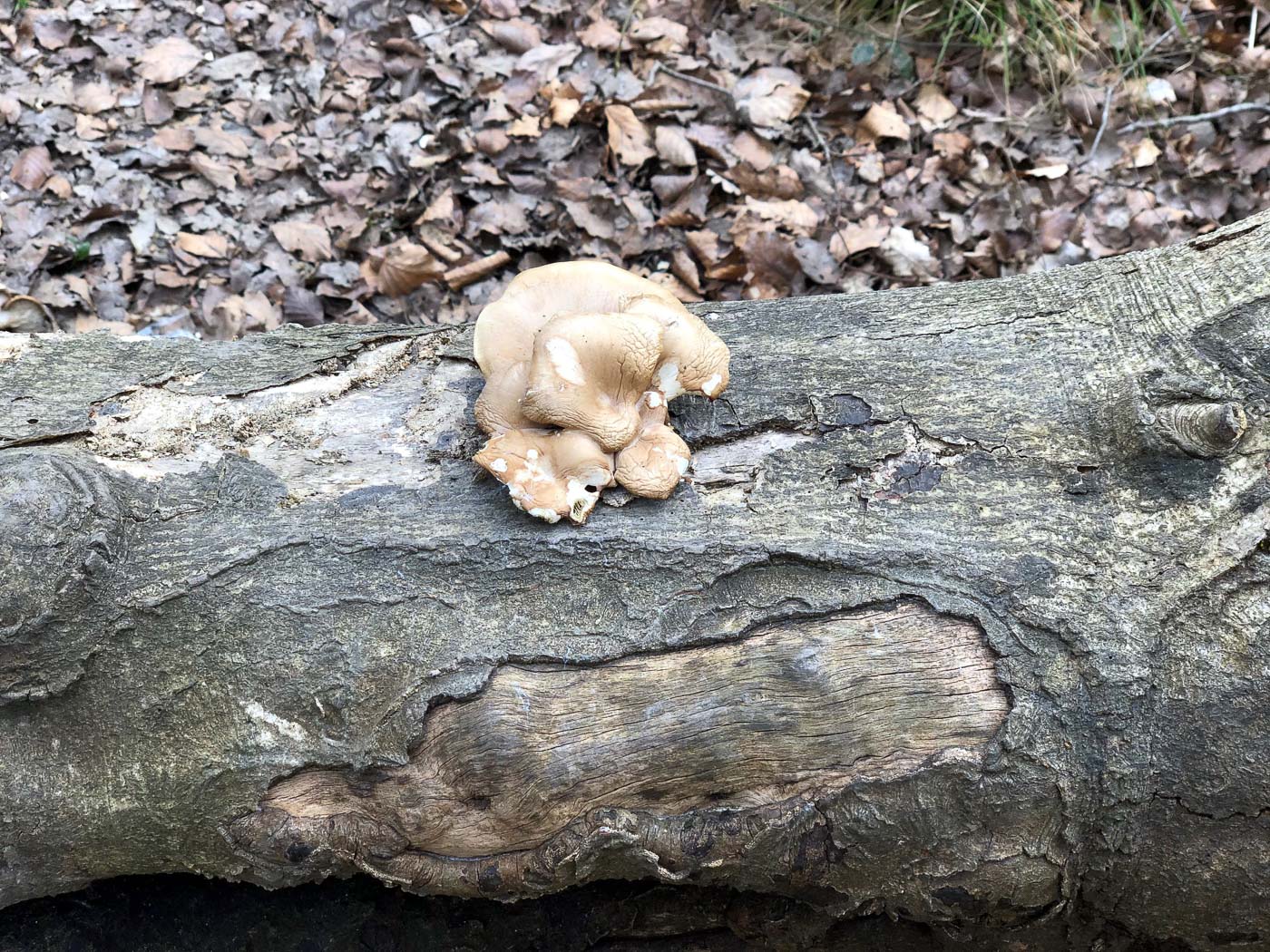
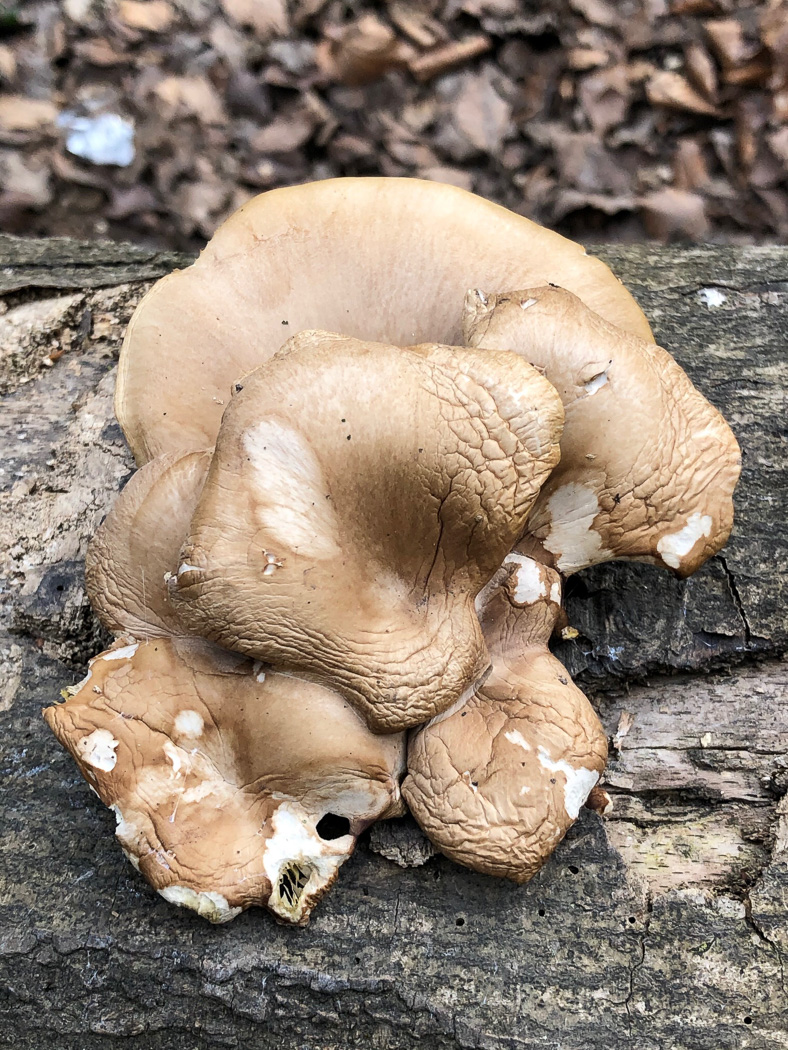
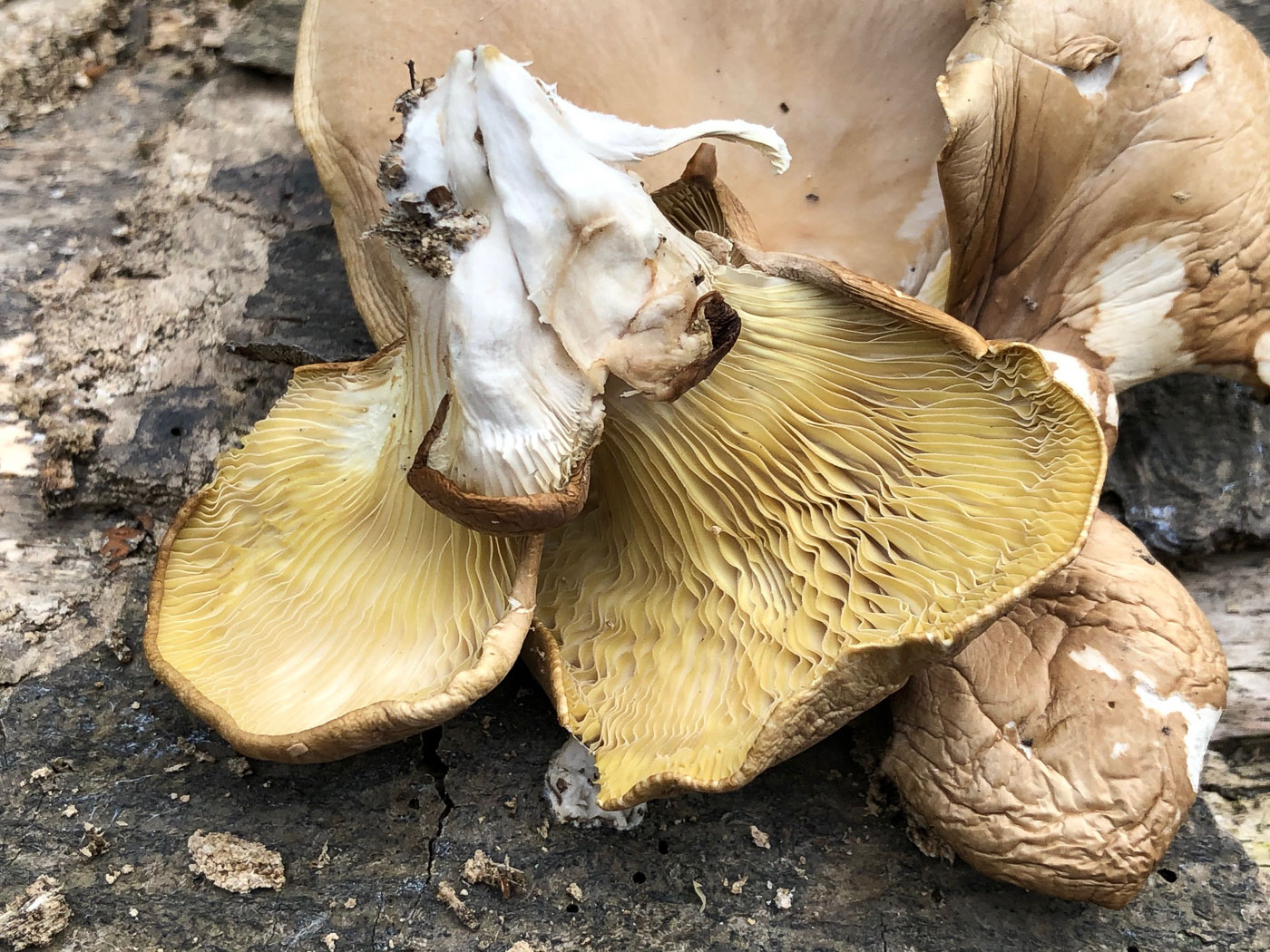
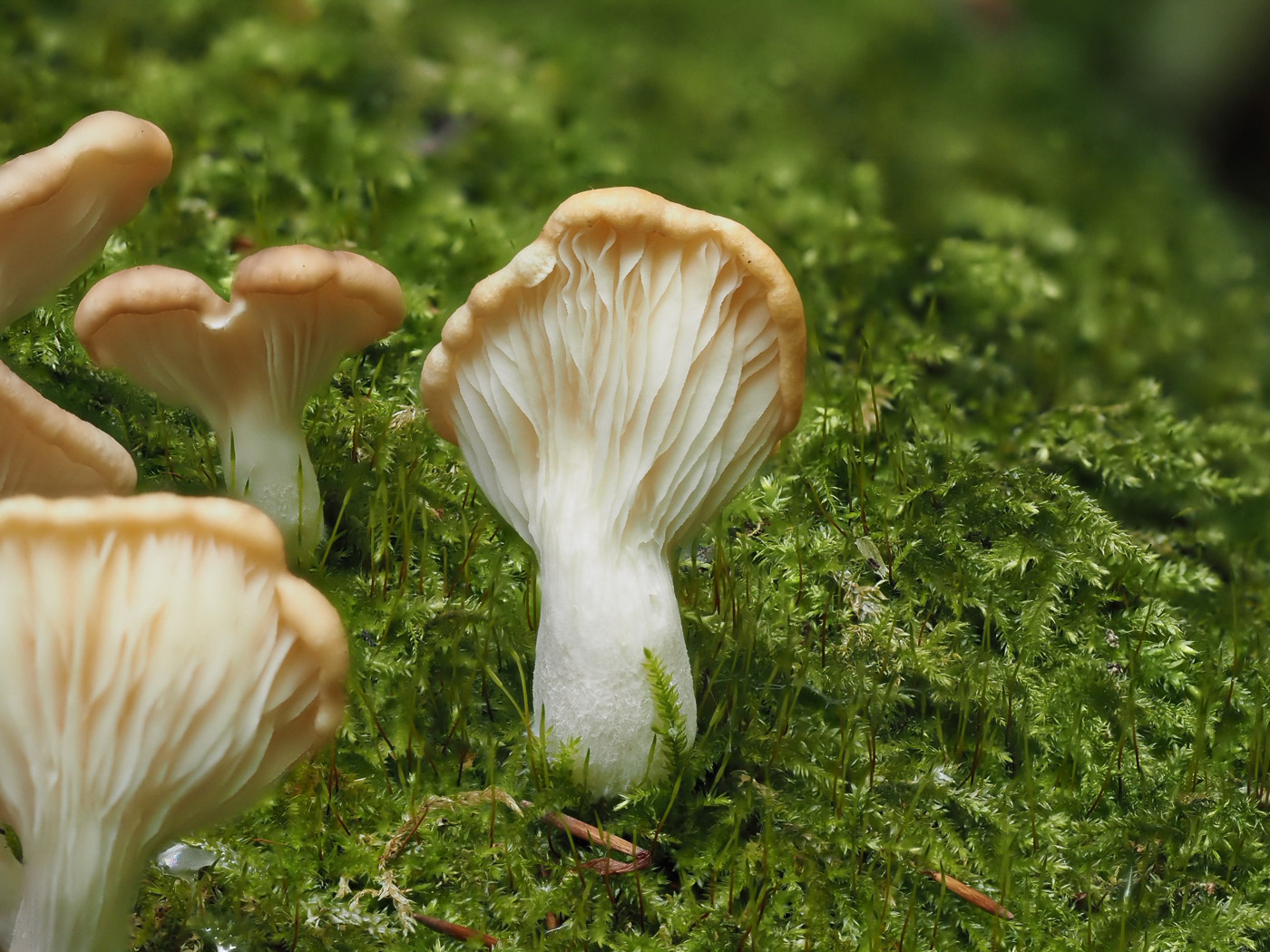
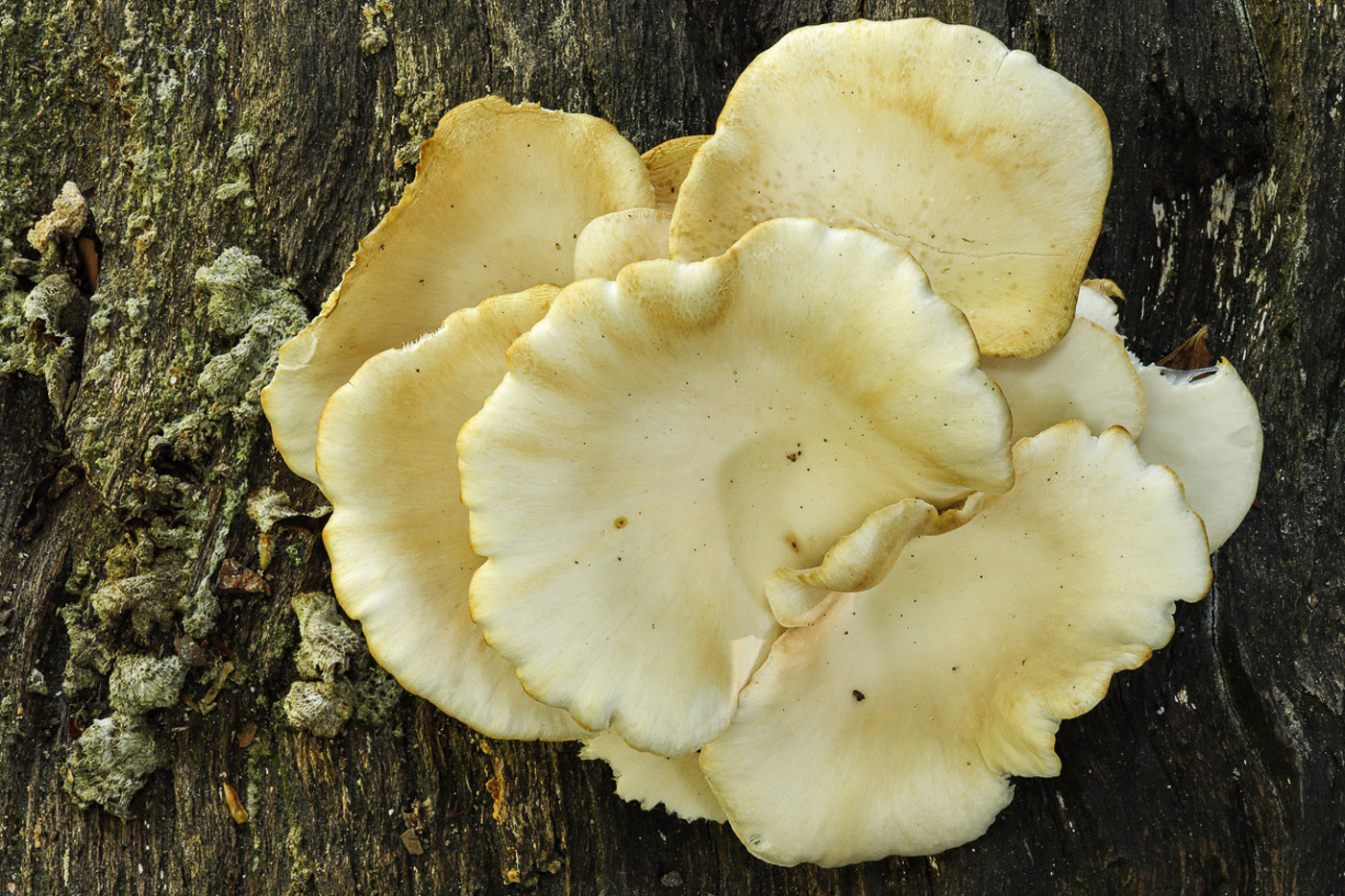
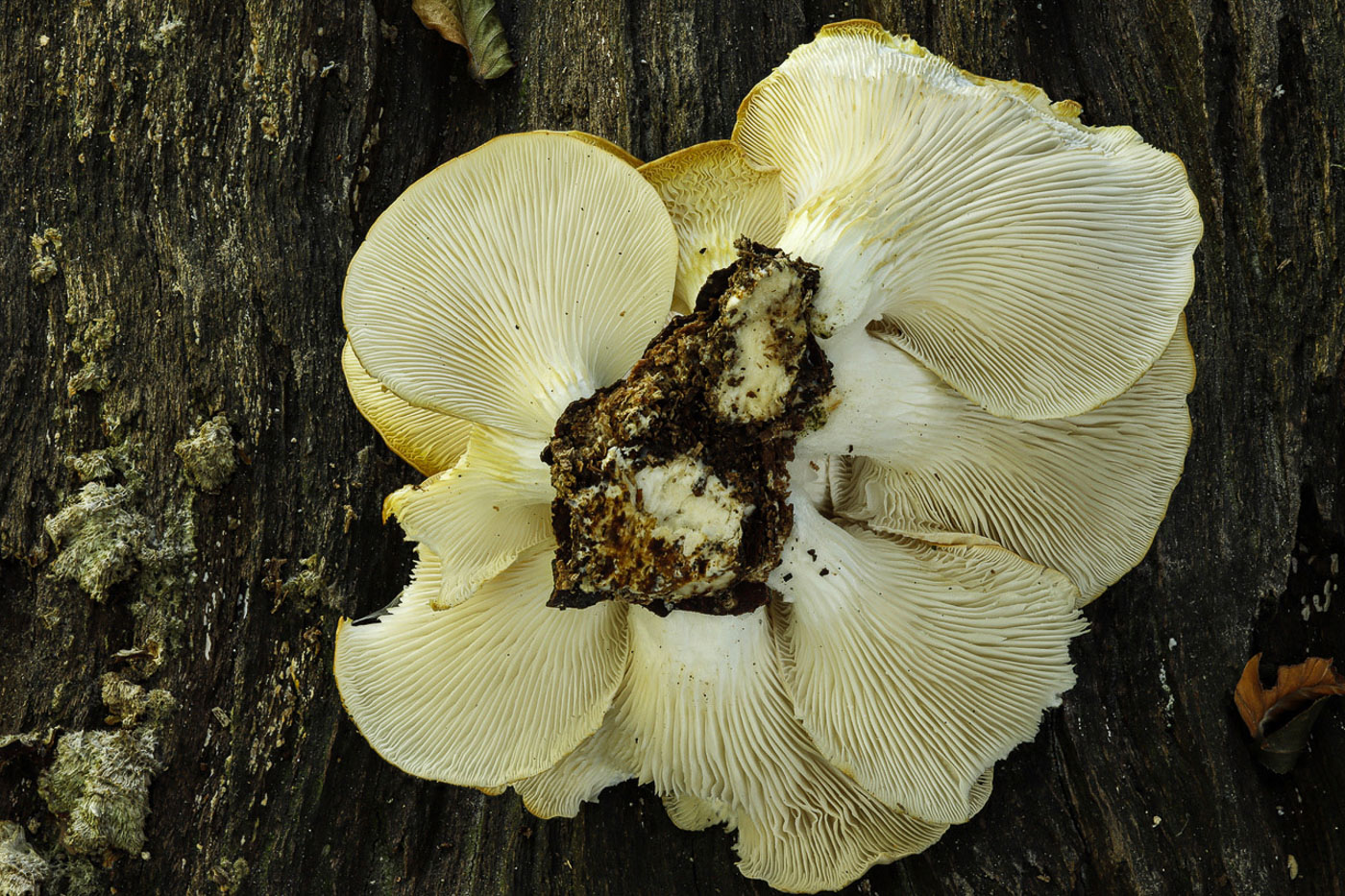 |
Pleurotus cornucopiae (Branching Oyster)
Mar 31, 2021. Paul Goby found this Oyster on a fallen Beech trunk in Naphill Common - clearly having shrivelled a bit after our hottest day of the year yesterday. It is often tricky to separate this species from the very similar and more common P. ostreatus (especially from a photo), but taking into account the fused stems, the quite widely spaced gills running right down the stem and the slightly ochre tinted colour, Penny is fairly happy that this is not the commoner species. Open to debate, though ...........
Sep 6, 2020. Less common than the closely related P. ostreatus, this collection was found by Claire Williams growing on a deciduous log in Little Tinkers Wood.
Sep 21, 202Paul Goby found this nice cluster on fallen Beech in Naphill Common. (We do have an earlier photo dated Sept 6th but today's photos are much more typical.) Compared with the much more common P. ostreatus (Oyster Mushroom), caps are white to cream (no darker), fruit bodies tend to cluster tightly together appearing branched, and the decurrent (sloping) gills run further down the stem. Note also the typical yellowing which develops when drying out (seen here). See Paul's photos of P. ostreatus, also dated Sept 21st for comparison.
|
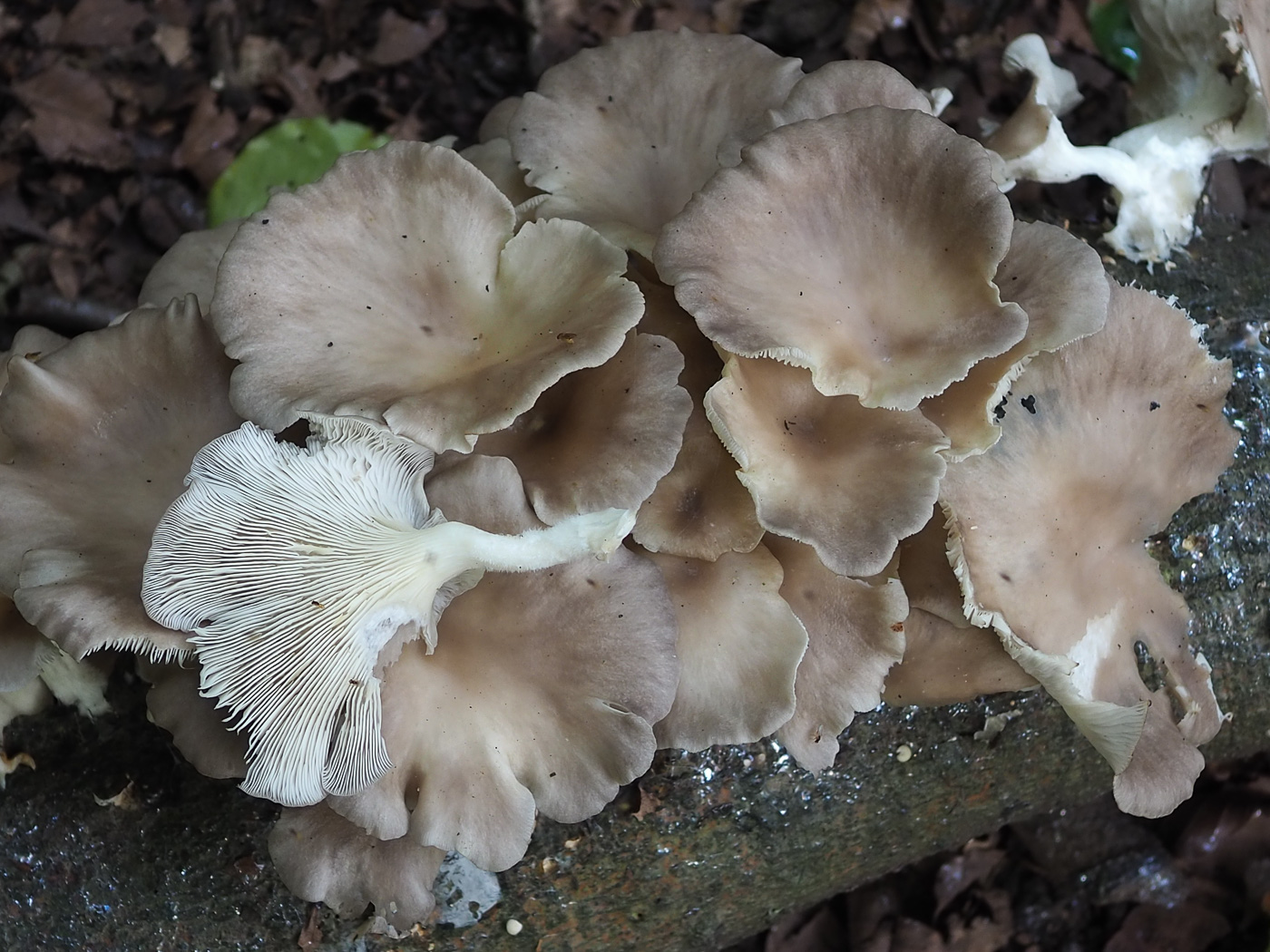












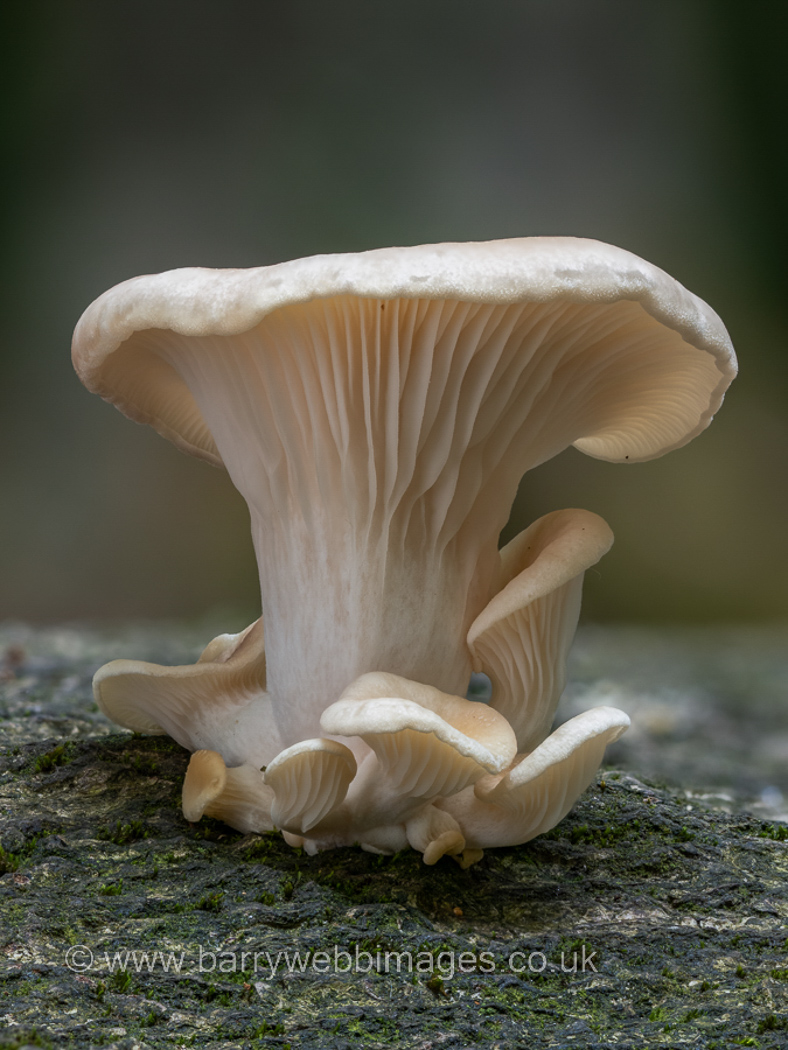



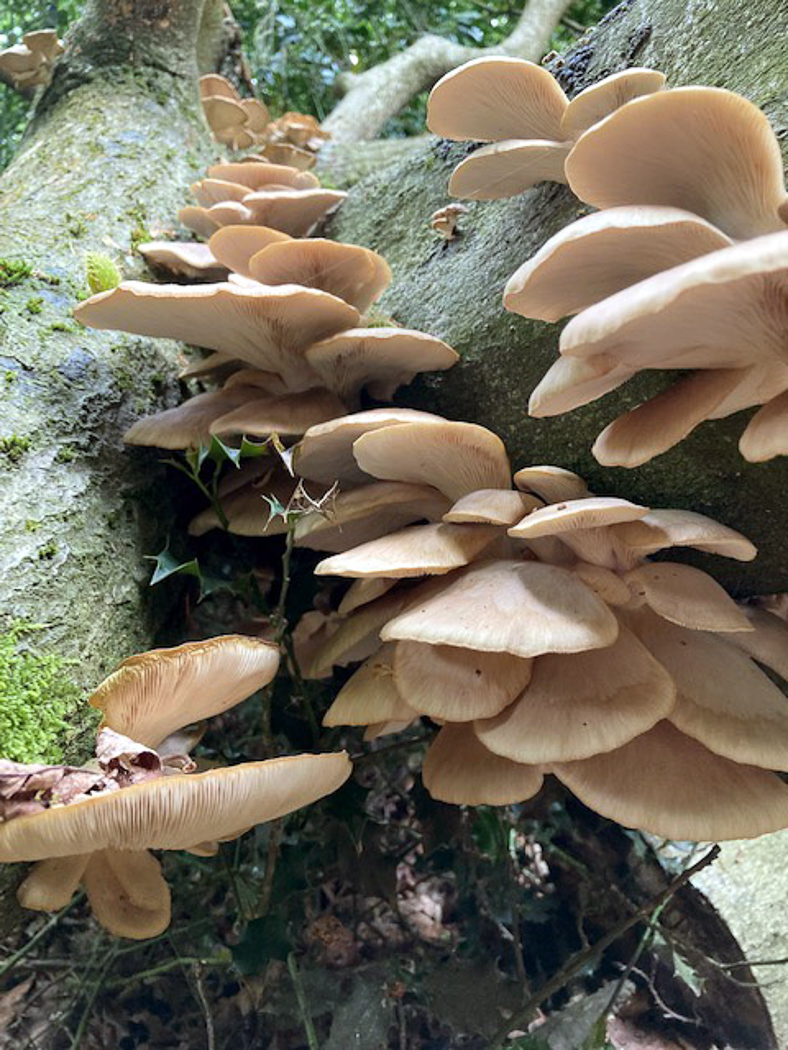
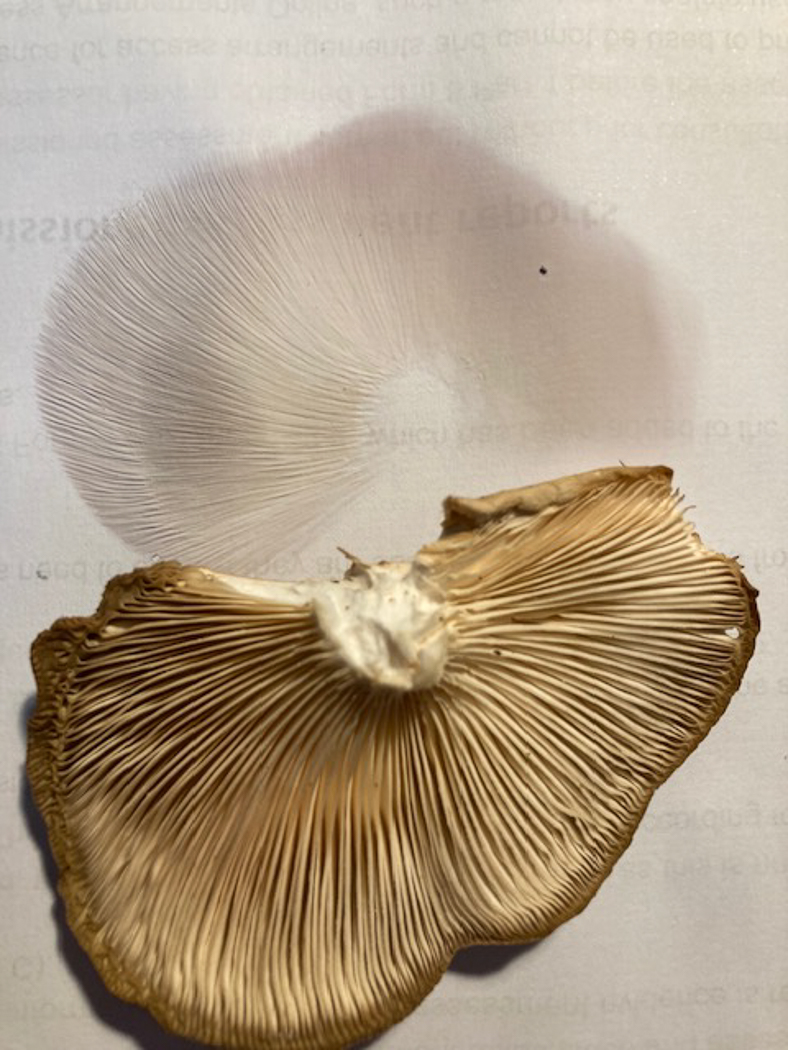
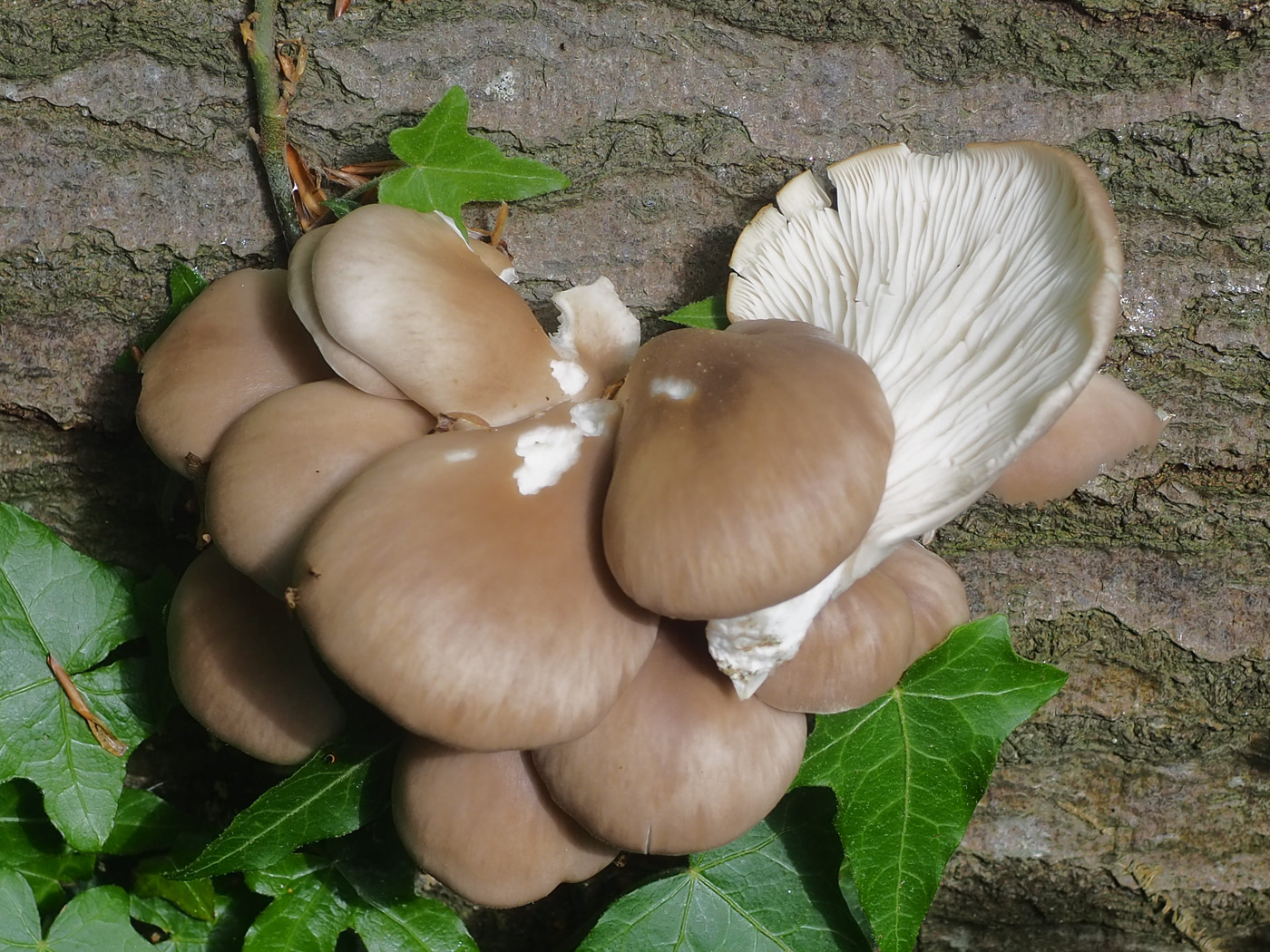


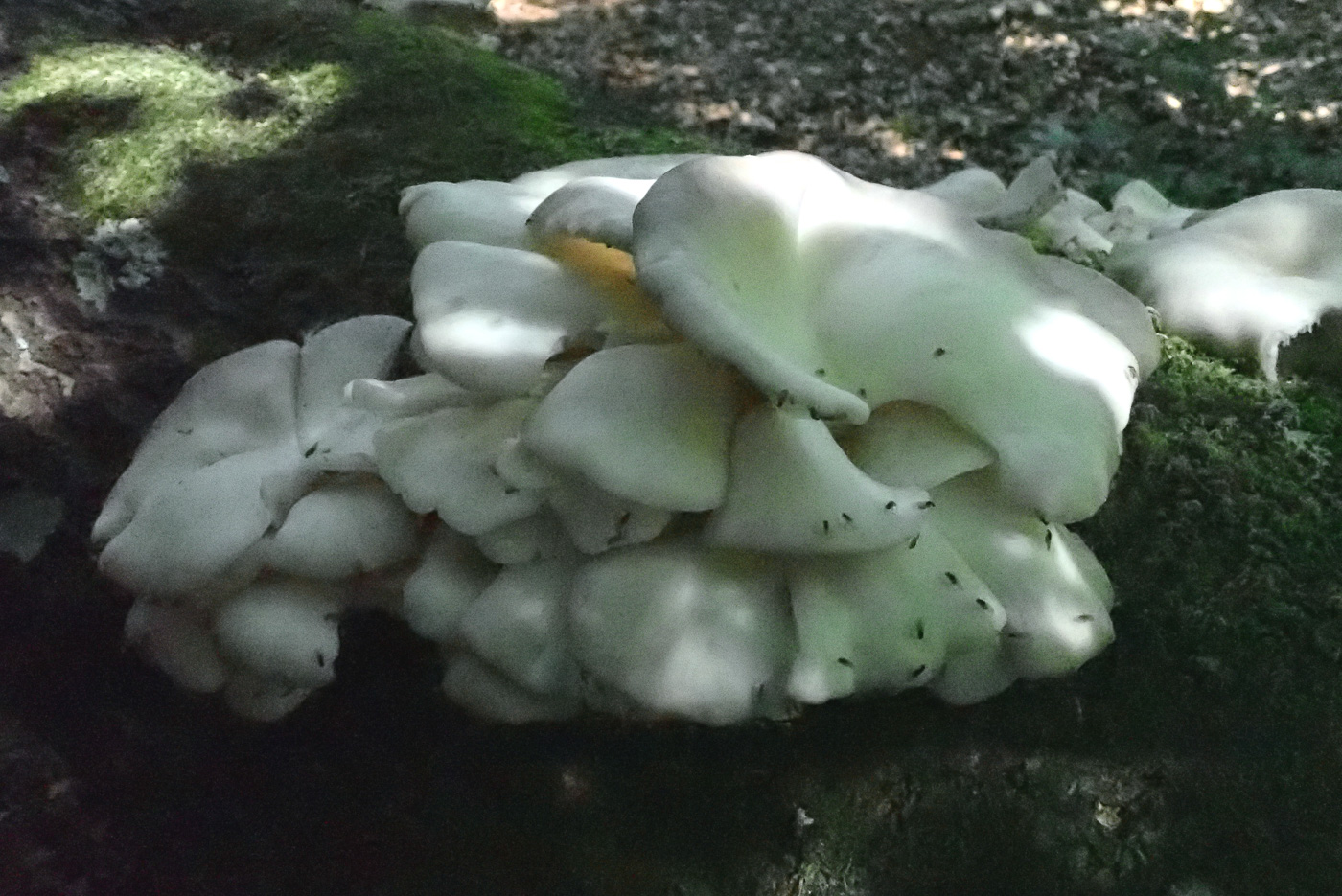
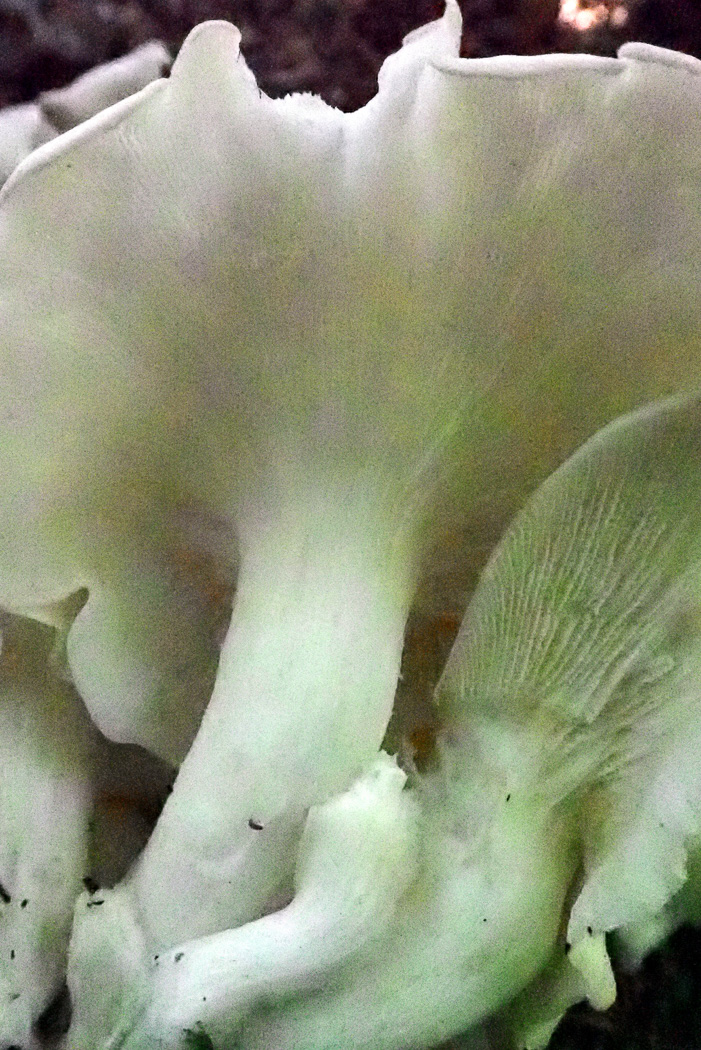
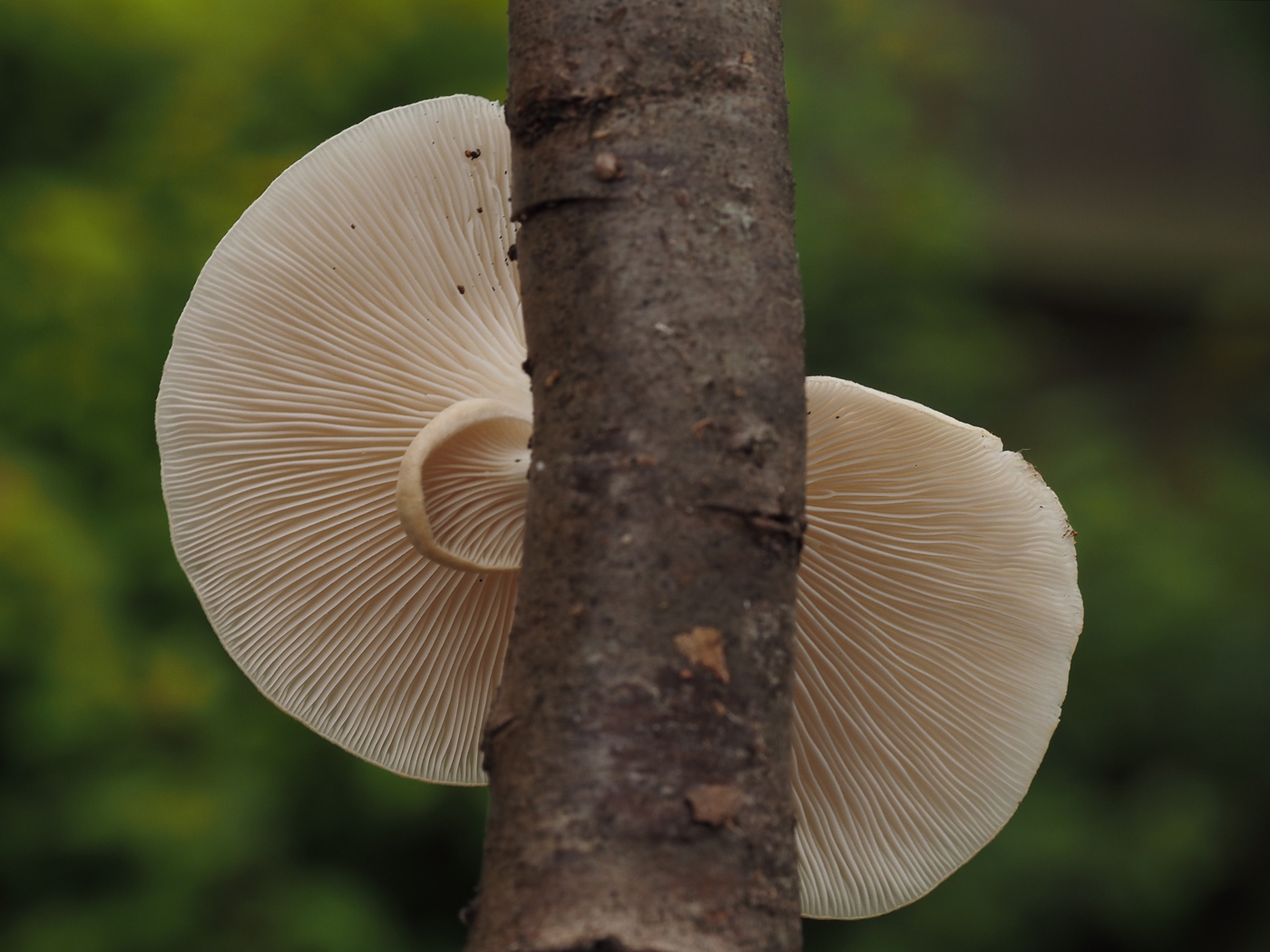
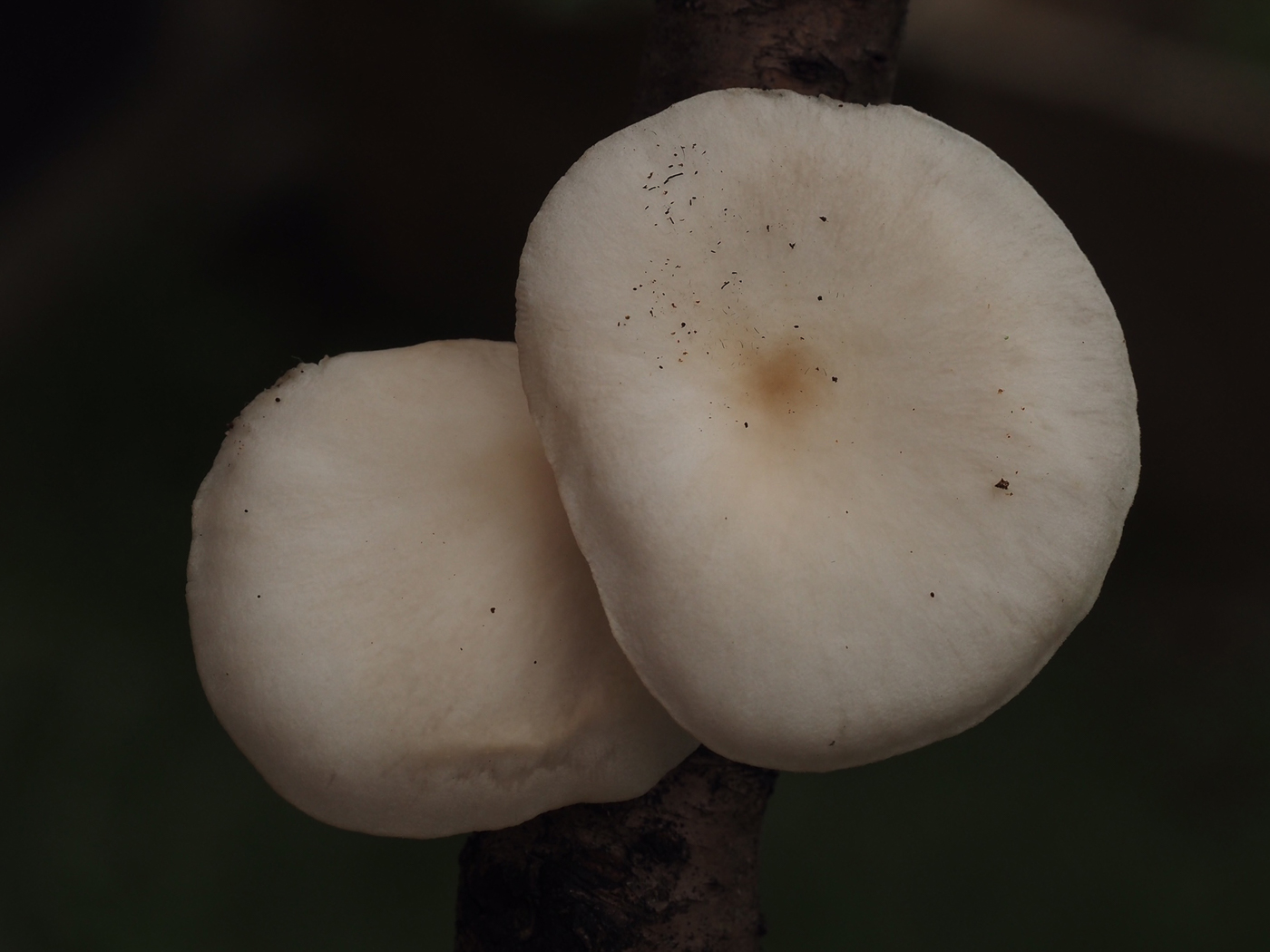
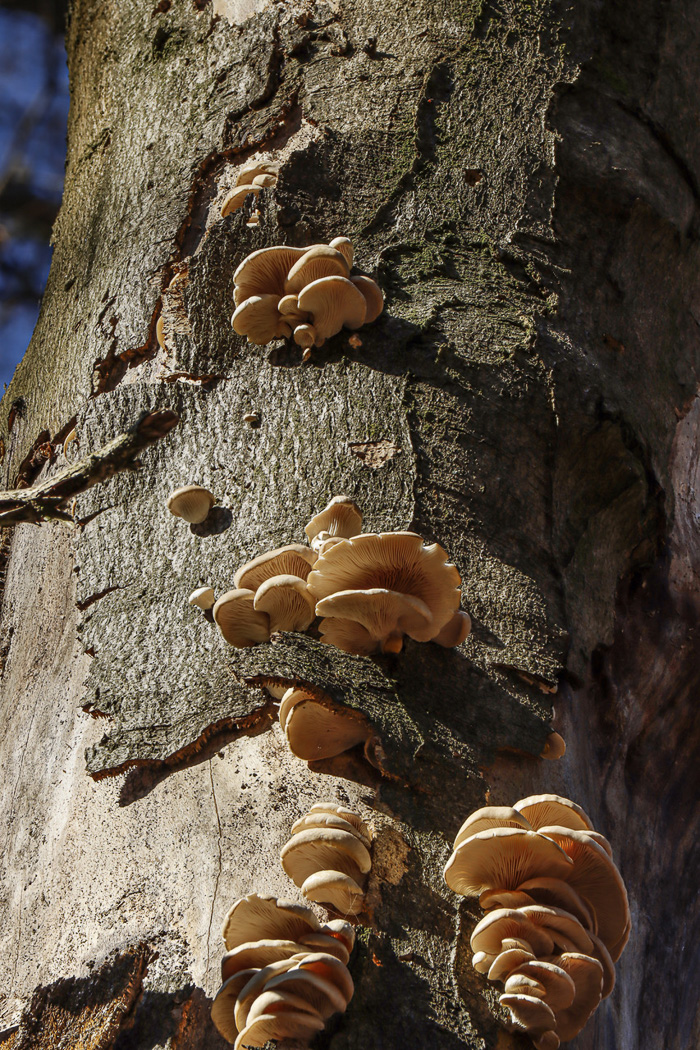
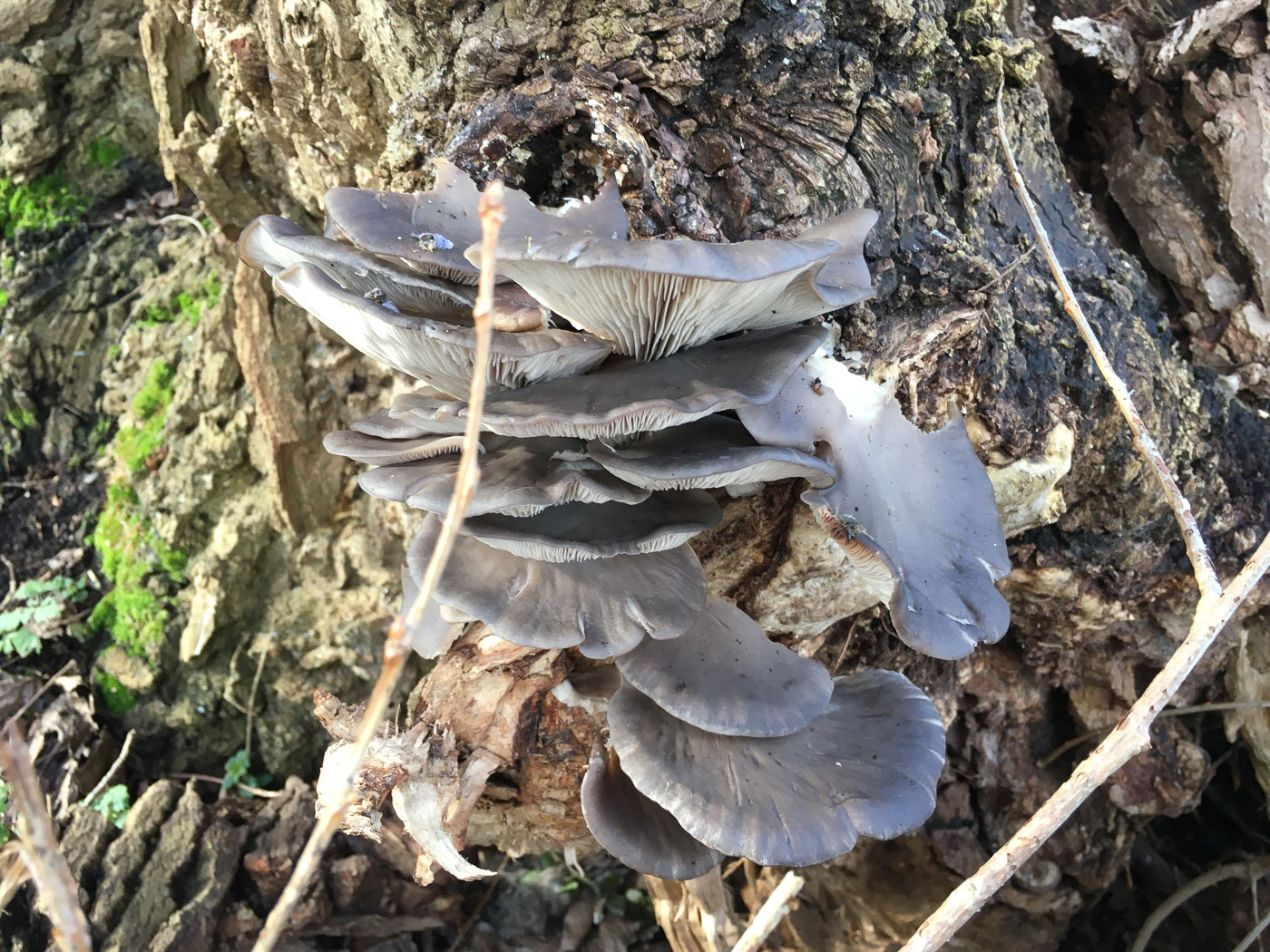
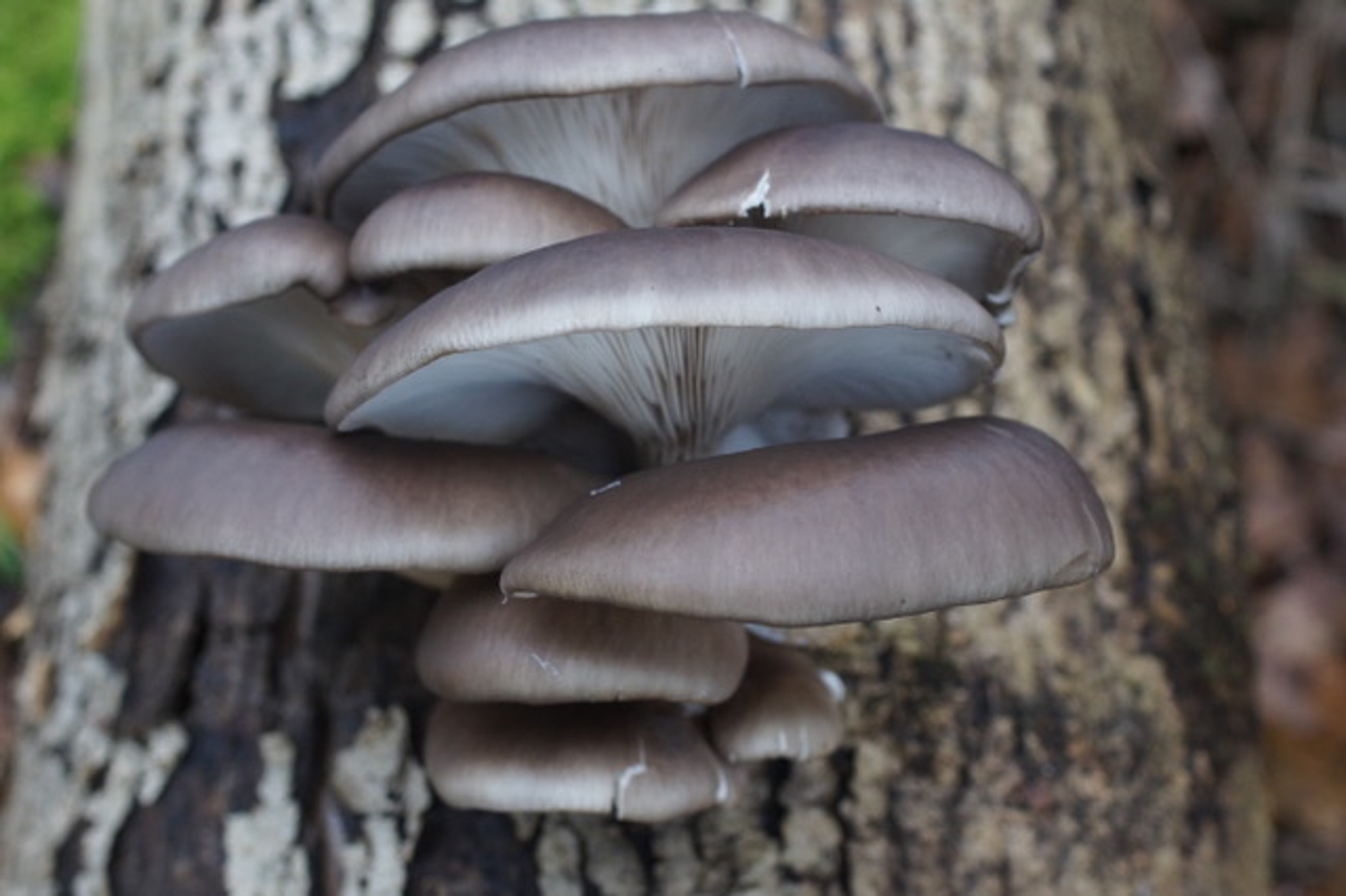
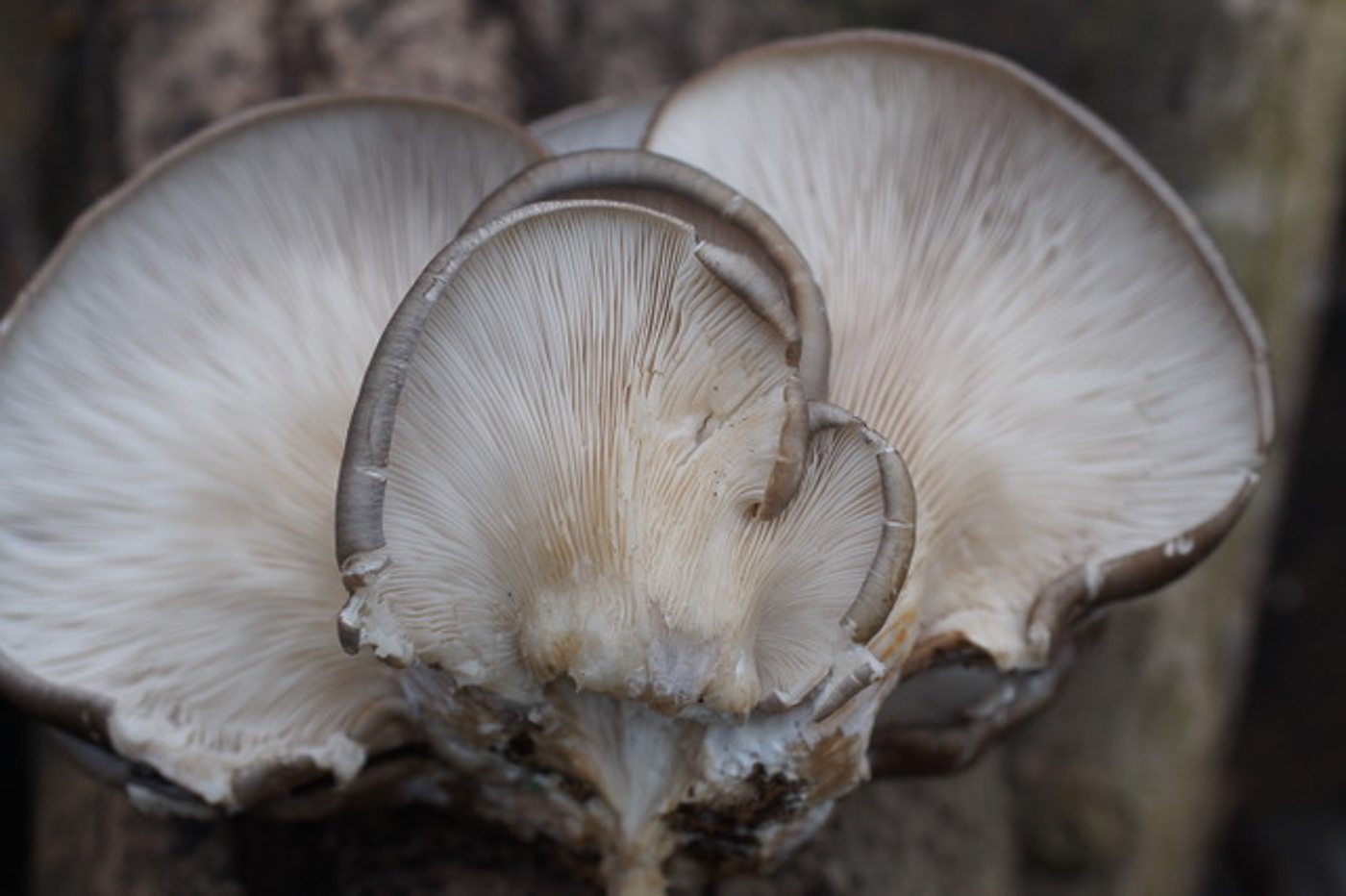
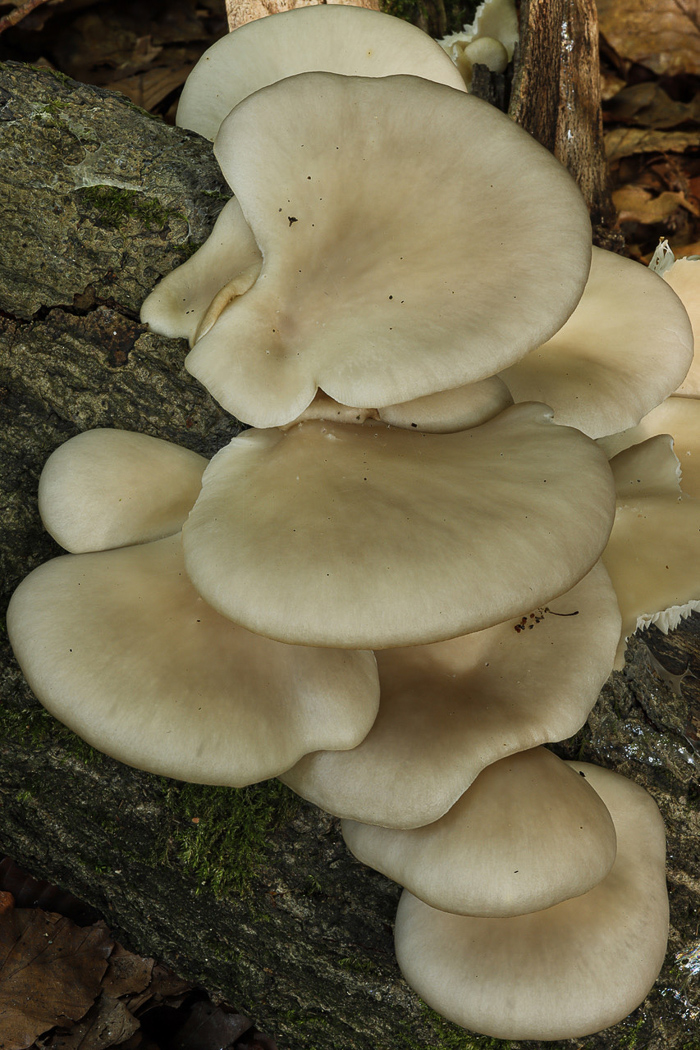
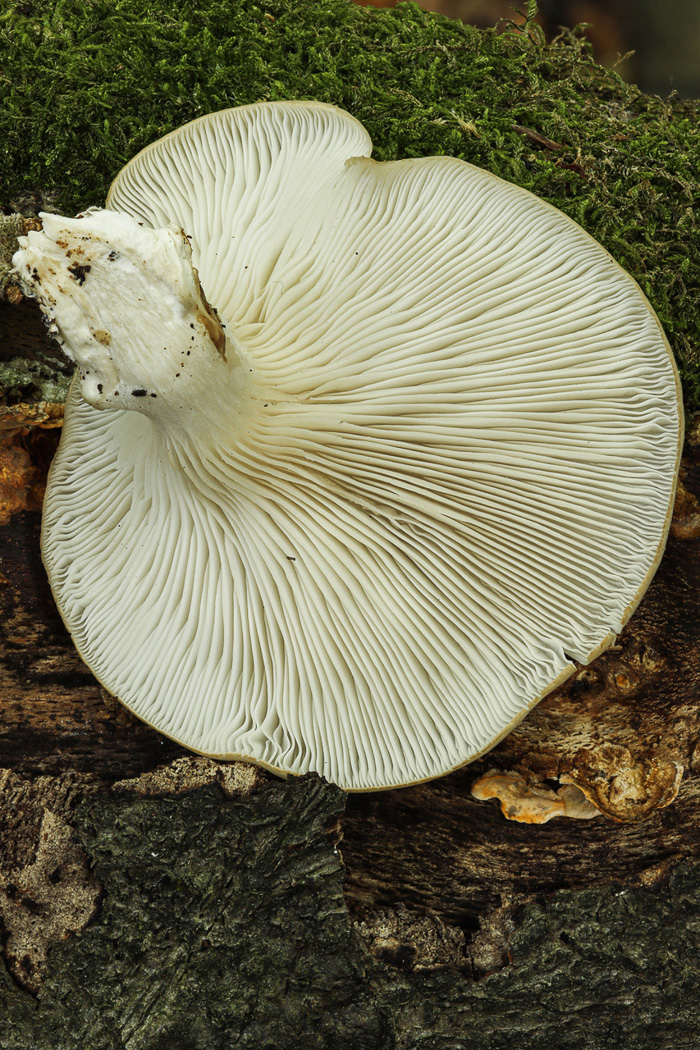
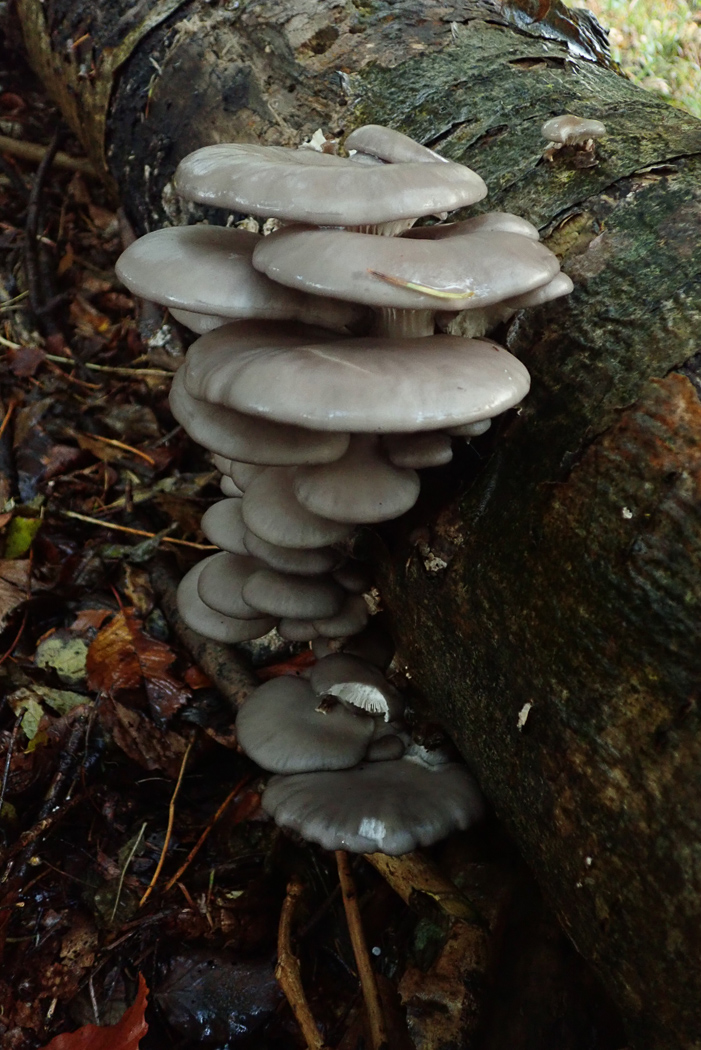
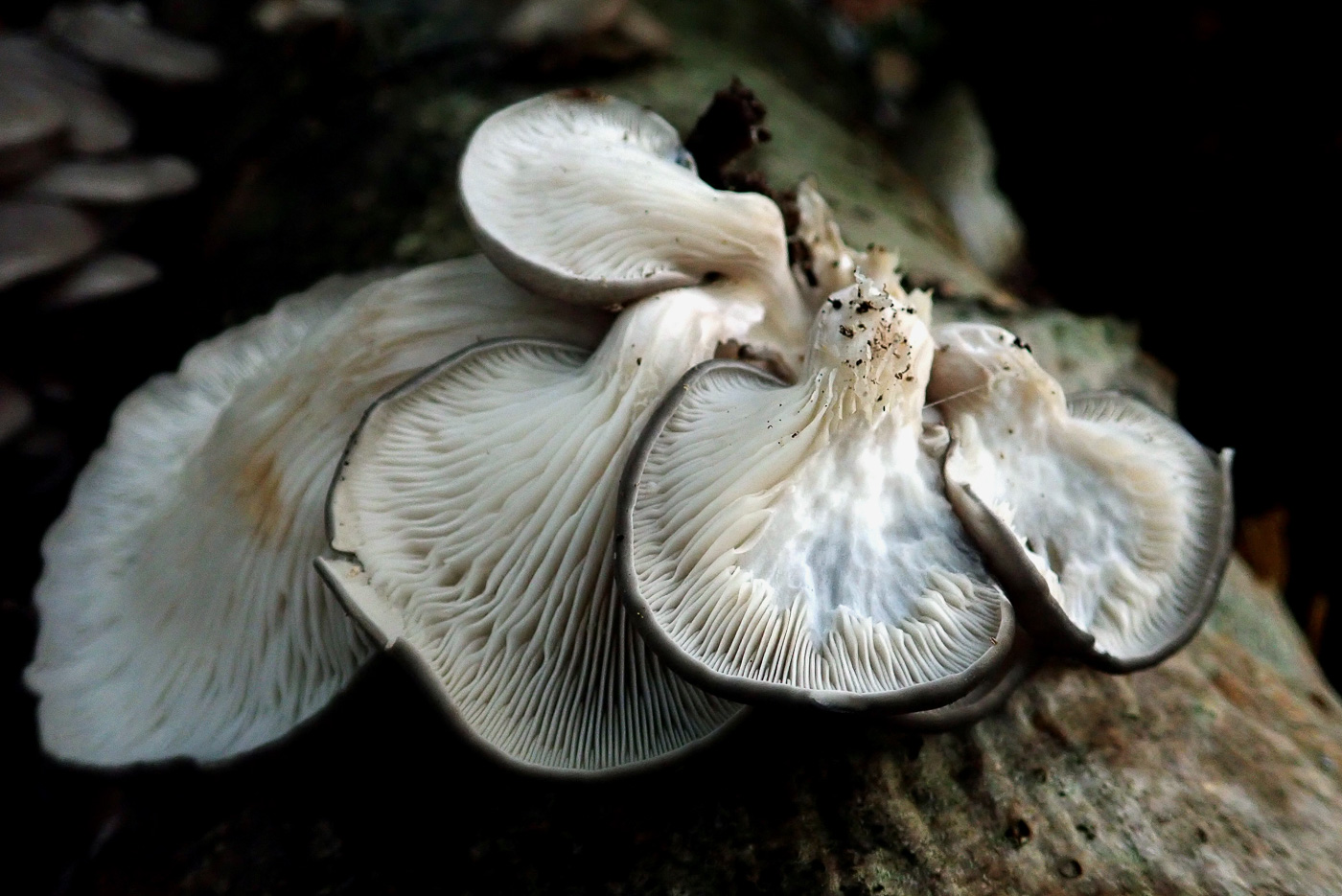
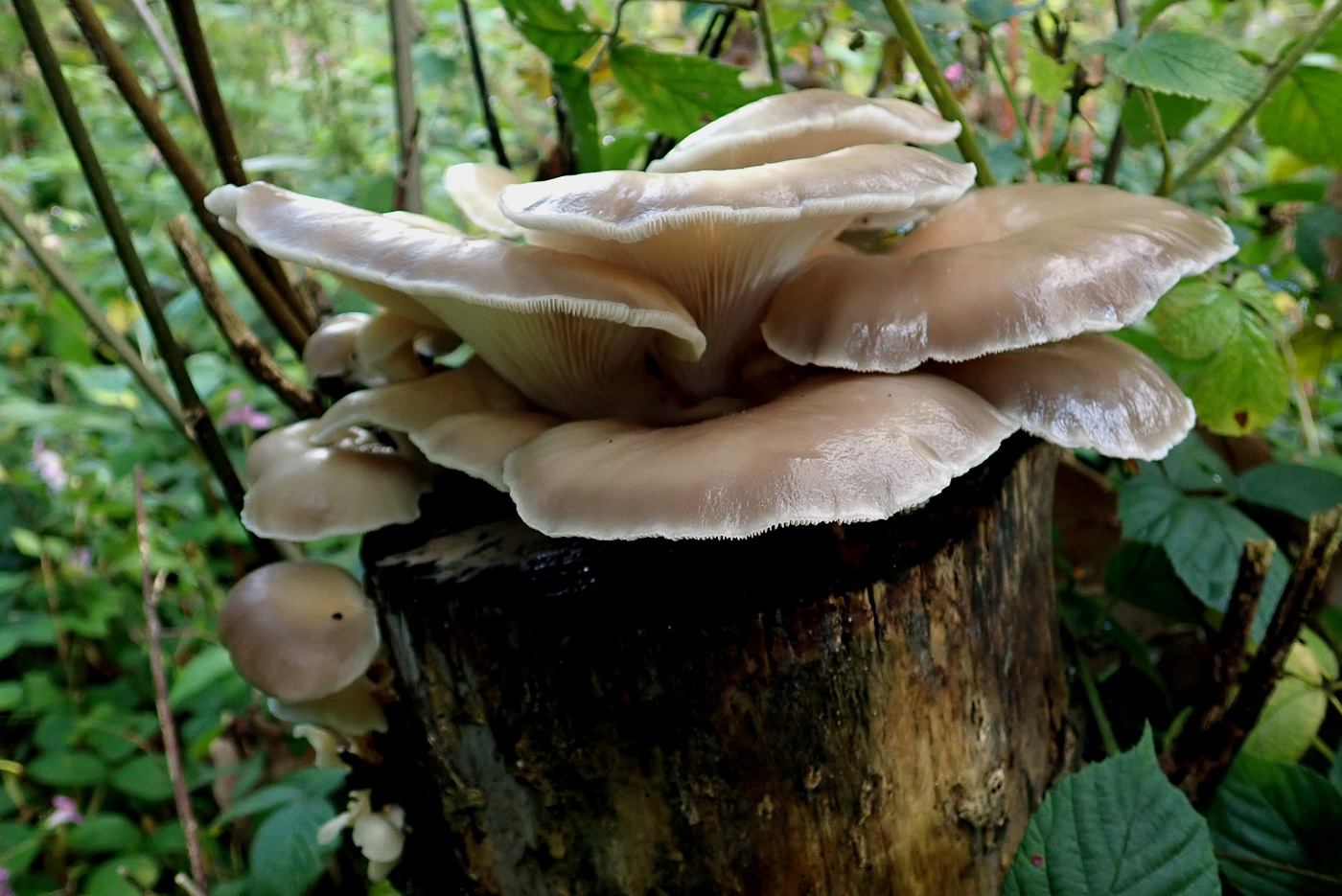
|
Pleurotus ostreatus (Oyster Mushroom)
Aug 17, 2024. In Tinkers Wood John Catterson found this nice cluster on an Oak log. Sure signs that thing fungal re at last starting to move again!
Dec 31, 2023. December 31st Bob Simpson sent in photos 3 and 4 of the same species, found on fallen Aspen in Salden Wood where he lives. So clearly the mild damp conditions are suiting this species at the moment. Both collections are decidedly grey as tends to happen this late in the season though the species is generally so variable in colour that this is probably of little taxonomic significance.
Dec 15, 2023. On a living Elder trunk at Stampwell Farm Jackie Ewan found this large pleurotoid species and the unusual tree host made her wonder therefore if it might be something different from the common P. ostreatus. Spores etc fitted fine, however (though there is little difference microscopically between the Pleurotus species), furthermore she commented that she'd read that winter-fruiting Oysters tended to be browner that those found in earlier months (and also that they are tastier!). This appears to be the first of our nearly 200 records to be found on Elder though we do have quite a few marked 'deciduous'.
Aug 27, 2023. Penny found this attractive troop of mushrooms on a mossy indeterminate stump in Park Wood Ibstone and tried hard (but eventually failed) to make it P. pulmonarius rather than the much more common P. ostreatus! The former tends to fruit earlier in the year and is generally flatter and paler than the latter (which varies considerably, however, from deep grey to pale buff or cream) and favours stumps rather than fallen wood: looking good so far! However, it has a sweetish smell of aniseed and a pale yellowish cream sporeprint, and by the next morning no smell had developed and sadly the thick spore deposit when scraped together had a distinct lilac tint - a sure sign of P. pleurotus. Case closed!
Jul 7, 2023. At Burnham Beeches on a fallen Beech trunk which we often find covered in different species, Penny found it liberally spotted with patches of this common mushroom in various stages of development.
Nov 24, 2022. In Bradenham Woods Penny was surprised to see this impressive display on a Beech trunk. We have many Finds entries of this species but she felt it was worth showing that there are fungi out there still fruiting away prolifically.
Sep 4, 2022. Though we have quite a few previous entries of this common species Barry's image here, taken on our Walk at Kings Wood Tyler's Green but not included in Penny's report, is too good not to be shared!
Aug 13, 2022. On a log in Captain's Wood, Chesham, Greg Douglas was pleased to see this species freshly fruiting despite the drought conditions over the last month or more. Species on wood are going to be less affected by these conditions than those in soil which clearly are having a tough time at the moment. The caps are very pale in today's example and can often be grey-brown or even darker grey.
May 31, 2022. On fallen beech in Willow Wood on the outskirts of Amersham Paul Allen found this collection of Oyster Mushroom and asked Penny if she could confirm his identification (which was Pleurotus pulmonarius - Pale Oyster). She had her doubts because that species is often very difficult to split from the more common P. ostreatus and almost identical in the field, hence from a photo - however good - any such identification is speculative at best. One way to distinguish between them is by their sporeprint colour: cream in P. pulmonarius but with a lilac tinge in P. ostreatus. So Penny suggested Paul should try this and the following day received his photo 4 which surely shows enough lilac tinge to confirm this as P. ostreatus. P. pulmonarius tends to be paler and fruit earlier in the season than the commoner species - hence Paul's original naming and Penny's doubts, but pale forms of P. ostreatus are not that unusual and it can certainly fruit this early as well. So this was an interesting exercise and also show the usefulness of taking sporeprints.
May 4, 2022. Another sight for sore eyes! On a deciduous log in Great Tinkers Wood John and Leslie Catterson found this surprisingly fresh and photogenic cluster - surprising because of the recent dry spell which has affected the fruiting of many species. As with their find above here, species growing on wood are still able to fruit even when there's been no significant rain.
Jan 8, 2022. At Stampwell Farm on a dying Elder trunk Jackie Ewan noticed this large 'bracket' growing out of a fault. It measured an amazing 26 cm across but was clearly gilled underneath with an eccentric stem, pointing to the genus Pleurotus. On checking the spores she realised that they were too small for either P. dryinus or cornucopiae, so despite its remarkable size and the fact that it was single and not clustered she reckoned it must be the common P. ostreatus. Penny was at first somewhat doubtful about this but is now in agreement, taking into account not only the spore size but also the smooth cap surface Jackie had noted together with the surprisingly large size range quoted for this species in several books. Though more familiar to us when smaller and forming large clusters on fallen wood, it can obviously become really large like this when all its energy goes into just one rather than several fruitbodies.
Jul 19, 2021. On a fallen Beech trunk in Burnham Beeches Penny found several large fresh clusters of this very common species. Its colour is somewhat variable and when really pale as here it can be tricky to tell apart from the less common P. cornucopiae (Branching Oyster) - also pale though a slightly creamier white. Noting how far down the stem the gills run is the best way: see in photo 2 that they are decurrent, reaching down the stem, but then soon die out - in P. cornucopiae they are more prominent and widely spaced as well as continuing much further down the stem. Photos 3 and 4 are of Claire Williams's similarly very pale collection from Downley Wood a few days later.
Feb 27, 2021. Paul Goby couldn't resist taking this lovely photo despite the fact that the fruit bodies were at least 25 ft up a dead Beech trunk in Naphill Common. So the suggested identification is no more than a guess on Penny's part though both species can often occur at odd times of the year, not just in the autumn, their most common host being dead Beech, so one could say this is an educated guess at best. The colour suggests the Branching Oyster - though this could be caused by the early morning sunlight? - but Oyster Mushroom is certainly the more common and prolific species of the two and cap colour is very variable. Any other suggestions welcome . . . . . .
Jan 3, 2021. Russell Ness found this fresh and healthy collection on a fallen deciduous trunk near Dorney Reach. He can vouch for the freshness because apparently it tasted delicious in his beef stir-fry! This is a species which can be found at any time given the right conditions and substrate.
Nov 17, 2020. Bob Simpson found this photogenic cluster in Salden Wood fruiting as he says it does every year on an old decaying Ash. Yes, we have previous photos, dated Sept 21 and Oct 27, but it's good to know its still around this late in the season.
Oct 27, 2020. We have a photo of this species dated Sept 21st where Penny comments on the very variable cap colour often met with. Today she found a beautifully formed but much darker cluster fruiting on fallen Birch, evenly grey with no cream of beige tints. So she felt it was worth sharing the photo here because the darker forms of the species often lead people to be confused and wonder if they have something different.
Sep 21, 2020. Paul Goby found this cluster growing on fallen Beech at Naphill Common. The third eye-catching cluster on top of a sawn off stump was found on Oct 01 at Turville Heath, Penny Cullington. Oyster Mushrooms occur most commonly on this substrate but also on other deciduous wood. The clustered habit is typical, also the eccentric (off-centre) stem and decurrent gills (sloping down the stem), both features showing well in the upturned specimen. The cap colour can vary from almost white to quite dark grey, also worth noting is the tendency for the cap edges to turn yellow in age or when very dry. Surprisingly this is a nicely fresh collection considering the recent heat. The cultivated form available in supermarkets is indeed the same species
|



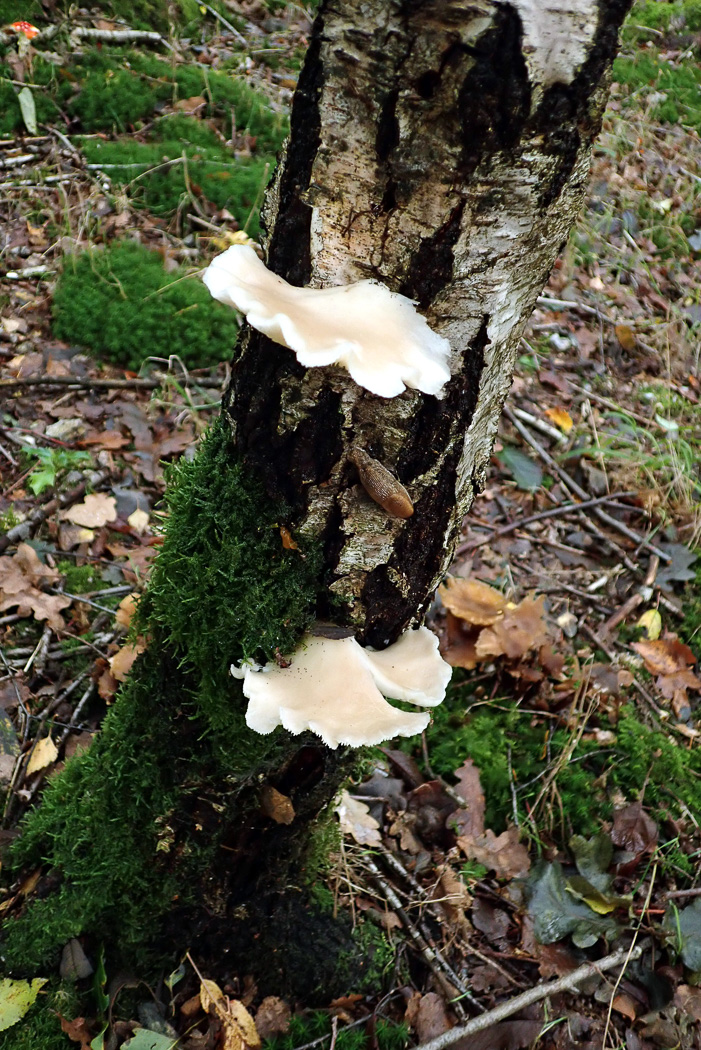
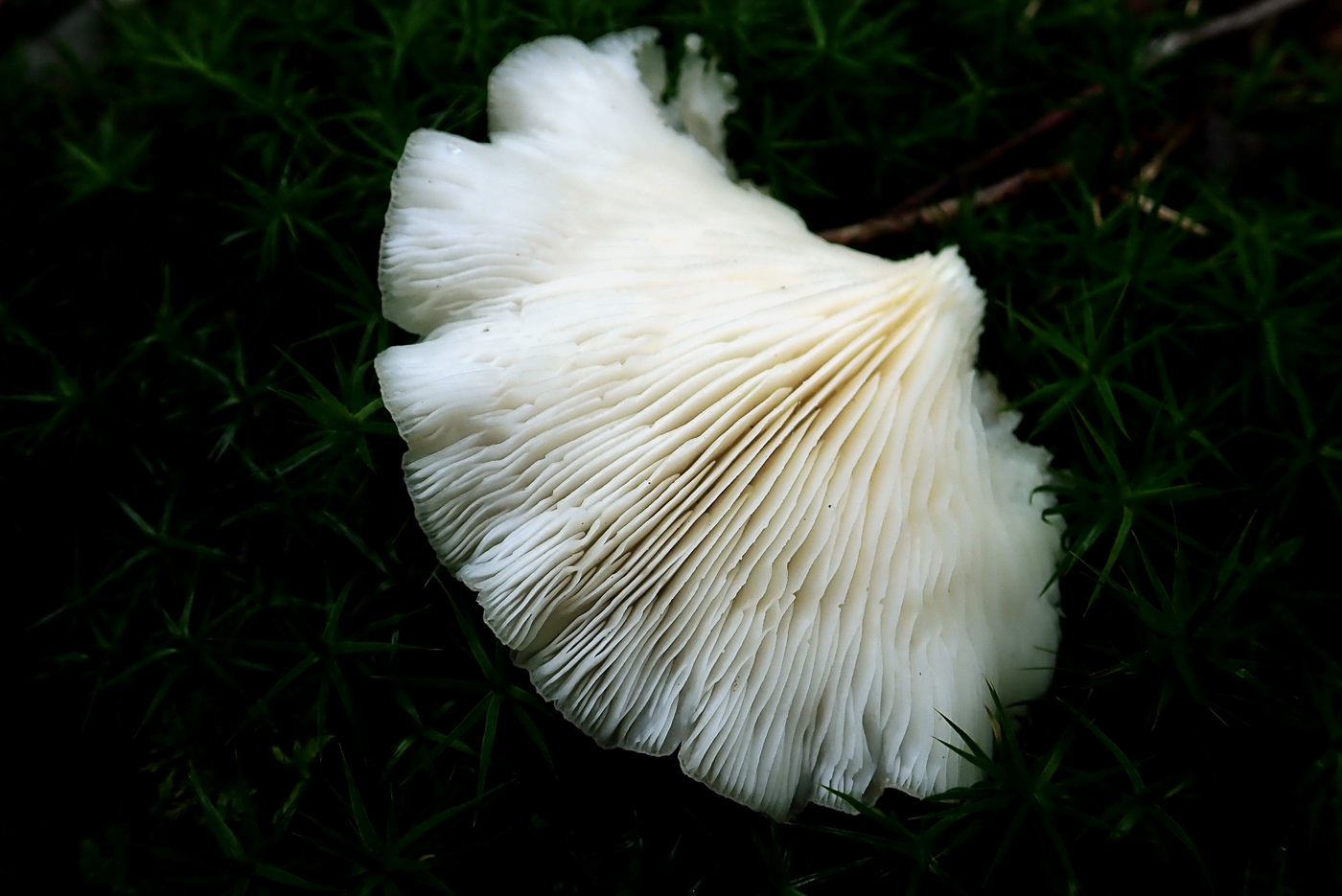
|
Pleurotus pulmonarius (Pale Oyster) 
Jul 24, 2023. On fallen wood (probably Rowan) in woods near Chalfont St. Peter Jim Wills saw this almost white Oyster and thinking it looked different from the very common P. ostreatus (Oyster Mushroom) he took a sample home to work on. Separating the various Oyster species can be surprisingly tricky because a scope is of little help: they lack distinctive features, furthermore in the field P. ostreatus is very variable in colour though rarely as pale as today's collection. Sometimes a sporeprint can help: with a subtle violet tinge in P. ostreatus but with a cream tinge in P. pulmonarius, but Jim found this inconclusive and hoped the photos would be sufficient for Penny to give an opinion. Well, Penny has never seen P. ostreatus looking either this shape or colour - the 'jizz' is just not right to her! Bearing in mind also the Rowan host - a wood on which this species is known to occur - she is happy to confirm Jim's first impression that this is the mush less common P. pulmonarius. We'll hope to dry a sample and get it sequenced.
Oct 5, 2020. Penny Cullington noticed this unusual species on a standing Birch trunk in Common Wood. Superficially very similar to the much more common Oyster Mushroom (see photo dated Sept 21), it tends to grow separately and not in clusters, the cap is never darker than pale cream and the stem is very short or virtually absent - all features in variance with Oyster Mushroom. Furthermore it has a delicate sweet smell similar to that of Clitocybe fragrans and in this area seems to occur most frequently on Birch, as today.
|
 |
Plicaria endocarpoides (a rare Cup Fungus with no English name)  
Mar 3, 2024. At Turville Heath Penny made sure to check out a particularly productive bonfire site, but was sad to see that it has been cleared and flattened since her last visit. (In fact much of the dead and lying wood at this site has recently been removed, more's the pity.) However, she was surprised to see in the remains of this bonfire site a whole load of 'cups' still flourishing. The majority were pale brown - see the entry below for more - but there were a few dark reddish brown cups amongst them which she guessed (incorrectly) were likely to be Peziza petersii. At home, however, a scope revealed they were not even that genus, with round spores - not ellipsoid as in Peziza. A few emails were sent asking for help, and Asco expert Paul Cannon was able to put Penny onto the possible genus which favours burnt ground, the round spores indicating this particular species. This is new to the county with under 50 records on the national database. The collection has now been confirmed with sequencing.
|







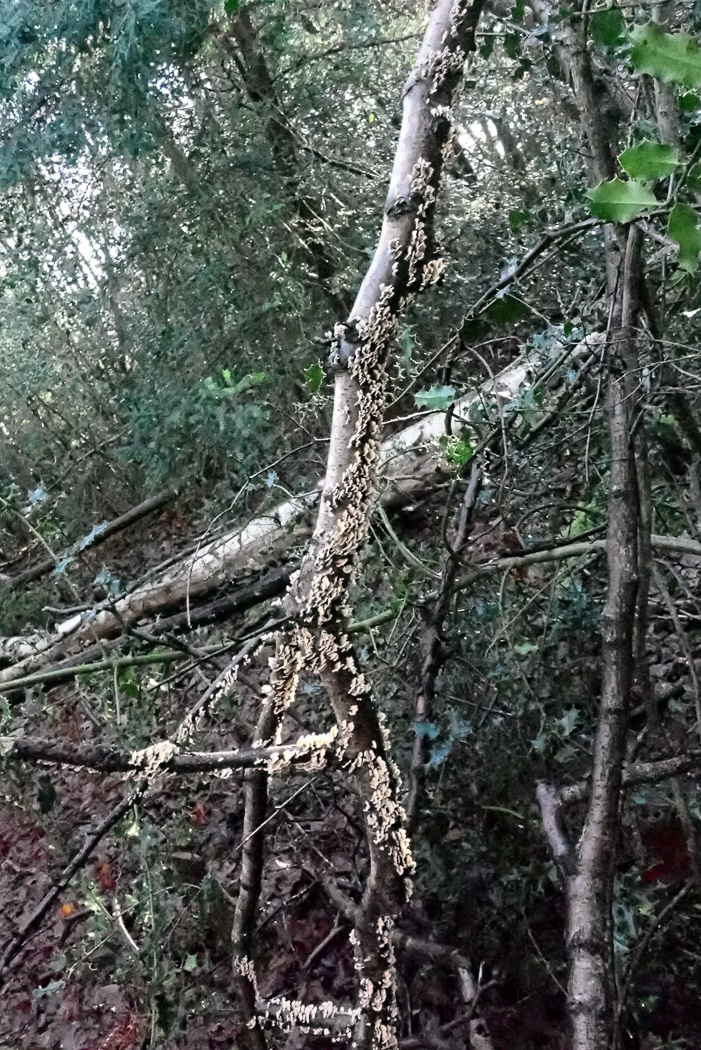
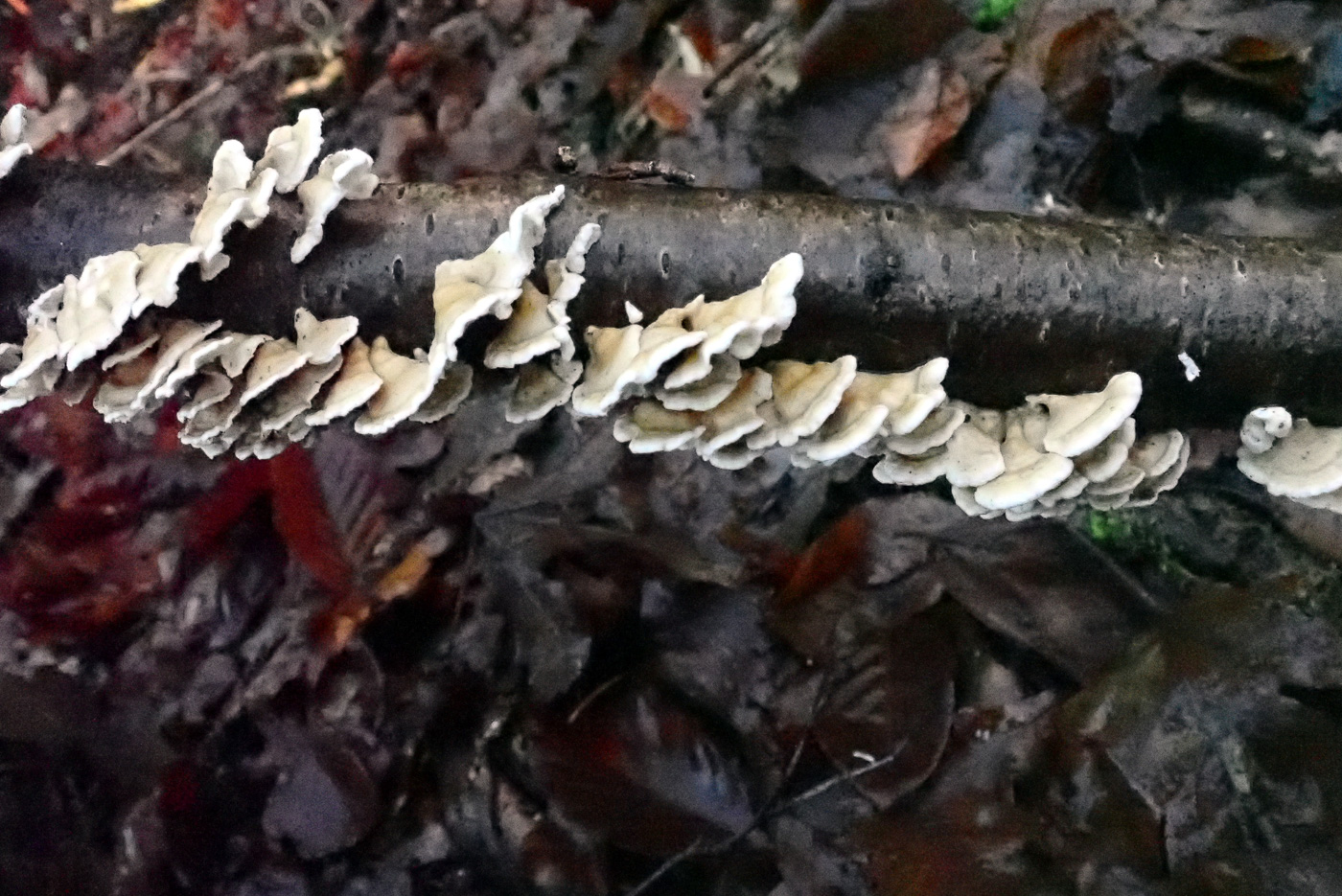
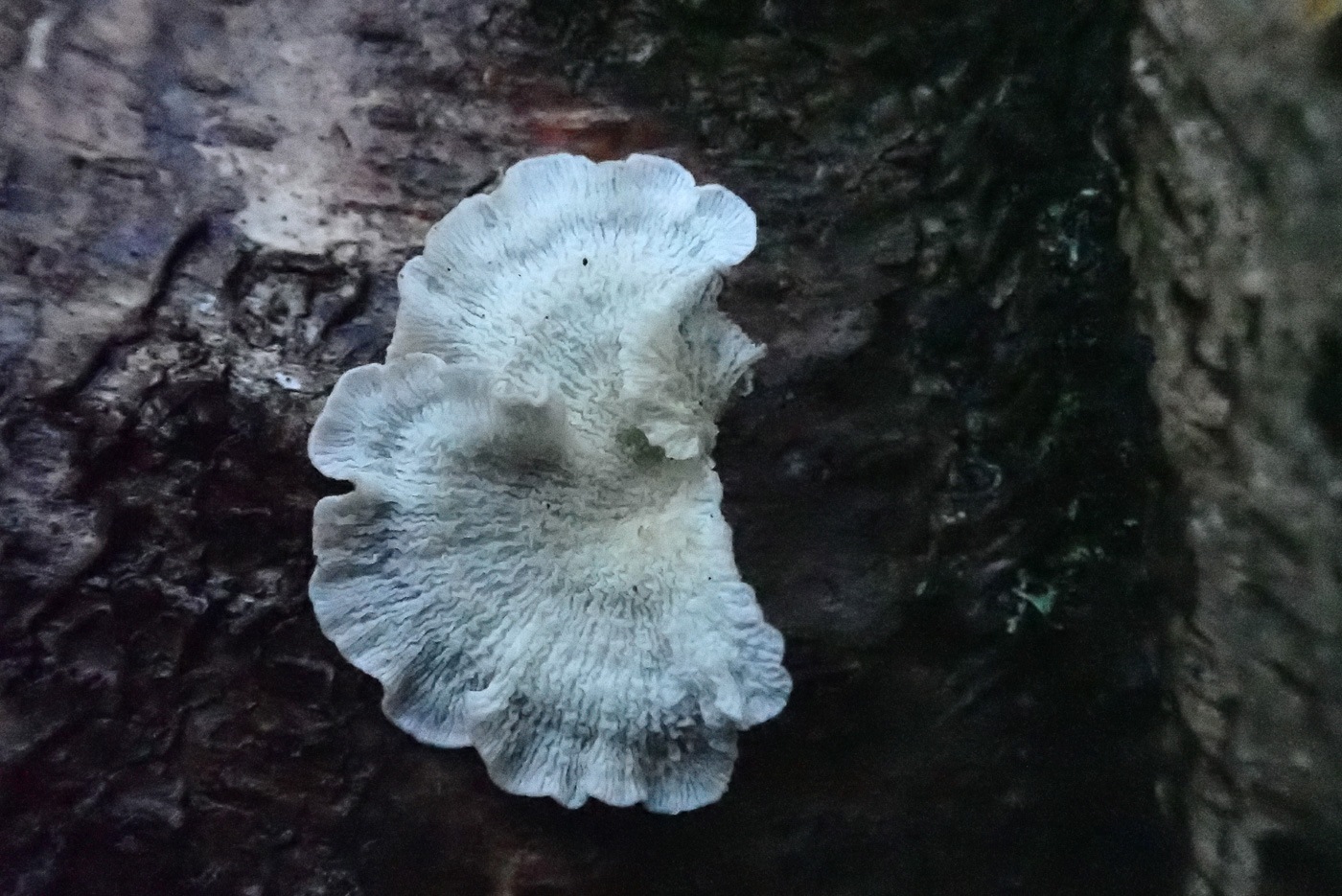
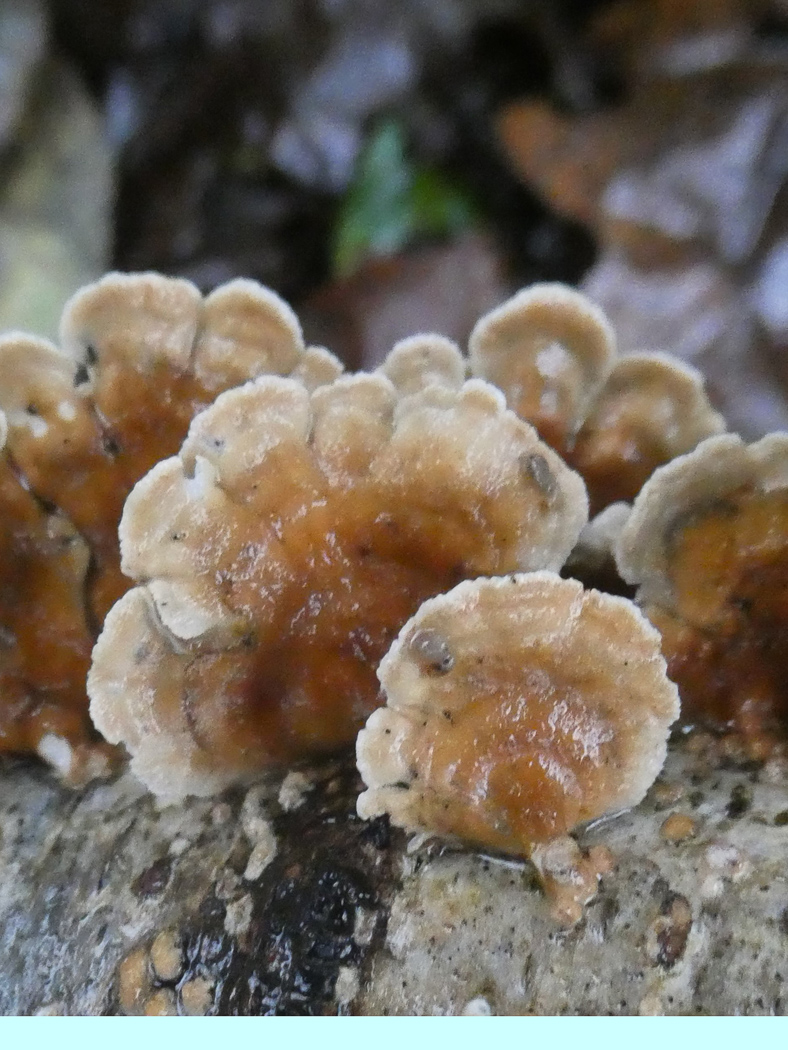
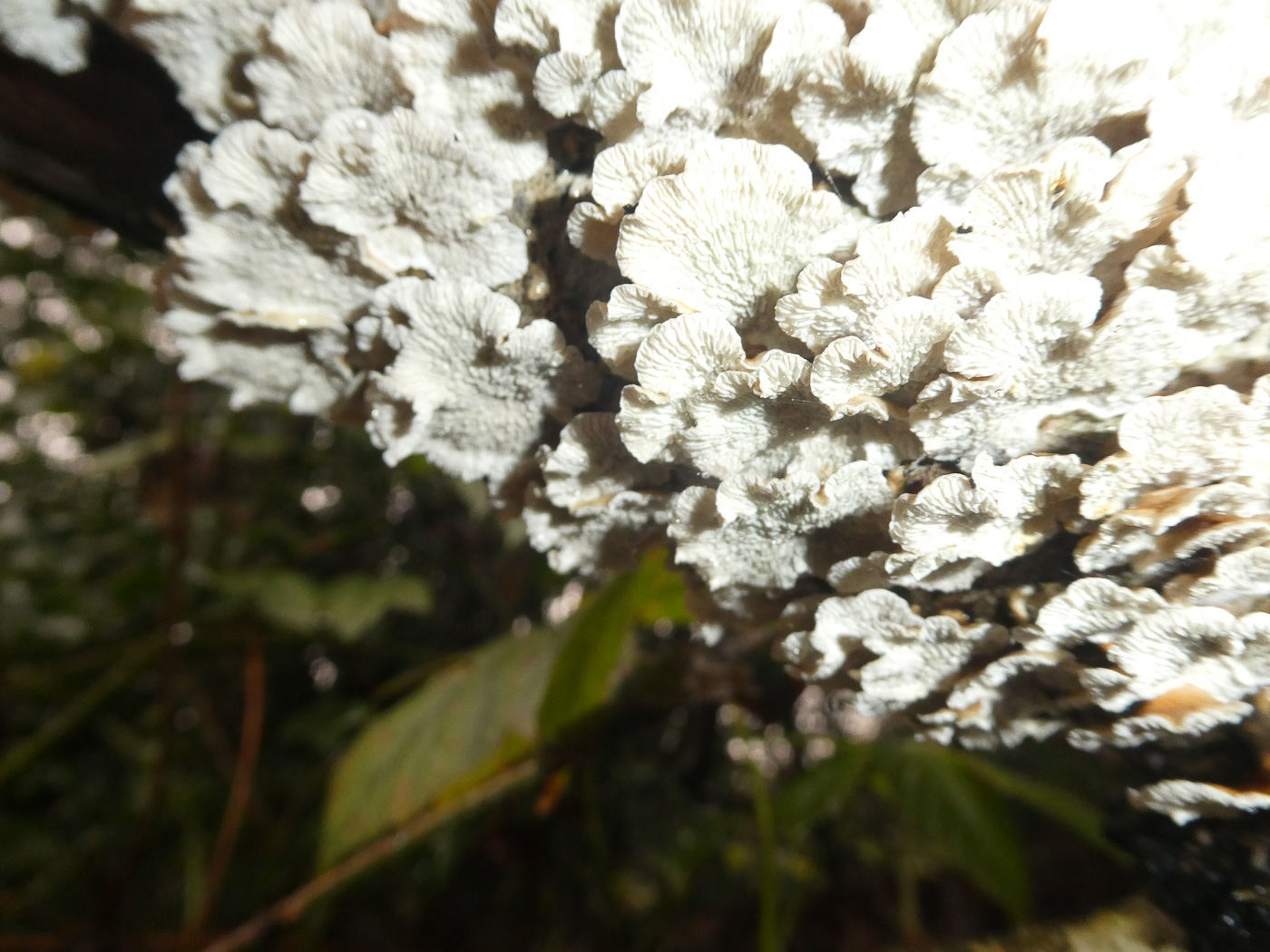
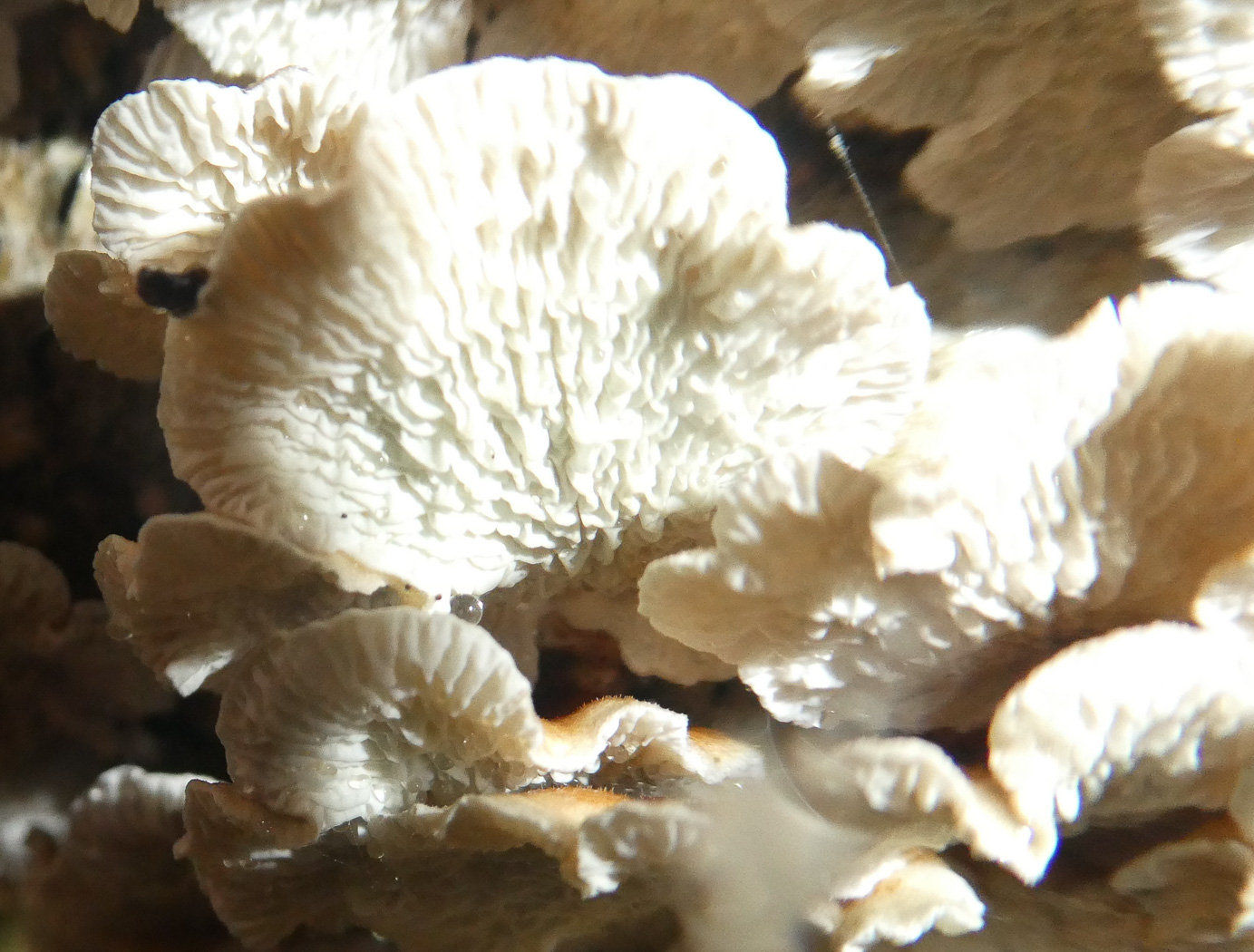
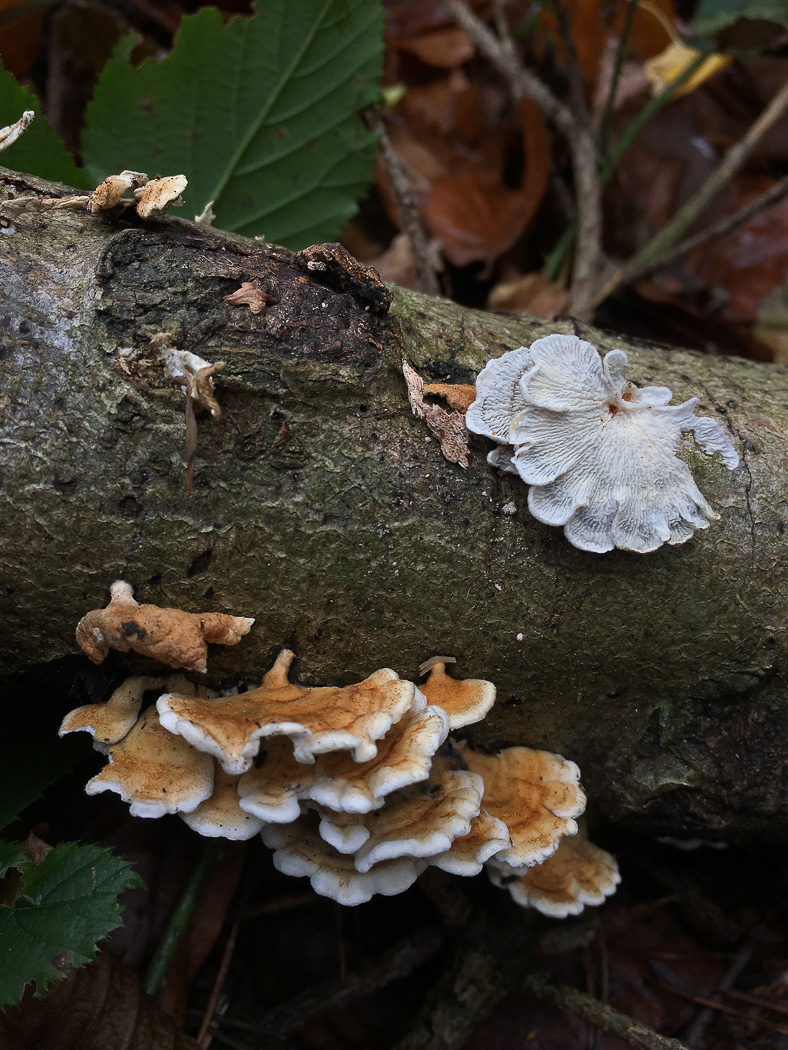
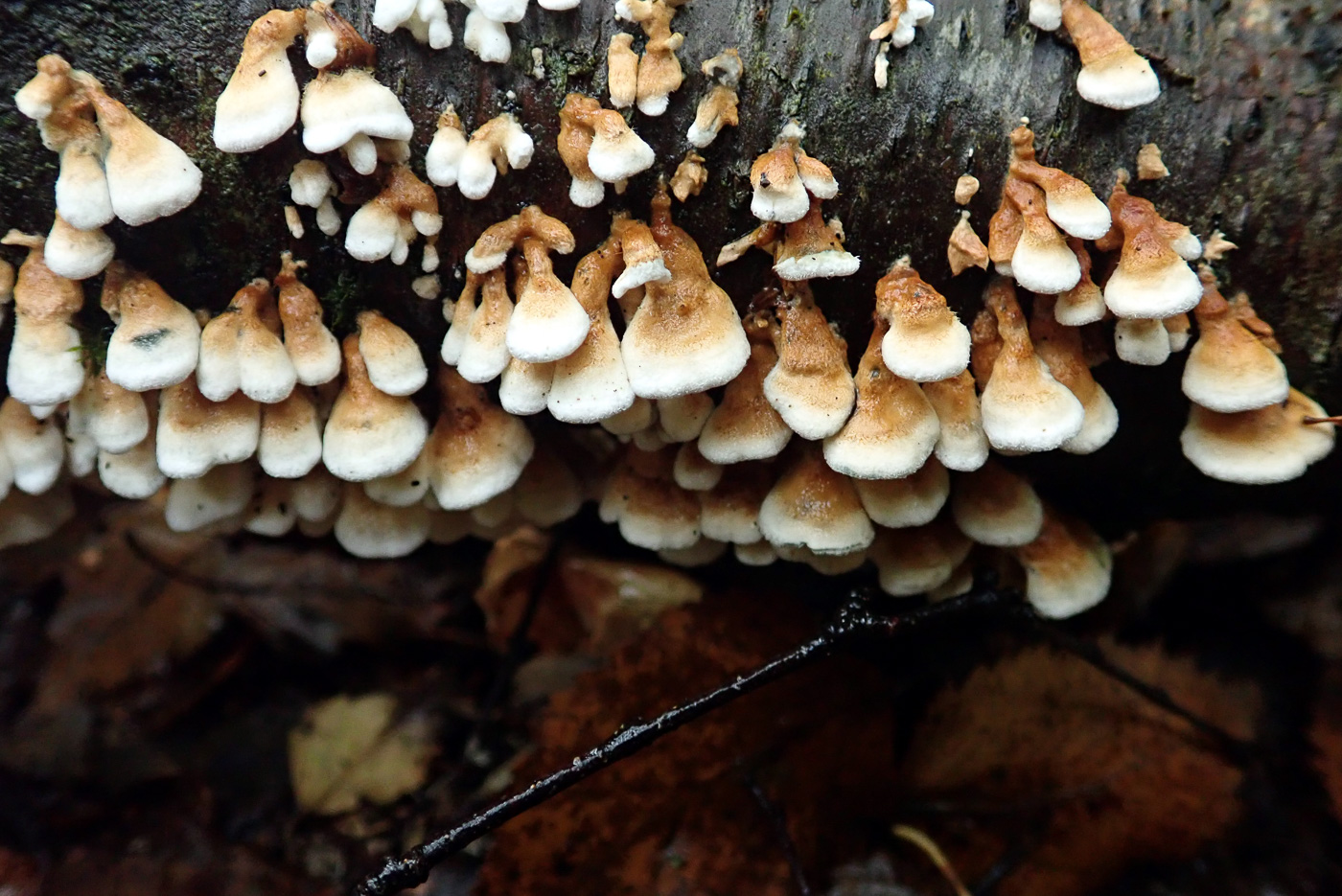
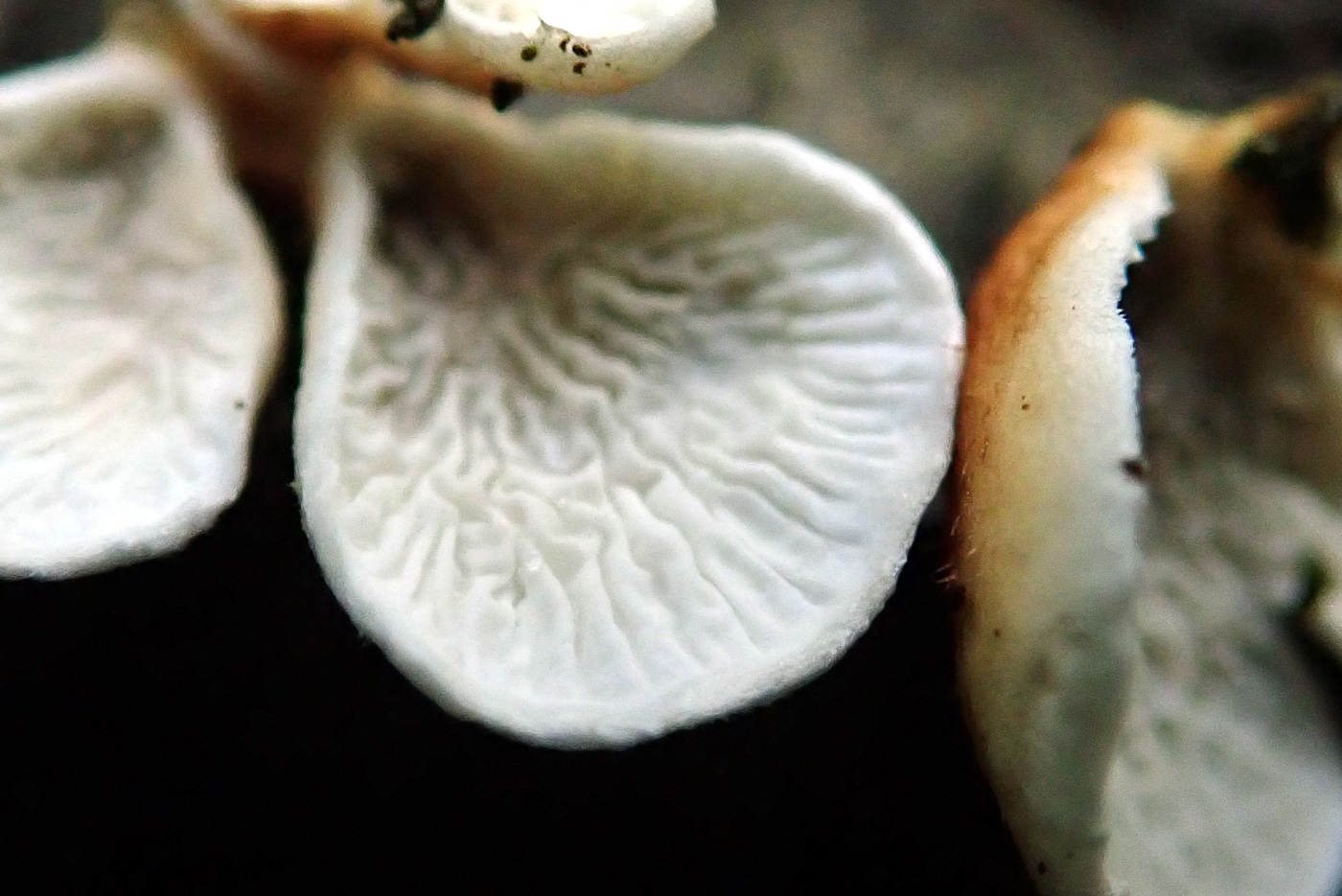
|
Plicaturopsis crispa (Crimped Gill)
Nov 3, 2023. In Pullingshill Wood Penny came across a fallen Beech branch with this species fruiting in its early stages (photo 1). Further along the branch was a line of some slight further developed examples (photo 2), and photo 3 shows a (bad) close-up of the 'crimped gill' - like structures underneath which help to confirm the species if in doubt. The upper surface can appear somewhat similar to a small Stereum hirsutum (Hairy Curtain Crust). The species is becoming increasingly common especially on fallen Birch, less common to find it on Beech in this area, however.
Jan 7, 2023. More evidence here that this species is on the march and spreading fast. Found by Jim Wills in Chalfont St. Peter on Birch - which now appears to be its commonest host - he comments that the species seems to be 'colonising a good proportion of the fallen Birch trunks' in this area. It's an easy one to recognise and well illustrated here, the upper surface being similar to a small Stereum but the unusual gill-like under-surface (giving rise to its common name and seen in photo 3) is unlike anything else. See the Masterlist for several other entries. As an afterthought Penny has added photo 4 taken by her the following day at Burnham Beeches and showing the species fruiting alongside Stereum (either hirsutum or subtomentosum) on fallen Beech, giving the opportunity to compare the two species. The paler specimens are the Plicaturopsis.
Jan 17, 2022. In Burnham Beeches Penny saw many examples of this species which is now becoming quite common, particularly on Birch as here. Photo 1 shows a thinnish broken branch liberally smothered with these small brackets; photo 2 is a closer example; photo 3 shows the underside with its distinctive fluted edge and unique crinkled gill-like structures, making this an easy species to separate from other small common brackets which can appear quite similar above.
Dec 27, 2021. In Austenwood Common, Chalfont St. Peter, Jim Wills noticed these small brackets on fallen Birch which he was initially confused by, but comparing with various illustrations (including Finds) he then came up with the correct name. (See Finds 2020 dated Oct 23rd and Nov 16th, named Plicatura crispa - the name has changed since!) This is a species which is easily recognised once you know it - a small flimsy bracket with distinctive white gill-like structures underneath and often (though not exclusively) found on Birch. Considered rare a few years ago it is clearly on the increase now.
Nov 16, 2020. Derek Schafer found this unusual species on a deciduous log in Hockerdge Wood. We do already have an example of this, dated Oct 23 (see notes there for more details about the species) but this is a larger more developed specimen and thus worth including here. It also shows that it's still fruiting away and worth looking out for. (Actually John Catterson also sent in a photo of this the following day.)
Oct 23, 2020. Penny C. found this colony of tiny soft brackets on a fallen Birch branch in Ashridge. Not unlike young Stereum hirsutum which is much the same colour and forms similar crowded colonies on fallen deciduous wood, this species is flabby and soft when young, as here, and easily removed from the substrate. Once you look at the underside you know you have something different from Stereum (which is entirely smooth underneath). Apologies for my very blurred photo 2, but at least it shows the diagnostic white crimped gill-like structure. Each single fruitbody was only about 1 cm across here but they will grow to twice that size and become hard with age. Considered rare a few years ago the species seems to be becoming relatively common in the south in recent years.
|



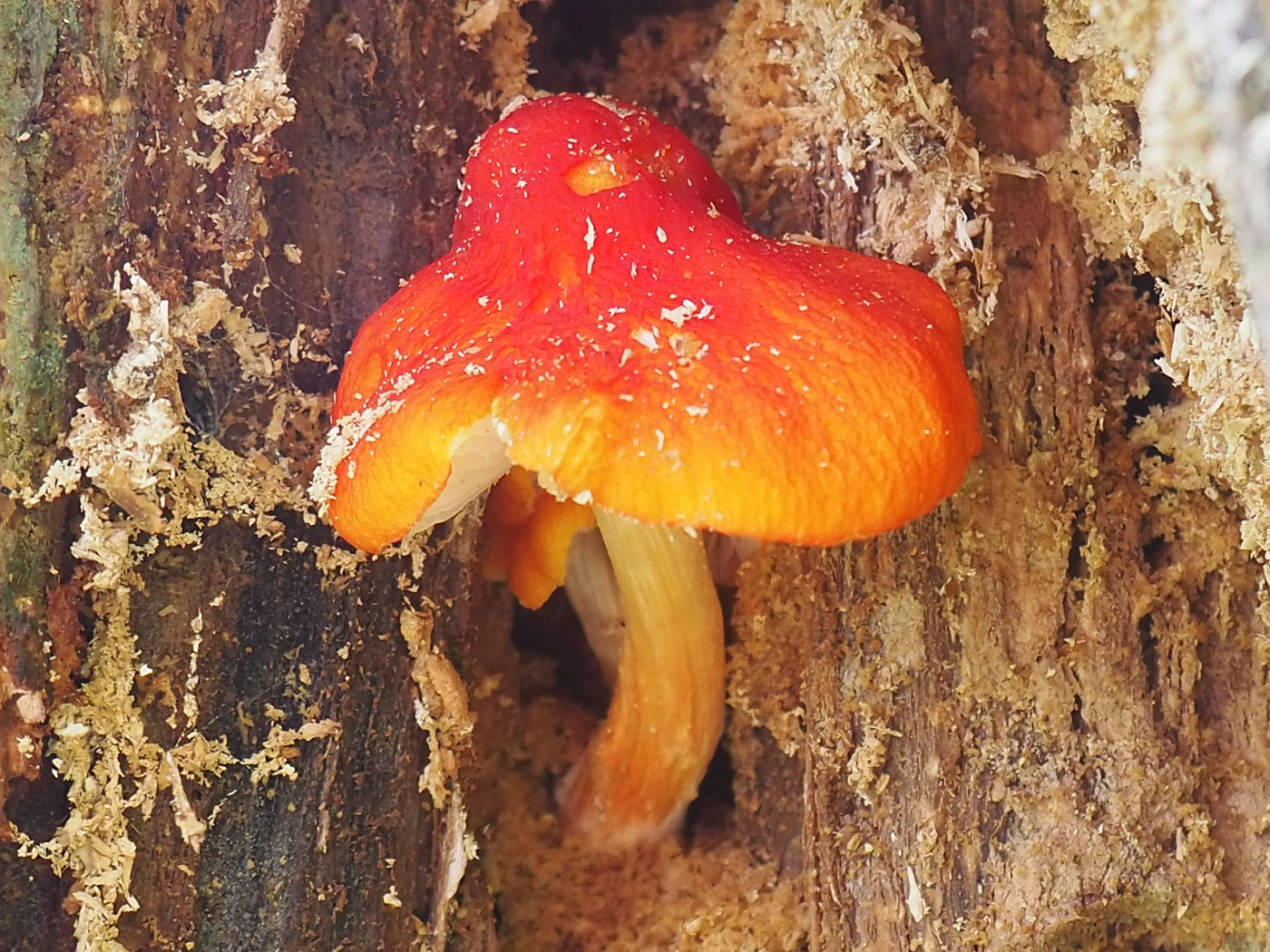 |
Pluteus aurantiorugosus (Flame Shield)
Jul 29, 2023. In Hughenden Park towards the base of an old Horse Chestnut John Catterson found these stunners - in colour not unlike the Waxcaps featured just below! However, no Waxcap is found on wood, nor has the crowded pinkish gills of a Pluteus species (just visible in photo 3). This cap colour is unique for the genus and so unlike the dull brown of the majority, which may possibly account in part for its rarity - being either misidentified or unidentified. We have just one previous record: John's from this same tree two years ago Incidentally John's photos in Finds of another rarity, Volvariella bombycina, are also from this same tree!
Oct 26, 2020. John Catterson found this stunning and rare species of Shield on a dying Horse Chestnut tree in Hughendon Park where he remembered it fruiting last year. The genus Pluteus is quite a large one, always growing on wood or a woody substrate, always with pink gills which are free and most species are some shade of dull brown. Today's species is somewhat startlingly in contrast and is one which Penny would love to find for herself, never having done so! We have extremely few county records.
|
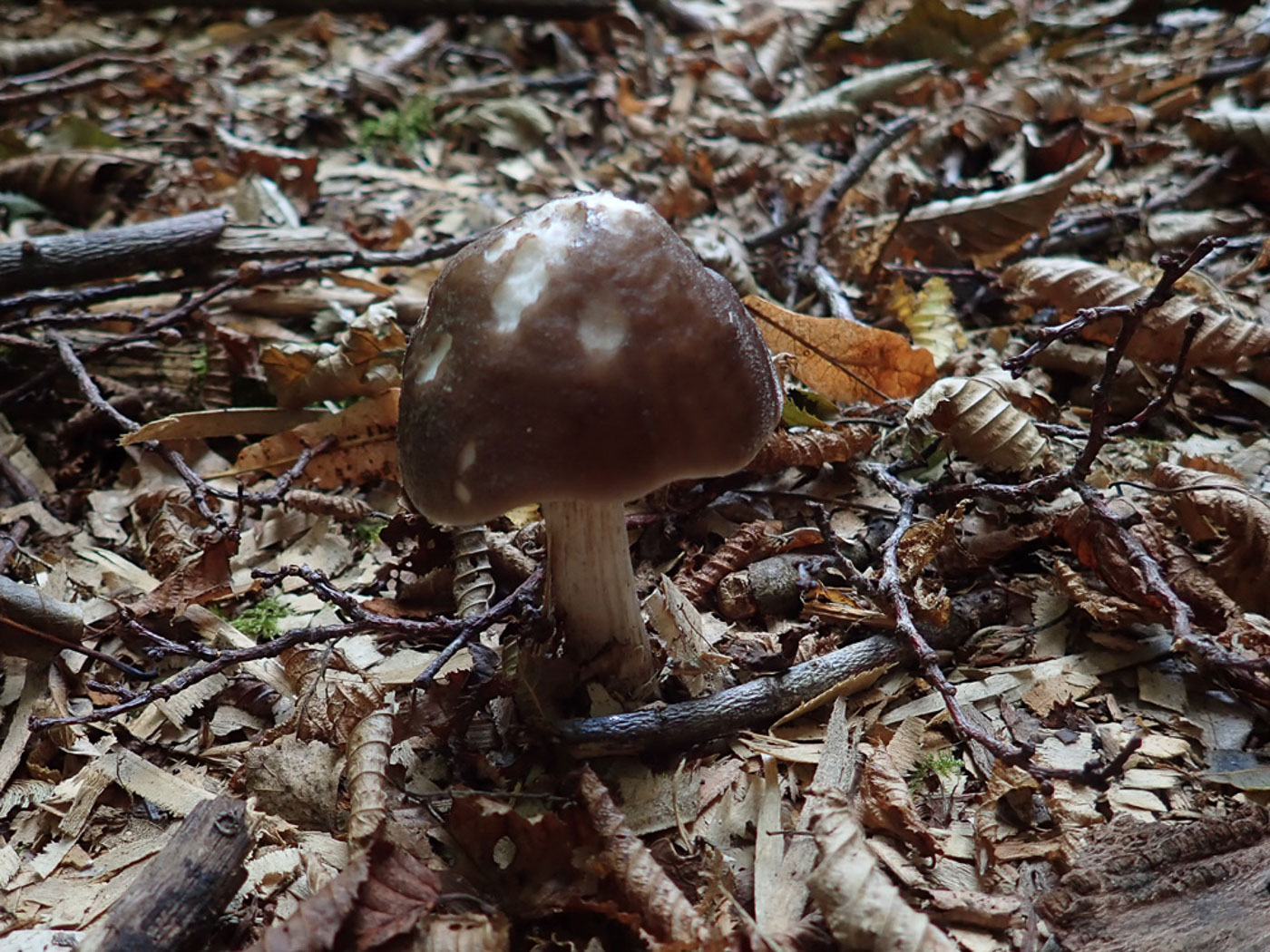
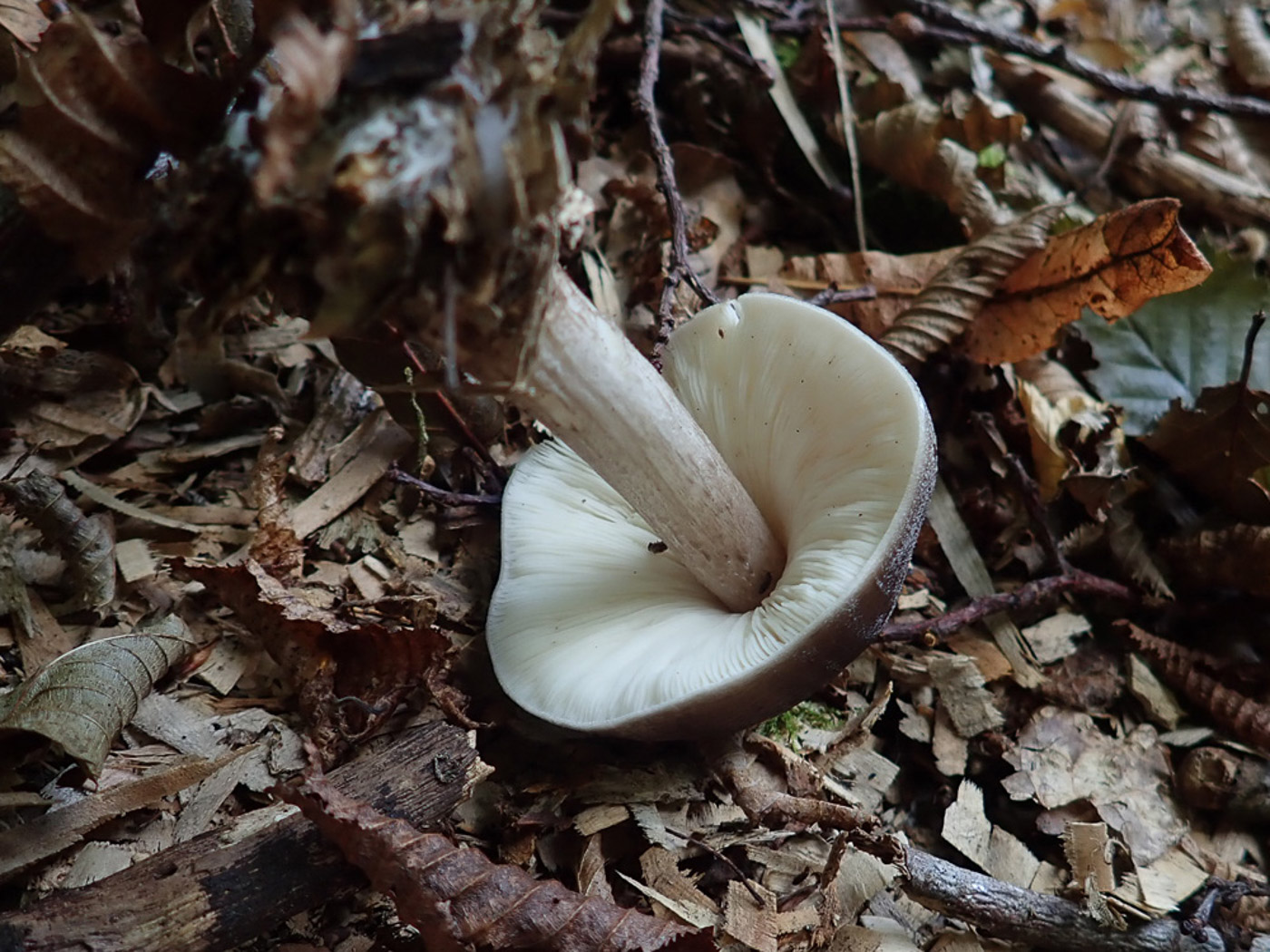
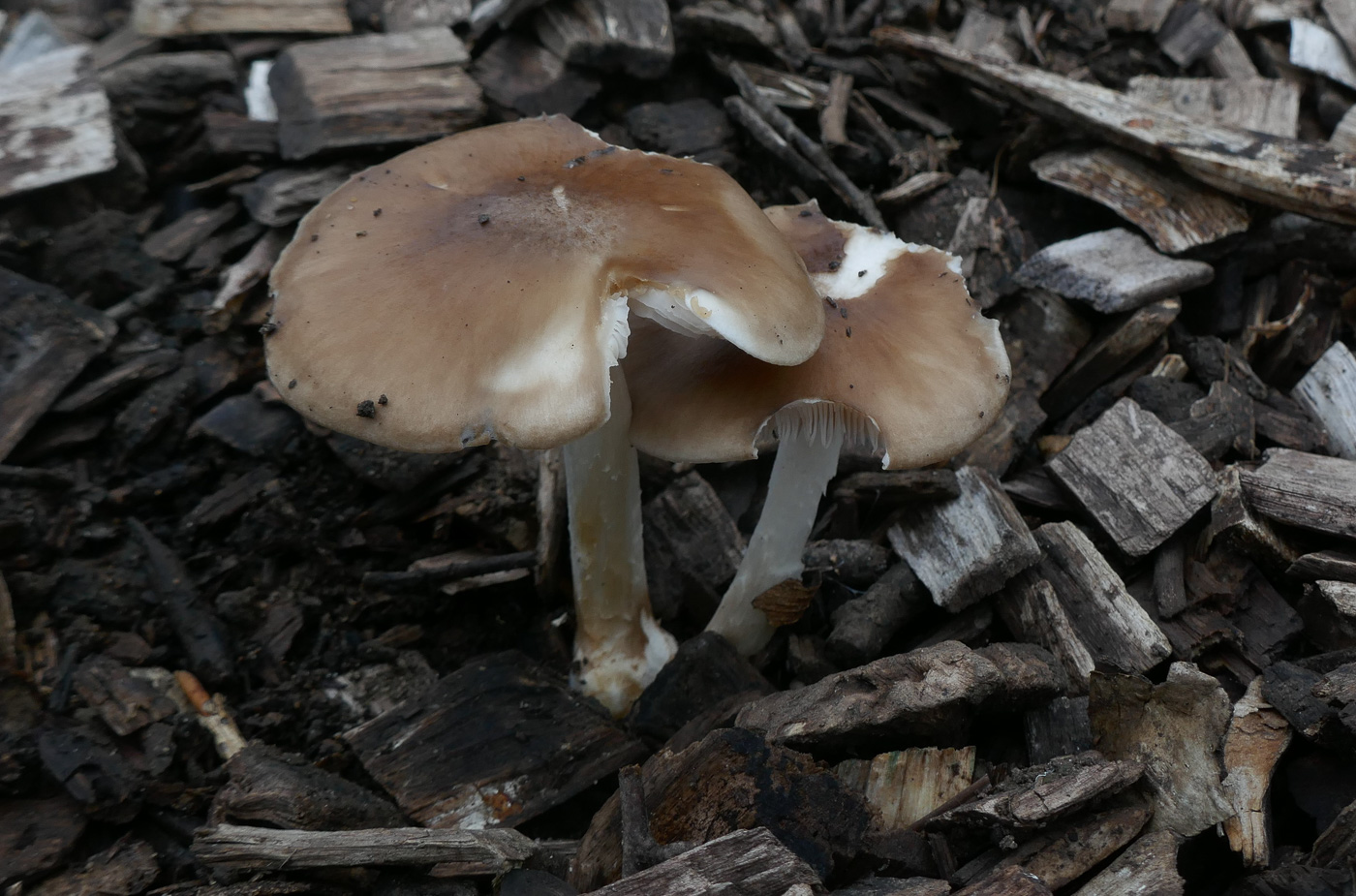
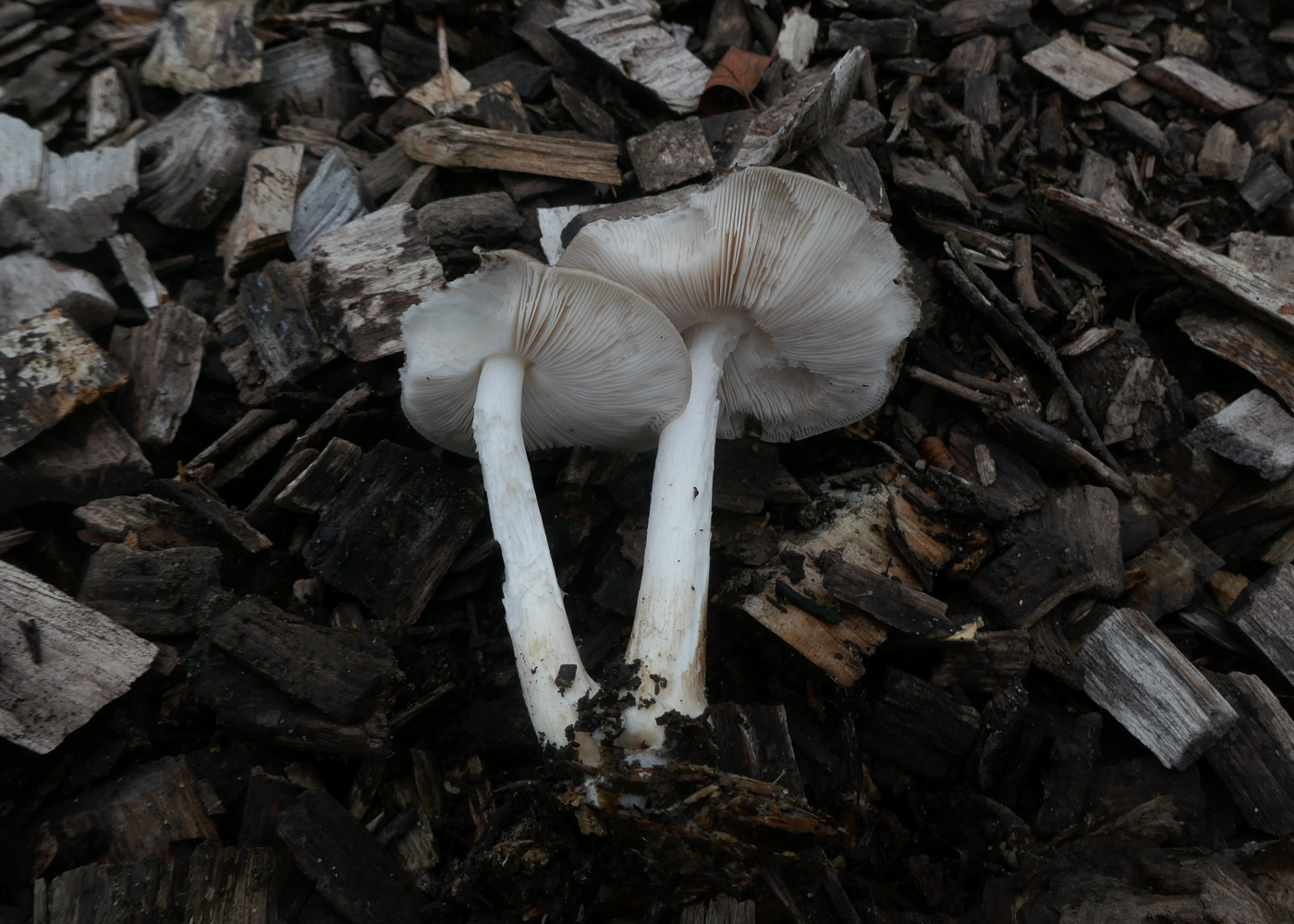
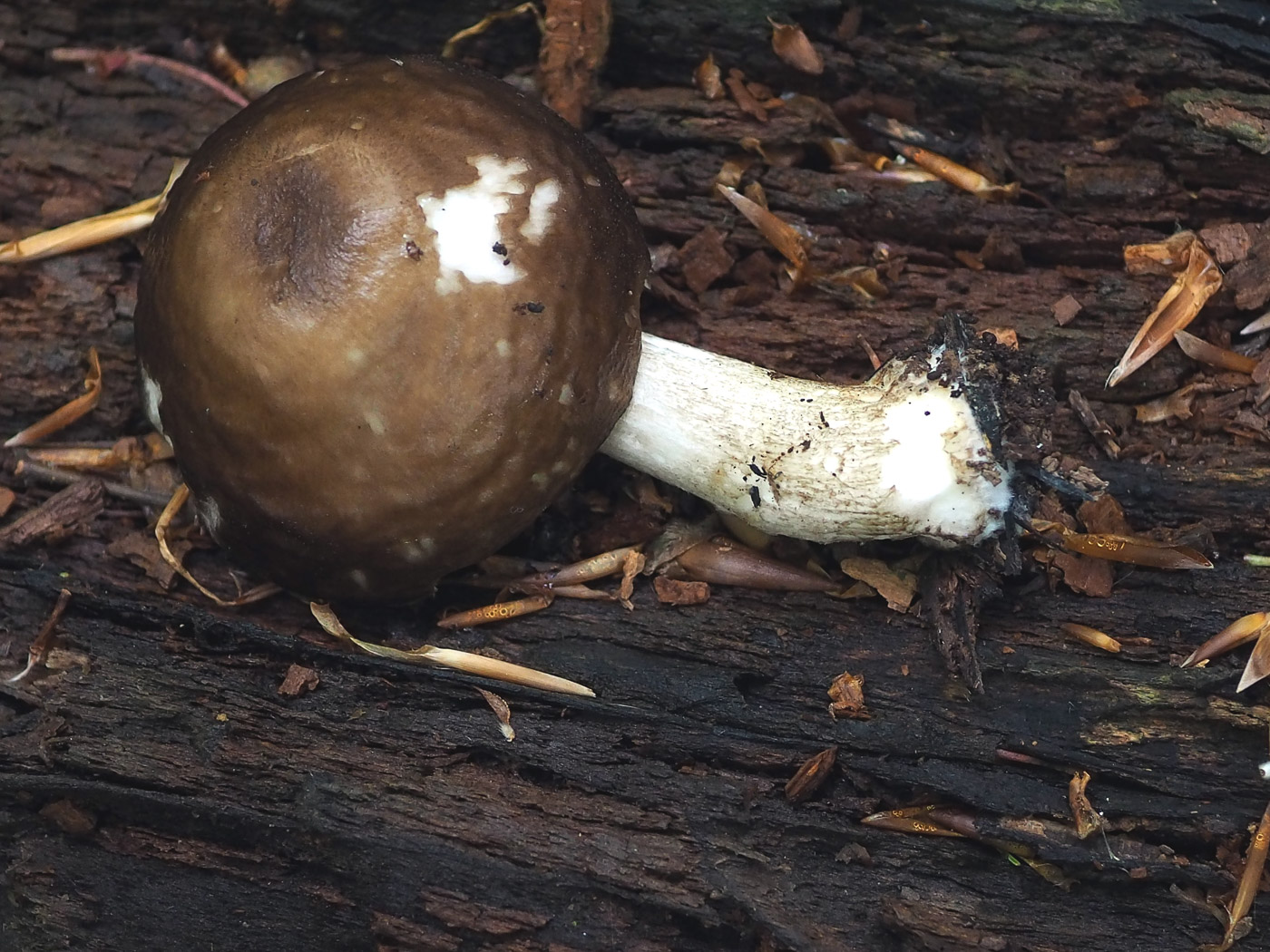
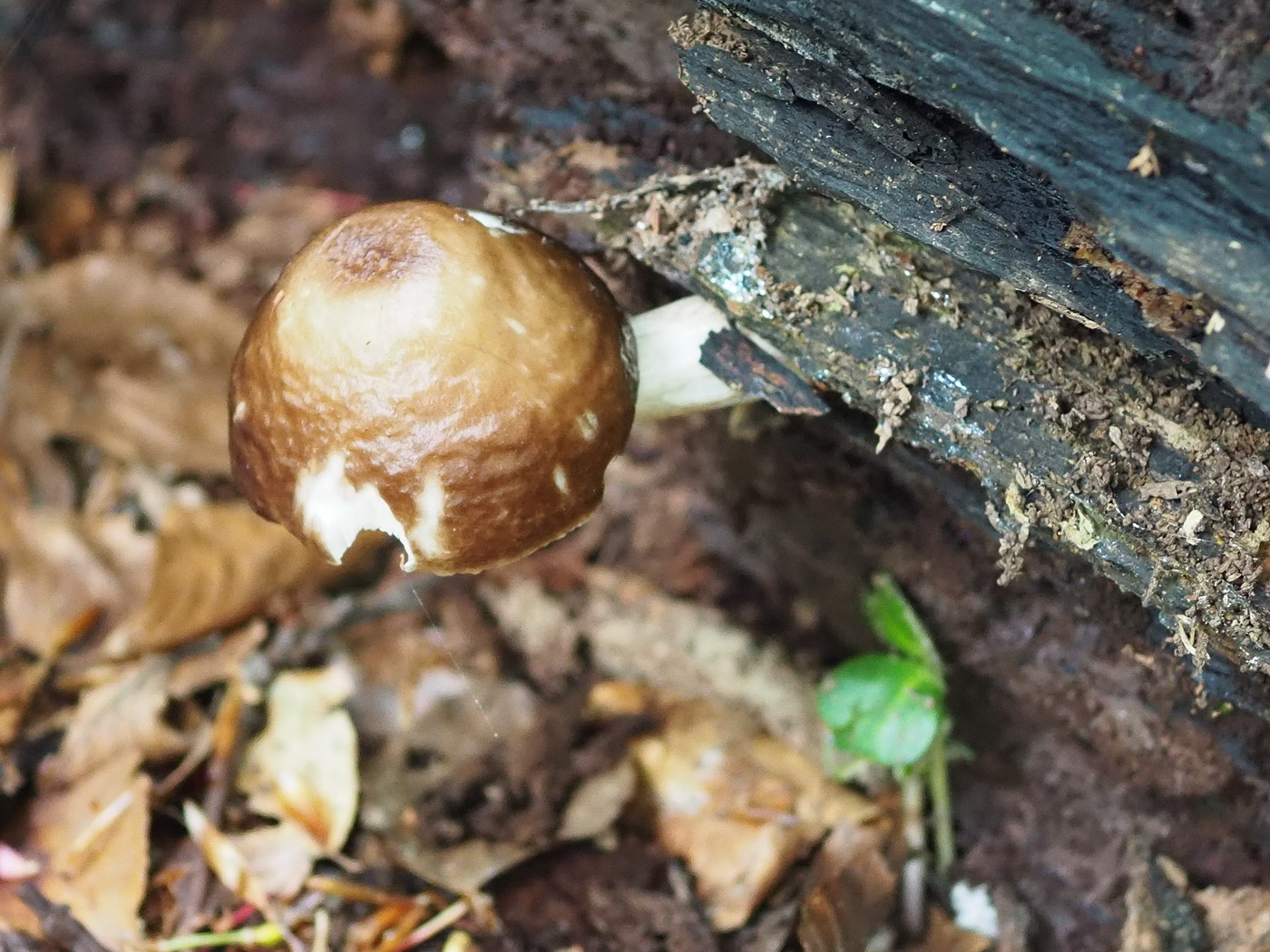




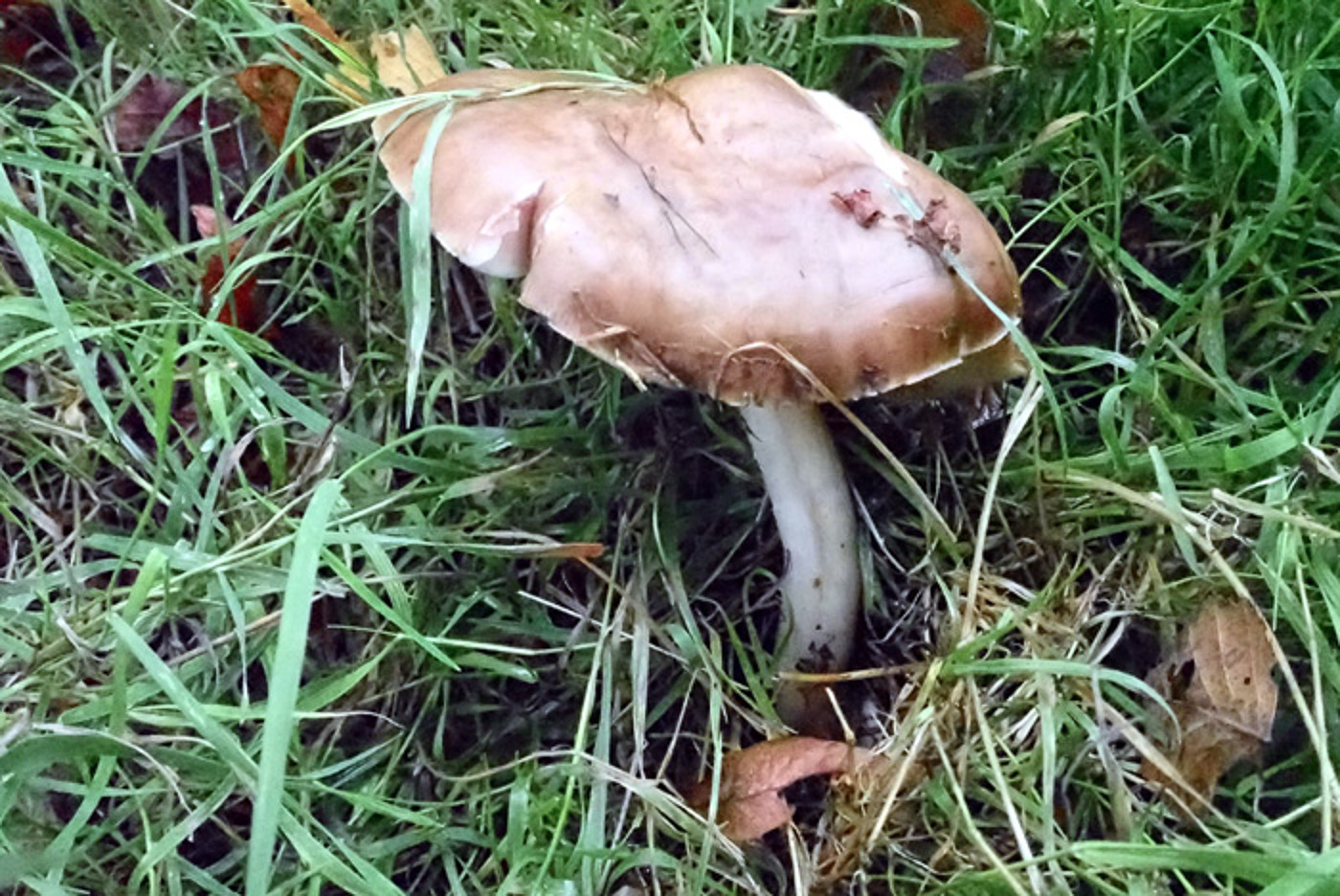
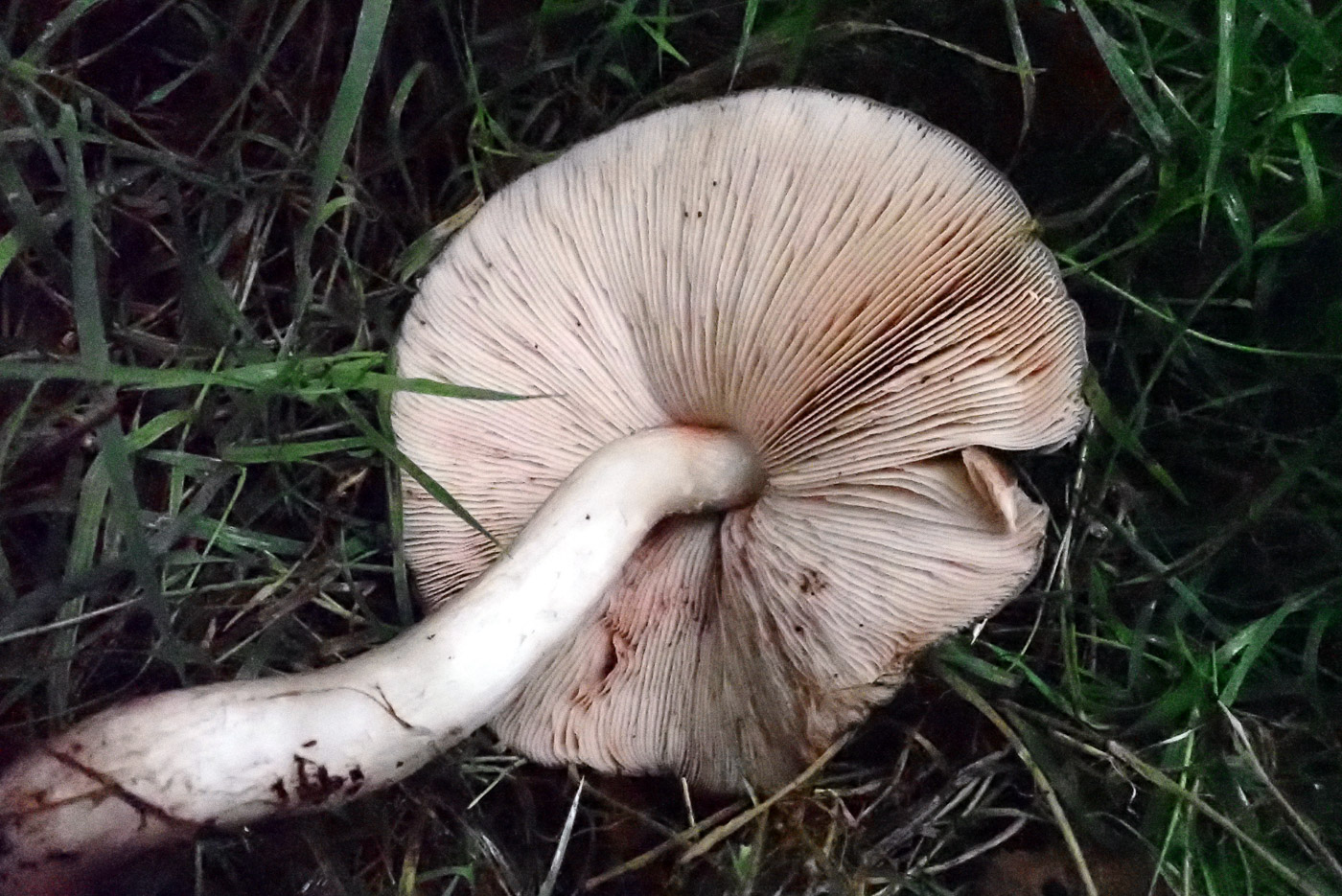
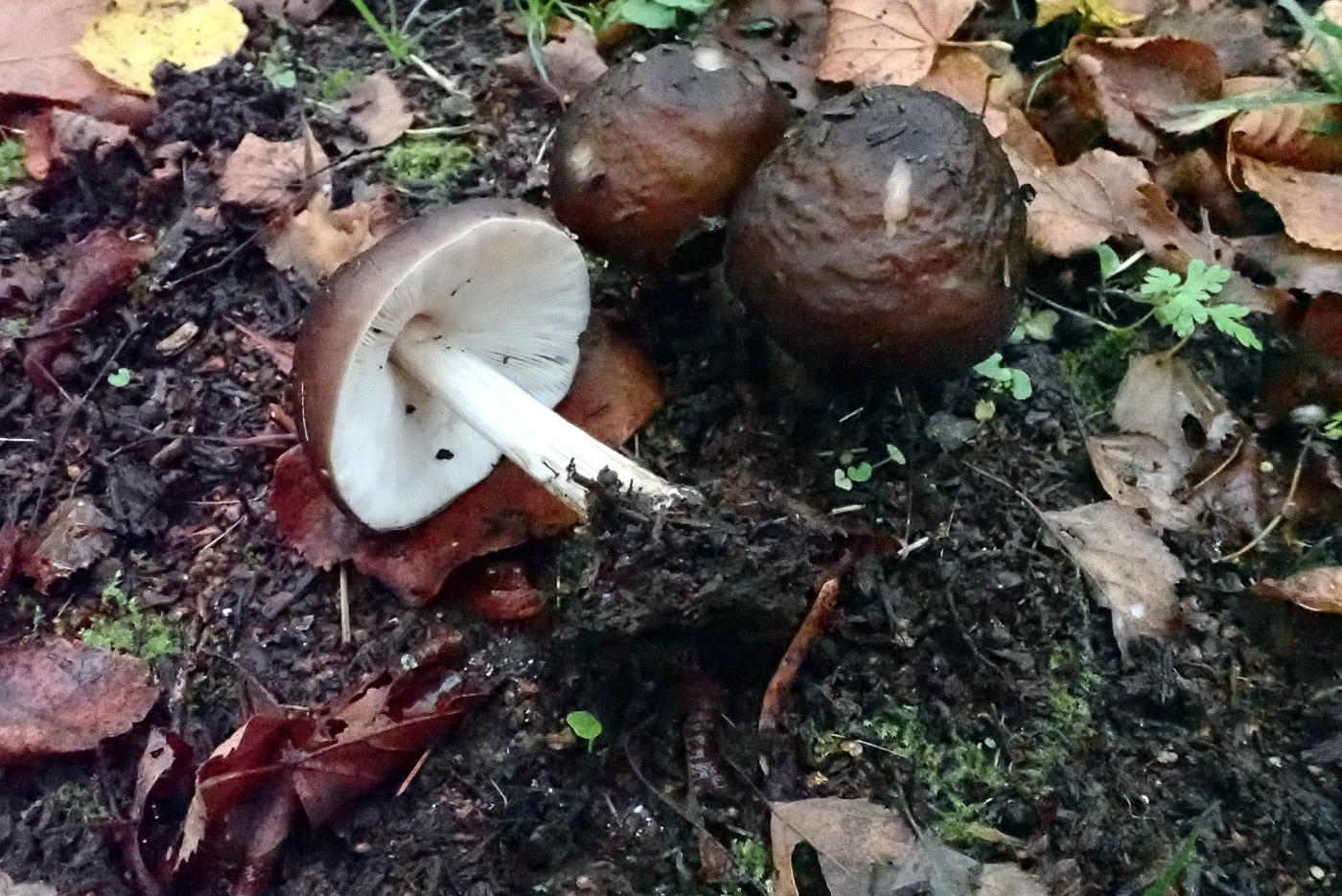
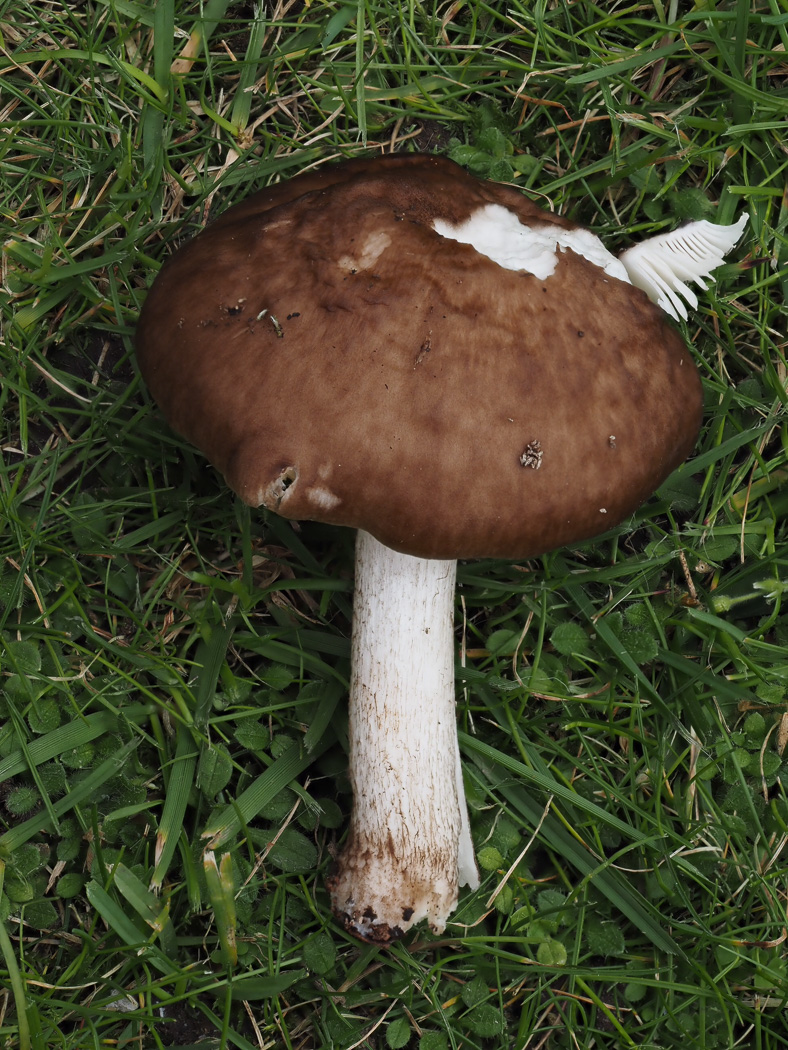
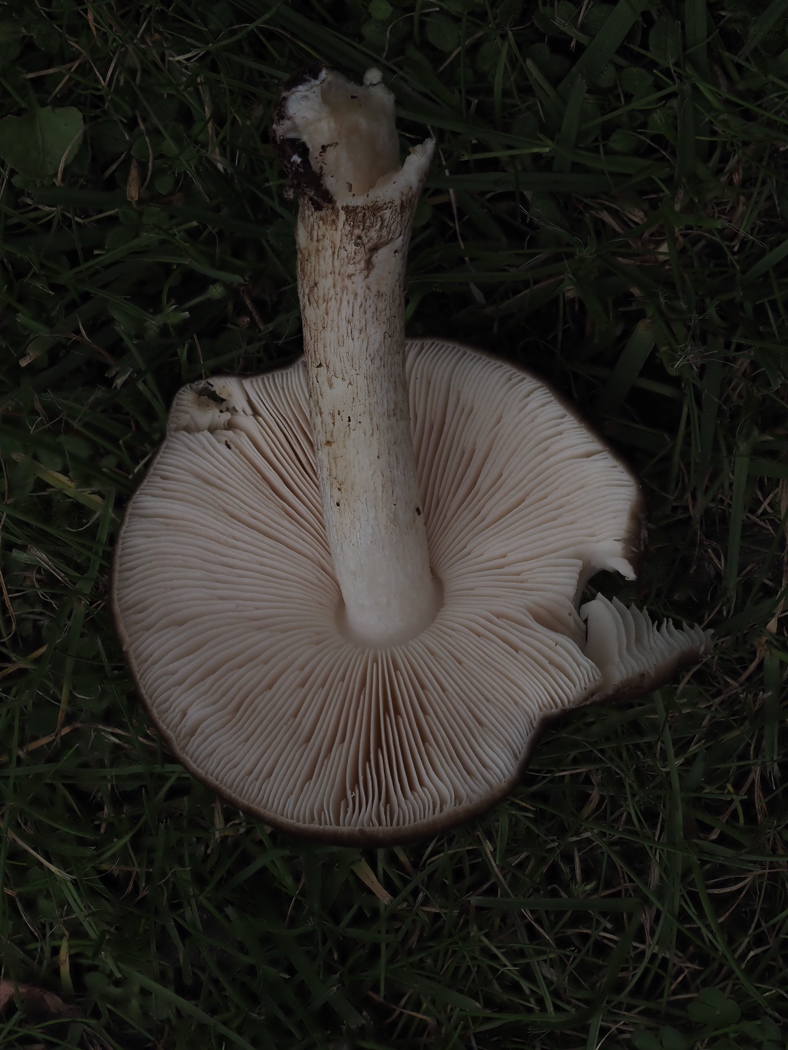
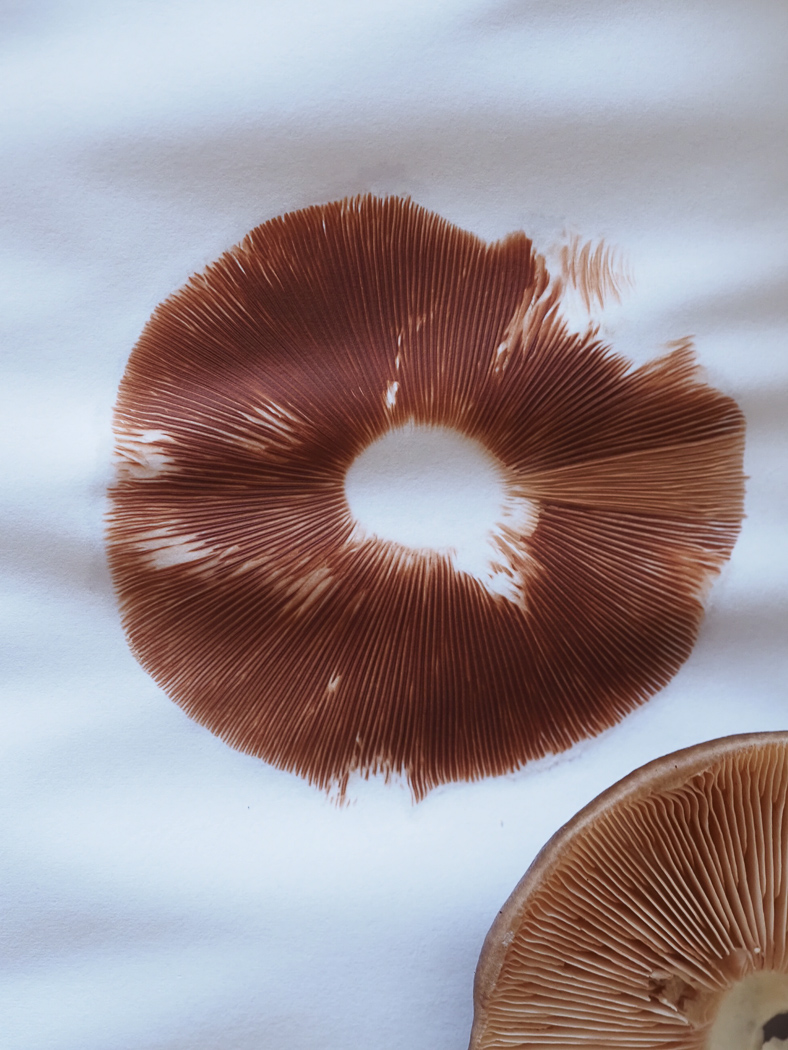
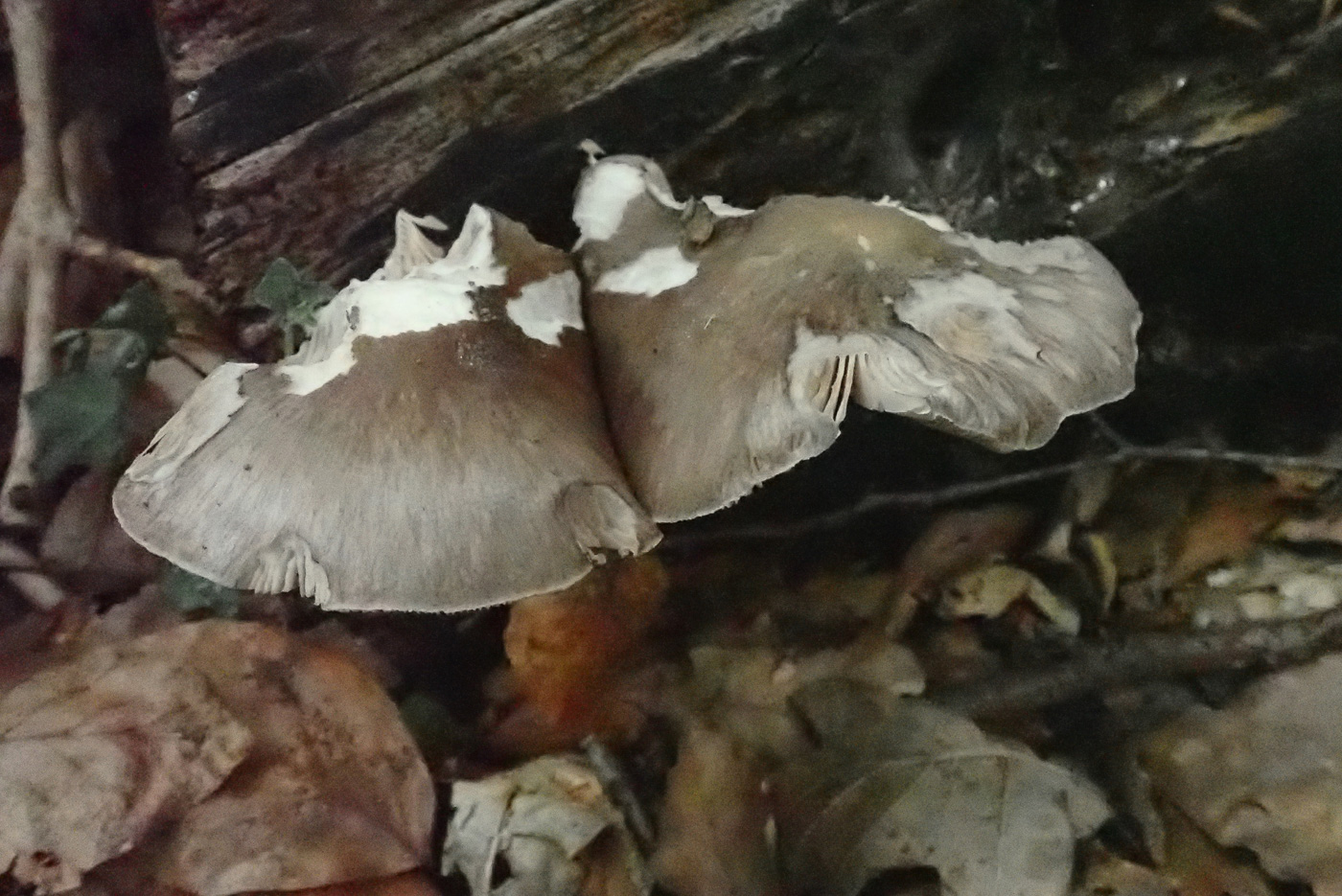
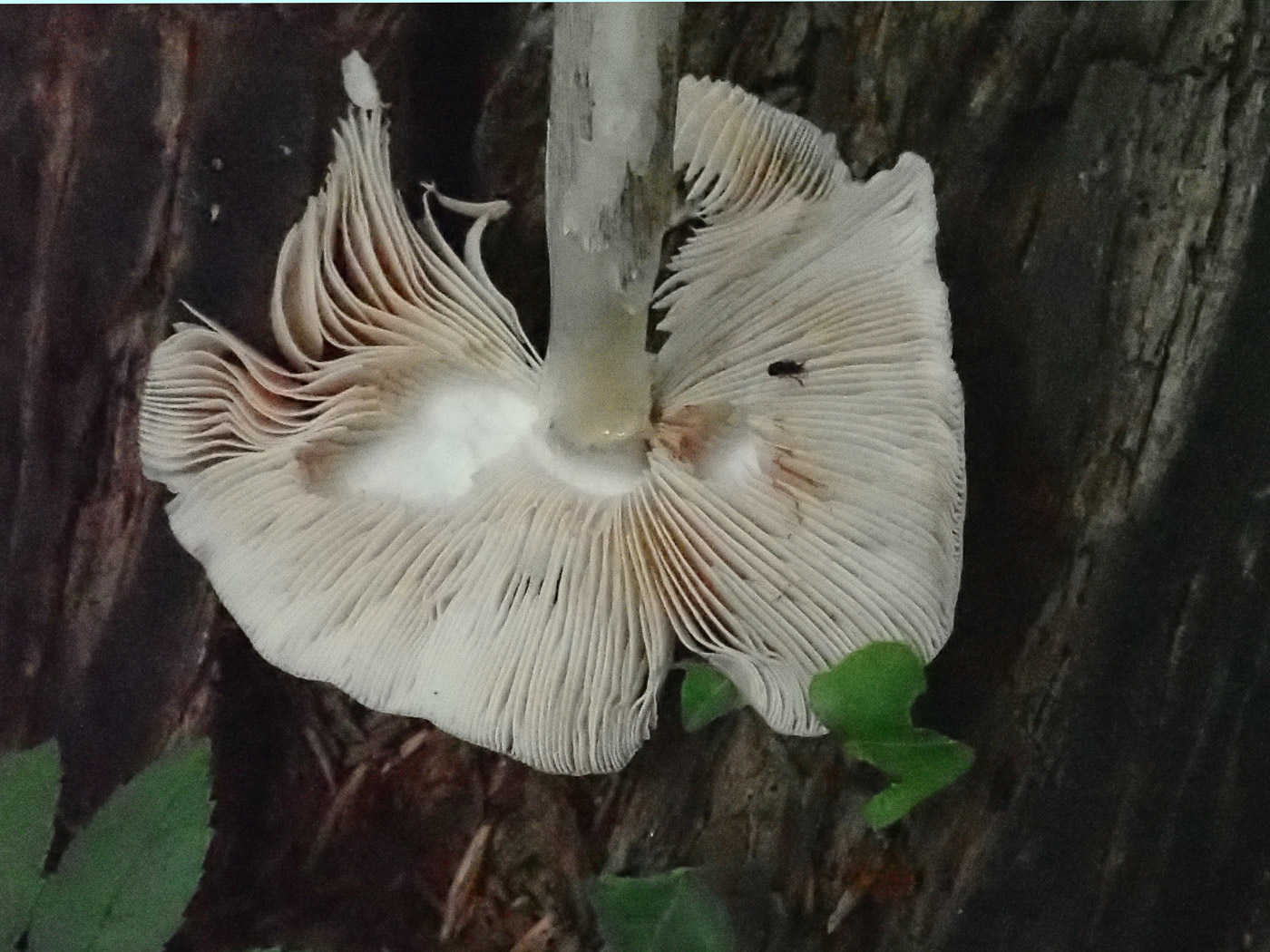
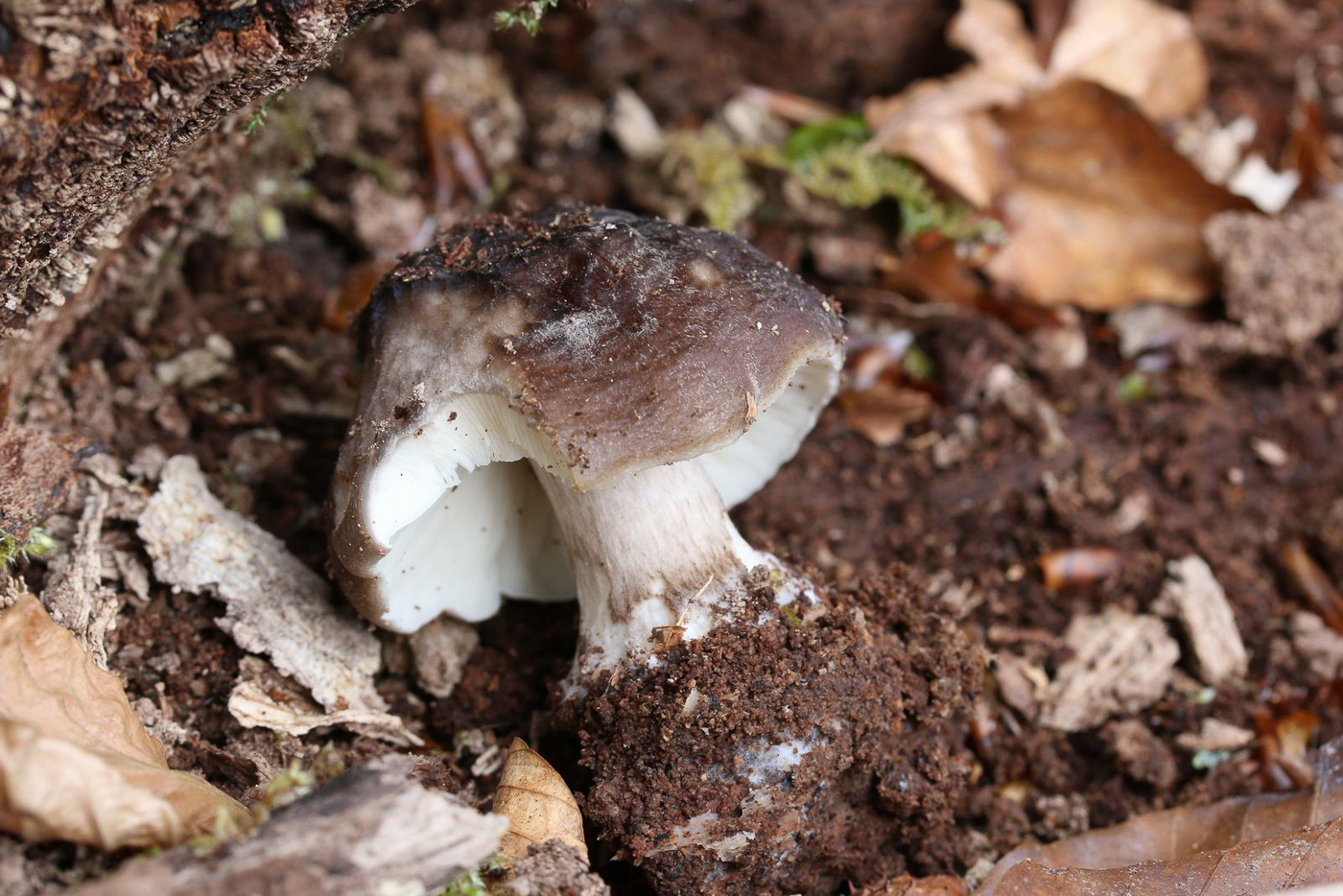
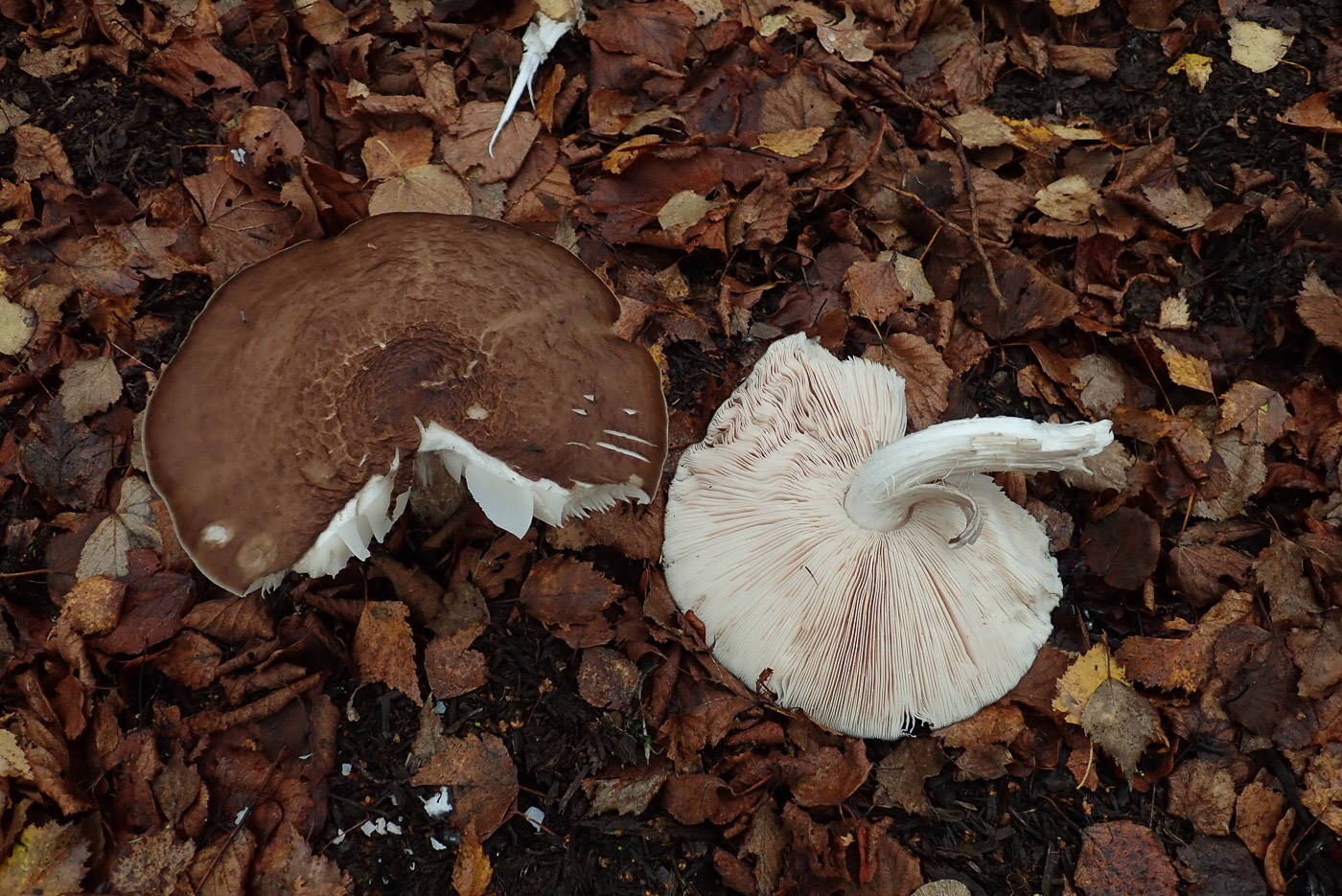
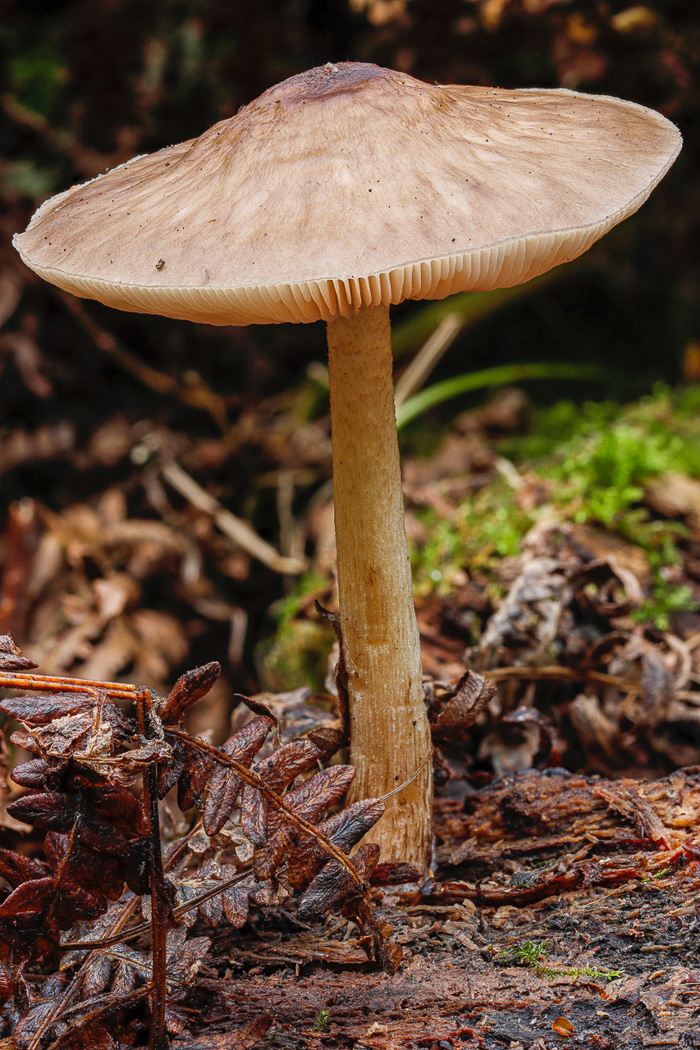
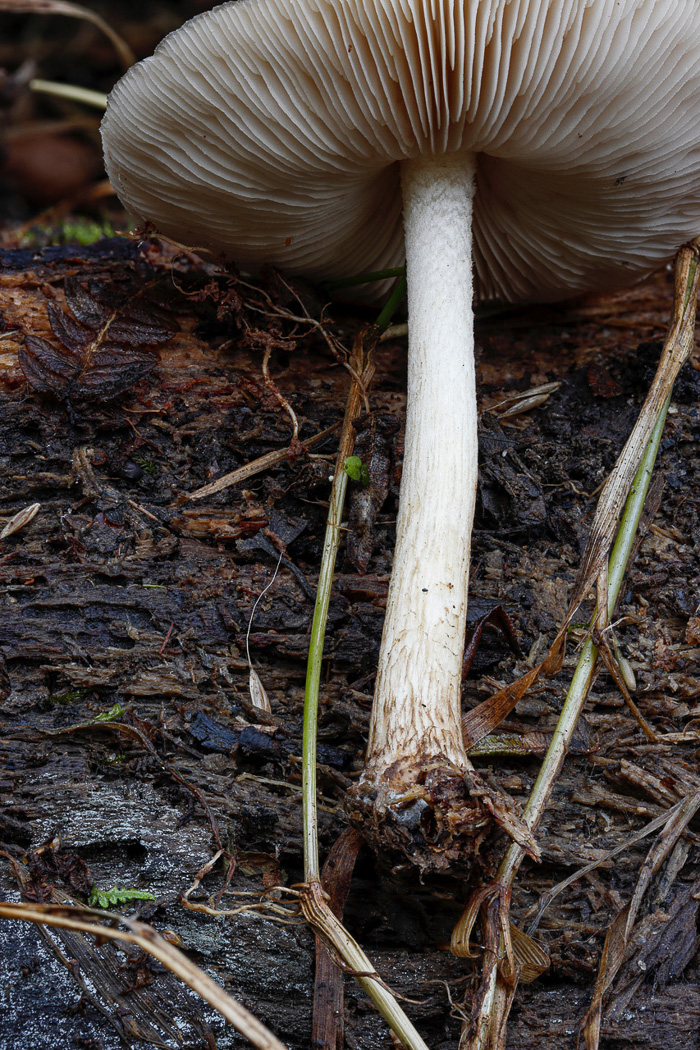
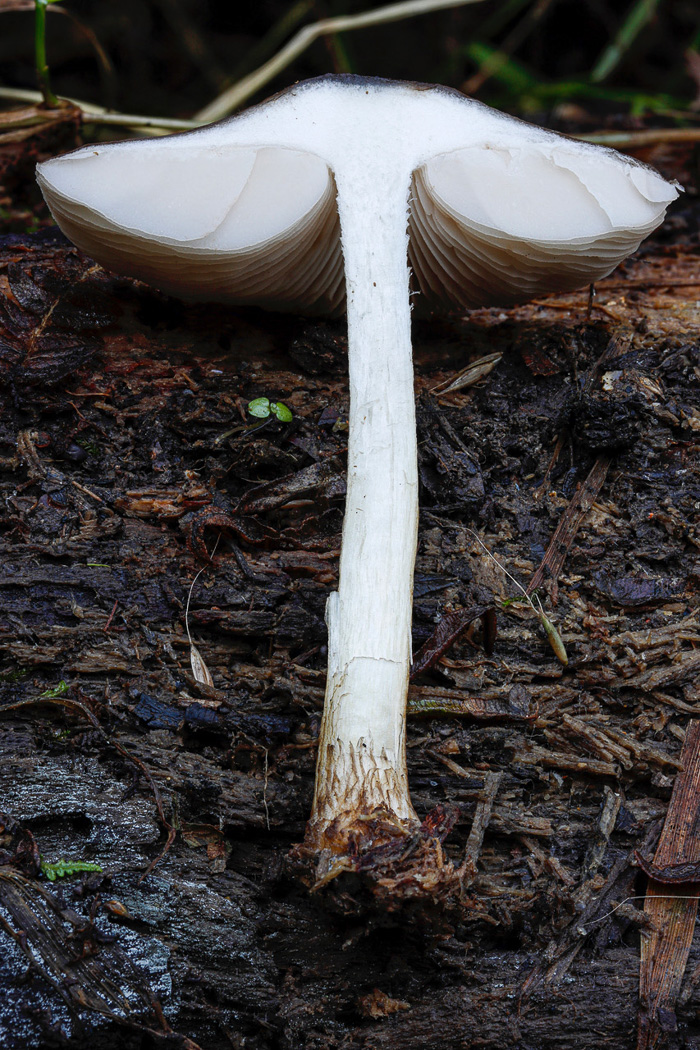
|
Pluteus cervinus (Deer Shield) 
Sep 5, 2024. On woodchip at Turville Heath Penny found this nibbled singleton and confirmed her ID turning it over to see the free gills which were, however, still white rather than pink (though they were suitably pink by the next morning). The next day she received Jackie Ewan's photos of the same species also found on woodchip at Stampwell Farm. Note the different shades of brown between the two collections - this common species is quite variable and can be surprisingly dark brown and though often on fallen branches is just as happy in deciduous woodchip where it is often much bigger than when on wood.
May 25, 2024. In Tinkers Wood John Catterson noticed this singleton on fallen deciduous wood - a common species in autumn though our welcome warm spell had somewhat abruptly brought much fungal fruiting to a standstill. It is often the case, however, that species occurring on fallen wood are less affected by warm dry conditions that those occurring in litter or soil, proven by John's find today.
Sep 26, 2023. At Turville Heath in a grassy spot previously covered in woodchip but recently planted with a new Lime sapling Penny saw an enormous brown cap amongst thick grass. Despite it not being on a fallen branch but apparently just in grassy soil, she recognised the species and recalled finding huge specimens of it here in previous years. The cap measured about 15 cm across and the gills were suitably crowded, free and pink though it collapsed when she turned it over and was clearly being enjoyed by a slug!
Apr 15, 2023. At Turville Heath Penny found this singleton (cap about 4 cm across) in a pile of felled mixed deciduous logs. A common autumn species found on fallen wood and typically with pink 'free' gills as seen here, it is quite unusual though not unheard of to find it fruiting in April. Of our 350 odd county records the vast majority are autumn finds but we have a handful from April and also from May.
Sep 7, 2022. In a well rotted woodchip pile at Turville Heath Penny found this large singleton, and having recently discovered about a lookalike species to P. cervinus - one of our commonest species growing on fallen wood - she took a piece of cap home to check. P. hongoi has gill cells with branching hooklike tips, many of which split into two, whereas in P. cervinus the hooklike tips remain single. Sure enough Penny found good numbers of dividing hooks present but will send the sample for sequencing to make sure as we have only county record of P. hongoi, not confirmed with sequencing. These notes will be updated as appropriate when the results are through.
Nov 13, 2021. At Turville Heath on a rotting woodchip pile Penny found these three Shields looking rather different from when they fruit on fallen wood. P. cervinus is a species complex recently split into a range of new species so Penny took a sample home to work on. However, at home all microscopic features seemed to match fine. Note how the free crowded gills are white and have still not developed the typical pink of the Pluteus genus, however later they were beginning to turn.
Aug 27, 2021. In Naphill Common Claire Williams found this common brown mushroom growing on fallen Beech and, being unsure of the genus, sensibly took a sporeprint (photo 3). On receiving the photos Penny suggested Claire look at the gill edge with a scope to check for the distinctive cells of this particular species, which she successfully acheived! There are many similar brown capped mushrooms but only this genus has this combination of characters: on wood, gills crowded and turning pink (see photo 2), sporeprint distinctly pink brown as seen here. This is one of the larger Shields, getting to 10 cm across or even more (especially when found on woodchip piles).
Aug 19, 2021. On fallen Beech in Kings Wood Tylers Green Penny noticed two adjacent caps and turning one over (photo 2) quickly confirmed the genus: crowded gills which start pale but soon turn pink, also the gills are free (ie not adjoined to the top of the stem). Despite having been munched a bit this specimen still demonstrates both these important features. The smooth midbrown caps were about 5 cm across, too big for one of the smaller Pluteus species and typical of this the commonest member of the genus, all species of which are found on wood, woodchips or (less often)submerged roots.
May 5, 2021. At our visit to Burnham Beeches today Joanna Dodsworth found this the only agaric on our list of 35 species - one that is common on fallen deciduous wood in the autumn but was certainly a surprise in May!
Nov 17, 2020. At Turville Heath today Penny C. found three fungal giants, of which this was the first. On the woodchip pile which she regularly checks were two of the largest examples of this species she'd ever seen. Normally getting to about 12 cm across at most, these were wider than her hand span making them about 20 cm across. To make sure she was correct she checked a small piece of cap at home and sure enough the gill edge revealed the typical cells which confirm the species. What whoppers!
Sep 18, 2020. This genus has been conspicuous by its absence so far this season. Paul Goby found this specimen growing on soggy rotting wood in Naphill Common. The commonest of about 20 species of Shield, all of which need wood in some form on which to grow, it displays well the diagnostic features of the genus: crowded convex gills which start pale but gradually turn pink, also the lack of gill attachment to the top of the stem (called 'free'), a character shared also by Agaricus, Amanita and Lepiota & related genera. The cap of today's singleton was about 10 cm across. Note the free gills visible when the fruit body was split, also their pinkish colour and shape when it was upturned.
|







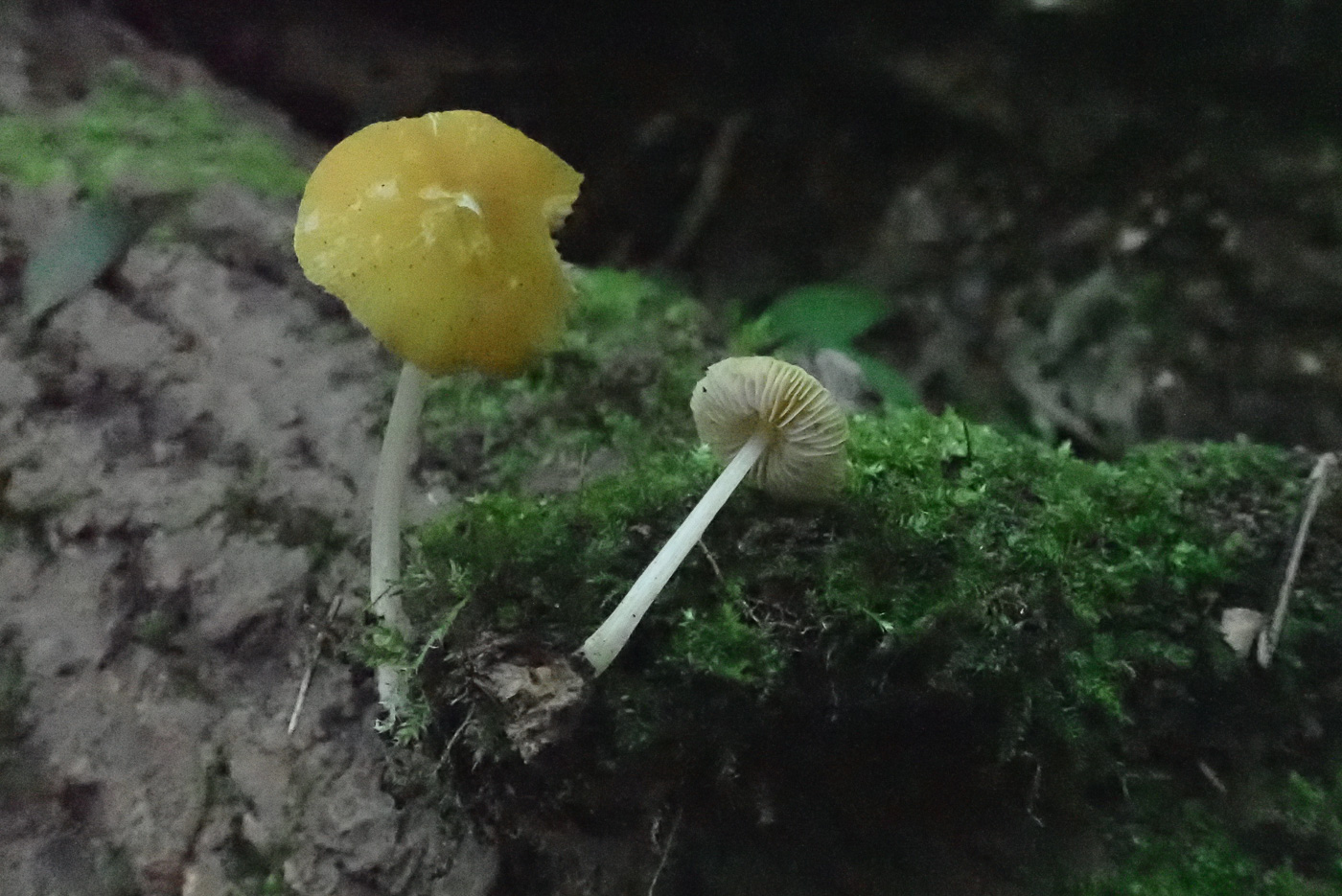
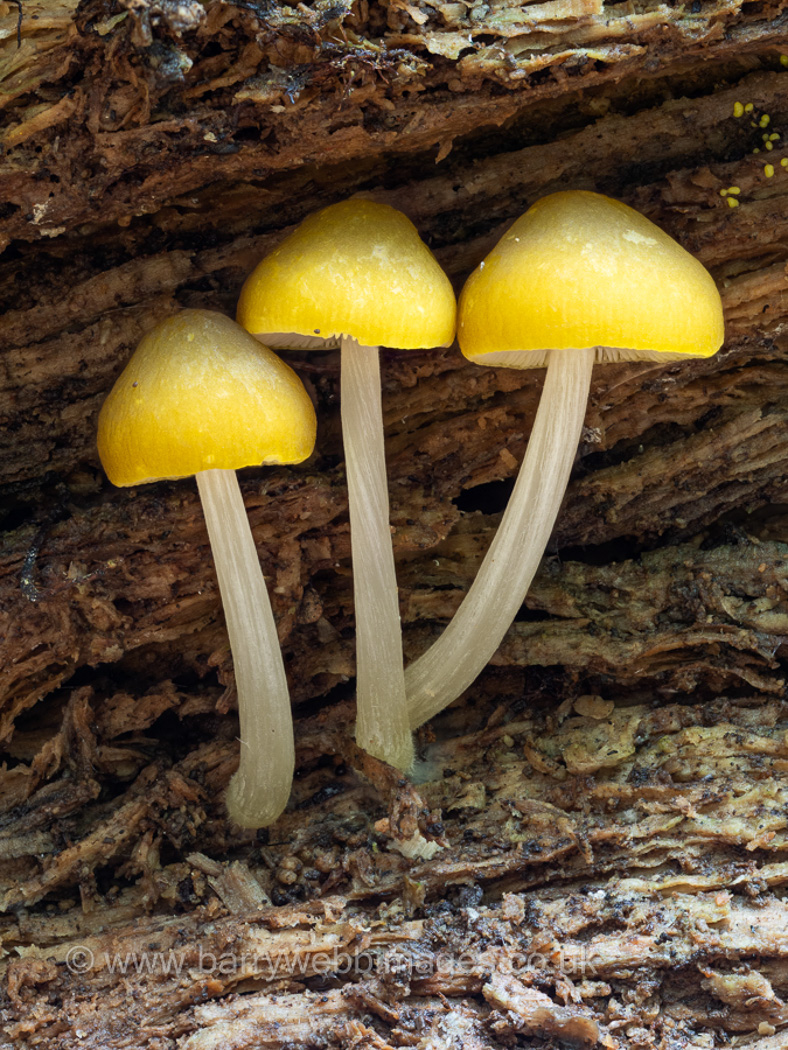 |
Pluteus chrysophaeus (Yellow Shield) 
Oct 6, 2023. At Naphill Common Sarah Ebdon found a nice group of this attractive small Shield on fallen deciduous wood, probably Beech. Returning a few days later she found even more of them emerging and showing how they can start out with quite olive brown caps, this colour then retained as a dark central dot as it matures. Note also in photo 1 how the gill colour turns from almost white to pink with maturity, and in photo 2 a deep pink sporeprint has been dropped onto the edge of the lowest cap by an overlapping neighbour. See in Finds earlier this year on July 21st, with two others available via the Masterlist.
Jul 21, 2023. In Pullingshill Wood Penny found very little but did spot a fallen deciduous log with this attractive and distinctive species. There are just two species of Shield with smallish yellow caps, this being by far the commoner of the two but making it necessary to check the cap cuticle with a scope: having round cells in today's species but cylindrical cells in P. leoninus (Lion Shield). Note the typical crowded gills of the genus turning gradually pink in maturity (photo 2). (In Kibby vol 2 this species is named P. chrysophlebius, not yet accepted in Index Fungorum.)
Oct 12, 2022. On a Beech log at Dancersend Penny noticed this small singleton Shield, the cap colour denoting it as one of just two yellow-capped species in the genus. Checking the cap cuticle later confirmed it at this species which is by far the commoner of the two, the other being P. leoninus (Lion Shield) which we've not yet recorded in the county. (The photos are Sarah Ebdon's.)
Sep 21, 2021. In a log pile, mostly Willow, in Rushbeds Wood, Penny noticed a small bright yellow cap and on further inspection found another on a nearby log. The gills were free and were pale with a pink tinge, thus confirming the genus as Pluteus, though there are two small yellow capped species necessitating a check with a scope (particularly of the cap cuticle cells: like long sausages in the uncommon P. leoninus but round in today's species which is fairly common). See also a collection dated July 9th (marked sp. as not checked with a scope).
Jul 9, 2021. On fallen Beech in Burnham Beeches Barry Webb found this attractive trio of young Shields. As there is more than one yellow species in the genus and this particular collection was not examined with a scope, Penny cannot be positive of her determination (hence the sp. above). However, the other two species are either rare or not yet British and we fairly often find P. chrysophaeus in the county so she feels fairly secure here. (The species name seems about to change to P. chrysophlebius as in Kibby vol 2.)
|

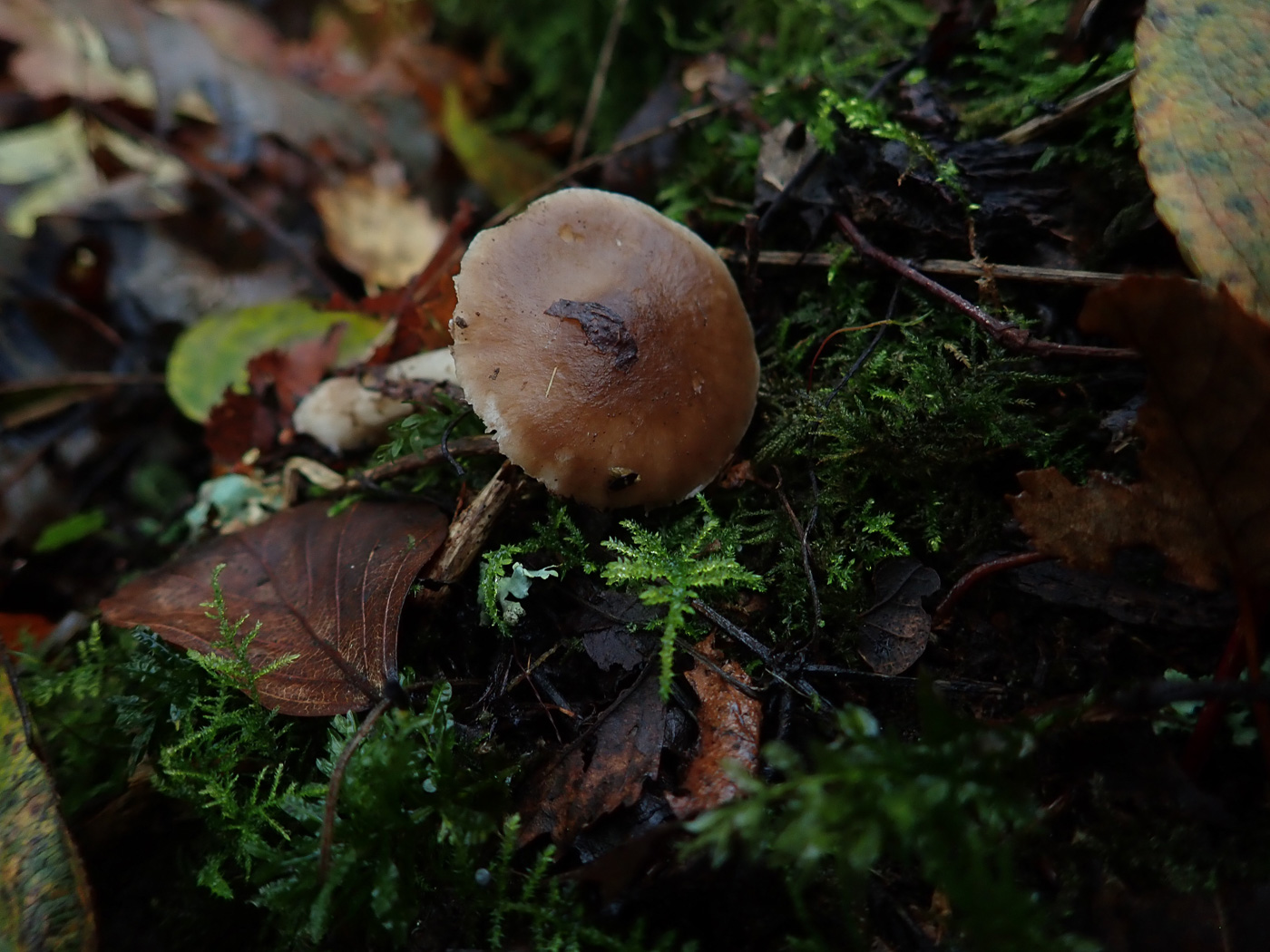
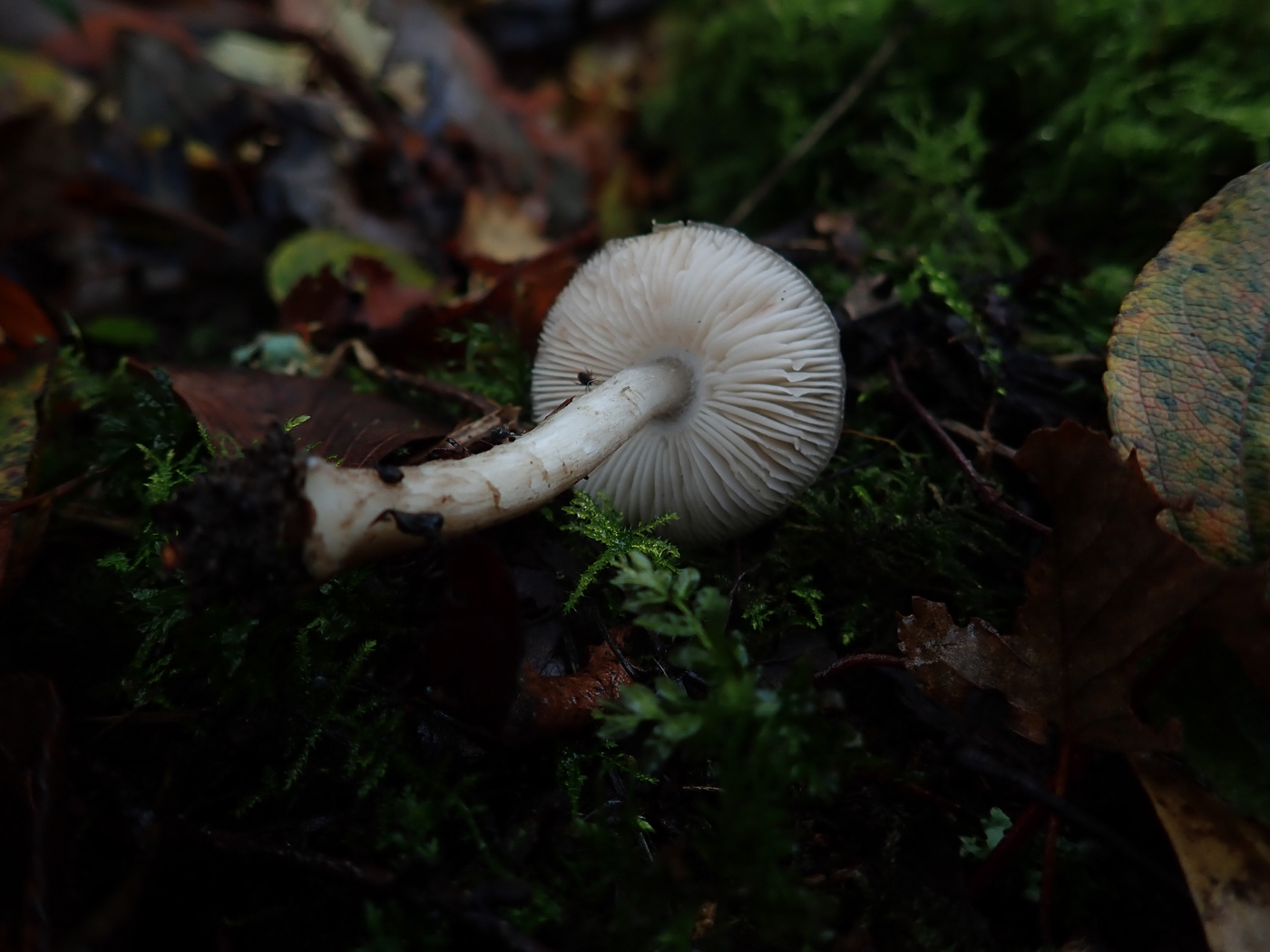
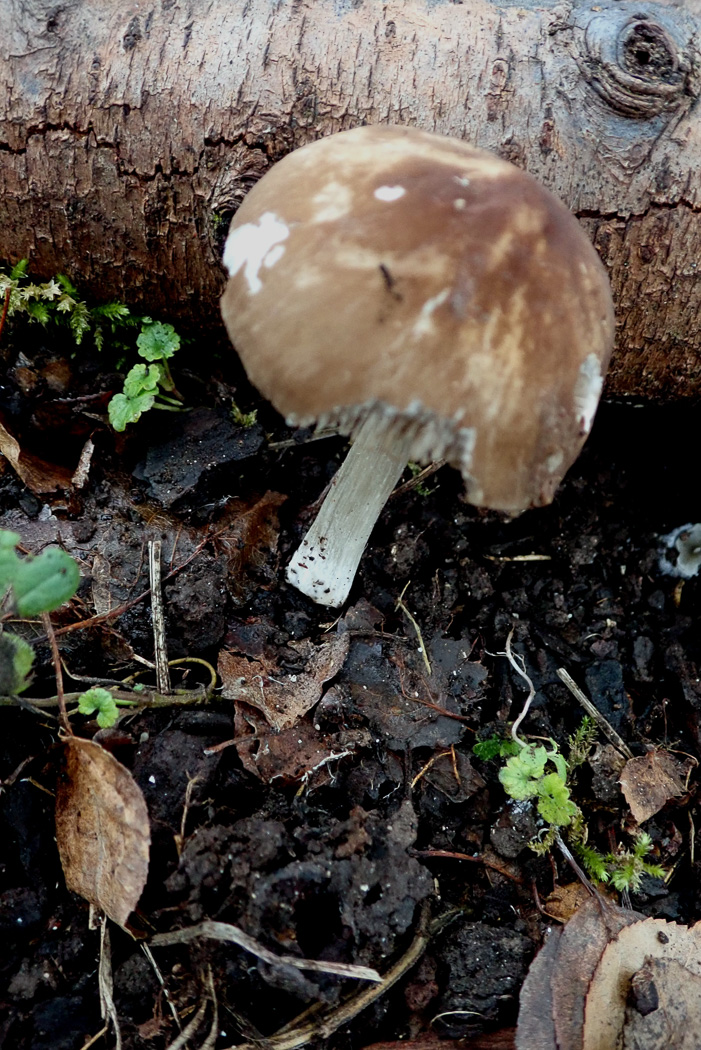
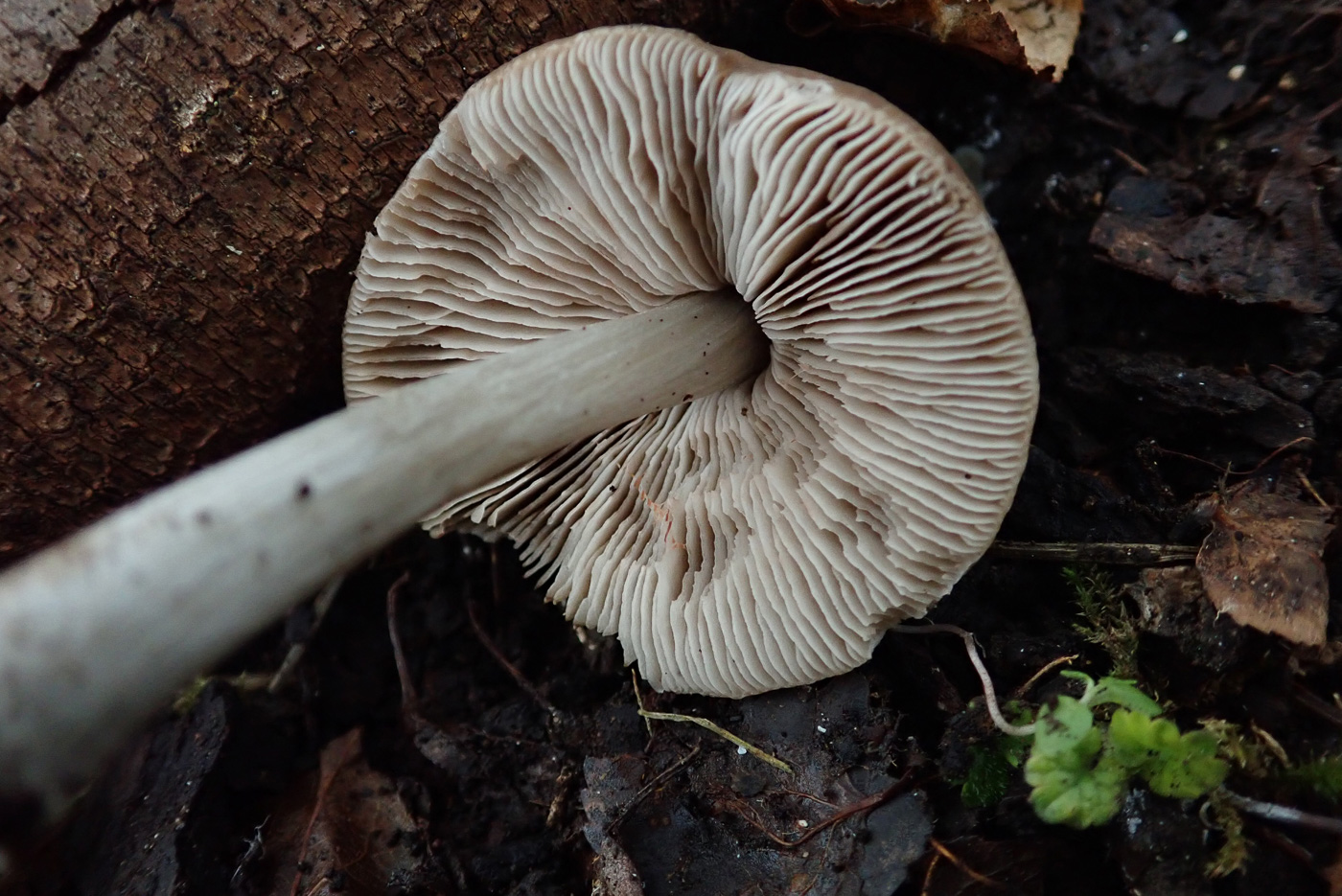
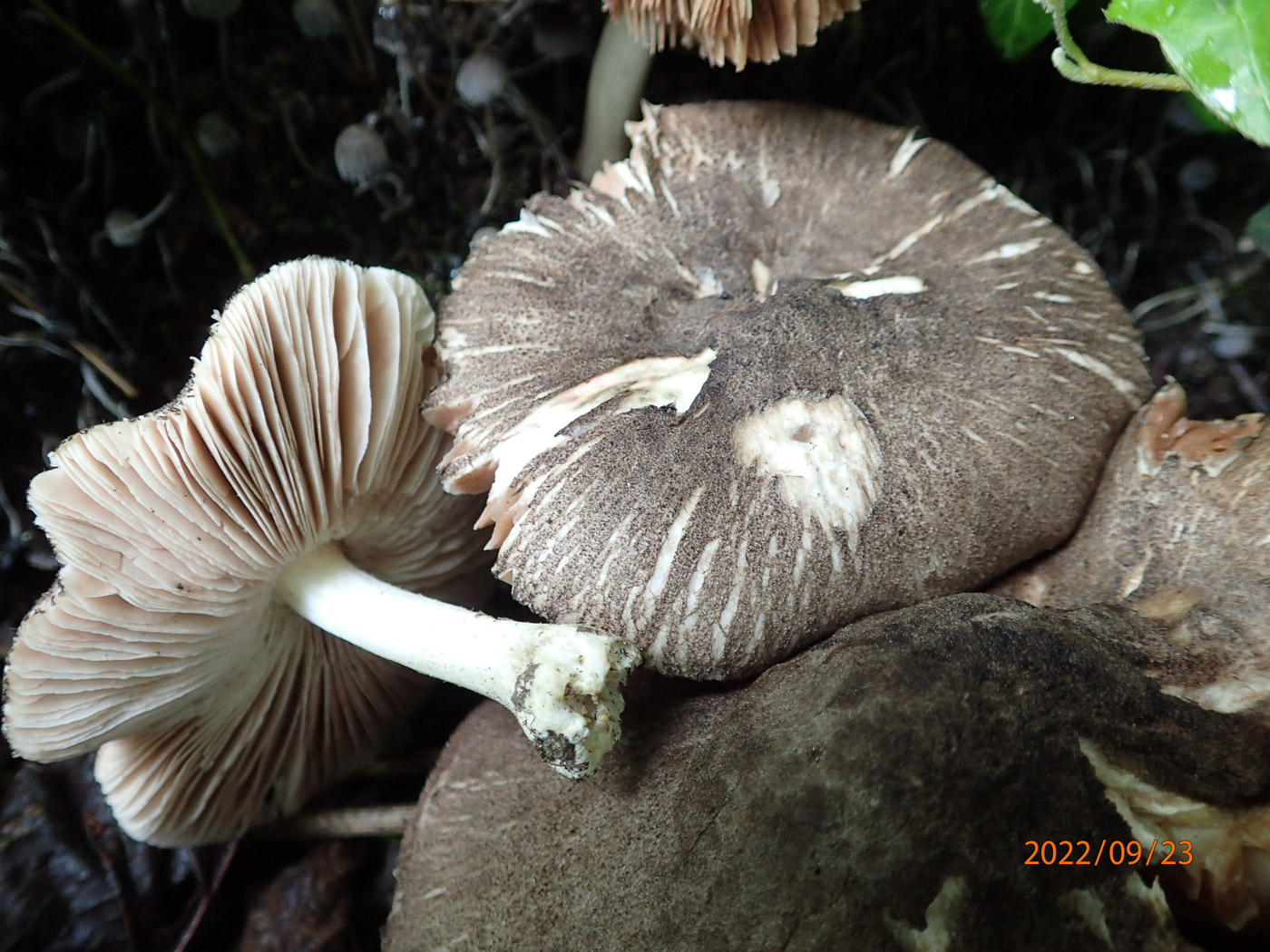
|
Pluteus ephebeus (Sooty Shield) 
Aug 9, 2023. In Cippenham in soil under Lime Russell Ness collected this smallish Shield, noticing the cracking cap which he put down to exposure to the sun. However, under the scope he found features entirely different from those of P. cervinus as he'd expected, so investigated further and keyed it out to this particular Shield noted for its dark cap with tends to split radially rather like a Fibrecap. Unlike many in the genus it often appears in soil (presumably on submerged roots) rather than on fallen wood.
Nov 27, 2022. Near the base of Willow in Turville Heath Penny noticed this brown cap, about 2.5 cm across, and turning it over realised the free pinkish gills made it a species of Shield which would need a scope to determine. Once you realise you have a smallish Shield the critical character to assess - and almost the first requirement in any key - is the make-up of the cap cuticle: basically either of long thin cylindrical cells, of round cells or a combination of the two. Today's species has the former and therefore keys out very easily.
Sep 23, 2022. On the same decaying Ash in Jordans as the previous entry Jesper Launder noticed this group of Shields. This species is not one we find that often but has a darker greyer cap than most and the cap surface often splits as can be seen here. When found on the ground (on submerged wood / roots as can happen with this particular species) the free pinkish tinged gills are a helpful clue to its identity.
Dec 2, 2020. Under a large Hawthorn in the Grangelands at Pulpit Hill Penny C. found this medium sized Pluteus in soil but adjacent to a fallen branch. The gills were hardly pink, more beige, but otherwise it was similar to the common P. cervinus, but at home a scope revealed that it was clearly not that species and keyed out fairly straightforwardly to P. ephebeus, an occasional species, new to our list and to the site but with 9 previous county records.
|

 |
Pluteus leoninus (Lion Shield) 
Sep 26, 2023. In Bernwood Forest Sarah Ebdon found this beautiful yellow mushroom on fallen wood and, having found it on our Hodgemoor Walk just three days previously, was fairly confident it was the same again. This is a rare Shield with only one previous county record though the species is very similar to the much more common P. chrysophaeus (Yellow Shield) for which we have many records. The differences in the field are slight though Sarah noted the somewhat felted cap surface and sweet raphanoid smell on both her collections. The definitive difference, however, is in the cap cuticle and seen with a scope when the two species cannot be mistaken. (See Penny's Hodgemoor Wood report - 23.10.2023 - for more on this) This was a nice find and is a new species for Finds.
|
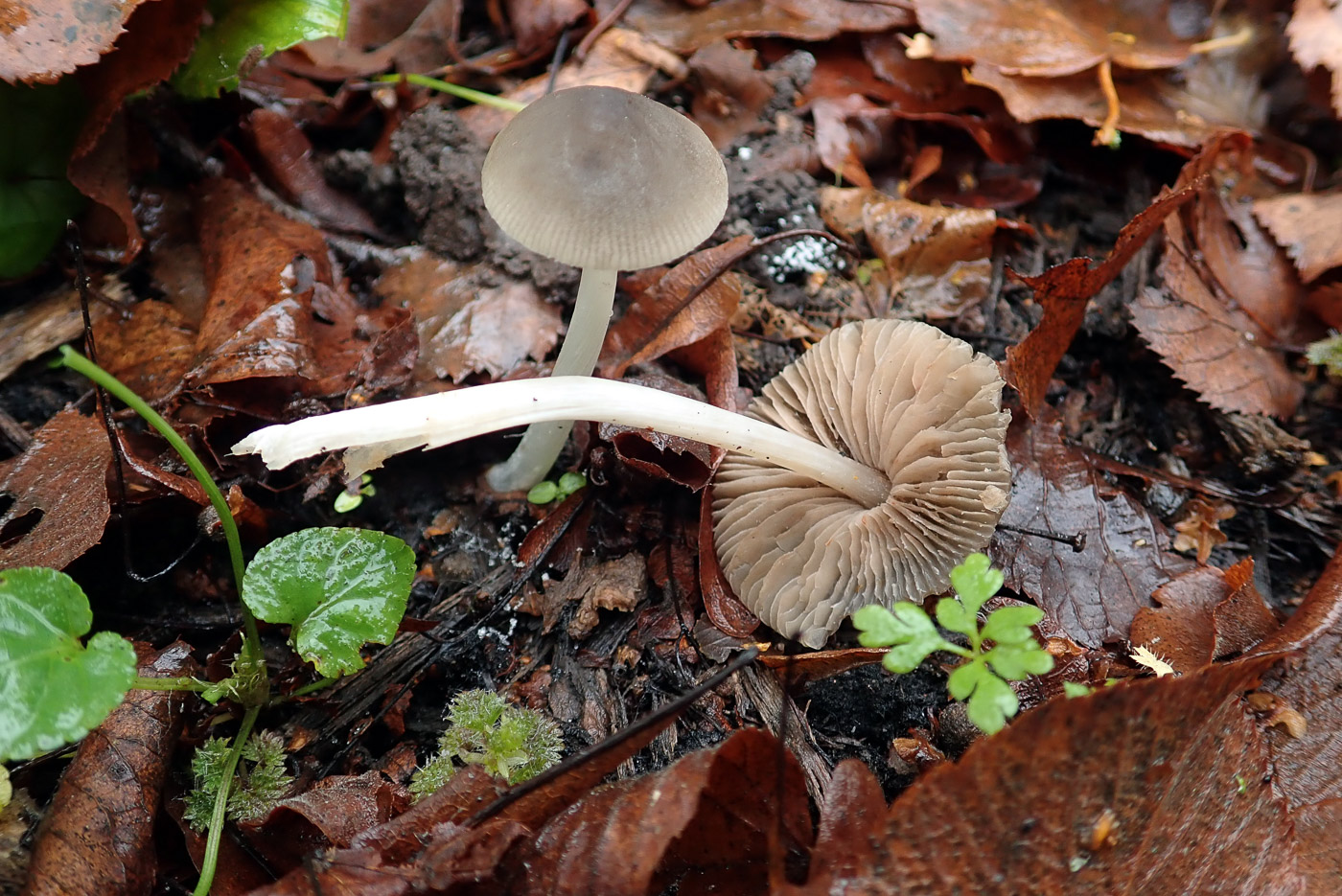
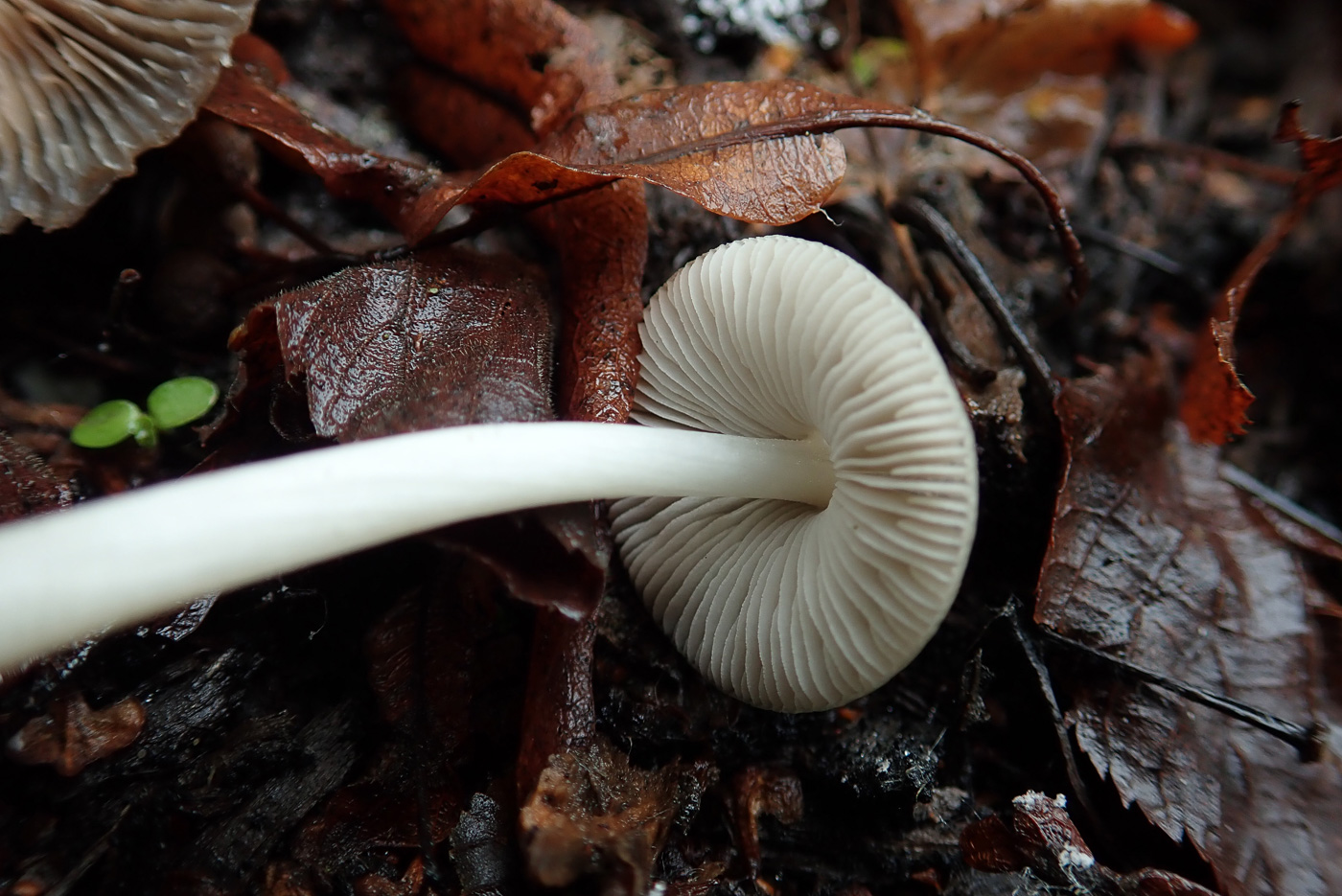 |
Pluteus nanus (Dwarf Shield) 
Nov 5, 2020. Penny C. found this species fruiting in a well rotted woodchip pile at Turville Heath. We seem to have found surprisingly few species of Pluteus this Autumn with several of the commoner species still not on our list. P. nanus is not uncommon and of small to medium size for the genus, the cap can be grey as here or more brown and is just slightly rugulose (wrinkled) in the middle compared to the similar P. phlebophorus which is strongly rugulose (see photos dated Oct 12). Note the typical free gills (photo 2) of the genus which are still pale but will become distinctly pink in age.
|
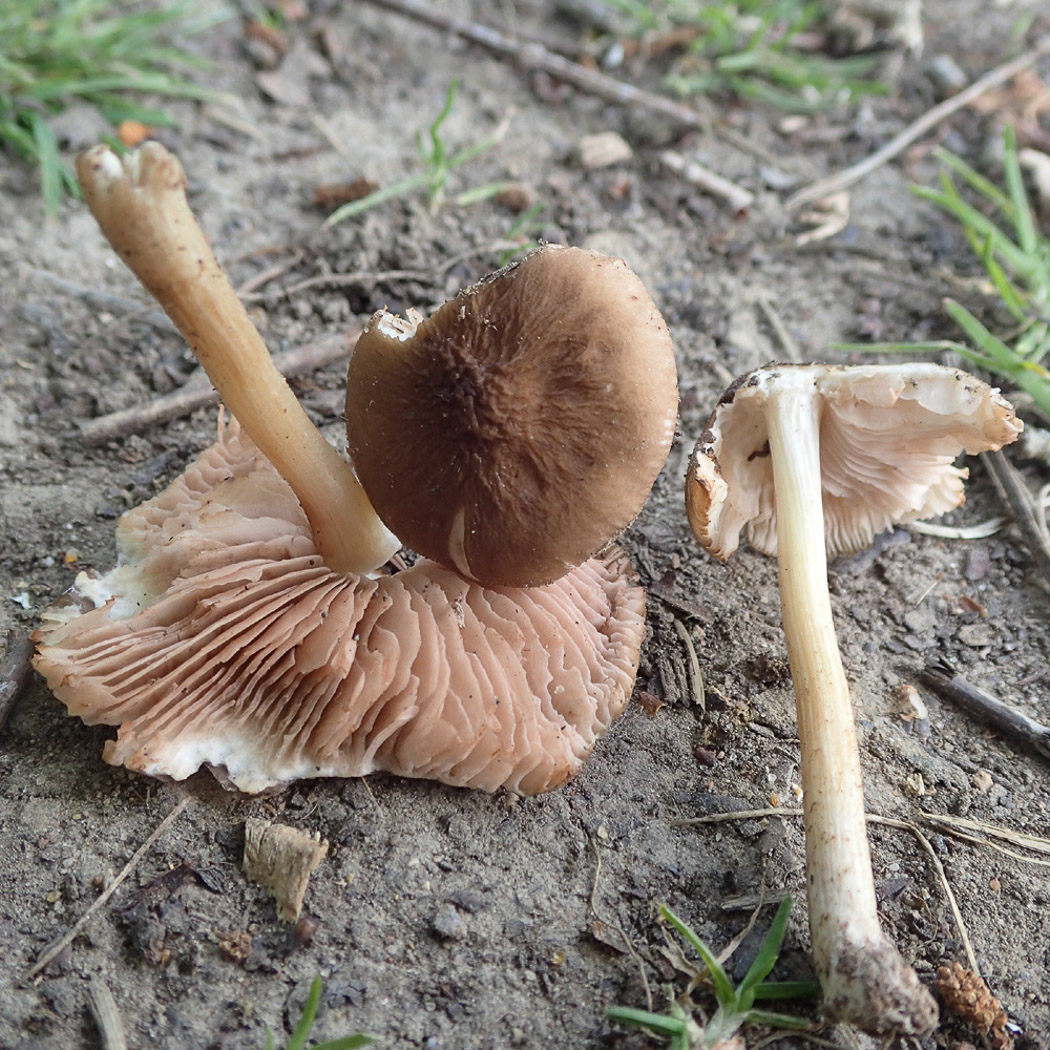
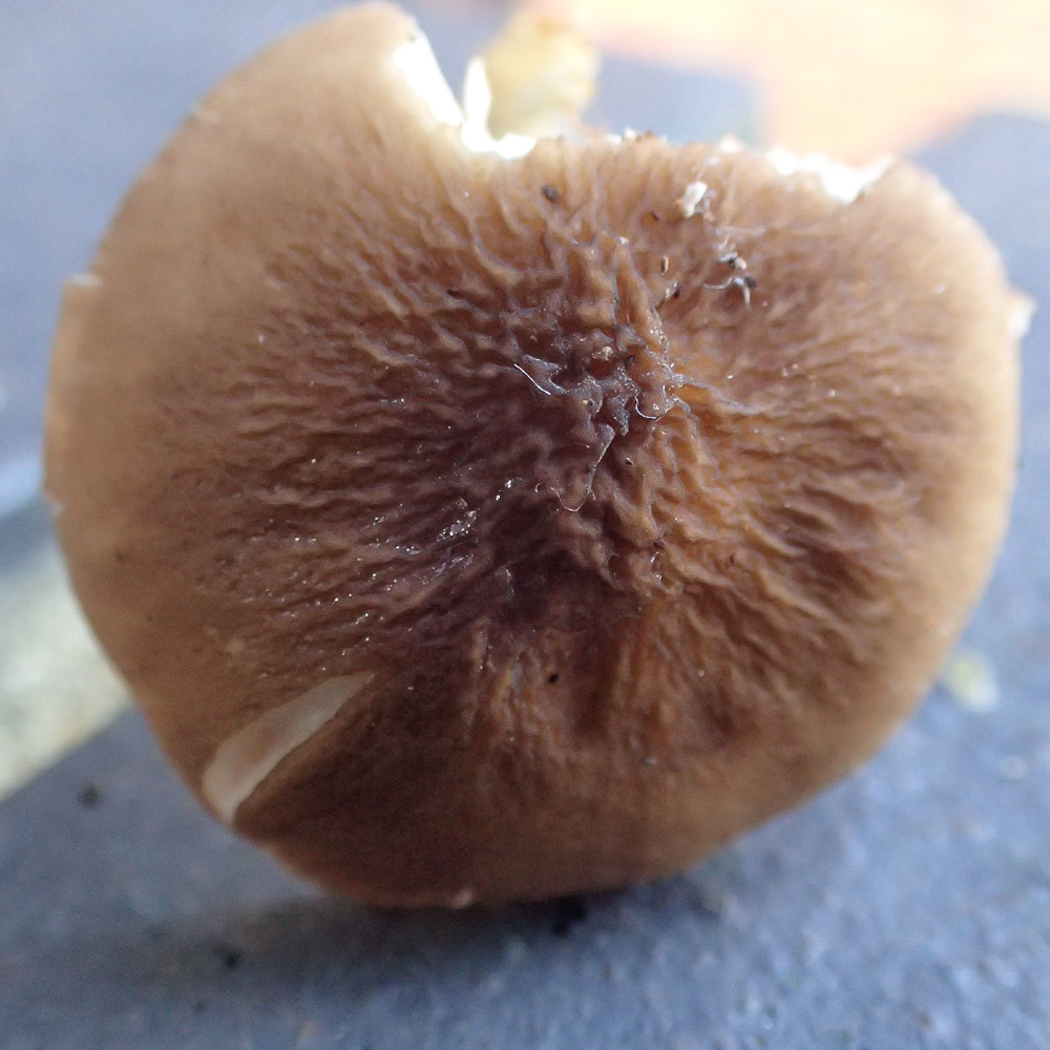


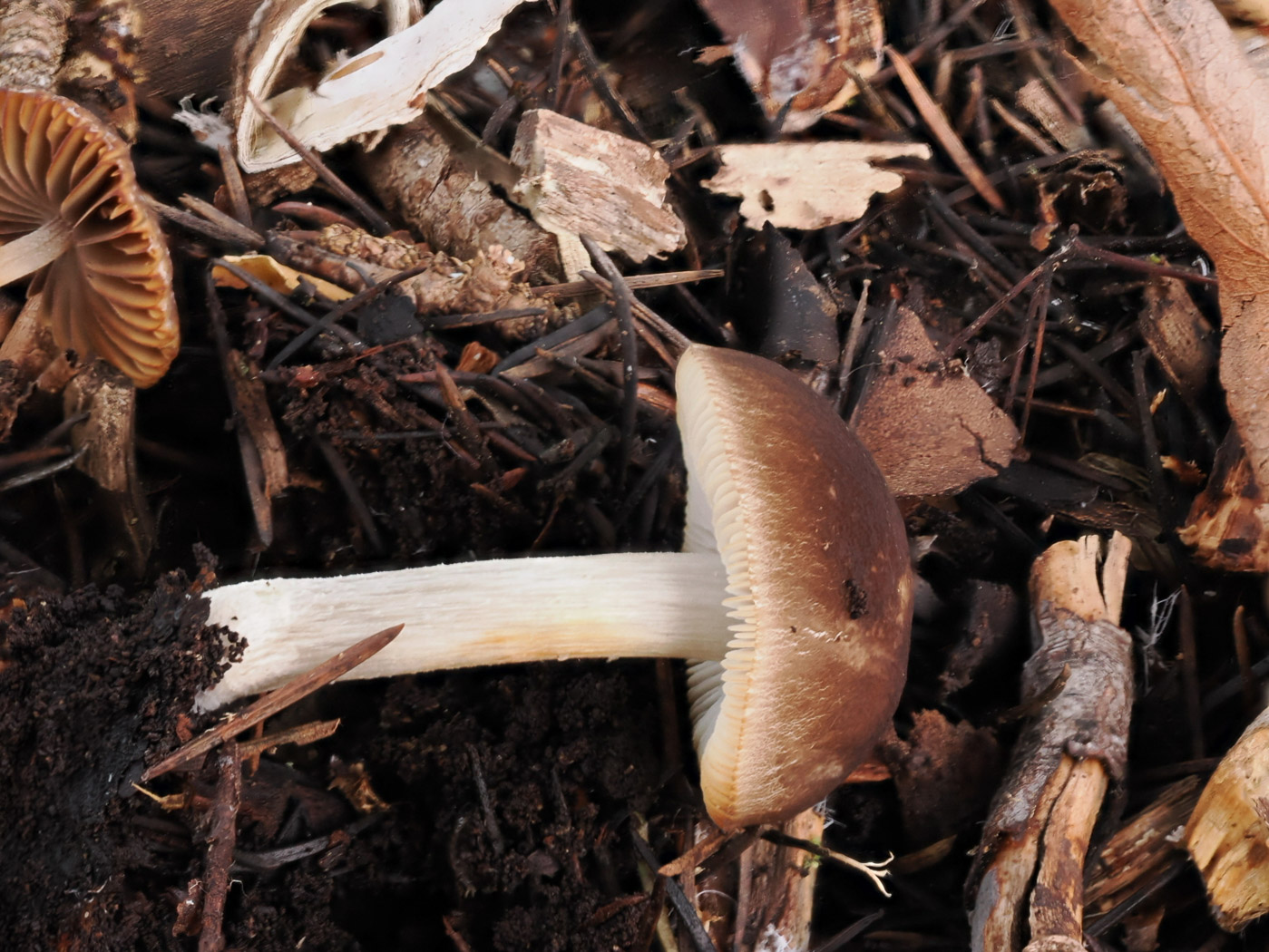

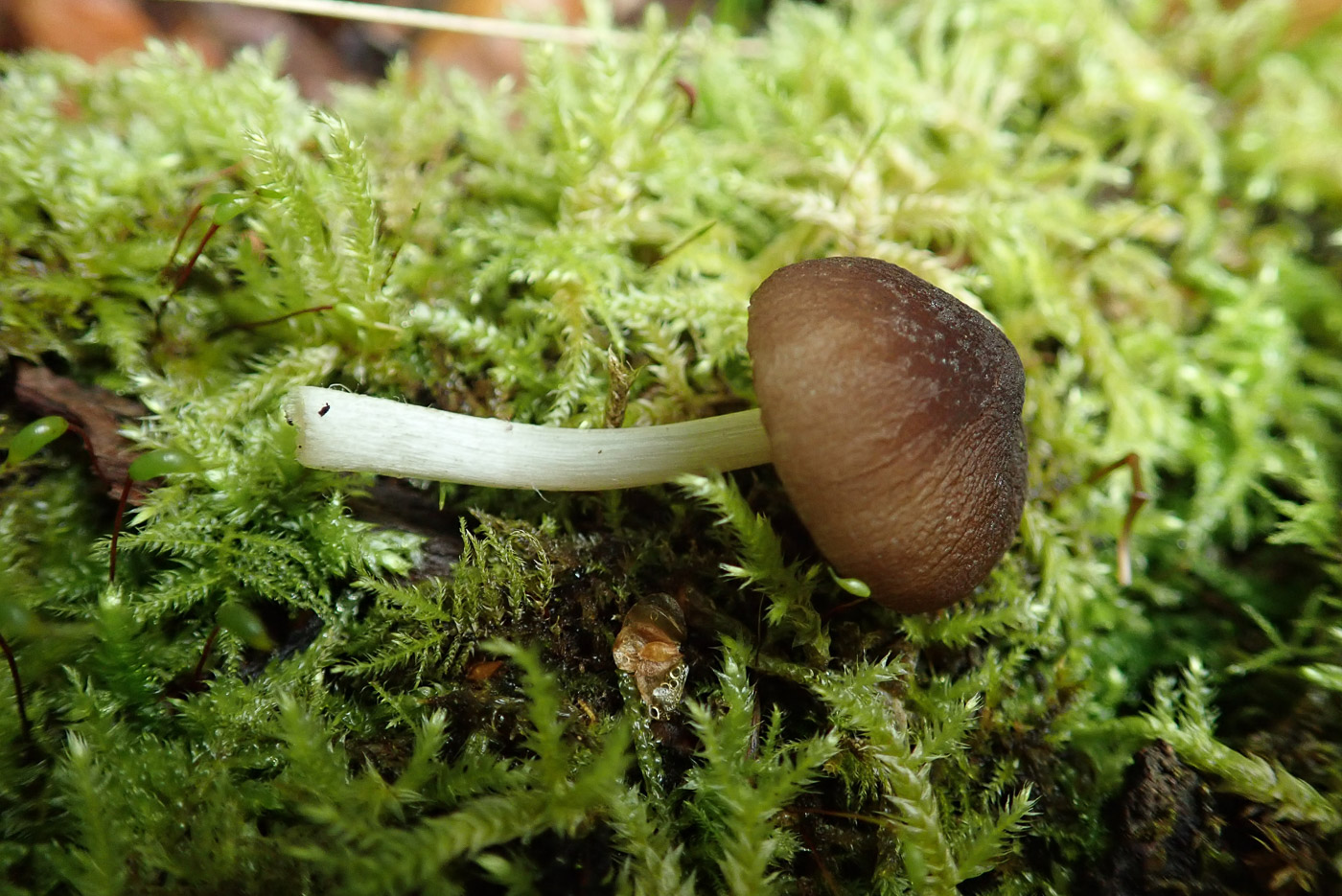
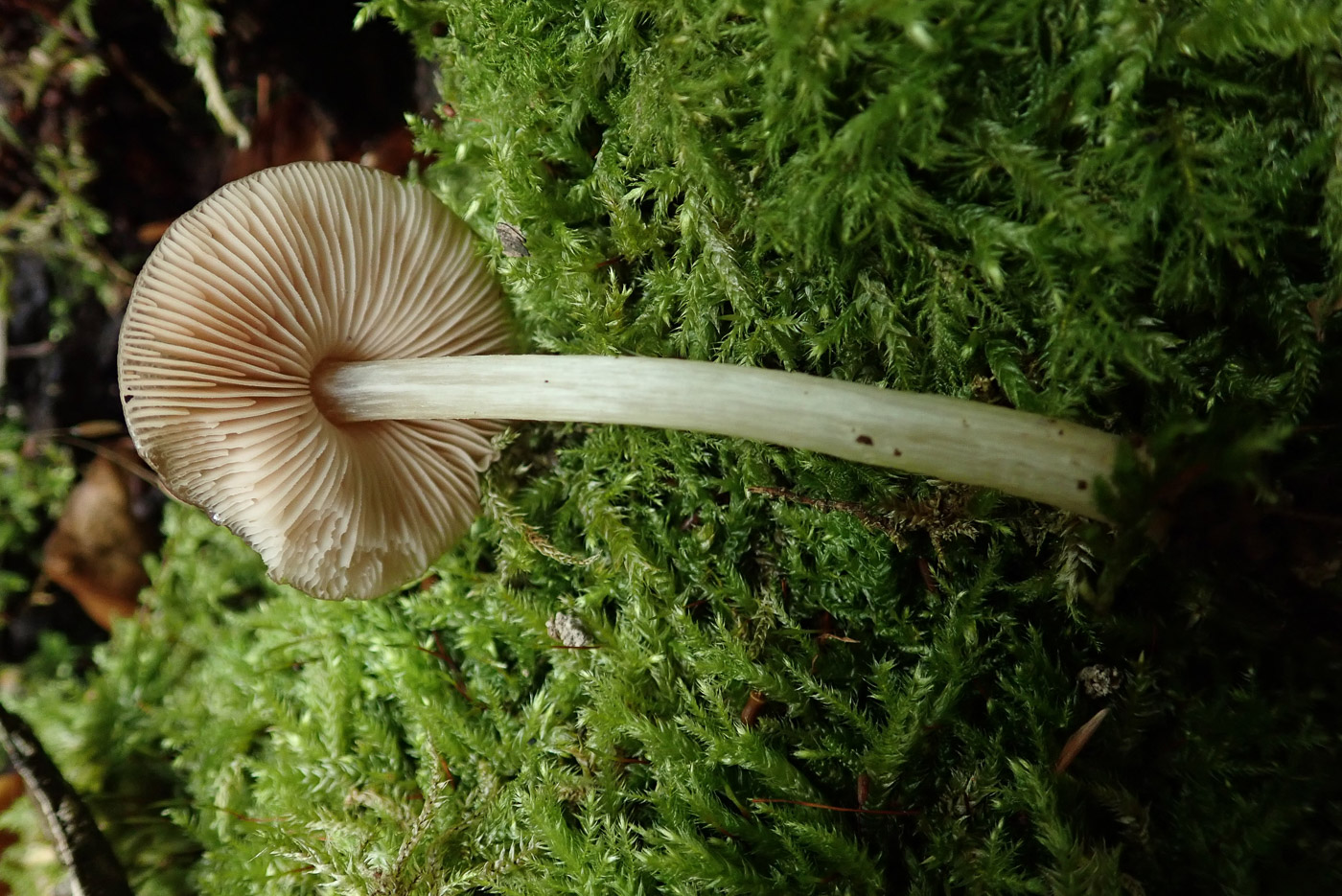
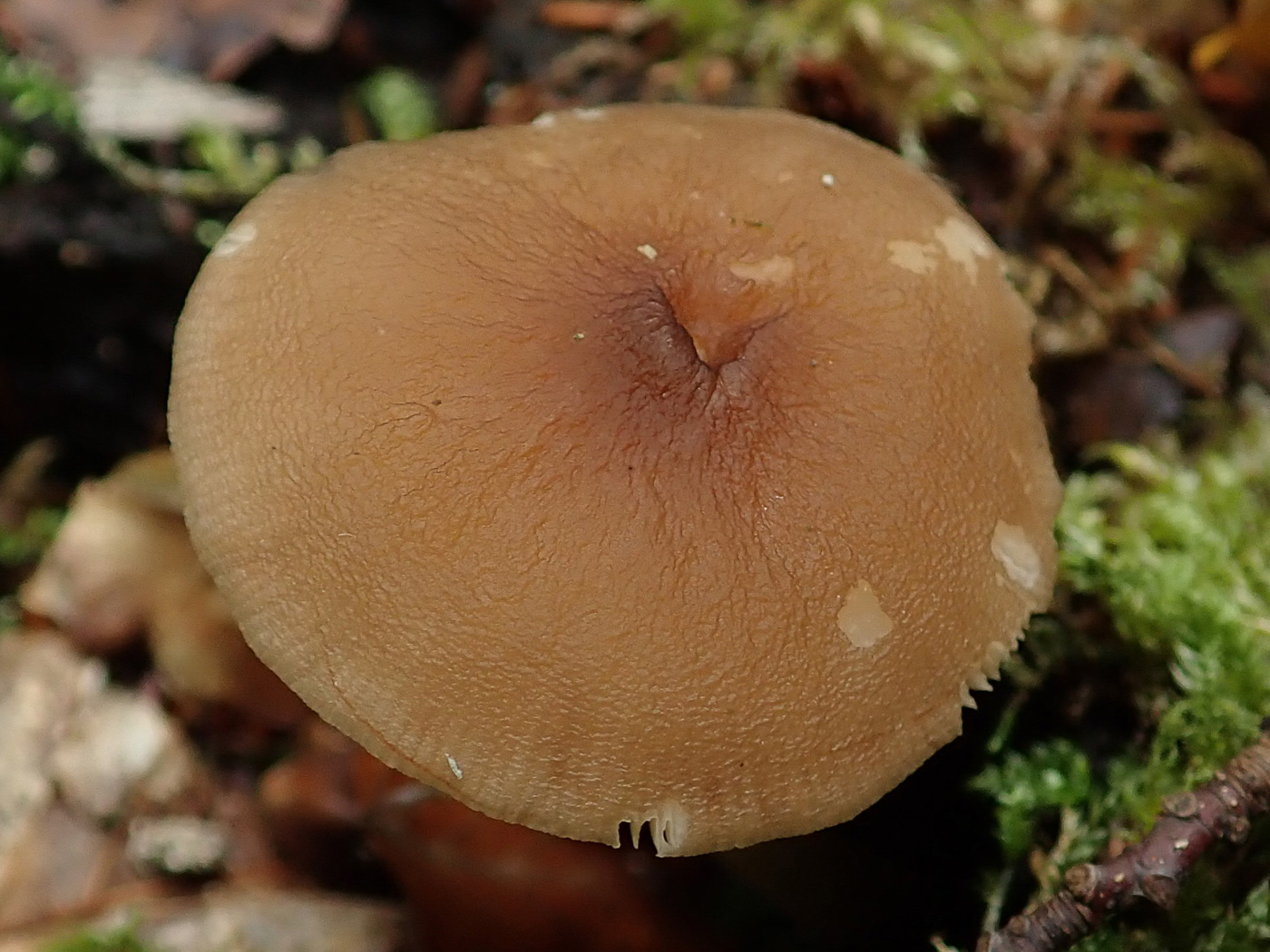
|
Pluteus phlebophorus (Wrinkled Shield) 
Jun 21, 2024. In Naphill Common Sarah Ebdon was pleased to find these mushrooms on very well decayed Beech. Recognising the genus from the pink free gills and occurrence on wood, she keyed it out at home finding that all microscopic details fitted as well as the typically wrinkled cap. Despite the distinctive cap markings a scope is always need to confirm the ID because there are other Pluteus species which can have wrinkled caps. Comparing Sarah's photo with previous entries, this is by far the most wrinkled of the lot!
Jul 23, 2023. Looking for Fibrecaps at Turville Heath in the Lime avenue, Penny found two smallish LBJs apparently on soil. Turning one over she recognised the genus from the free crowded gills just beginning to turn pinkish. Further on a larger one was spotted, cap 2.5cm across, with considerably darker pink gills (photo 2) but also not apparently on wood. Microscopic characters determined the species which has a wrinked / slightly veined surface (not visible here, sorry), and this only goes to prove that this genus - described as occurring on fallen wood - can sometimes occur on woodchip, woody debris or even submerged wood or roots as presumed here.
Dec 6, 2022. At Stoke Poges Memorial Gardens Penny noticed this dark brown velvety cap in thick woodchip under Cedar and was at first utterly confused as to its genus. The pale gills were very strongly ventricose and crowded rendering their attachment to the stem indiscernable so it was not until a sporeprint revealed their pale pink-brown colour and she checked the cuticle cells that she realised it had to be Pluteus. It then keyed out straightforwardly though the cap is (a) darker brown and (b) not wrinkled a the centre as described, furthermore this is a species of deciduous wood indicating that the woodchip beneath this Cedar was not in fact derived from conifer. The photos are Claire Williams's (but please overlook the extra mushroom visible in photo 1).
Oct 12, 2020. This genus has been poorly represented so far this season, but today Penny Cullington found a couple of separate fruit bodies on fallen Beech in Gussetts Wood. One of the smaller Shields, this occasional species has an uneven wrinkled veinlike surface (hence its Latin species name) but this is a genus which should always be keyed out with care using a scope to view not just the gill cells and spores but also the cap surface. There are quite a few very similar small species with which it could be confused. Note the free gills shown in photo 2 and the wrinkled cap surface shown in photo 3.
|
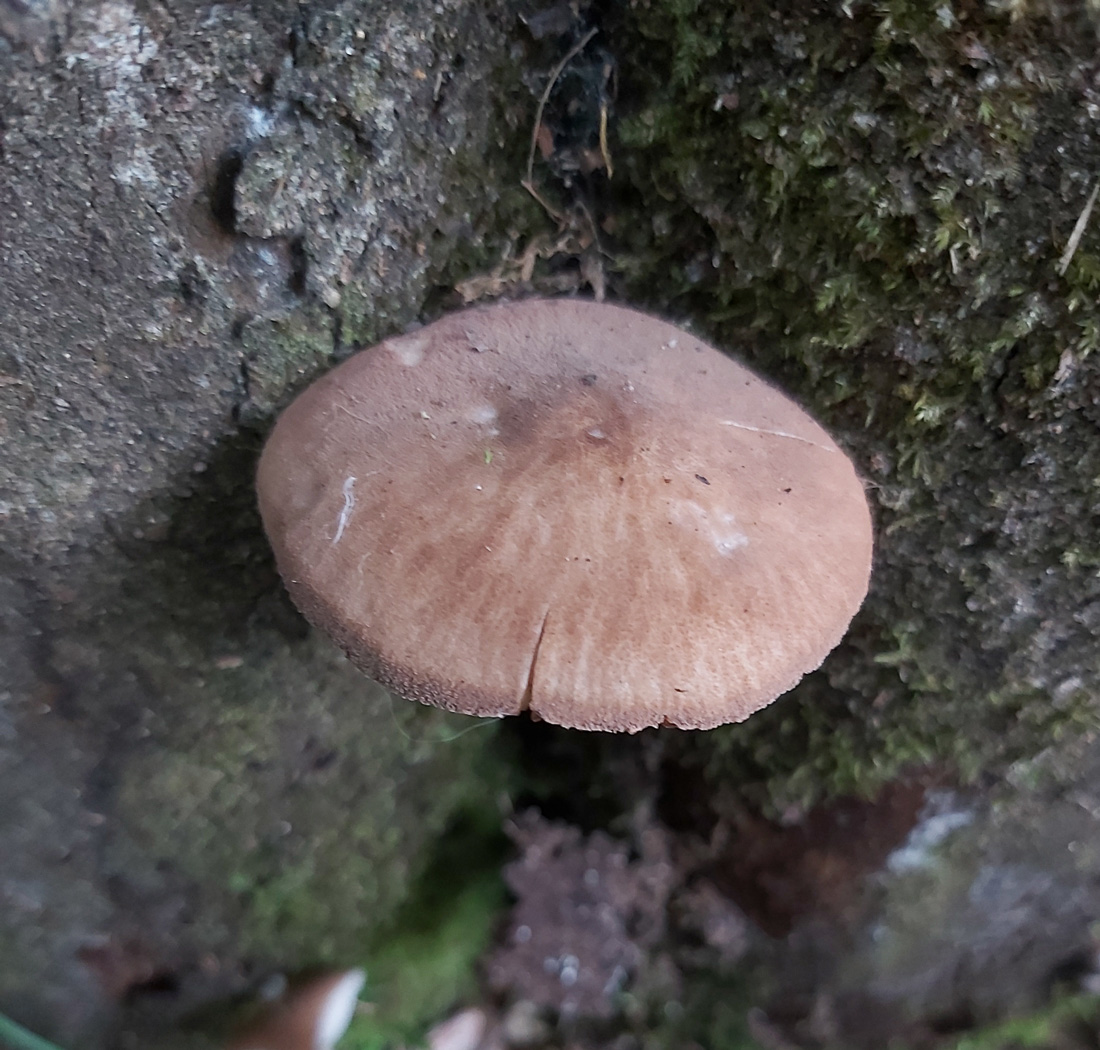
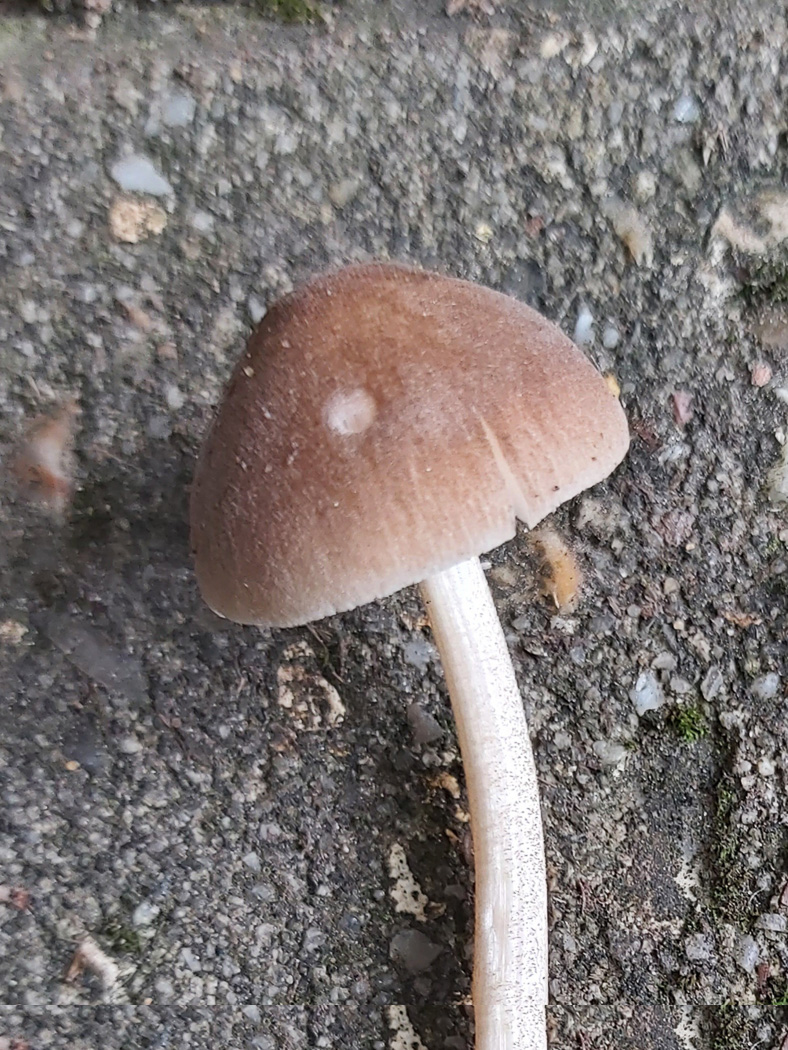 |
Pluteus plautus (Satin Shield) 
Jul 3, 2021. On a wooden post supporting a raised bed in his garden in Jordans village Jesper Launder found this unusual species, one of the smaller Shields and with a somewhat pale cap compared to most, often with pinkish tones. The genus nearly always needs careful checking with a scope, an important feature being the cap cuticle (surface) which can be made up of long thin flat sausage-like cells (as in this species), much rounder upright cells, or some combination of different shapes. We have just a handful of previous sites in the county for this particular species.
|
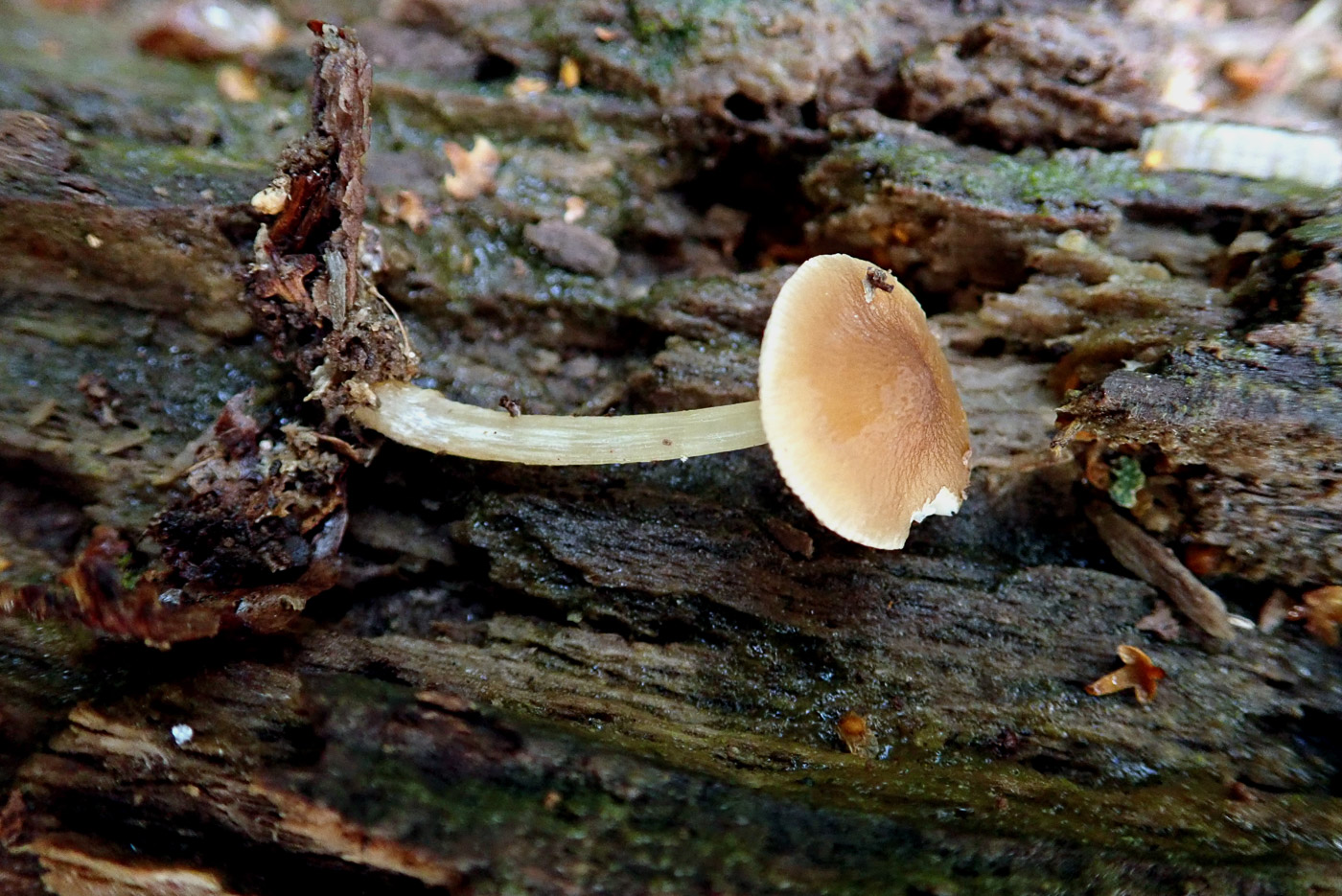
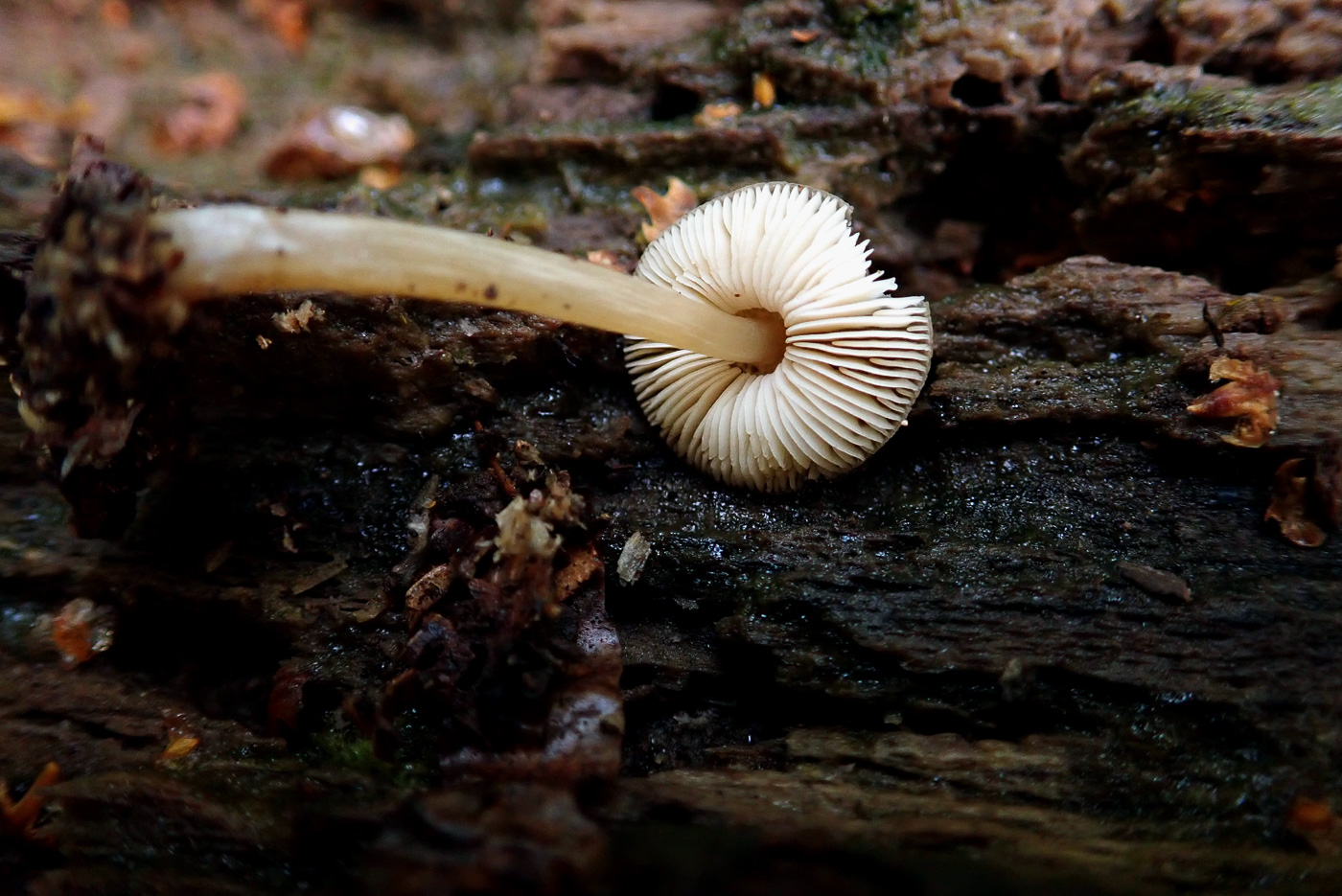
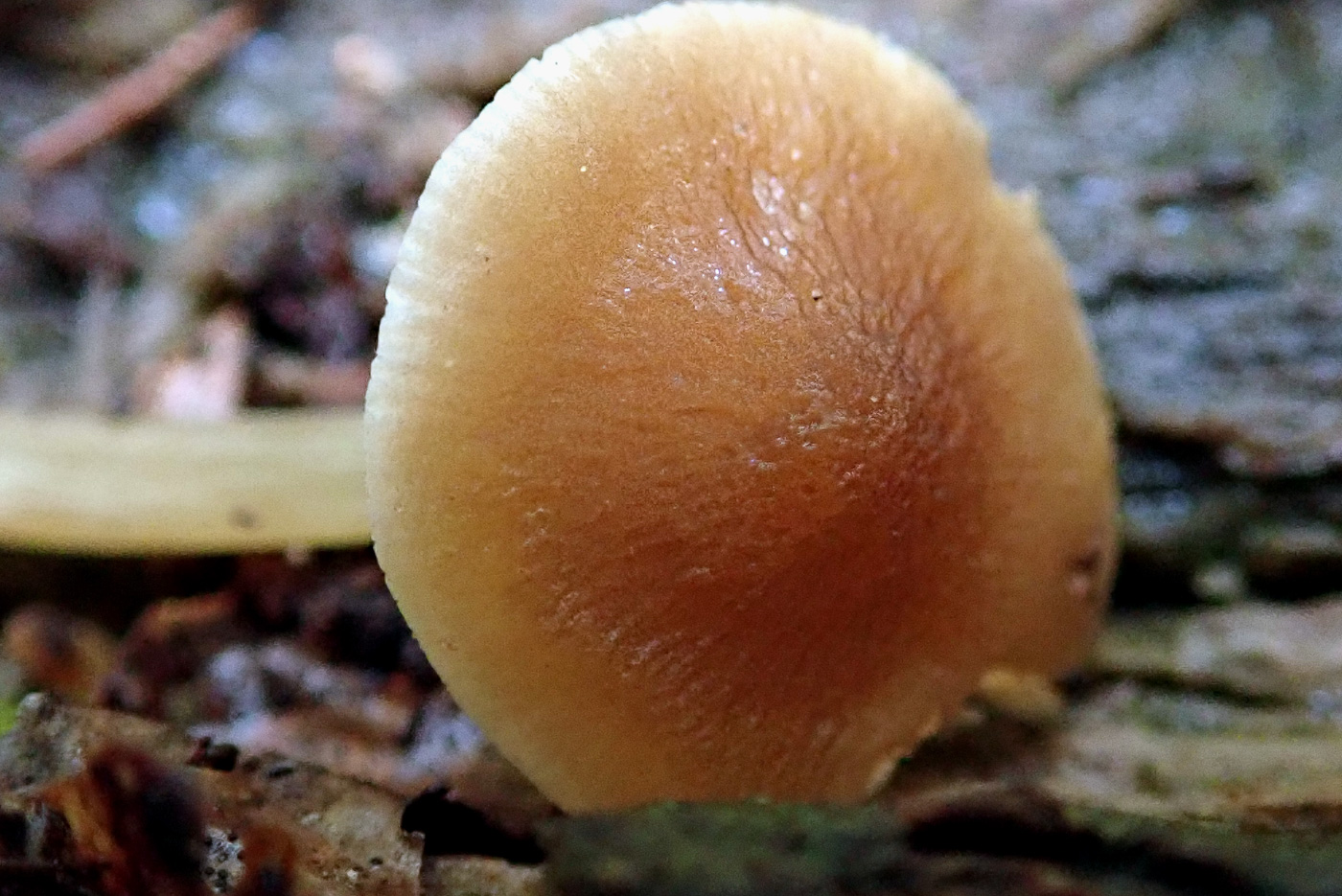 |
Pluteus podospileus (A Shield with no common name) 
Nov 6, 2020. Penny C. found this tiny LBJ (with cap only 1 cm across) on woody debris in Burnham Beeches and nearly passed it by but luckily turned it over to discover the pale pink free gills of this genus. She worked through the key at home and the cap surface viewed with a scope led her straight to this not uncommon species which in some literature has two forms, one of which - minutissimus - would be appropriate if recognised on the British list.
|
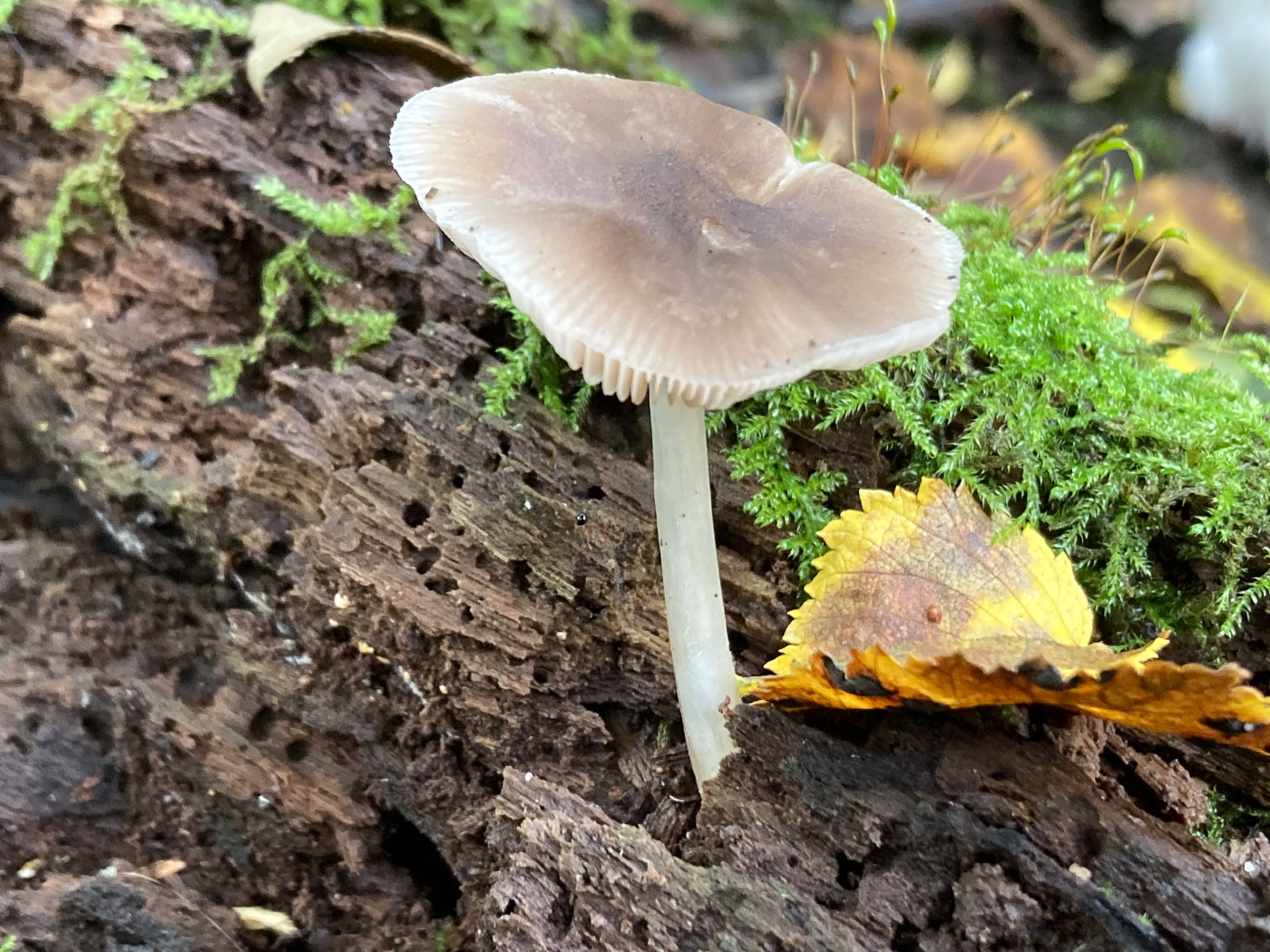
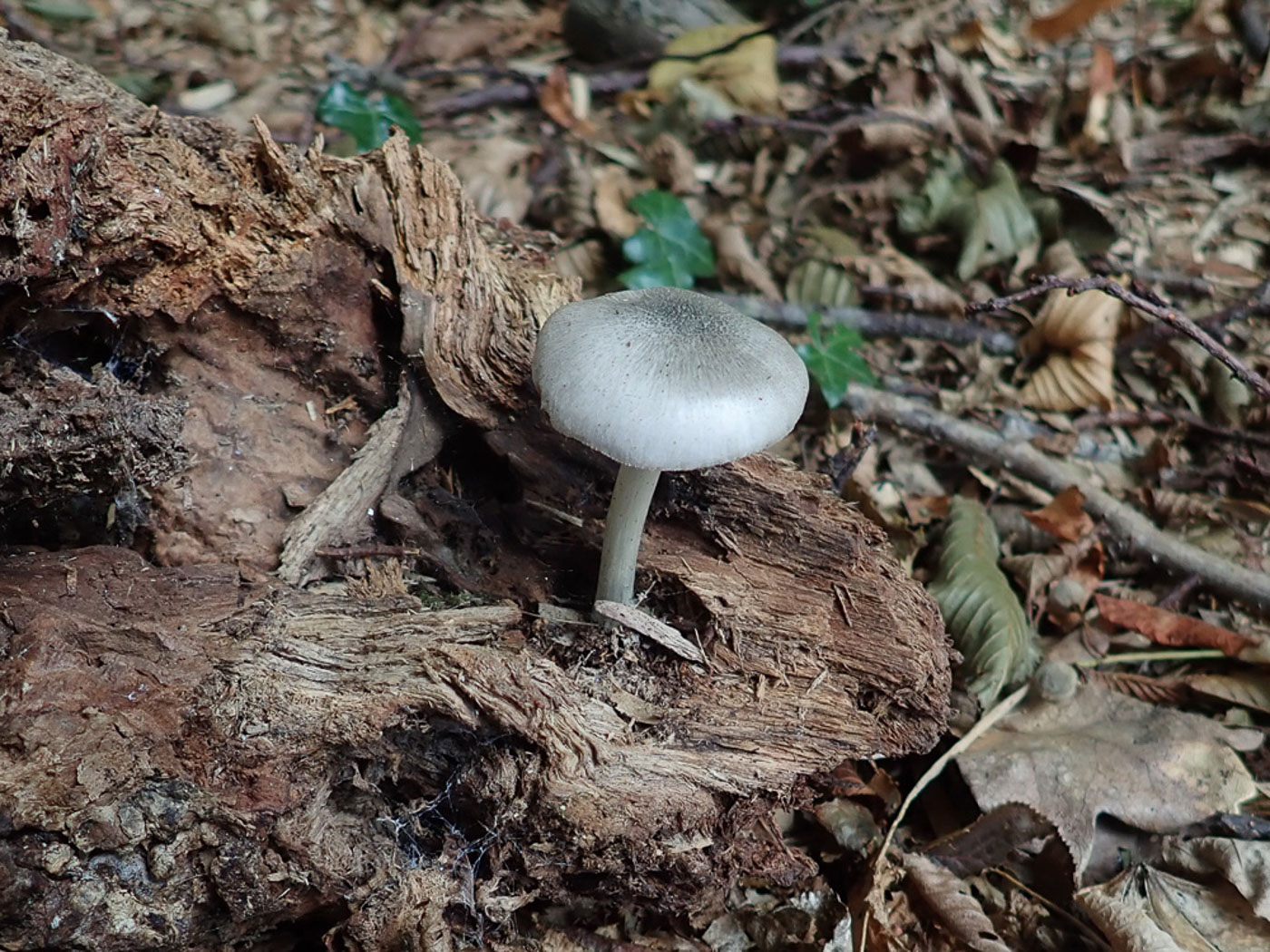
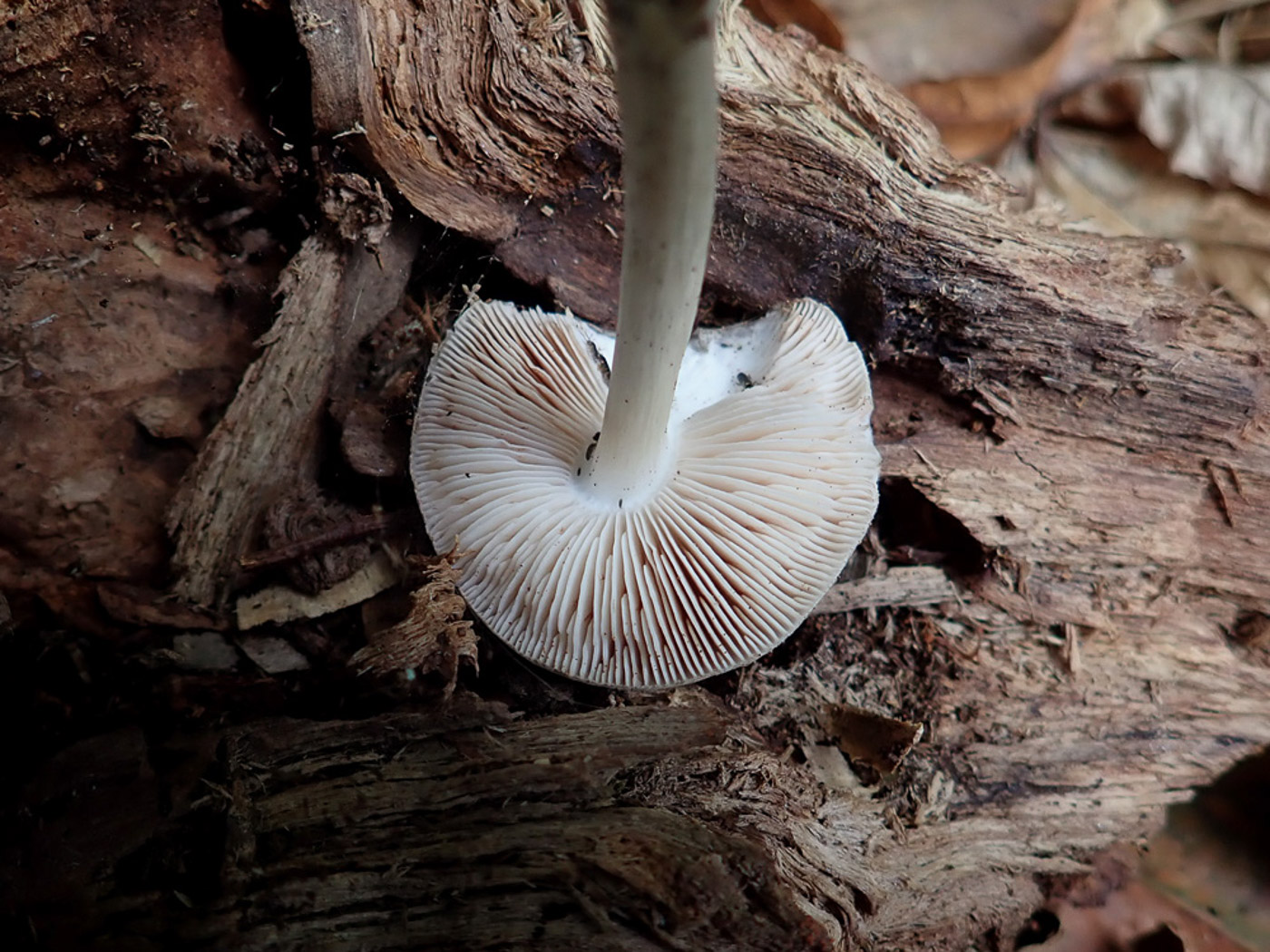
 |
Pluteus salicinus (Willow Shield) 
Oct 17, 2024. On fallen Willow at Burnham Beeches Russell Ness found this species of Shield, one can be fairly sure of in the field owing to its grey cap and smallish size compared to the much more common and browner P. cervinus (Deer Shield). However, the cap colour can sometimes be intermediate between the two species so a microscopic check is always recommended. They both share the same cystidia topped with 'cats' ears but the cuticle hyphae - clamped in today's species but unclamped in P. cervinus - are the definitive test. Though Russell found it on Willow today, it is just as common on other deciduous fallen woods despite its English name.
Sep 5, 2024. On a chunk of bare wood from a large fallen Lime at Turville Heath Penny spotted this singleton Pluteus, recognising the species from the grey cap with no hint of brown as in P. cervinus. Turning it over the gills were suitably free and turning pink, confirming the genus. The species is not rare though much less common that P. cervinus, also usually smaller than that species. It is just as likely to be found on deciduous woods other than Willow despite its misleading English name.
Jul 23, 2023. On fallen rotting Beech in Naphill Common Sarah Ebdon noticed this medium sized Shield but from its slightly blue/green tints suspected it might be this species which otherwise is very similar to the much more common P. cervinus (Deer Shield). The two species also share several microscopic features but differ in the cap cuticle (always an essential character to study in this genus) with clamps present in P. salicinus but absent in P. cervinus. All credit to Sarah for checking and finding them, thus confirming her ID. Despite its common name implying otherwise, this occasional species can occur on many different deciduous woods. This is a new species for Finds.
|
 |
Pluteus semibulbosus (a rare species of Shield with no common name ) )
Jun 28, 2023. At Burnham Beeches Gill Ferguson found this nice pair on fallen deciduous wood, Barry Webb took the photo and Jesper Launder - recognising that it looked unusual - then took a specimen home to identify. We have just one previous county record (1999) and there are not many national records, so this was a nice find and we will have a sample sequenced as part of our City of London Corporation project.
|




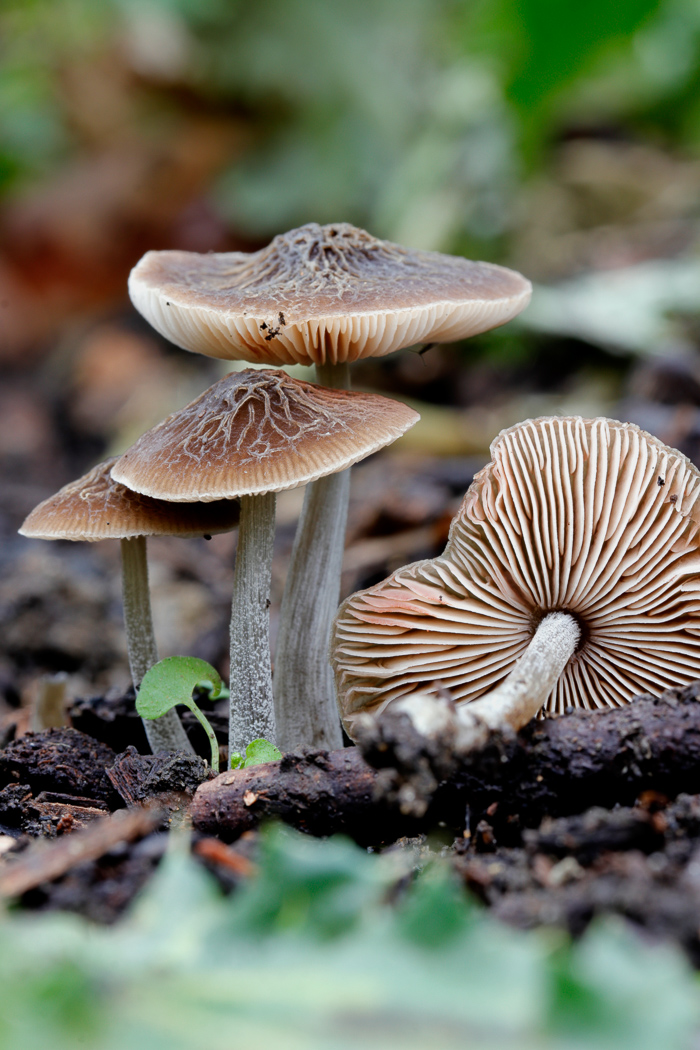
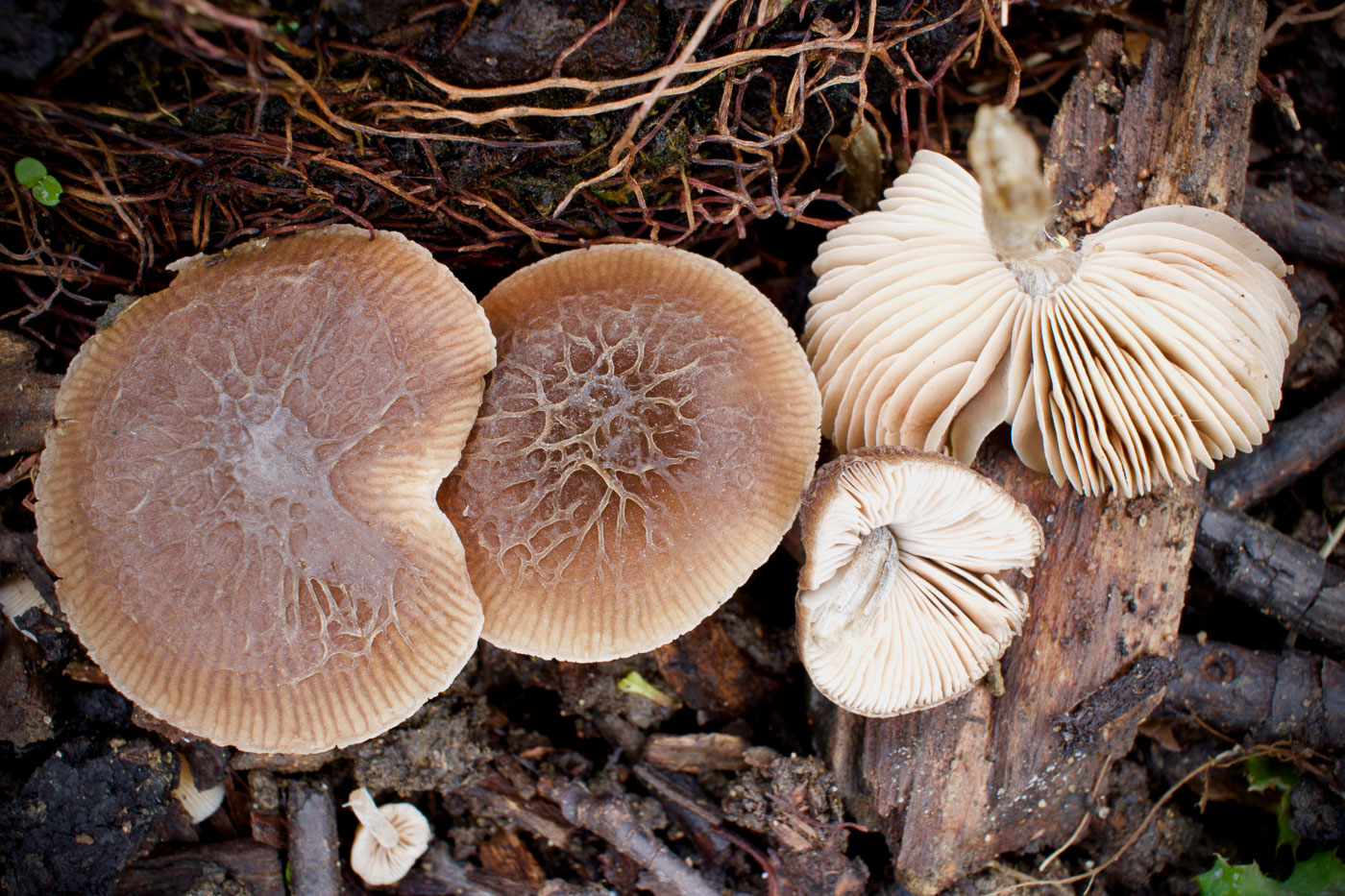
|
Pluteus thomsonii (Veined Shield) 
Sep 14, 2023. Penny was pleased to come across this unusual species of small Shield in soil amongst woody debris at Turville Heath, not having seen it for several years. Once the strongly wrinkled cap surface - almost a reticulation of veins - has been spotted (photo 3), this species should come to mind and a gill checked for its unique cystidia which have long 'needles' extending out from the edge. (These are best seen in a dry mount, photo 4 - no cover slip or liquid - viewing the edge of a flat gill with the compound scope x 400 magnification: they can be hard to see using the conventional method.)
Oct 16, 2020. Justin Long found this unusual species in a woodchip pile in Milton Keynes. This is a small species of Pluteus with caps no bigger than 3 cm across at most and usually smaller, but is unmistakable in the field due to its very distinct raised 'veins' on the cap surface. Note also the pale pink gills which are free of the stem - both features typical of the genus.
|
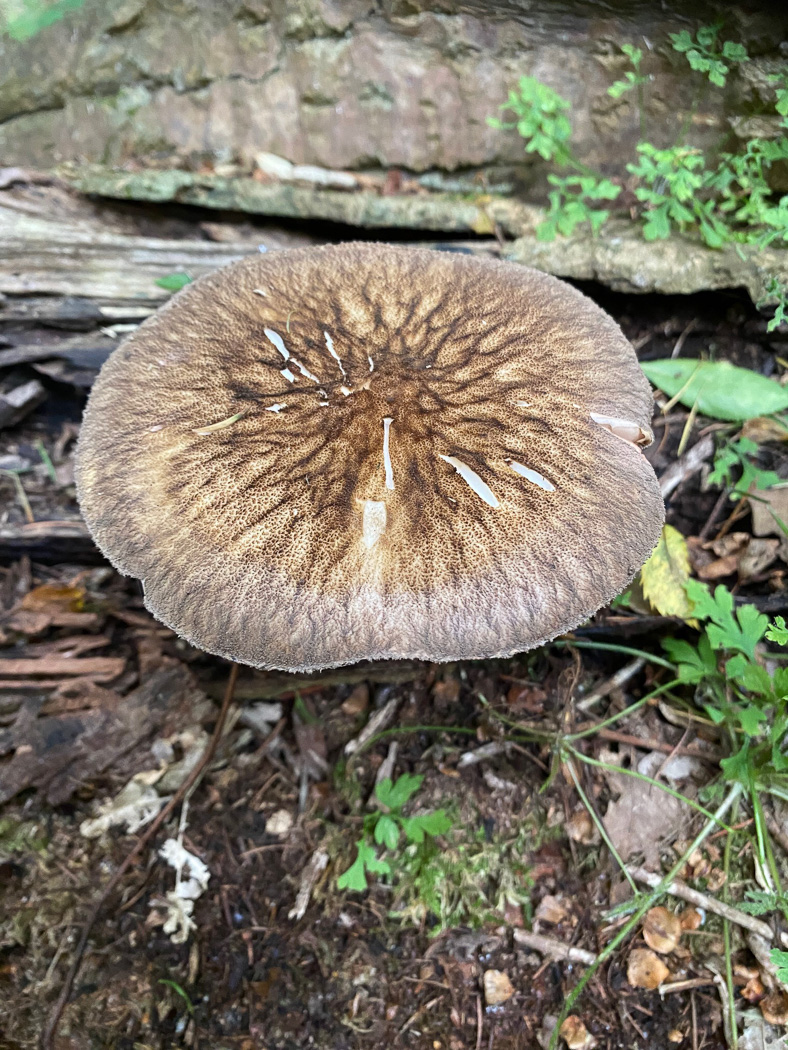
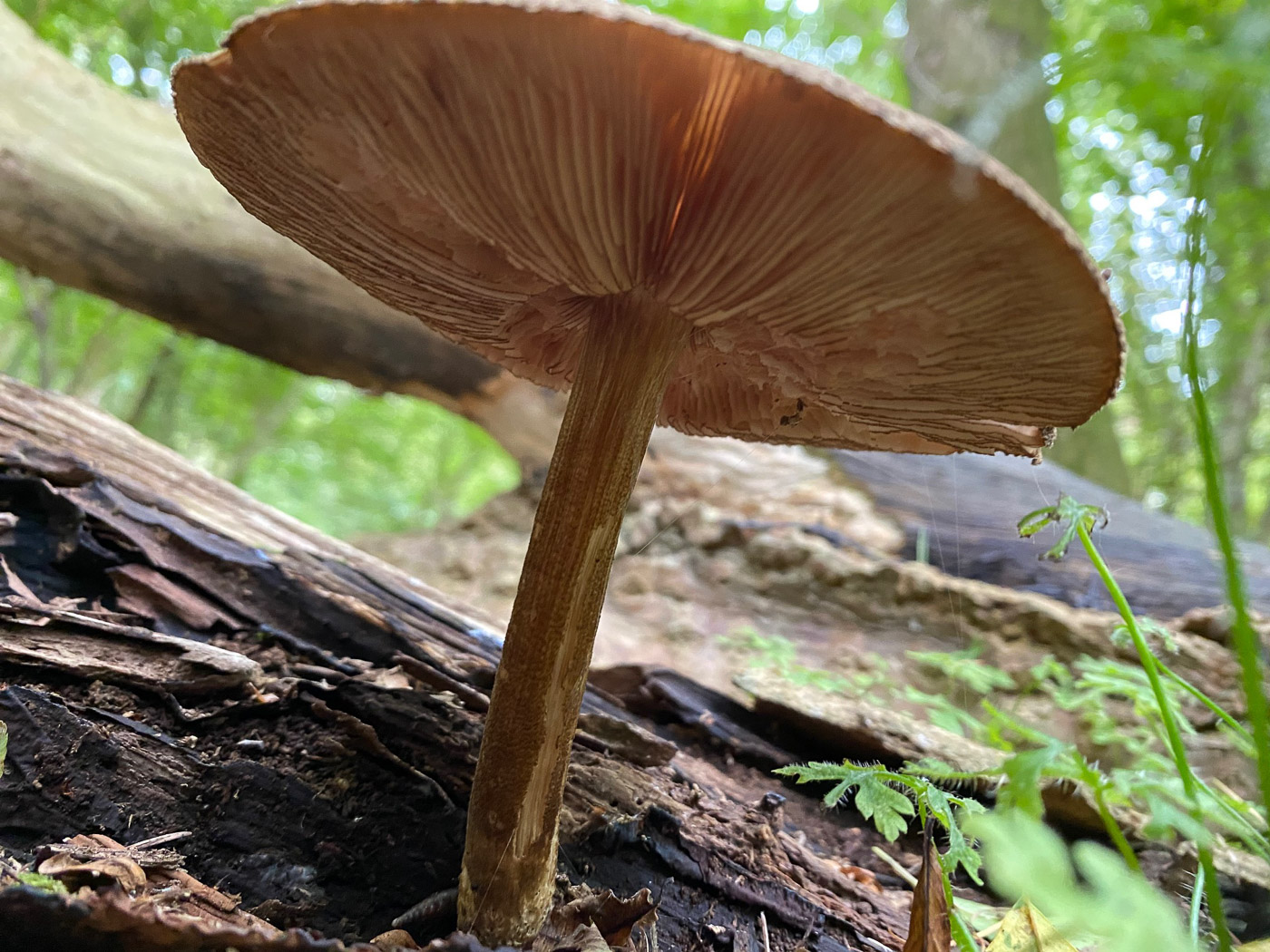

 |
Pluteus umbrosus (Velvet Shield)
Sep 20, 2024. In Bernwood Forest Chris Grimbly found this Pluteus on a felled deciduous trunk. This is one of two species which have a dark gill edge but is distinct in having a finely velvet cap surface which is also on the stem. The other much rarer species, P. atromarginatus, is normally a conifer associate and lacks this cap surface and has a streaky fibrillose stem. The microscopic features are also very different and the safest way to separate the two if in doubt.
Nov 11, 2023. On fallen deciduous wood in Bernwood Forest Chris Grimbly noticed this Pluteus which has two unusual features for the genus. Both cap and stem have a finely velutinous to scaly surface and the gills have a markedly dark edge. These features together with its medium to large size and dark brown colouring make it possible to identify with certainty in the field. We have a good number of county records but mostly some years ago with only a couple in the last 10 years and none since 2017. It would appear to be becoming much less common in our area and this is a new entry for Finds.
|
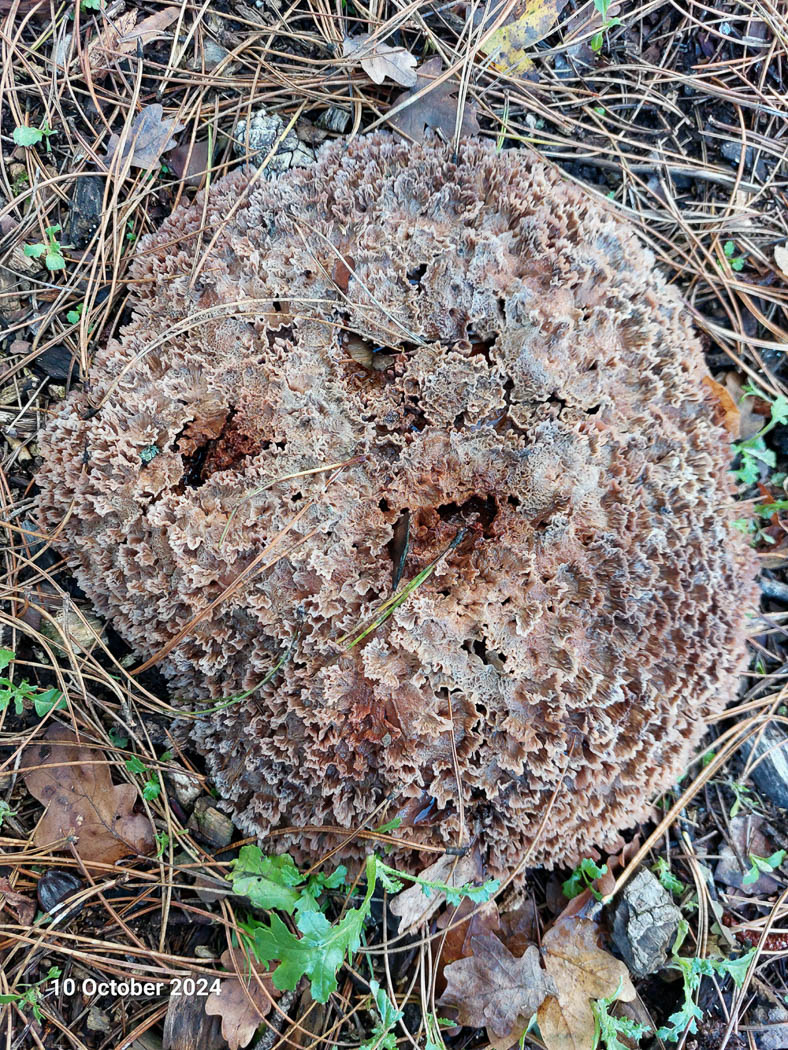 |
Podoscypha multizonata (Zoned Rosette) 
Oct 10, 2024. In Beaconsfield in the grounds of a school Jesper Launder saw this impressive beast which was over 1 ft across. However, he checked the microscopic characters to make sure because to him it appeared underdeveloped for the species, in which when fully grown this specimen will be enormous! It appears so distinctive, also from the number of UK records not that rare, but we have just two county records, both from Black Park in the early 2000s. A nice find!
|
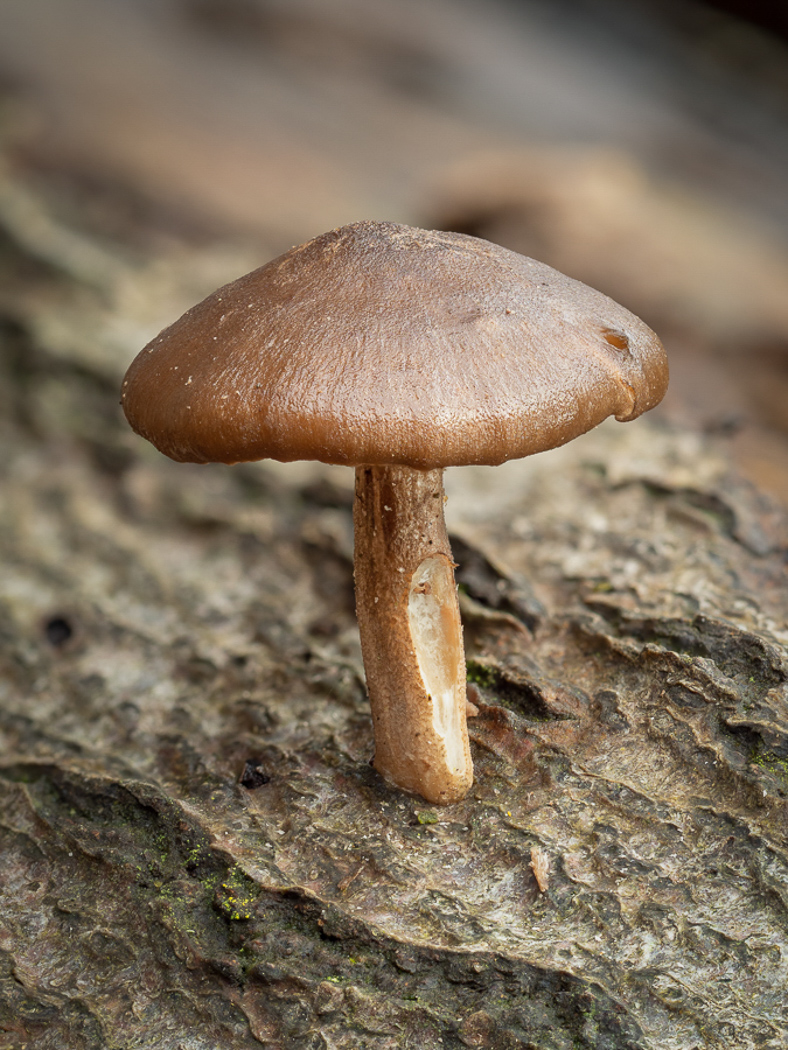
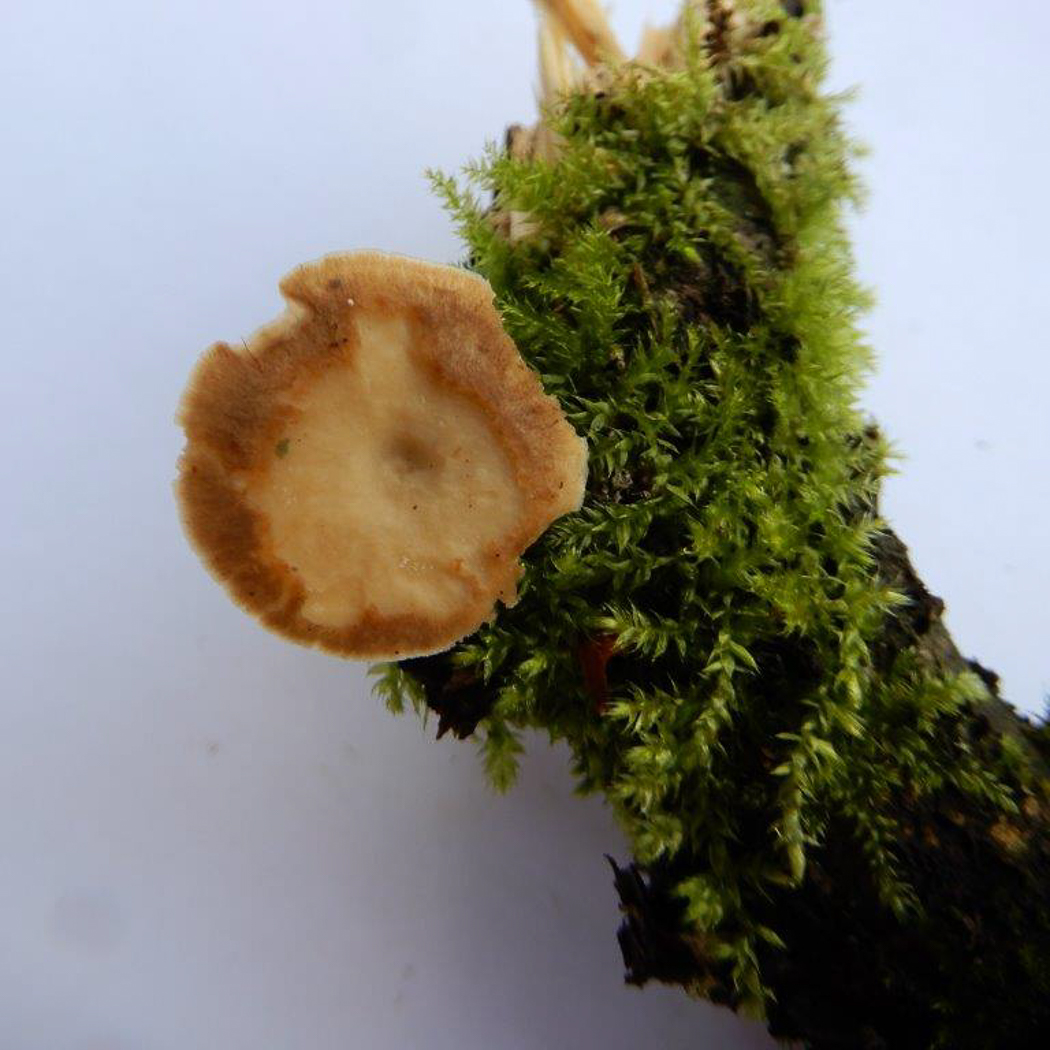
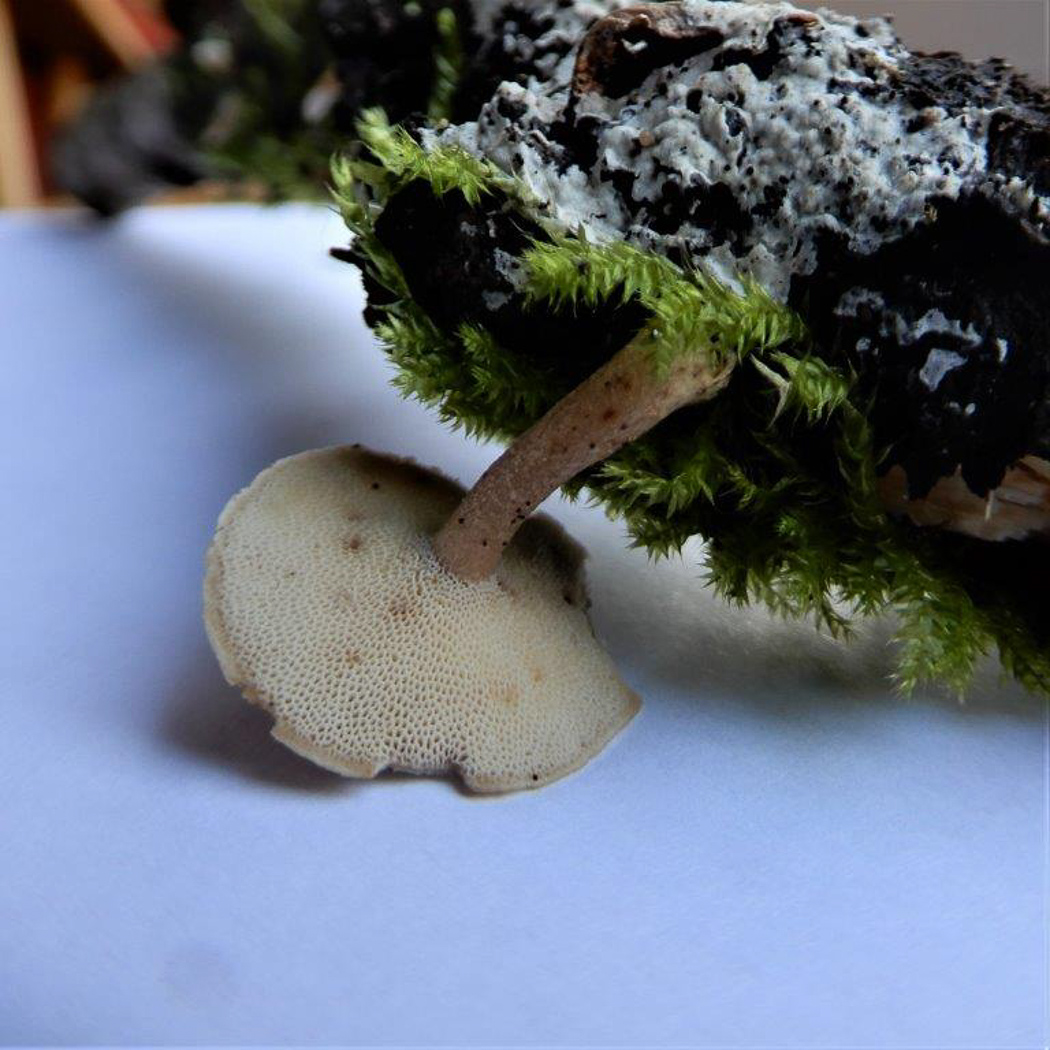
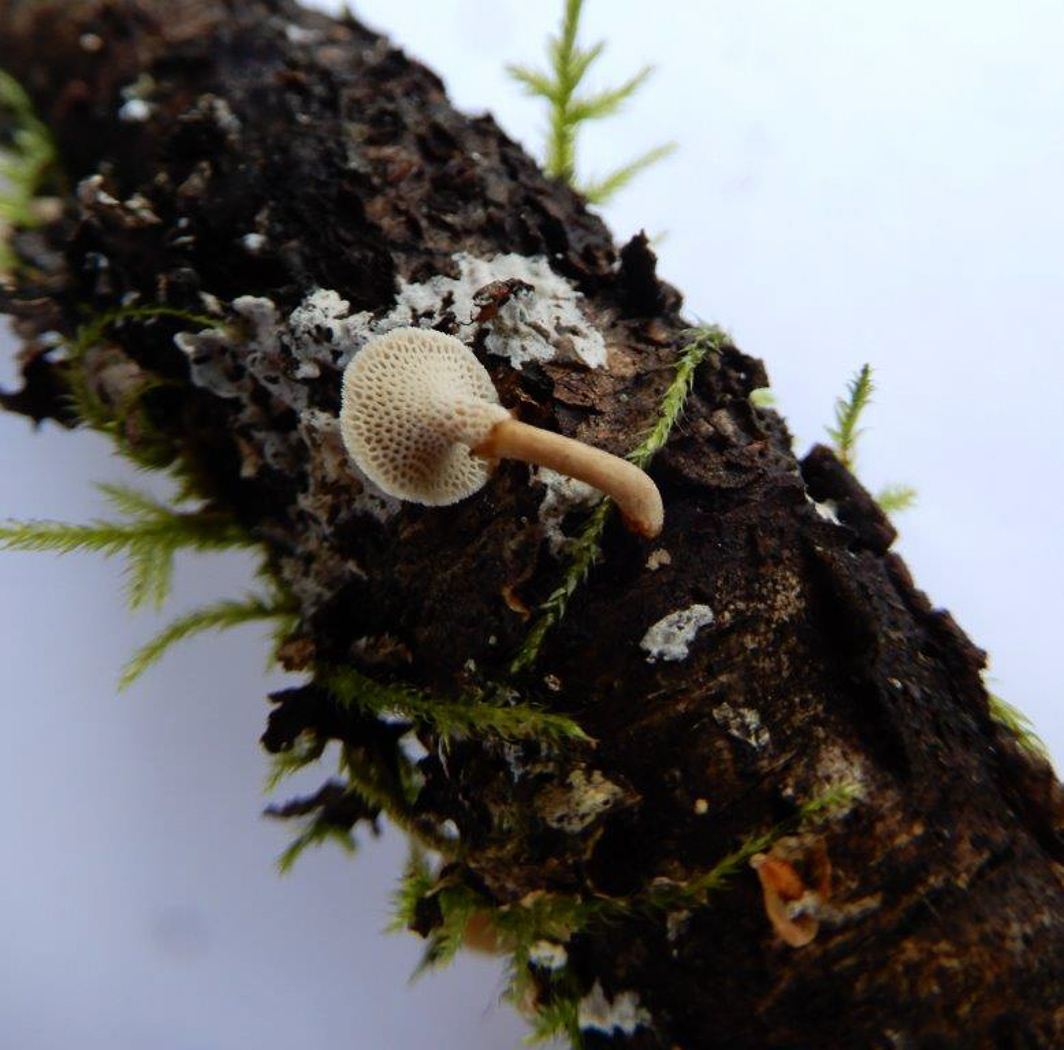 |
Polyporus brumalis (Winter Polypore)
Jan 12, 2021. Barry Webb found this fungus on fallen Beech in Burnham Beeches. At first glance not unalike a species of Pluteus or other brown-capped mushroom, it is not until one looks underneath and notices not gills but pores that the genus becomes obvious. One of several quite common species of Polypore, this is quite evenly brown, has widely spaced pores and is aptly named - often fruiting late in the season.
Nov 26, 2020. In Moorend Common on a fallen deciduous branch Margaret Bolton found several small thin fleshed caps on stems which on closer inspection had distinct pores underneath, thus making them Polypores. The largest (shown in the photos) was 2 cm across and the smaller ones had decurrent pores. This occasional species has considerably larger (more widely spaced) pores than other similar sized Polypores and tends to fruit late in the season (sometimes in spring); the pores which tend to run a little way down the stem(see photo 3) is also a good character to look for.
|
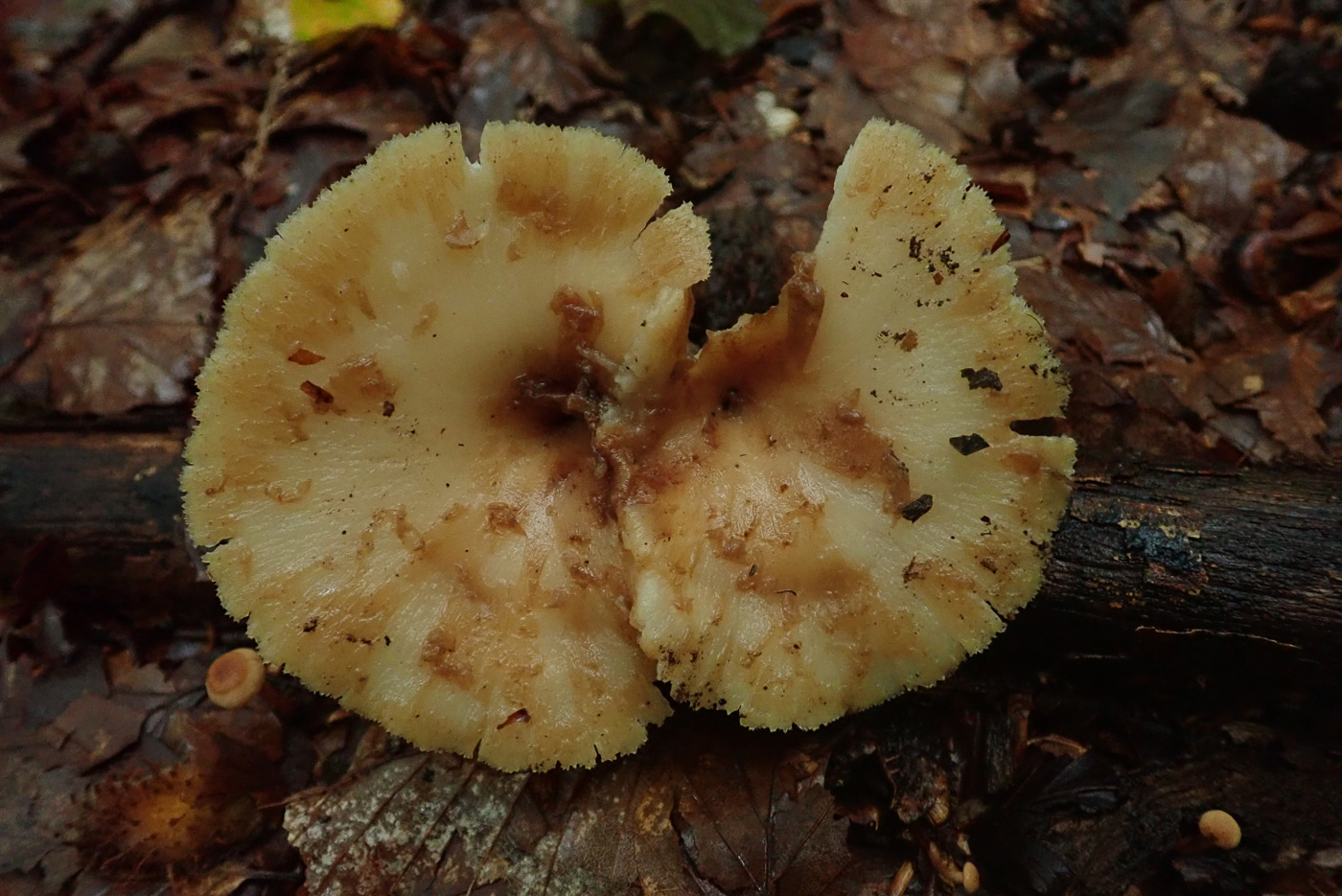
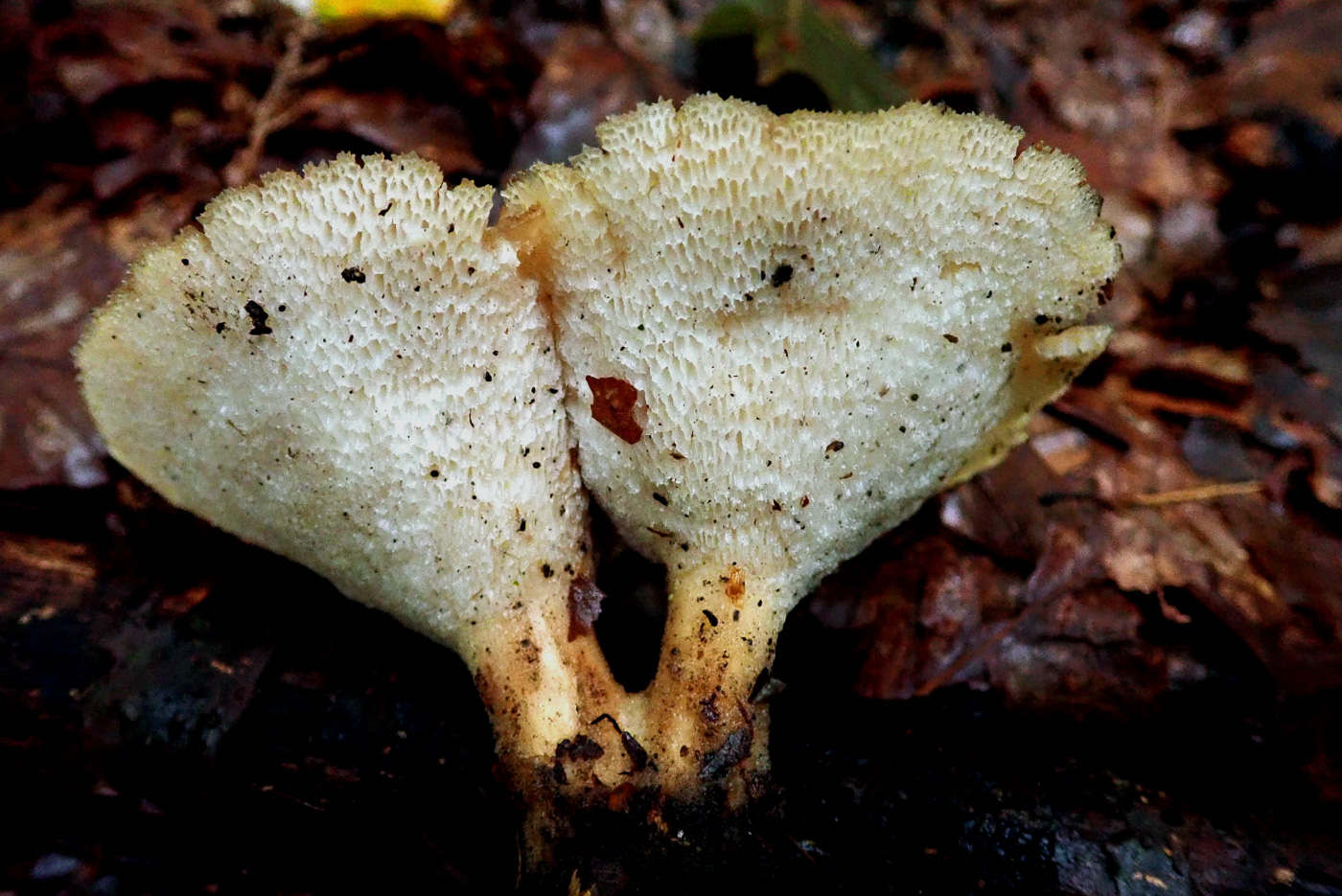
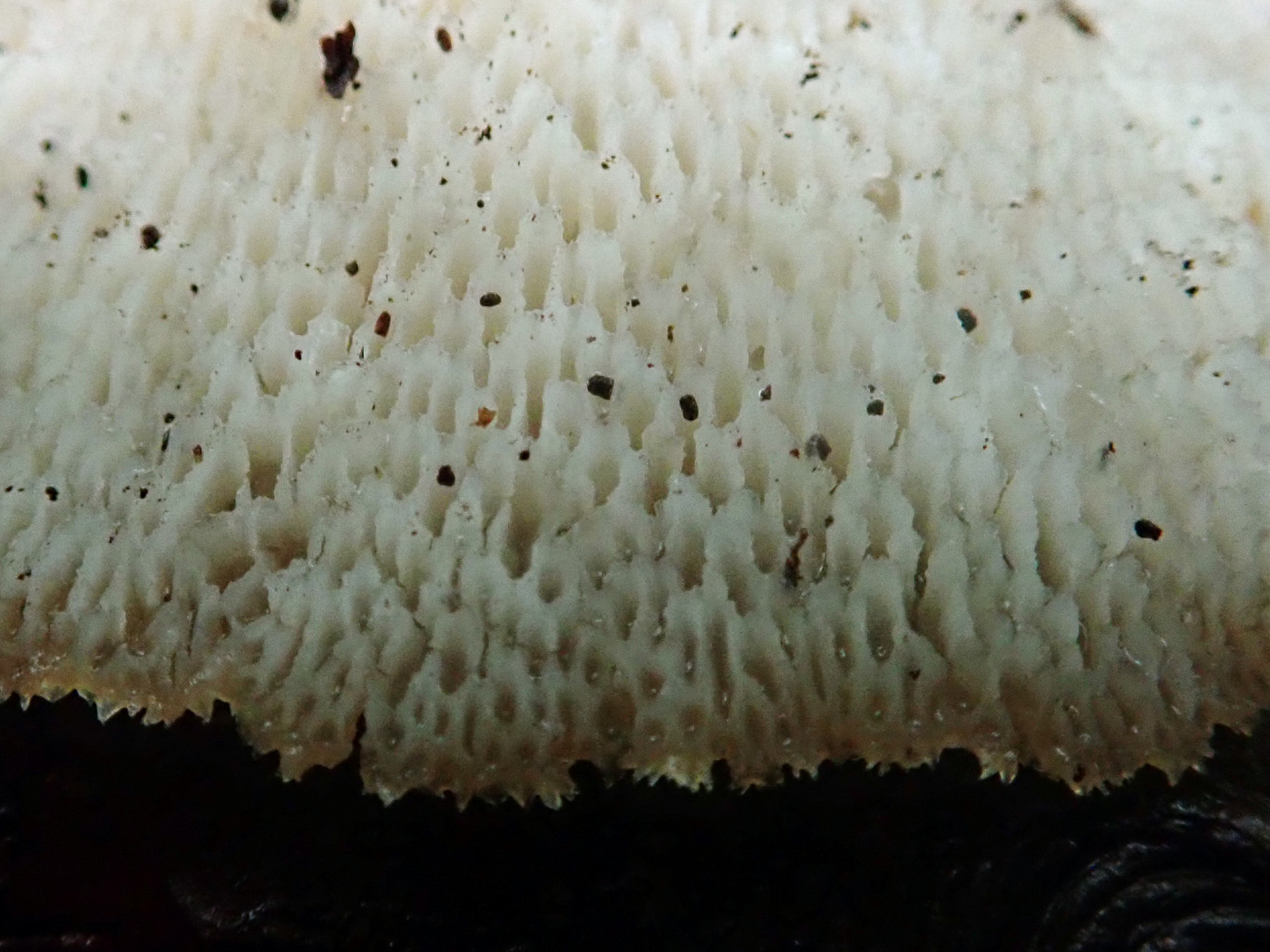 |
Polyporus ciliatus (Fringed Polypore)
Oct 3, 2020. Penny Cullington found this conjoined pair on fallen Beech in Penn Wood. Not a common Polypore, and superficially similar in colour and shape to the very common P. leptocephalus (Blackfoot Polypore) - yet to be included, however - key features are the ciliate (finely frilly) margin and the widely spaced elongated oval shaped pores (see photos 2 and 3). In comparison, Blackfoot Polypore has a distinct black lower stem and much smaller finer pores.
|
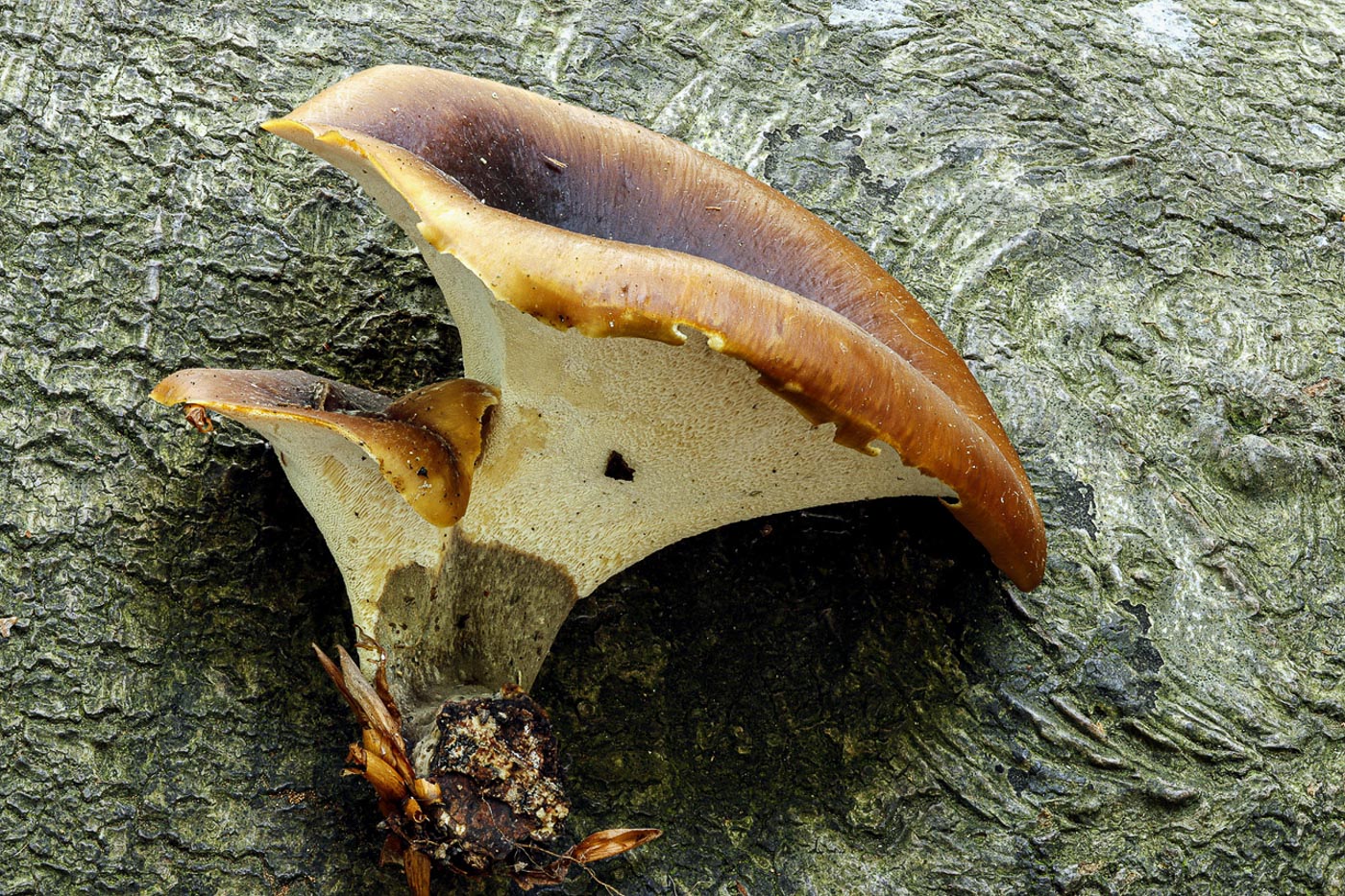
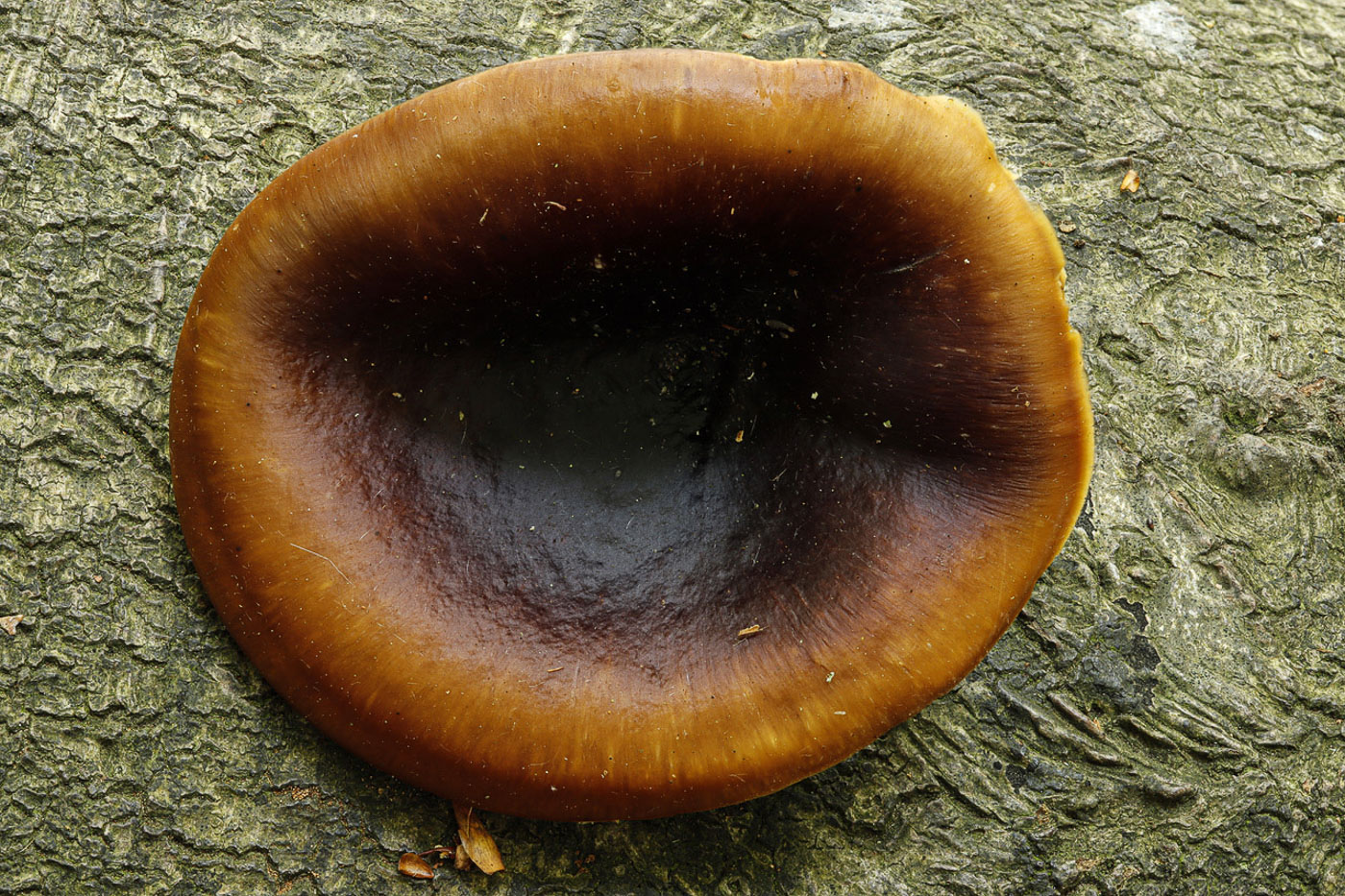
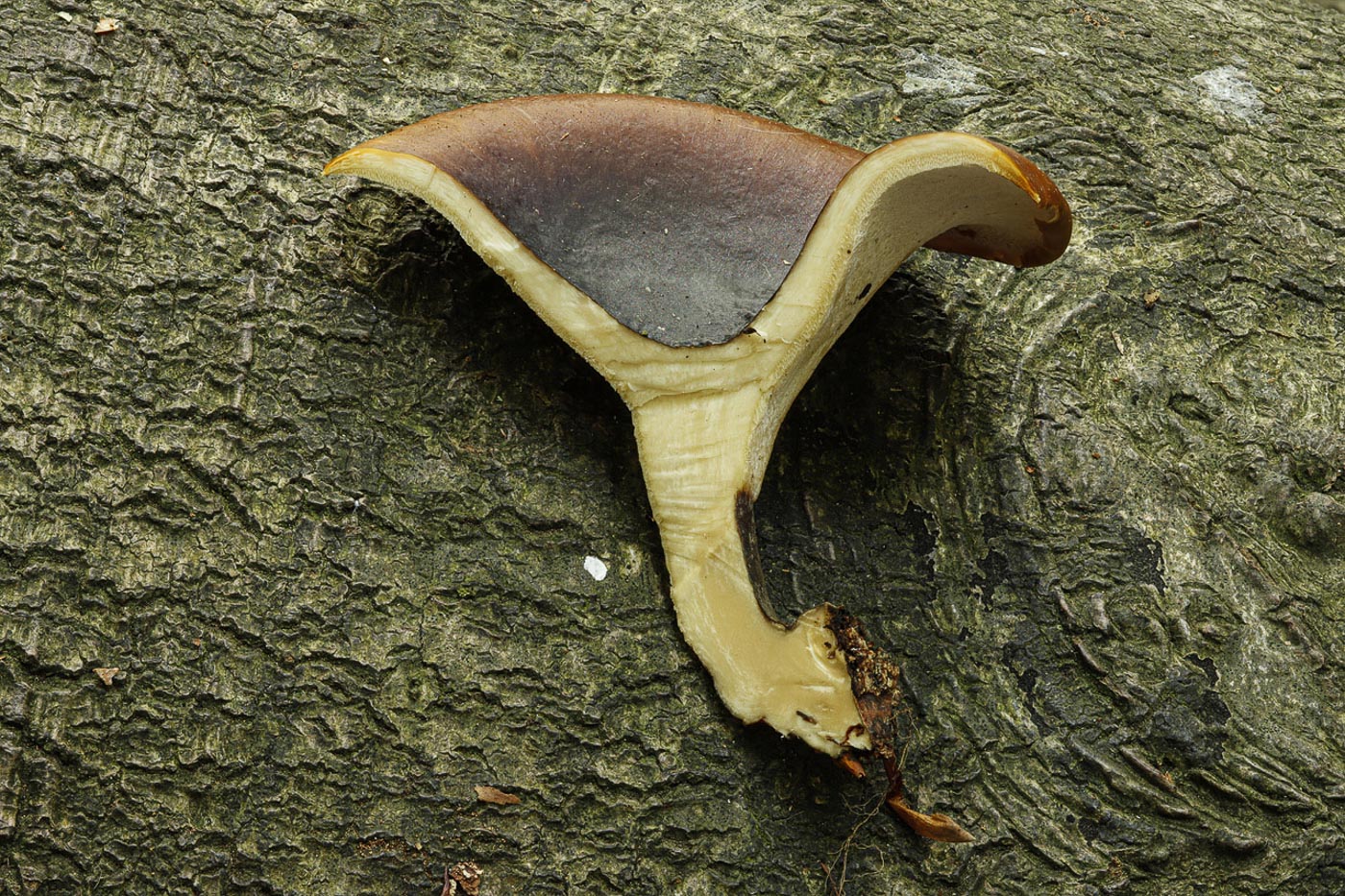 |
Polyporus durus (Bay Polypore)
Sep 28, 2020. This singleton Polypore (previously P. badius) was found by Paul Goby in Bradenham Wood on fallen Beech. All our Polypore species grow on fallen wood and this is the largest of those having smooth caps (sometimes up to 25 cm across or more), though probably not the commonest. Look for the shiny smooth bay brown funnel-shaped cap with tiny whitish pores beneath to distinguish it from others. Note also that sometimes the stem can be eccentric (off centre) or very short.
|
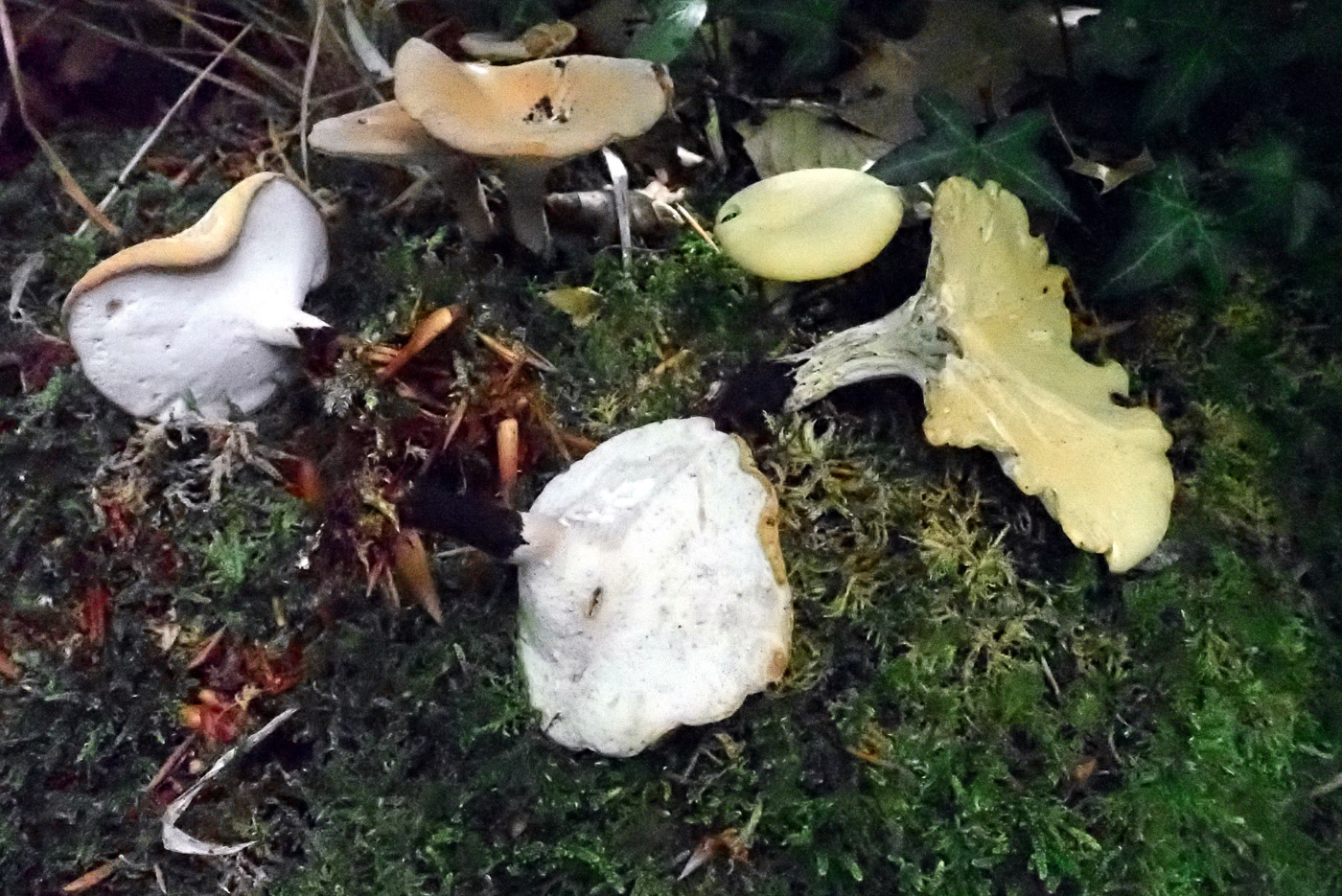
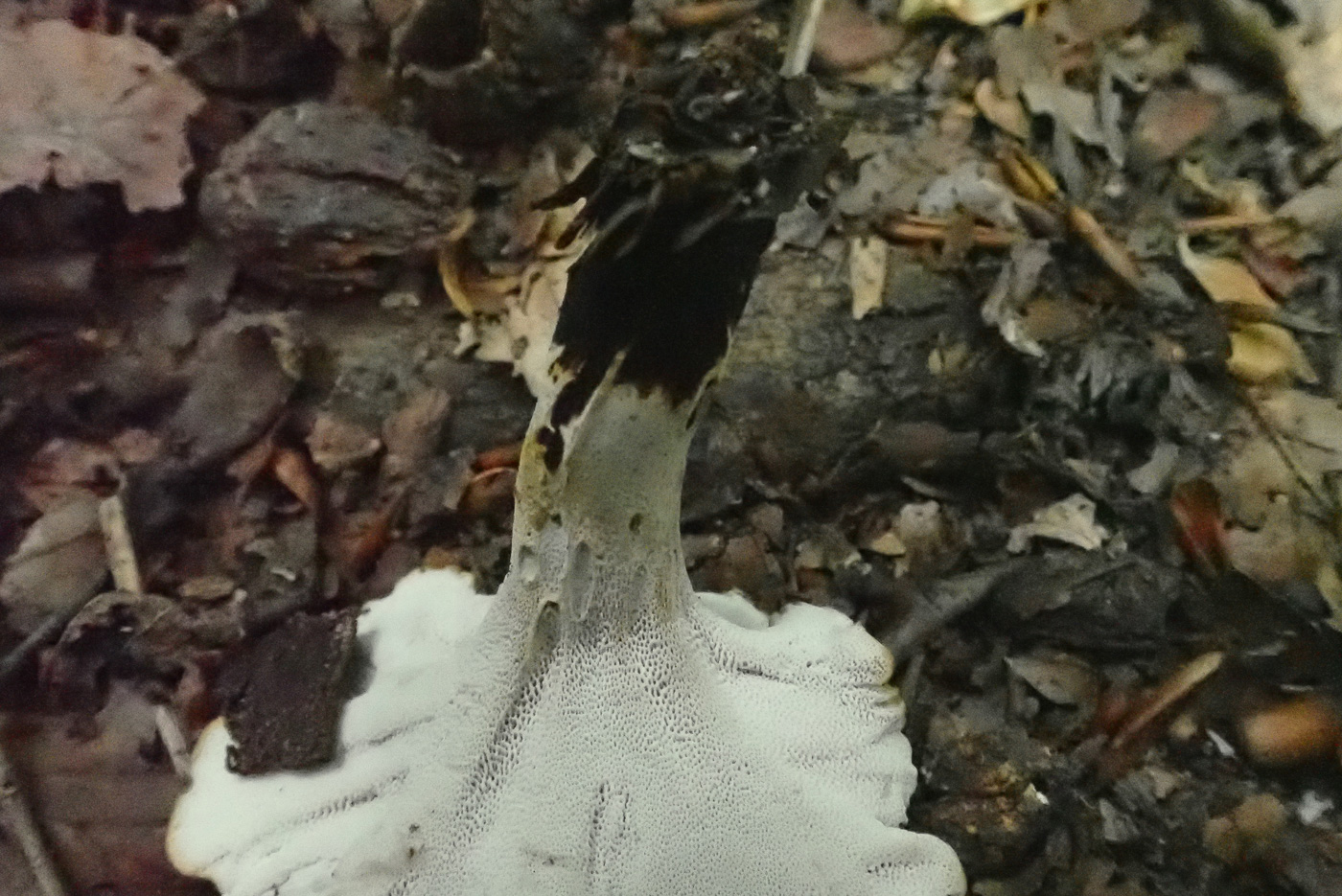
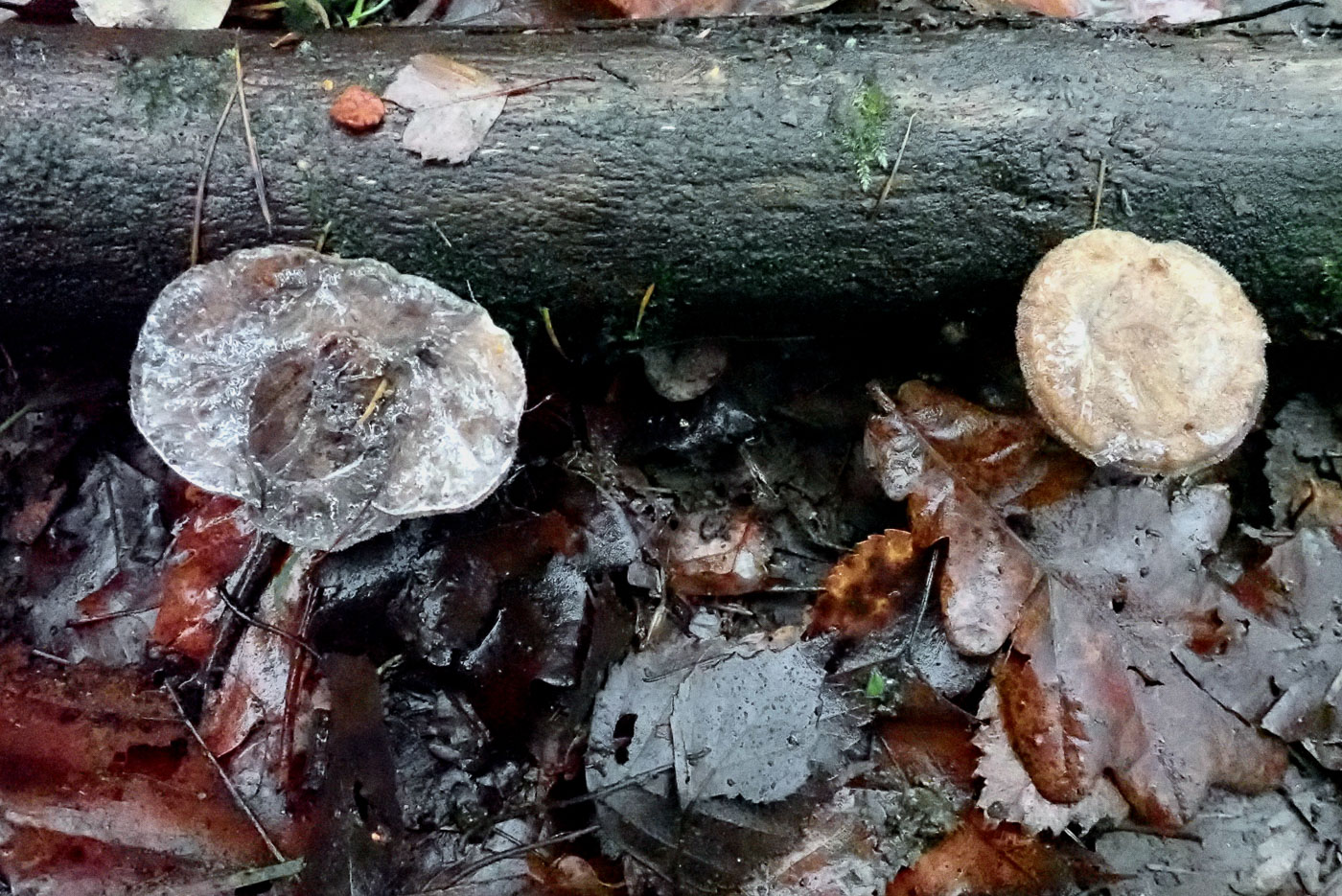
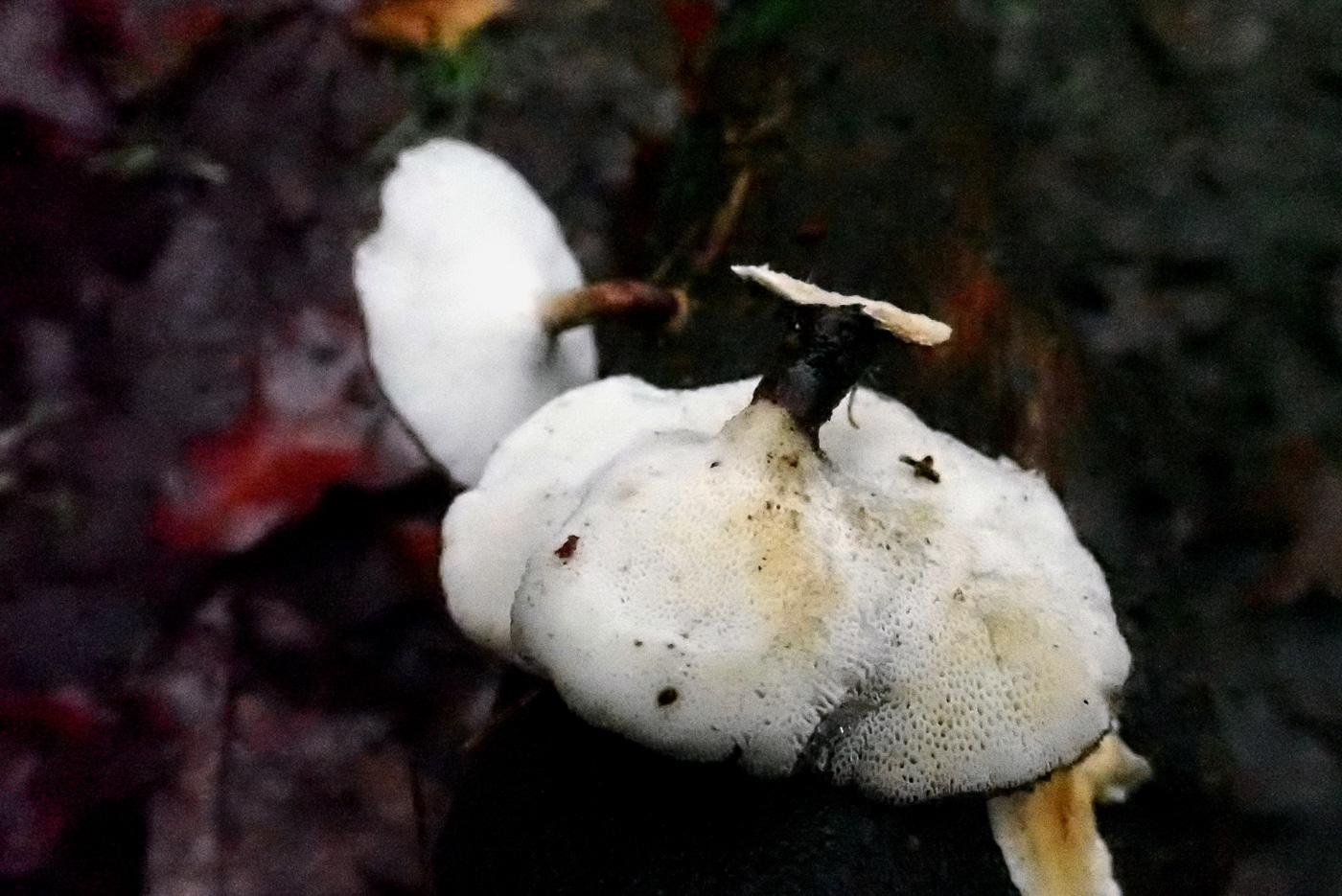 |
Polyporus leptocephalus (Blackfoot Polypore)
Aug 19, 2021. On a deciduous stump in Kings Wood Tylers Green Penny found a nice cluster of this species varying in size from about 2-6 cm across and initially looking like an Agaric species having a stem and a pale cap. Turning one over revealed the somewhat small whitish pores underneath which in photo 2 can be seen to run down the upper stem. This the commonest species of Polypore always has black at the stem base providing a useful feature with which to separate it from others.
Dec 7, 2020. On a Beech stick in Penn Wood Penny C. noticed these caps (frozen solid!) and turning the stick over saw that it was this very common species of Polypore (probably the commonest species) which for some inexplicable reason has been missing from our list. Though similar to several other Polypores the diagnostic field character to look for is the black base to the stem (hence its common name). It was previously (and possibly better)known as P. varius.
|
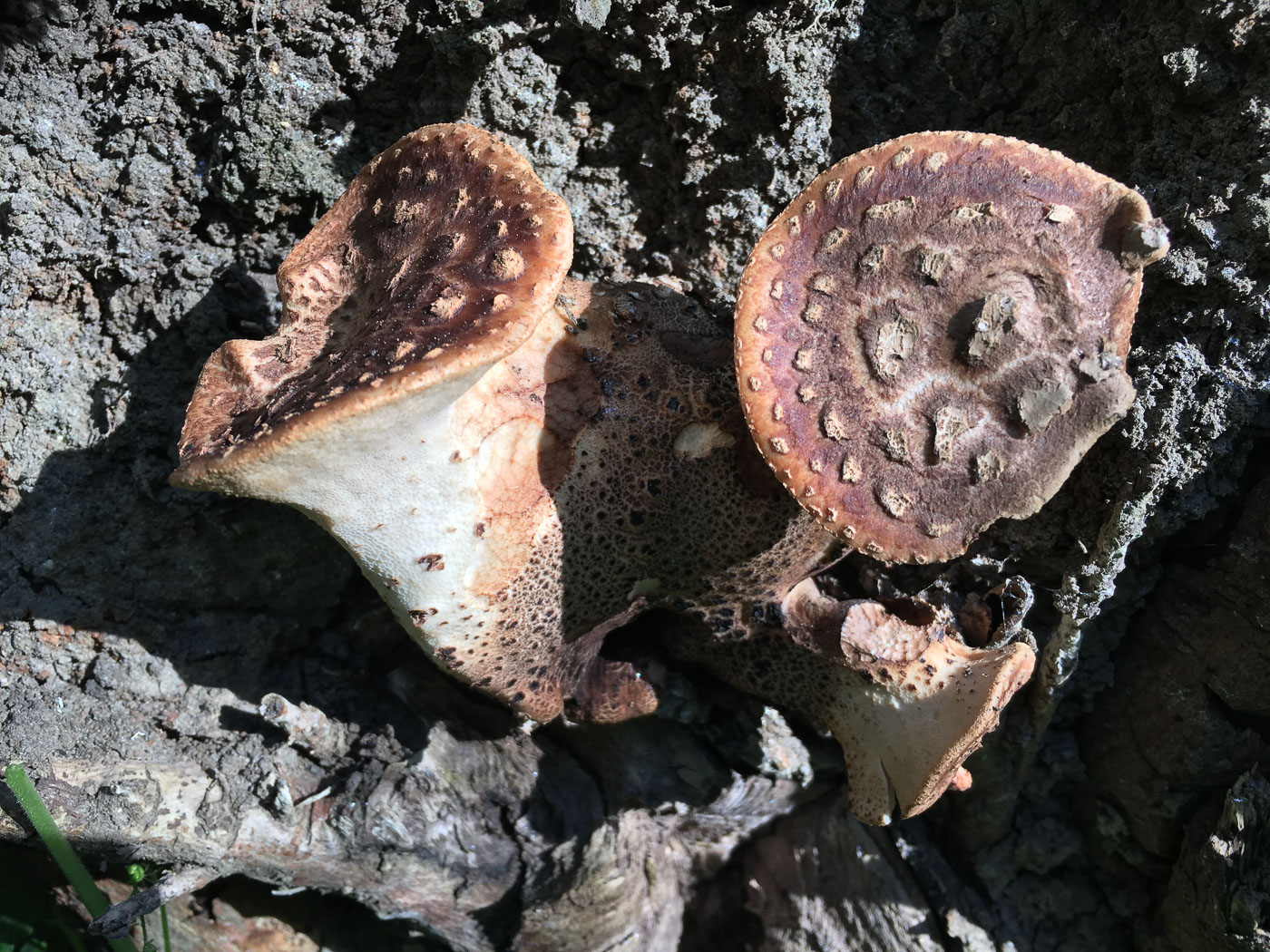
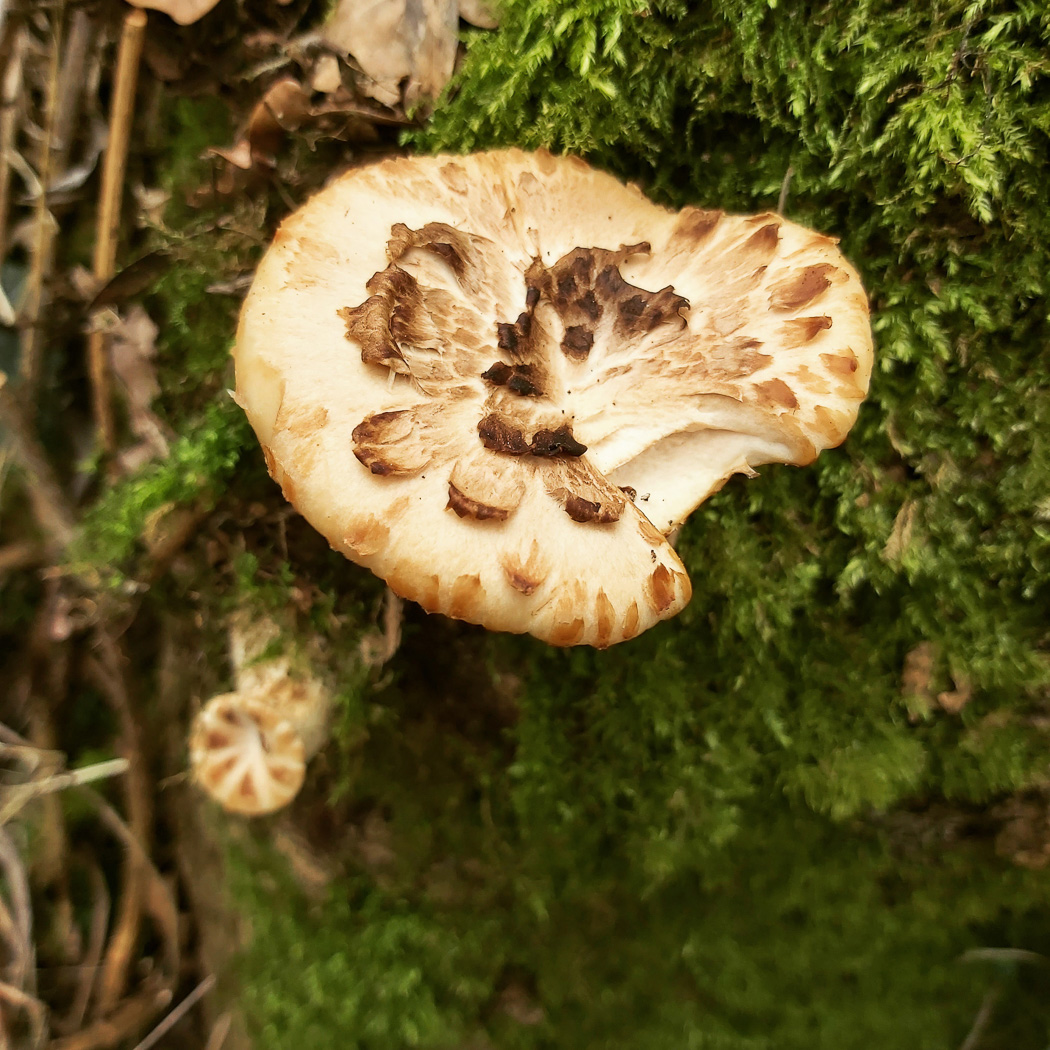
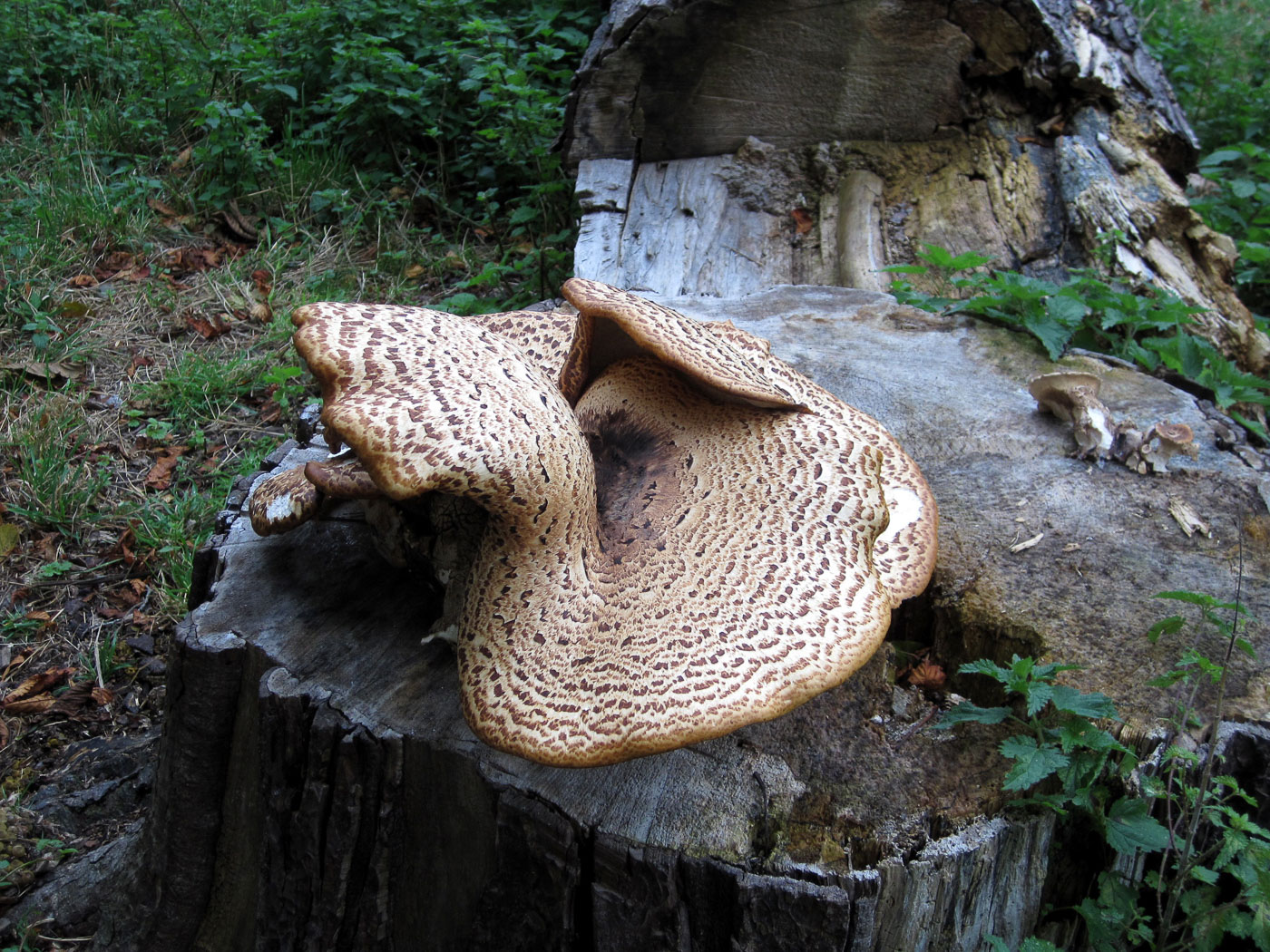
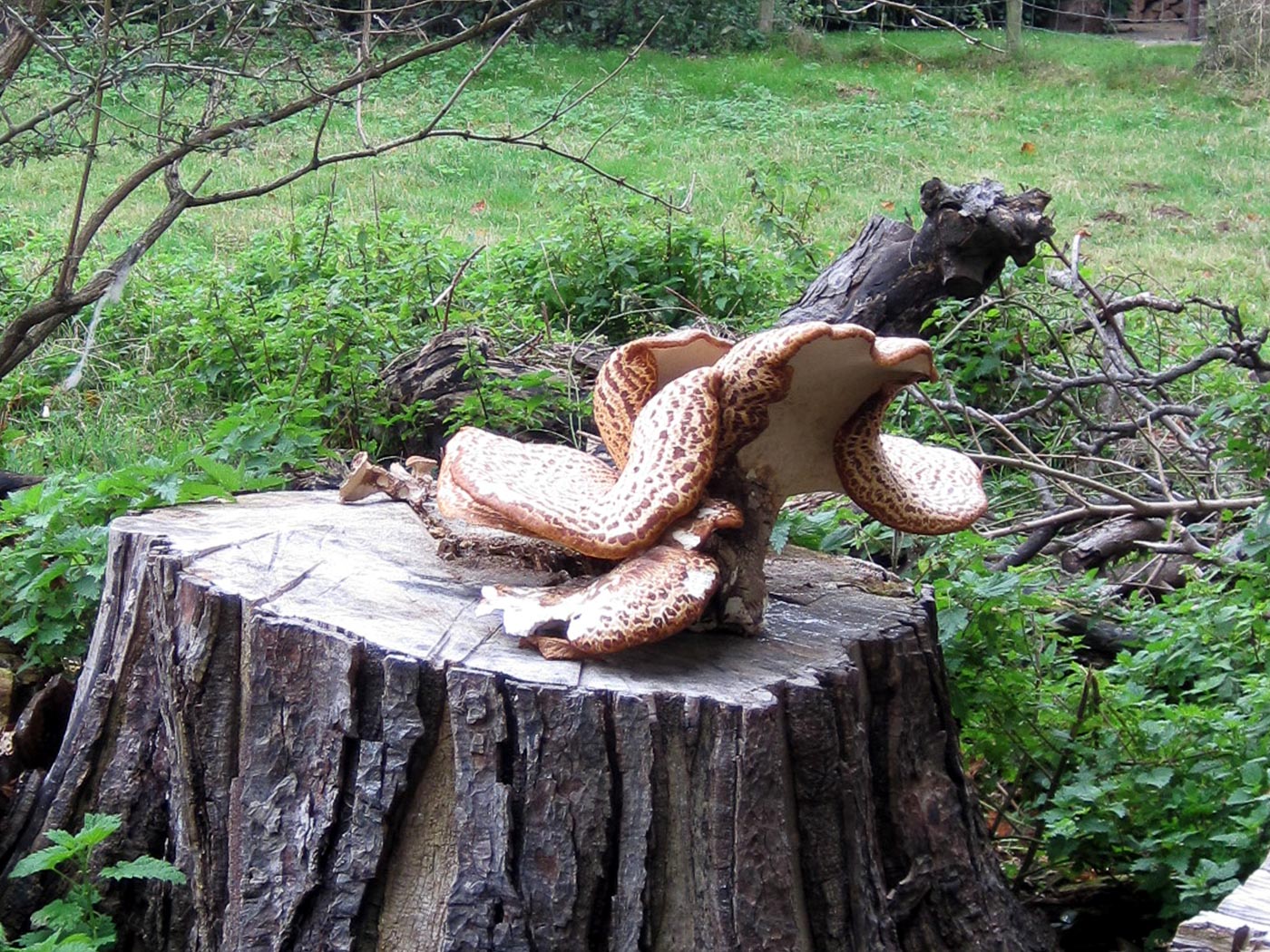 |
Polyporus squamosus (Dryad's Saddle)
Apr 4, 2021. Joanna Dodsworth noticed these really young fruit bodies on fallen Ash near Tram Hill Ponds on Brill Common. It's difficult to imagine these upright fungi developing into the huge saddle-shaped brackets which this species produces, but Joanna reminded me of the smaller of the two photos in Roger Phillips Mushrooms which illustrates exactly this point.
Mar 31, 2021. Jesper Launder spotted this early fruiting of the largest of our Polypores in woodland near Layter's Green. Incidentally the correct name for the species is now Ceriporia squamosa though thankfully the common name at least provides some continuity for the long suffering mycologist! This is a species often found on Ash but not exclusively so, also one quite commonly finds enormous and decaying fruit bodies on the ground having fallen from a height - it can often be 20 ft or more up the trunk.
Sep 30, 2020. This stunning fungus was found growing out of the top of a Horse Chestnut stump by Joanna Dodsworth at Brill Walks. By far the largest of our scaly capped Polypores, it often grows high up on living trunks as a saddle shaped bracket reaching 2 ft or more across, hence the common name. It is unusual to find it so erratically formed as here, having emerged from the centre of a stump and forming not such a comfy saddle! Note the pale cream pores underneath visible in the second photo.
|
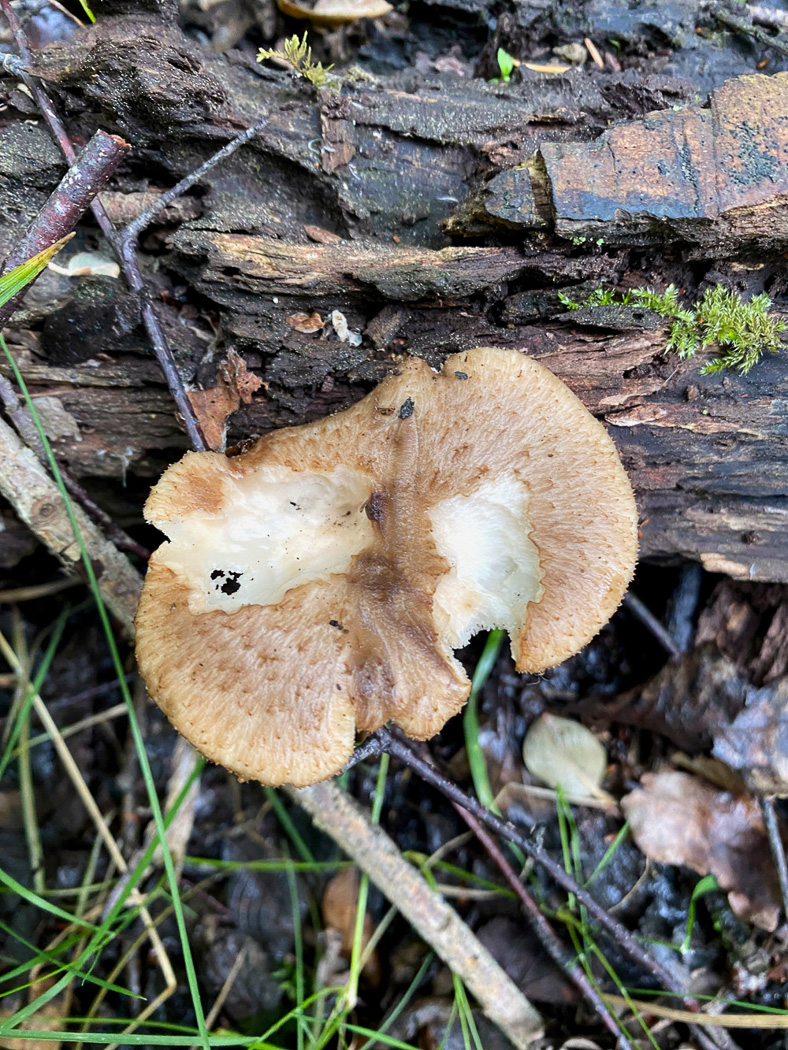
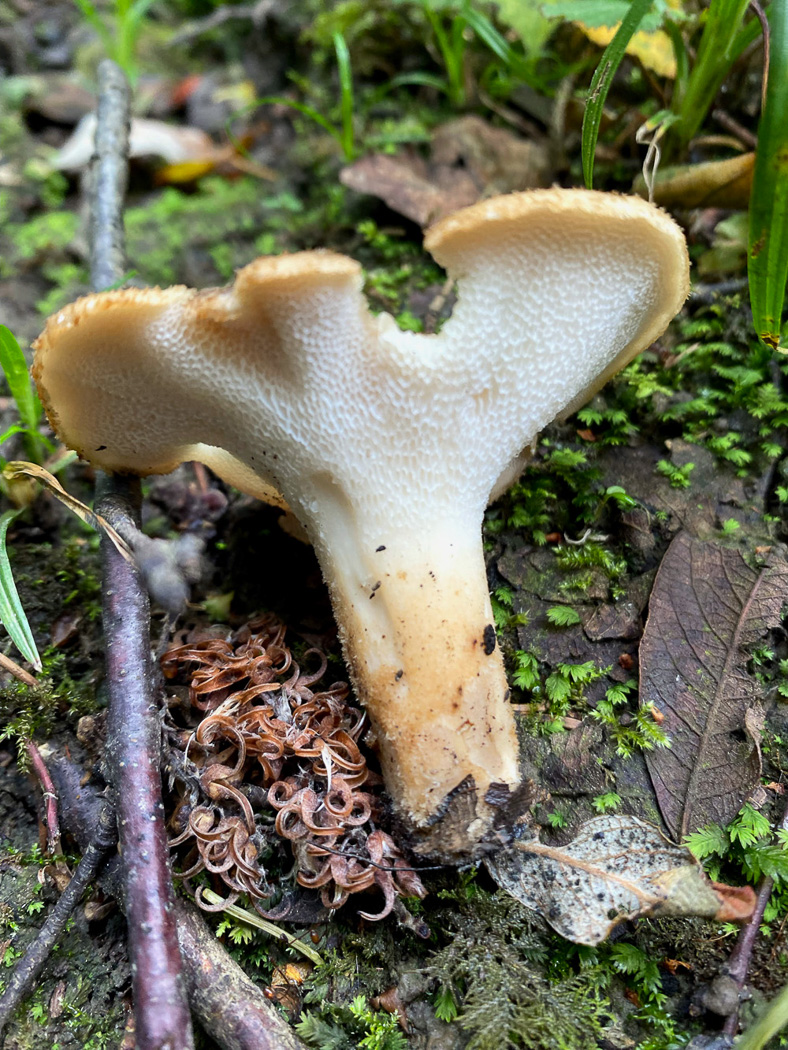 |
Polyporus tuberaster (Tuberous Polypore)
Jul 5, 2024. In Bernwood Forest Chris Grimbly noticed this quite distinctive Polypore with cap similar to a smaller version of P. squamosum (Dryad's Saddle) with very widely spaced pores underneath which appear slightly decurrent. Not surprisingly the cap is somewhat nibbled – woodland fungi favoured my small mammals are in short supply at the moment so are very likely to be gratefully munched at any opportunity! Though by no means rare this appears to be a new entry for Finds.
|
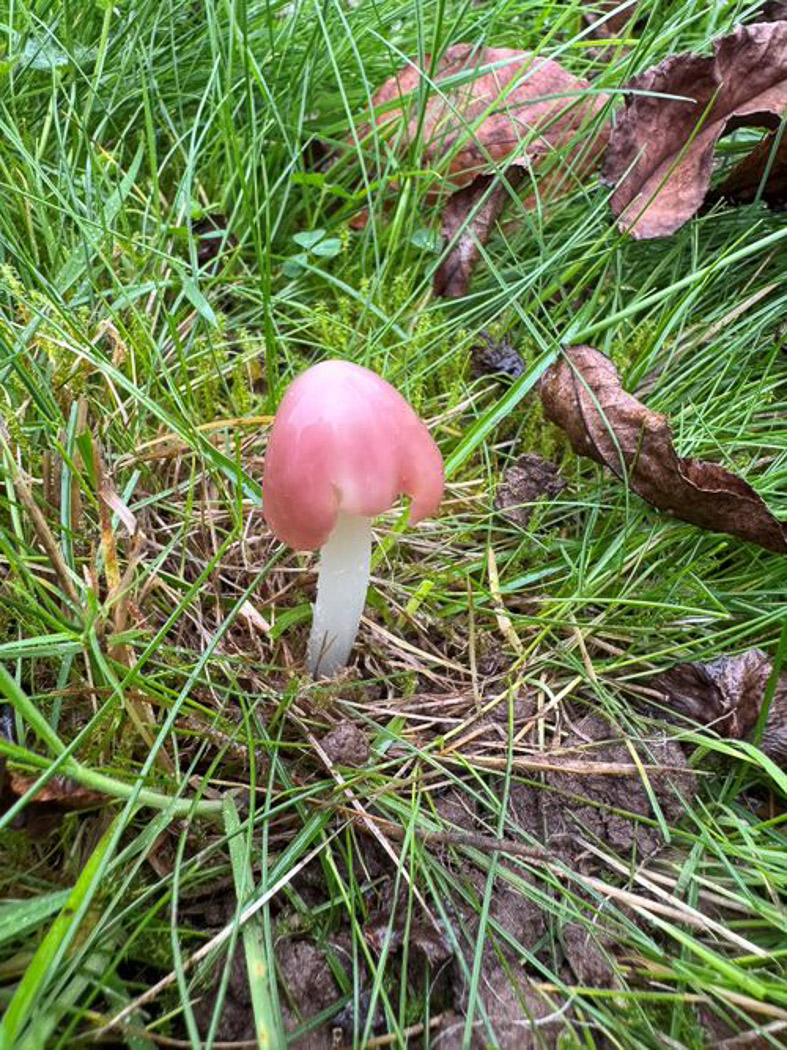
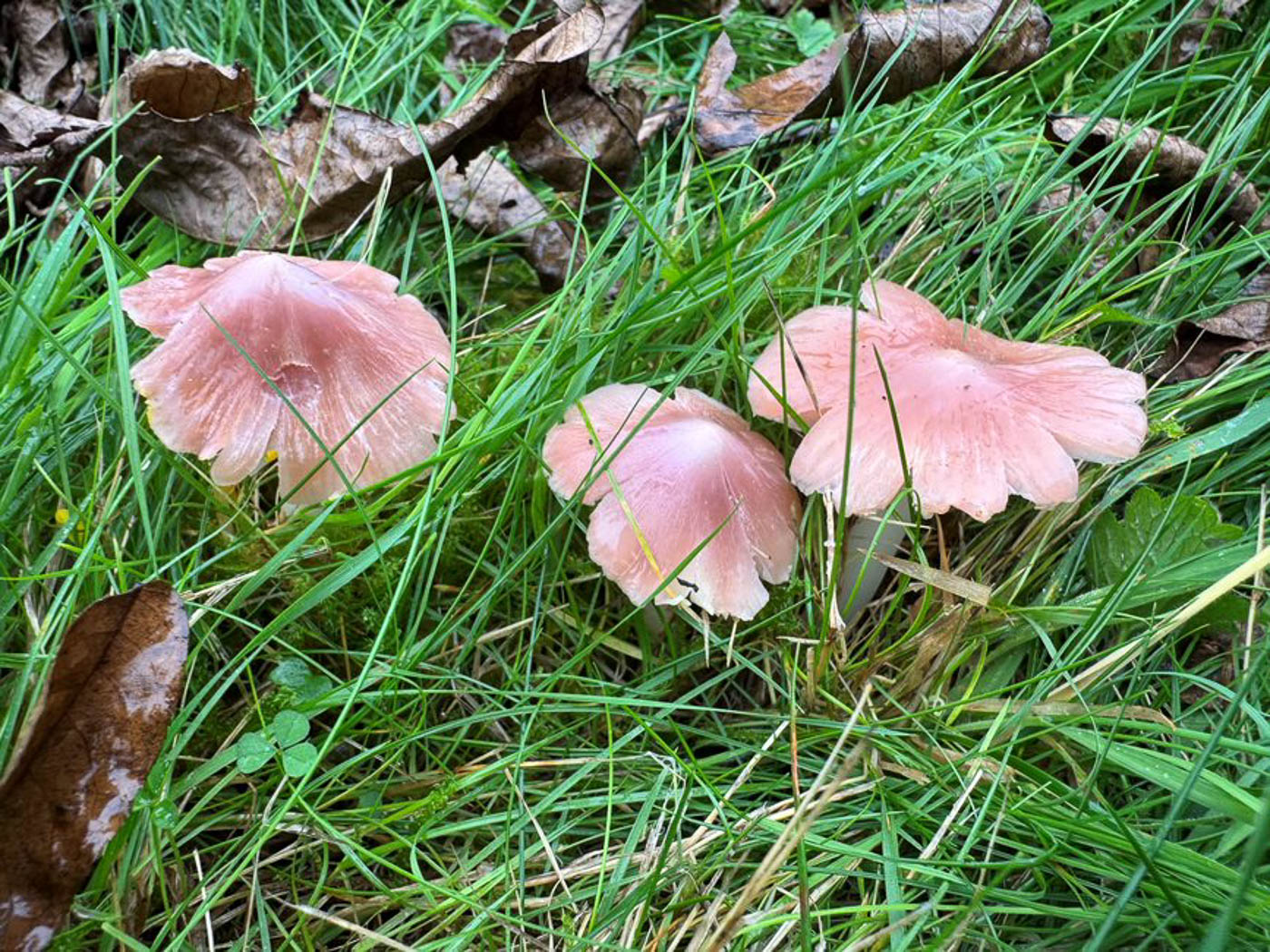
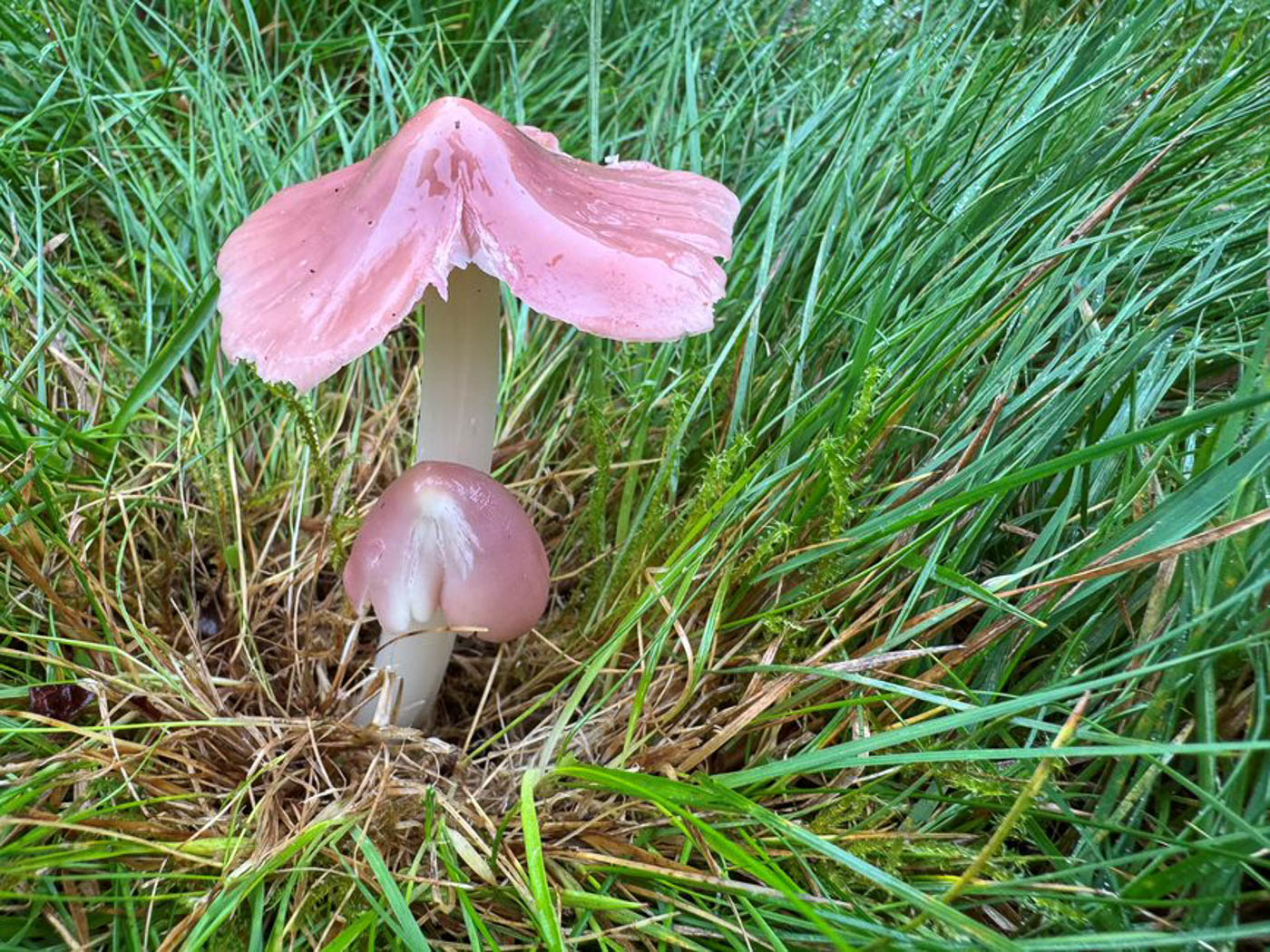

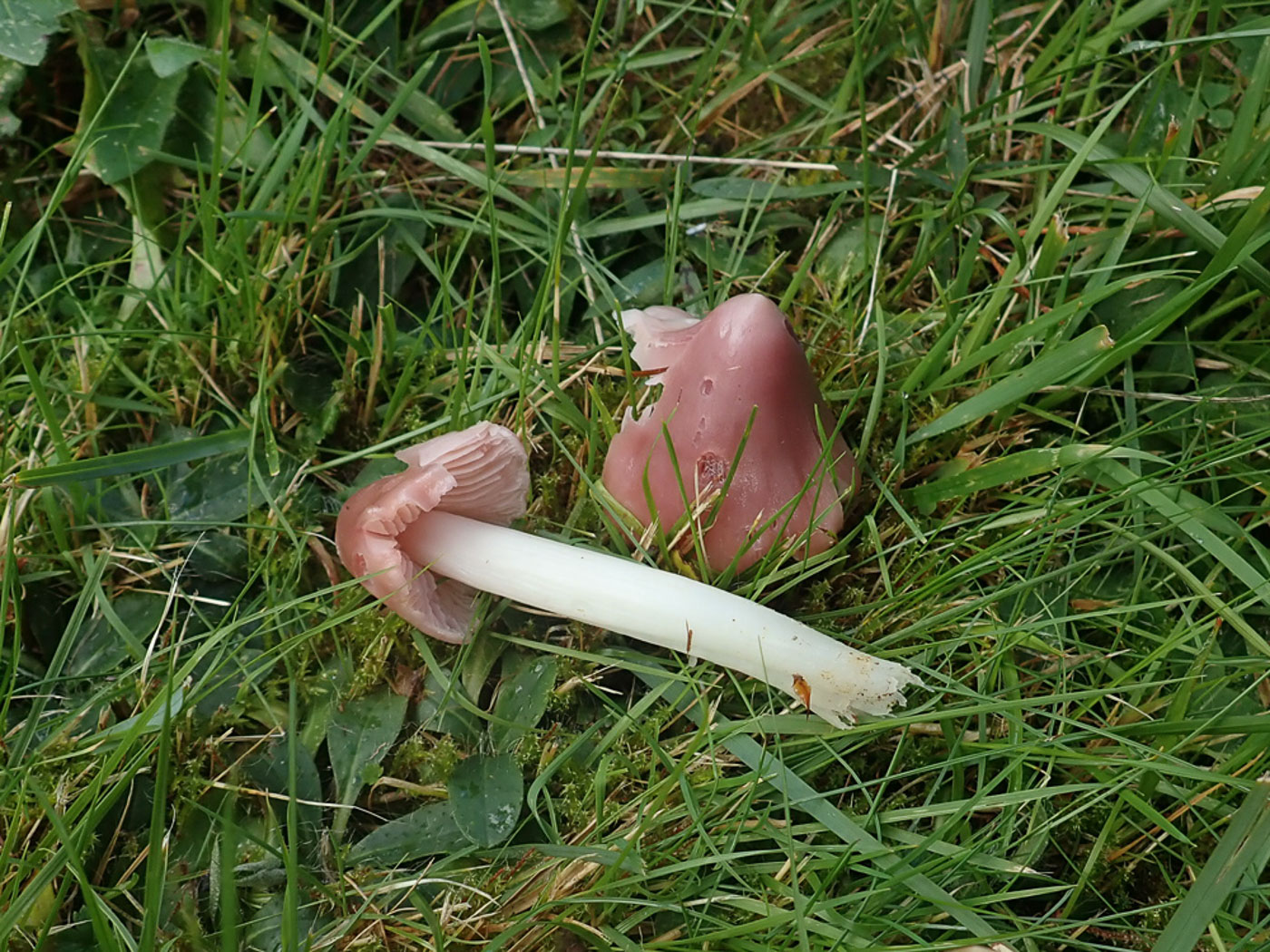





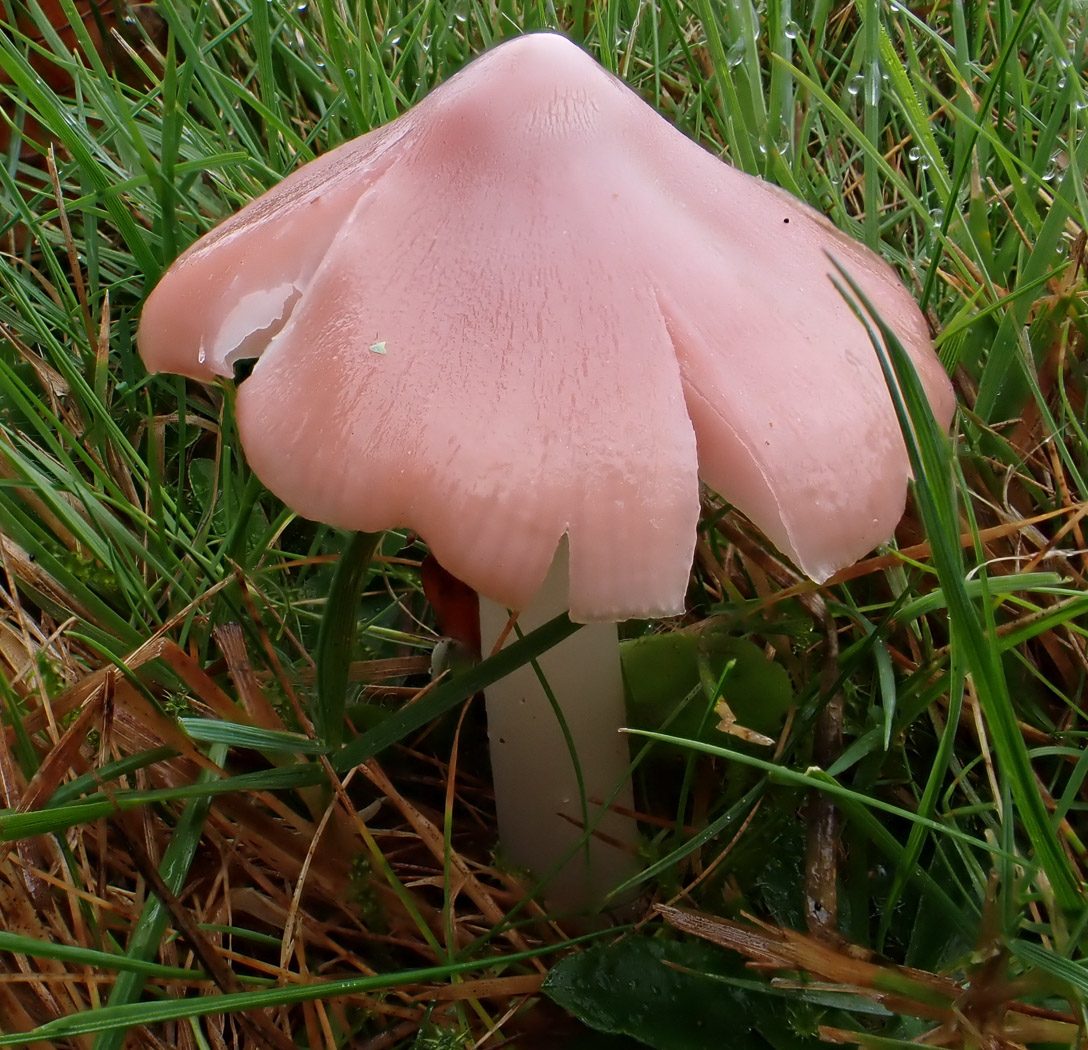
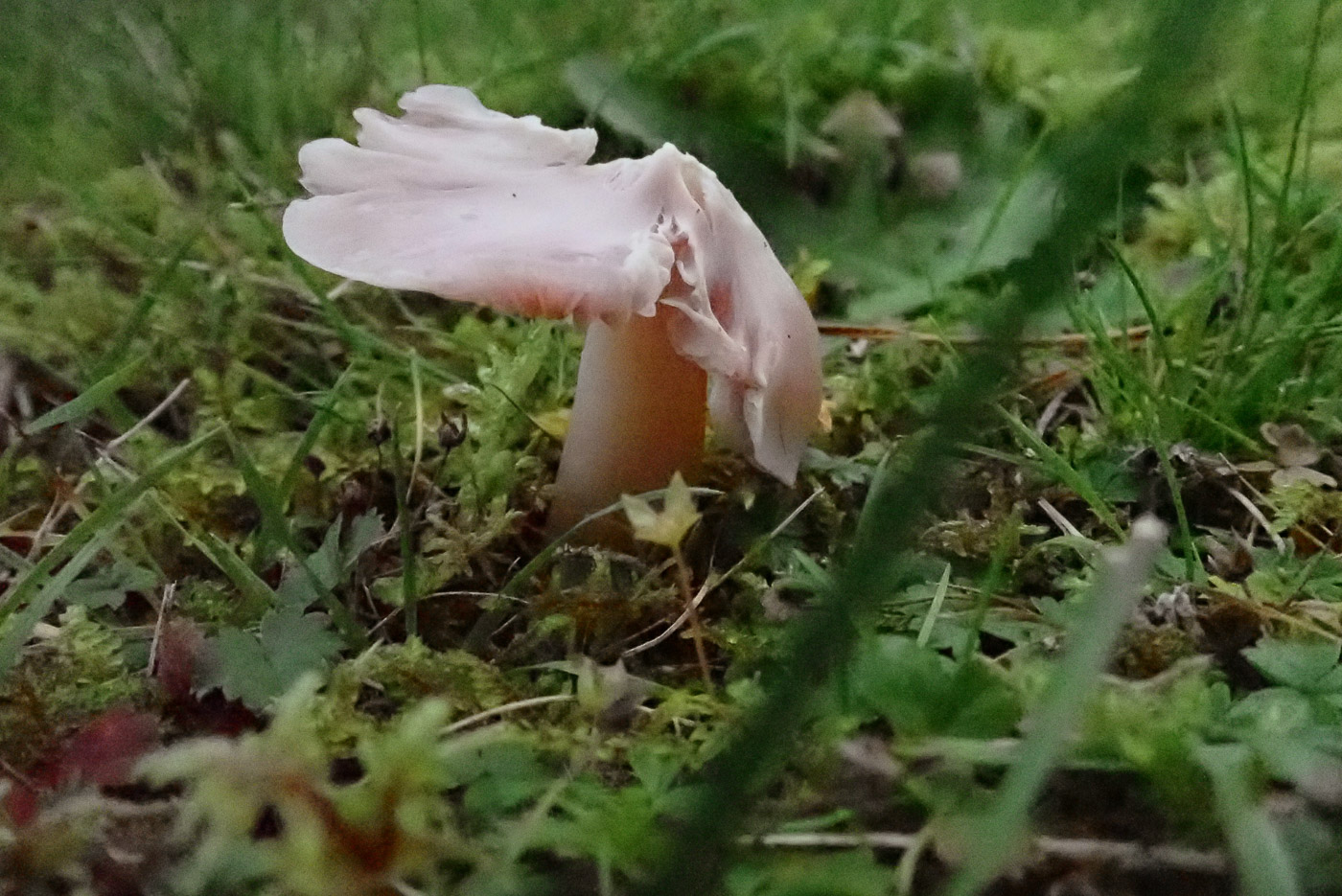 |
Porpolomopsis calyptriformis (Pink Waxcap)
Nov 7, 2024. At Stoke Poges Memorial Gardens our large group was hopeful of seeing this charismatic Waxcap and we were certainly not disappointed. This site is now one of the county's strongholds for the species and there were good numbers on display in its usual spot; we found it elsewhere in the lawns as well. The photos are Leigh McMahon's.
Sep 23, 2024. In Prestwood churchyard Sarah Ebdon was rewarded by finding this beauty. Previously in genus Hygrocybe, a more apt English name is Ballerina, especially as there are now other pink waxcaps, but we'll stay with the official name for now! This species is always considered one of the jewels in the waxcap crown and is not that common though we're lucky enough to have several sites for it in the south of the county. A couple of weeks later when Penny visited this great little grassland site this delightful species was still fruiting (photo 2)
Nov 2, 2023. Today at Stoke Poges Memorial Gardens we were treated to an array of 10 different Waxcap species and though this beautiful and special Waxcap was featured in Finds last week (October 24th) when Penny visited here, Claire Williams' photo today is well worth including.
Oct 24, 2023. At Stoke Poges Memorial Gardens this species if present is always the highlight of any visit, and today Penny found the largest number of fruitbodies she can remember seeing here - stunning! It's such a shame that the attractive common name Ballerina Waxcap has been dropped in favour of the unimaginative Pink Waxcap especially when this is now not the only pink species! It has an acute conical shape to start with which then splits as the cap opens out to form a shape resembling a beautiful ballerina's dress.
Sep 28, 2023. In short grass at Prestwood Churchyard this species was certainly a surprise to Penny today, one of five Waxcaps found and usually a late season fruiter. It is one of our rarer species though regularly comes up at several county sites and has been recorded here before. Its tall stature, graceful conical shape which then expands like a flared skirt, and beautiful pink shade make it unmistakeable. Previously in genus Hygrocybe, it is our only Porpolomopsis Waxcap, and it rather ordinary common name does it no favours; another name was Ballerina Waxcap - sadly not adopted when our list of common names was formalised. See the Masterlist for further examples, all found in late October.
Oct 27, 2022. At Stoke Poges Memorial Gardens in an area of lawn Penny was relieved and delighted to find just three specimens of this rare and beautiful Waxcap fruiting in the same spot where it has now been found for well over 10 years, hardly ever failing. Previously in genus Hygrocybe and also known as the Ballerina Waxcap - in Penny's opinion a better name by far - it is always a pleasure to find.
Oct 30, 2021. Amongst the many Waxcaps at Prestwood Churchyard Penny was pleased to see just one specimen of this particular species (previously in Hygrocybe). Having found it in good numbers recently at Stoke Poges Memorial Gardens she was hoping it might be here today though she'd not seen it here since 2005. Considered a good indicator species for unimproved grassland the species is quite rare and we have just four other county sites though at one of these - Penn Cricket Pitch, Churchyard and Vicarage Lawn - it a seems to be becoming much less frequent in recent years.
|
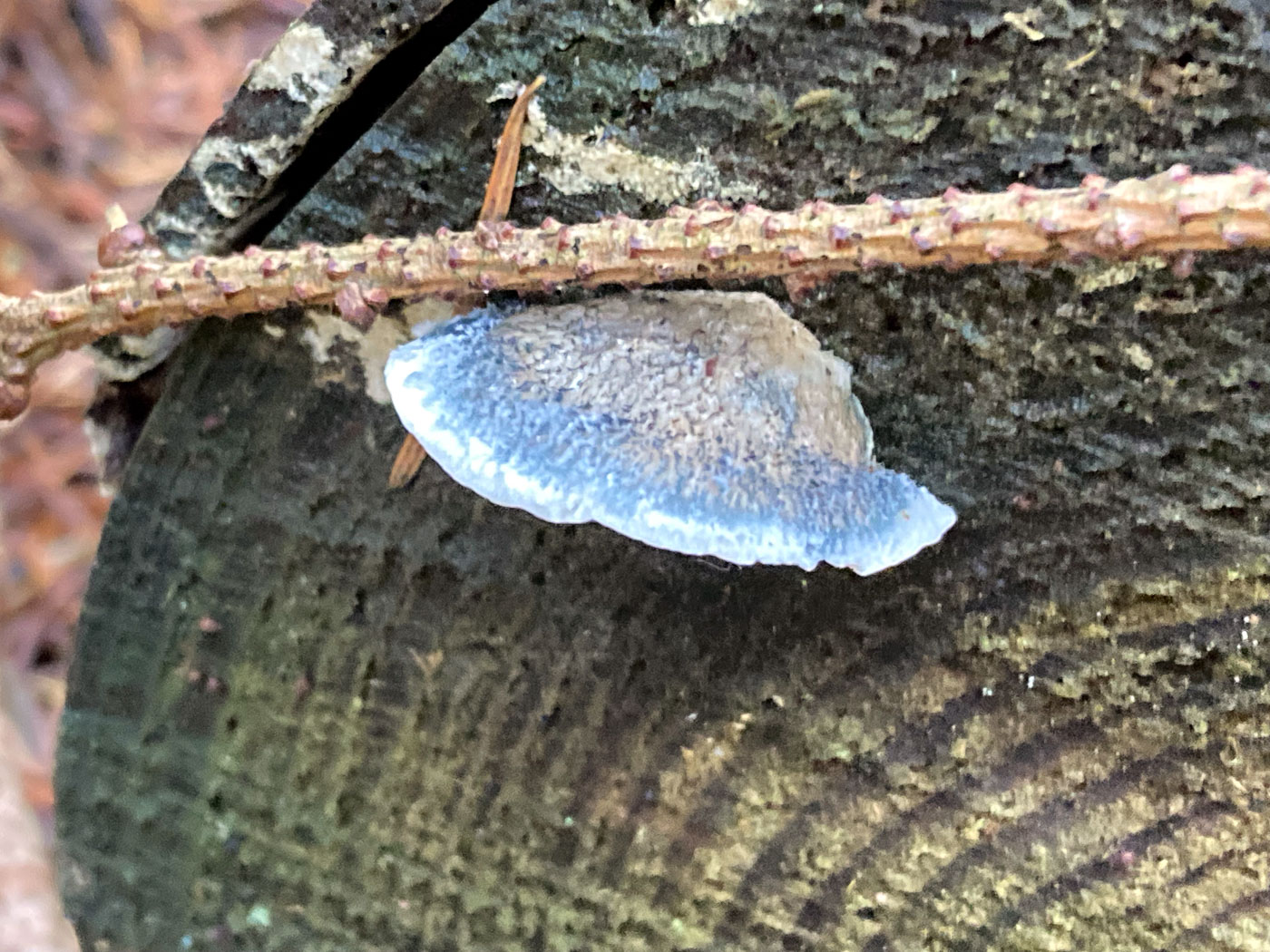
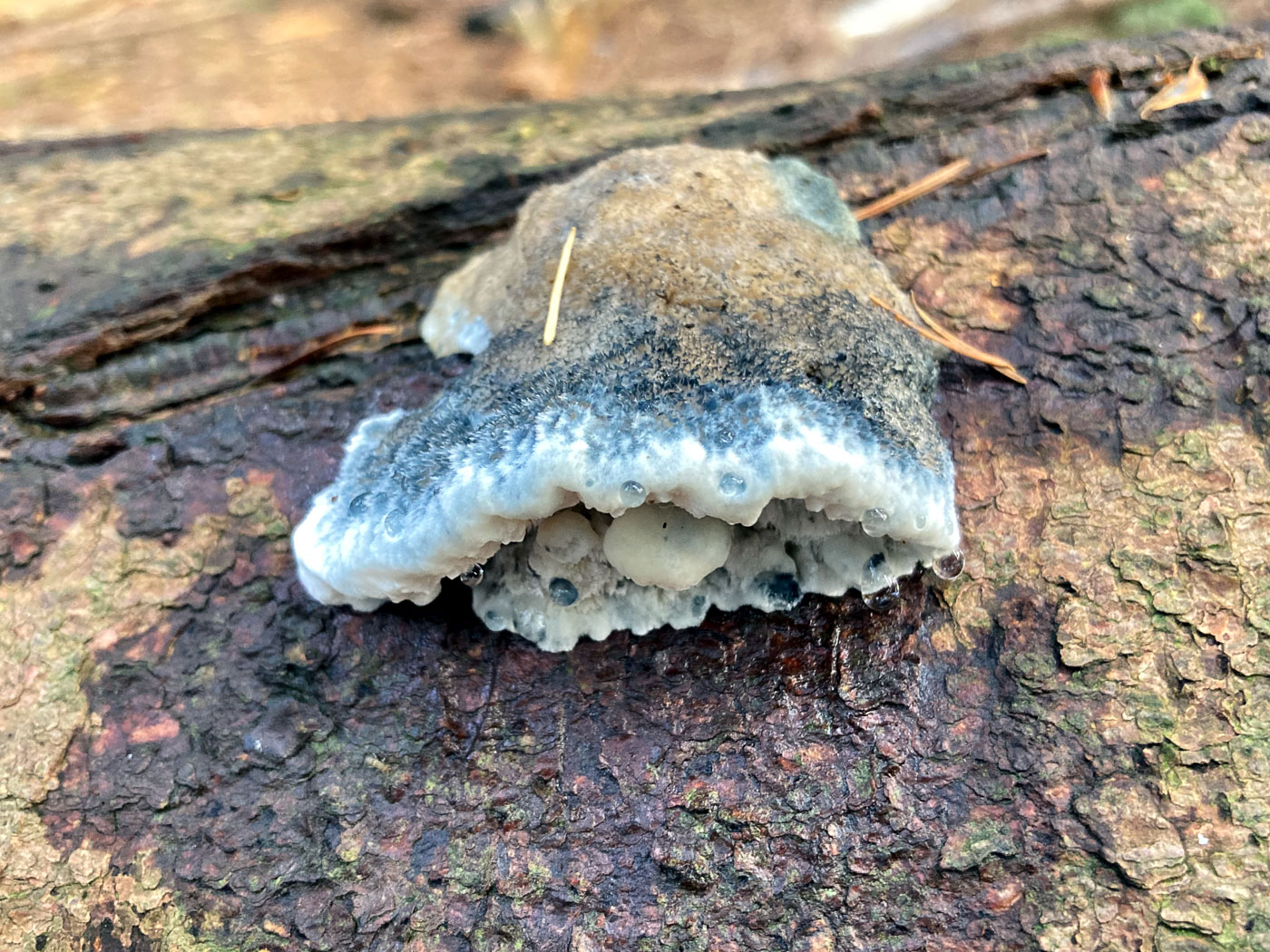
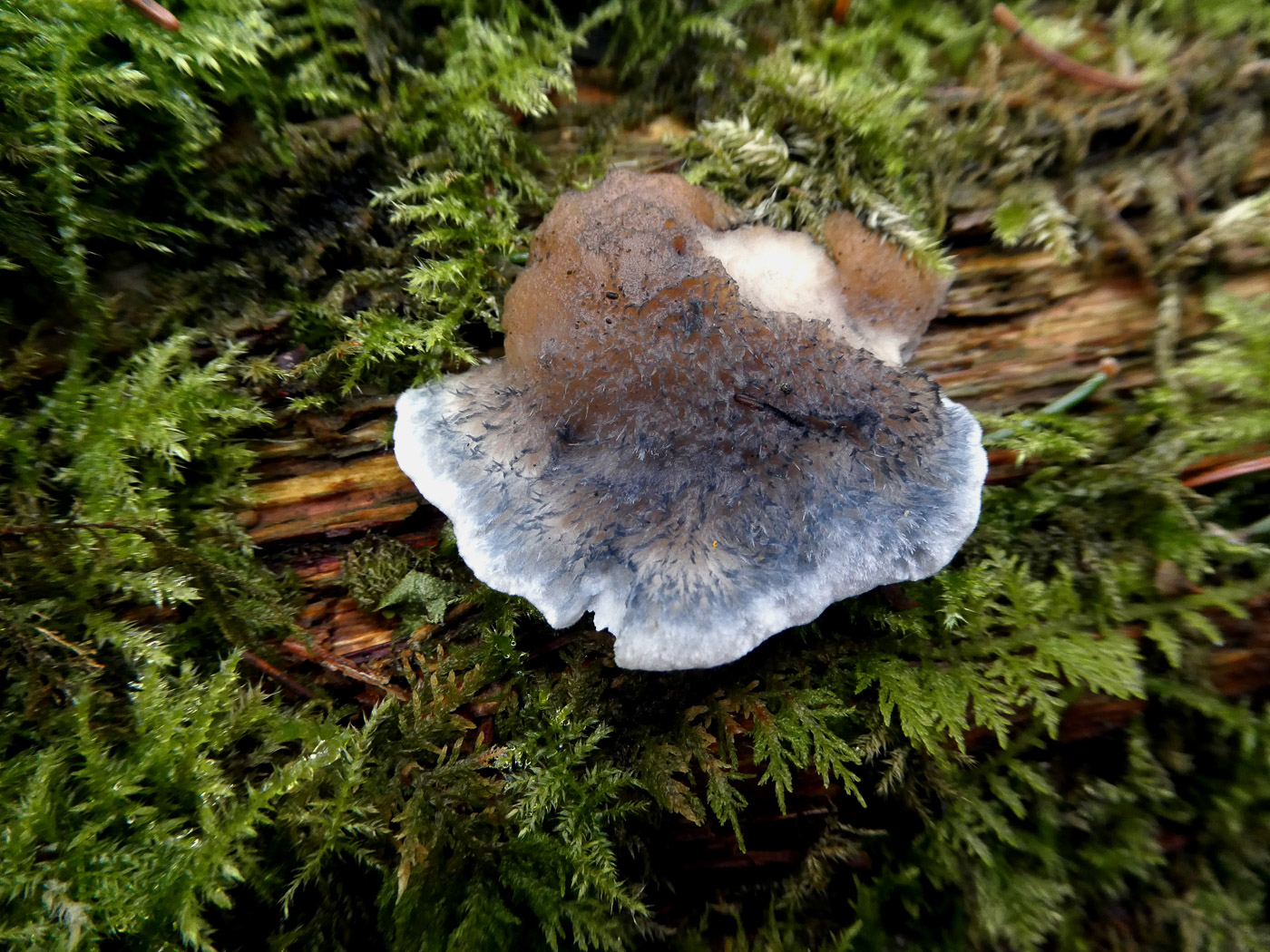
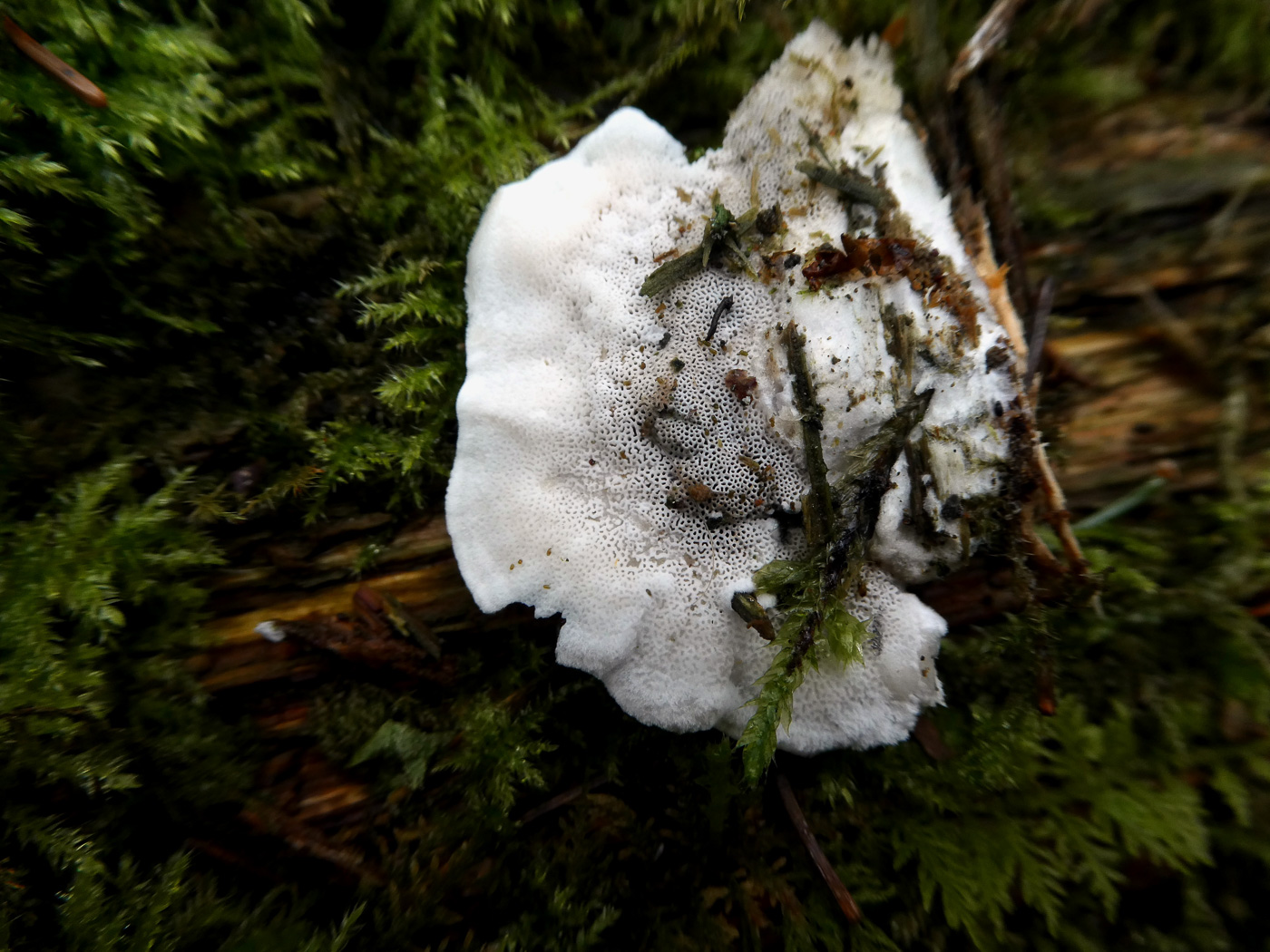
|
Postia caesia (Blueing Conifer Bracket)
Nov 26, 2022. In Hunts Wood near Taplow Russell Ness found these nice examples on fallen conifer. Many fungi are looking pretty bedraggled and well past their sell-by date at the moment - end of season and a lot of rain too - so anything looking reasonable, as do these brackets, tends to catch the eye and prompt the camera out of the pocket.
Oct 10, 2020. On the edge of a Spruce plantation in Gussetts Wood Penny Cullington found this bracket on a fallen trunk. The genus Postia forms soft quite small thick brackets on fallen wood; they have very small pores and are either white to cream or have a tinge of blue. Some only grow on conifer, some only on deciduous wood, so it's important to notice the host tree for identification. Today's species is an easy one to name with its distinctive blue edge and occurrence on conifer.
|
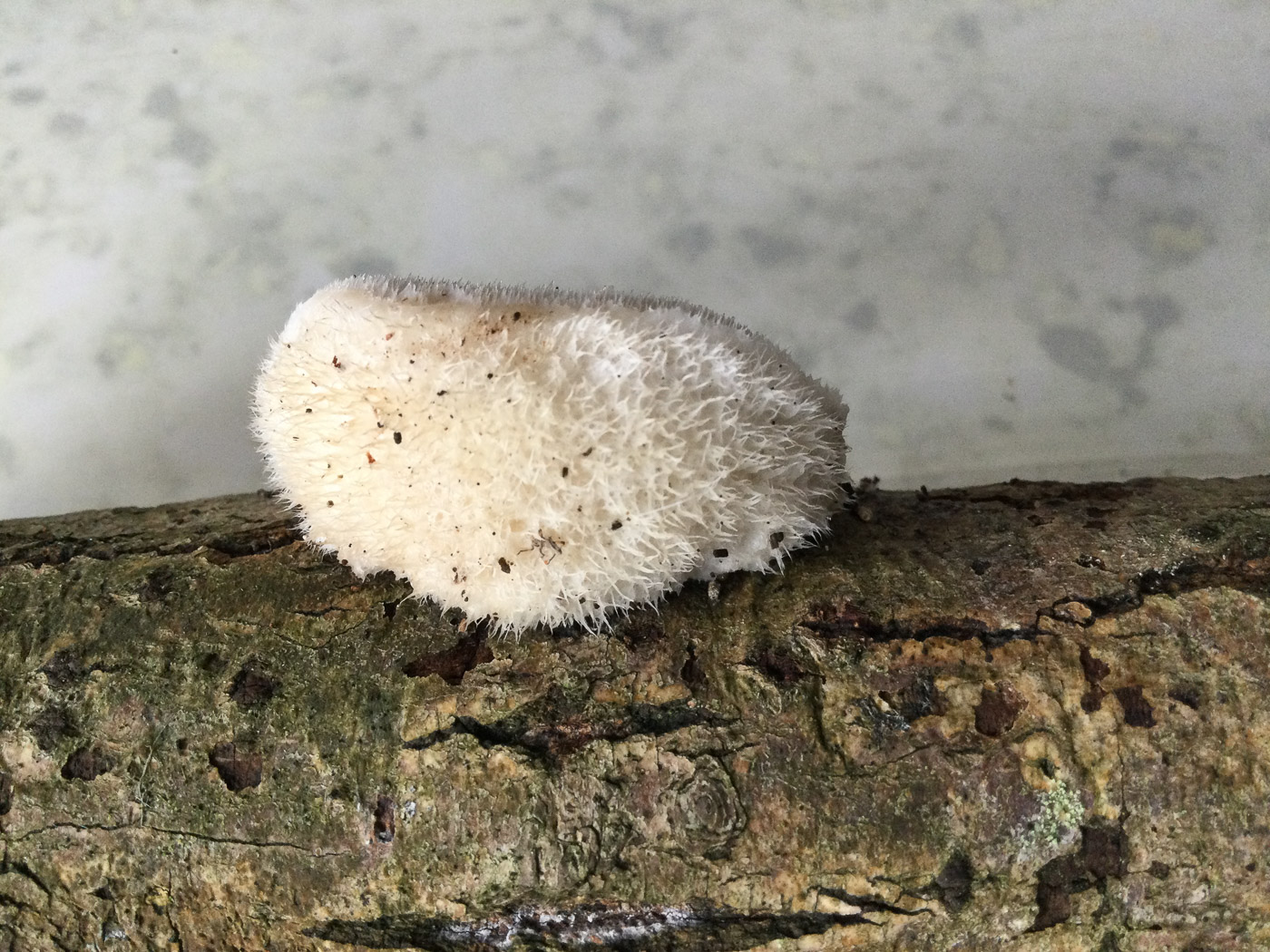
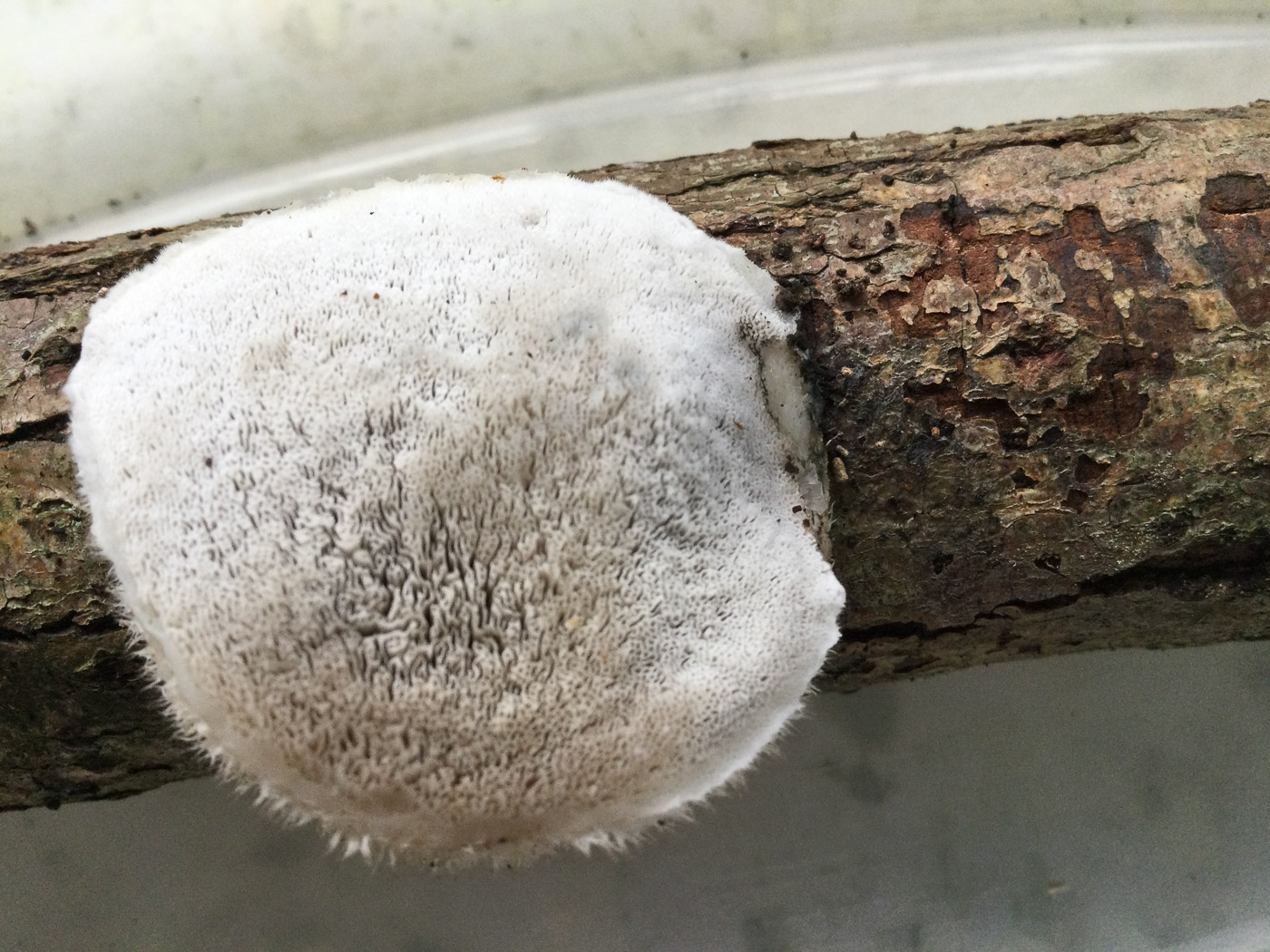
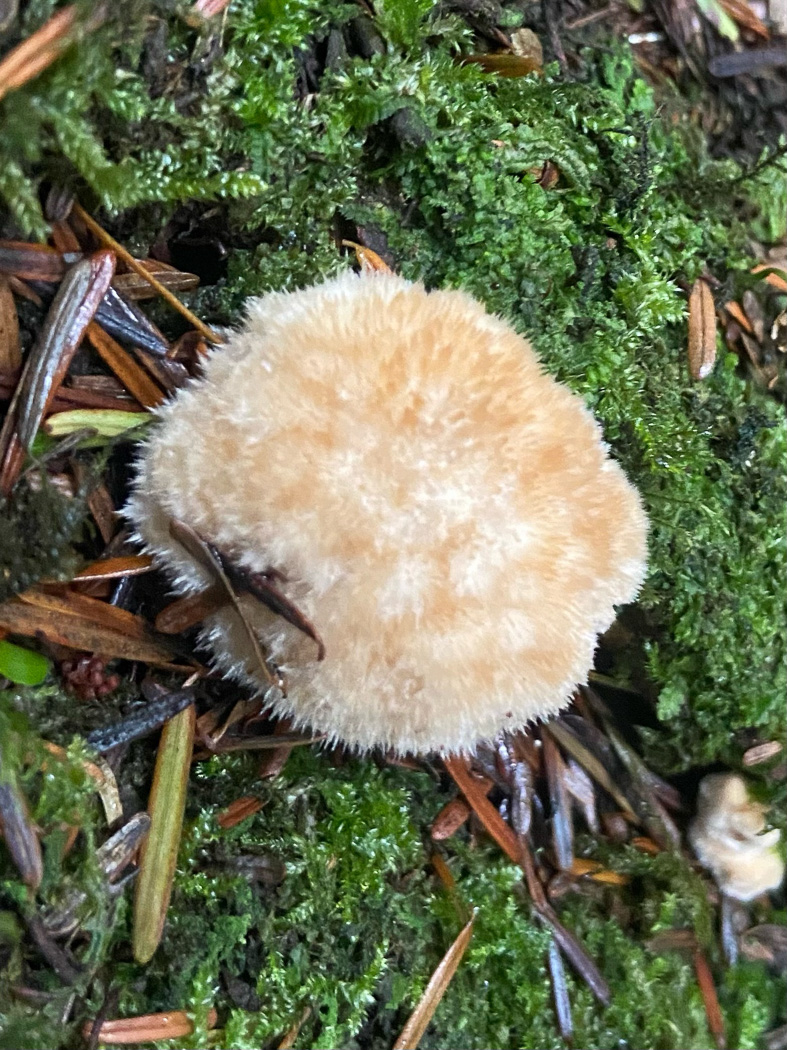
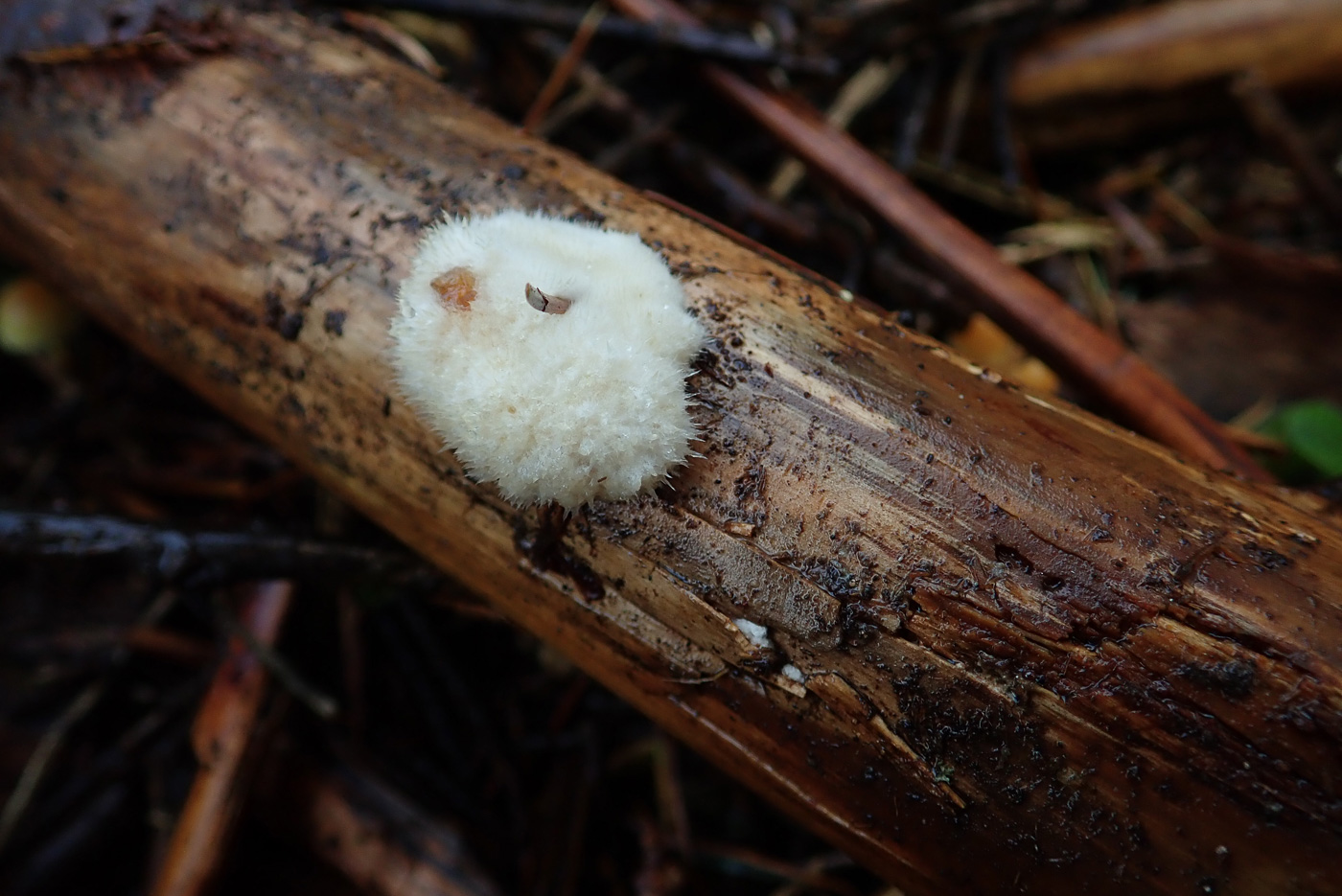
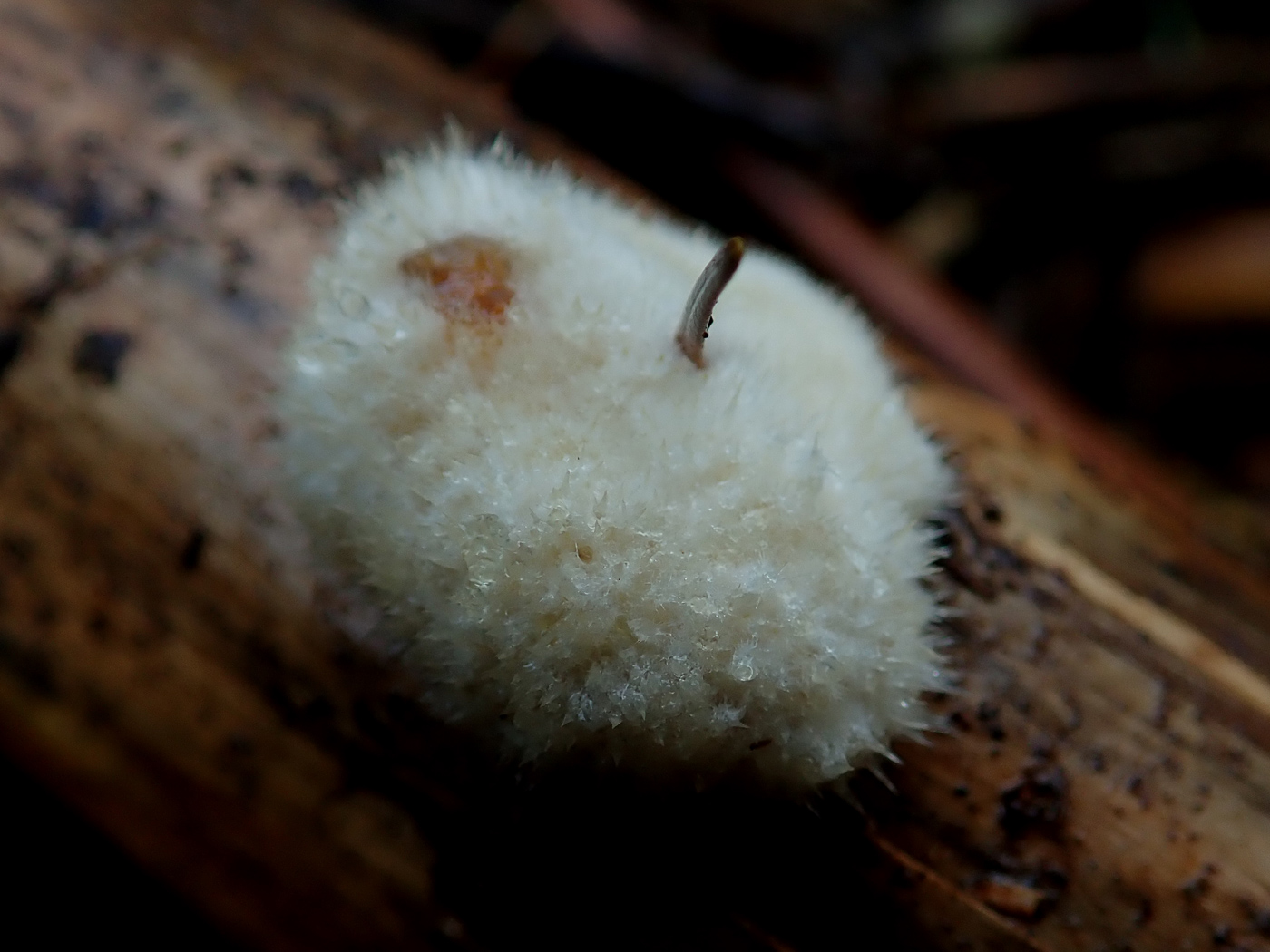 |
Postia ptychogaster (Powderpuff Bracket)
Oct 25, 2024. At Little Marlow gravel pit David Corfield noticed these fluffy pompoms on fallen conifer, wondered what they could be and sent his photos to Mick Jones for any ideas. Mick was able to identify them and sent his photos on to Penny for confirmation. This is not a typical bracket - as is obvious from its appearance - but is the resting stage of the fungus when full of chlamydophores (asexual spores). However, it is rare to find this fungus in any other state!
Oct 14, 2022. In a conifer plantation near Gt. Hampden Sarah Ebdon noticed and identified this unusual fungus which is only found on fallen conifer. Aptly named, the fruitbodies are about 2 inches across, have a pinkish glint and are covered in copious silky hairy spikes. If found there is little doubt over its identity - nothing else looks quite like it. (The Latin species name is pronounced Tie-co-gaster!)
Oct 27, 2020. Penny C. noticed this single fluffy mound on a fallen Spruce branch near Ibstone. This is an early sterile stage of a bracket which can quite often be found on stumps and fallen bare wood of conifer and these fluffy round mounds can get to a good size and sometimes have oozing droplets. Today's was small, only about 3 cms across.
|

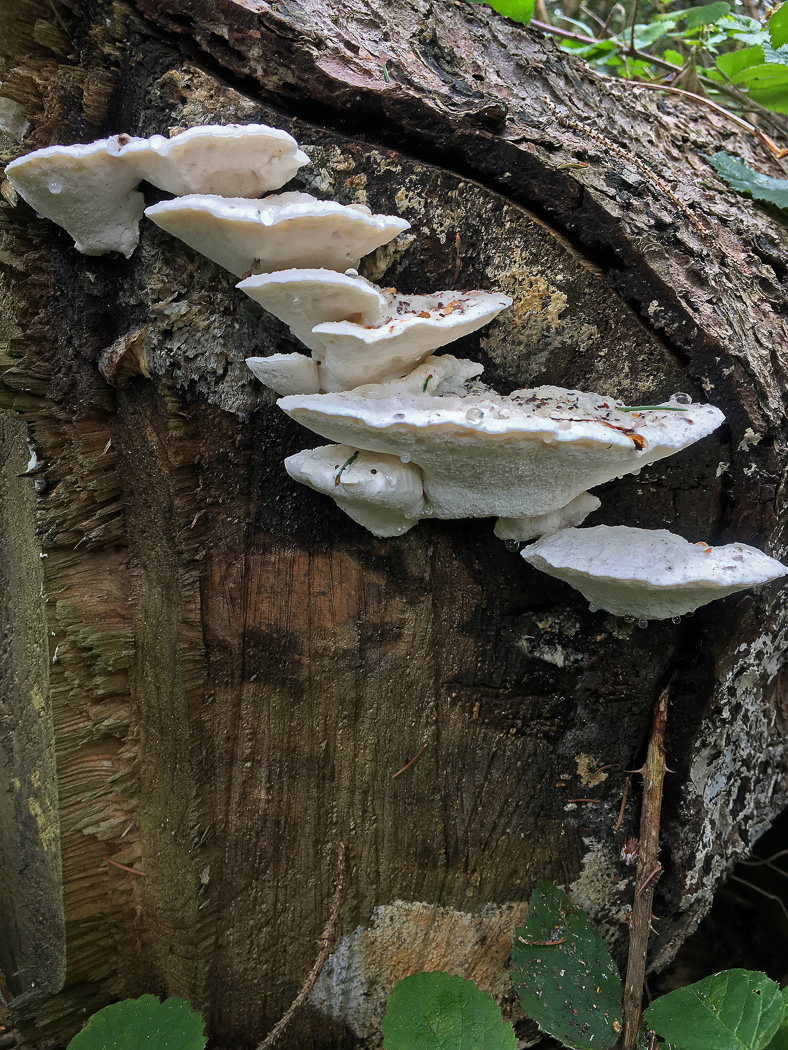
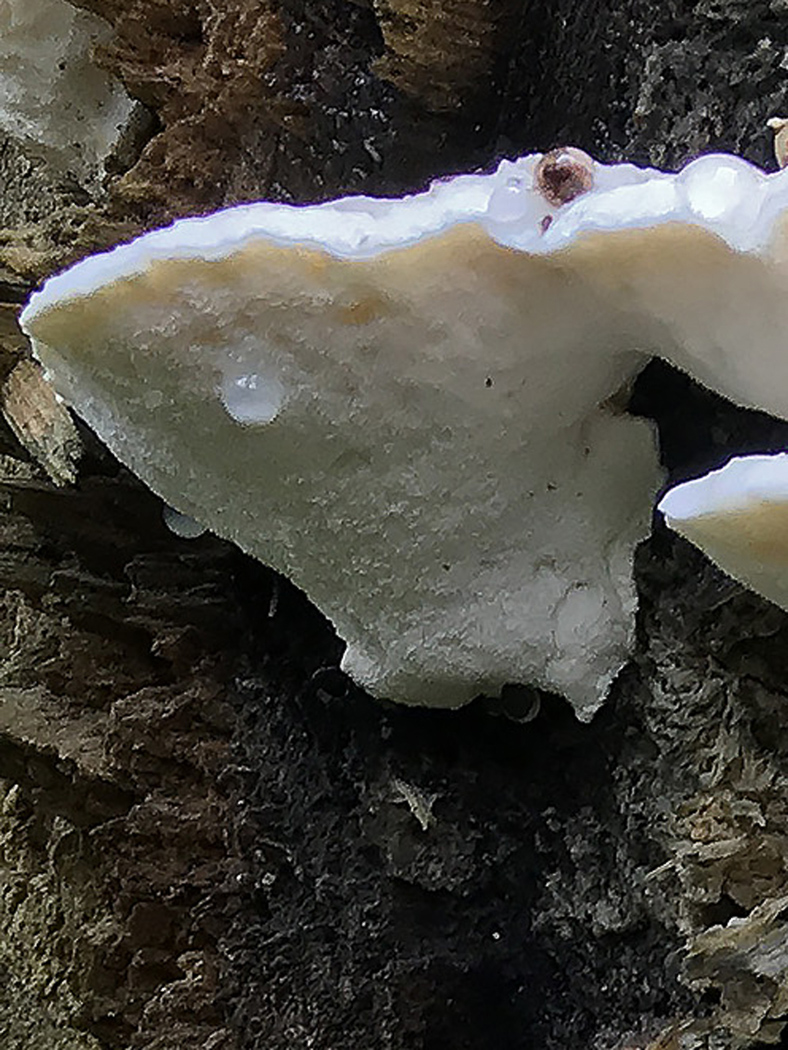 |
Postia stiptica (Bitter Bracket)
Aug 30, 2023. In Bernwood Forest Penny and Paul came across a mossy Spruce stump liberally dotted about with pure white half-moon brackets up to about 5cm across with tiny pores beneath. Penny took a small bite to confirm the bitter taste before naming it in the field. The species is one of several white brackets this shape and size but is by far the commonest, occur only on conifer wood.
Sep 4, 2020. Derek Schafer found this bracket growing on conifer in Stoke Grove Park - a site straddling the Bucks / Beds border though this was just over the border. It can be found on various conifers, usually on fallen wood and is extremely bitter to taste - hence its common name. There are other very similar species with which this can be confused, especially if the fallen wood cannot be identified safely (often the case). If in doubt, take a nibble then quickly spit it out! If bitter you have this species but if not then the wood is probably deciduous in which case you have another species!
|

 |
Postia subcaesia (Blueing Bracket)
Aug 4, 2023. In Hodgemoor Woods Penny found this distinctive and quite common bracket, here on bare fallen Elder. Though the upper surface is not as intensely blue as in the closely related P. caesia (which occurs on fallen conifer) the colour makes this an easy ID though the pores beneath usually lack much blue - here there is a hint of blue, however. Surprisingly this appears to be a new entry for Finds.
|
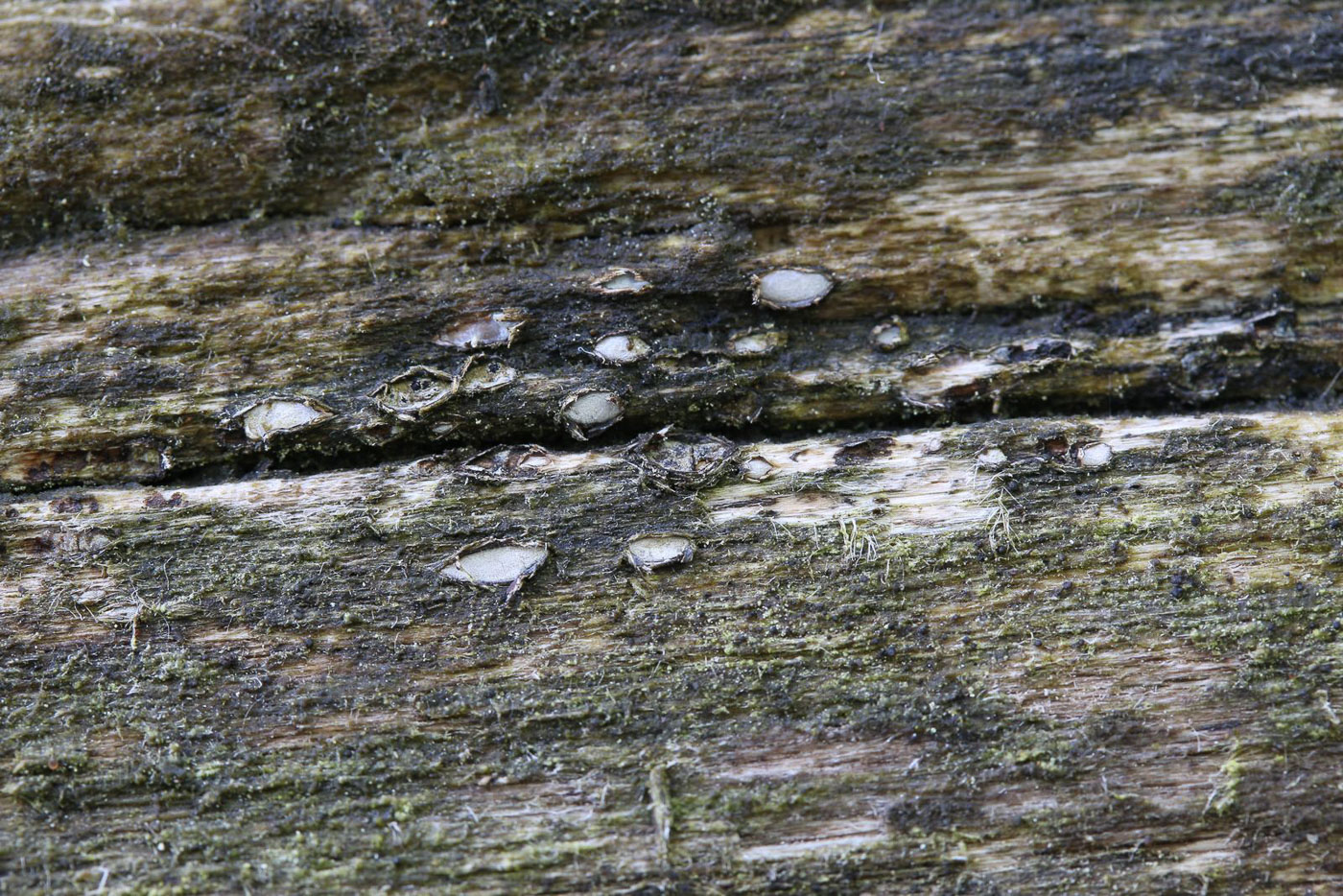 |
Propolis farinosa (an Ascomycete with no common name)
May 19, 2021. At Burnham Beeches Kerry Robinson found this tiny species - each less than 1cm across - on rotting damp bare deciduous wood typically emerging through the surface with flakes of the substrate attached at the margin. Though not uncommon this is new to the site and to the county (yet more proof of the lack of Asco specialists recording in Bucks!) (Photo Claudi Soler)
|
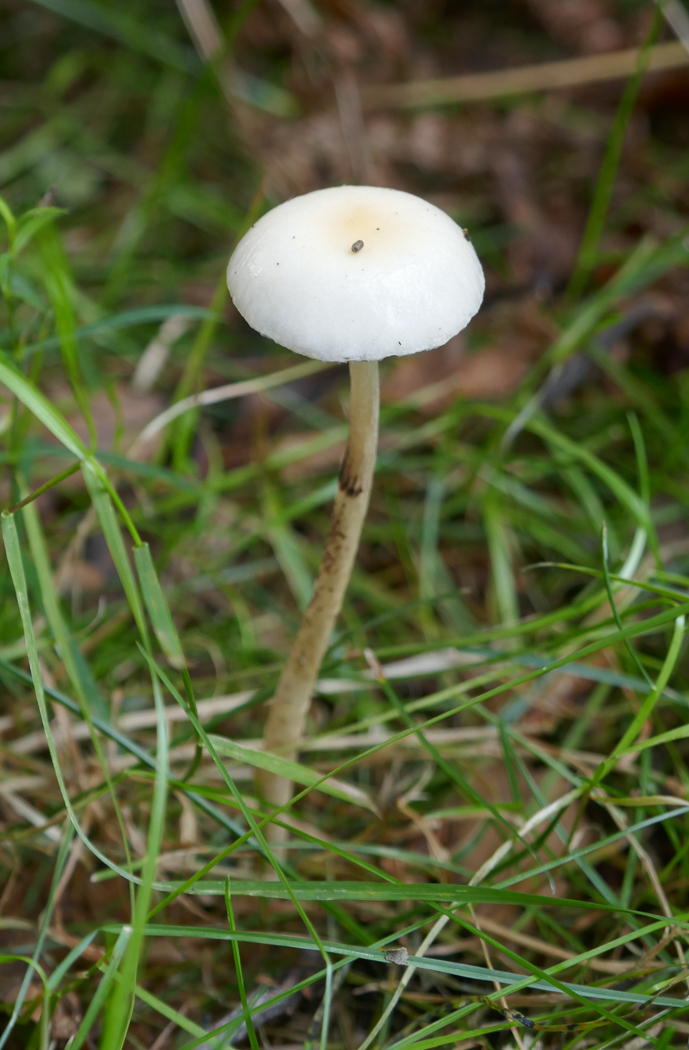
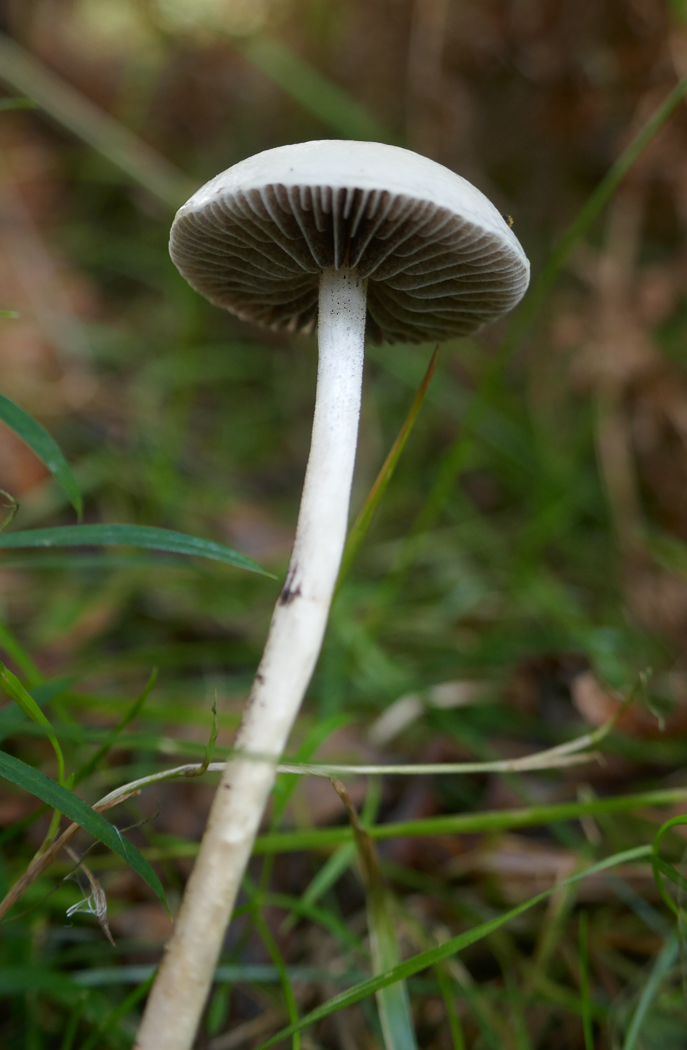
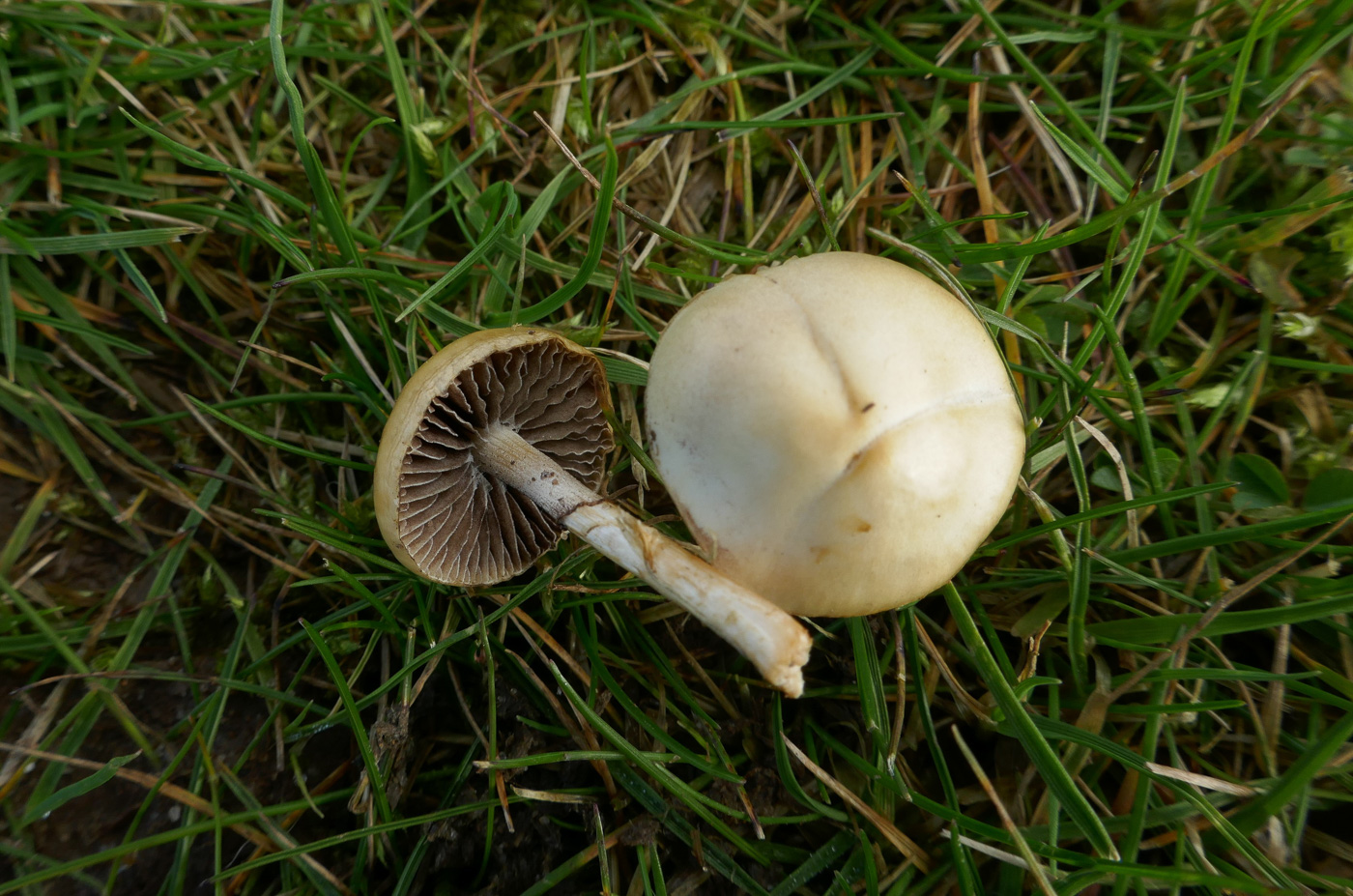
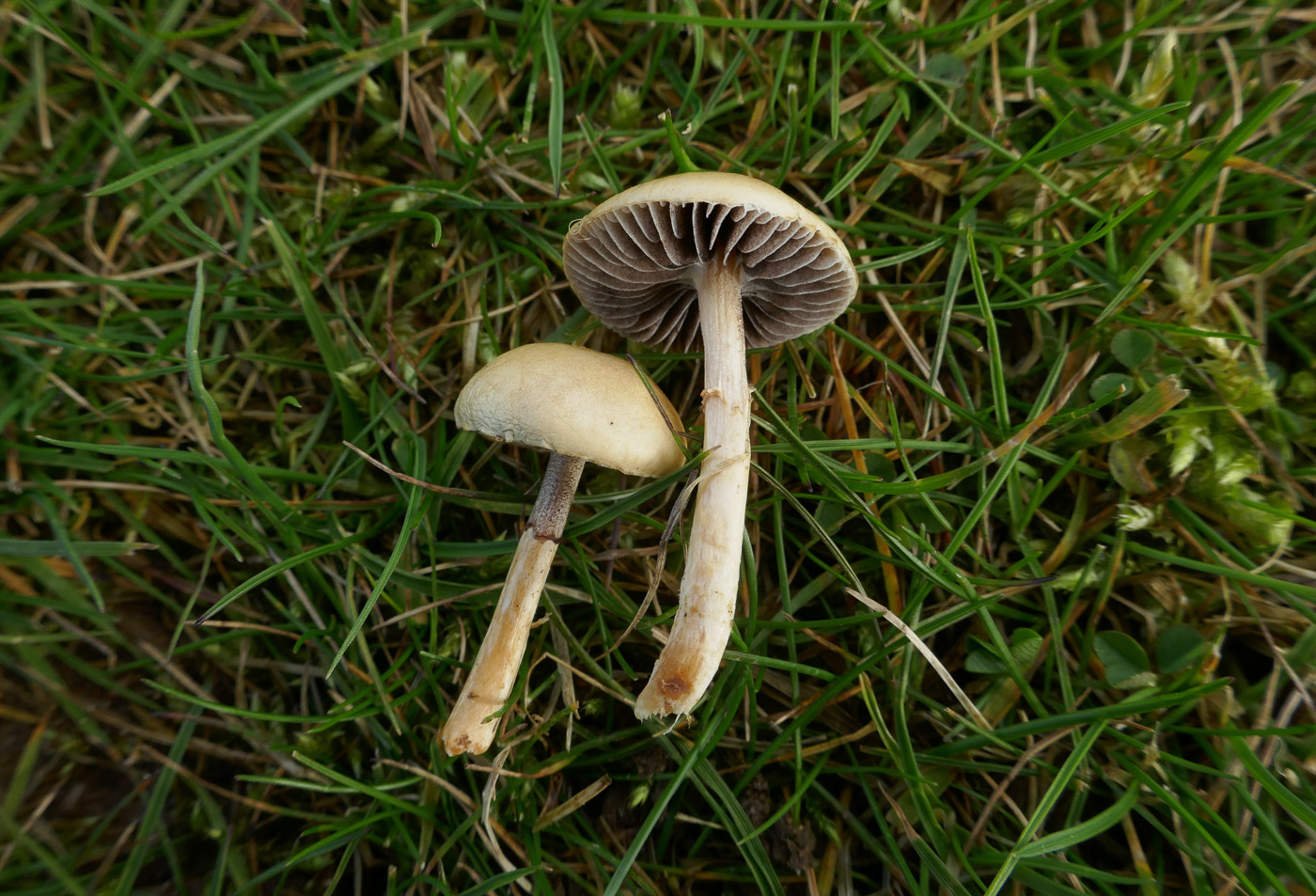 |
Protostropharia semiglobata (Dung Roudhead) 
Sep 9, 2024. At Stampwell Farm Jackie Ewan noticed this singleton on some dung. This common grazed grassland species was previously in genus Stropharia though at least its English name remains constant to lesson the confusion when this happens.
Feb 11, 2022. At Stampwell Farm in a grassy area inhabited by rabbits Jackie Ewan found these mushrooms (not obviously on dung but no doubt on old rabbit droppings). The species (better known as Stropharia semiglobata) has a smallish yellow ochre rounded sticky smooth cap with a peelable cuticle, greyish gills and a thin sticky stem having a ring - often coloured from the dark spores but which soon disappears. It occurs commonly on assorted dung or dung remains.
|

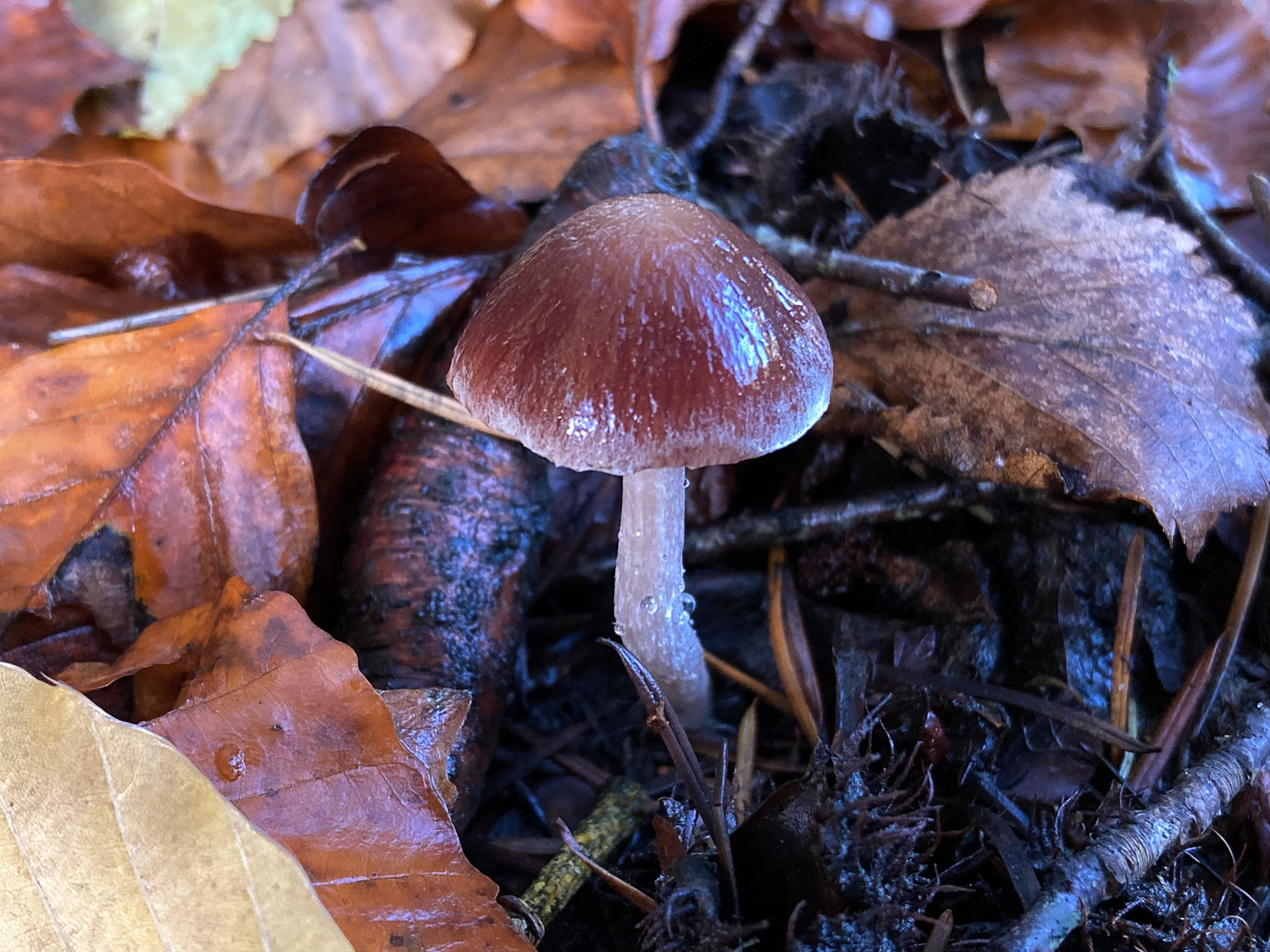
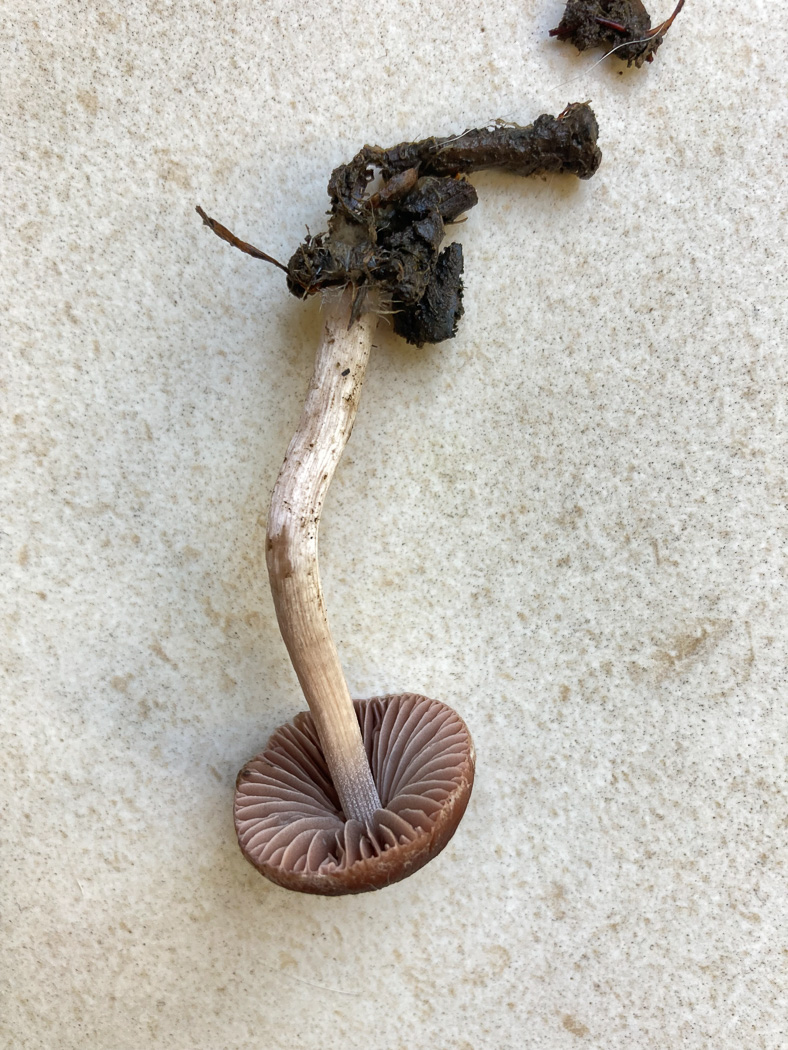
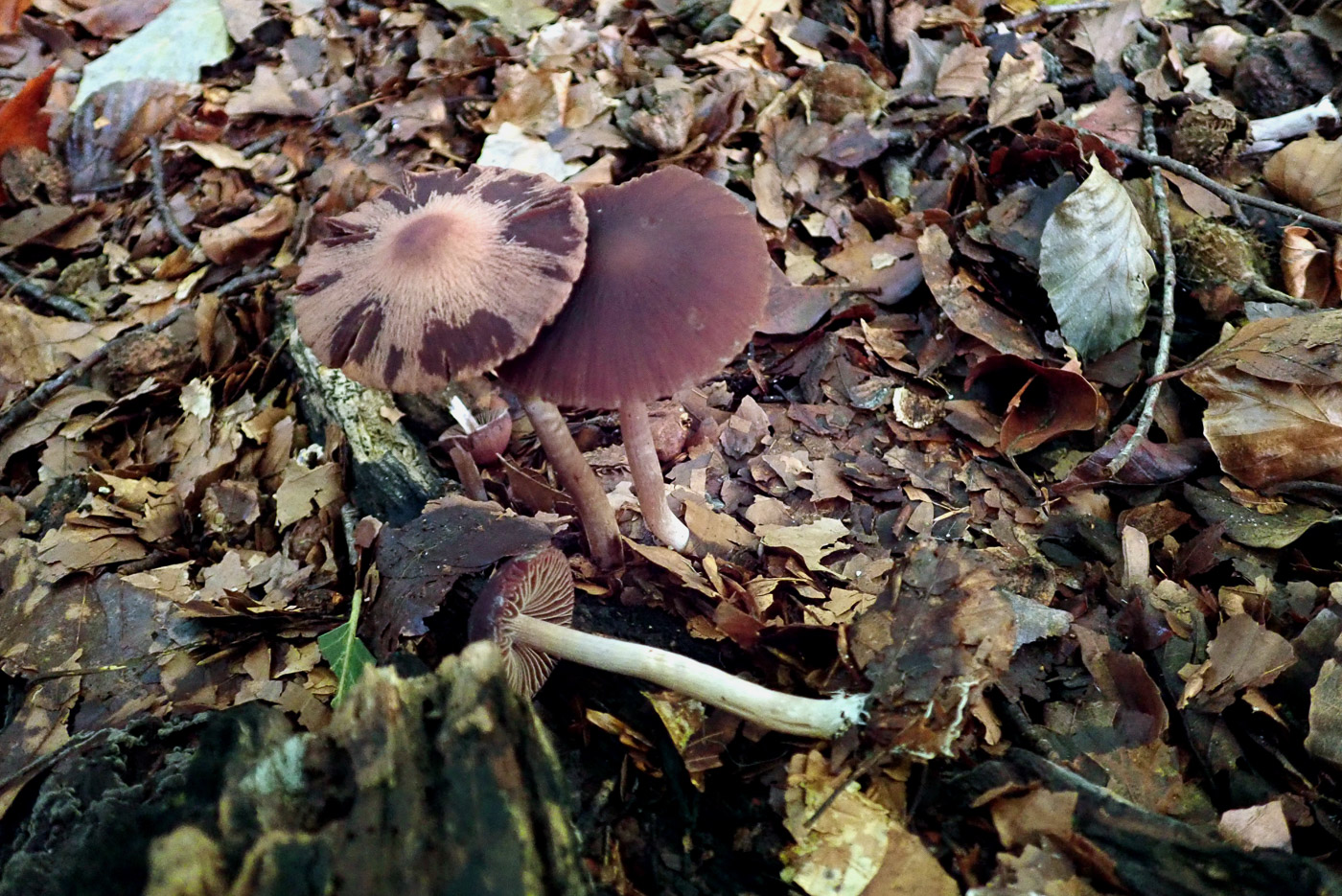
|
Psathyrella bipellis (an unusual Brittlestem with no common name) 
Mar 25, 2023. At Stoke Common in a large heap of rotting vegetation - a mix of Bracken and Gorse - Penny was pleased to notice this little collection of Brittlestems coming up and in good condition. The species is not renowned for fruiting at this time but is quite a distinctive one in the field, having a cap tinged a rich purple brown before it fades as it dries out. Having recognised it from its colour and shape, she was able to confirm the ID from spore size and the abundance of correctly shaped cells all over the gills. We have records from a handful of other county sites but this was a first for Stoke Common and for this time of year.
Nov 20, 2022. At Cliveden Russell Ness found this singleton and was stuck for a genus until a sporeprint at home revealed large dark spores and the cap started to dry out, become paler and develop the typical wrinkling of this unusual species. Apparently there was also a notably strange smell reminiscent of cat urine which helped to confirm his ID together with the distinctive microscopic features he found.
Oct 11, 2020. Penny Cullington was delighted to see this attractive and relatively rare Brittlegill in Beech litter in Pullingshill Wood - a new site for it. Brittlegills are generally not the most appealing or beautiful species but this one is definitely the exception and also recognisable in the field once you get to know it. The rich purple brown cap colour is striking and unusual not just within the genus but generally amongst mushrooms, though it is markedly hygrophanous (fades as it dries out), seen here in the higher of the two caps and leaving in this particular case rather a bizarre two-tone effect. The species also has peculiar smell said to be of peppermint or unpleasant like urine!
|


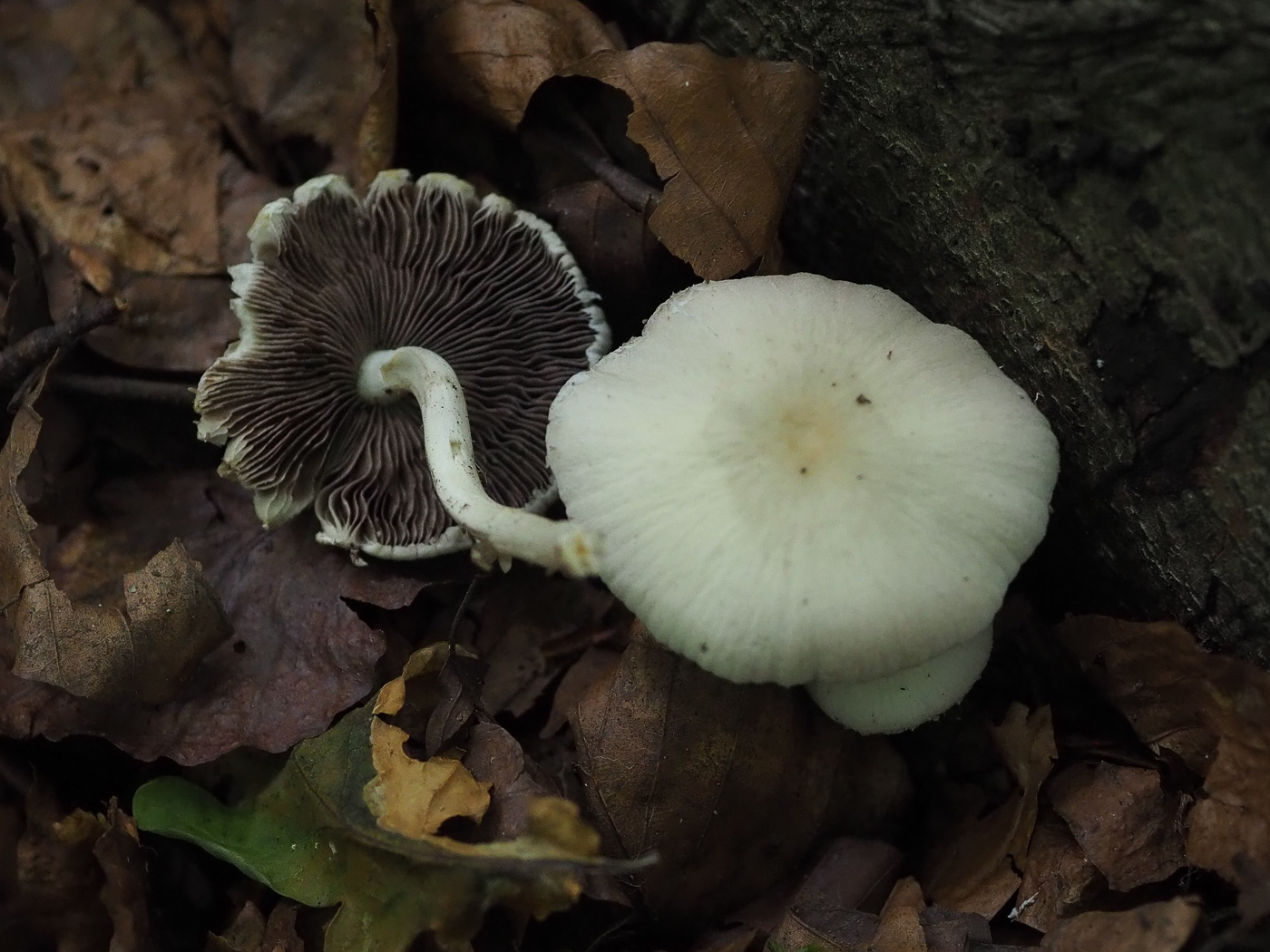
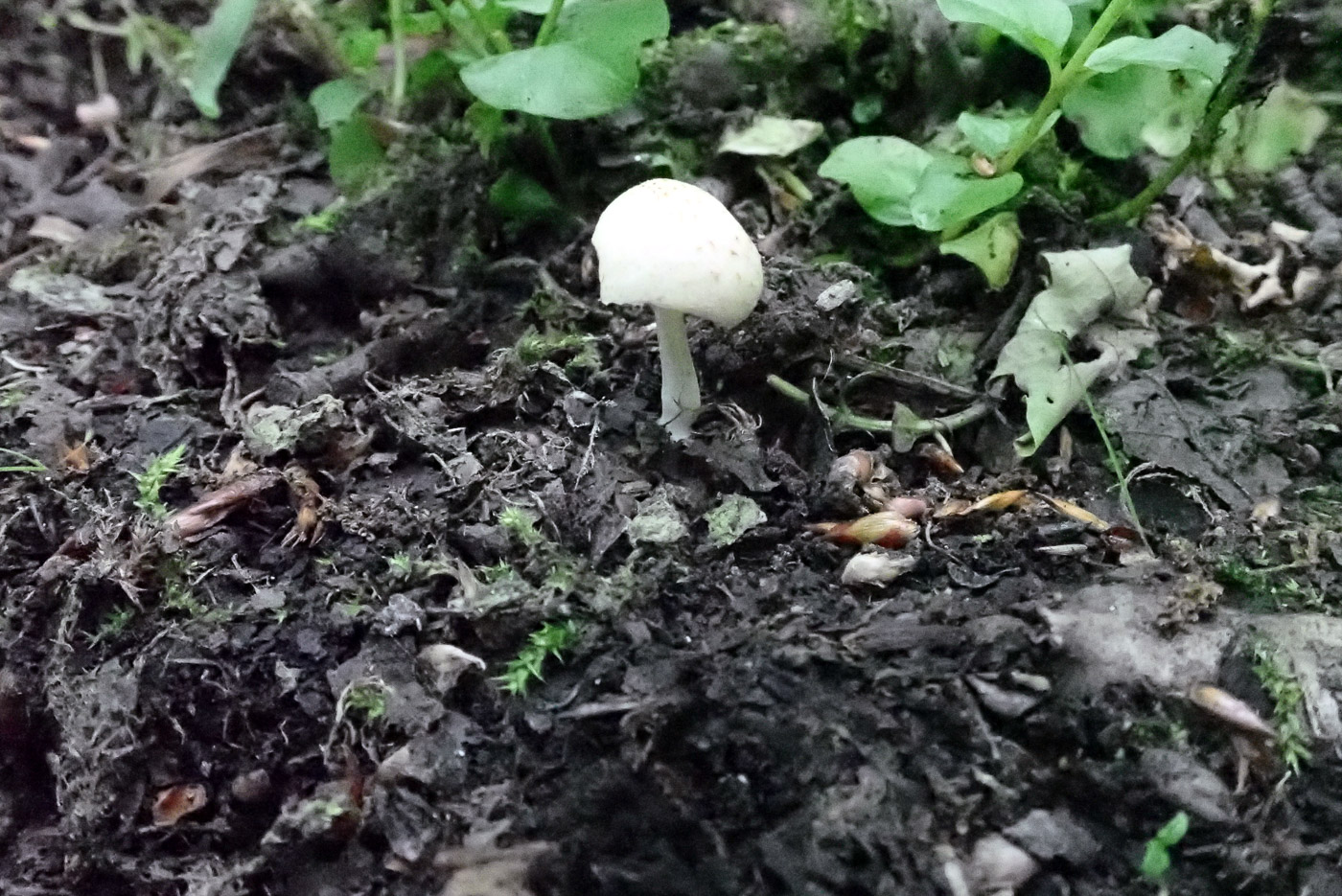
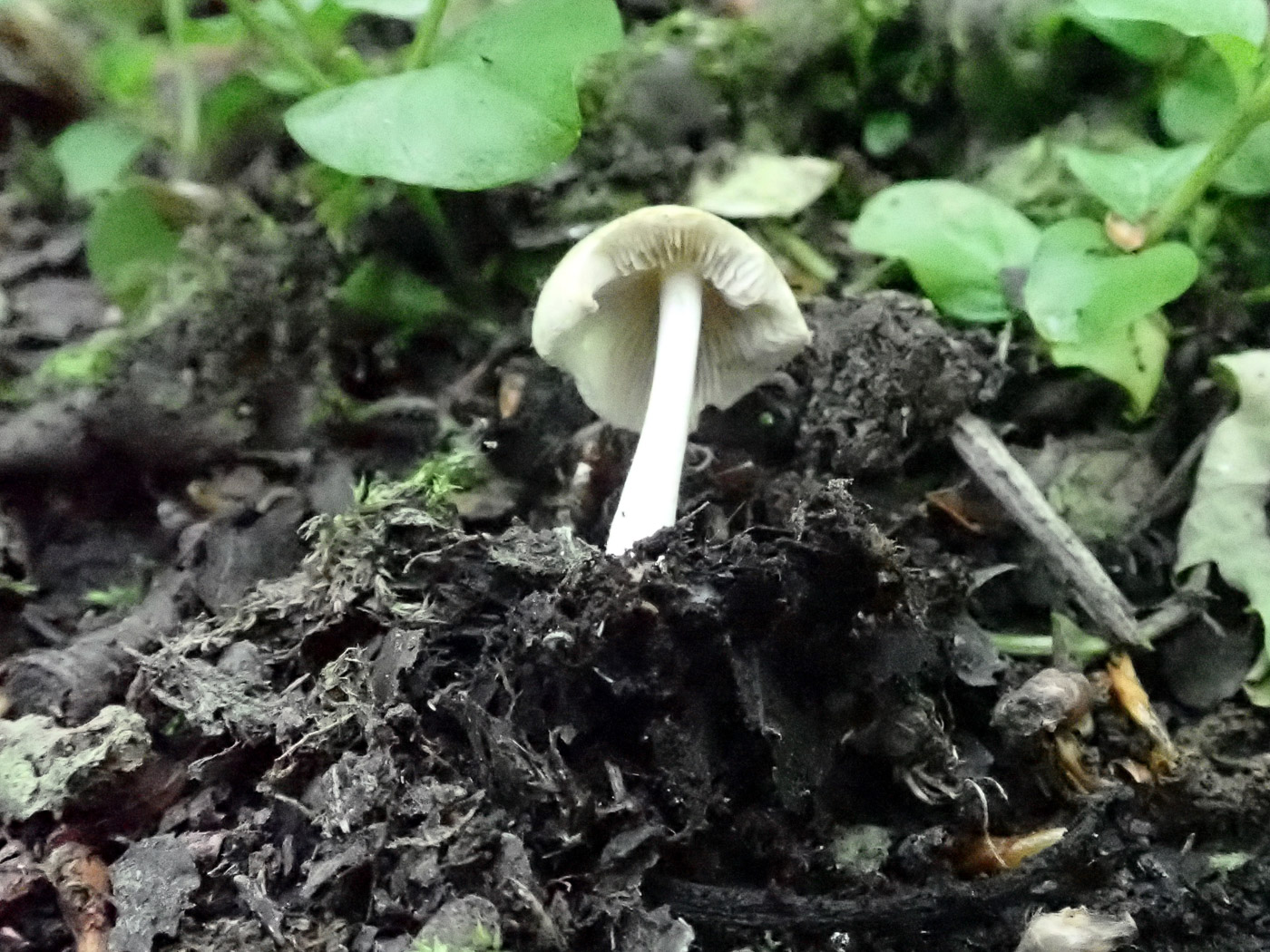
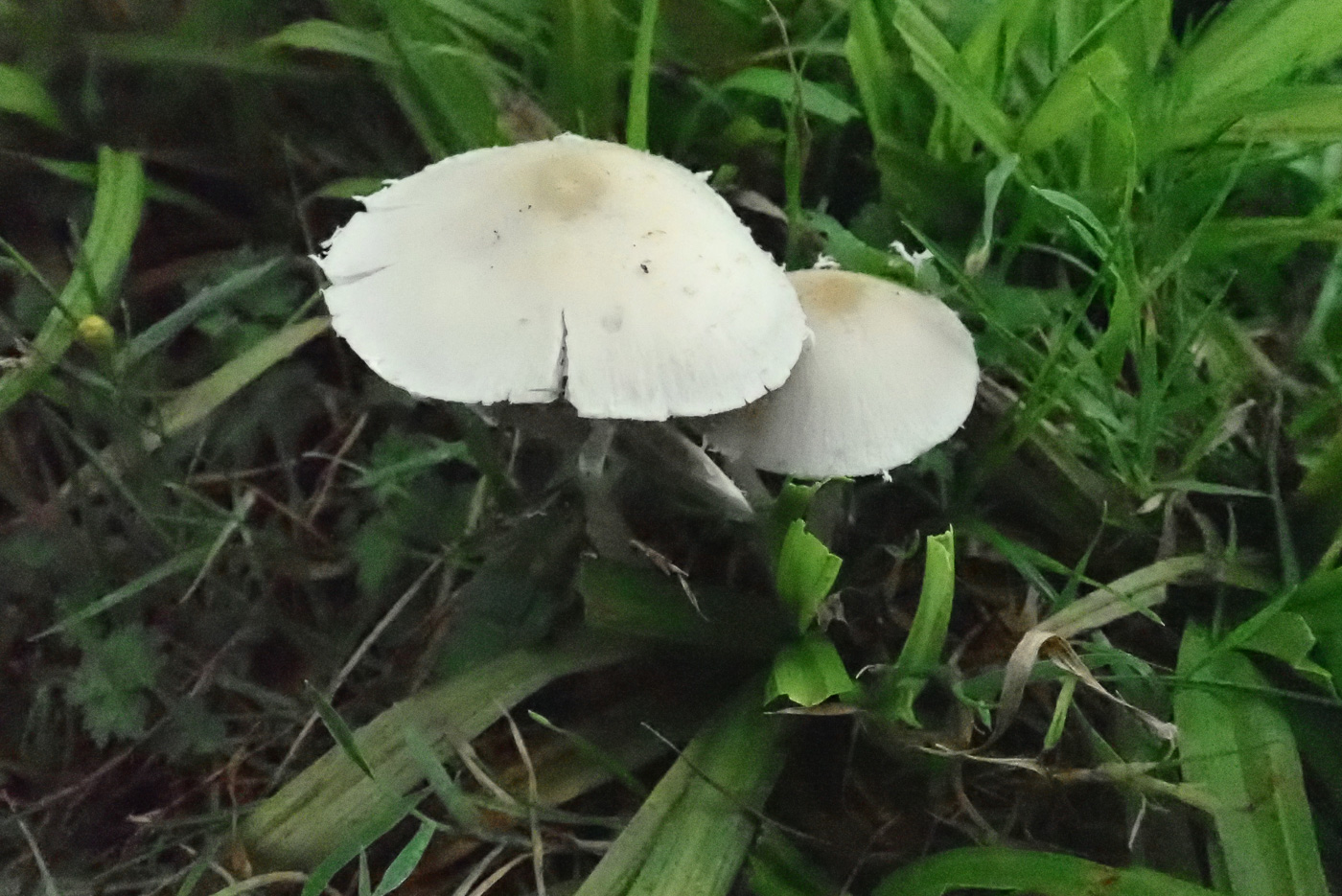
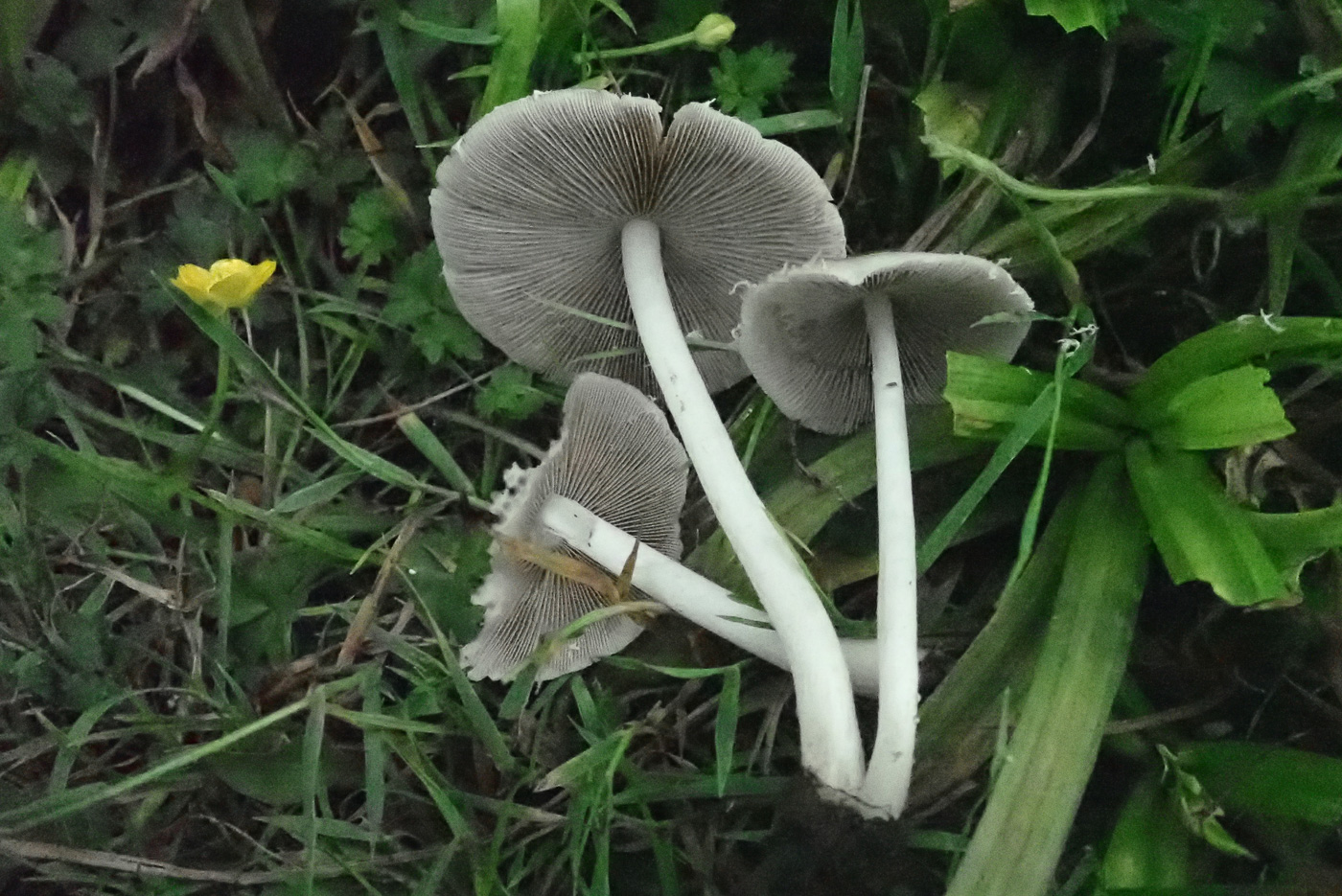
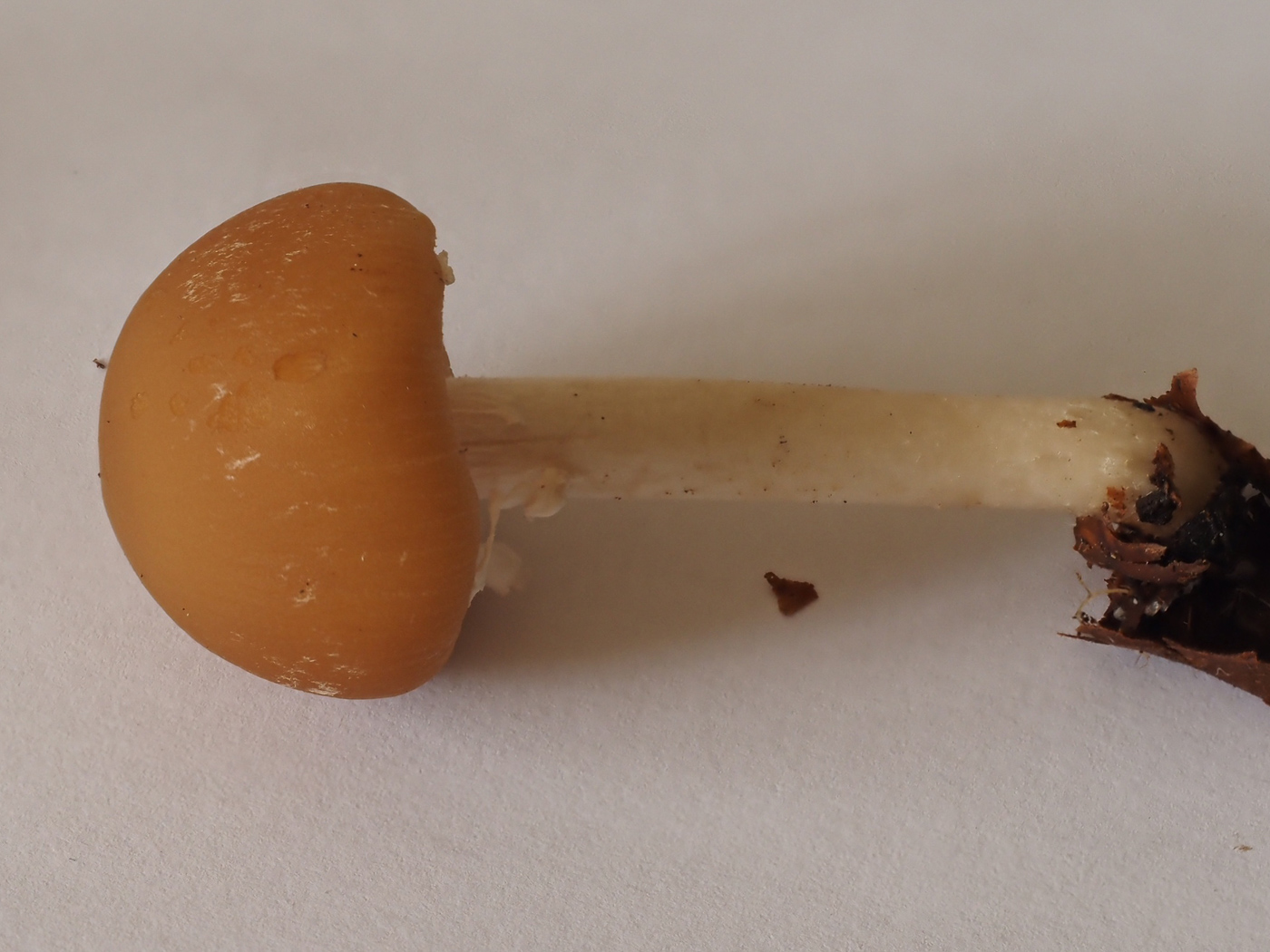
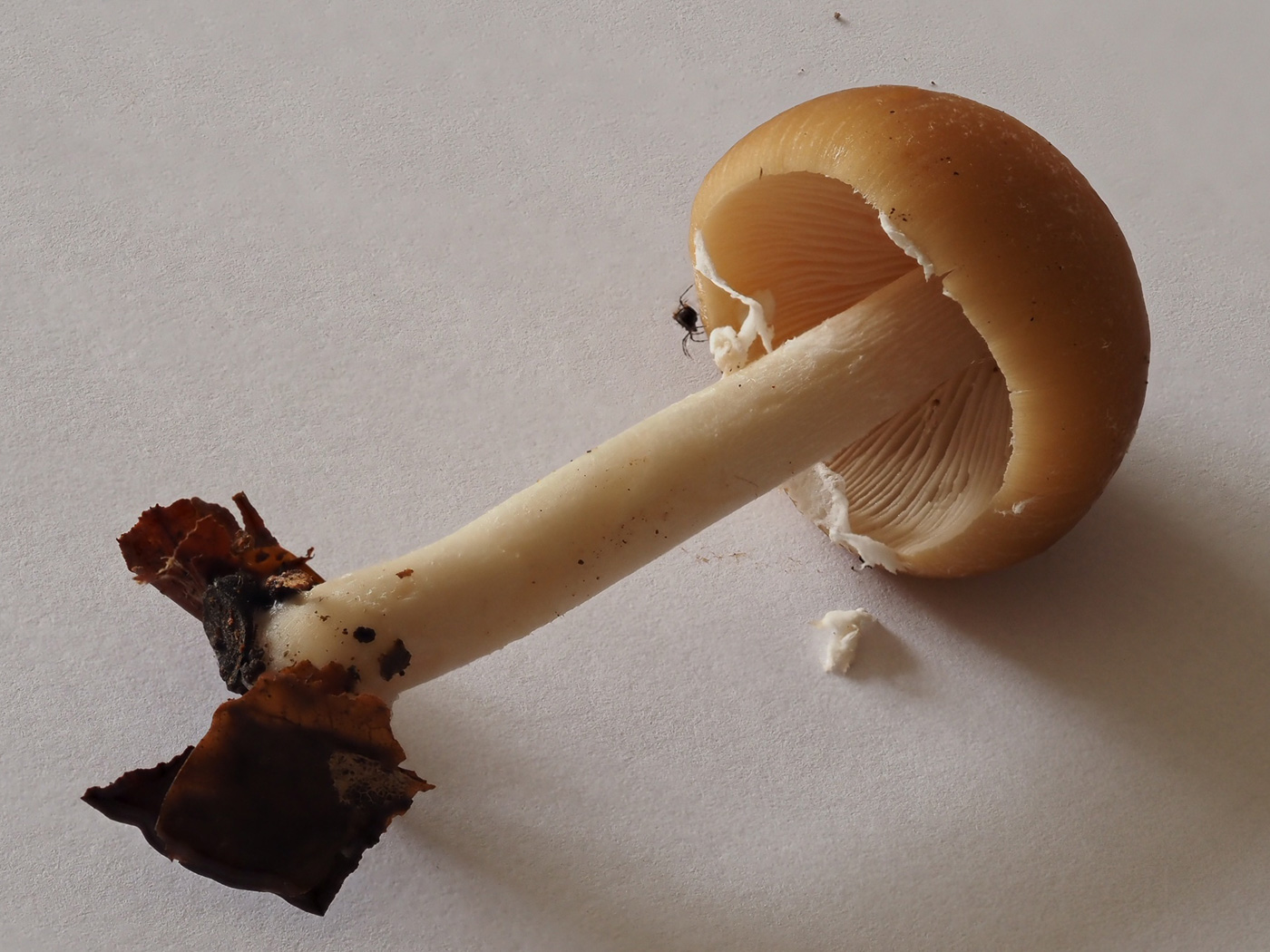
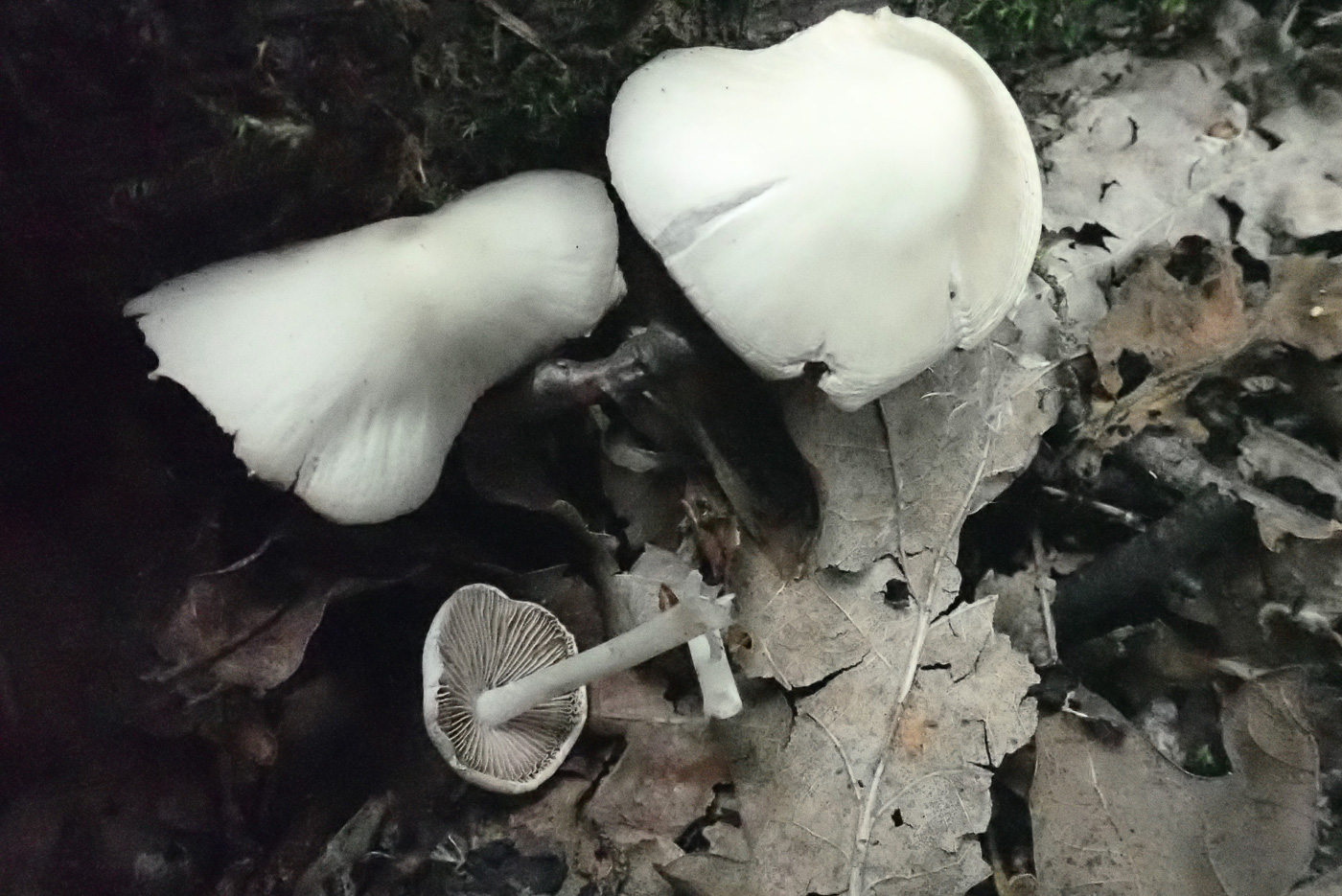
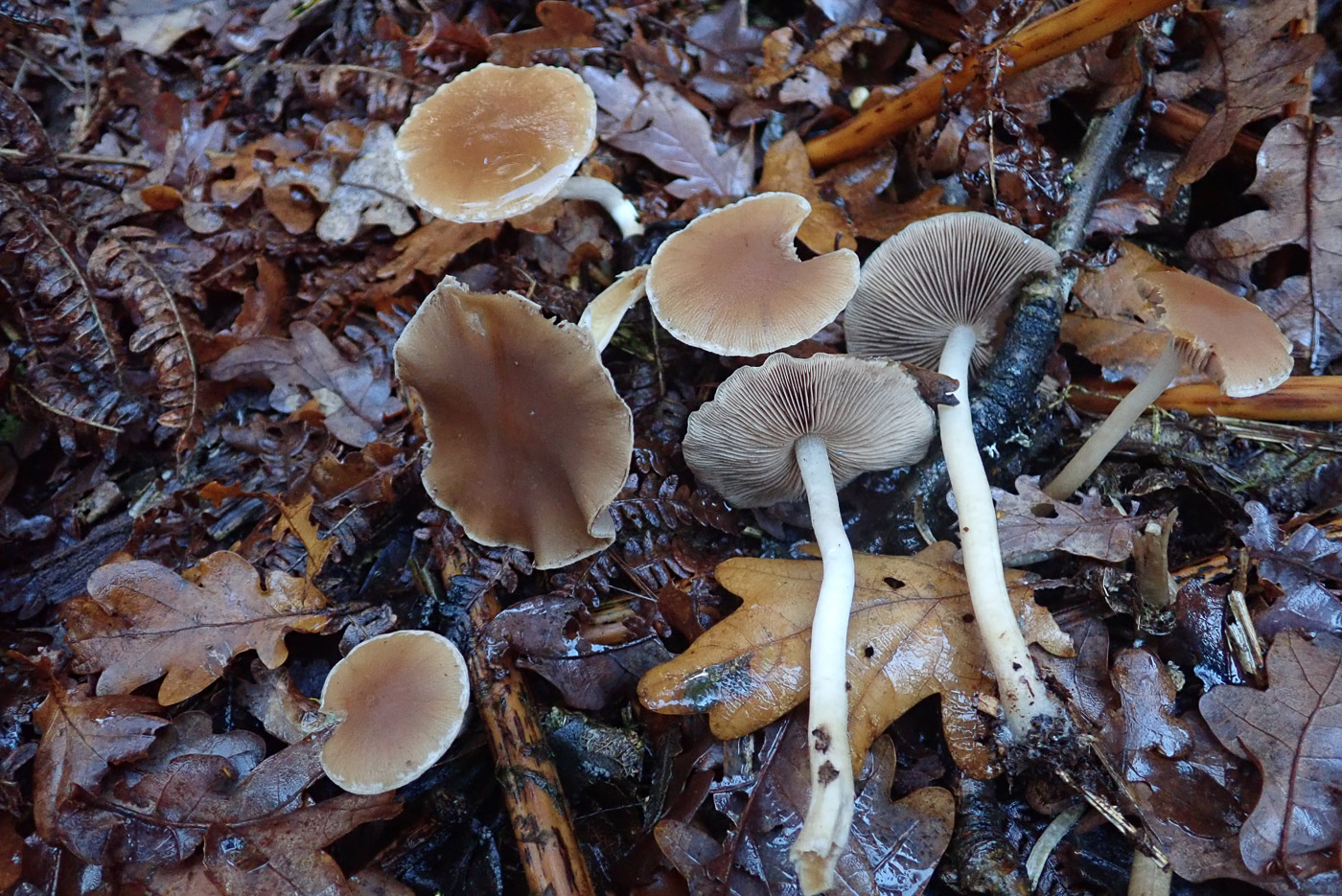
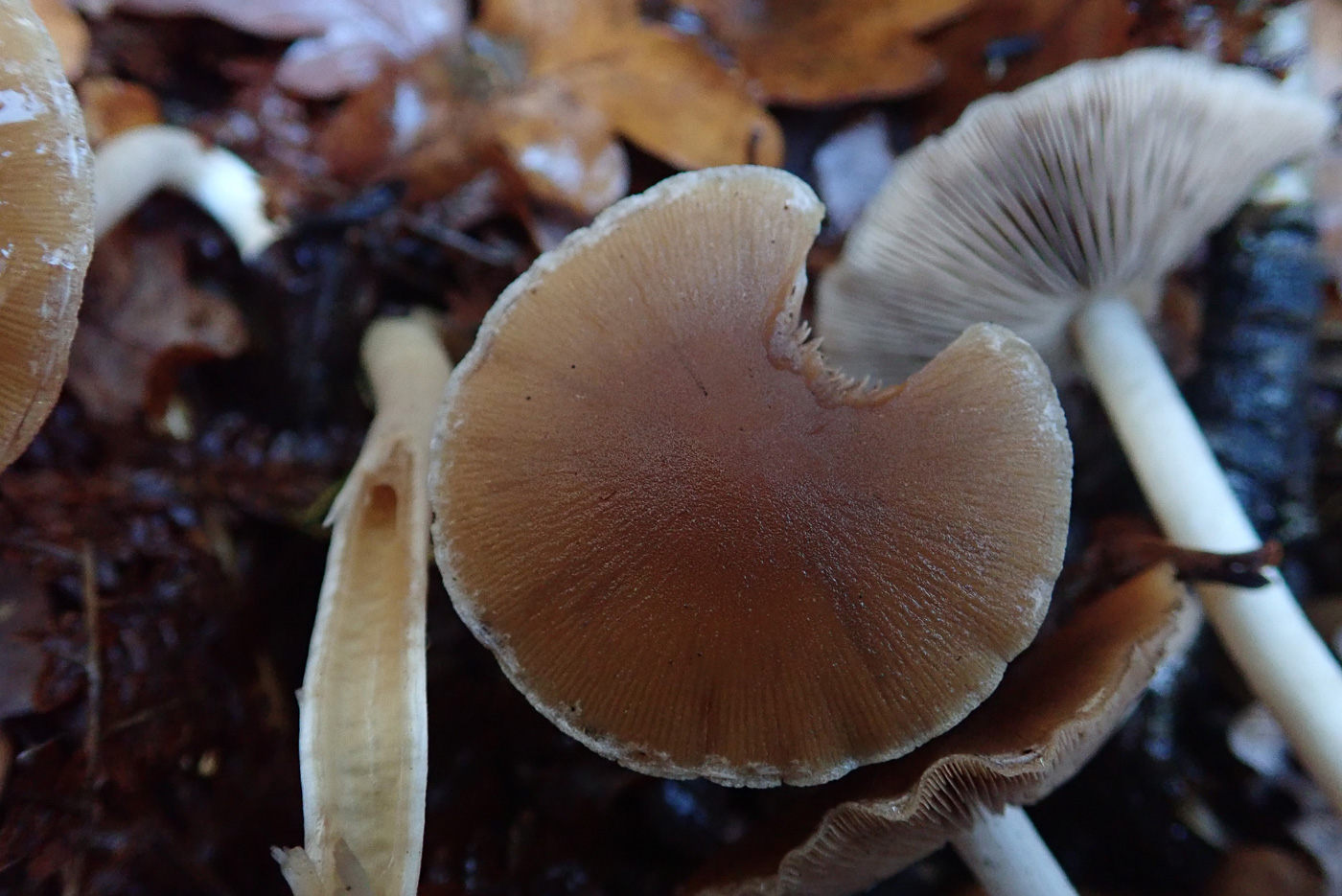
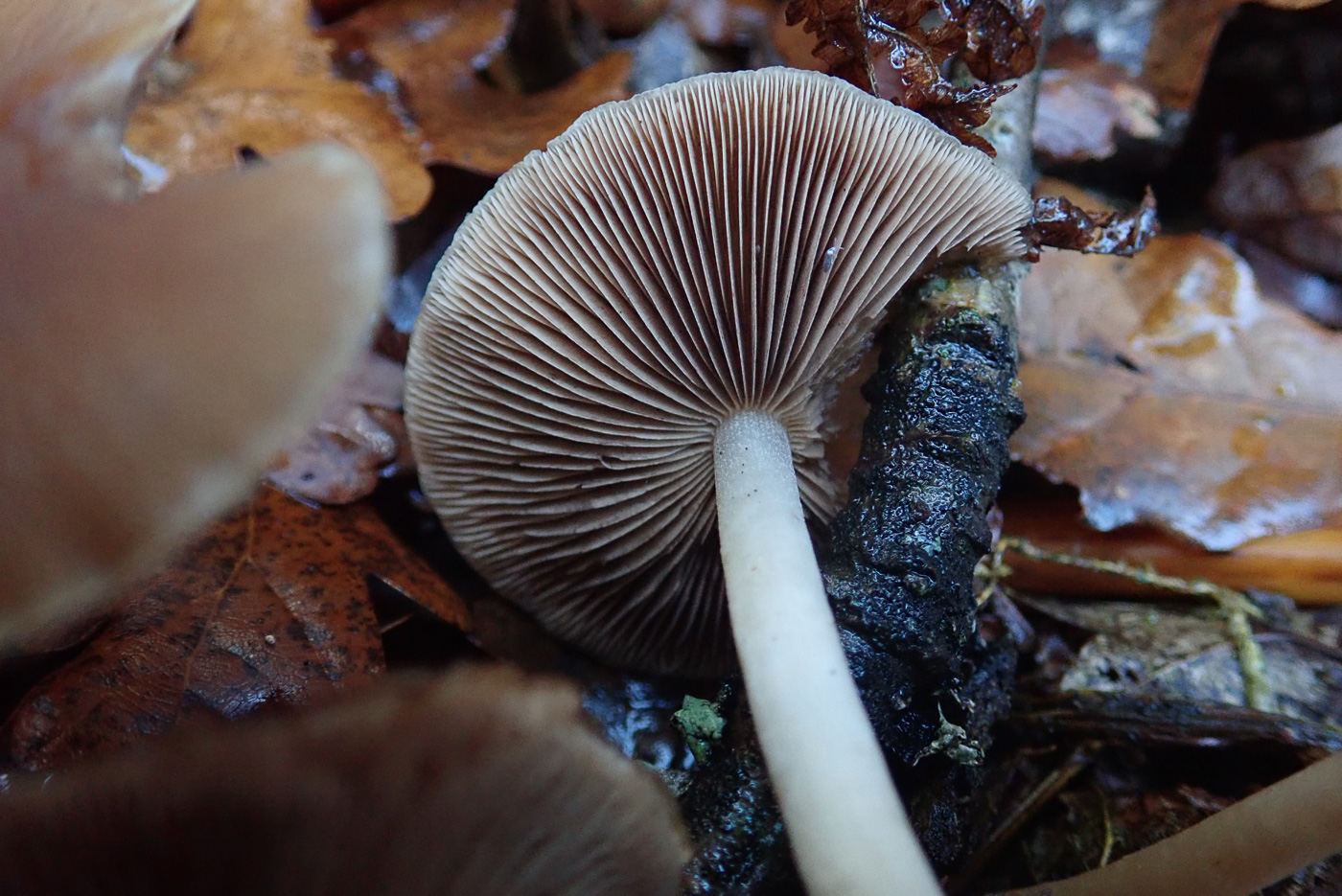 |
Psathyrella candolleana (Pale Brittlestem) 
Jun 28, 2023. Under the Limes at Turville Heath in woody debris Penny noticed this trio and at first glance thought they were Inkcaps but then noticed the ragged veil remnants attached to the cap edge, also the very pale gills - both typical of the species when immature. It is one which often fruits early in the season and is common along grassy path edges as well as on woody remains. We apparently now have to call this species Candolleomyces candolleanus!
Jul 31, 2022. In Tinkers Wood in woody litter John Catterson found this pair - quite a common species but it's nice to see anything fruiting at the moment! The gills are fully mature here, so suitably dark, but when younger they can be almost white.
May 27, 2022. In Stoke Common Penny had to search long and hard to find any fungi today, it was still incredibly dry underfoot (though near the Bucks/Oxford border there'd been considerable rain recently). In the dried up bed of a pond she found this rather nibbled small singleton, still with somewhat pale gills for a genus which has dark brown spores but a few hours later they were becoming suitably brown. This common species often fruits very early in the season in grassy path edges in woodland (so appearing in muddy soil which is usually under water seemed odd?).
Aug 3, 2021. In a muddy grassy path in Rushbeds Wood Penny found various groups of this common and often early season fruiter. The pale to white cap once mature often has a frilly margin caused by veil remnants, and the gills gradually darken with age as the dark brown spores mature and colour them (photo 2). The stem, true to form, is white and quite fragile. However, when fresh and immature this species looks remarkably different with a darker ochre to reddish brown cap having flecks of white veil and gills which are pretty well white - the whole being reminiscent of another common early fruiter, Gymnopus dryophilus (Russet Toughshank). Claire Williams took photos 3 and 4 of young fresh P. candolleana found in Downley Woods on August 6th thinking they were the Toughshank, but an overnight sporeprint taken at Penny's suggestion proved otherwise, it being the veil remnants which pointed Penny in the right direction.
Jun 23, 2021. The only Agaric Penny managed to find at Stoke Common today was this species, nestling almost under a fallen Oak log. Possibly the commonest species in this large and tricky genus, it frequents grassy path edges and woody litter and is often one of the first mushrooms to appear in early summer. When young the very pale gills belie the dark spores which develop later to darken the gills, thus fooling one into thinking it must be a different genus, but the thin white fragile stem together with almost white cap are typical, as seen here. Often the cap has ragged bits of veil around the rim - missing today, however, probably due to the recent heavy rain.
Nov 10, 2020. Penny C. found this collection od a very common Psathyrella which we somehow missed earlier in the season. It was in Naphill Common in vegetation near a grassy path and Penny had her doubts in the field if it was this species as it was clearly defying its common name! Usually with pale cream caps which have torn bits of white veil attached to the margin and also one of the first autumn mushrooms to appear at path sides, the caps today - 3 cm across - were bright brown with just a hint of veil around the margin (see photo 2) but not torn in their characteristic way. Clearly the recent rain had thoroughly drenched them and the usual fading as it developed had been postponed! Gills are very crowded and the longish stem is typical of the genus. By the next morning the caps were pale beige, however.
|
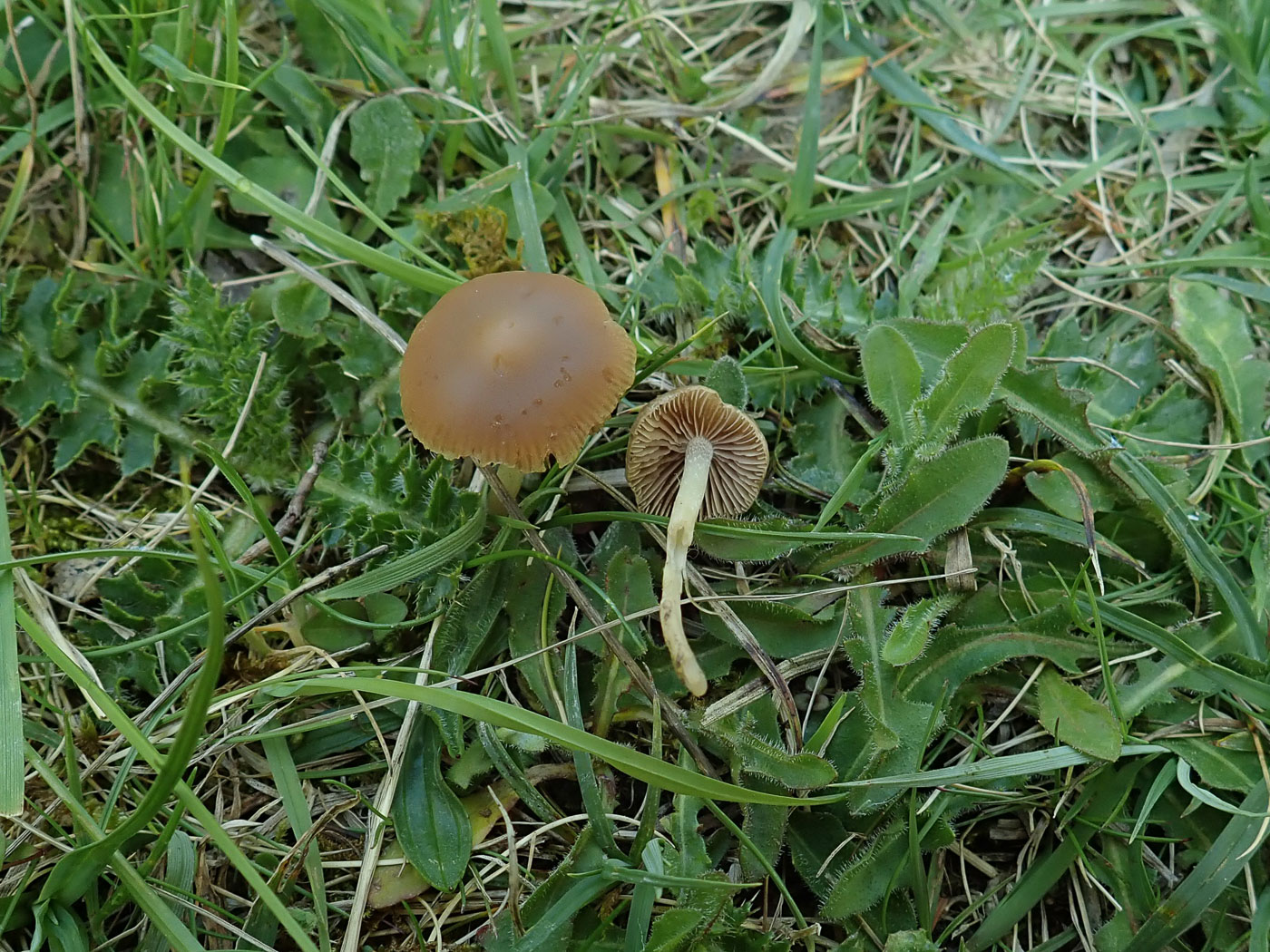

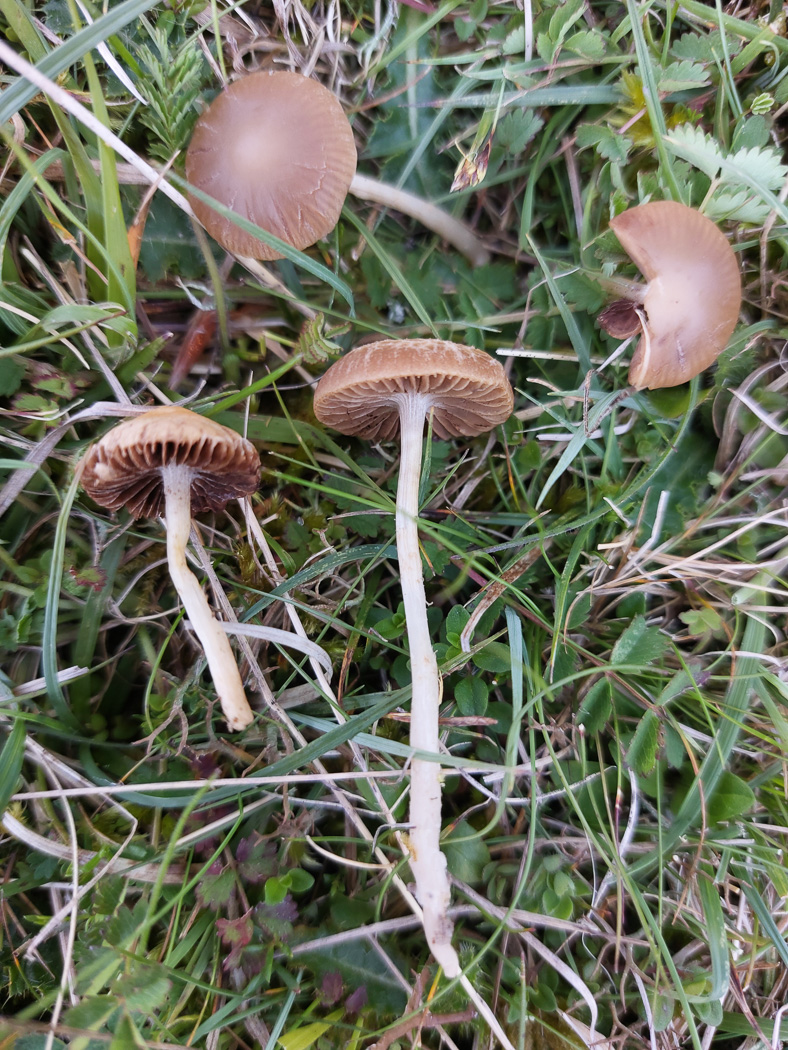 |
Psathyrella clivensis (a Brittlestem with no English name) 
May 7, 2024. On the Grangelands at Pulpit Hill both Penny and Jesper Launder found a few examples of this LBJ, guessed it was probably a Psathyrella, and keyed it out independently to this species - very satisfying! It is small for the genus and occurs only in calcareous grassland sites and is not very common. We have just two previous county records and this is a new entry for Finds. (Photos 1 and 2 are Penny's, photo 3 is Jesper's.)
|

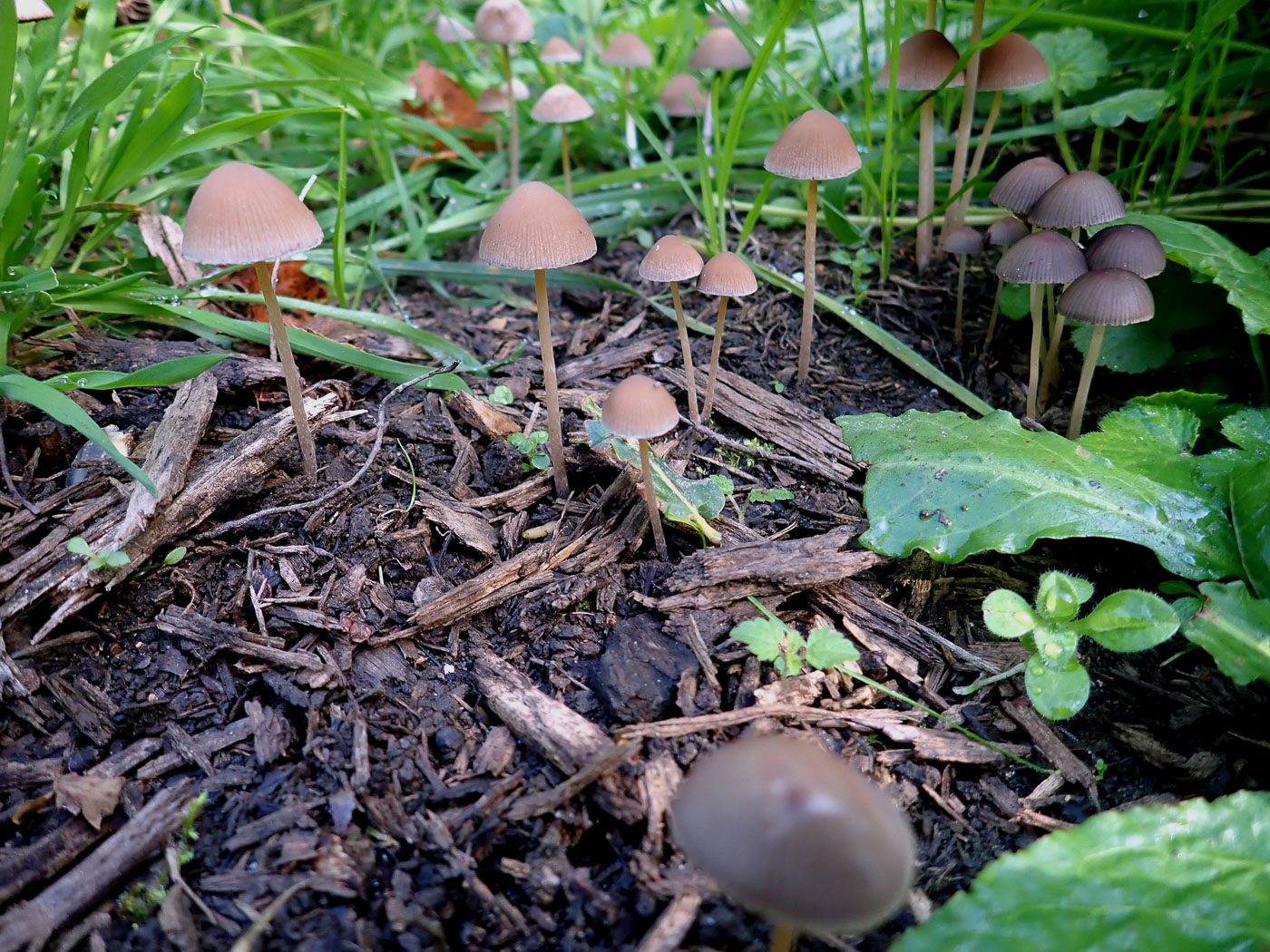

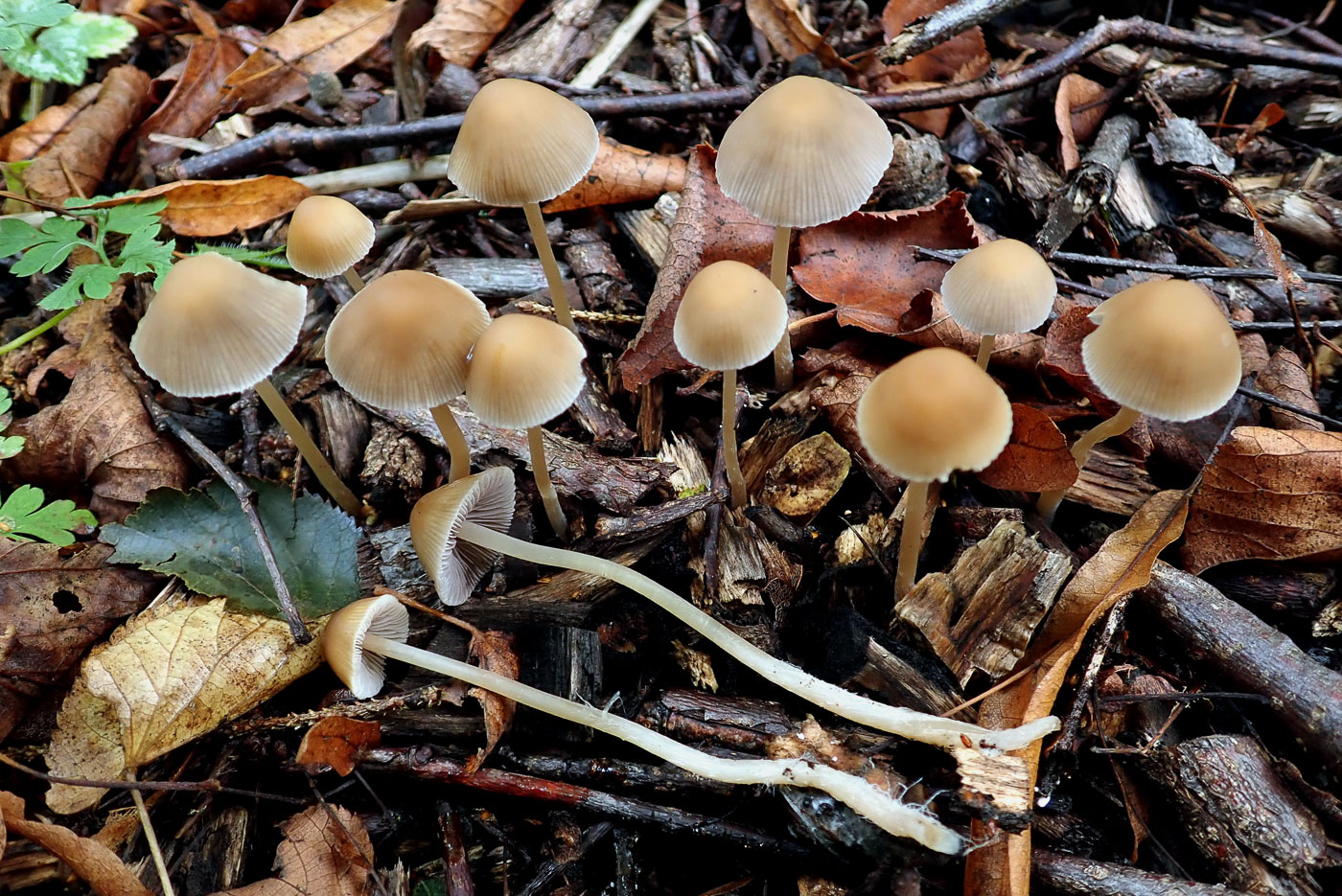
|
Psathyrella corrugis (Red Edge Brittlestem) 
Oct 6, 2022. At Turville Heath in disturbed soil with woody debris a large troop of these Brittlestems was putting on an impressive display, enjoyed by Penny. The caps showed a good mix of pale brown (when young), darker grey (when old) and faded to almost pinkish white (where exposed to the sun) - all typical features of the species and many of the genus. The common name refers to its gill edge which can often (though not always) be red in contrast to the dark spore-covered gill when mature. The species is common though this appears to be new for Finds.
Oct 1, 2020. This cluster was found by Penny Cullington growing in rotting woodchip at Turville Heath. A large and tricky genus, very few Brittlestems can be identified in the field. They have white fragile stems and caps usually some shade of brown but fade in light or with age. Caps can be smooth - as here - or scaly, gills start out pale beige but gradually darken as the blackish spores develop (note the paler gills of the younger fruitbody in the foreground). This species (and some others also) can have gills with a distinct red edge, hence the common name, but as often as not this feature is missing! Thus recourse to a scope is essential.
|

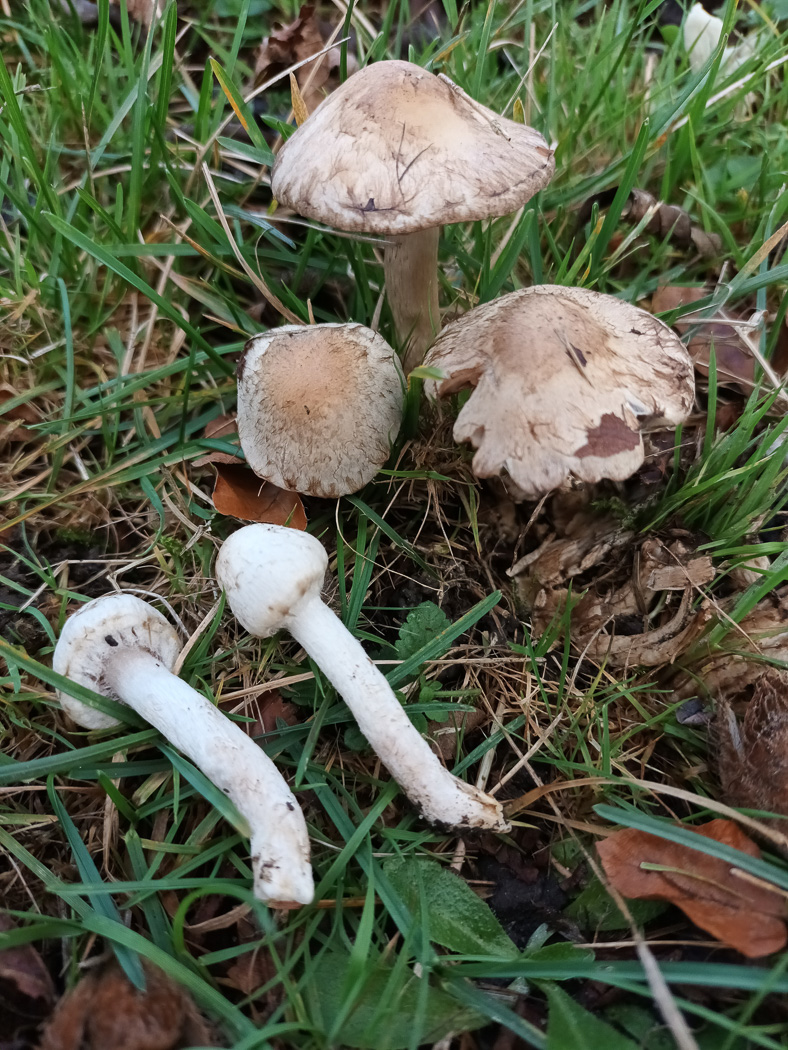 |
Psathyrella cotonea (Yellowfoot Brittlestem) 
Nov 20, 2021. In woody litter under the Larches in Penn Wood, Russell Ness came across this clump of white fluffy mushrooms and recognising the species from looking through books, took it home to examine in detail. The is quite a rare Brittlestem, characterised by the cap having thick whitish fluffy veil and a stem which is quite thick and chunky for the genus, also fleecy and with a yellowish base. As with most members of this genus a careful check of the microscopic characters is necessary to confirm any identification, as was done here. We have just a handful of county records but none previously from Penn Wood. Photo 2 is of a collection made the next day by Jesper Launder from Jordans Village! No coincidence, this. It has happened time and time again this season that records of a certain species have come in almost simultaneously from different parts of the county.
|
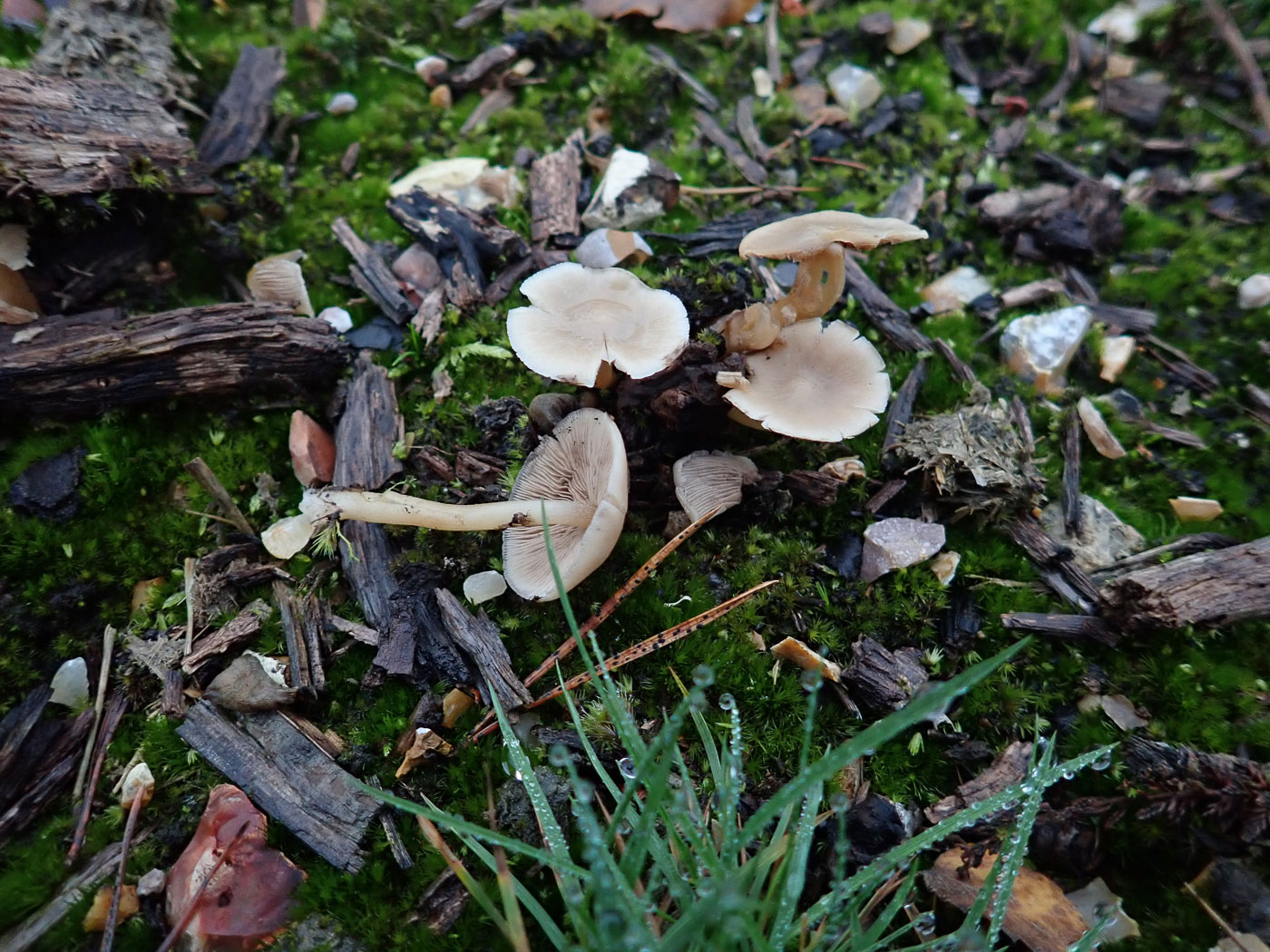

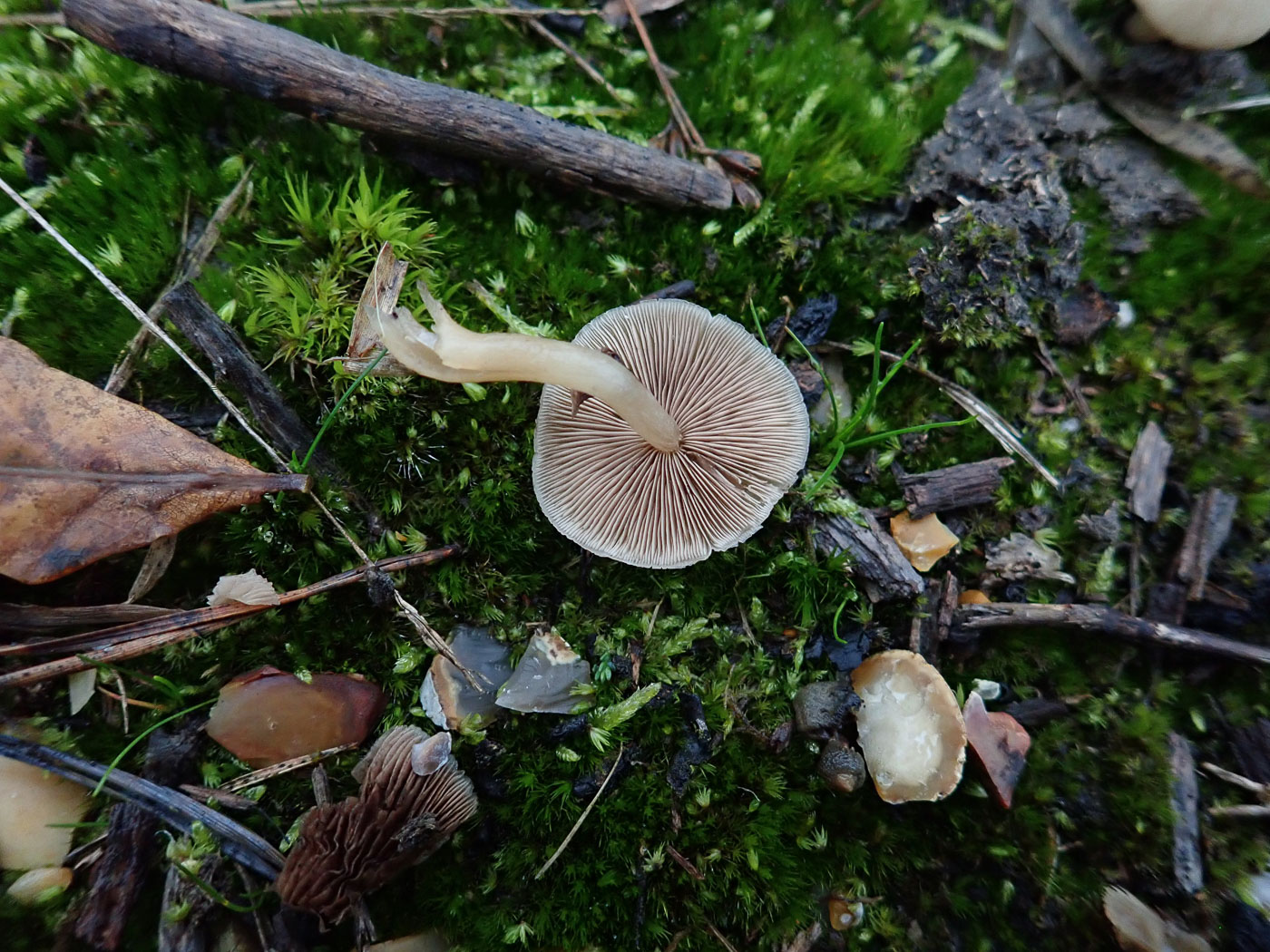 |
Psathyrella laevissima (Slender Stump Brittlegill) 
Nov 29, 2022. At Stoke Common in a disturbed area with a lot of shredded woody remains, also burnt patches, Penny came across this cluster of smallish LBJs which looked unfamiliar. At home a spore print revealed dark brown spores despite the rather pale almost pinkish-buff gills, also with a scope she found particularly interesting cells on the flat gill surface which led her to the genus Psathyrella. It then keyed straight out to this unusual species which she'd found only a couple of times previously in the county. The species is similar to the very common P. piluliformis (Common Stump Brittlegill), sharing with it very small spores for the genus, crowded rather shallow gills, a strongly hygrophanous cap and its clustered habit on fallen deciduous wood. The key difference is the remarkable pleurocystidia (on the gill face) which tend to have a rostrum (a 'tail' or short spike) - occasionally two - extending from their tips. This is the first entry for Finds.
|
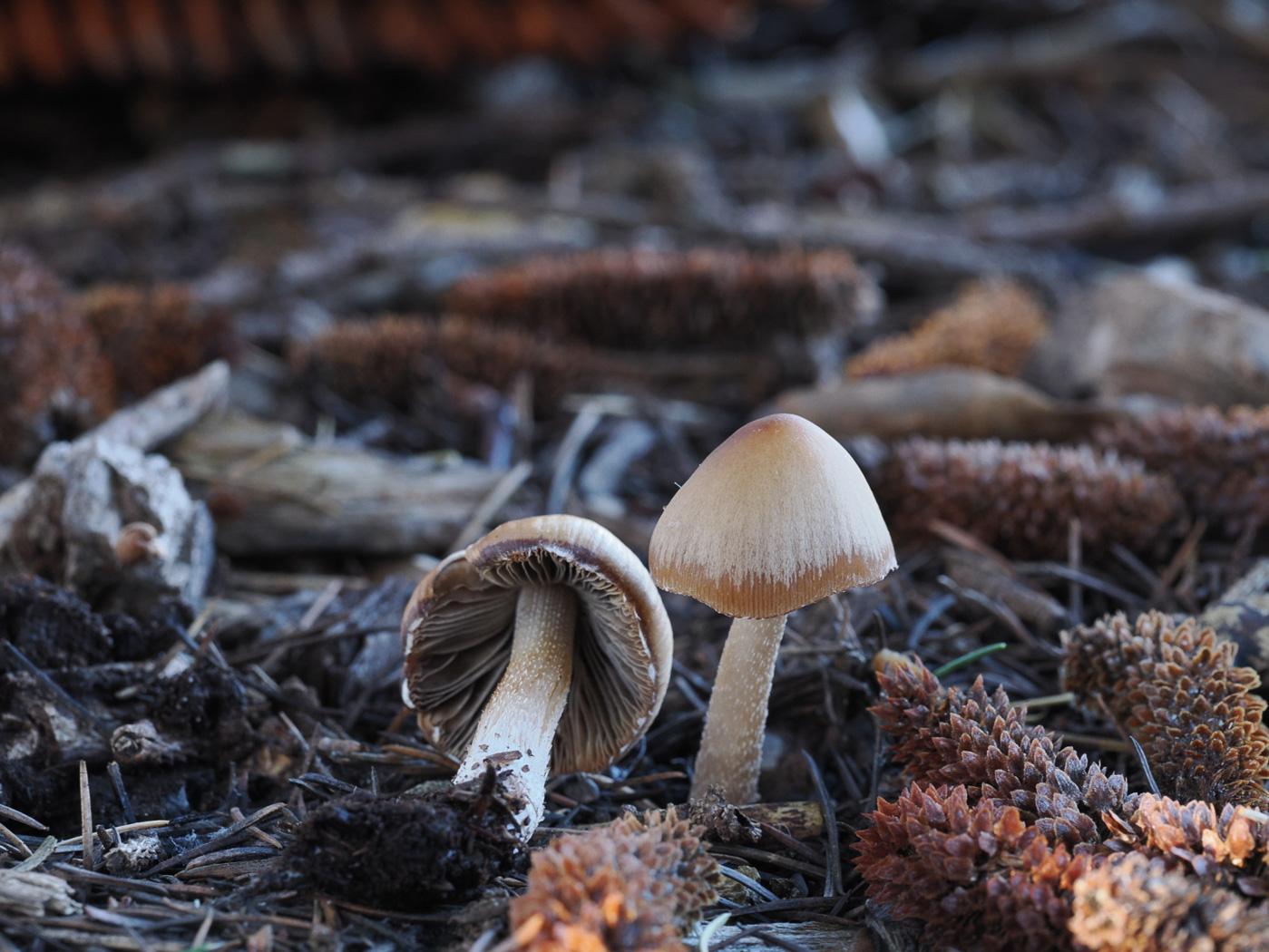 |
Psathyrella lutensis (a Brittlestem with no common name) 
Dec 6, 2022. In woodchip under a large Cedar at Stoke Poges Memorial Gardens Penny noticed what she thought at first was a pair of Inocybe species (Fibrecaps) but turning one over revealed grey gills rather than beige-brown indicating possibly a Psathyrella (Brittlestem). At home this proved to be the case and the gill cells led in the key to this unusual species for which we have just two previous records - one of these from this site in 2016. The species is strongly hygrophanous hence the pale cap which in this species is striate in the outer half with white veil remnants often attaching to the rim - visible here. The photo is Claire Williams's. This is a new entry for Finds.
|
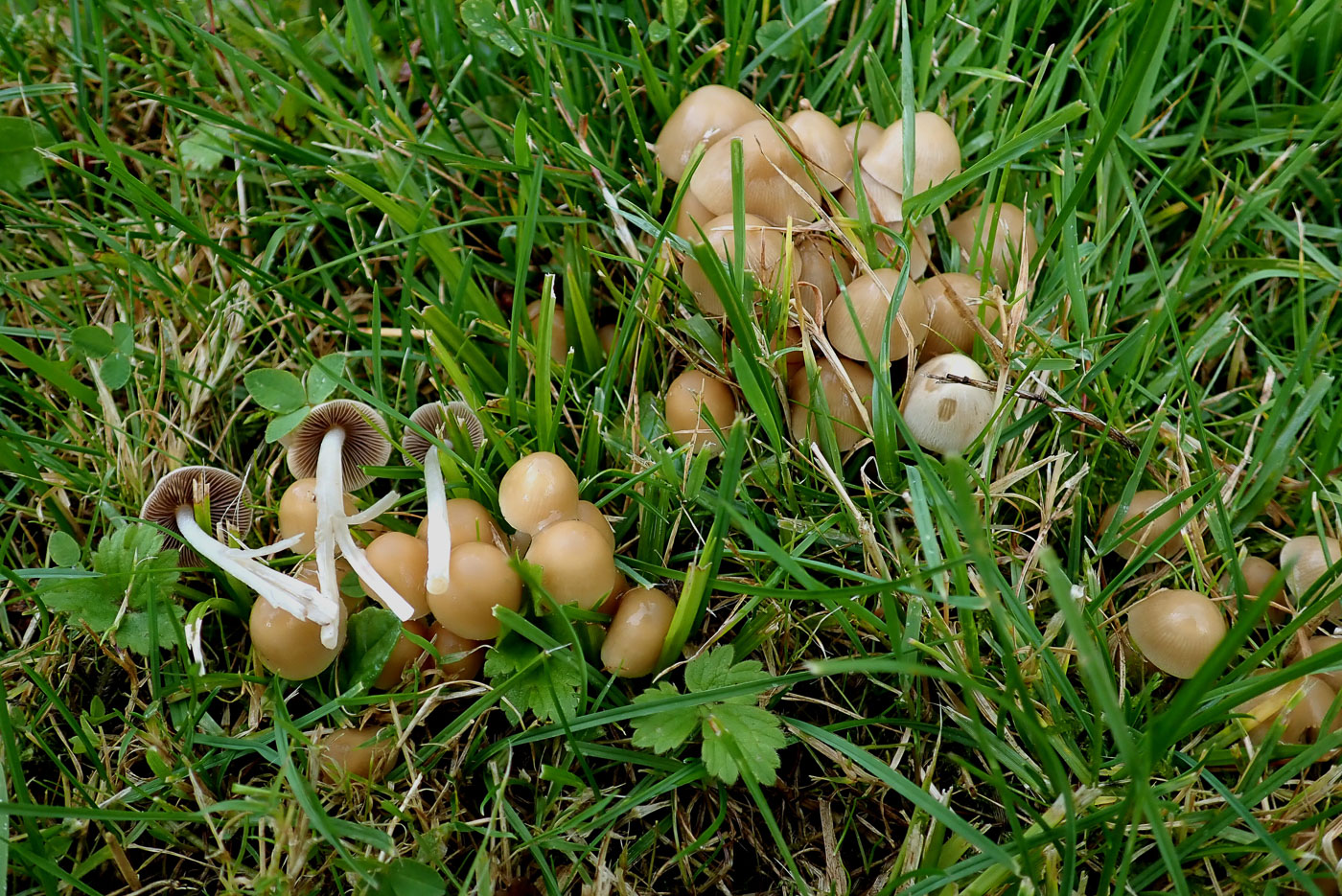 |
Psathyrella multipedata (Clustered Brittlestem)
Oct 6, 2020. Several tightly packed clusters of this species were found in soil in longish grass at Wotton Park Estate by Penny Cullington. Psathyrella is a large and difficult genus and very few species are nameable without using a scope, but this is one of them. Its preference for longish grass and habit of growing in dense domed clusters are the salient features of this species once you've picked one to check the typically brittle white stem and gills which start pale but end up almost black when mature - features of the genus.
|
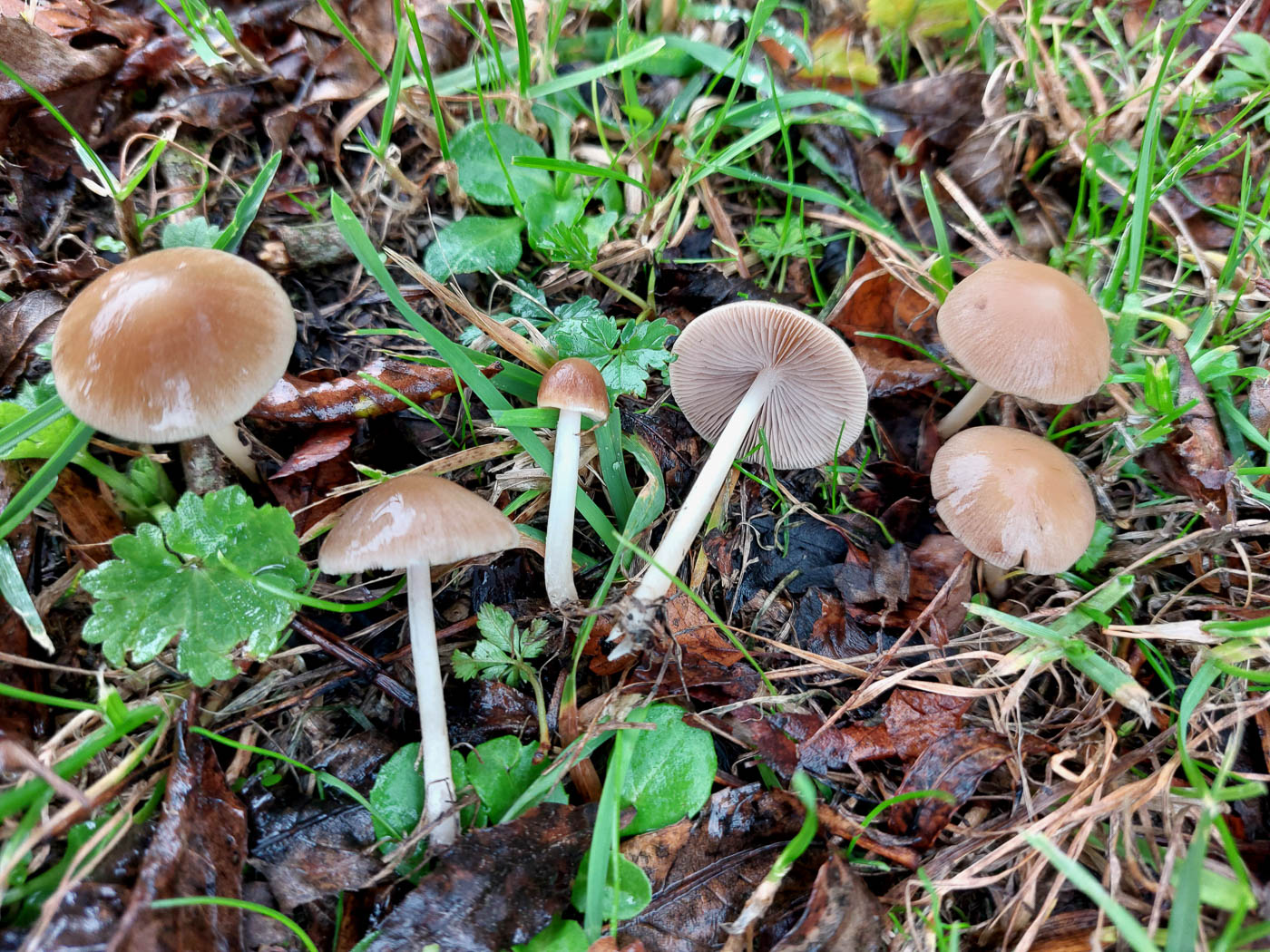
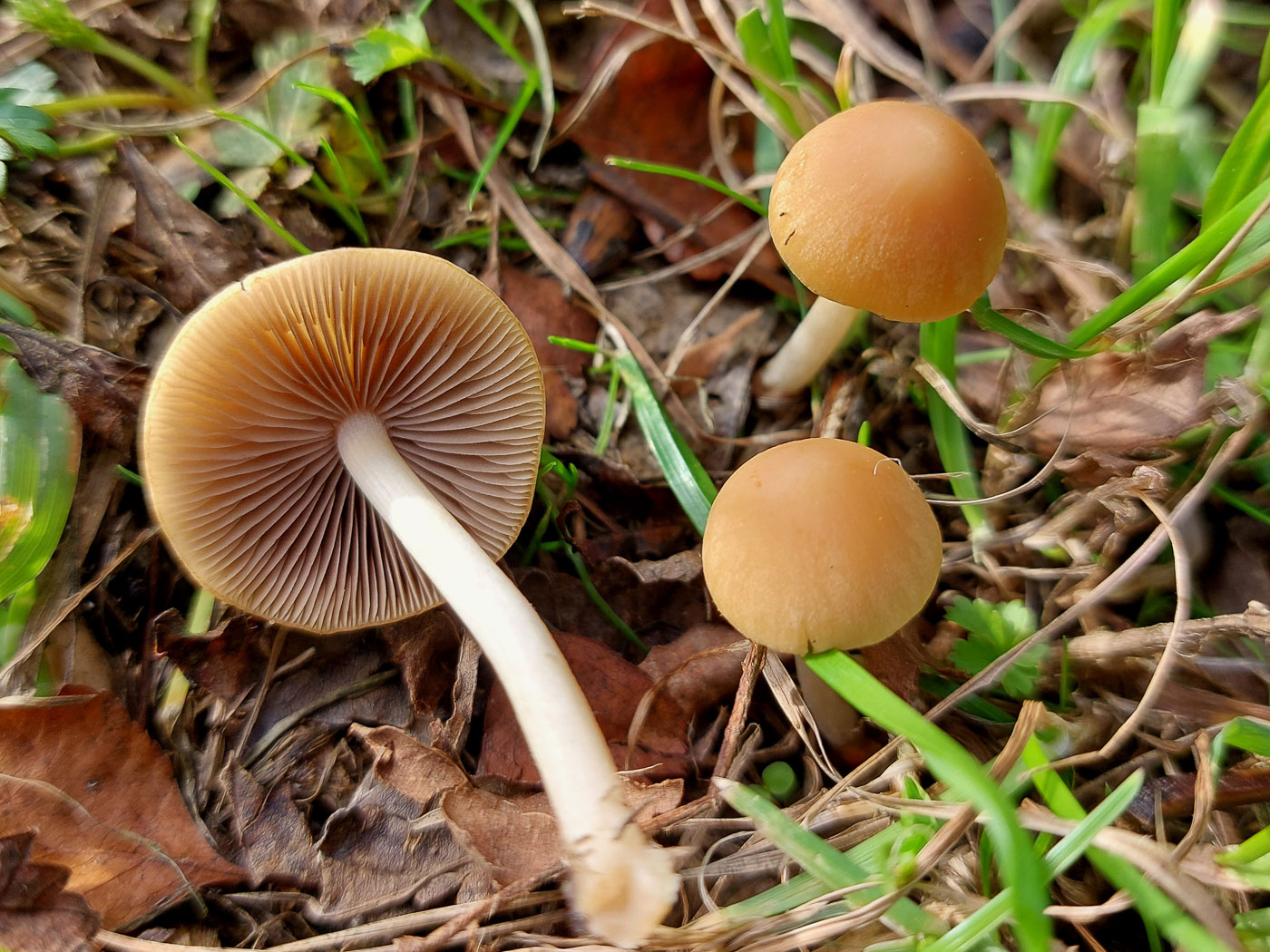 |
Psathyrella obtusata (an unusual Brittlestem with no common name) 
Nov 5, 2022. In Green End near Granborough Jesper Launder came across this Psathyrella a week earlier in a grassy roadside verge, then noticed it again in the same spot today when he collected it and managed to key it out satisfactorily using its microscopic characters - vital in this genus recognised as difficult. These are young specimens, hence the pale colours to both caps and gills. We have a small handful of previous county records and this is a new entry for Members' Finds.
|
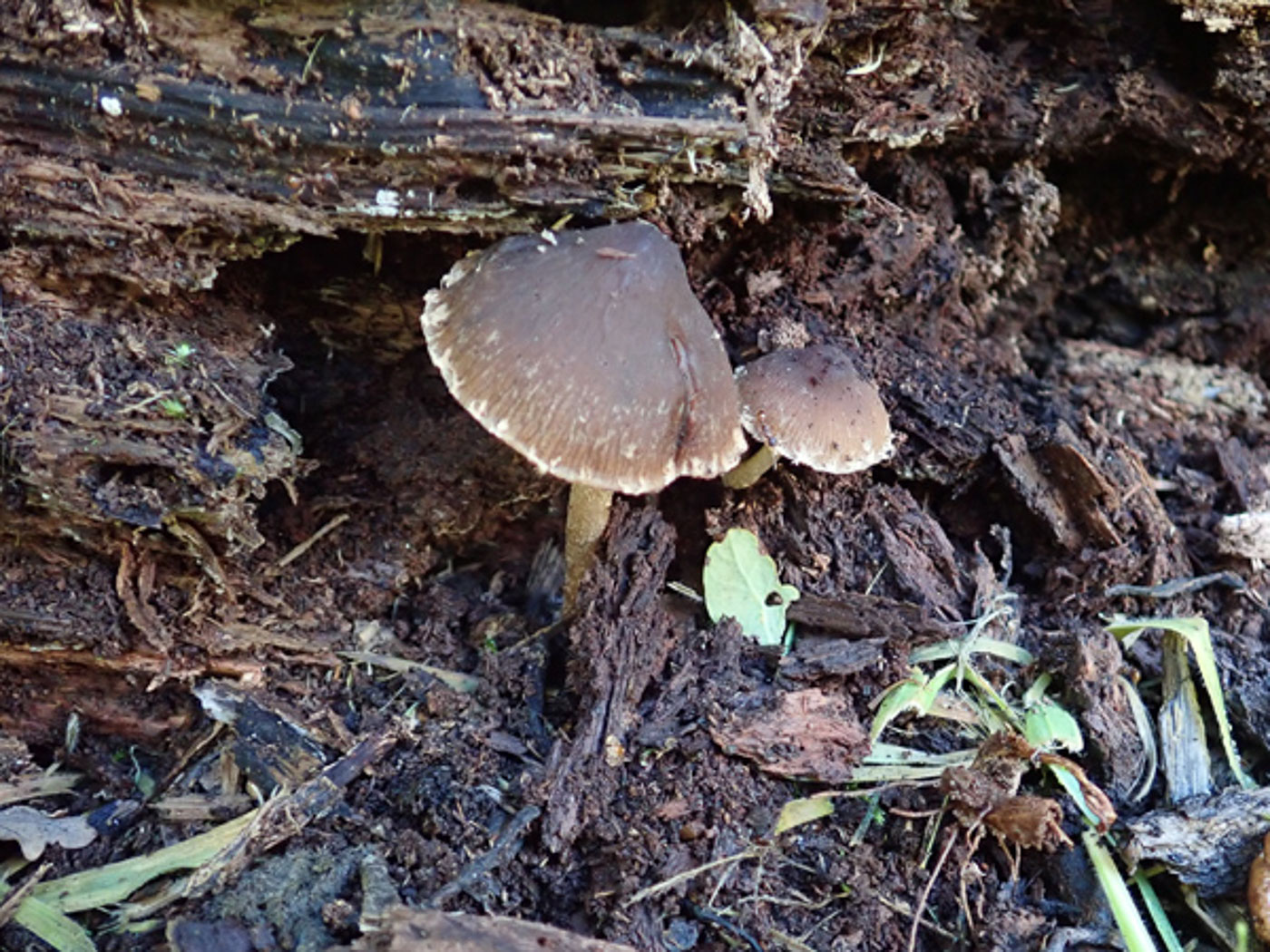
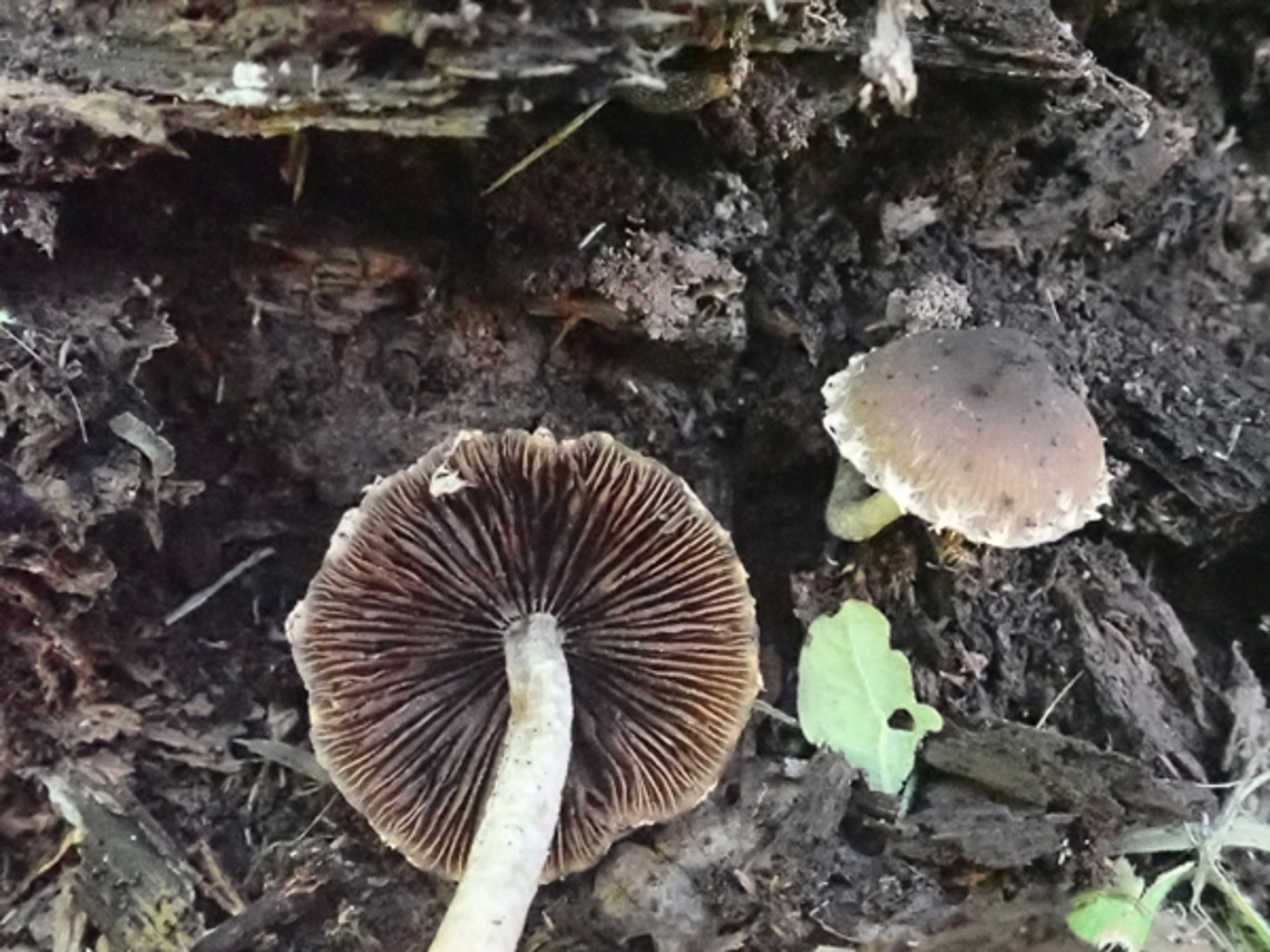

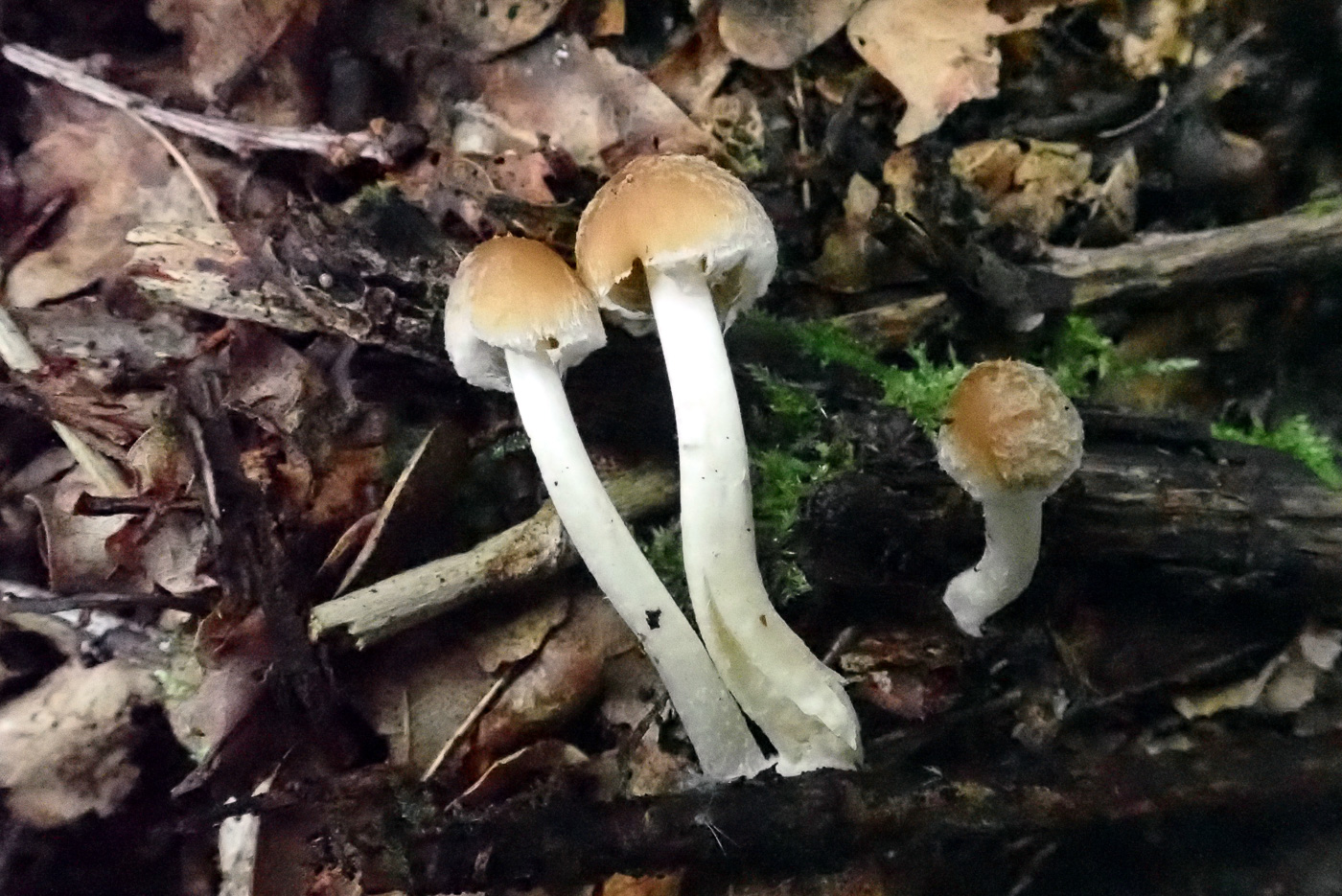
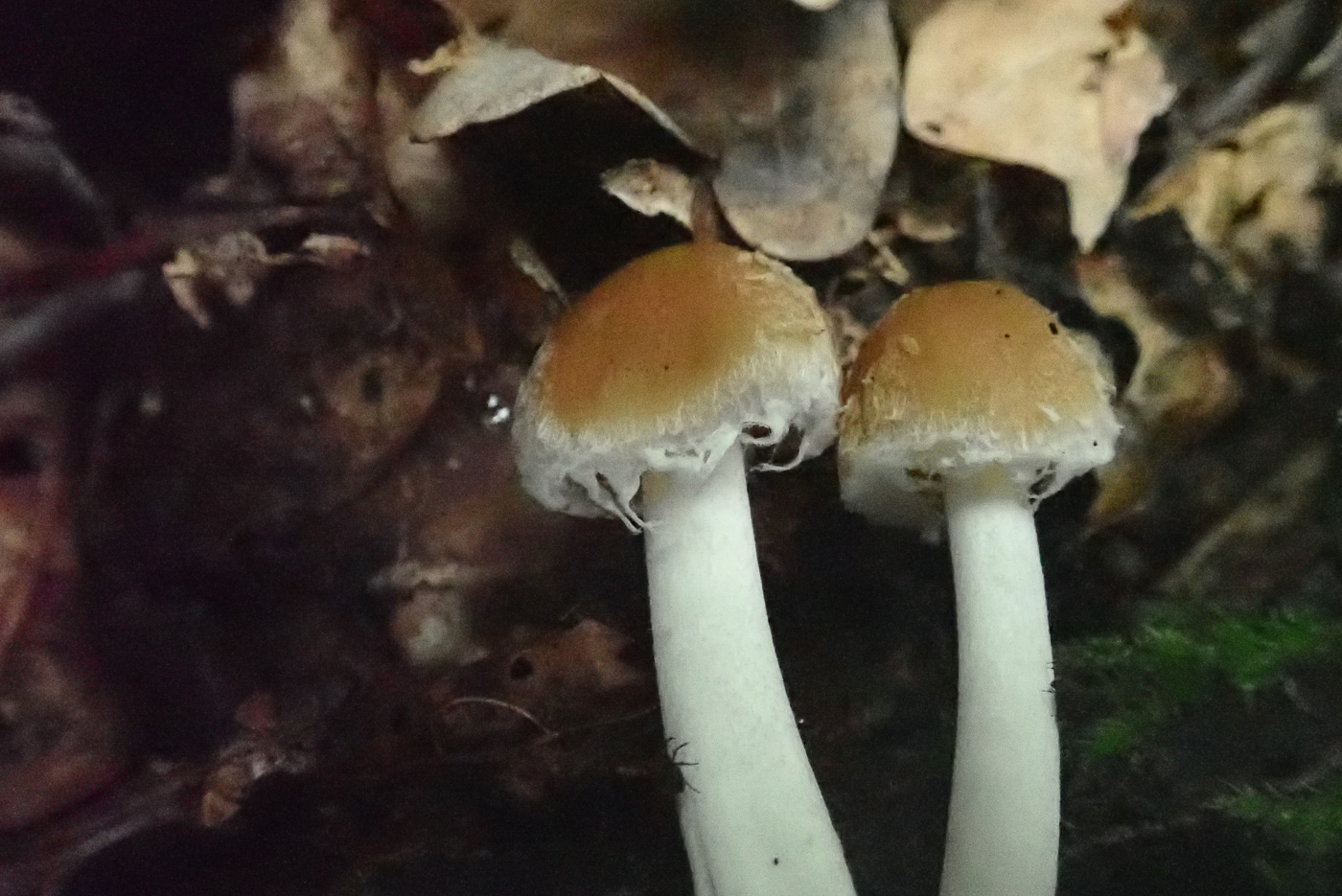
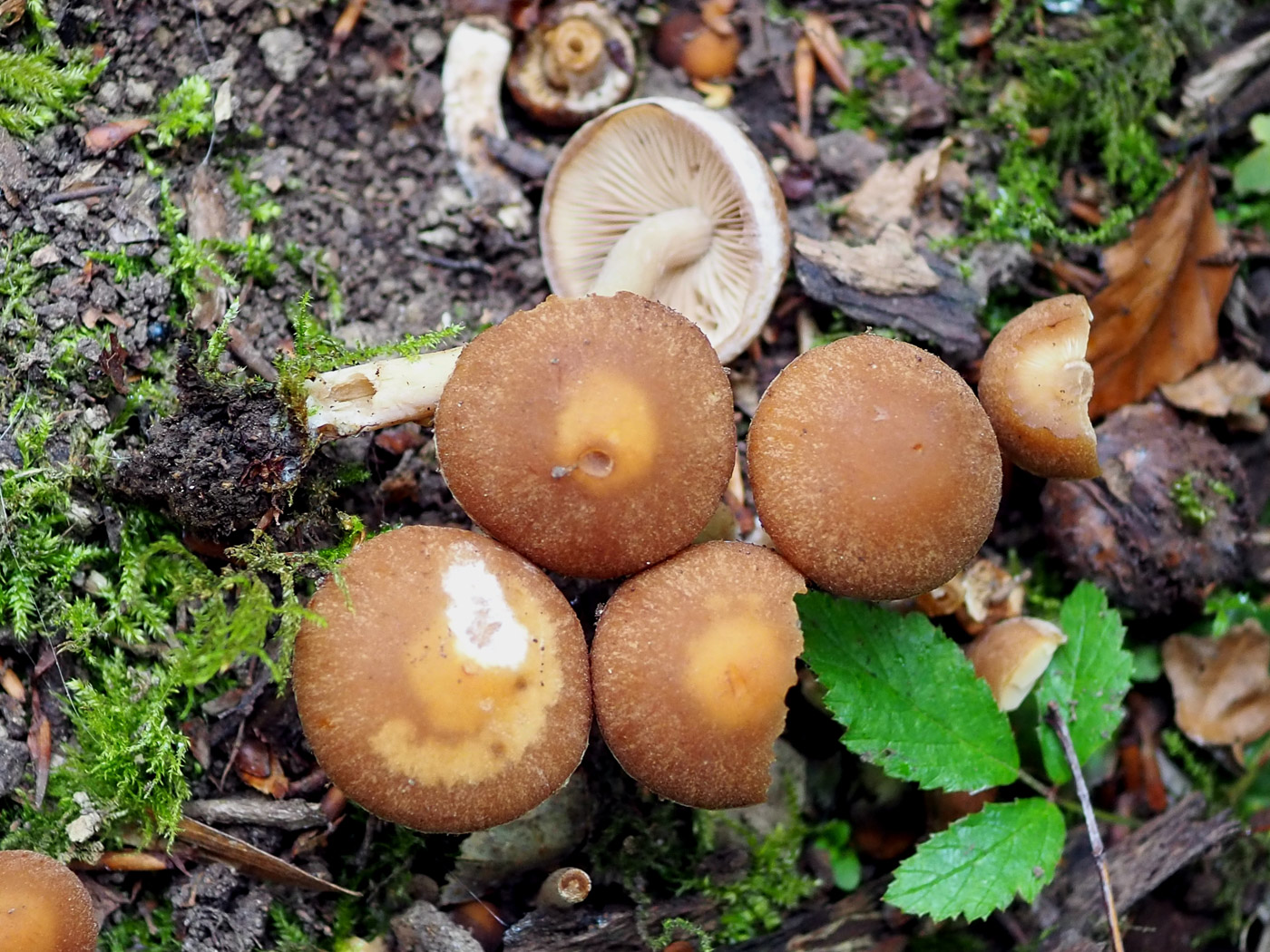
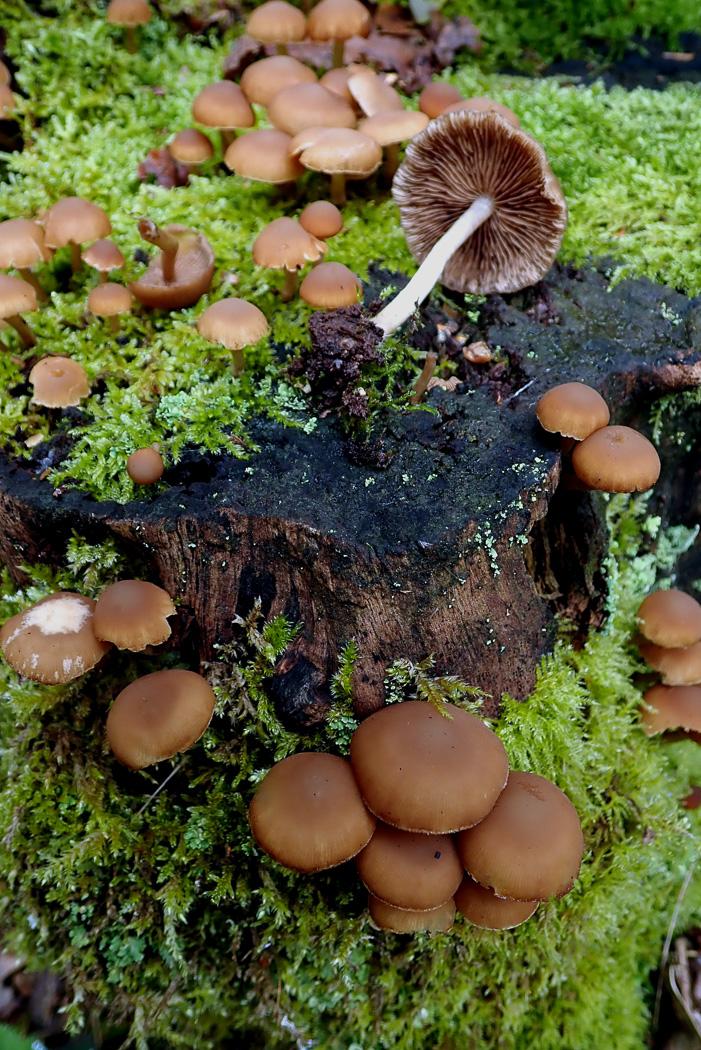
|
Psathyrella piluliformis (Common Stump Brittlestem) 
Oct 7, 2022. On a deciduous log in Marlow Common Penny noticed this common LBJ - one which tends to confuse at times as it is quite varied in appearance. Photos 1 and 2 were of a pair well away from exposure to much light - hence darker and not faded as in the cluster nearby in photo 3.
Aug 3, 2021. On a deciduous log pile in Rushbeds Wood Penny found three young specimens just emerging. This is a clustering Brittlestem always found on fallen wood and one of only a few of this genus which can be recognised with any safety in the field (P. candolleana, also found today, being another). The clustered habit and reddish brown cap having a rounded shape and (when young as here) copious veil are good characters though the veil soon vanishes. As with others in the genus the gills gradually darken to greyish almost black with maturity and the white often hollow stems are typical.
Sep 10, 2020. This young fresh material is an example of one of the few species in a difficult genus which can be named in the field, and was found by John Catterson at Coombe Hill fruiting on a deciduous log. Despite the pale gills of this collection, when more mature the gills become blackish brown from the dark spores. It is a common species and often to be found in large colonies on fallen wood.
Oct 18, 2020. We have an earlier example of this species (dated Sept 10) but of young material, and as there is much evidence of more mature clusters of this around at the moment, we are including it here again - found by Paul and Penny C. on a mossy deciduous stump in Marlow Common. Note the dark gills visible in the upturned fruit body, now coloured by the mature spores, also the veil flecks, visible on the cap in young material, have now been washed off leaving it smooth. This is one of our commonest Brittlestems and is usually to be found in large numbers on fallen rotting deciduous wood.
|
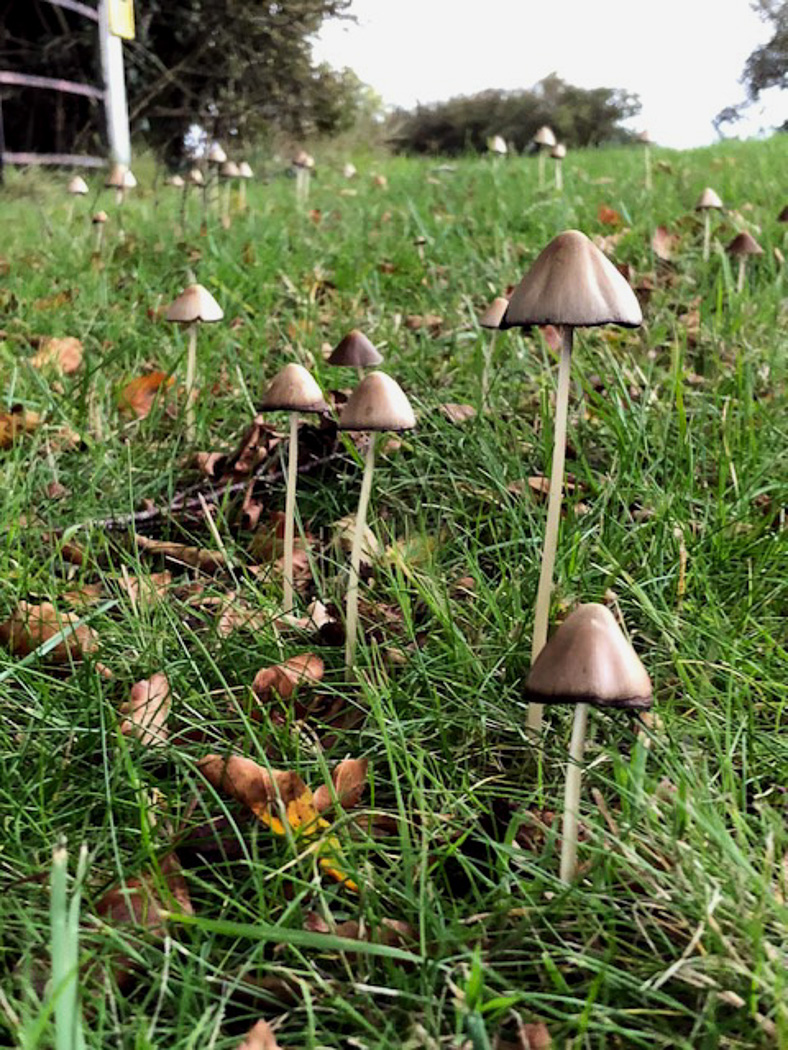 |
Psathyrella pseudogracilis (a species of Brittlestem) 
Oct 8, 2020. Tony Knight found a patch of around 200 fruit bodies of this unusual species in grass near Chilton. Superficially similar to many other Brittlestems (see also Conical Brittlestem dated Oct 07 and Red Edge Brittlestem dated Oct 01) this species has distinctive cells on the gill - found by Tony - which confirm the identification. The sparse number of records for it probably reflects the reluctance of many mycologists to work on this tricky genus rather than its rarity.
|
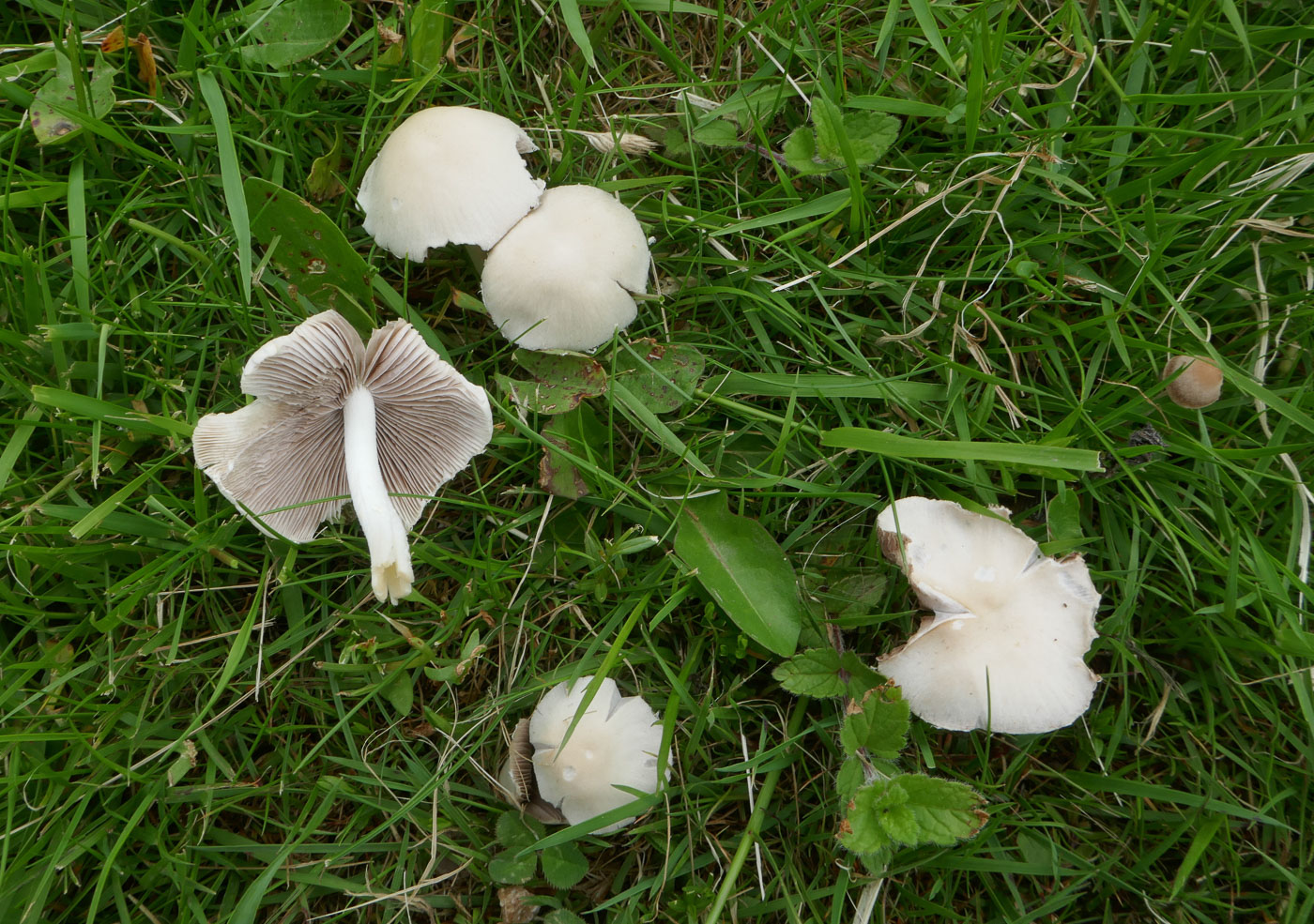









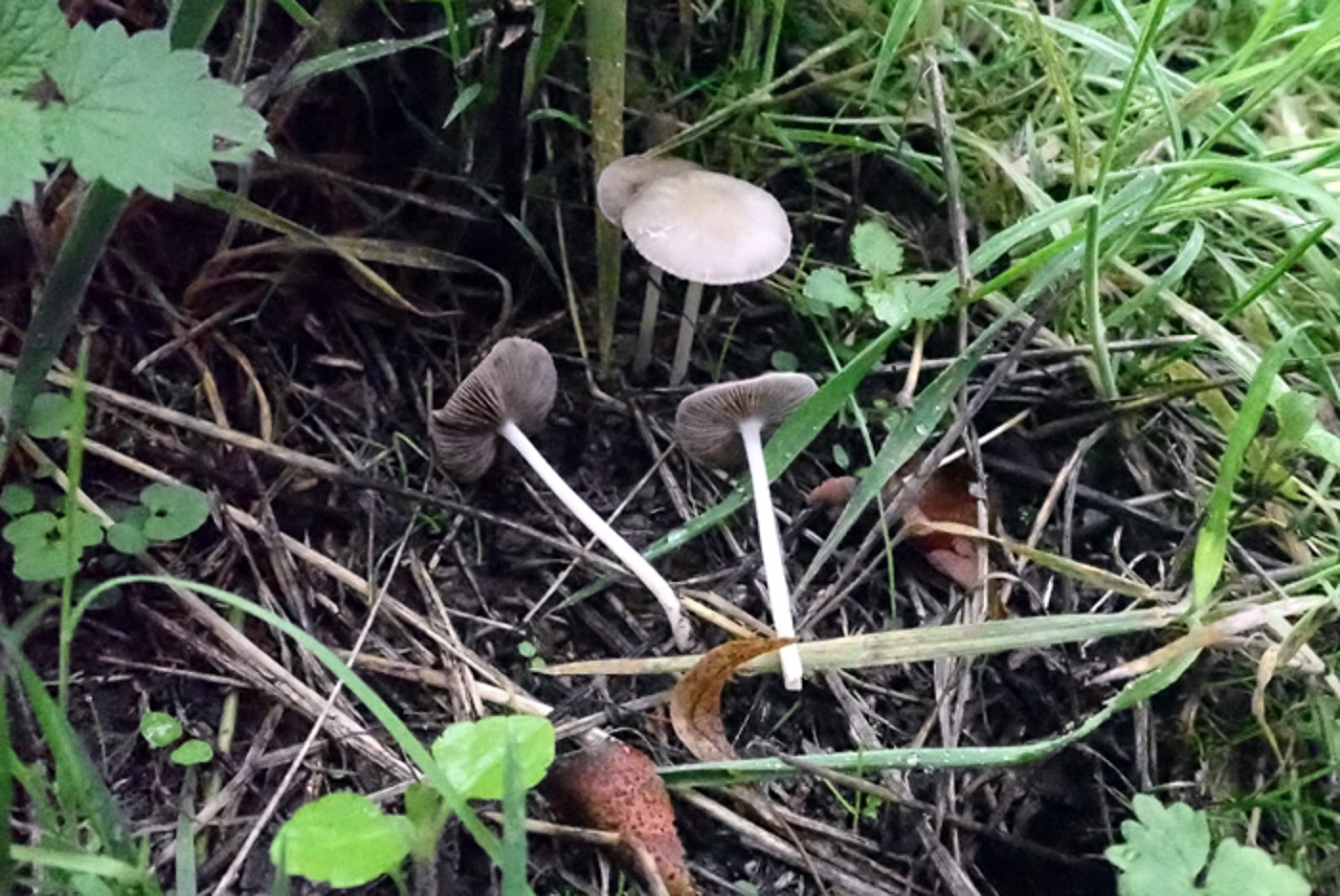
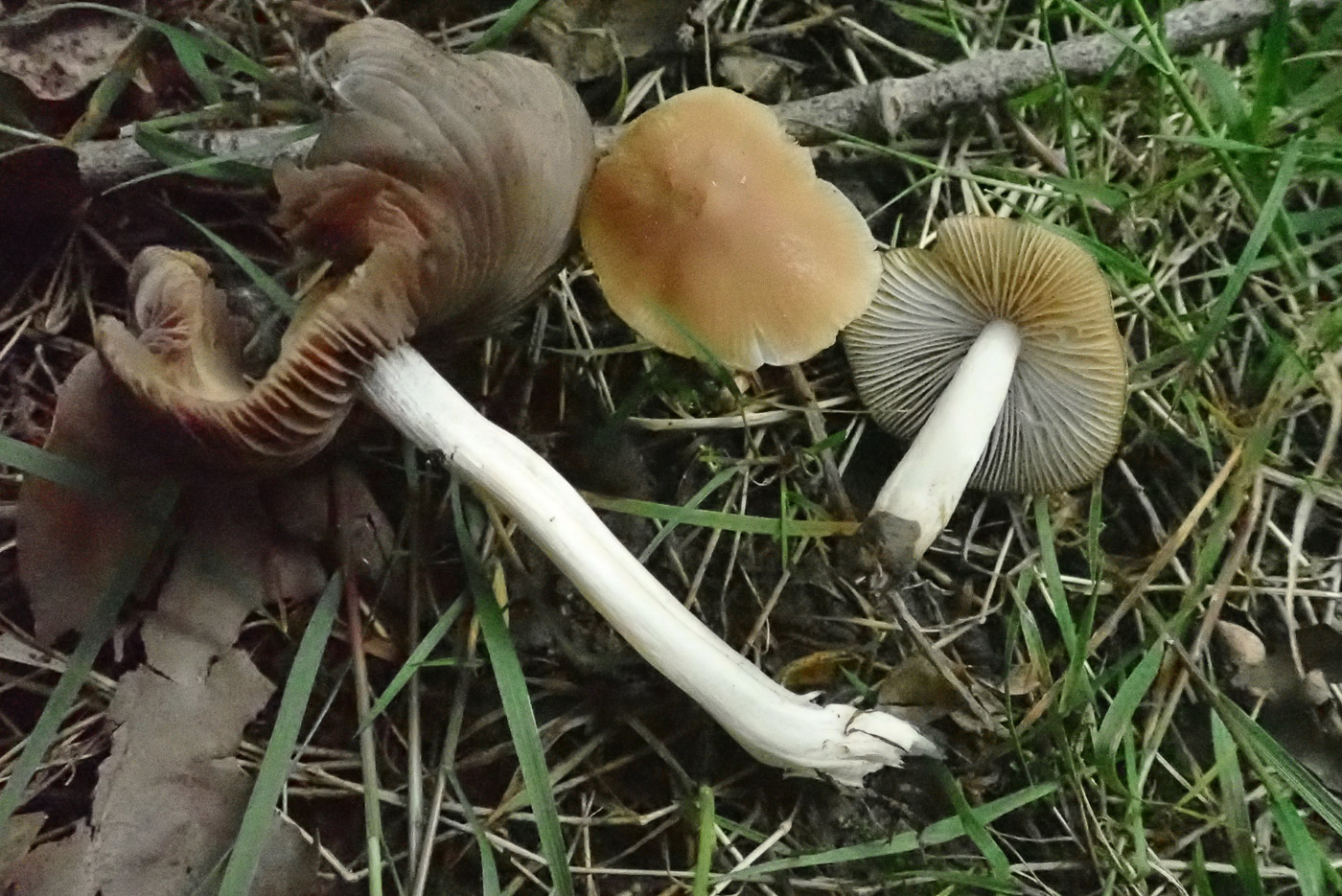 |
Psathyrella spadiceogrisea (Spring Brittlestem)
May 31, 2024. In a grassy path edge at Stampwell Farm Jackie Ewan found these very pale Brittlestems, their ID later confirmed at home with a scope. The cap colour in this genus is often hygrophanous (ie tends to fade) as here, especially if found in areas exposed to sunlight (not that we've seen much of that lately!), and we have two other examples of this springtime species found in March this year. It's not too early now for another lookalike Brittlestem which favours grassy path edges, P. candolleana - now in genus Candolleomyces (Pale Brittlestem), furthermore the genus Agrocybe is also somewhat similar (see the A. praecox entry found above just a day later), so a scope is often essential for a reliable ID. |(The sharp eyed amongst you will notice the tiny brown capped Panaeolina foenisecii also in Jackie's photo.)
Mar 30, 2024. Under the Lime avenue at Turville Heath Penny spotted one fresh brown cap amongst the litter (photo 1), then turned it over to find the typical white stem of this genus though the gills were still amazingly pale for a genus having dark brown spores (photo 2). A little further on she came across a group looking entirely different in cap colour though, knowing the caps in this genus often fades in this way, she was fairly confident these finds were all the same quite common springtime Brittlegill. A scope confirmed it. Photo 4 shows how the dark spores have now coloured the gills to match.
Mar 3, 2024. In woody litter under the Lime avenue at Turville Heath Penny was pleased to find just a fresh young singleton of this species (photos 1 and 2), but a little further on came across a small group showing the typically darker gills of the genus as the spores mature and the tendency for the cap to fade, staring from the centre. As the English name suggests, this is common in Spring though our database shows that this is one of our earliest records for it, April and May being the main months when it appears.
Apr 5, 2023. At Turville Heath in woody deciduous litter Penny found this pair - a common woodland springtime species and one we also found at Rushbeds Wood a couple of days earlier. The species starts out with a rich brown cap but is highly hygrophanous (rather like Laccaria laccata) and here had completely lost all colour. All members of this genus need checking with a scope. At Rushbeds we made three collections, two were this species but one defied identity and will be sequenced. See also in Finds 2021 May 12th and 2022 September 7th. Photo 2 is from the same site but taken ten days later and showing less faded caps.
Sep 7, 2022. Lurking in a nettle patch in bare soil was this cluster of Brittlestems at Turville Heath, found by Penny. Despite its common name this species fruits at this time though much less frequently than it does earlier in the year. It's typical of its genus in general appearance and lacks the pale cap with frilly edge seen in the very common P. candolleana (Pale Brittlestem) - a regular in grassy path edges at this time. It's microscopic features need to be checked, however, to be securely identified.
May 12, 2021. In Bernwood Forest along a muddy path Penny found this nice collection of fresh fruiting bodies. At the time she leant towards the genus Agrocybe (often found fruiting in early summer) but was unsure. At home a scope revealed the dark red brown spores (too dark for Agrocybe despite the misleadingly pale almost white immature specimen). She then remembered this particular Psathyrella which fruits now, and sure enough all the features fitted. It's not rare and the recent much needed rain had clearly triggered its appearance.
|
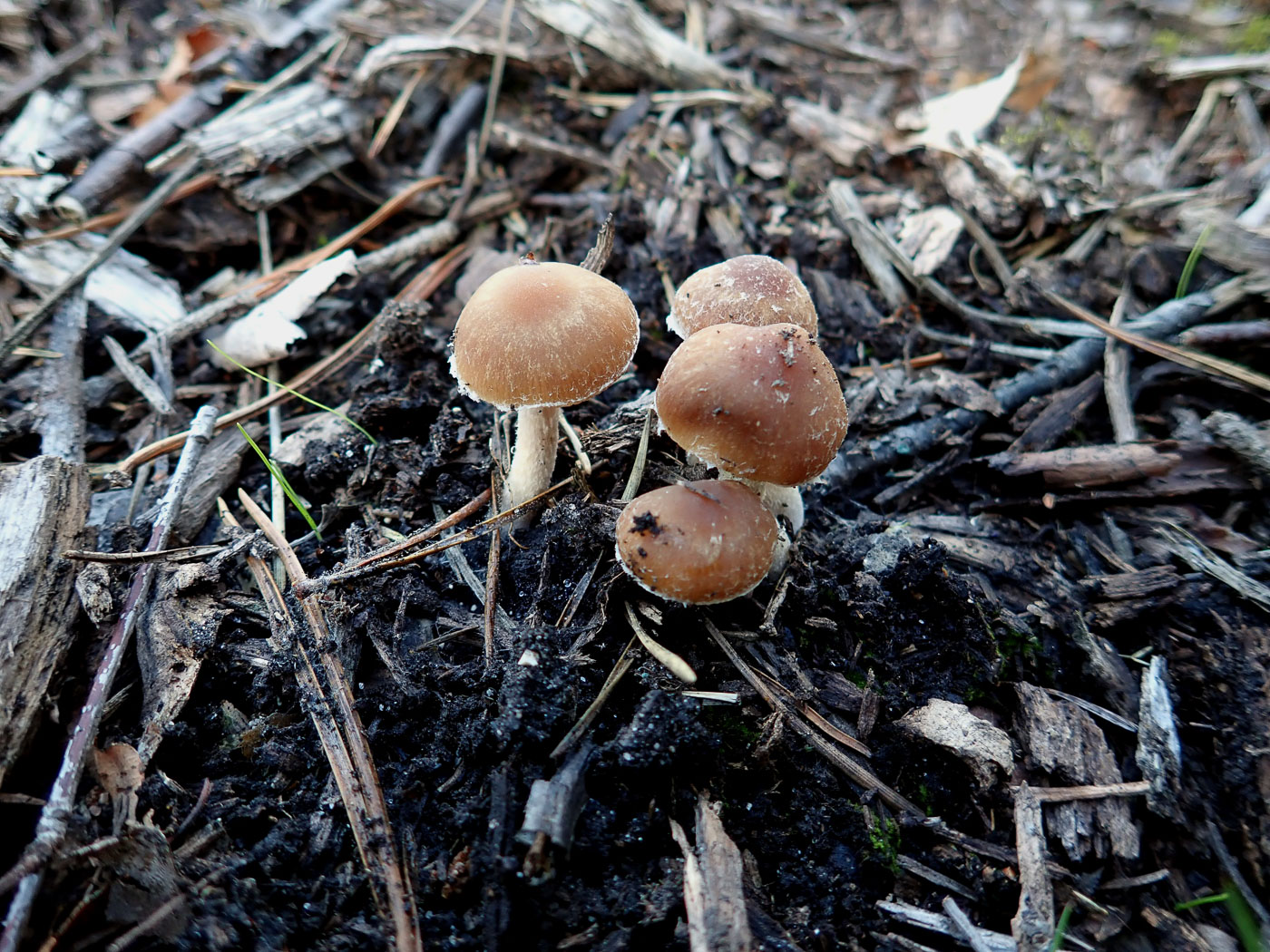
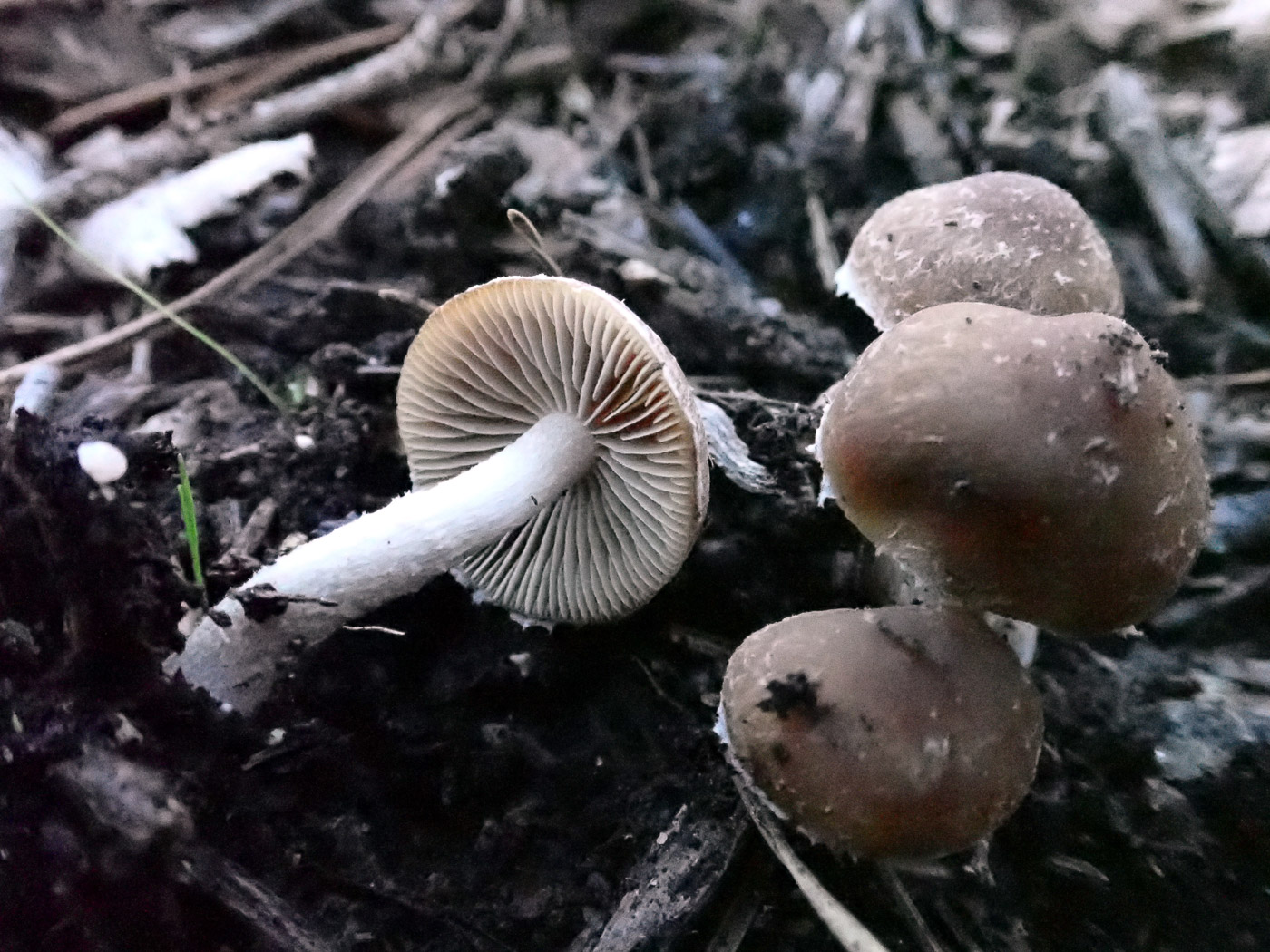 |
Psathyrella sphagnicola  (a Brittlestem with no common name) (a Brittlestem with no common name)
Sep 29, 2022. At Stoke Common in a mossy clearing amongst woody debris where a tree - possibly Pine - had been removed, Penny noticed these three small LBJs, and spent quite some time working on their identification at home. Though Brittlestems are usually quite easy to name to genus, having gills which gradually darken with age and white stems which snap easily, that's where the easy bit ends! Microscopic study with specialised keys and books is nearly always essential, and even then as often as not one ends up with no conclusive result. This collection, if named correctly, is a rare species, new to the county and will certainly need sequencing to confirm. Despite its name, Penny learnt that the species is not exclusively a species of Sphagnum but also occurs with other mosses, often in conifer forests.
|



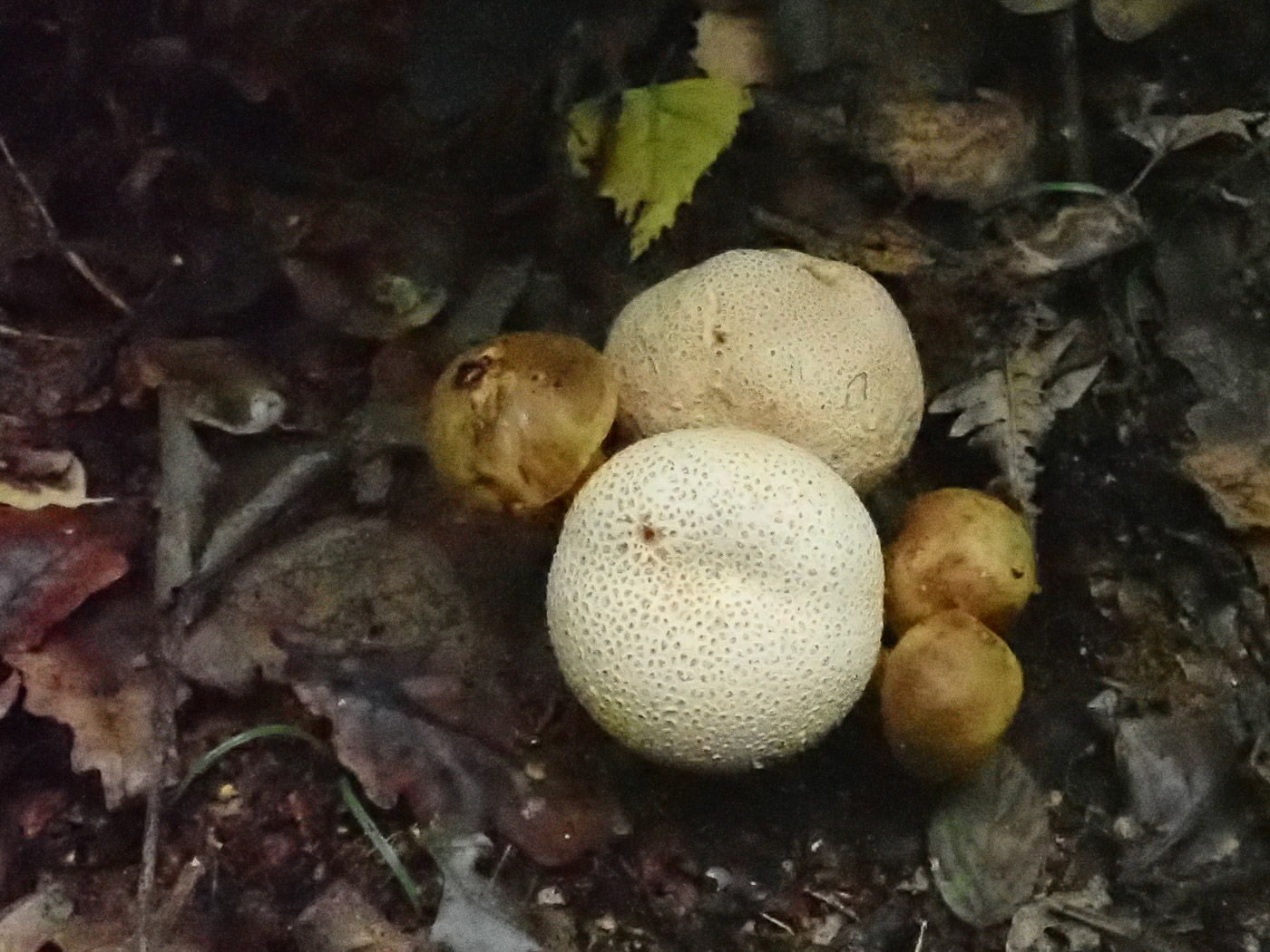
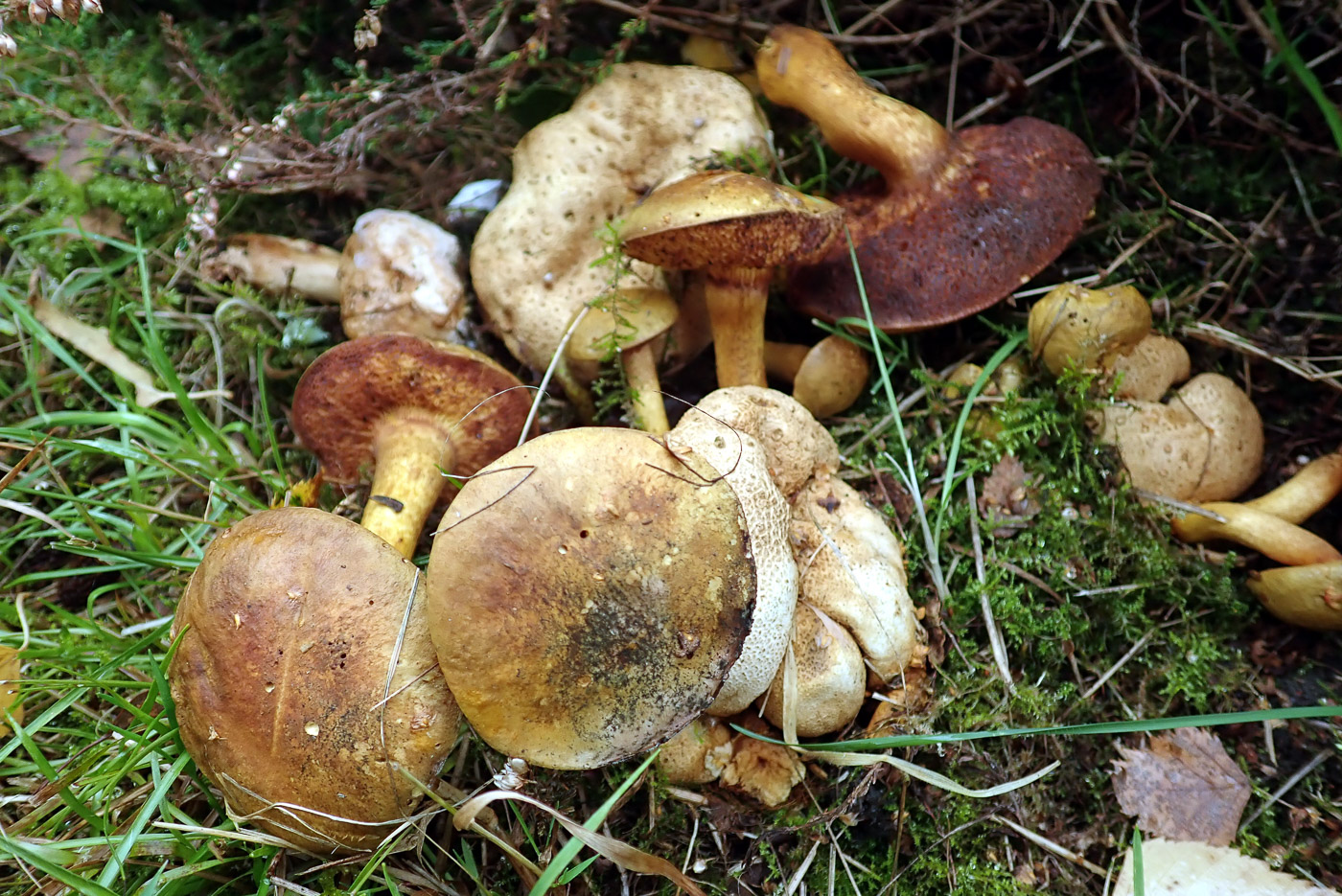
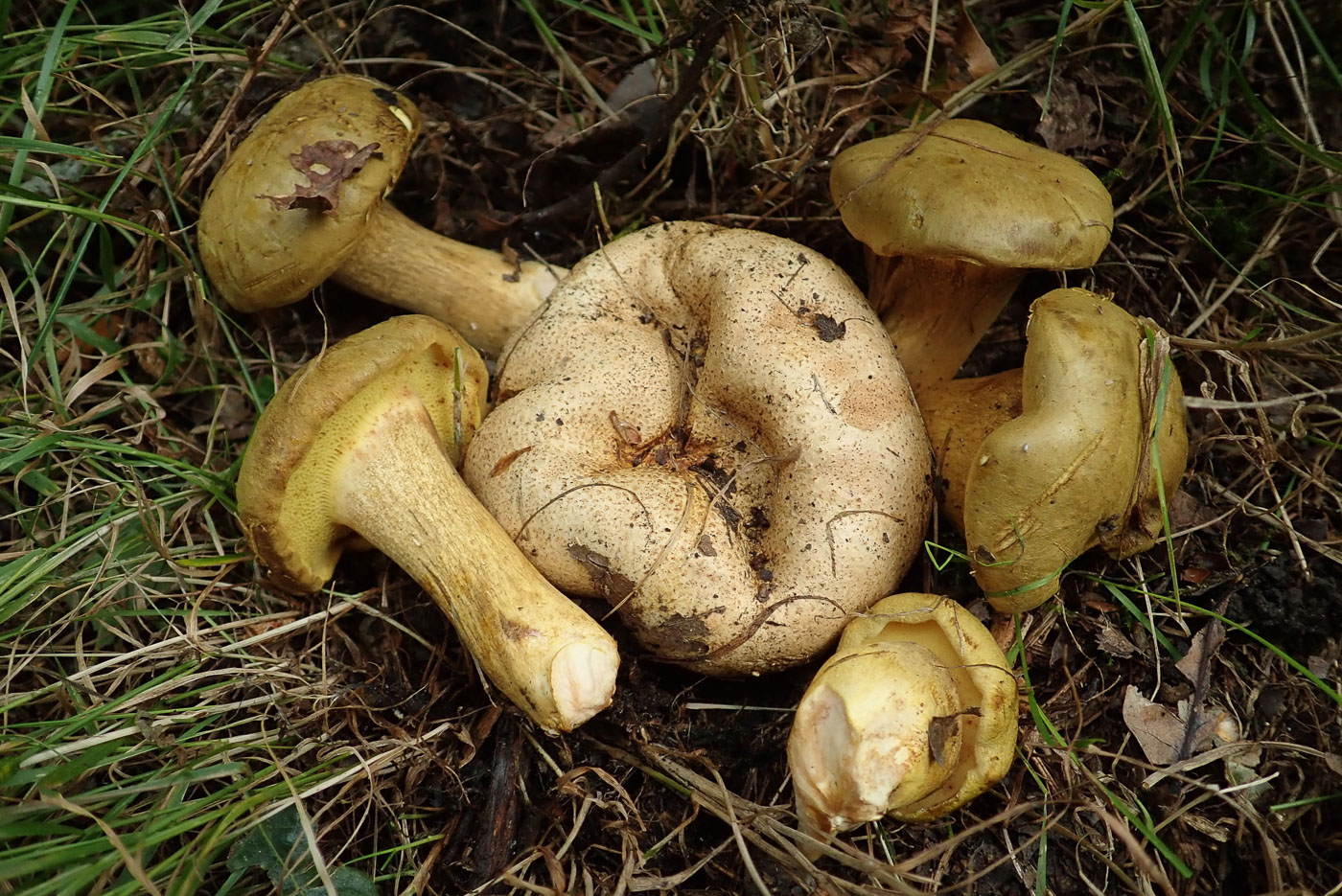
|
Pseudoboletus parasiticus (Parasitic Bolete)
Oct 11, 2023. Marlow Common is the best local site to find this unusual species, though today Penny found only one example just emerging around its host Scleroderma citrinum (Common Earthball). We've looked elsewhere for it when coming across this particular Earthball during the last few weeks but without success, so maybe conditions are now triggering it into action so one to look out for now. Photo 3 shows a slightly further developed example found at this same site three days later by Noel Murray.
Oct 15, 2021. In Marlow Common Penny found this unusual Bolete, one which is entirely restricted to growing on its particular host also seen here: Scleroderma citrinum (Common Earthball). These are young examples though the species never gets very large as Boletes go. In some years it is quite easy to find, in others it is rarely reported despite good numbers of its host fungus being present, but Marlow Common seems to be a hotspot having many mature Oaks - the host tree of the Earthball.
Oct 18, 2020. Boletes are now in short supply having fruited in abundance through September, but here is one still to look out for wherever you see the Common Earthball- Scleroderma citrinum. Penny C. found this collection under a patch of heather in Marlow Common - a site renowned for the occurrence of both the species involved here. This unusual bolete is only found emerging from the sides of this particular Earthball species which can be seen here collapsing inwards presumably as the parasitic fungus consumes it as it grows. (See also our earlier photo dated Sept 26.)
Sep 26, 2020. Paul Cullington found this impressive collection growing out of its host fungus, Scleroderma citrinum, in Naphill Common. This appears to be new to the site (though I seem to recall finding it here last year?). It is the only bolete to have formed a connection with another fungus in this way, growing actually attached to it rather than to tree roots. In some years it is conspicuous by its absence but last year was a good one and it looks as if this year may well be too. So do look out for it wherever you see the very common S. citrinum (Common Earthball)
|

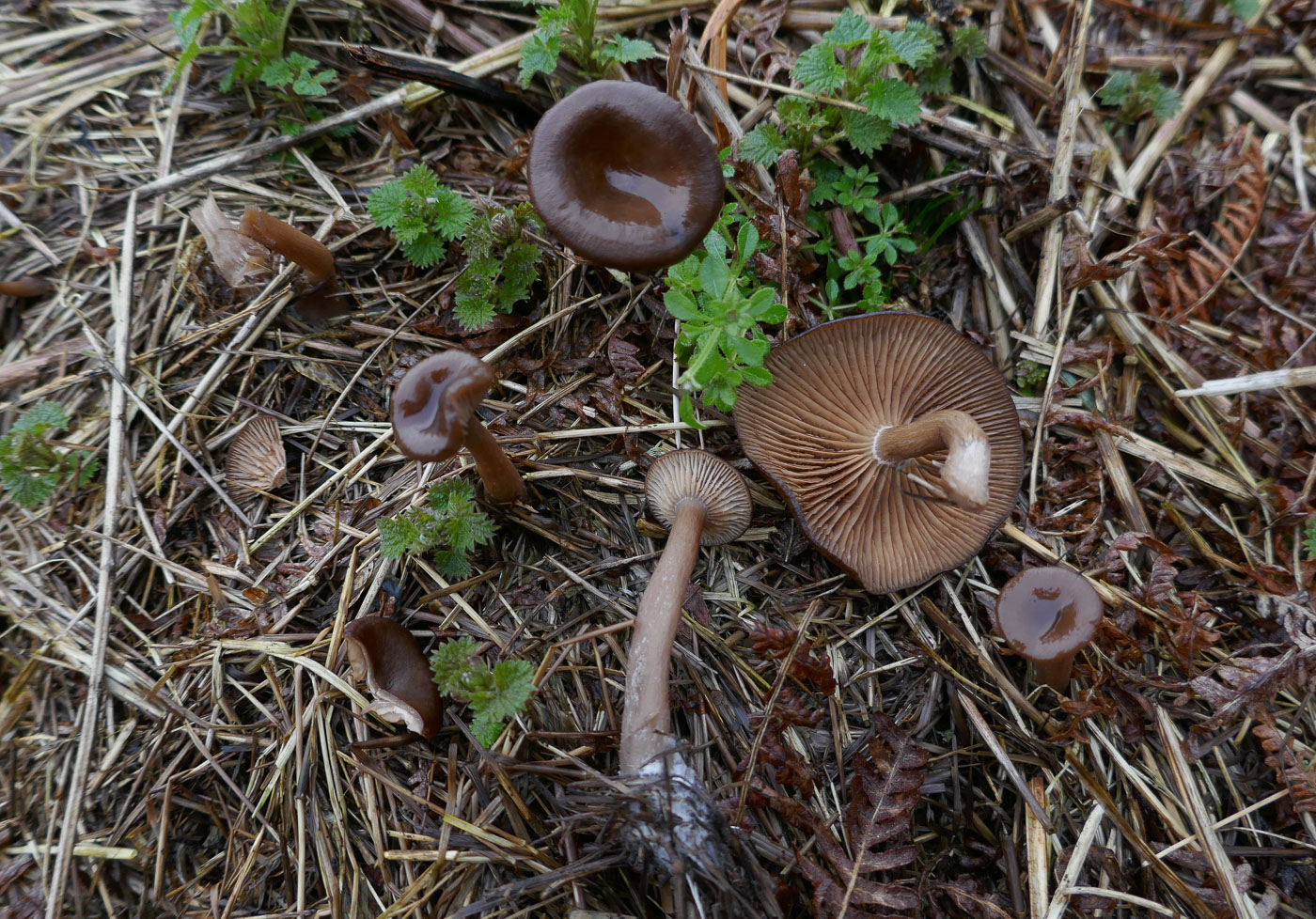
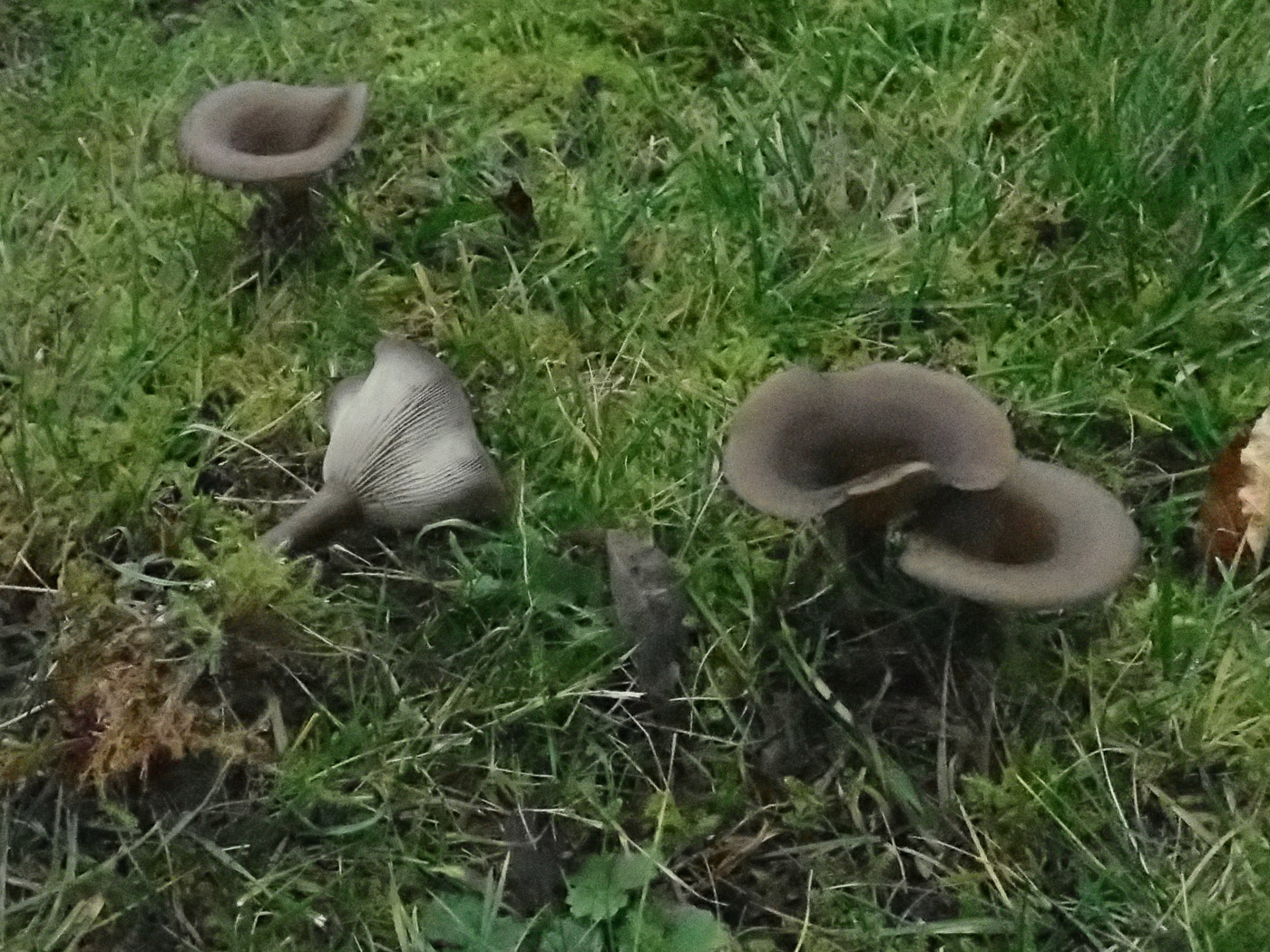
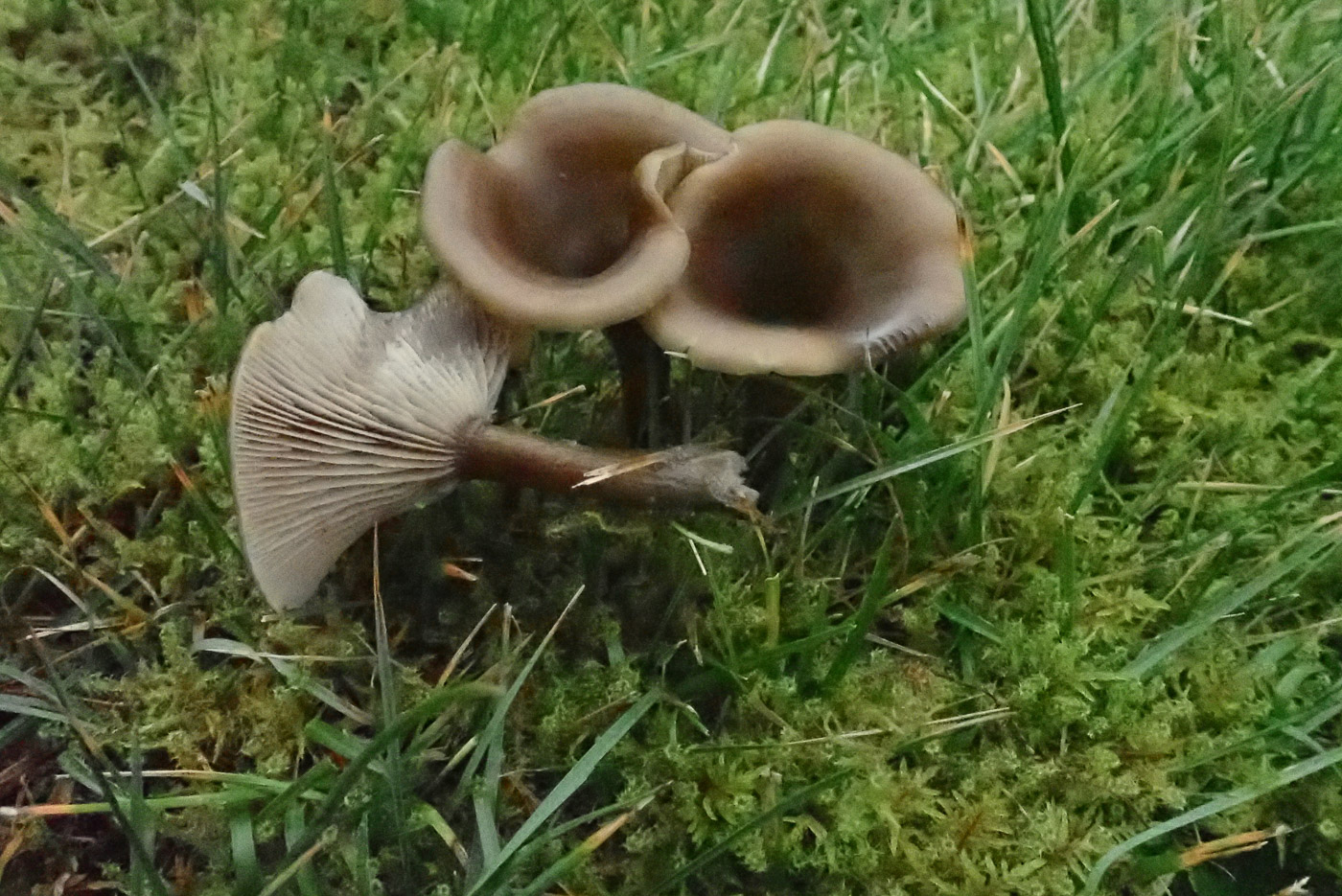
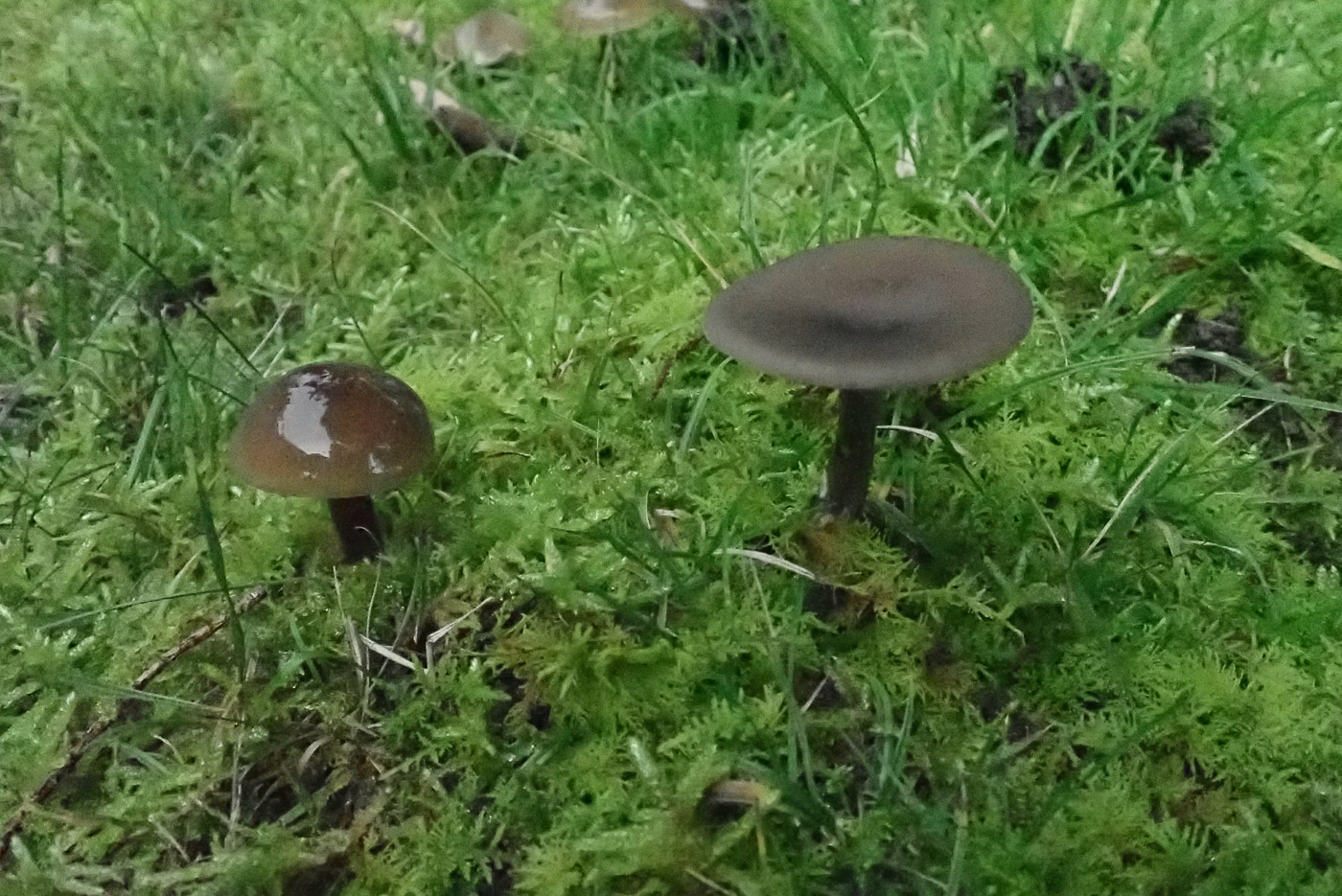
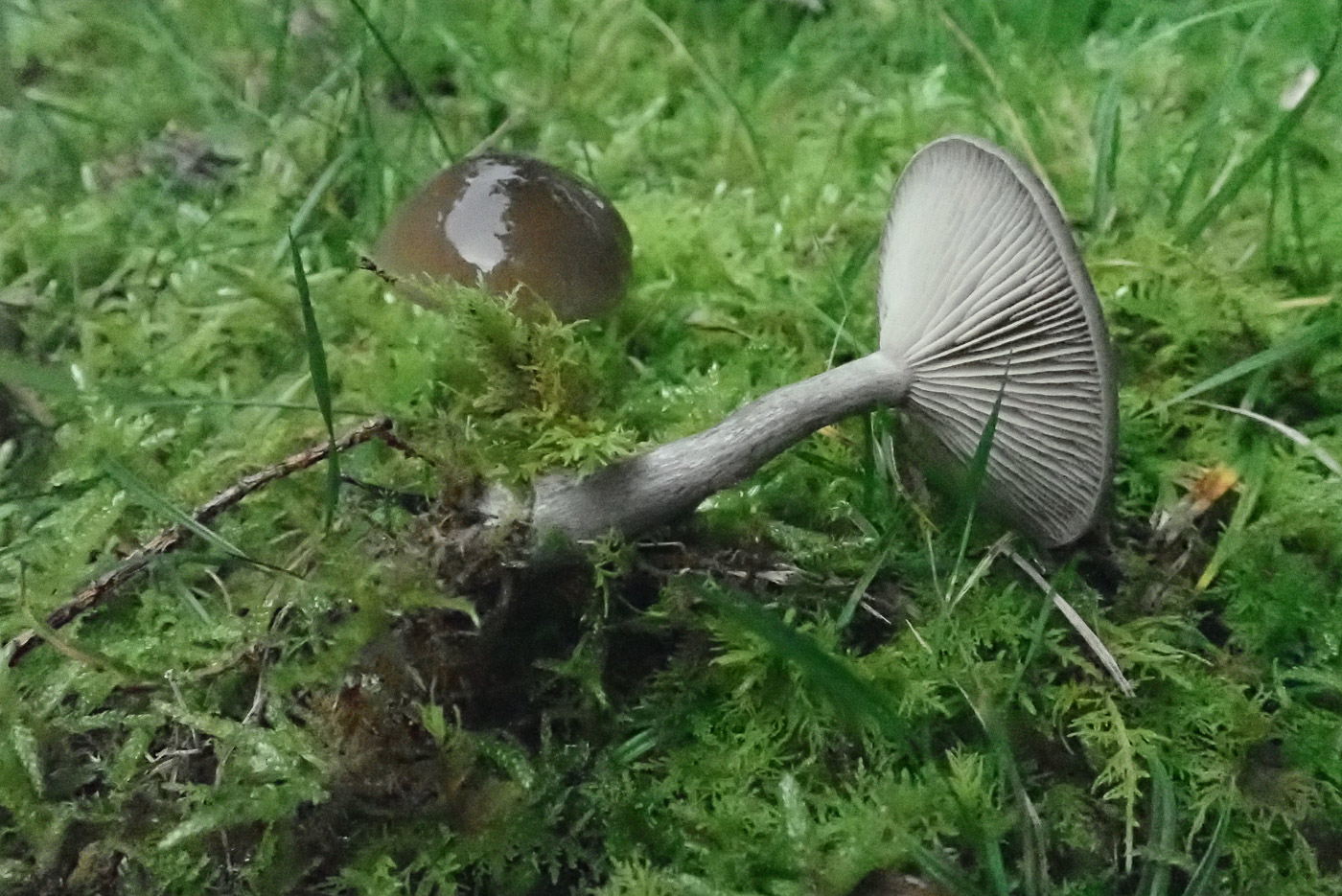
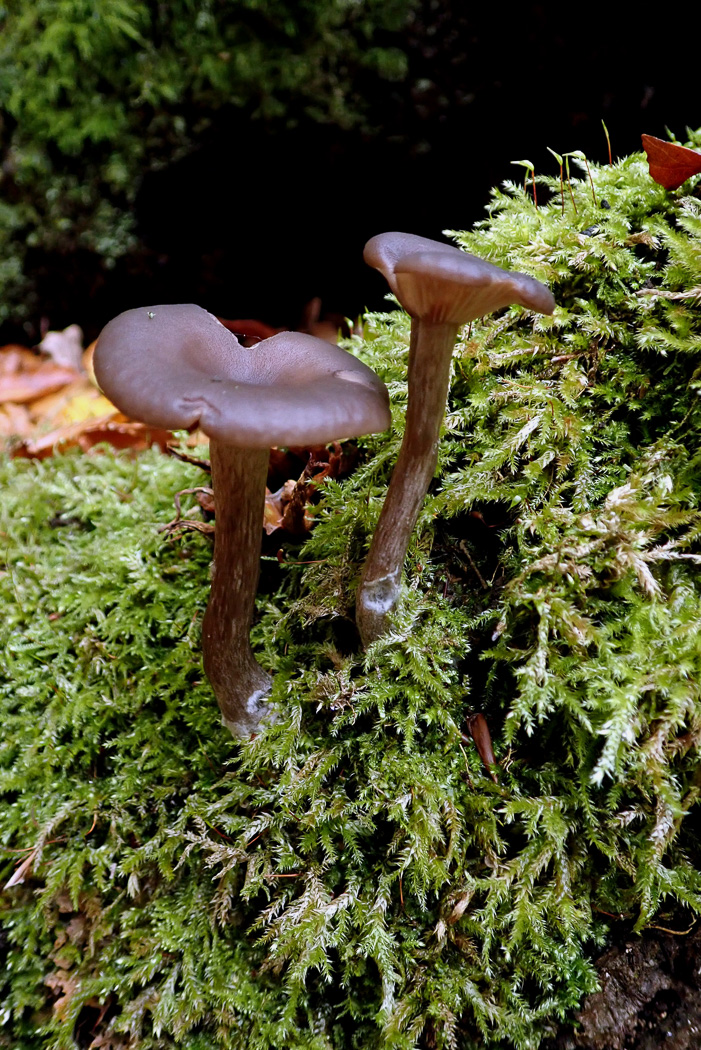
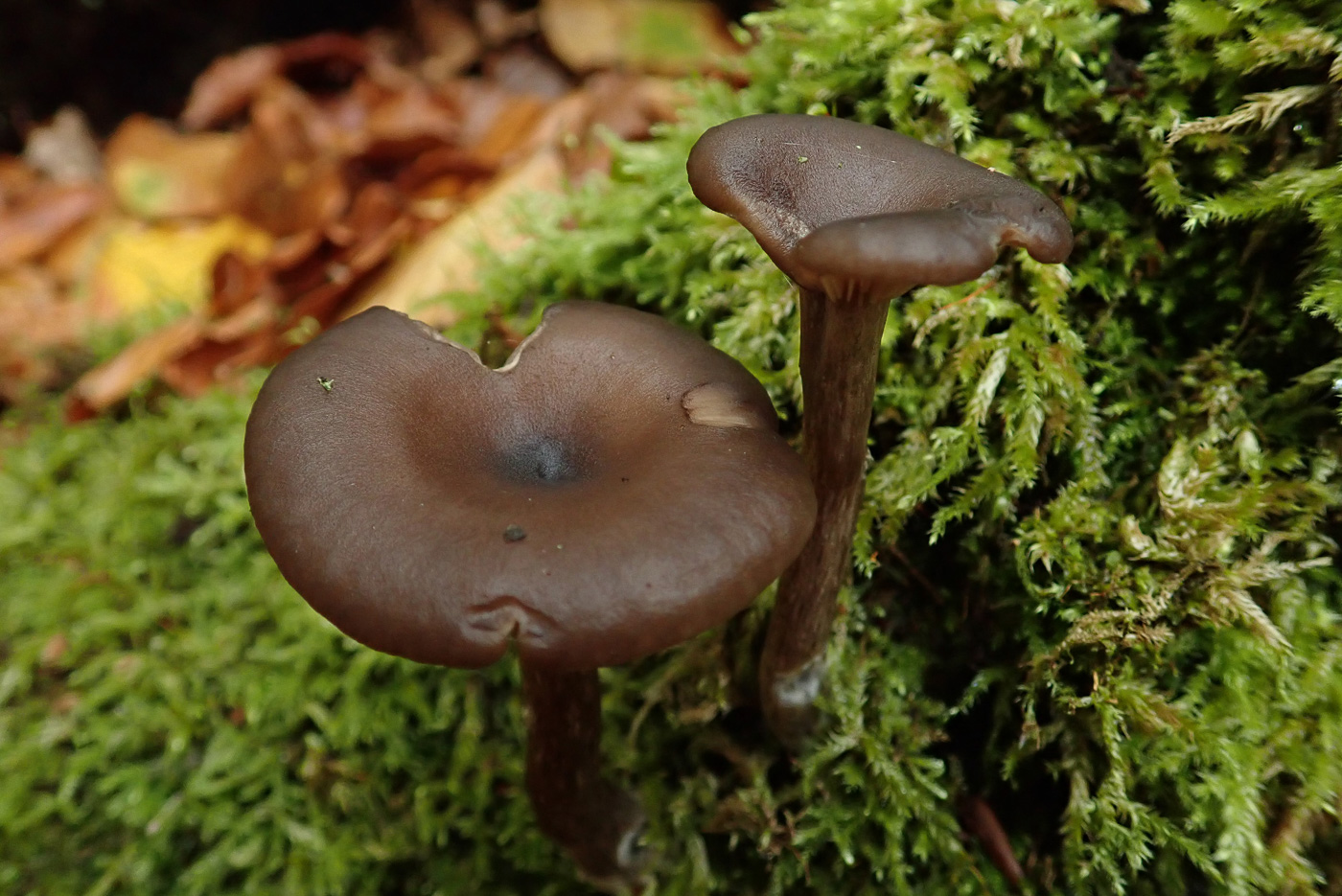
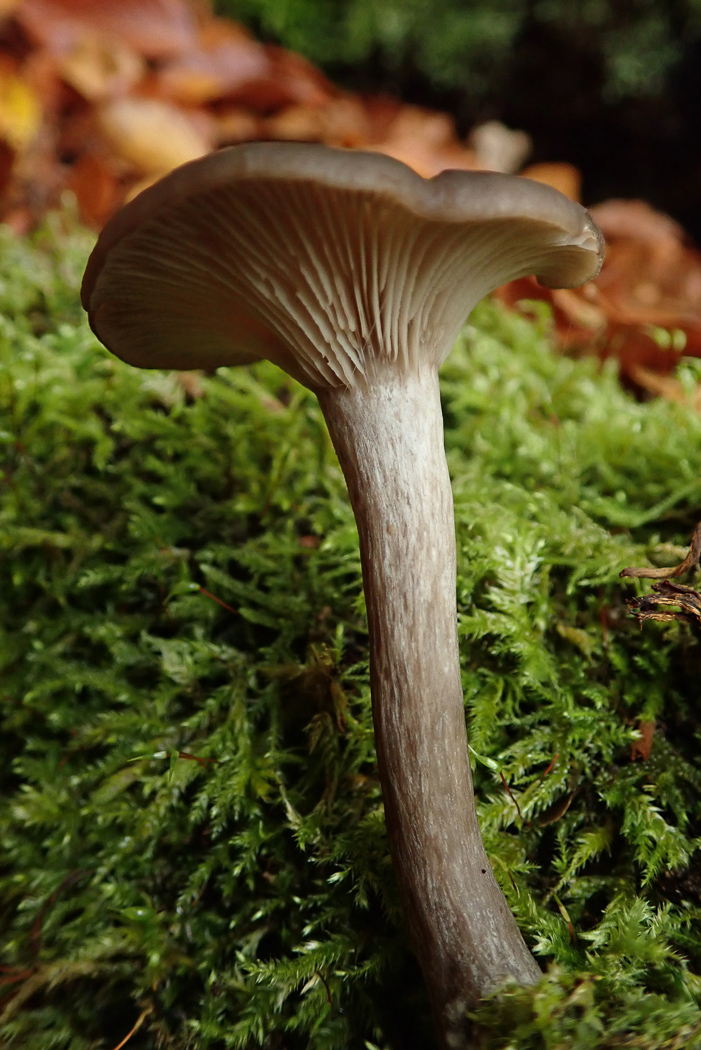 |
Pseudoclitocybe cyathiformis (Goblet)
Apr 14, 2023. In Naphill Common Claire Williams has been noticing this species fruiting on and off in the same woodchip pile for the last year or so. This is quite a common mushroom, its main fruiting season being late Autumn / early Winter, often in grassy places, this reflected by the 60 odd records in our database, none of which are later than February however. So maybe climate change is at play here? Time will tell.
Feb 24, 2022. On an old dung heap at Stampwell Farm Jackie Ewan noticed this late season mushroom fruiting where she'd found it late last year.
Dec 30, 2021. In Prestwood Churchyard Penny found a group of this distinctive species which often fruits late in the season in grassy areas. Its common name describes its shape nicely.
Nov 18, 2021. In Prestwood Churchyard amongst a veritable forest of small very slimy brown Waxcaps (Gliophorus irrigatus) Penny noticed a single dry capped brown Goblet! She'd never seen so many Slimy Waxcaps in one spot and which feature also in the photo here - but see Oct 25th for more on that species. We also saw the Goblet in Penn Street Churchyard last weekend as it tends to be a late season fruiter and it is an easy one to recognise with its markedly decurrent gills, its sunken darker cap centre and over-all grey brown colours.
Oct 24, 2020. Penny C. noticed these two fruit bodies growing in moss on a deciduous stump in Gussetts Wood. This is a late season fruiter and is normally found in soil, often in grassy areas rather than woodland, but the dark grey shiny cap and distinctive shape are diagnostic and make it an easy species to recognise.
|
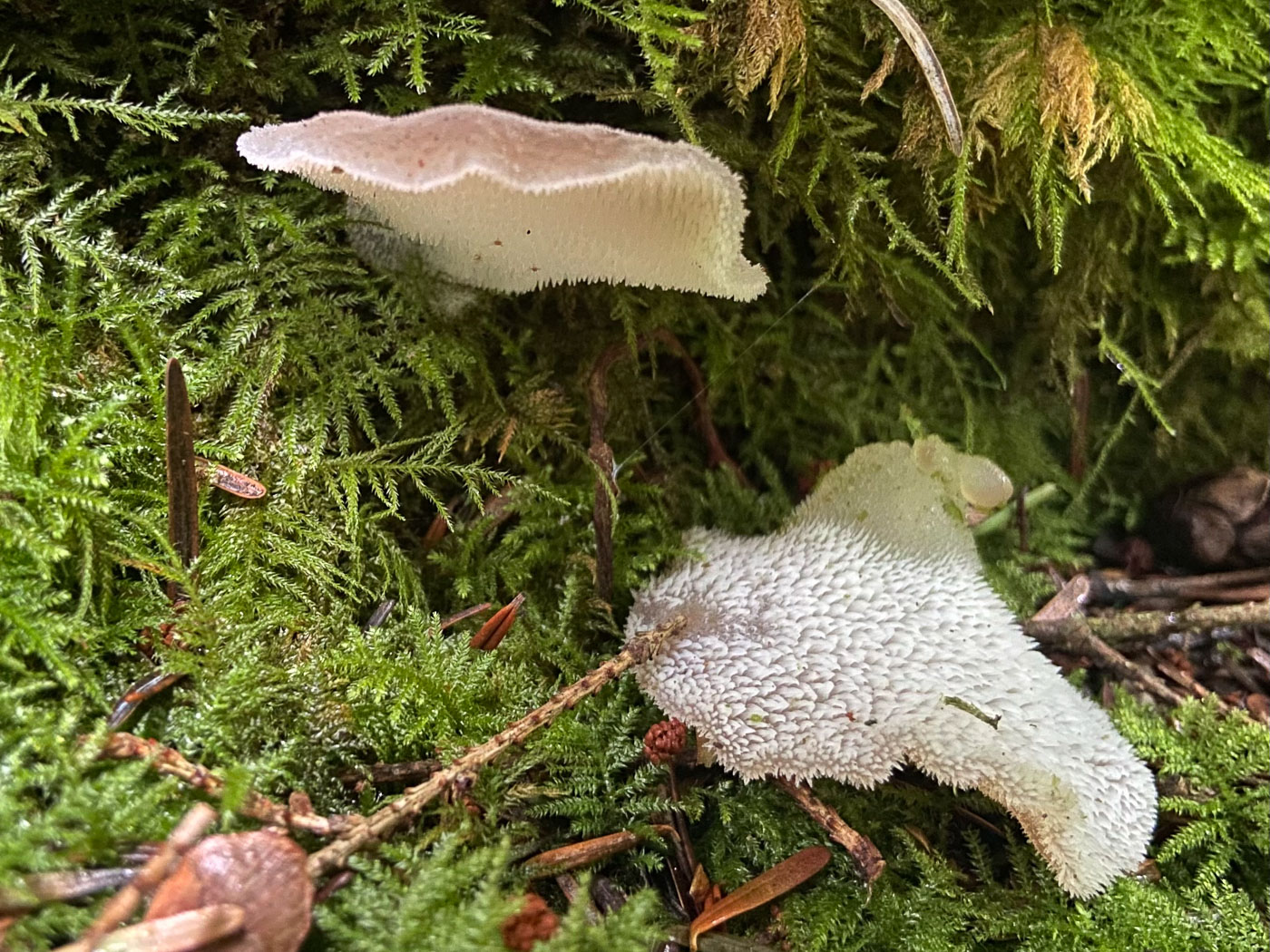
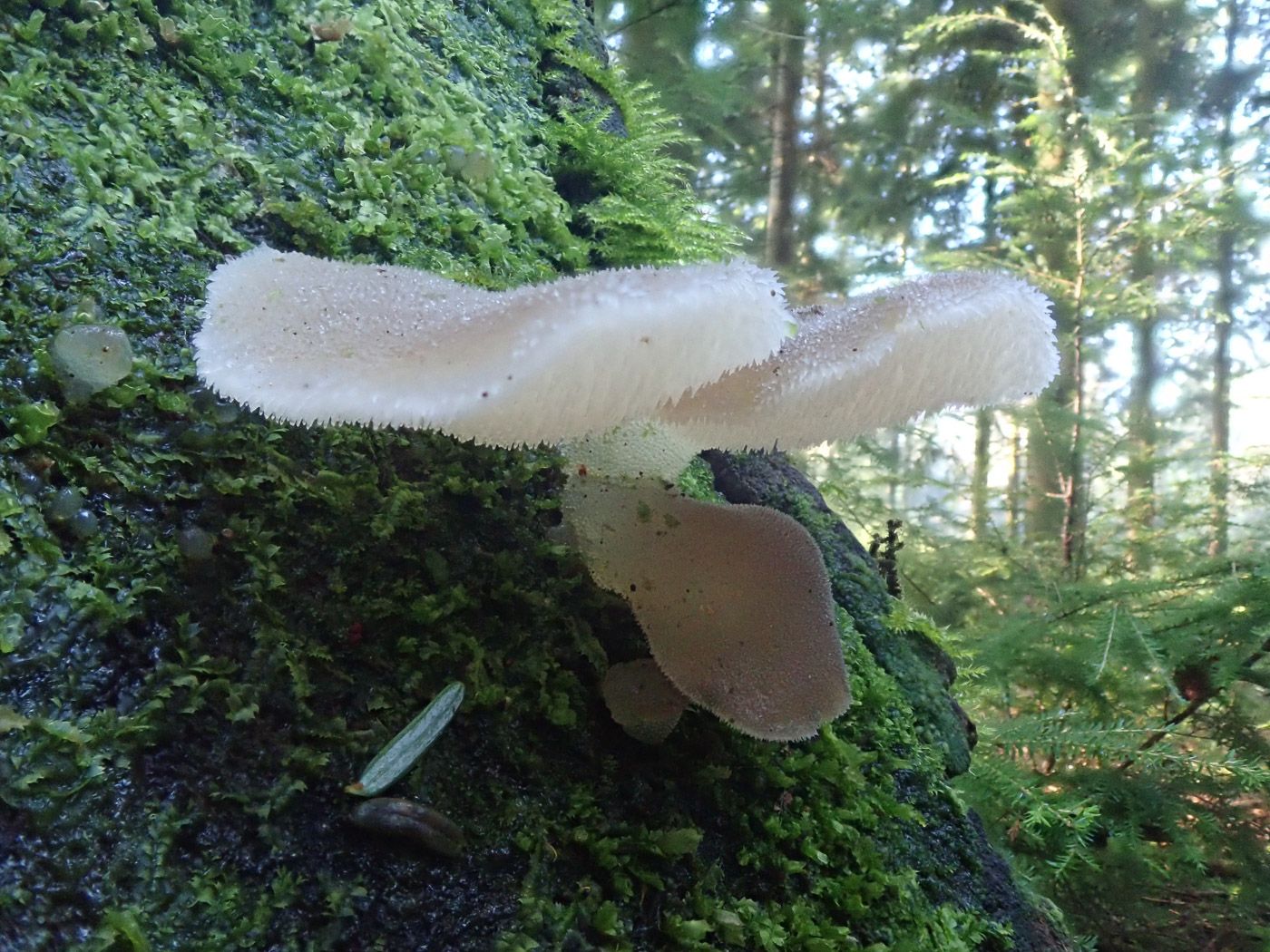
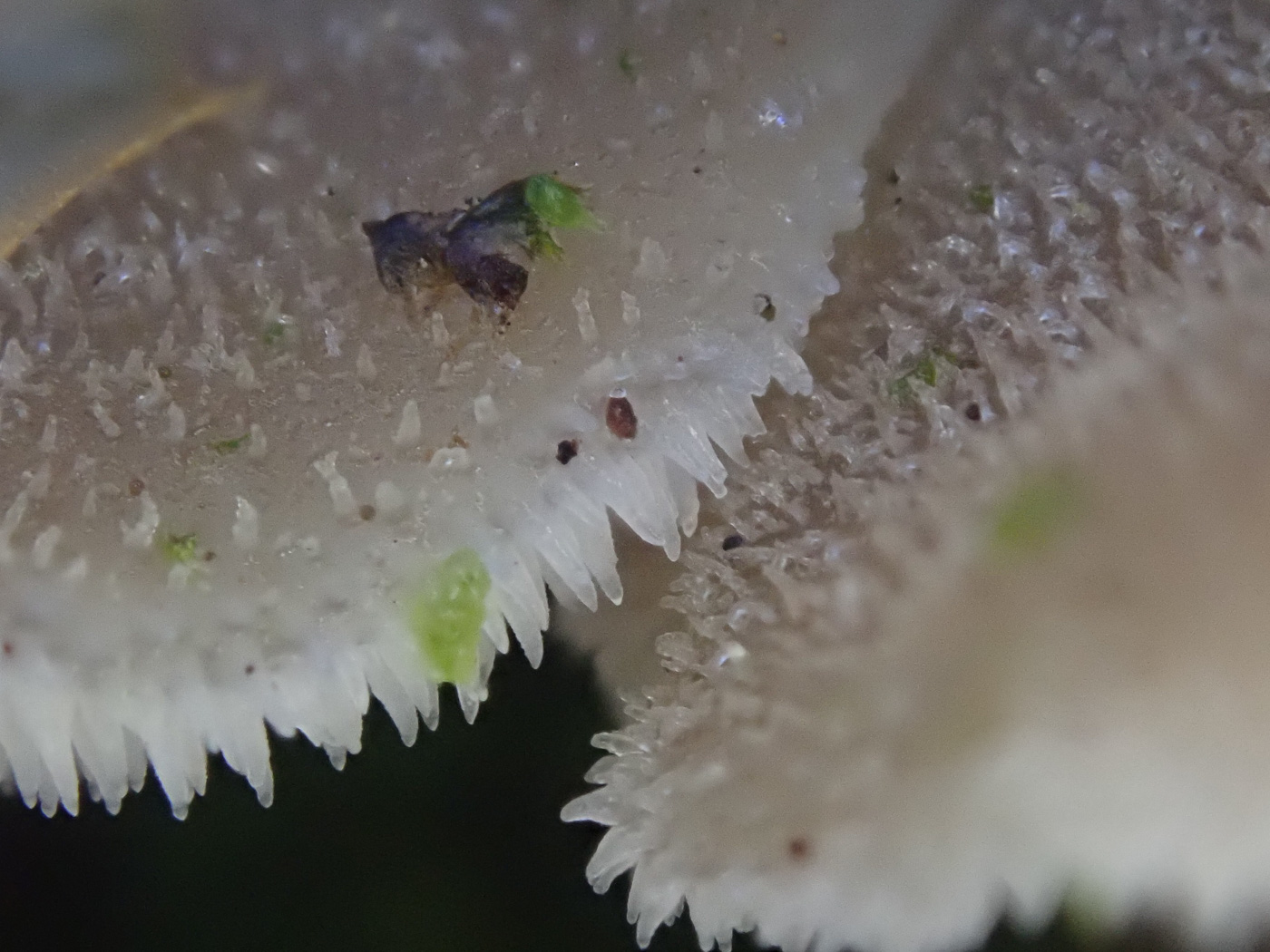
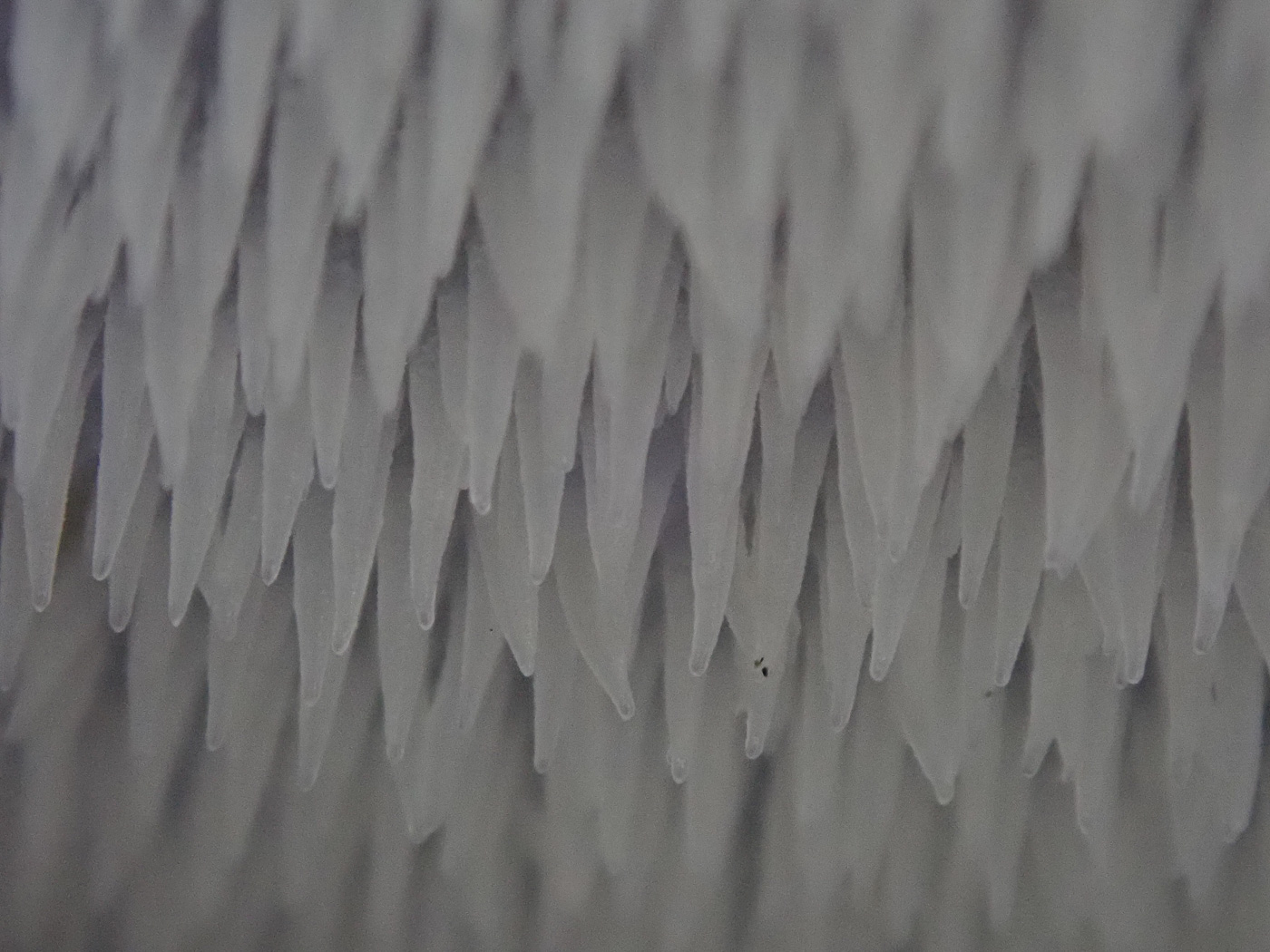 |
Pseudohydnum gelatinosum (Jelly Tooth)
Dec 18, 2021. In Redlands Ends (a conifer plantation near Prestwood) Sarah Ebdon found beautiful pristine material of this stunning species, one we have records of from a handful of county sites but have not recorded since 2018. It is not rare but is always an exciting one to find, especially when looking as it does here! This is one of the 'Jelly Fungi' (as are Auricularia, Tremella, Exidia etc) but its spiny underside make it unmistakeable and it occurs on rotting conifer wood / stumps. (Photos 2,3 and 4 were taken the next day when Sarah returned with a better camera!)
|

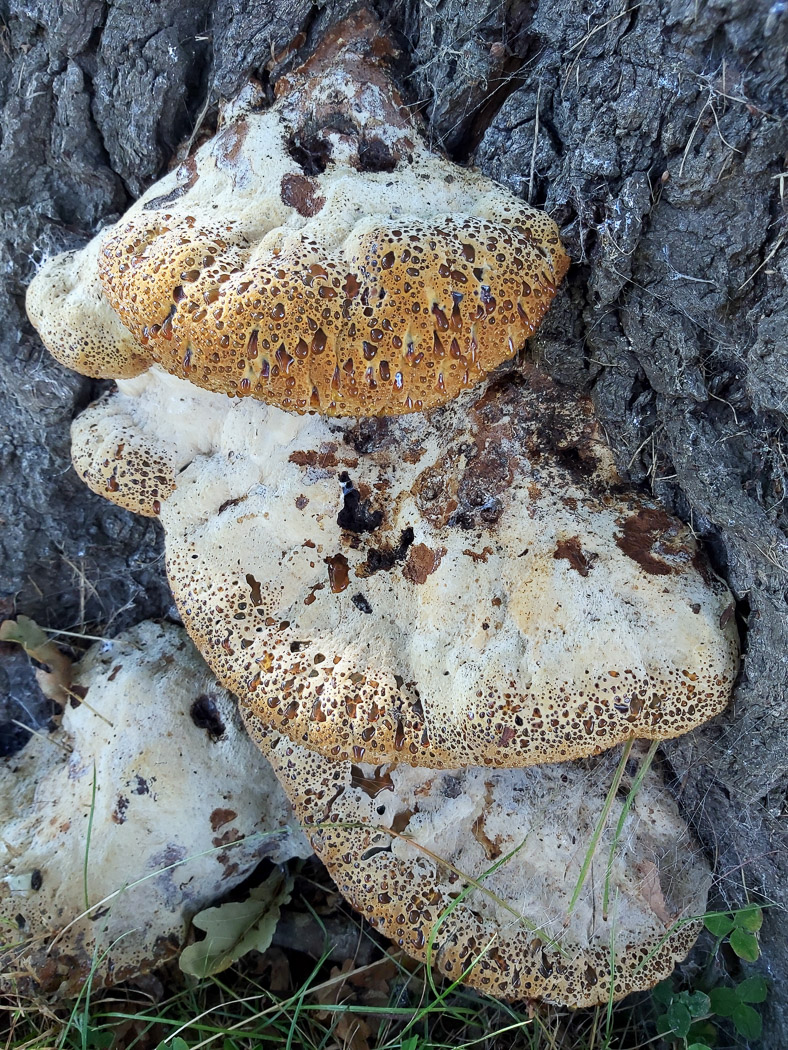

|
Pseudoinonotus dryadeus (Oak Bracket)
Jun 24, 2023. In Gerrards Cross under a mature Oak Jesper Launder noticed this typically weeping example of quite an uncommon bracket. Better known under its previous genus name of Inonotus, it occurs almost exclusively on Oak (occasionally on Sweet Chestnut) and is parasitic, living on the heartwood of mature trees and nearly always appearing low down on the trunk as here.
Jul 28, 2021. At the base of a mature Oak in Chalfont St. Peter Jesper Launder spotted this large and impressive bracket displaying its typical droplets which form when the fungus is actively growing and moist. The pores, not seen here, are greyish white as are the spores, and we have several sites where we record it regularly on its host tree, Oak.
Sep 24, 2020. Previously in the genus Inonotus, this substantial and occasional species was found by Sarah Ebdon in Lacey Green growing on living Oak, its usual host (though it can rarely occur on Sweet Chestnut). A perennial species, its fine pores below (not visible here) are greyish white and whilst at the growing stage the coloured droplets seen here are typical of the species.
|
 |
Pseudosperma flavellum sl. (a rare species of Fibrecap) 
Apr 26, 2023. Under Willow on the Oakland Park golf course, Chalfont St. Giles, Jesper Launder was astonished to find quantities of a Fibrecap fruiting at this time. Penny has never found Fibrecaps in April and obtained the material to attempt an ID. P. flavellum (previously in genus Inocybe) is a recognised complex of species (as indicated here by 'sl' - sensu lato, ie in the general sense) and still not fully sorted out even with DNA. It is doubtful if the species we find in the UK under Willow and Poplar is the genuine P. flavellum as originally assumed, and that name should possibly be assigned to the alpine species within the complex. Sequencing has now confirmed today's collection as matching that of 'Inocybe cfr flavella' - a member of the complex yet to have a separate name.
|
 |
Pseudosperma perlatum (a rare Fibrecap with no common name) 
Jul 16, 2023. In soil under a mix of deciduous trees in Bernwood Forest Jesper Launder found this cluster of Fibrecaps which, as always with this genus, needed work at home to identify. This genus - split off from Inocybe ss in part on account of its thin-walled cystidia only found on the gill edge - is nearly always tricky to key out. This species is very closely related to the common P. rimosum but differs in having a brown cap with no yellow, also a stem which is darker towards the base, clearly seen here. We have only two previous county records and this is a new entry for Finds. The collection will be sequenced.
|
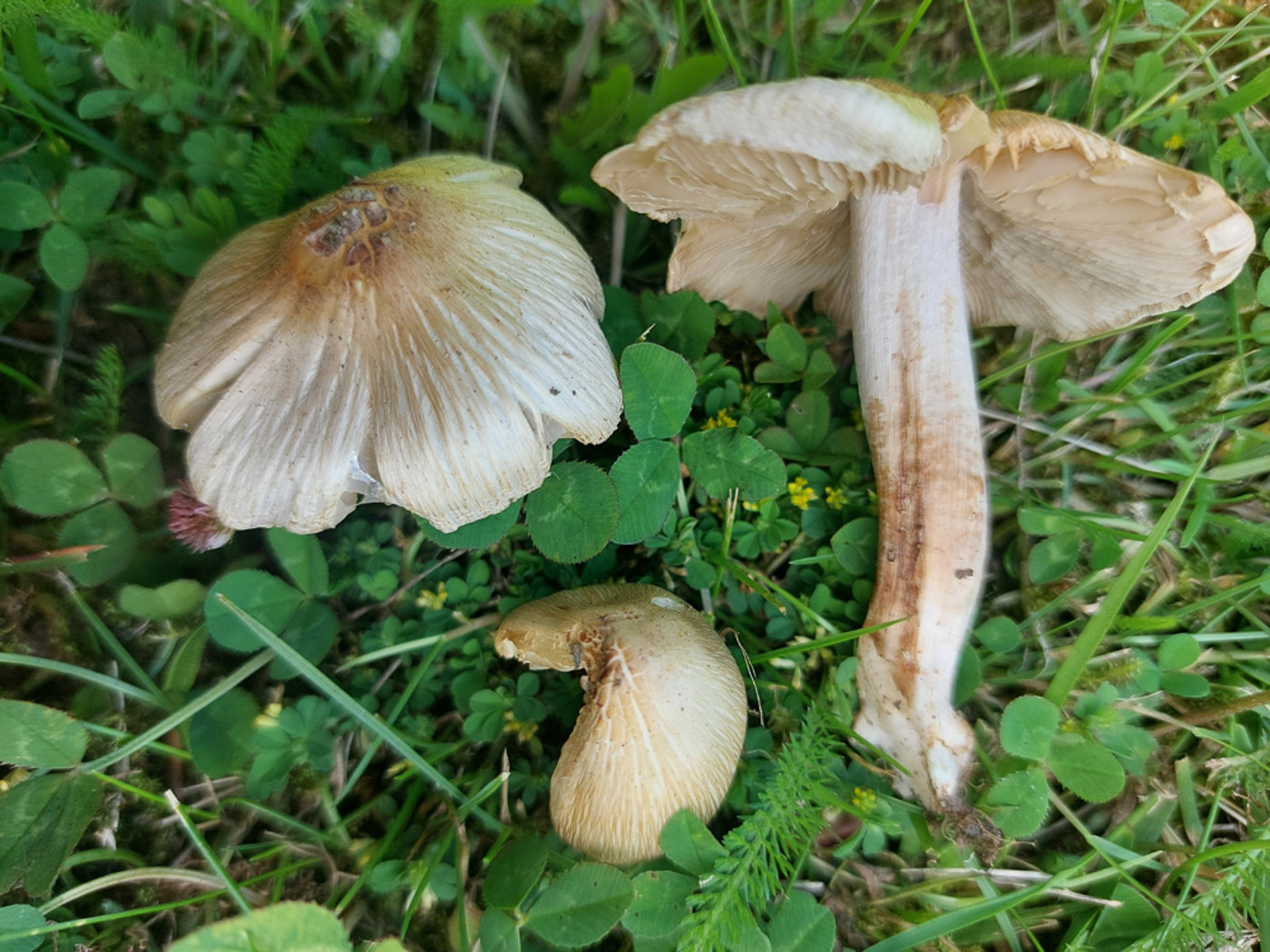

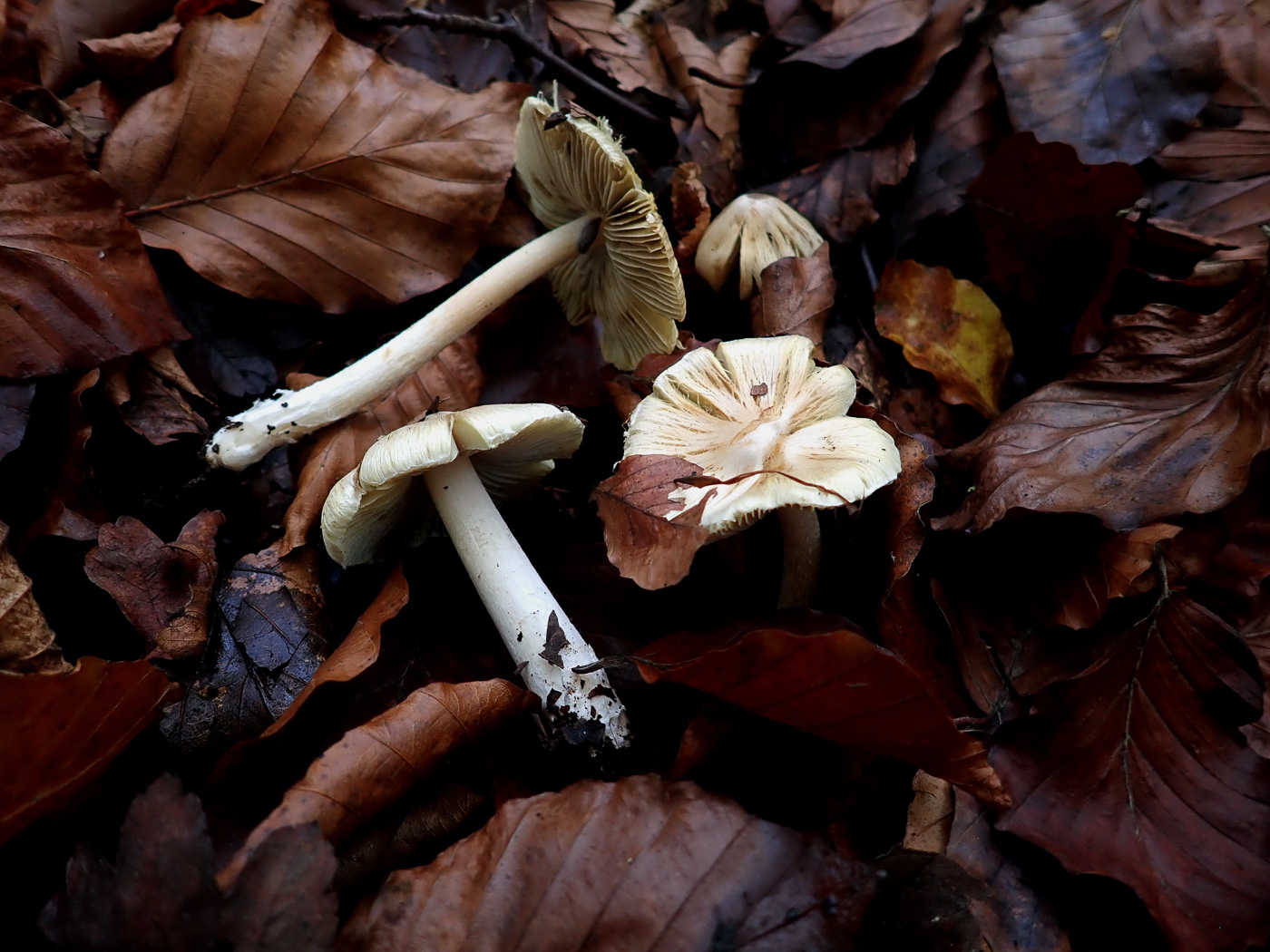 |
Pseudosperma rimosum (Split Fibrecap) 
Jun 7, 2024. Under Beech in the Beaconsfield Services (!) Jesper Launder found this group of Inocybaceae species - the genus Inocybe now confusingly split into 4 different genera - and took it home to work on. It keyed out to P. obsoletum - one of several species belonging to the 'rimosum' complex having pretty well identical micro features and varying little in field characters, hence being tricky to identify with any certainty. P. obsoletum is characterised by having a pale cap with veil (though that feature, missing here, may have been removed by recent rain?). Penny feels that Jesper's hunch that this collection is the rare P. obsoletum could be correct but that it could just as easily be the much more common P. rimosum, hence its naming here. Hopefully sequencing will confirm its true identity.
Jul 18, 2023. In Gerrards Cross Common Jesper Launder found this pair of Fibrecaps under Oak and recognised the species (previously in genus Inocybe) from its pale streaky splitting cap and pale gills. Though one of our commonest Fibrecaps and found under a range of different trees, the species is variable and now recognised as a species complex but fairly safe to name when looking typical as here. See also in Finds 2022 November 10th.
Nov 10, 2022. In Round Spring Wood, Dancersend, we found this group of a species previously known as Inocybe rimosa (the ID and photo is Penny's). It is one of the commoner Fibrecaps and is usually pale with a distinct umbo, the typical acidic to spermatic smell associated with many Fibrecaps, and a cap which often splits near the edge as can be seen here. It occurs under many different trees but nearly always needs checking microscopically to be sure of its identity. It is new to Finds though we do have an image of the very closely related P. umbrinellum which has a darker cap. See Finds 2022 September 27th for comparison.
|
 |
Pseudosperma squamatum (a species of Fibrecap with no common name) 
Jul 7, 2023. In the middle of a muddy path at Rushbeds Wood Penny nearly trod on these two! The species is quite rare, not often recorded, and this spot in Rushbeds is our only known county site. A typical nondescript LBJ and previously in genus Inocybe, it is very closely related to the much more common P. rimosum (previously I. rimosa) but has distinctive gill cells and often (though not clear here) a scaly cap. It favours Willow and Poplar but here was near Hazel. This is a new entry for Finds.
|
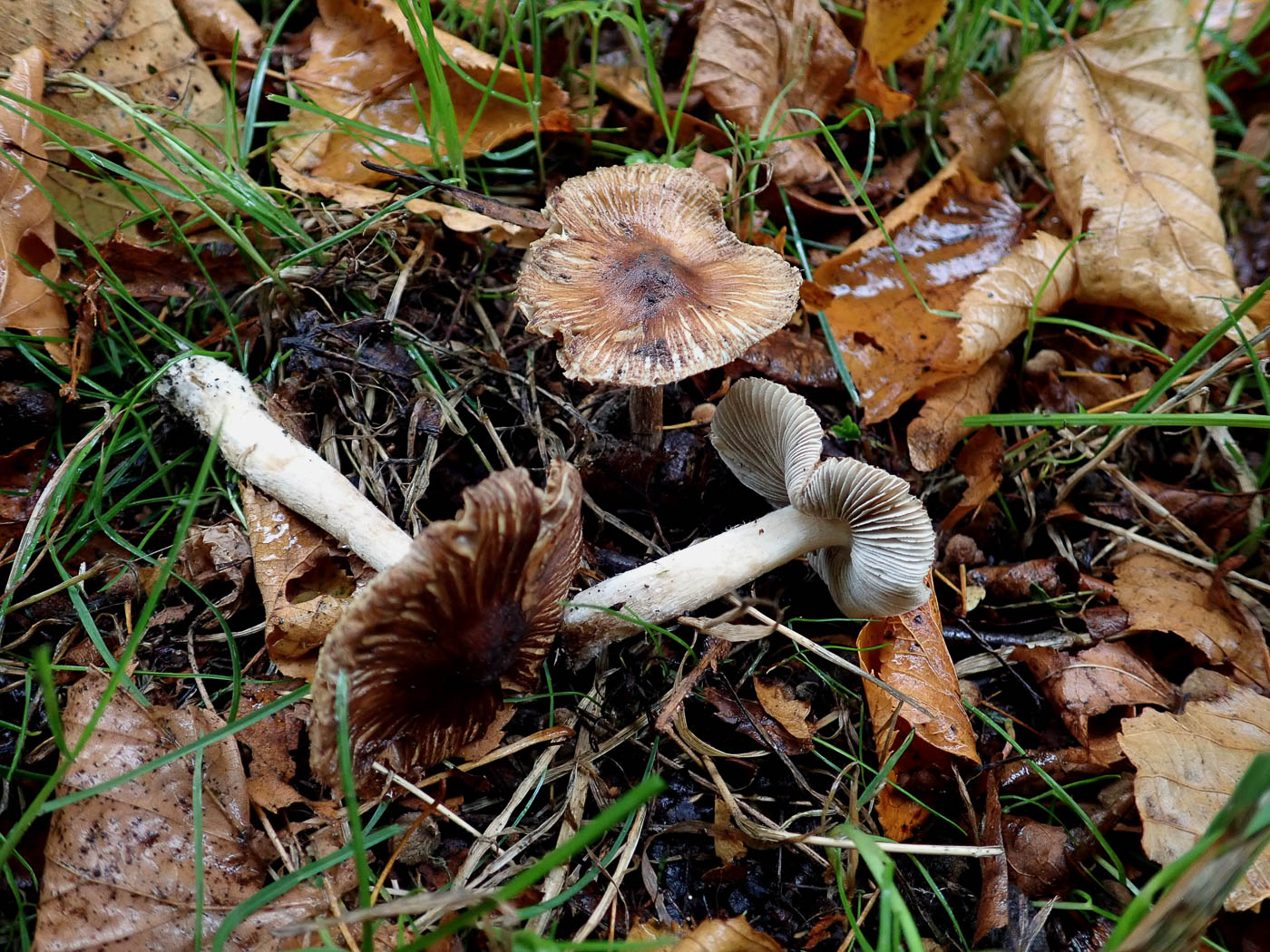 |
Pseudosperma umbrinellum (a Fibrecap with no common name) 
Sep 27, 2022. Under the Limes at Turville Heath Penny found this rare Fibrecap - previously in genus Inocybe and only in recent years split from the much more coomon Pseudosperma (previously Inocybe) rimosum. It's typically radially splitting cap showing contrast between the brown fibres and pale flesh beneath is a feature of many Fibrecaps though by no means all, and this large group of species virtually always needs identifying with a scope. Penny has found this species just once before in the county though wouldn't like to guarantee it was correct: today's collection is certainly one for sequencing.
|
 chrysostigma 1b.jpg) |
Psilachnum chrysostigma (an Ascomycete with no common name) 
Oct 27, 2022. At Stoke Poges Memorial Gardens Stephen Plummer found these tiny cups on a dead Fern stem and took them home to identify. Though not at all rare, the species has only been recorded in the county once before, no doubt because not many people study such species which are obviously easily missed. Their size can be assessed by the relative thickness of the stem here. This is a new entry for Finds.
|
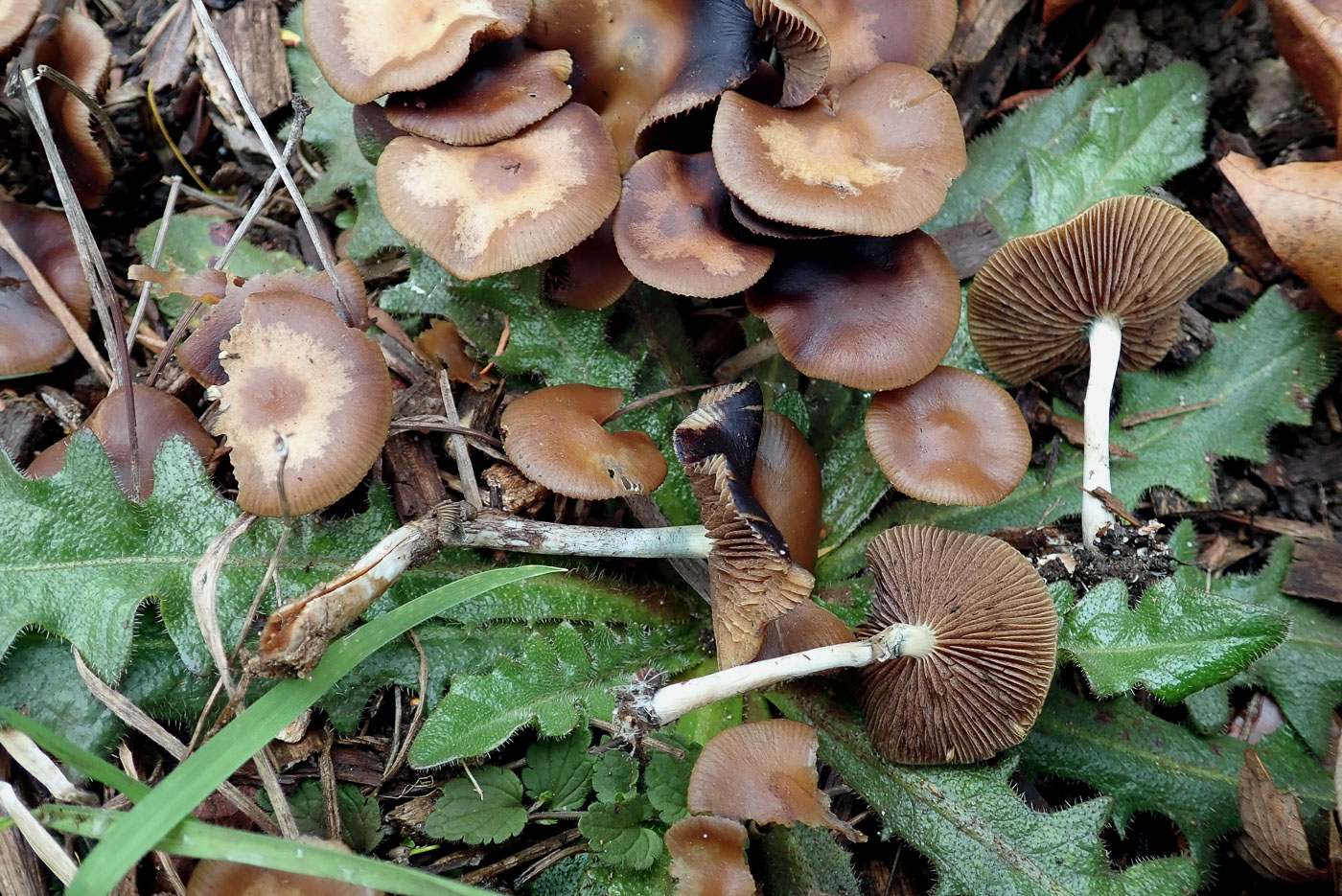
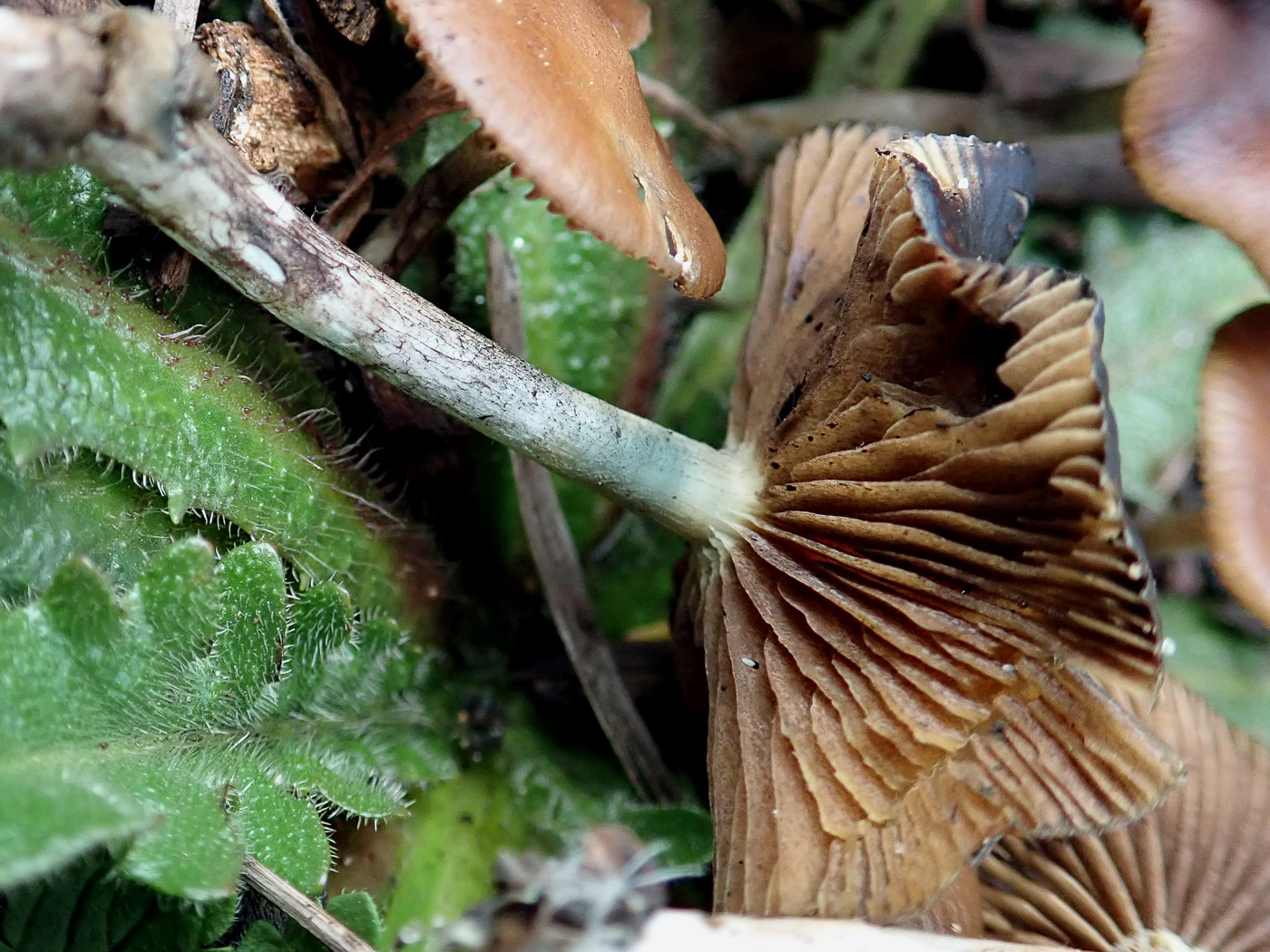 |
Psilocybe cyanescens (Blueleg Brownie)
Oct 28, 2020. Penny C. found a large clump of this uncommon species fruiting in woodchips at Stoke Poges Memorial Gardens, one of just a few sites that we know of in the county the species. Initially it is much like many other brown-capped hygrophanous mushrooms which frequent this substrate, but as soon as you look below the cap and notice the dark gills and more importantly signs of blue-green staining on the stem - a unique feature - you have the information needed to name it in the field.
|
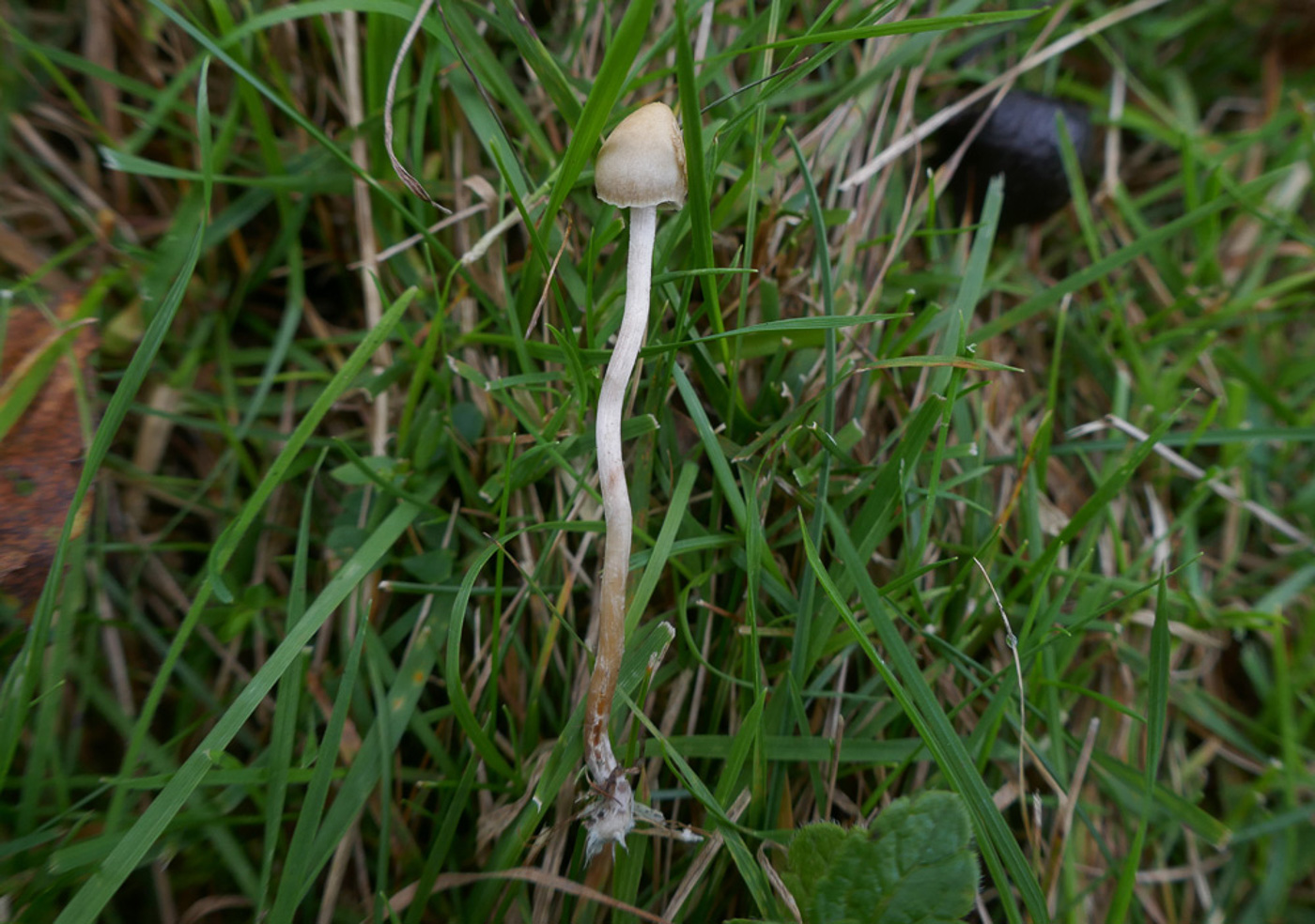
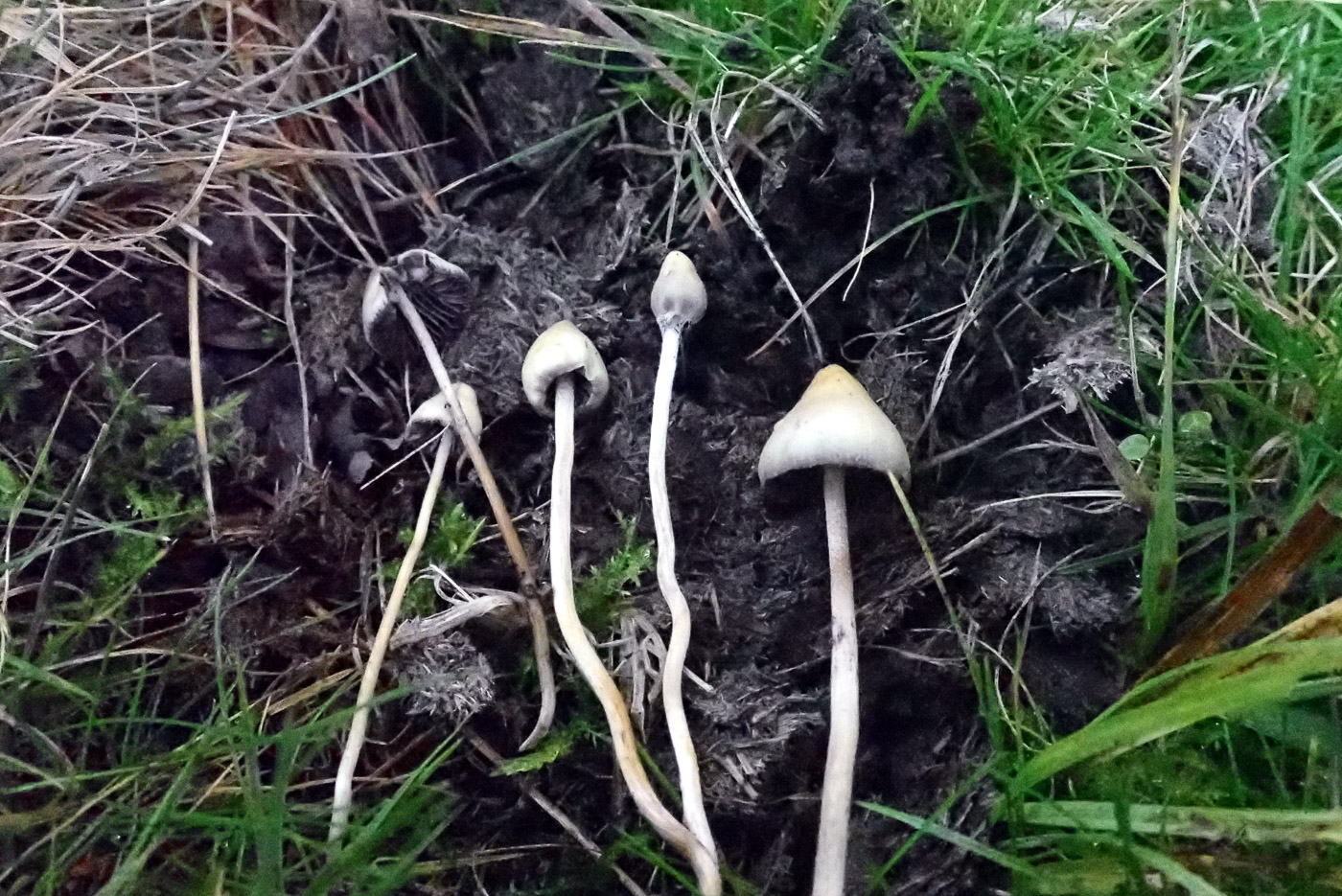
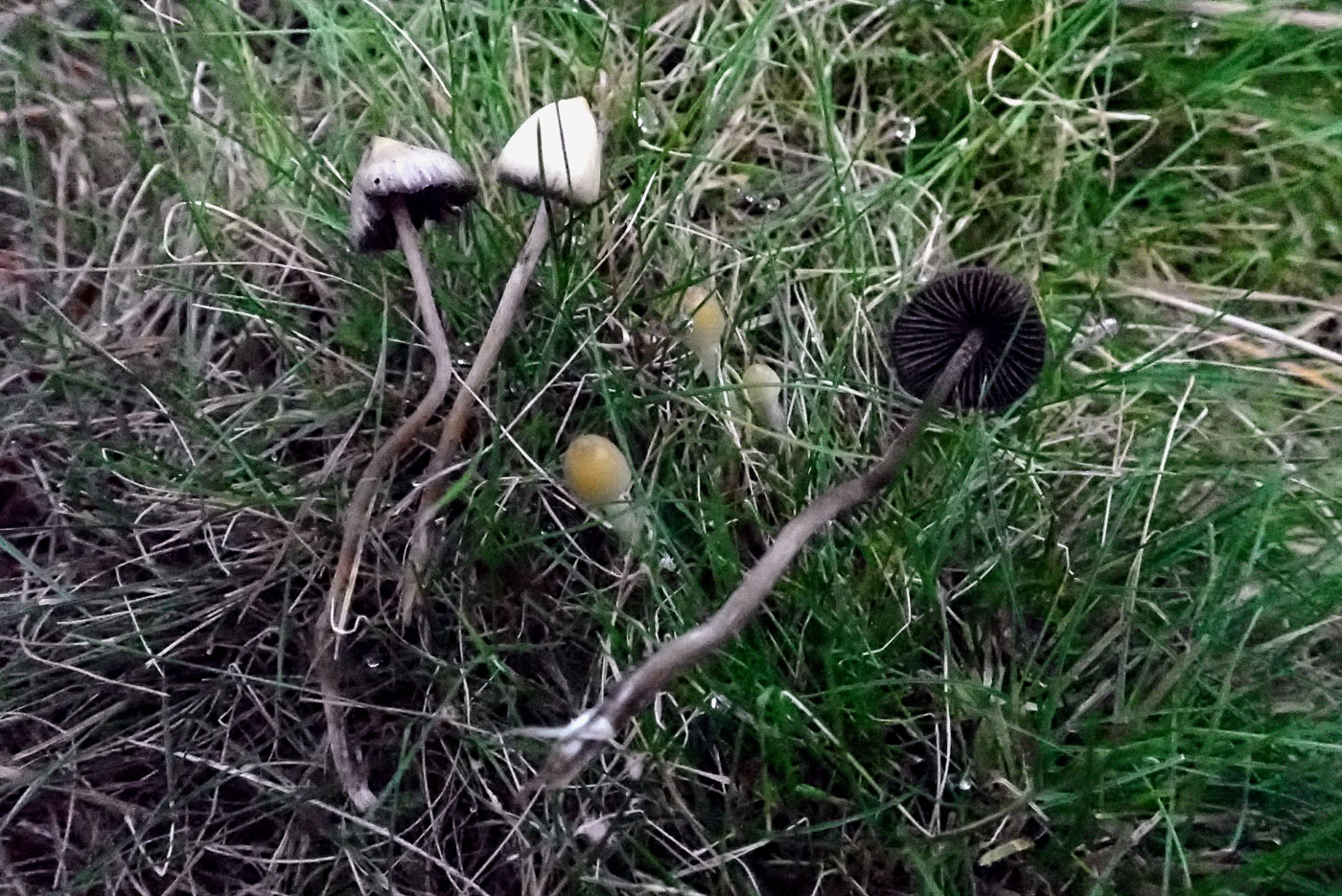
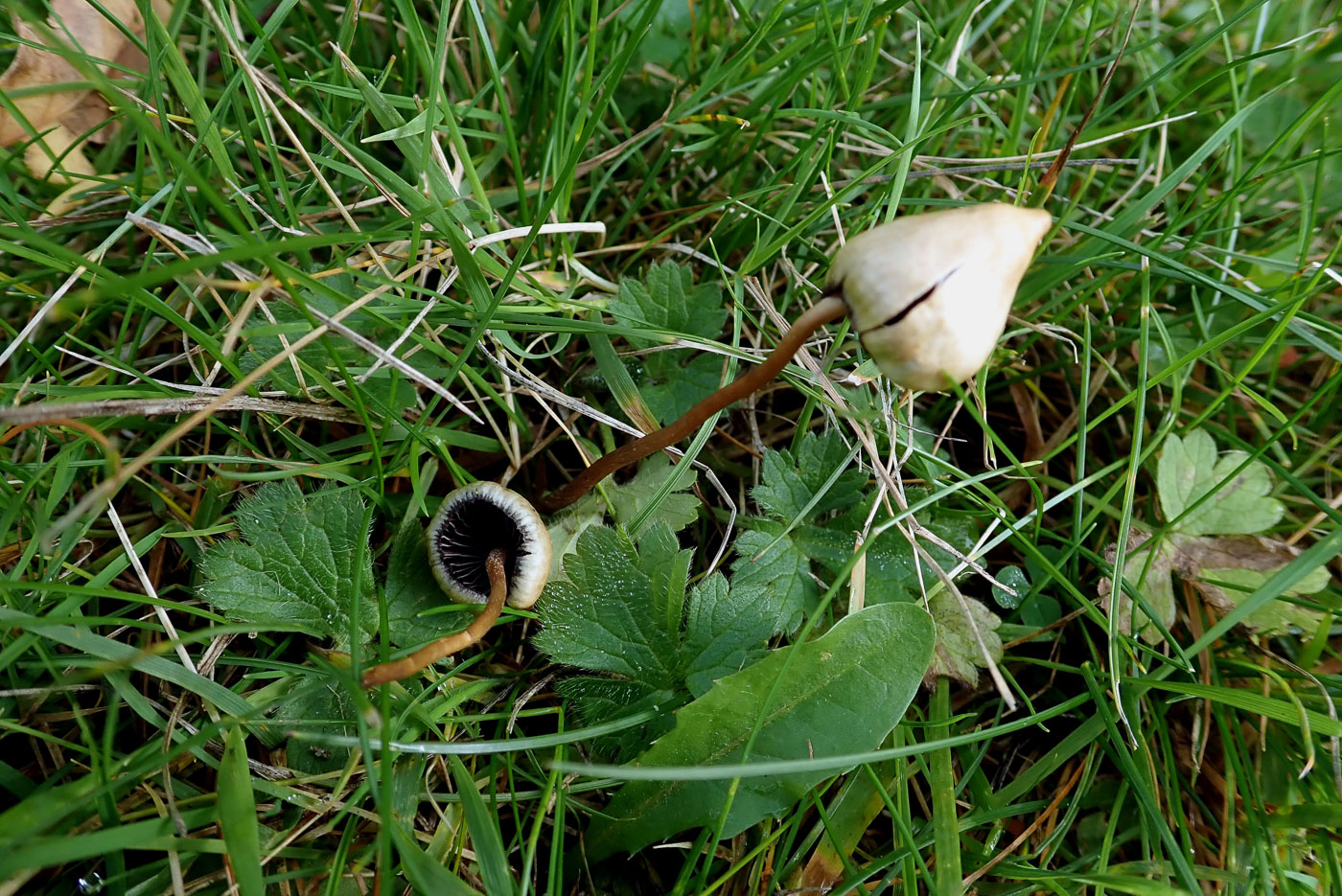
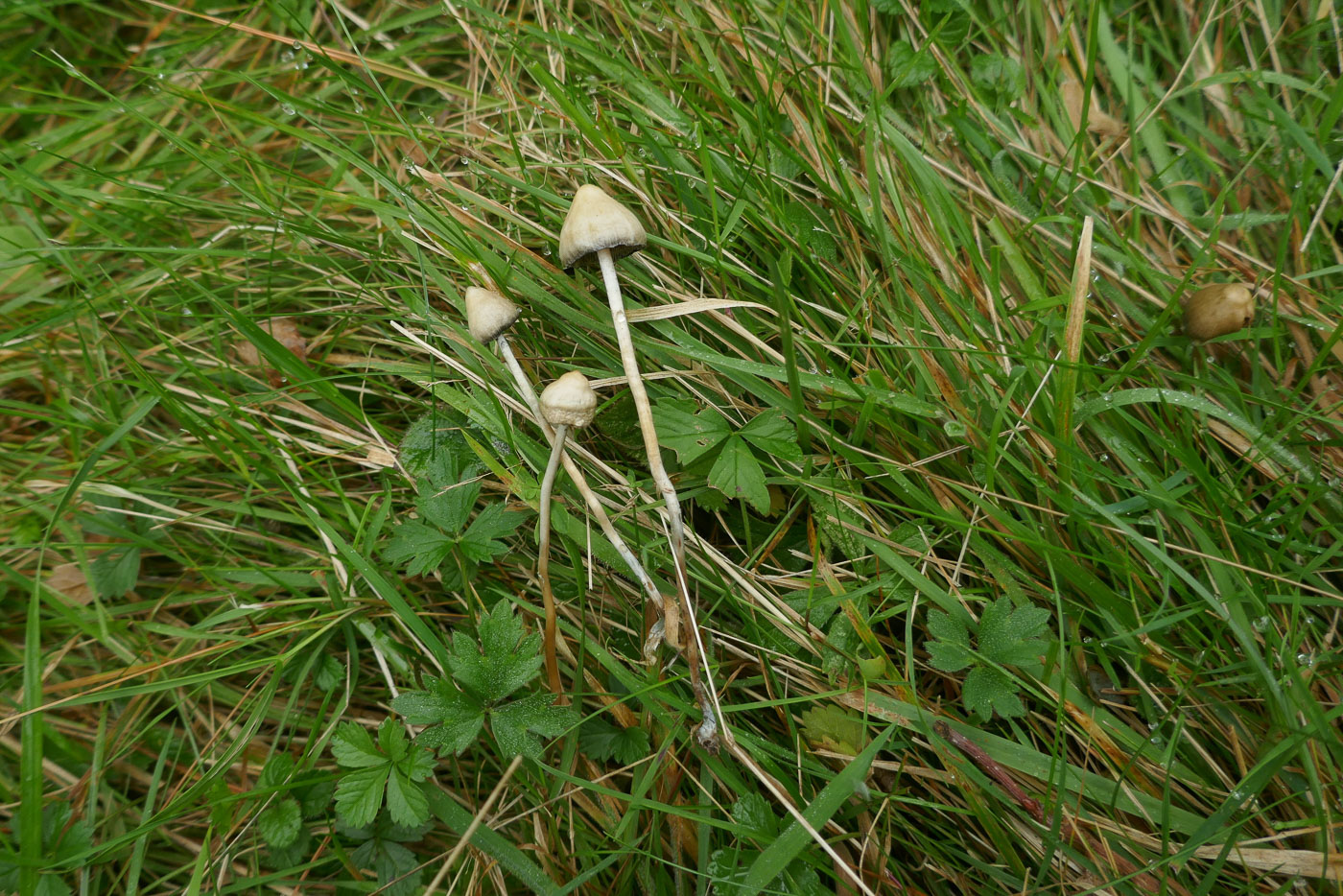
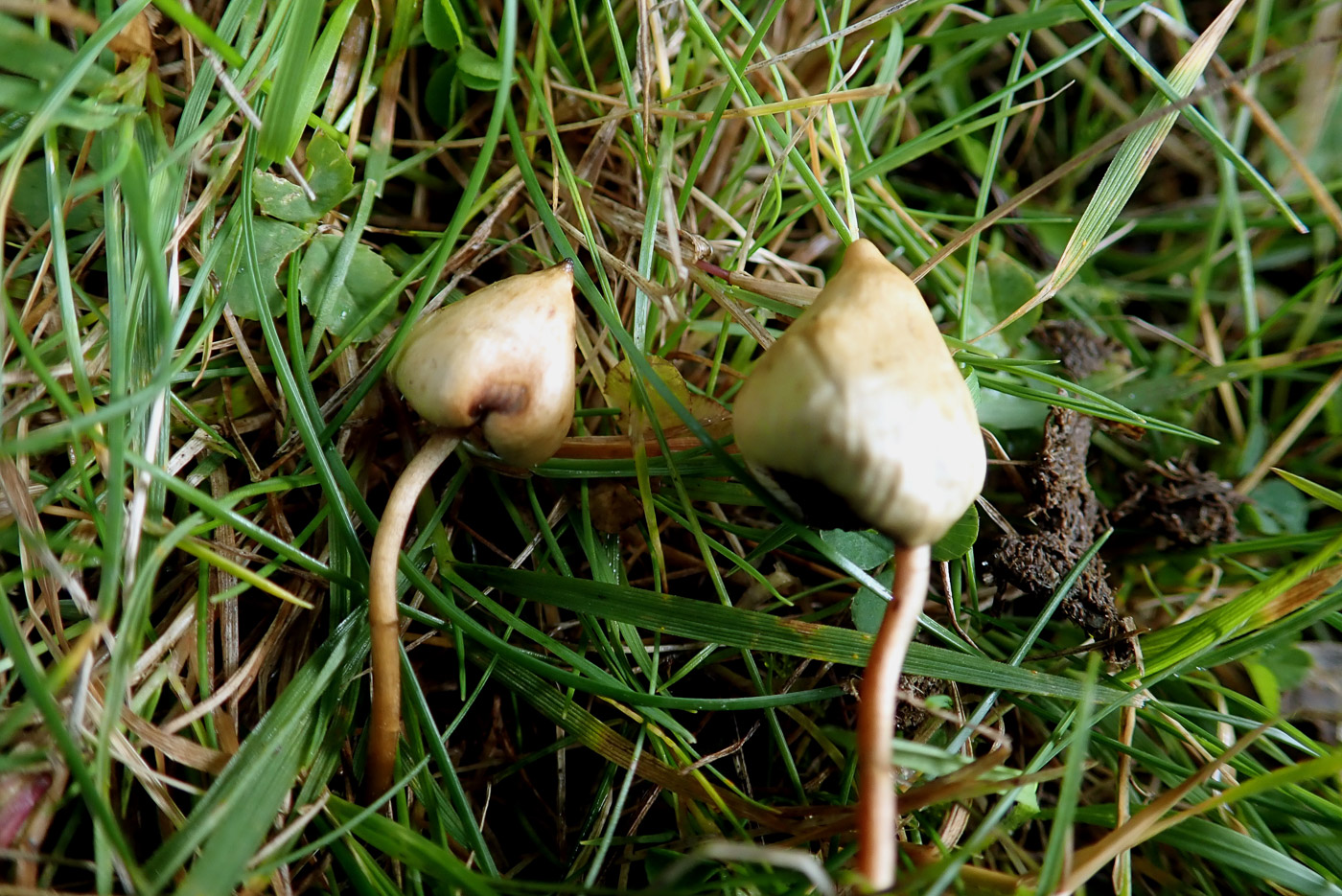
|
Psilocybe semilanceata (Liberty Cap)
Sep 25, 2024. At Stampwell Farm Jackie Ewan found just this one fruitbody in a grassy field and from its acutely conical cap, long stem and dark gills had no doubt as to its identity.
Nov 11, 2021. At Stoke Common in an open mossy heathy area Penny came across several clusters of this distinctive little mushroom, one that is easy to identify in the field owing to its strongly conical pale cap with a little nipple at the top. Turning it over reveals dark almost black gills and a thin stem which is quite long in relation to the cap size. Also known as Magic Mushroom, the species contains Psilocibin - as do many other mushrooms - which is a Class A drug.
Oct 11, 2021. At Stampwell Farm Jackie Ewan found several fruitbodies of this grassland species well known for its psychedelic effects and in fact a Class A drug. There are many other mushrooms which possess its active ingredient Psilocybin though this one is the best known and is easily recognised by its distinctive acutely conical shape, black gills and occurrence in grassland.
Oct 11, 2020. Penny Cullington came across just two specimens of this little mushroom with a big reputation (!) in grass at a site somewhere in the county! This species contains Psilocybin and is now designated as a Class A drug with serious penalties in place for its possession. Recognised by its distinctive acutely conical cap shape with a 'nipple' on the top, it is not uncommon in grassland habitats along with many other quite similar LBJs (Little Brown Jobs). Note the very dark gills and smooth rusty brown stem.
|
 |
Puccinia anthoxanthina (a Rust with no English name) 
Apr 26, 2024. At Stoke Poges Memorial Gardens Jesper Launder found this rust on the leaf of Sweet Vernal Grass which Sarah Ebdon - now armed with a copy of Dutch Rust Fungi - was later able to identify. (The photo is Sarah's.) There is debate as to the correct name for this species which has previously been included as a variety of P. brachypodii, but a note written by expert Paul Cannon on his website favours following its acceptance by another author as an independent species with the name given here. Though not yet officially accepted in the UK we go with that name. There are plenty of UK records under its previous name which however includes collections made on several different plant hosts; once the name P. anthoxanthina is accepted universally it will be applicable only to collections made on Sweet Vernal Grass. Under whichever name, the species is new to the county and to Finds.
|
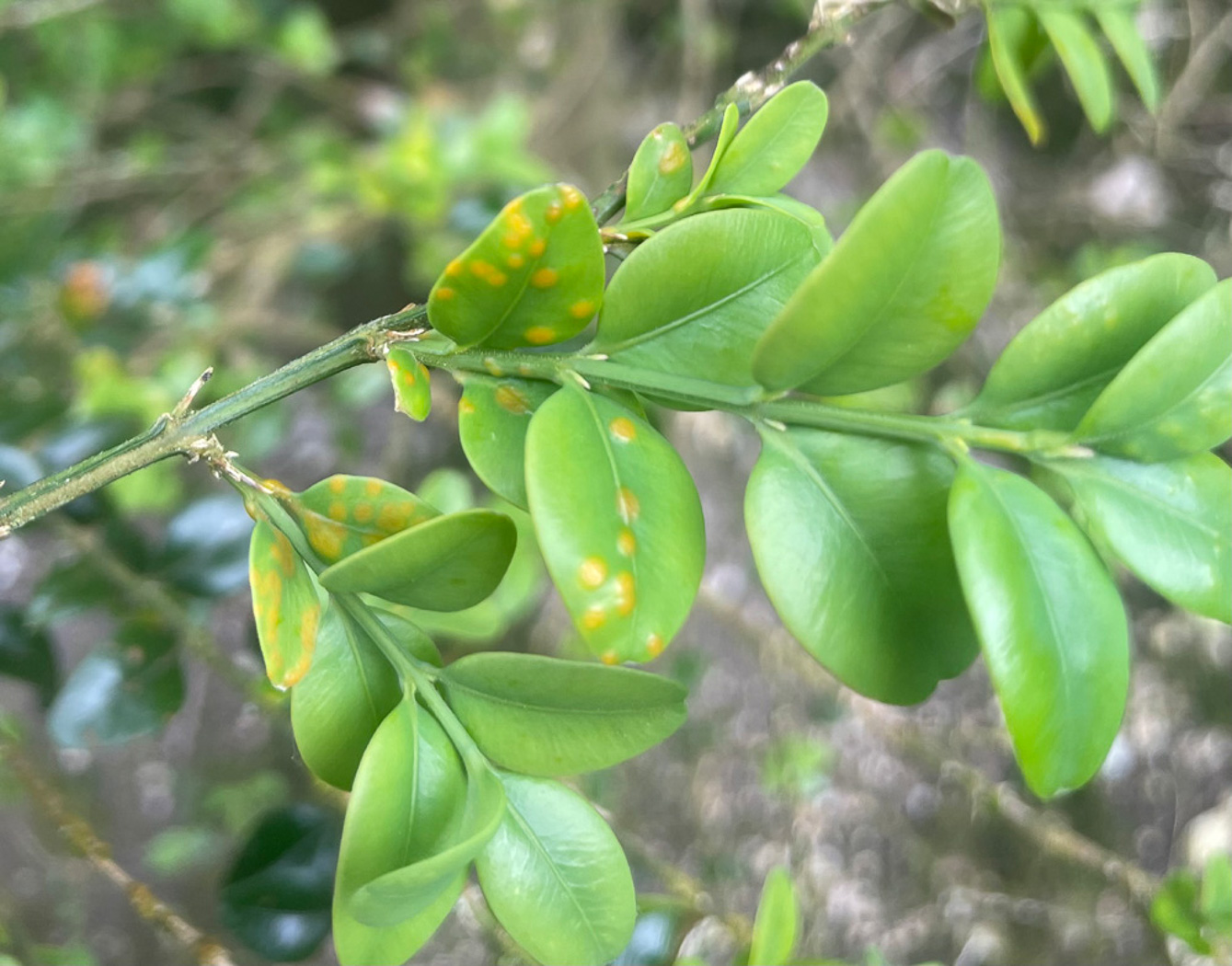
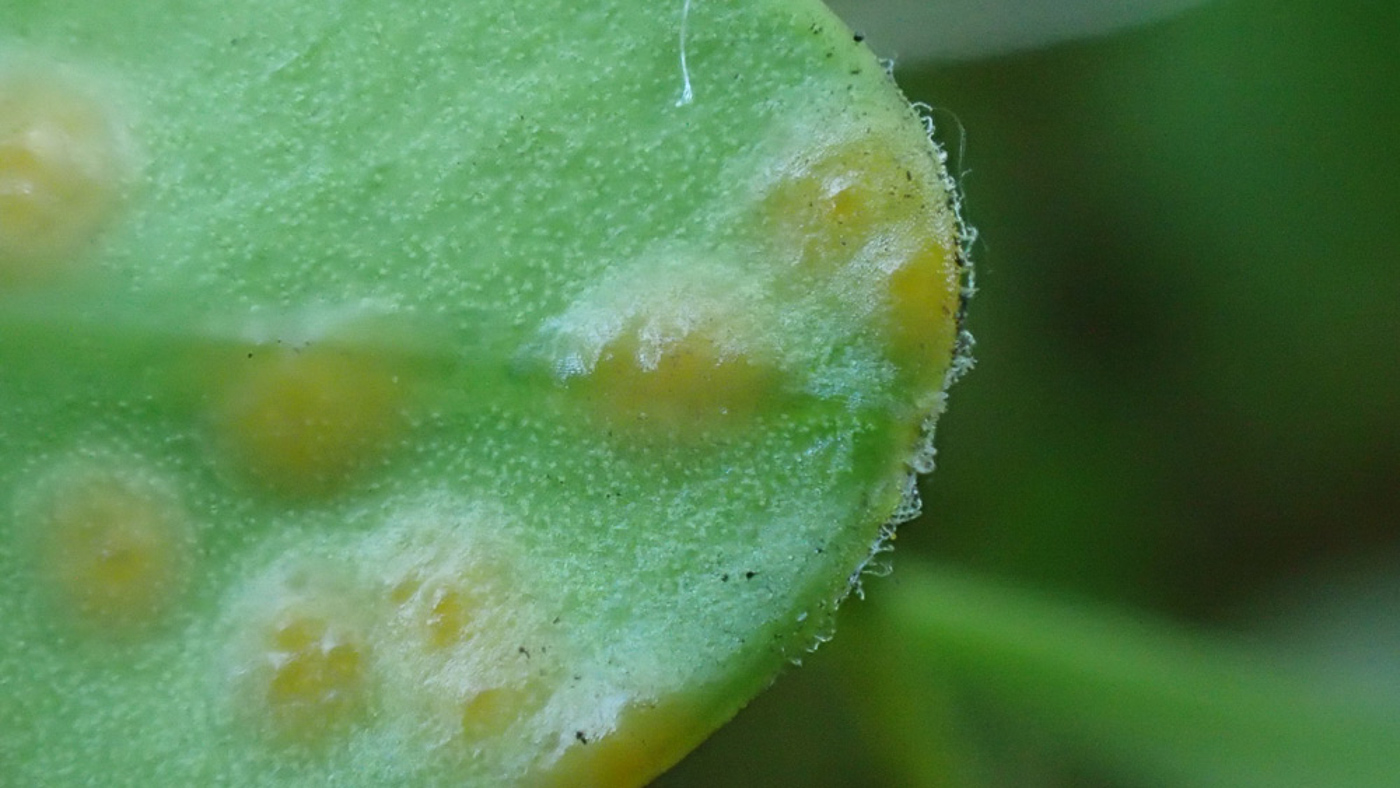 |
Puccinia buxi (Box Rust) 
Jun 12, 2024. Sarah Ebdon paid a visit to the Great Kimble Box woodland - one of few such woodlands in the country - with the express purpose of finding this rust species which is apparently rare in the Netherlands but which seems to have a good number of UK records though none from Bucks till now. The Rust - in all its stages - occurs only on mature Box trees and therefore appears not to be a threat to young garden plants.
|

 |
Puccinia caricina (Ribes Clustercup Rust) 
May 5, 2024. In Naphill Sarah Ebdon noticed this rust on the leaves of Carex (Pendulous Sedge) leaves. Though we have only a handful of county records, this plant pathogen is apparently very common and - at different stages of its life cycle - is found on Gooseberry amongst a range of other hosts (hence its reference to this fruit in its English name). No doubt a species complex, the various varieties will at some stage be sorted out and separated into full species. This is a new entry for Finds
|
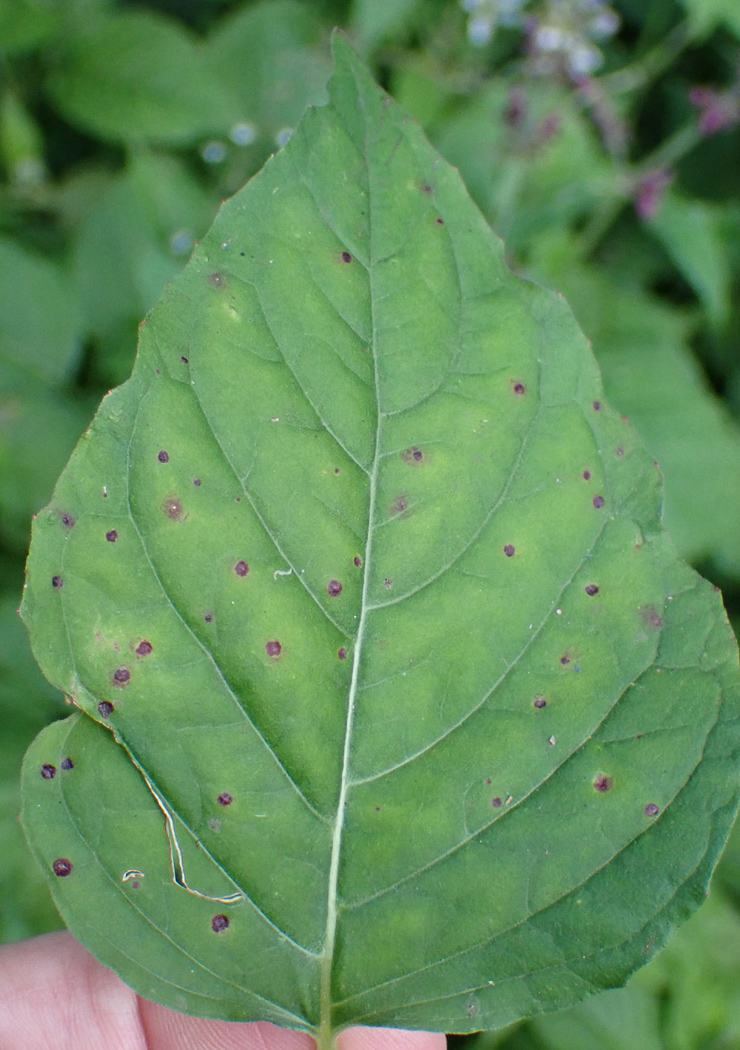
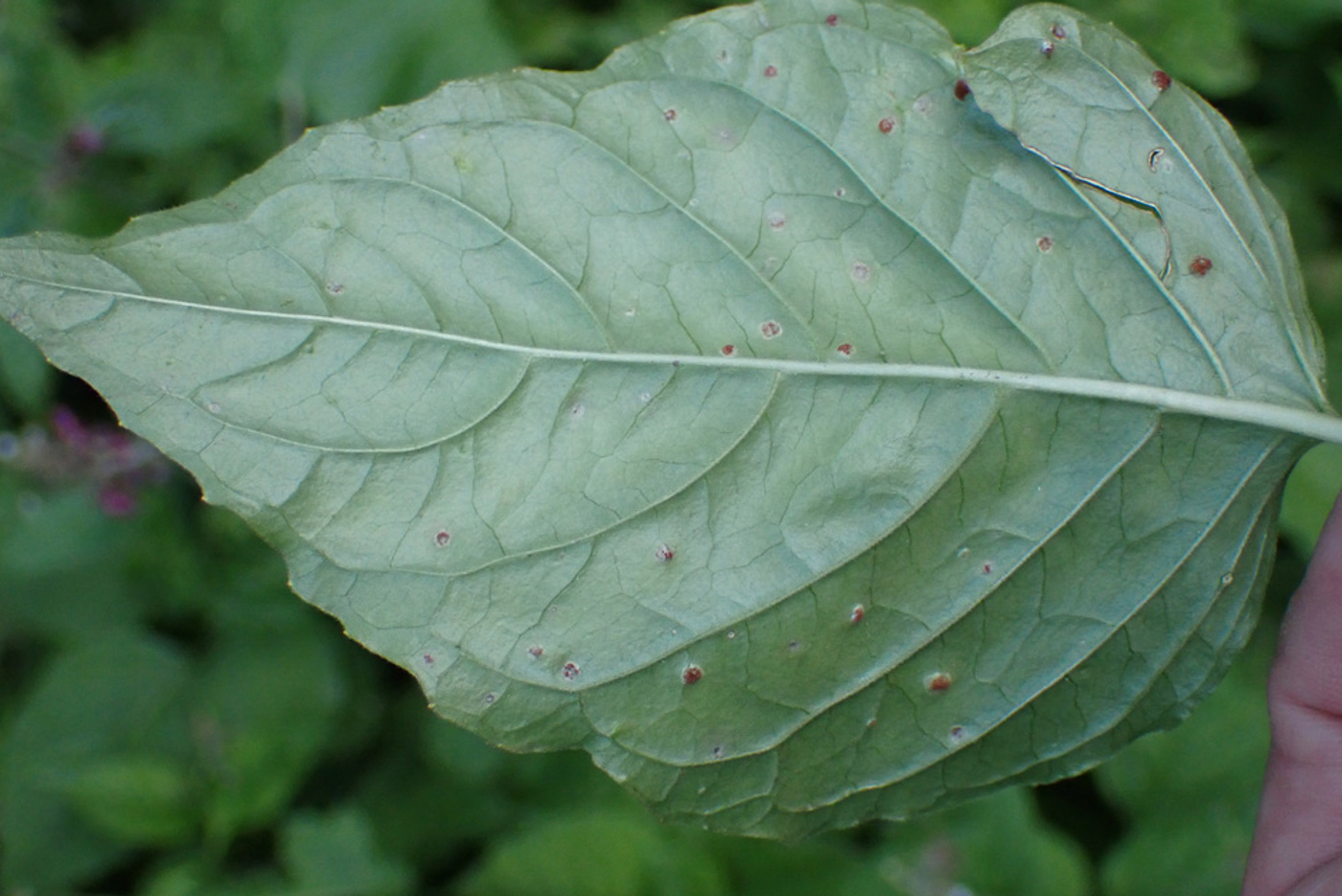
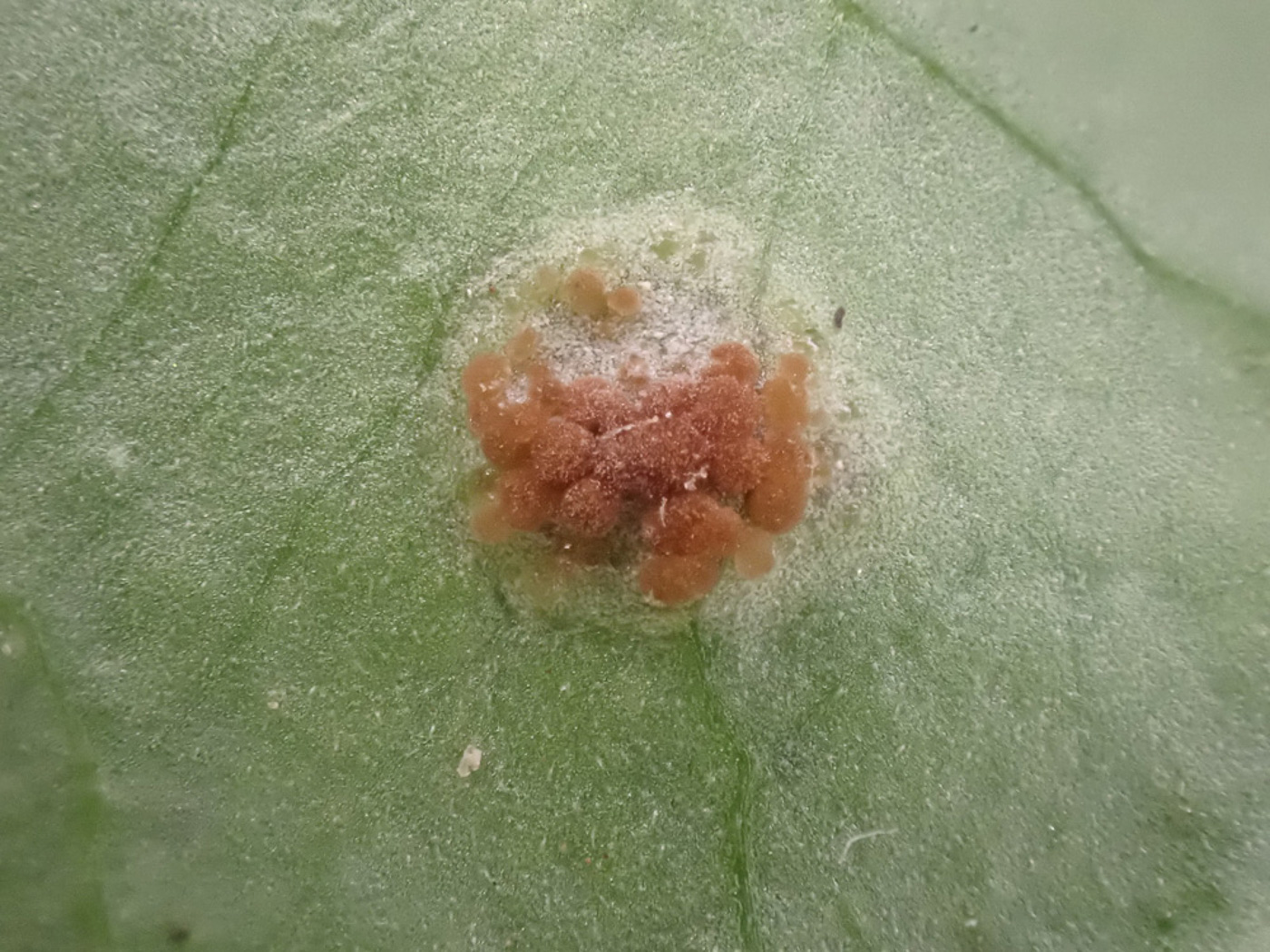 |
Puccinia circaeae (Enchanters' Nightshade Rust) 
Jun 21, 2024. In Rushmere Estate Stephen Plummer noticed these blemishes on the leaves of Enchanters' Nightshade. We have just 5 previous county records though none since 2009, but this is a very common rust and one easily identifiable from the host plant. This is a new entry for Finds.
|
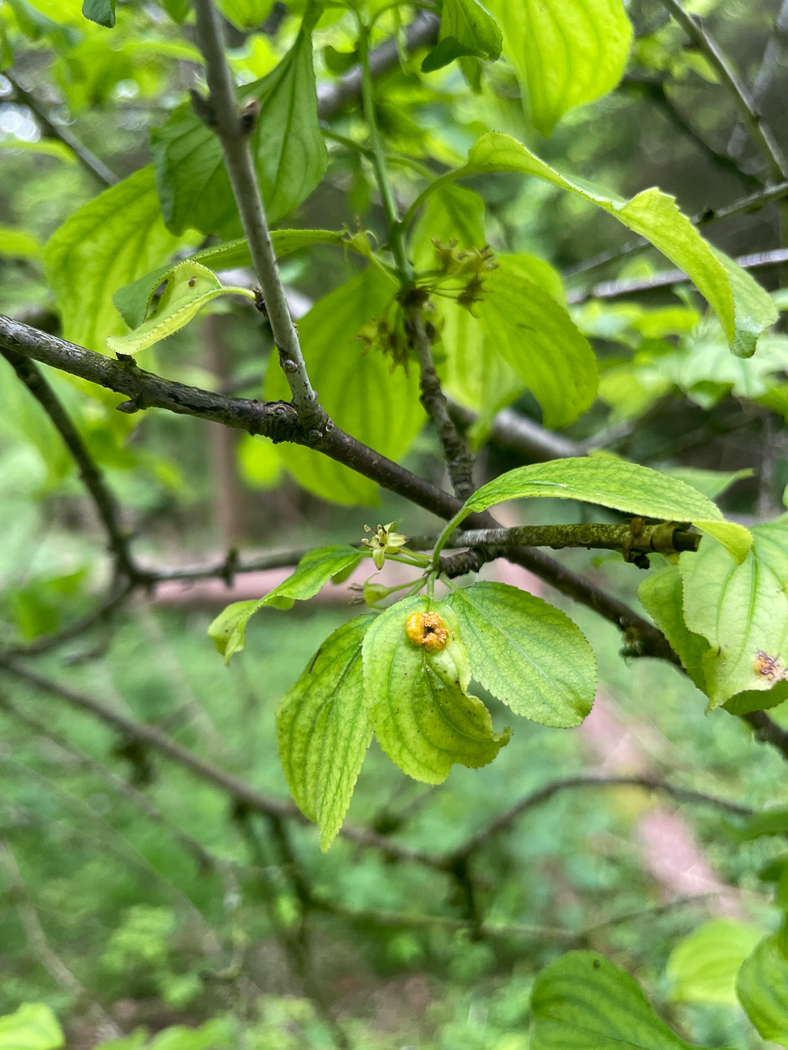

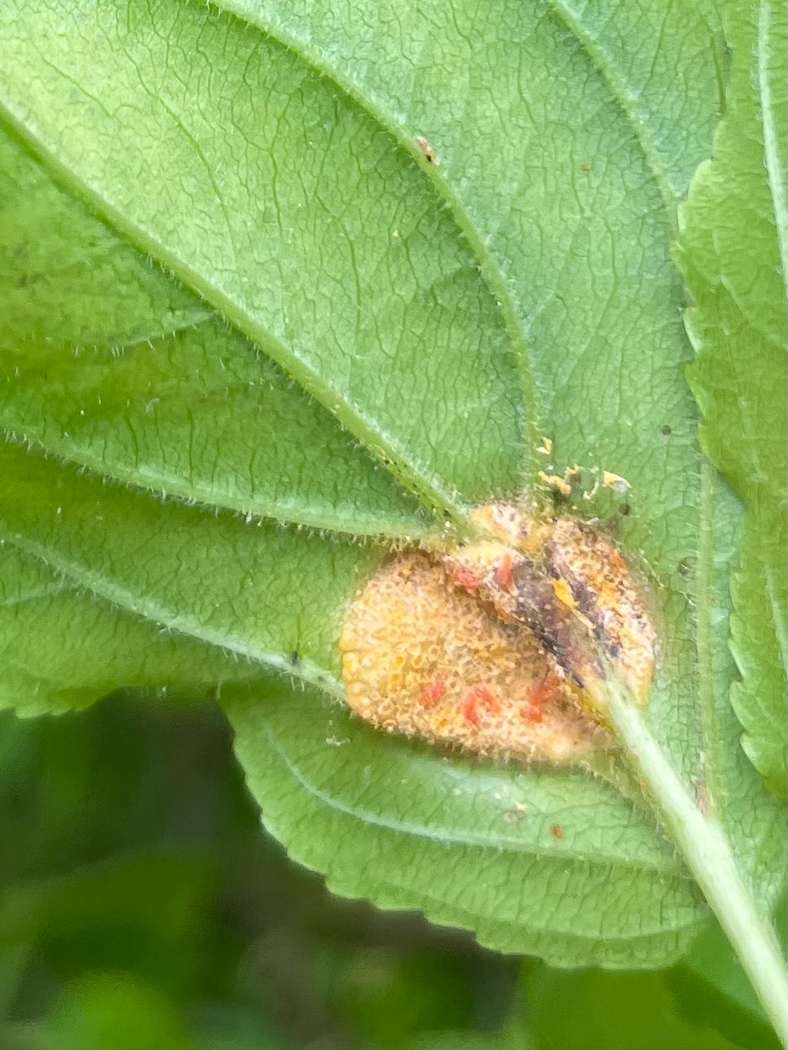 |
Puccinia coronata (Crown Rust) 
Jun 4, 2024. At Pulpit Hill Sarah Ebdon noticed these blotches on the leaves of Purging Buckthorn and later was able to make her ID. This rust species needs two different unrelated hosts to complete its life cycle, the asexual stage being on various grasses including Oats on which it causes serious problems worldwide, and the sexual stage being on various species of Buckthorn. We have just a handful of county records though only two this century, one of which was on Buckthorn as here. This is a new entry for Finds.
|
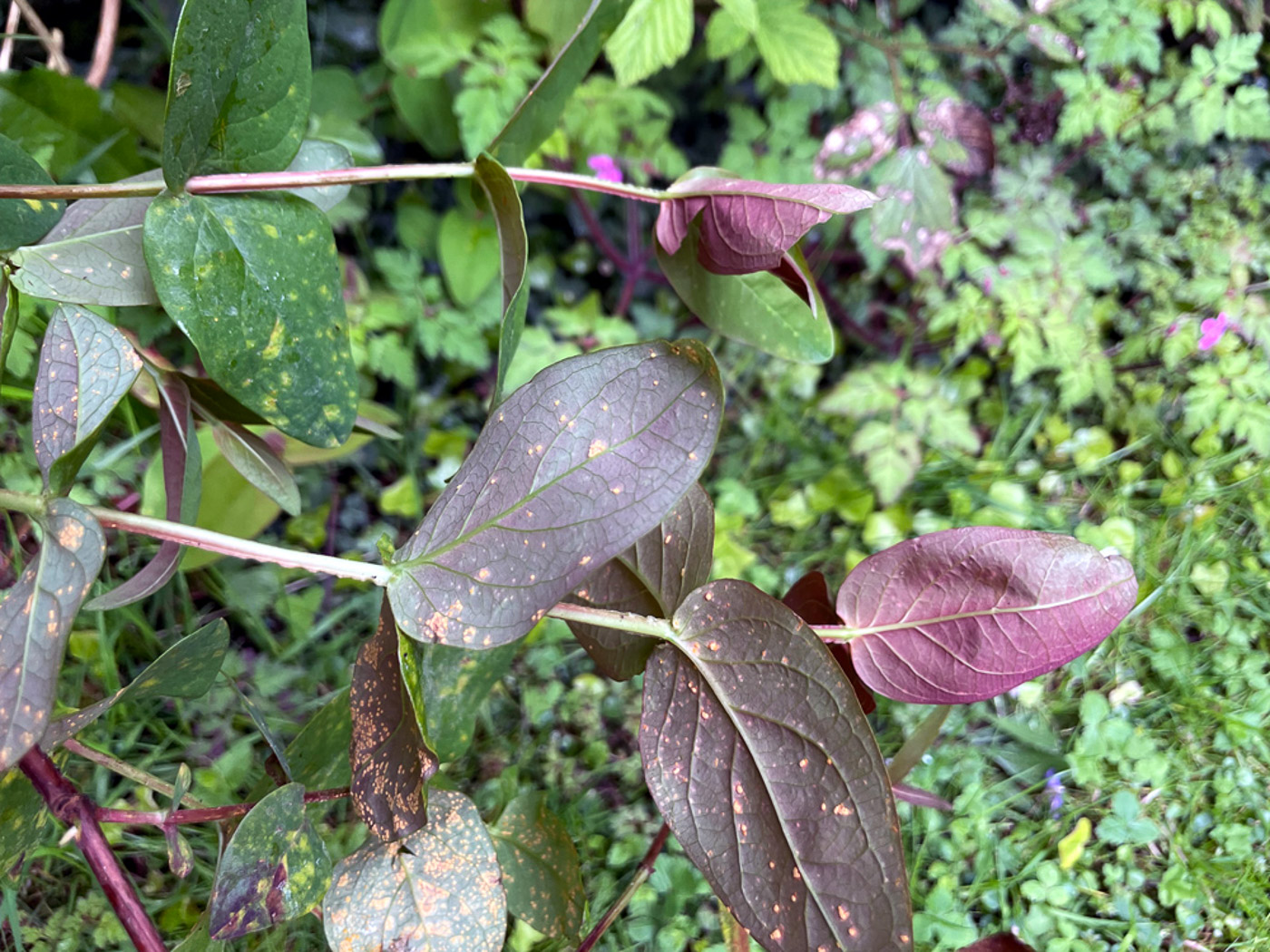
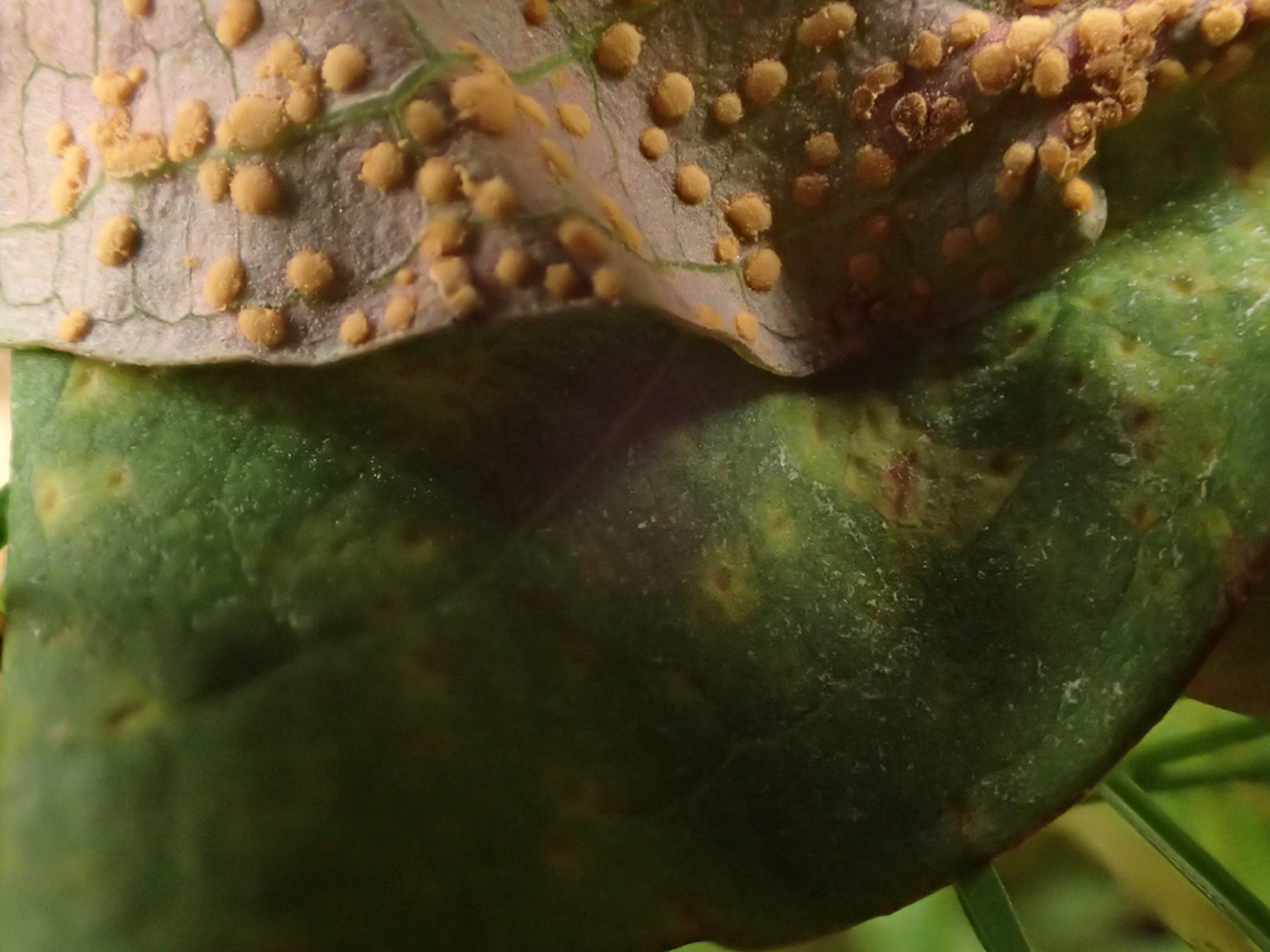
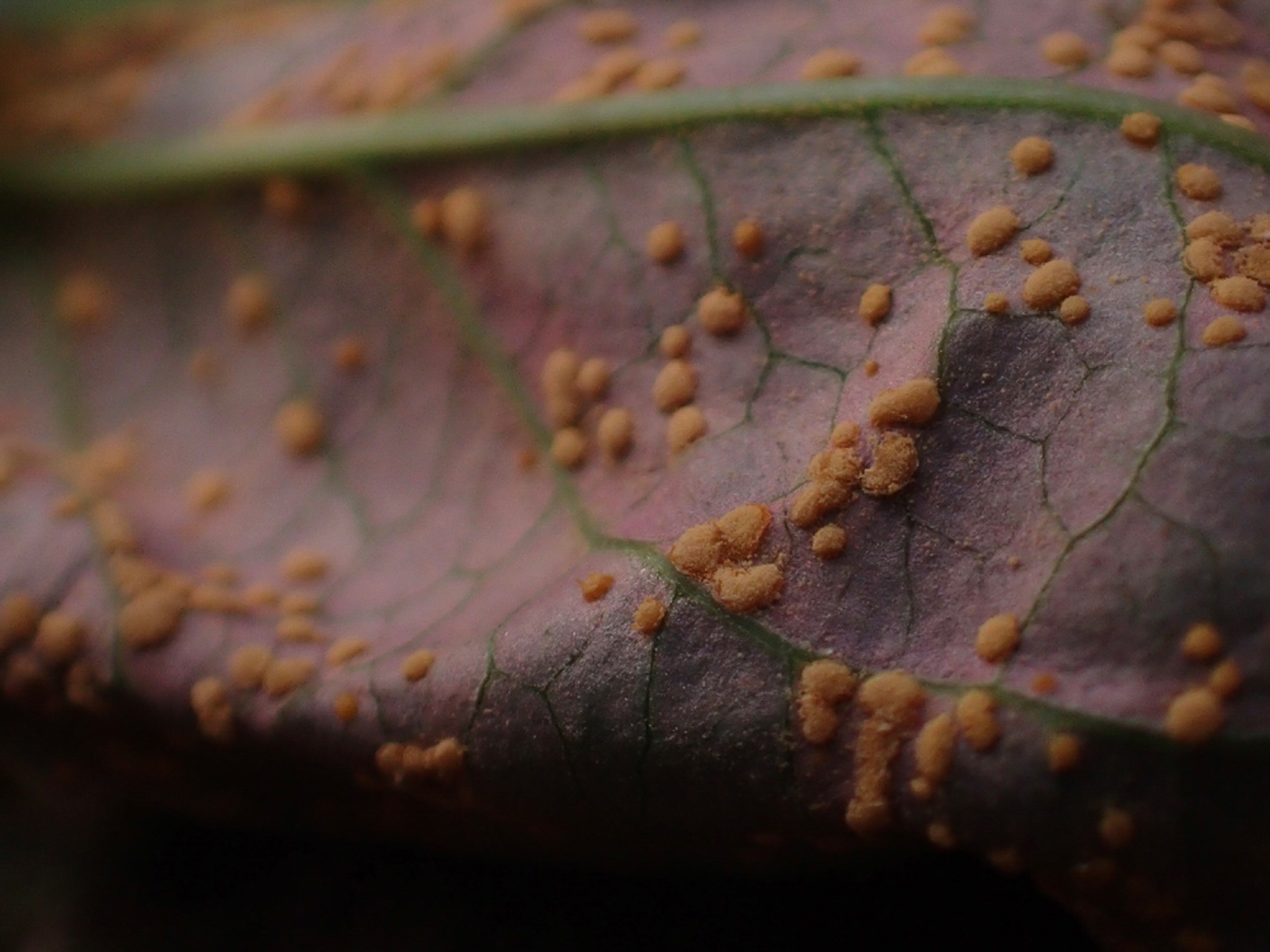 |
Puccinia festucae (a Rust with no English name) 
Apr 28, 2024. In Lacey Green Sarah Ebdon - now on the hunt for rusts which are prevalent at this time of year and with her new book to help with ID - found two different species, this one being the first and more unusual. Like many rusts it is host specific , so often if you can identify the plant you can also identify its accompanying rust, and this particular rust affects the leaves of Lonicera (Honeysuckle) though appears as yet not to have a suitable English name. Visible on both surfaces (as shown in photos 1 and 2), the underside forms the tiny orange blobs seen here which contain the spores. Apart from one record which has neither a date nor a site name though no doubt was genuine and likely to have been found during the BMS Spring Foray based at Green Park in May 2002 - we have no county records so this is a new entry for Finds.
|
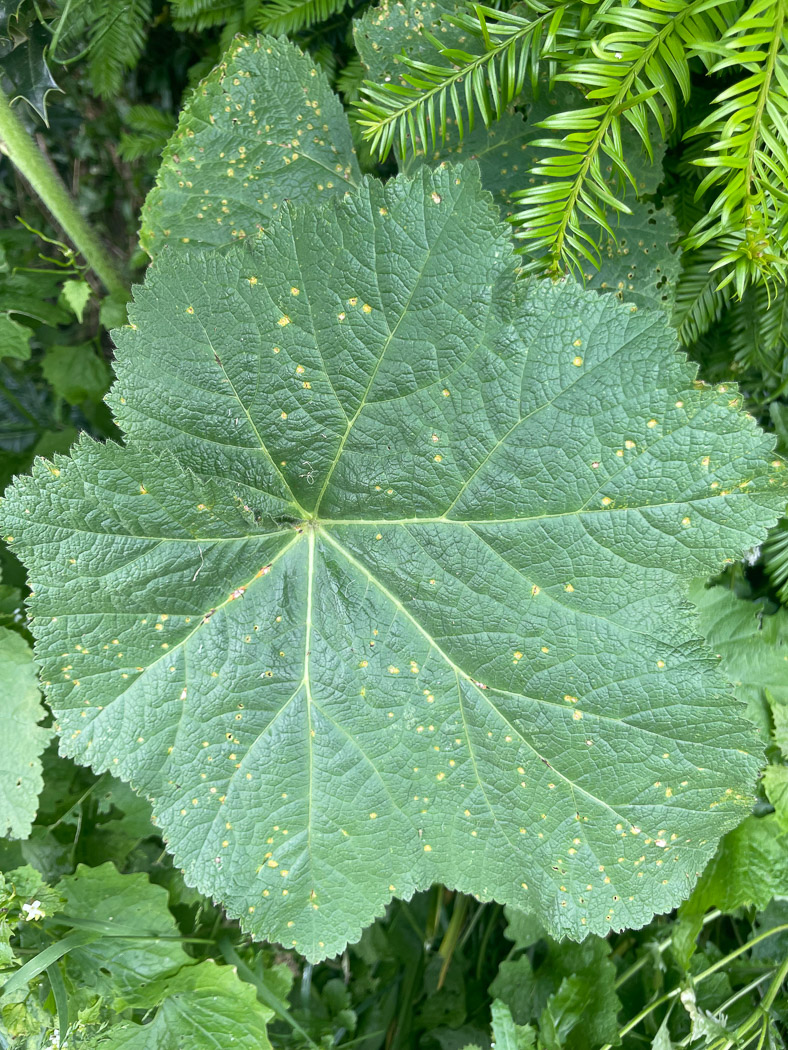
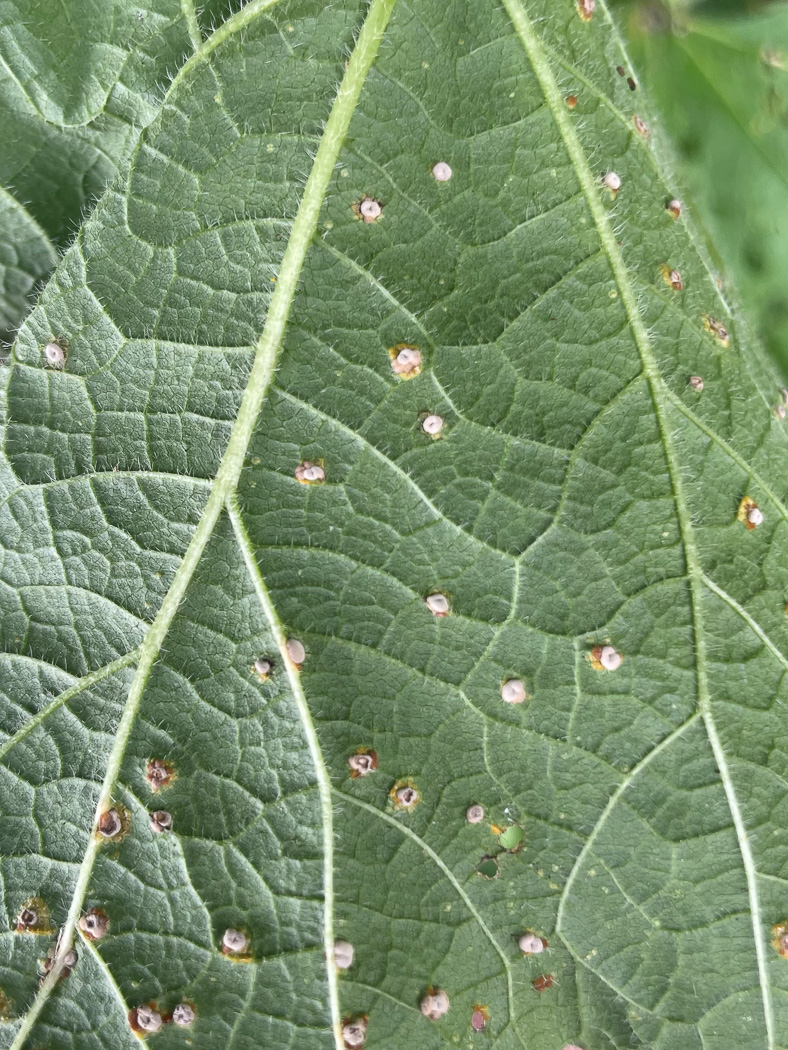
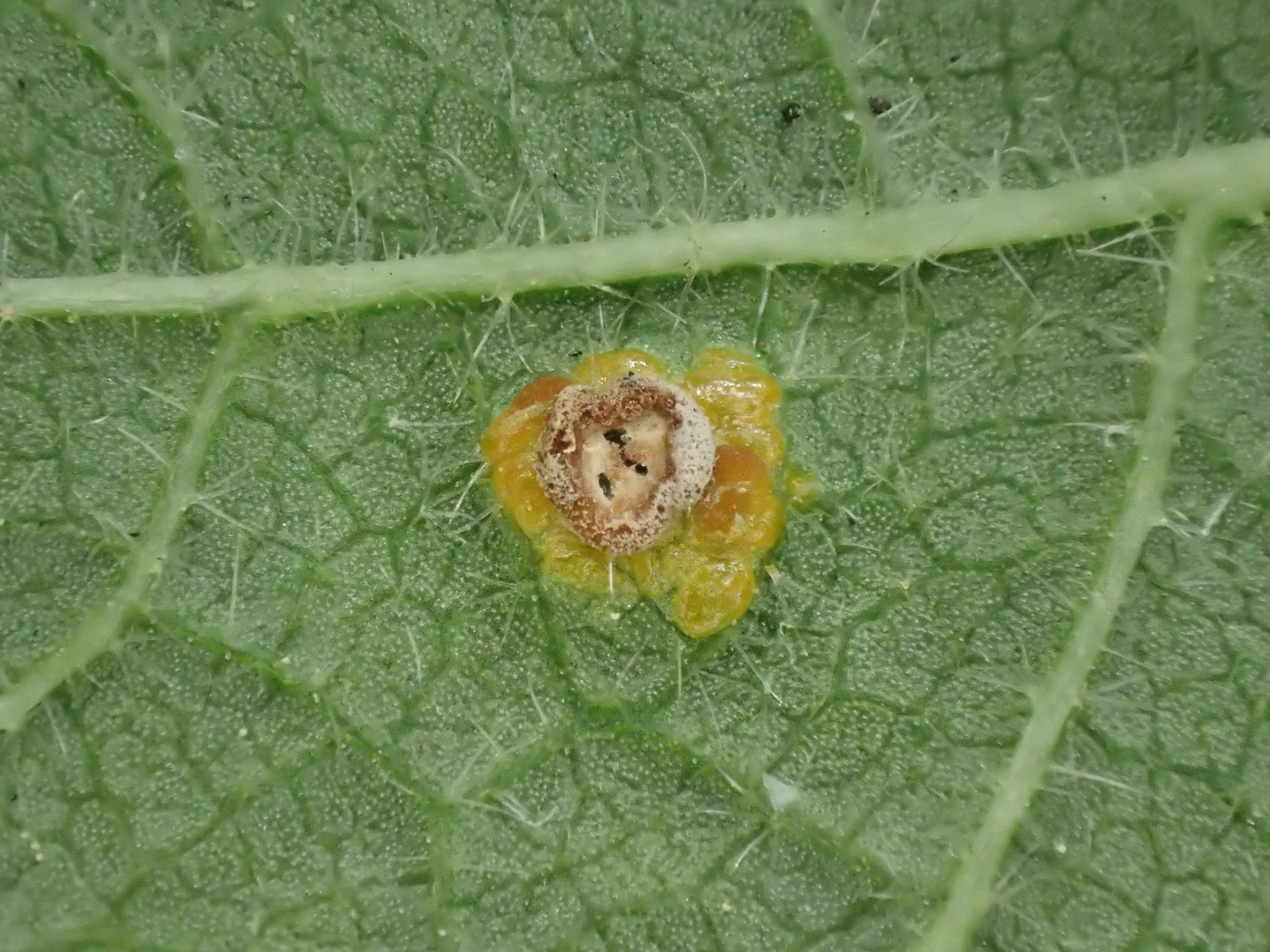
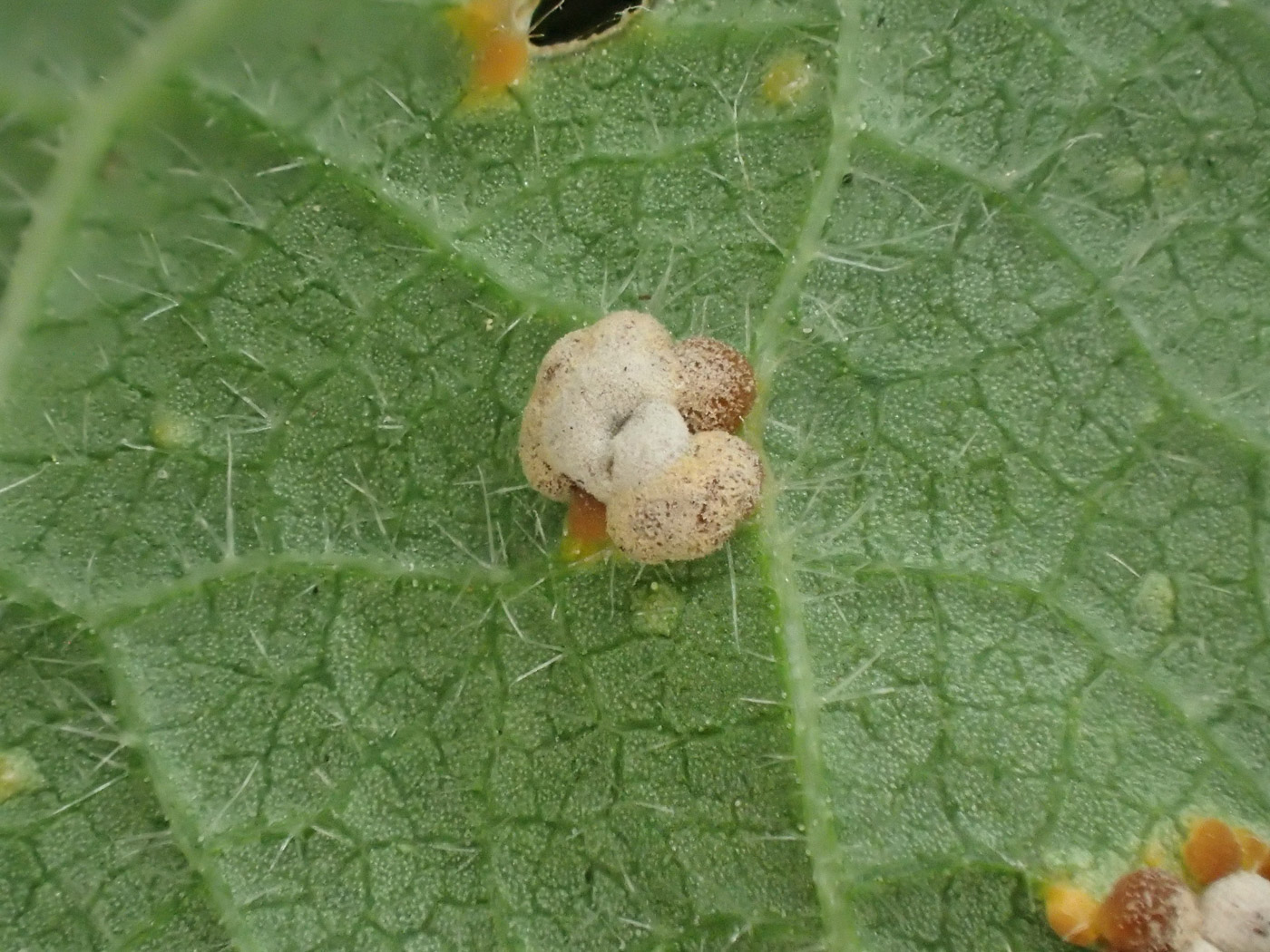 |
Puccinia malvacearum (Mallow Rust) 
Jun 3, 2024. Sarah Ebdon has been busy with her Rust book yet again! This particular species occurs on leaves and petioles of the Mallow family and is really common on Hollyhock - in fact it's tricky to find a plant without it! However, we shamefully appear to have no records for it till now though there are well over 1000 on FRDBI.
|
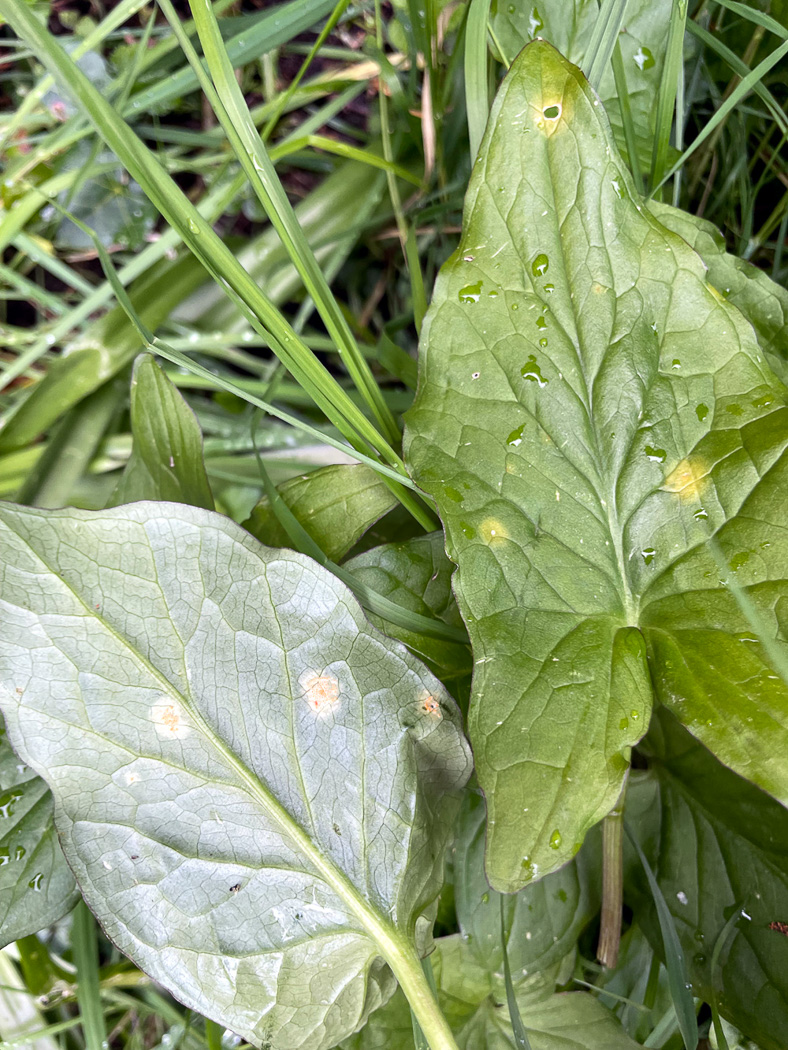
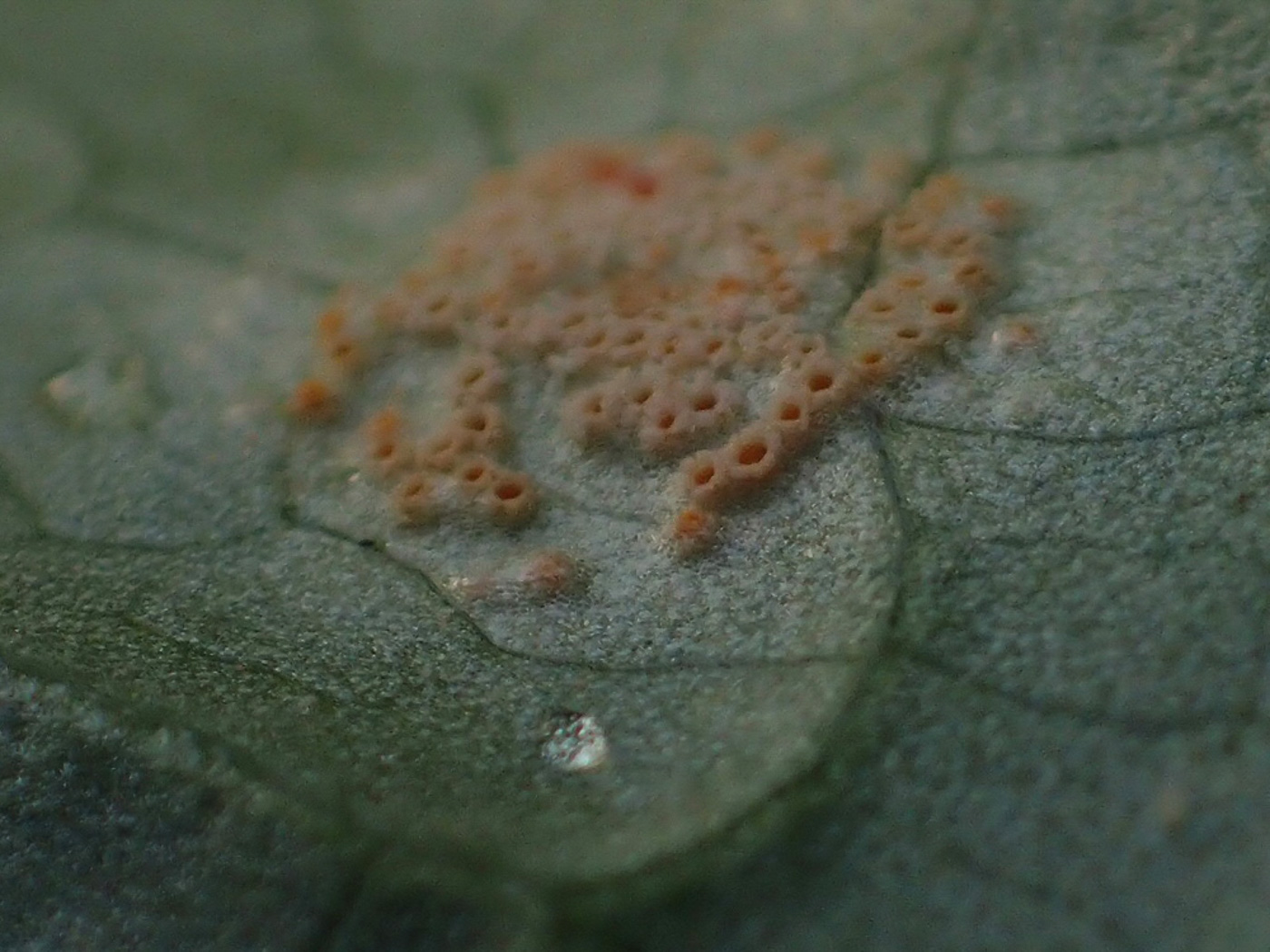
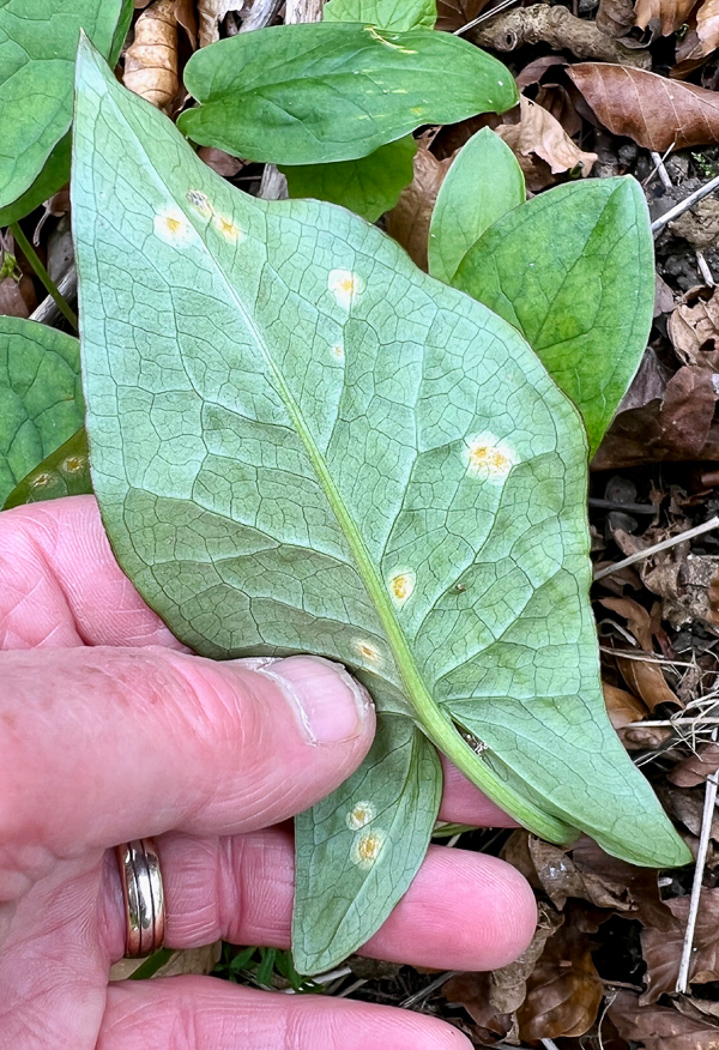
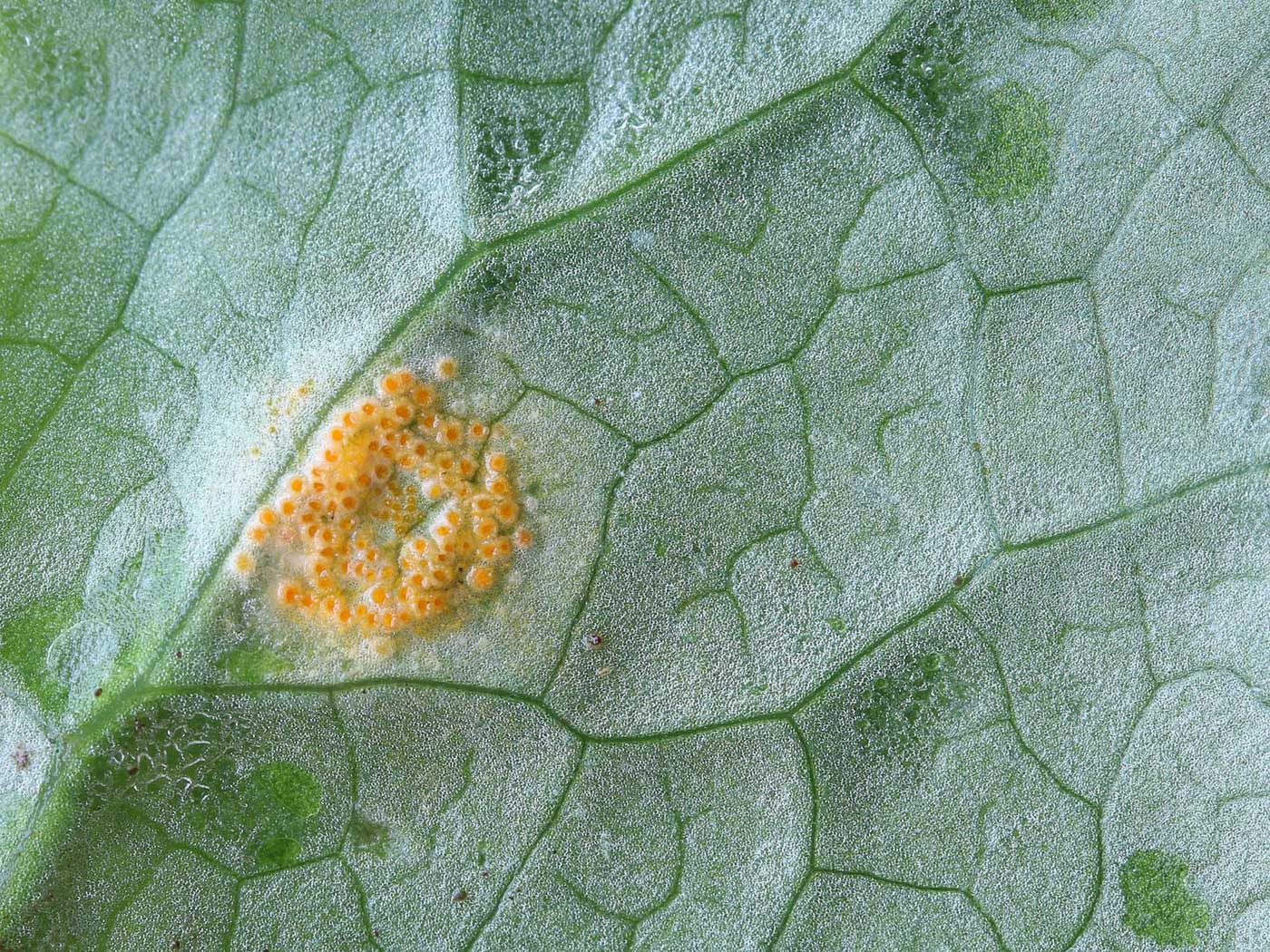 |
Puccinia sessilis (Arum Rust)
Apr 28, 2024. This was the second of two Rusts found by Sarah Ebdon In Lacey Green today. This one - a common species - is host specific to Arum maculatum (Lords & Ladies) and affects the leaves. The fruiting body part in photo 2 is found on the underside of the leaves but is tiny - Sarah apologises for her less than brilliant photo!
Apr 14, 2022. At Dancersend Reserve Neil Fletcher found this quite common rust on leaves of Arum maculatum (Lords and Ladies). The very dark blotches seen on many leaves of this plant are in fact part of the plant and very rarely are caused by a fungus, though as in Neil's photo here these blotches are not always present. The rust causes small orange patches on both sides of the leaf and the fungus is very common at this time.
May 13, 2021. Claudi Soler noticed some small rusty patches on the leaves of Arum maculatum (Lords and Ladies) at Dancersend and took some home to identify. Puccinia is a genus of Rusts forming part of the Basidiomycetes and with an enormous number of species, many of which can be identified purely by recognising the host plant. Care must be taken, however, because some species can occur on several different plants, also some plants can have several different species!
|
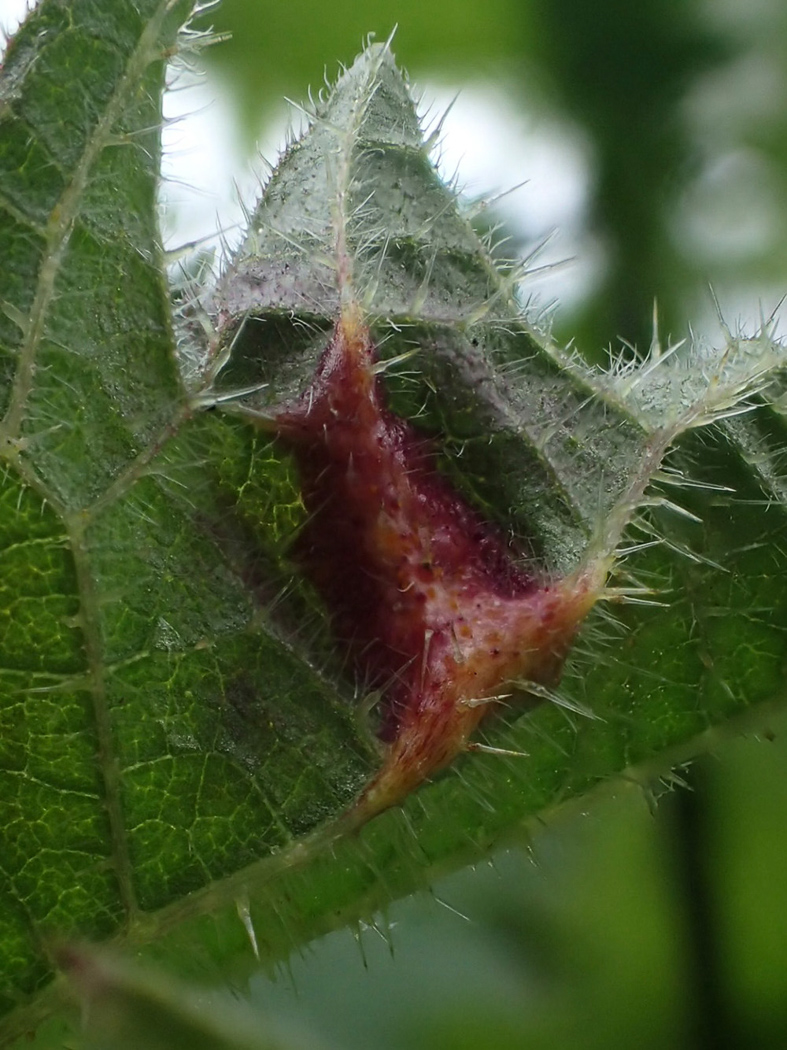
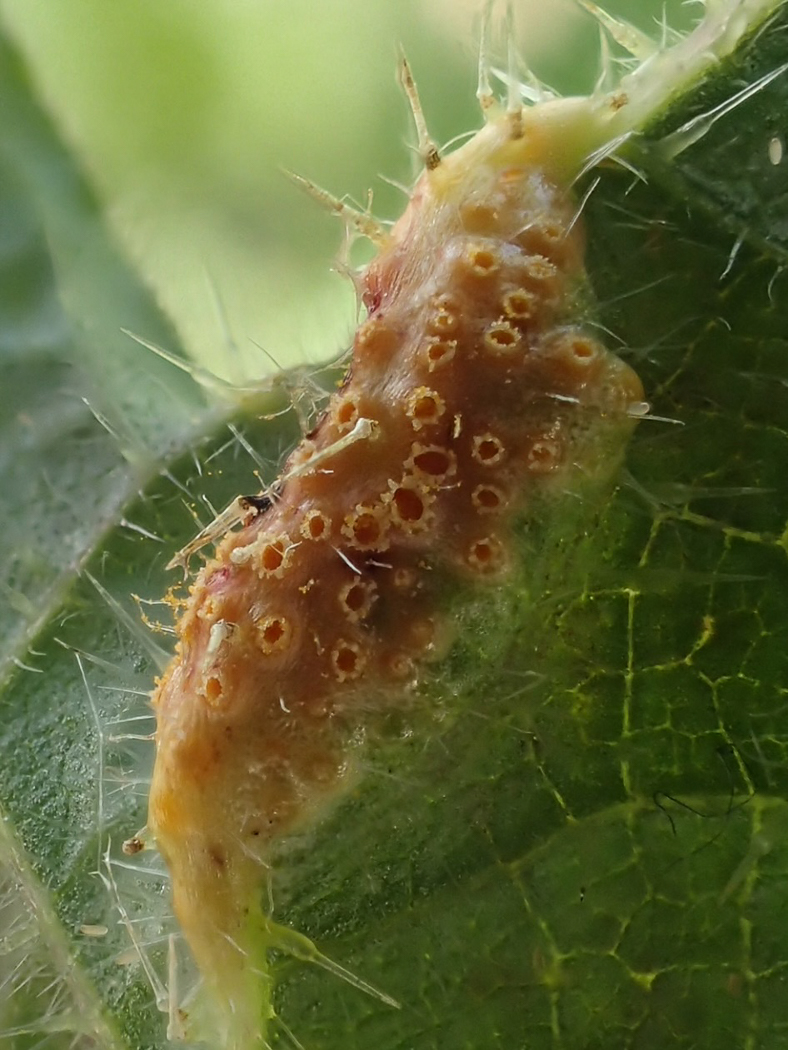
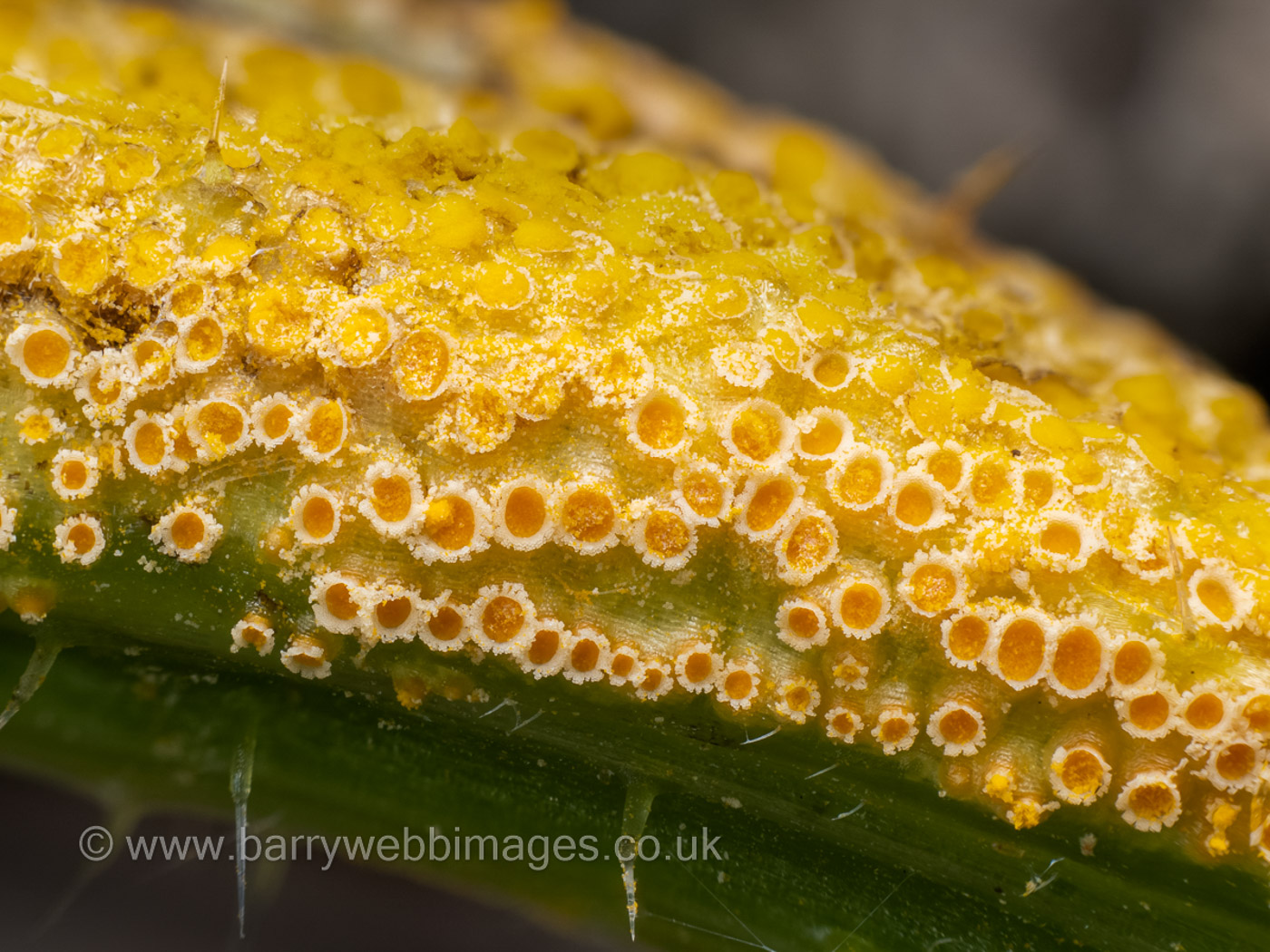
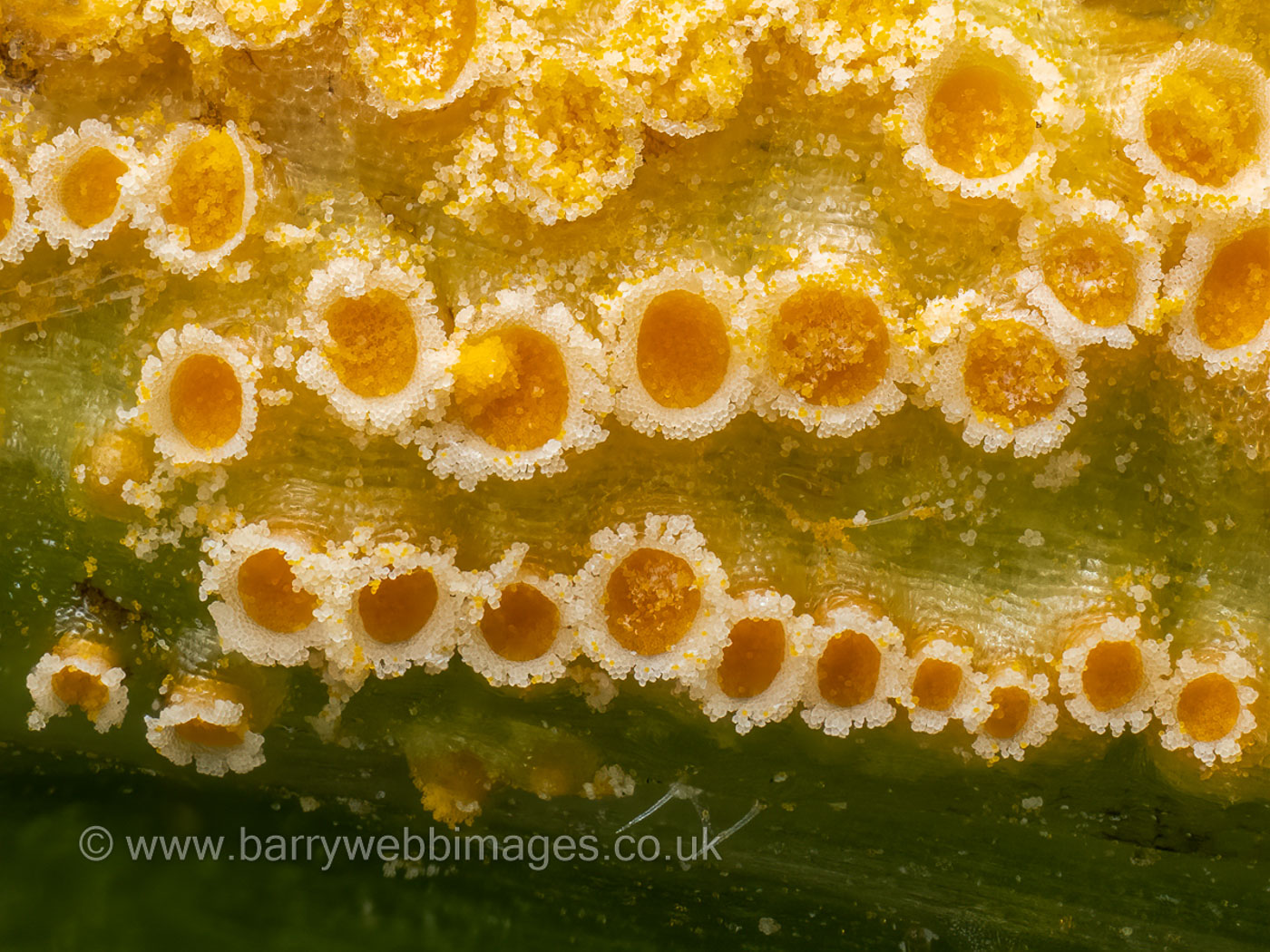 |
Puccinia urticata (Nettle Clustercup Rust)
May 9, 2024. A week ago in Naphill Sarah Ebdon noticed this very common rust on nettle leaves in its early stages (photo 1), then returned today to take photo 2 when it had fully developed. (She reports it was a painful experience but worth it!). We have only four county records - this a reflection of the lack of recording of rusts amongst our group as it is another very common species.
May 16, 2022. On a living nettle stem at Dancersend Justin Long spotted this large patch of rust and bravely collected it (his resultant stinging rash leaving no doubt as to the host plant!) for further identification by Kerry Robinson. Though considered a common species (and previously named P. caricina) we have only one previous county record. Both photos are Barry Webb's.
|

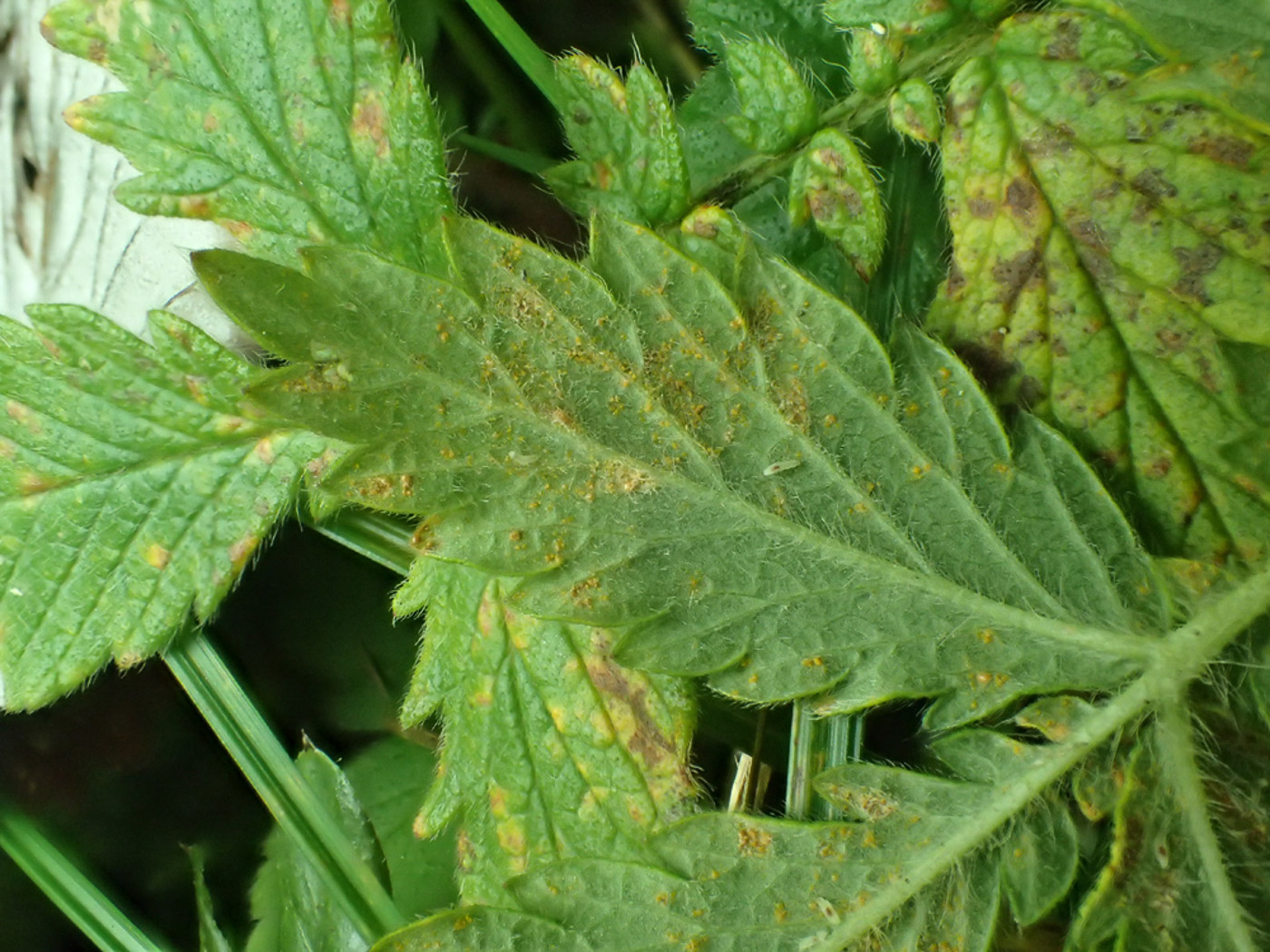
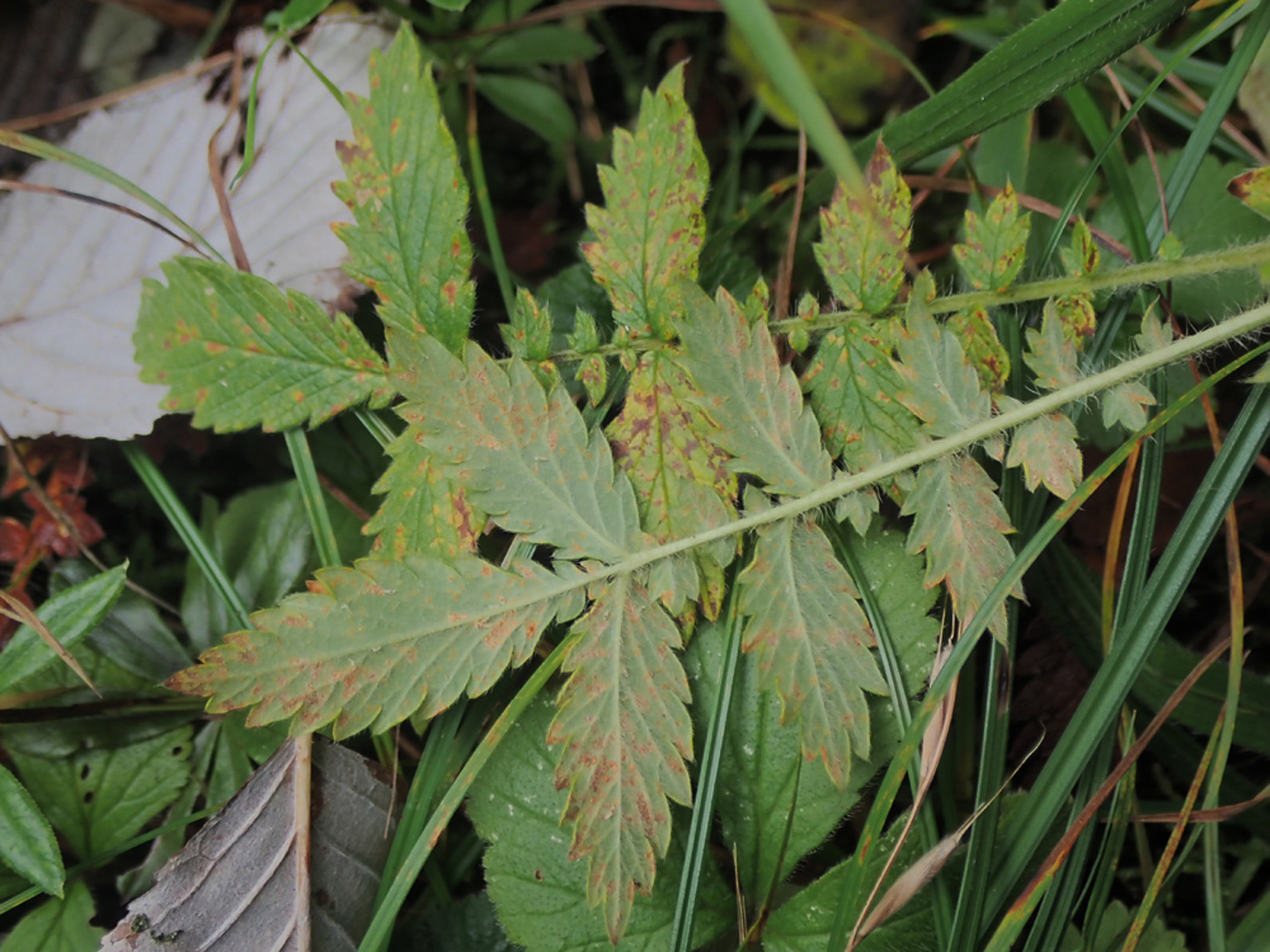 |
Pucciniastrum agrimoniae (a species of rust with no English name) 
Oct 13, 2024. Whilst visiting Holtspur Bank in Beaconsfield Sarah Ebdon noticed this rust affecting the leaves of Common Agrimony, then checked it at home, discovering that the rust is host specific to this plant, is quite common wherever the plant is found though is not that often recorded. We have just one previous county record from 2003, so this is anew entry for Finds.
|
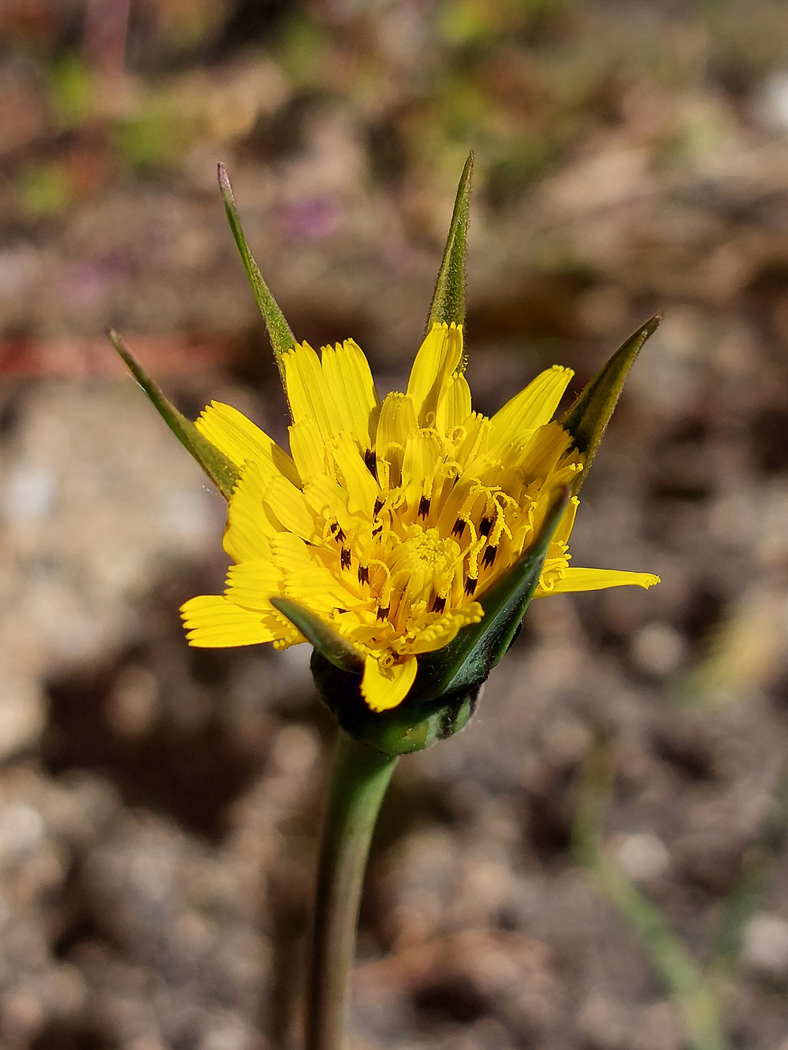
 |
Pustula tragopogonis (a fungus belonging to the Oomycetes but with no English name) 
Apr 30, 2024. Jesper Launder went out early to Gerrards Cross in search of the flower Goat's-beard - another name for which is Jack-go-to-bed-at-noon because the flower closes by midday. He successfully found an open flower (photo 1) but noticed the plant was covered in a fungal pathogen (visible in both photos) which he was later able to track down to this species for which we have no county records (not surprisingly!). There are under 50 national records on FRDBI.
|
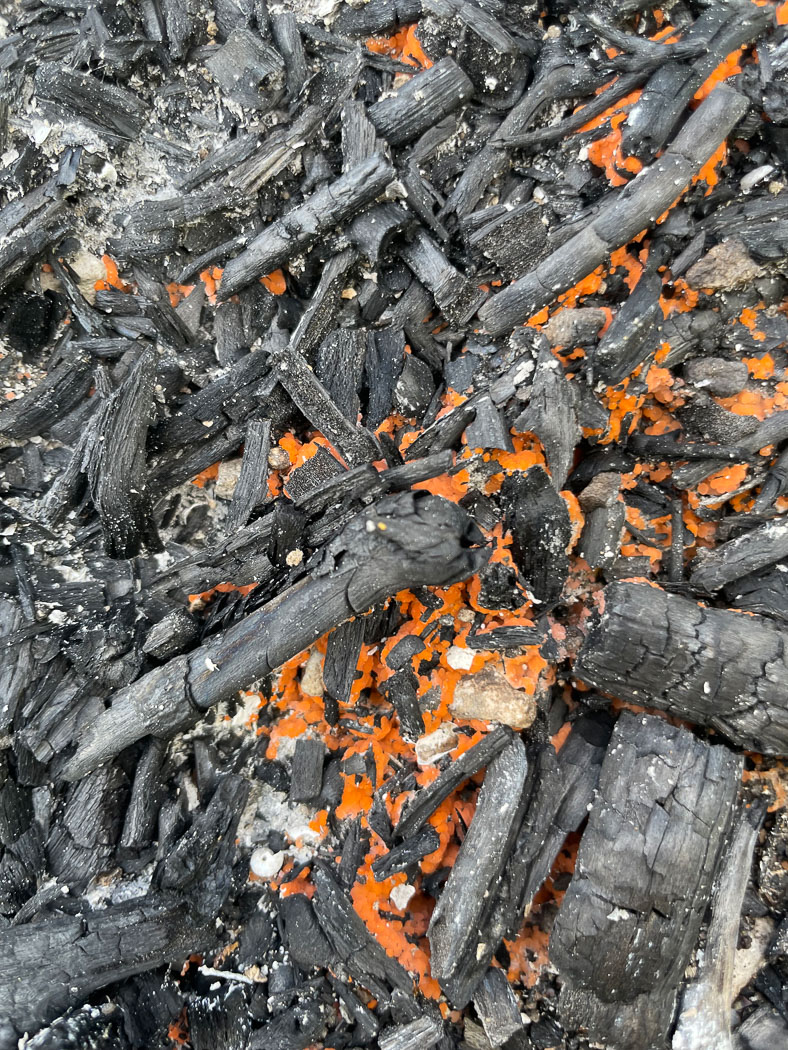
 |
Pyronema domesticum (an ascomycete with no English name) 
May 7, 2024. On an old bonfire site on the Grangelands at Pulpit Hill Sarah Ebdon noticed these salmon patches amongst the remnants of burnt wood. This is one of several similar species - bonfire sites are always worth a quick check for fungi of all sorts which specialise in this habitat - and the spore size and shape here determined her ID. Though not rare we have only one previous county records. The species favours fairly fresh burnt sites and can also occur in buildings on damp plaster, burnt or sterilised soil. This is a new entry for Finds though we have an entry for one other very similar Pyronema species.
|

 |
Pyronema omphalodes (an Ascomycete with no common name) 
Jun 28, 2023. At Turville Heath Penny found many pink-orange patches of this species together with several other interesting things on burnt soil on a surprisingly productive bonfire site. It was not a species she recognised but managed to work out from various sources using the microscopic characters. Though described as common we appear to have only three previous records, all from over 20 years ago, hence the green box. This is another new species for Finds.
|

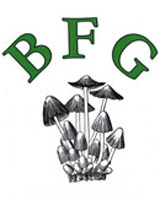


















































































































































































































































































































































































































































































































































 chrysostigma 1b.jpg)










































